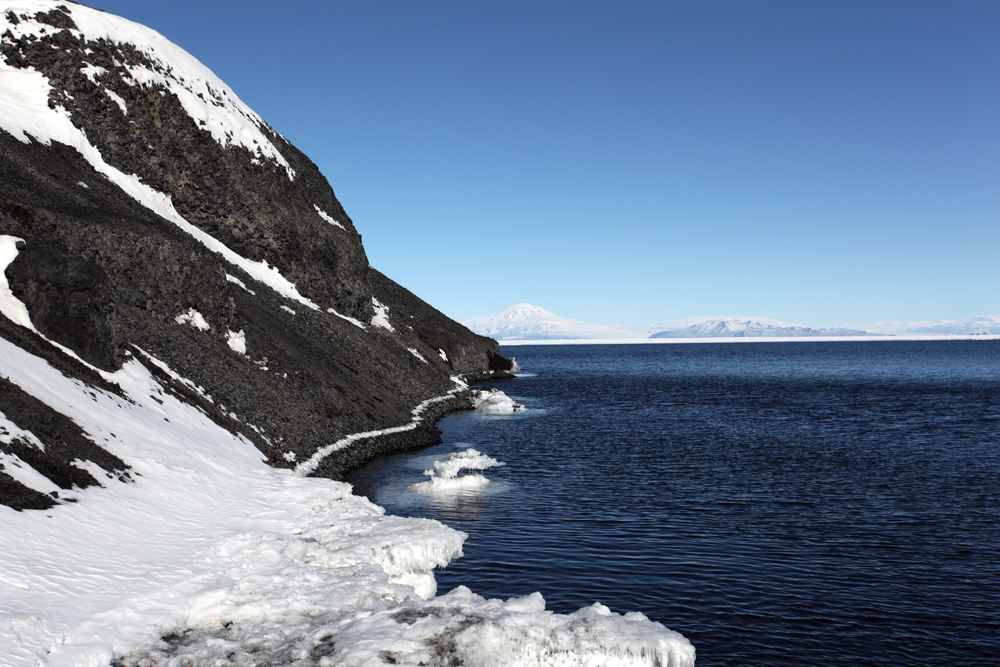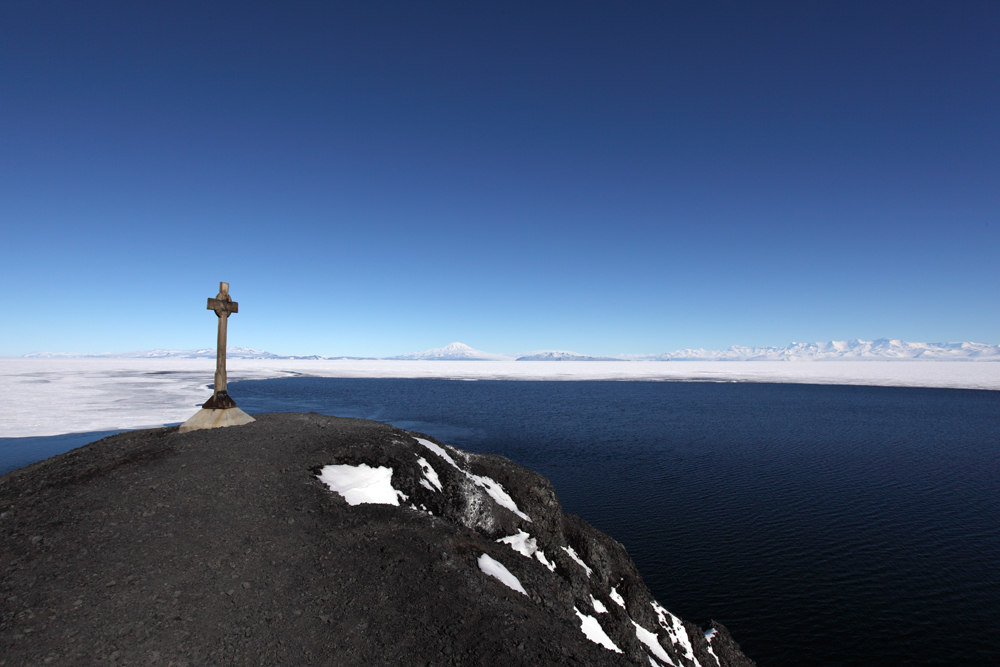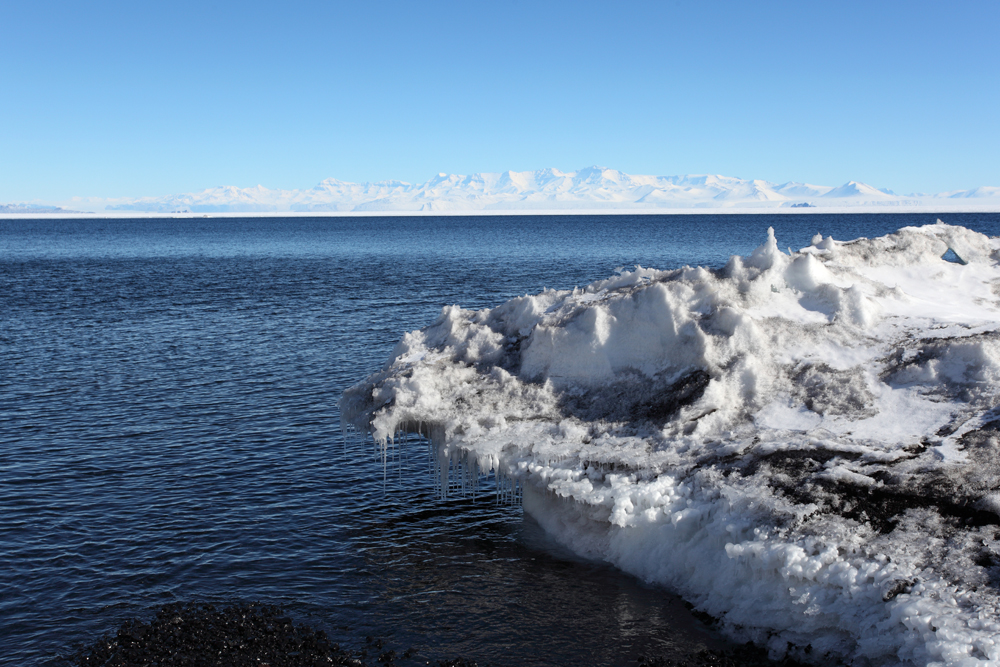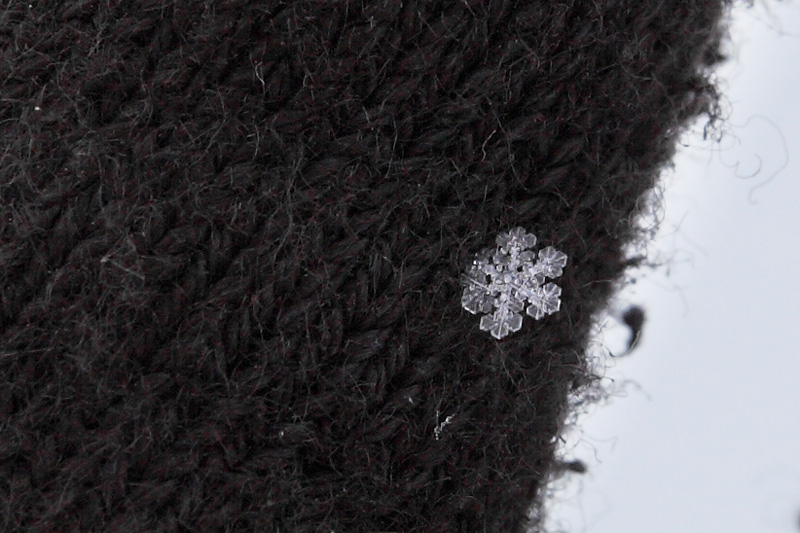| Geoff Sims @ UNSW | 
|
Navigation
Deprecated: auto_detect_line_endings is deprecated in /home/grp01/z3318051/public_html/spd/spd-allchron.php on line 35
Monday, 17th December, 2012
Introduction and FAQs (Geoff)
Welcome to the South Pole Diaries for 2012/13!
I am a 3rd year PhD student at UNSW, my thesis work involving the analysis of a variety of data from site-testing instruments on the Antarctic plateau. In particular, I have been looking at optical night sky brightness and the contributions from airglow and aurorae, as well as investigating atmospheric water vapour content of high plateau sites such as Dome A and Ridge A.
![Watching the Aurora Borealis from Portland, OR, USA [July 2012]](pics/s20121217-intro_aurora.jpg)
In between data-crunching, the past couple of years I have been assisting with the construction of PLATO-R (PLATeau Observatory Ridge A). PLATO-R is an autonomous robotic observatory that controls a 0.6 m terahertz telescope named HEAT, run by Craig Kulesa of the University of Arizona. Our team is headed to Ridge A this summer to service the observatory (replace engines, re-fuel, etc.), and I am lucky enough to be a part of the expedition. Ridge A, coldest and driest place on Earth, as well one of the most remote (being approximately 1000 km from the nearest human being). This will be the second expedition ever to visit Ridge A, and you can read about the adventure they had last year at The Conversation by Michael Ashley, and at Two Frozen Kiwis from Luke, Campbell and Yael.
When I am not working on my PhD, I am typically found photographing the night sky, chasing total solar eclipses in some remote corner of the globe, or surfing anywhere from the crowded beaches of Sydney to the malaria infested jungles of India & Indonesia. I also work casually as a night sky guide at the historic Sydney Observatory.
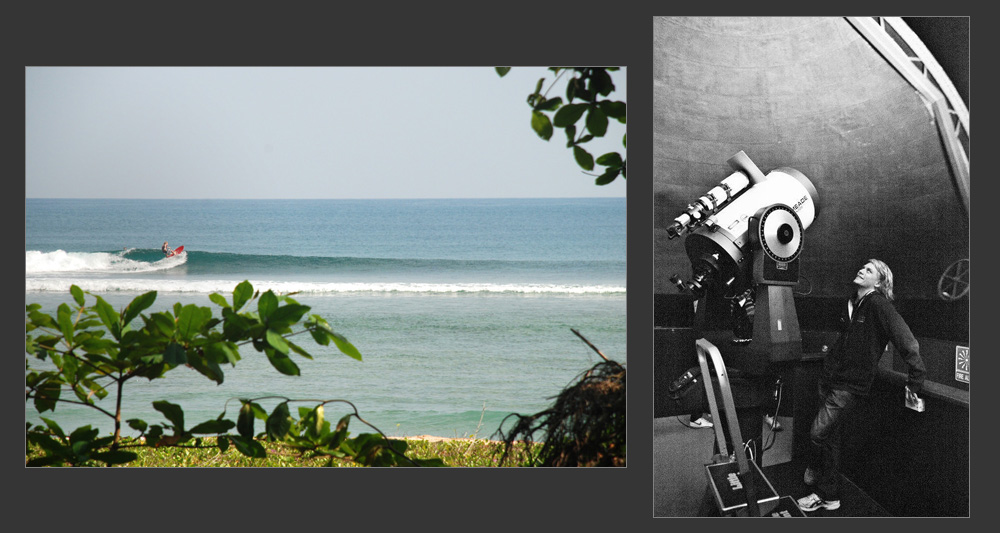
For this introductory blog post, I thought it might be a good idea to answer a few frequently asked questions I have received over the past few weeks:
- Will you see polar bears?
No! Polar bears are found in the Arctic (northern hemisphere), not the Antarctic.
- Will you live in an igloo?
No! Igloos are found in the Arctic (northern hemisphere), not the Antarctic. For the most part, we'll be sleeping in comfortable heated rooms in the American-run bases of McMurdo (on the coast) and Amundsen-Scott Station (at the South Pole). At our final destination, Ridge A, we will be camping in tents.
- Wow, it must be so dark down there, you're gonna get the most amazing night sky photos!
True, there is very little light pollution and the skies are exceptionally dark in Antarctica, during winter. Unfortunately (?), for the duration of our trip the Sun will never set, so we will have no chance of seeing the stars or photographing the Aurora Australis. Fortunately, that means at Ridge A the temperature will (approximately) a balmy -45 degrees C (as opposed to -70 degrees or so in winter).
- Will your mobile phone work on international roaming?
........ No.
- Can you order a penguin burger at McMurdo?
OK, that one wasn't really a FAQ, but I wouldn't mind trying one if they did exist...
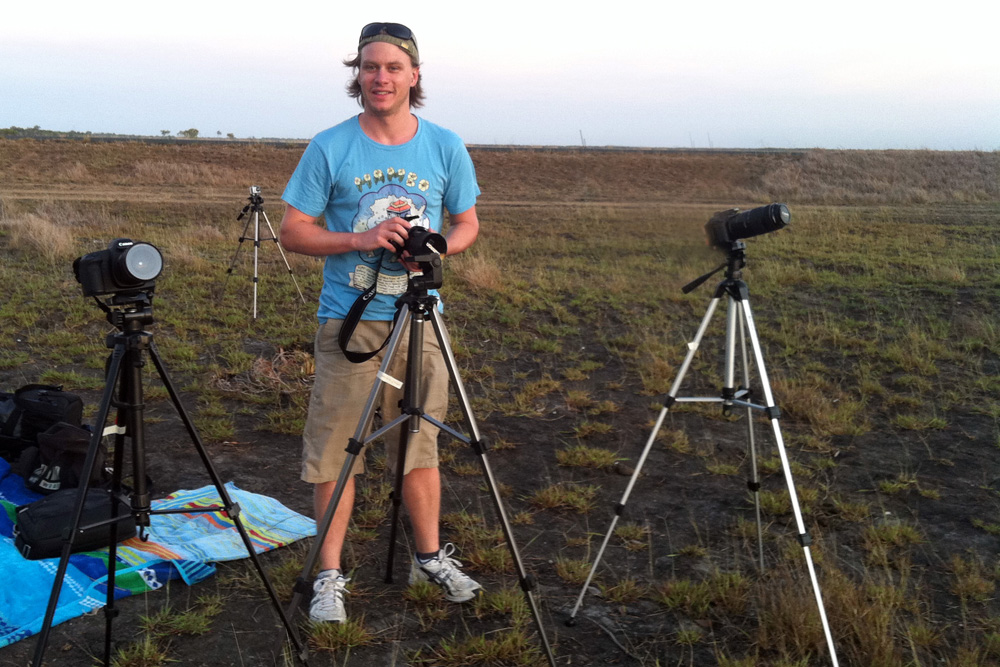
-- Geoff
Monday, 17th December, 2012
Introducing the team. (John)
Today marks the start of our expedition to Ridge A, Antarctica, with two of our team, Nic Bingham and Daniel Luong-Van, flying to Christchurch. Geoff Sims and myself, John Storey, will follow them tomorrow.
In Christchurch we'll meet up with Craig Kulesa and colleagues from the University of Arizona, and be fitted with our ECW (Extreme Cold Weather) gear and briefed prior to deployment by the US National Science Foundation later in the week.
The UNSW expedition team consists of three young researchers (Nic, Daniel and Geoff) and myself, who retired last year. When I'm not doing emeritus professor things, I look like this:

This will be my twelfth trip to Antarctica. All of my previous visits have been, like this one, of a few weeks duration over summer. The purpose of this expedition is to refuel, refurbish and upgrade the PLATO-R research facility at Ridge A, Antarctica, which was installed by the UNSW/Arizona team at the beginning of 2012.

Staying back at UNSW is Michael Ashley, leader of the PLATO project. Michael will be kept very busy over the next few weeks remotely operating PLATO-R and its cousins at Dome A and Dome F while the upgrades are taking place.
Tuesday, 18th December, 2012
Christchurch (John)
Having endured the harshest and most arduous leg of the journey already (flying Jetstar to Christchurch), Geoff and I finally arrived 4 hours late and are comfortably settled into our motel. Nic and Daniel are already here, having arrived yesterday to repack our big lithium batteries into appropriate crates for air transport. We were very kindly met at the airport by a USAP (US Antarctic Program) representative, who helped us with our arrangements and gave us our departure time for McMurdo: 9pm on Thursday.
We've also caught up with our two US colleagues, Craig and Abe, at Sydney airport, so now the team is complete. We'll spend tomorrow reviewing our plans for the rest of the trip, and enjoying our last experiences of the colour green for the next month or so.
Wednesday, 19th December, 2012
Crossing the river (Geoff)
Today Campbell & Luke, two of the engineers who deployed PLATO-R last year, flew down from Auckland to share the experience they had last year, in order to help assertain exactly what needs to be done this year and how best to tackle it. We were also joined by Craig & Abraham, our collegues from the University of Arizona, for a day-long discussion & photo slide show in the library of our hotel. It was quite a fancy-looking room, complete with genuine Brittanica encyclopedias and model Hercules aircraft.
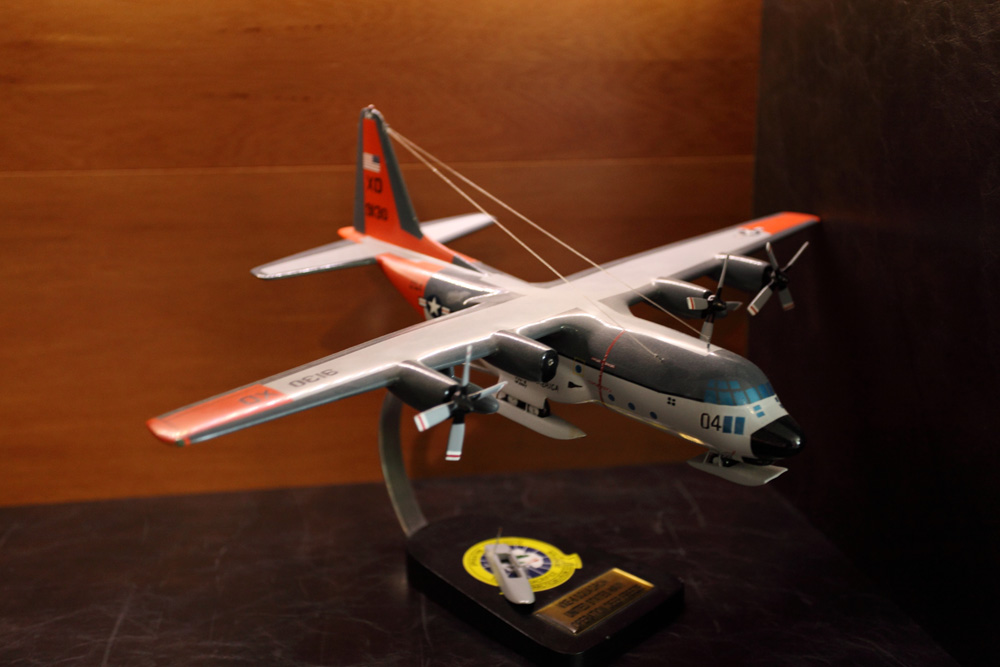

Most of the day was spent discussing the mechanical and electrical intricacies of many components in the observatory.

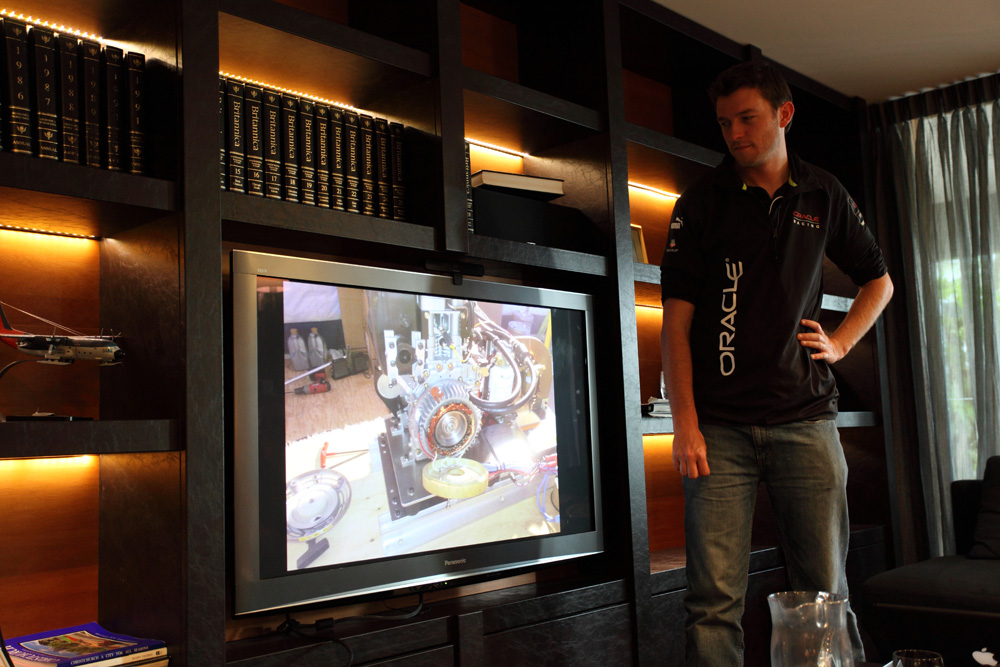
Along with these discussions, we also played our own unique version of this game:

In this famous "Japanese IQ test", you need to get a bunch of people (a father and his two sons; a mother and her two daughters; and a cop & robber) across a river using a raft, with various rules as to who is allowed to be left with who, who can drive the raft, etc. In our version of the game, the family was represented by myself & the three others from UNSW; the cop & robber were our American collegues; the raft was a Twin Otter (light aircraft), and the river was 1000 km of ice between the South Pole and Ridge A.
We were planning out various scenarios of how to get various members of our team (and their associated tools & service equipment) in and out of Ridge A, maximising the probability of success and keeping in mind we have a limited number of flights. This was made trickier by the fact that we don't actually know how many flights, how many people, or how long we will be spending at Ridge A. This all depends on logisitical constraints, weather, and other factors that will only be known to us once we arrive in Antarctica.
Speaking of Antarctica, we are scheduled to fly out tomorrow evening (20th December) at 22:00.
-- Geoff
Wednesday, 19th December, 2012
Luke and Campbell (John)
Today was a "rest" day in Christchurch, and it turned out to be incredibly productive. Luke and Campbell, two engineers who had played a major part in the design and construction of PLATO-R last year, flew down from Auckland to join us in a full-on all-day planning meeting. We commandeered the hotel library, and hooked my laptop up to the big flat-screen TV, then went through all the photos from last year's expedition. Luke and Campbell are now employed in the yachting industry designing carbon-fibre components, and it was very generous of them to take a day's leave to come down to chat to us.
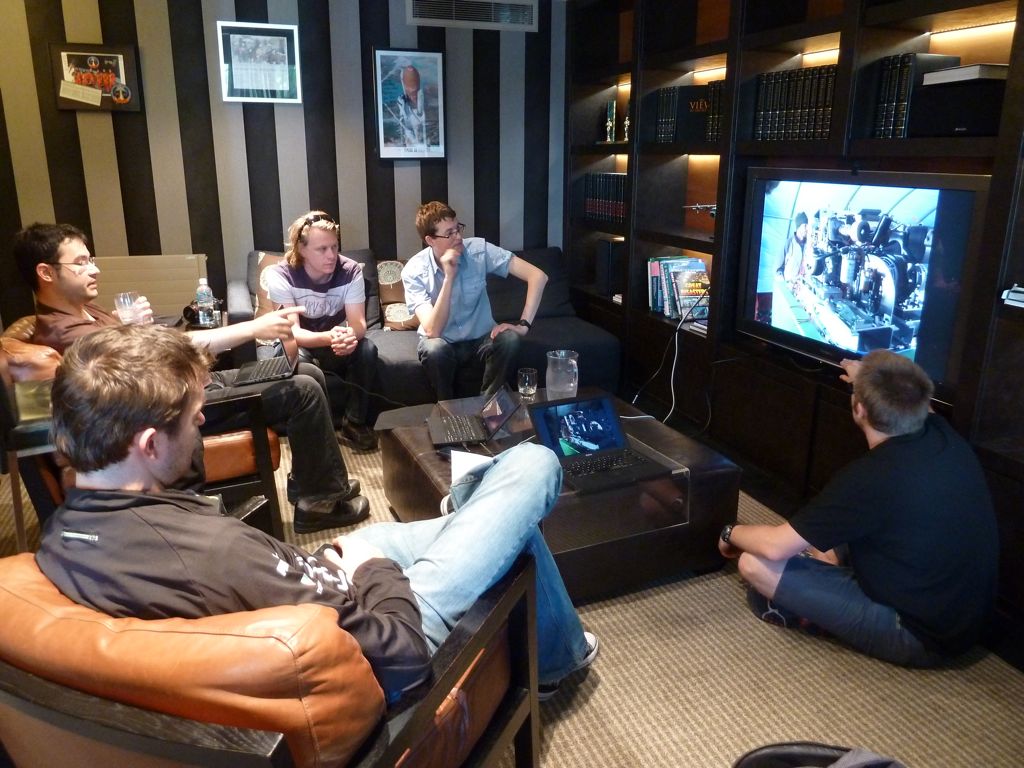
Clockwise from left: Campbell, Daniel, Geoff, Nic and Luke contemplate an alarmingly large image of one of the diesel engines.
In January 2012, Luke, Campbell and Craig, together with the field camp leader, Loomis, spent four days at Ridge A installing PLATO-R. Their experiences were amazingly helpful to us, as they fleshed out many details that we had not even thought about before. By the end of the day, we had not only figured out a plan for servicing PLATO-R, but had also solved many of the world's most challenging social and political issues. By the end of a very fine dinner, and some excellent NZ wines, philosophical problems that had previously challenged some of history's greatest thinkers were also starting to yield some surprising new insights.

Clockwise from left: Me, Nic, Geoff, Abe, Luke, Craig, Daniel, Campbell hard at work.
For me it was a hugely invigorating and enjoyable day. There is nothing quite like getting together with a bunch of incredibly bright people pooling their collective expertise to address cutting-edge technical problems. For the other hotel guests it was all perhaps a bit mysterious, as the day was frequently punctured by raucous laughter and much hilarity. For example, it might not be immediately obvious to non-geeks why it is hilariously funny to learn that it is impossible to blow a 30 amp slo-blo fuse by simply shorting out a massive bank of 120 volt lithium batteries with a connector. As Daniel explained, the connector contacts vapourise at a faster rate than you can push them together, as attested by the photos of his blackened hands and the spray of molten metal on the floor.
Thursday, 20th December, 2012
ECW issue and airport wanderings (Geoff)
Today was our scheduled day for the issue of ECW (Extremely Cold Weather) gear, which was retrieved from the CDC (Clothing Distribution Centre) near the airport. The CDC is quite an inconspicuous building:

Prior to collecting our gear, our laptops had to be screened (essentially they make sure your operating system is up to date and that antivirus definitions are current) and we watched some really boring interesting films describing the clothing issue process, the baggage requirements (check-in, carry-on, etc.) and waste management procedures (chemical waste, human waste, recycling, etc.).
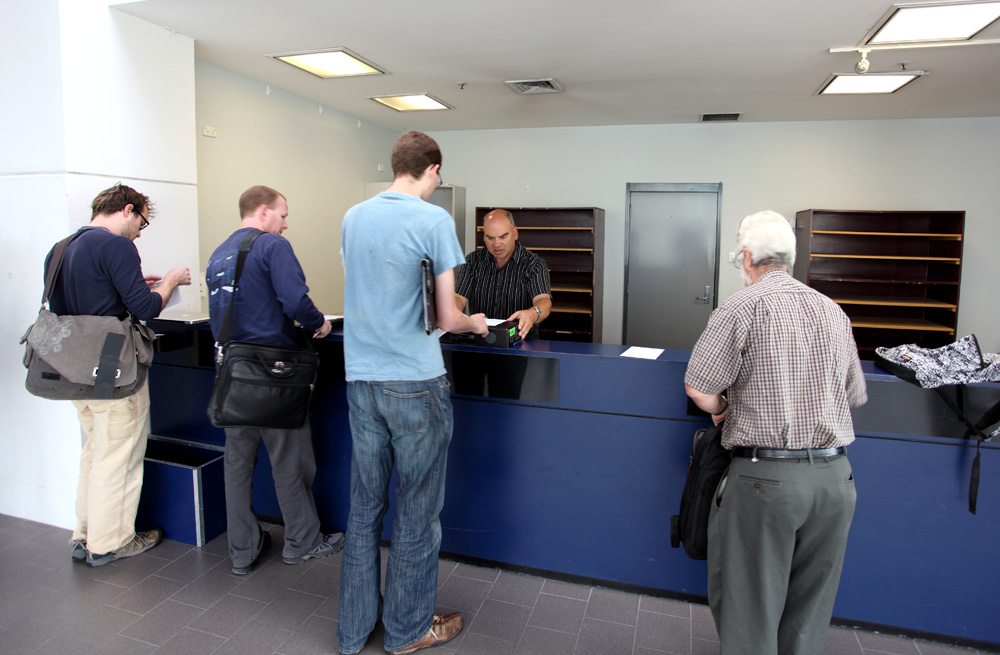
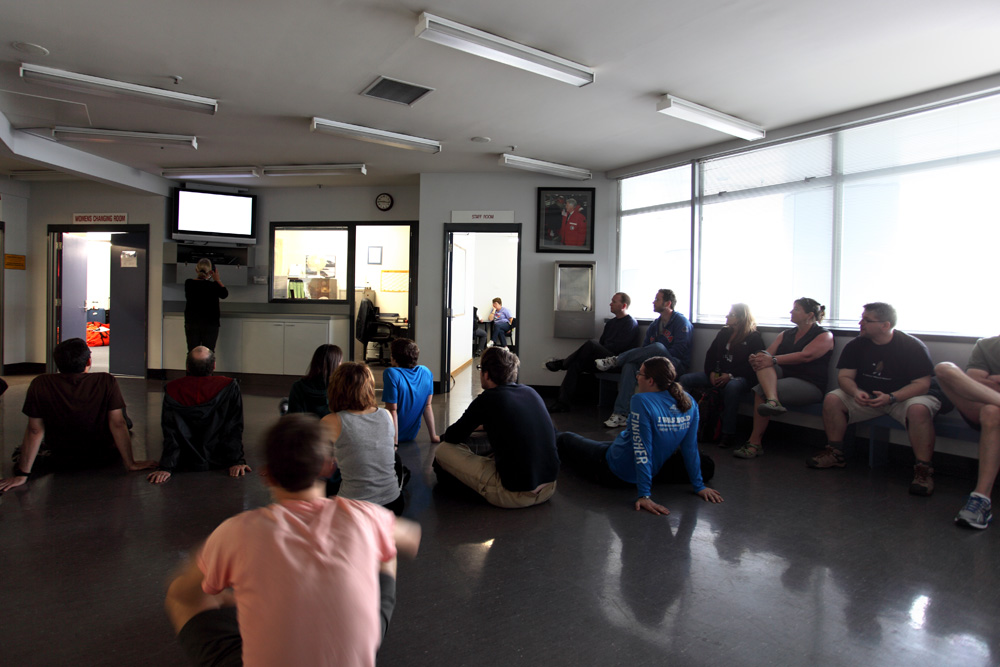
You are required to try on every piece of issued gear, as little to no replacements are available on the ground in Antarctica. It was quite a lengthy process to obtain all the correct sized clothing, as well as make sure we had the warmest possible combinations, since our field camp will likely be the coldest place any USAP (United States Antarctic Program) participant will be at this summer. The clothing is then packed into a number of bright orange bags:
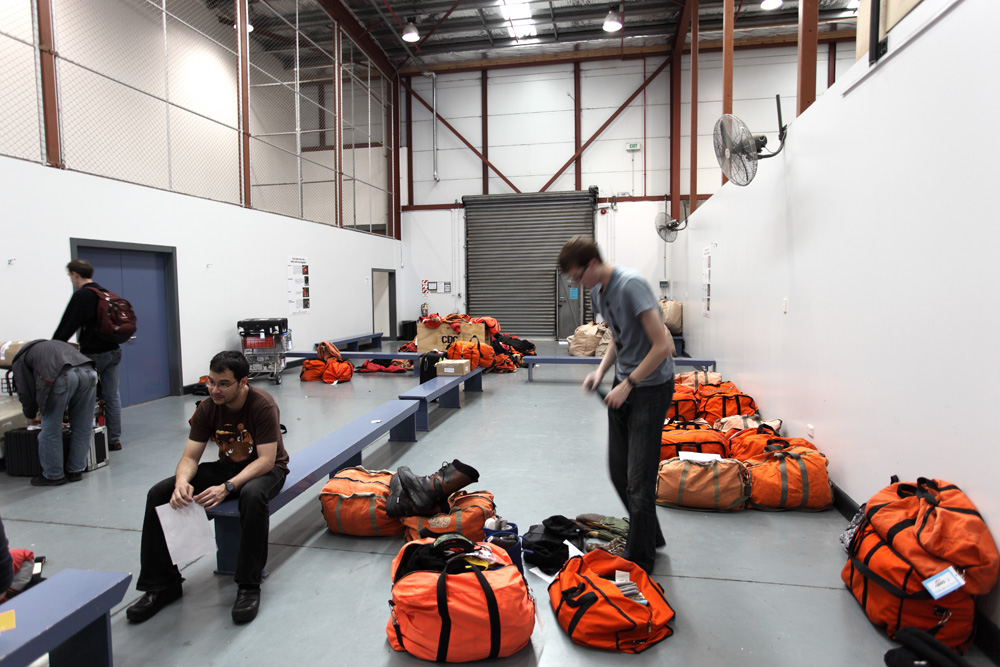
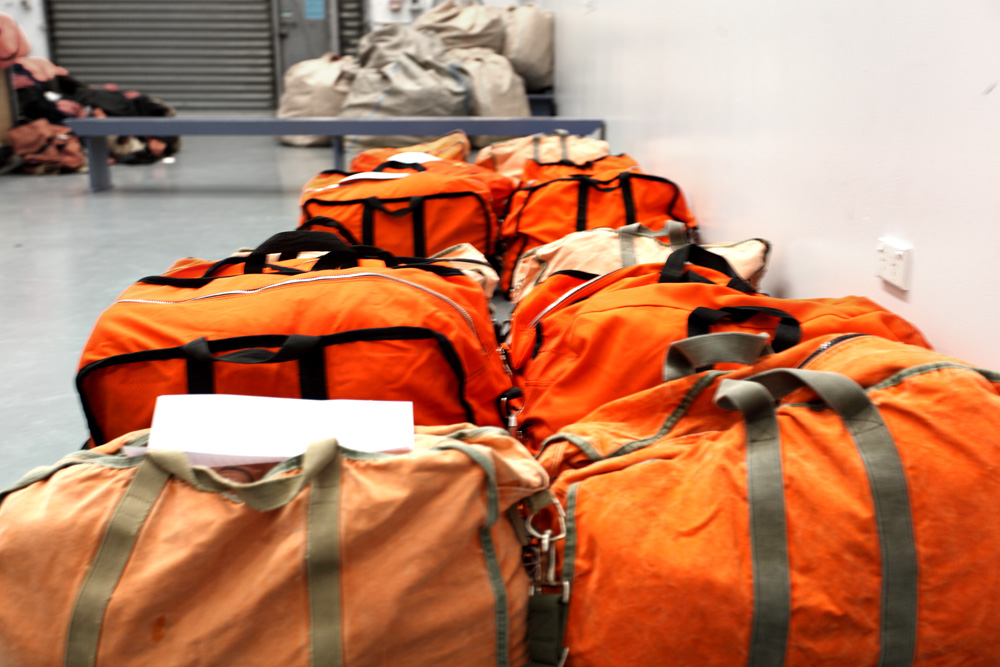
After lunch, we wandered around the vicinity of the airport, to try and get a glimpse of the aircraft we could be flying in. Apparently, we will be on an Airbus A319 which is on loan from the AAD (Australian Antarctic Division). While somewhat less "interesting" than a US military C-17 or C-130 (that are typically used), the flight will be short and comfortable, and with any luck we'll be able to get some sleep on the way down.
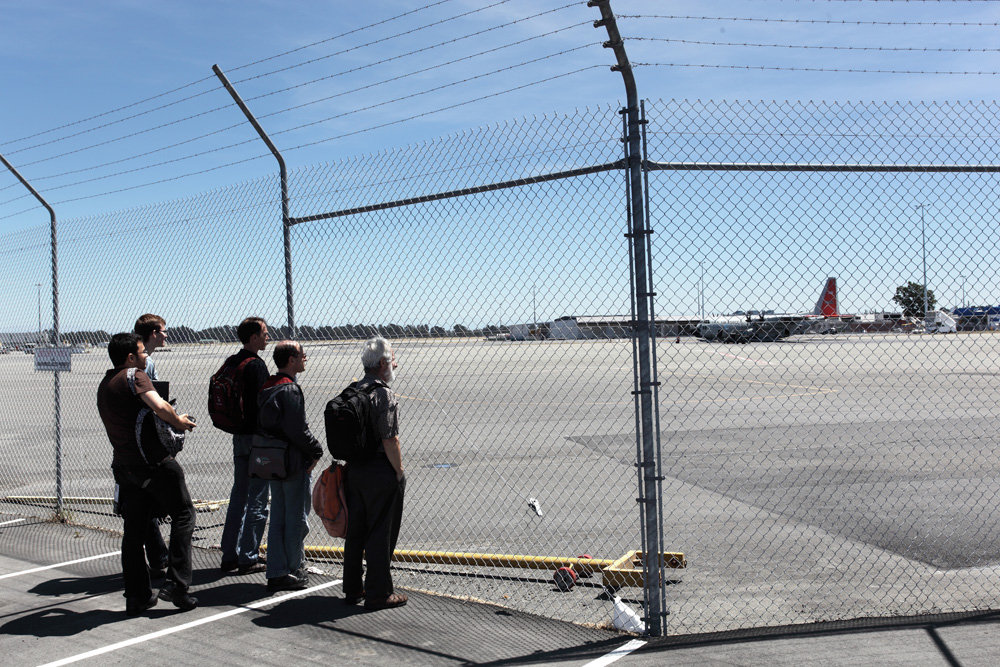
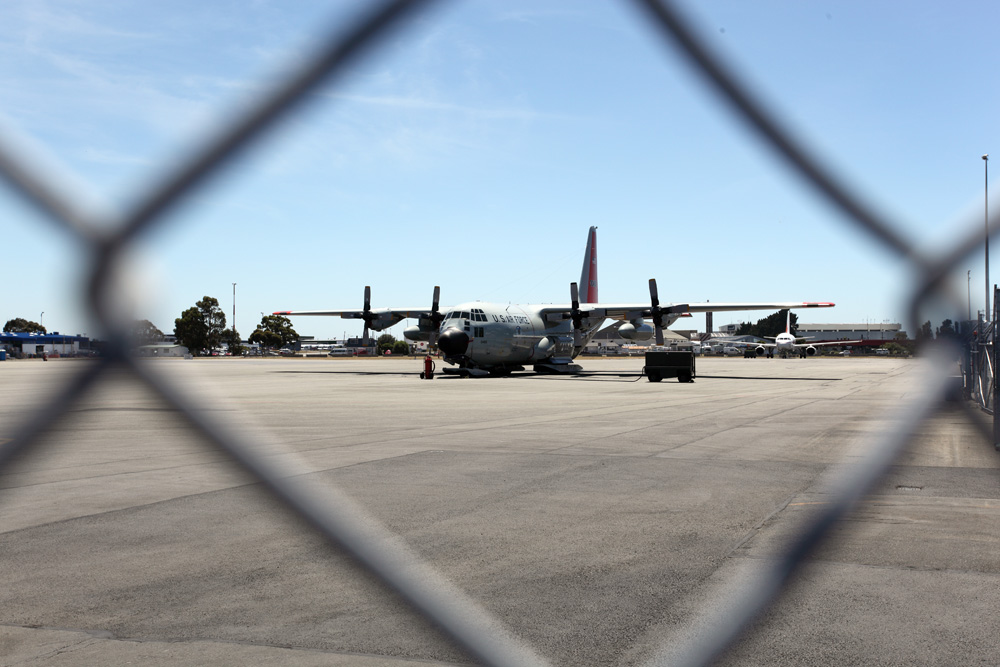
Our flight is still scheduled for tonight, and the departure time is 22:00, 23:00, 23:59.
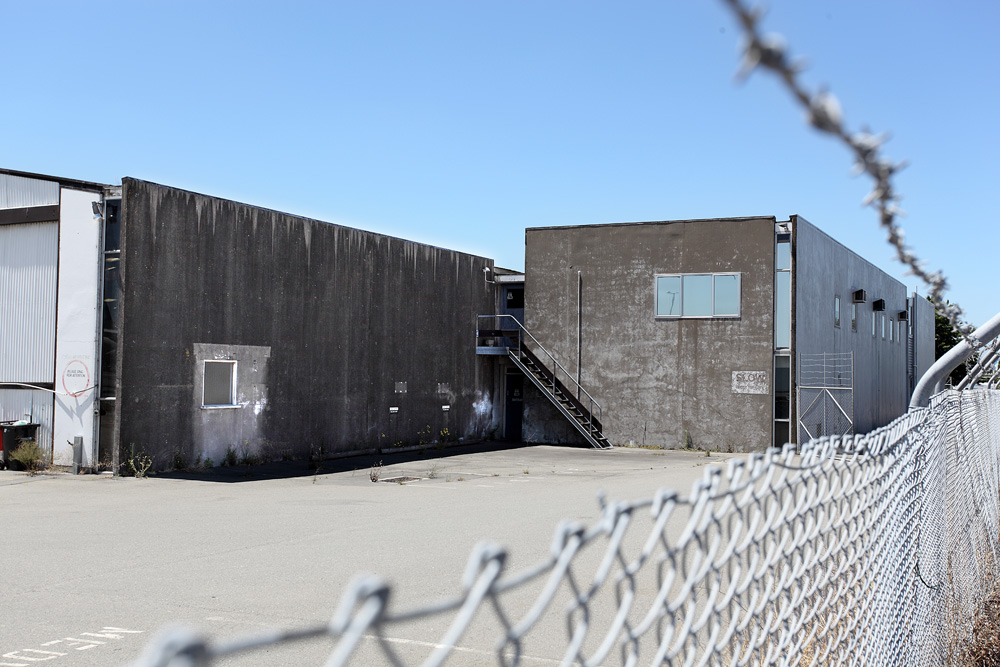
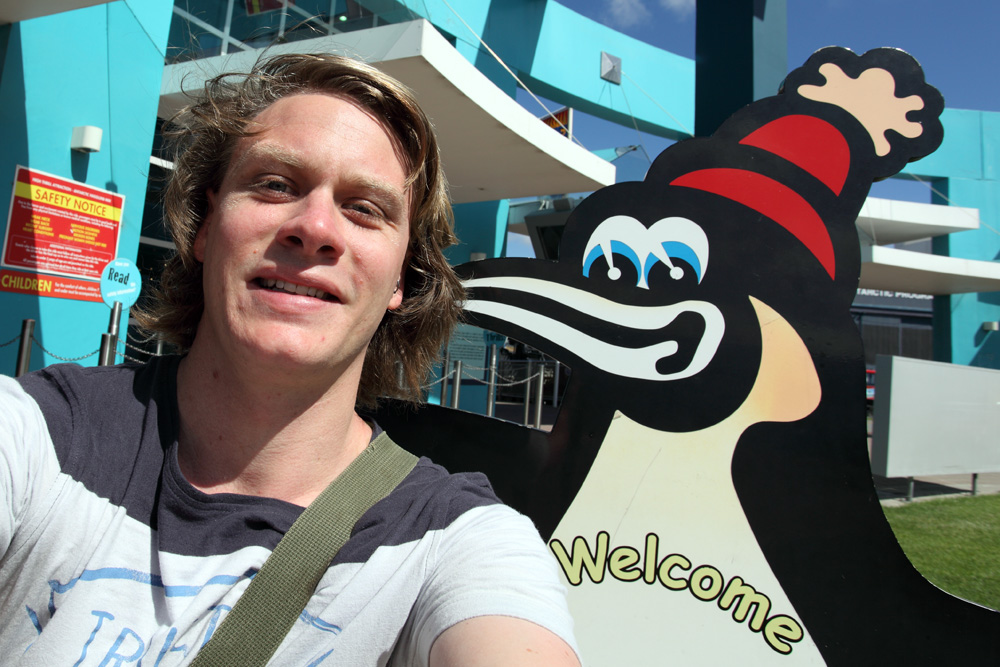
-- Geoff
Thursday, 20th December, 2012
Dux Live (Geoff)
Tonight we opted for a change of scenery, and held our nightly operations meeting at Dux Live. Perhaps one of the most important discussions of the night was whether the Nor'wester (Strong pale ale, 6.5% alc/vol; pictured on left) or Blue Duck (Amber Ale, 4% alc/vol; right) was more likely to assist us to achieve some shut eye on the flight to McMurdo.
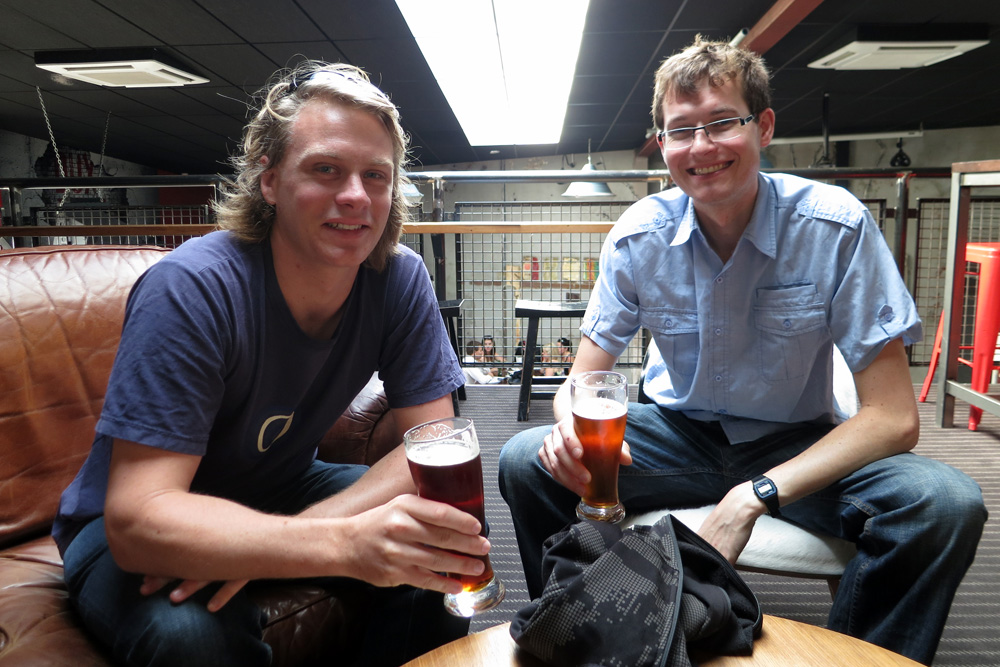
But seriously, we had a great dinner, and were privledged enough to hear Christchurch's least known band perform a sound check. As if that weren't enough, every time nature called we were greated by this dude, the blue tinge a product of Dux Live's anti-drugs policy.
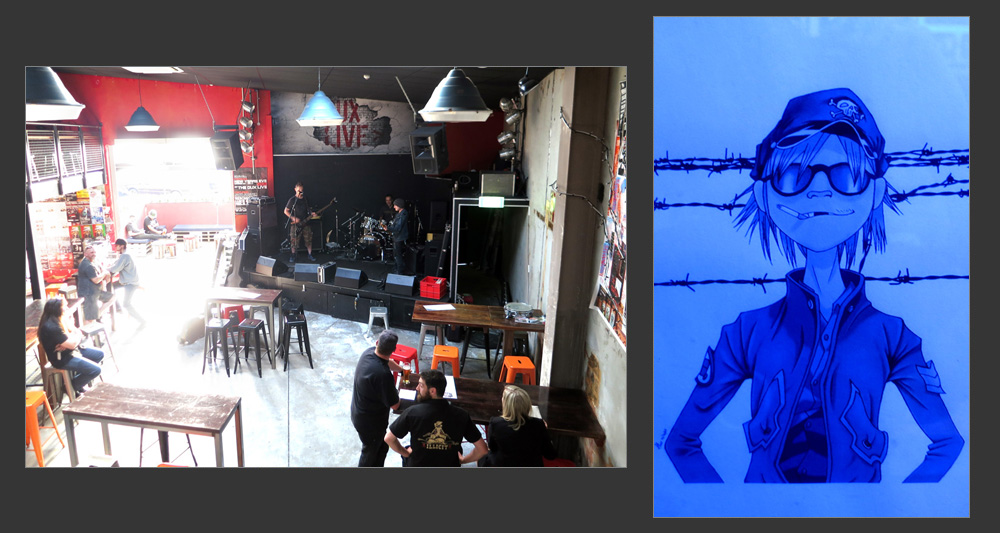
Upon arrival at our hotel after dinner, we experienced our last sunset for a few weeks over an incredibly un-scenic carpark.
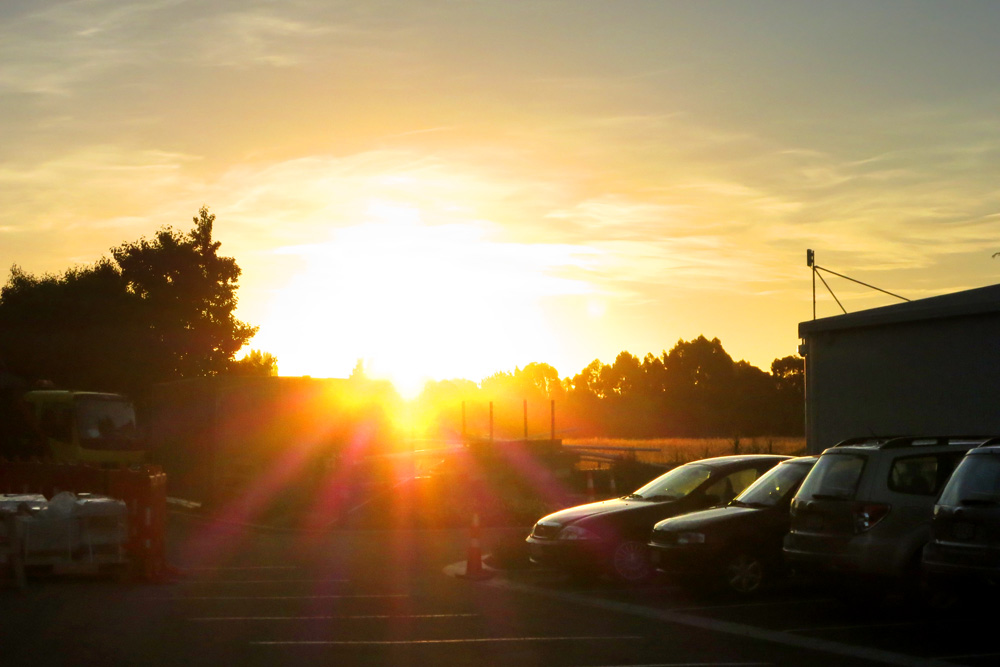

-- Geoff
Thursday, 20th December, 2012
ECW issue (John)
This morning saw us all out at the USAP Clothing Distribution Center, where we spent an hour trying on our Extreme Cold Weather Gear and making sure everything fit. It is said that there is no such thing as bad weather, only bad clothing, and nowhere is that truer than in Antarctica. Fortunately the standard issue clothing is superb, although we will be testing it severely at Ridge A - not only very cold but also at 4,000 metres elevation.
Tonight, at midnight, we'll fly to McMurdo in an Australian Antarctic Division Airbus A319. As well as checked luggage and carry-on luggage, we each have a "boomerang" bag with a few days clothing in it, in case the plane has return from mid flight and we end up back in our hotels again. This is not uncommon, as the conditions at McMurdo can change suddenly. All our checked baggage will have been "palletized", and the crews would rather not unload everything when a boomerang flight occurs.

The day concluded with dinner at the Dux Live, a live music pub that has replaced the wonderful Dux Deluxe; a favourite of previous visits but sadly destroyed in the earthquake.
Tomorrow morning, when we wake up, we will be in a very different world.
Ok, strike that - the phone just rang and our flight has been delayed another 24 hours!
Friday, 21st December, 2012
Bicycling (John)
Readers of this blog may have started to form the impression that all we've done since arriving in Christchurch is sit around talking and drinking beer. Not true! Today, with 24 hours to kill and all of our flight preparations done, we borrowed four bicycles from our hotel (the Copthorne Commodore - great hotel, BTW), and rode into to the city centre.

Well, not quite the city centre, as that got trashed in the earthquake and is still a no-go zone, but rather through the park (still lovely) and along the Avon River (still gorgeous) to the Restart shopping centre. This is a great little mall, constructed entirely from shipping containers - just like the original PLATO.
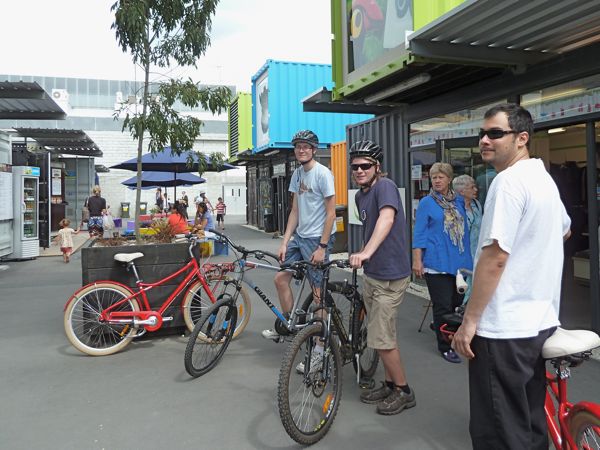
Two things are immediately obvious about Christchurch, which has always been one of my favourite cities. First, the spirit of the people as they rebuild their town after utter devastation is truly inspiring. Second, one of things that distinguishes a properly civilized city from one that is not (such as, for example, Sydney), is a network of practical bike paths that actually go somewhere. Christchurch's bike paths are excellent.
After a quick ride up into the hills (actually, it was considerably quicker coming back down) we had lunch in Restart,
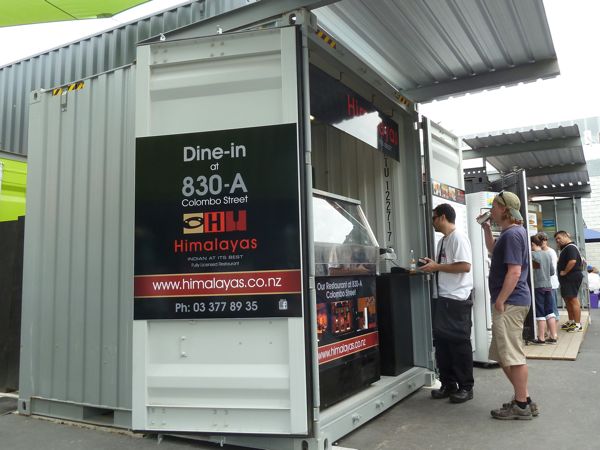
listened to the live band, and bought a sheepskin from a souvenir shop to insulate the engine fuel intakes. We then felt morally obliged to donate to the collection against animal cruelty,
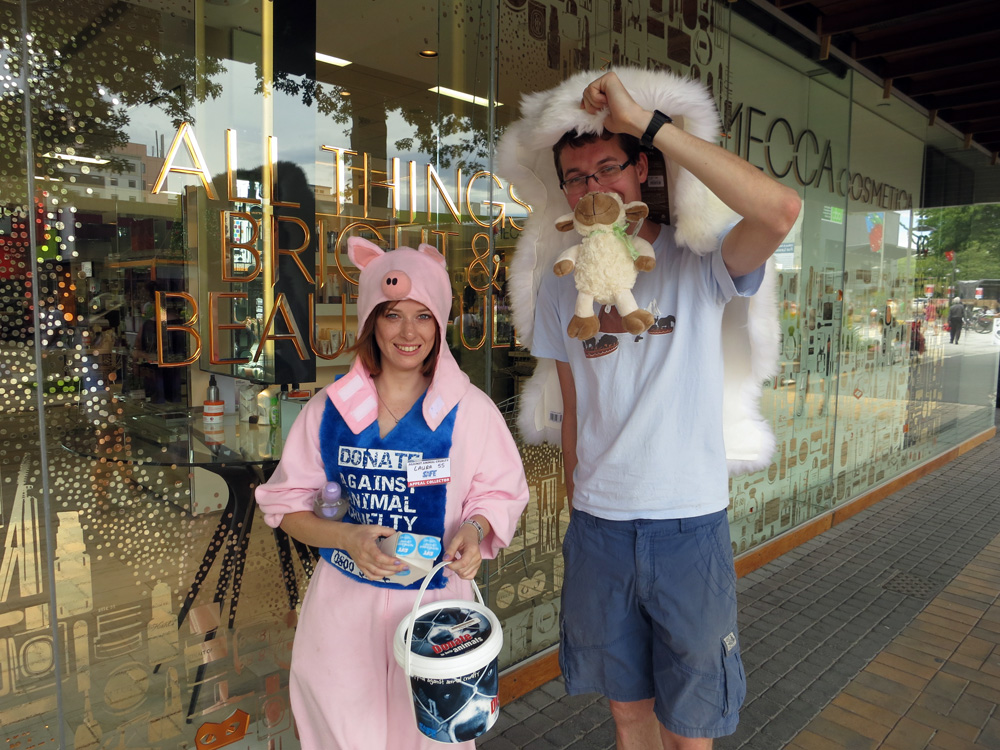
although it was probably the shop assistant who had suffered the most, as she struggled to understand how anyone could possibly be planning to cut her beautiful sheepskin rug into little pieces, all in the name of science.
Check-in at 1900 tonight, for a 2100 flight to the ice. Maybe.
Saturday, 22nd December, 2012
Lucky hat (Geoff)
This morning we were up bright and early to catch our 09:00 flight to McMurdo. After so many reschedules and cancellations, Daniel wore his lucky hat to make sure no more bad luck would roll our way.

We arrived, donned our cold weather gear, and awaited boarding.

The first sign that Dan's lucky hat wasn't working was when we heard we were flying in a Hercules LC-130. They are magnificent looking planes, but the flight takes twice as long as the Airbus A-319 (which we were hoping to fly on).
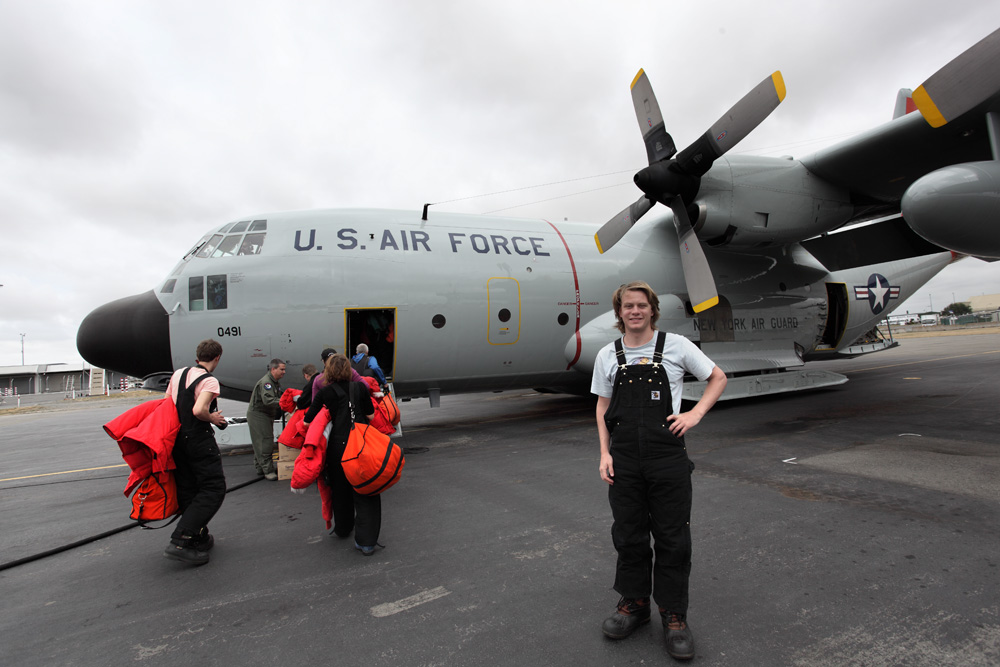
It was a full flight - 36 passengers and a lot of cargo.

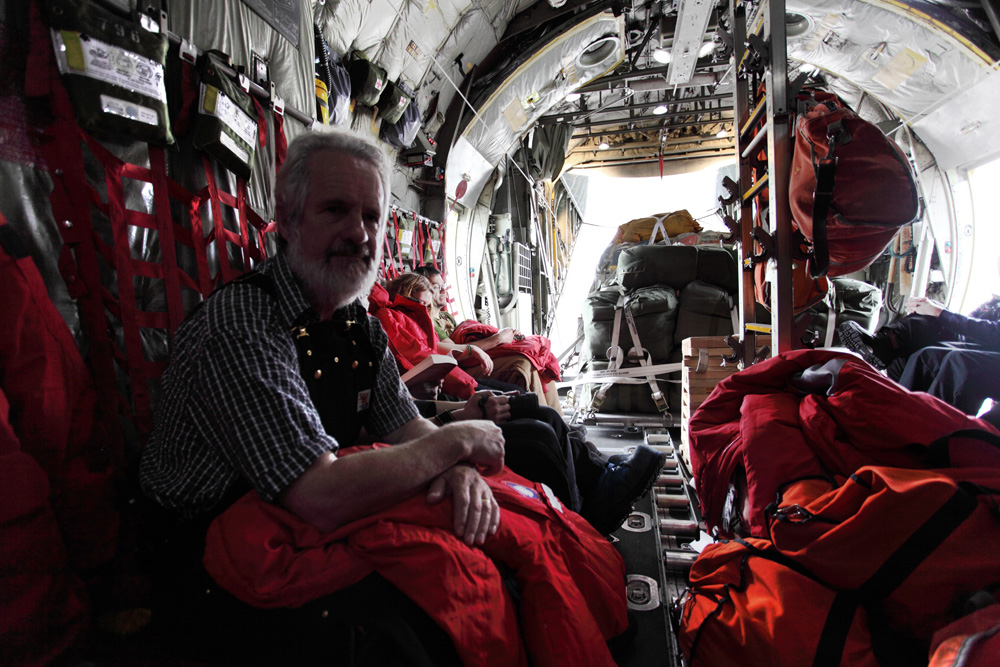
Unfortunately shortly after they fired up the propellers (just long enough to test out our disposable ear plugs), they shut them down again and informed us a recent weather report had come in, and that we would be disembarking the plane. We waited in the terminal for an hour or so, before finally being told we weren't delayed, but rather the flight had been cancelled.

The only good news is that we are now scheduled for a 02:00 departure, and on the Airbus A-319, which will mean a relatively quiet, comfortable and fast journey to McMurdo. Please don't wear your lucky hat again, Daniel.
-- Geoff
Saturday, 22nd December, 2012
Nearly... (John)
OK, so we didn't check in at 1900 last night, after all.
However, at 7 am this morning we arrived at the USAP departure lounge, dressed ourselves up in our ECW gear and checked in. Our good spirits were only slightly dampened by the news that we would be flying in a Hercules LC130, rather than the Airbus A319. This means 7 to 8 hours flying time (as opposed to 4 to 5) and less-than-comfortable webbing seats.

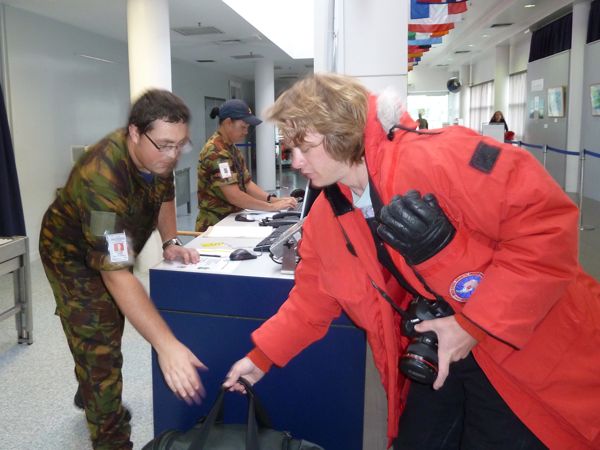
Geoff checks in. That's a glove in his pocket, not Nic playing another of his little pranks.
So, lugging our carry-on bags, boomerang bags and ear plugs, we climbed into the van, sat on the tarmac while the plane finishing refueling, then clamboured up the metal stairs into the Hercules.

Daniel appears to have forgotten just how grim 8 hours in a Herc can be.
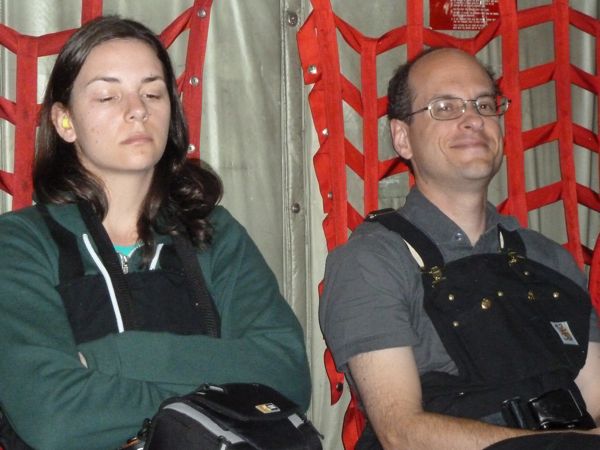
Jen, from Boston University, clearly hasn't. Craig is bravely forcing a smile.
The flight crew actually got to start the engines and make rumbling noises for bit, before powering down and informing us that the weather at McMurdo was still "bad" in some unspecified way. Apparently the visibility continues to be very poor.
So, I'm typing this in the comfort of my hotel room once again. Check-in tonight is midnight, with the carrot of an A319 flight held out to us to keep us in good cheer. The Dux Live calls.
Sunday, 23rd December, 2012
Touch down in Antarctica (Geoff)
John has already written about our flight out of Christchurch, so I will just add a few photos here.
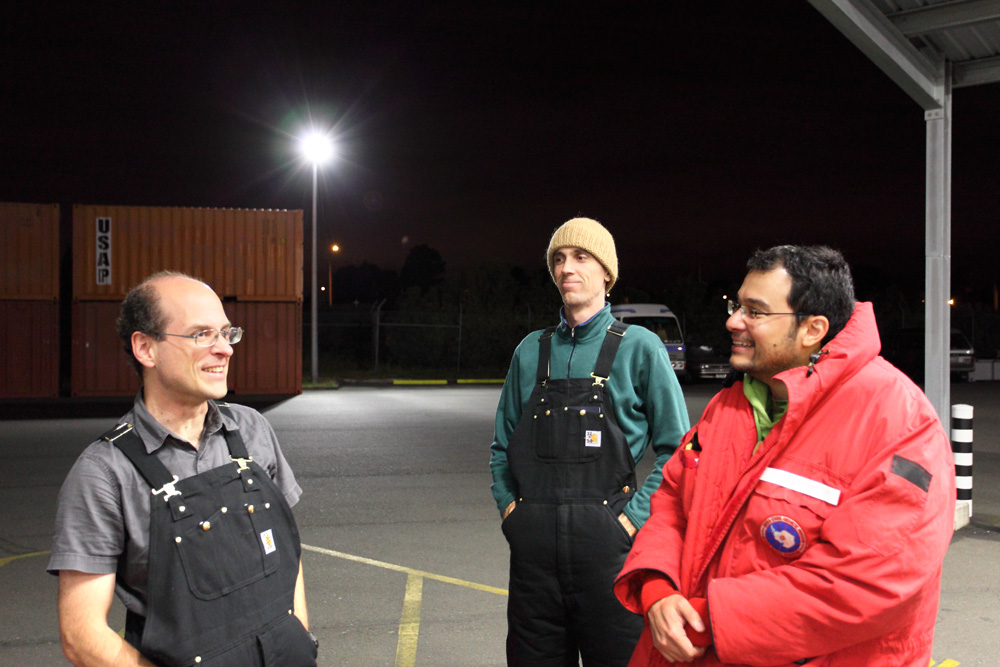


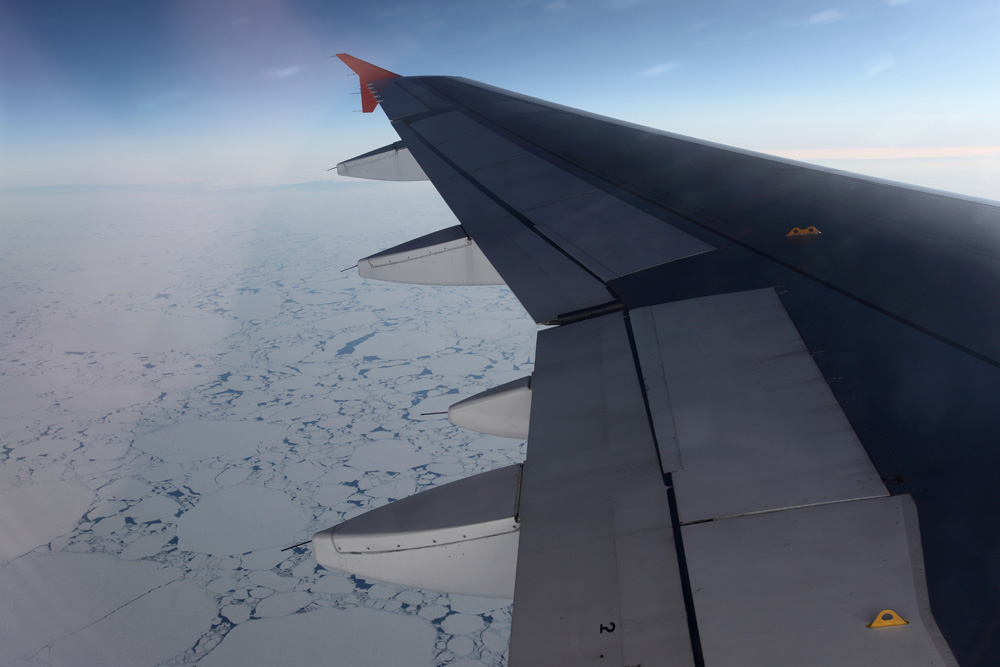


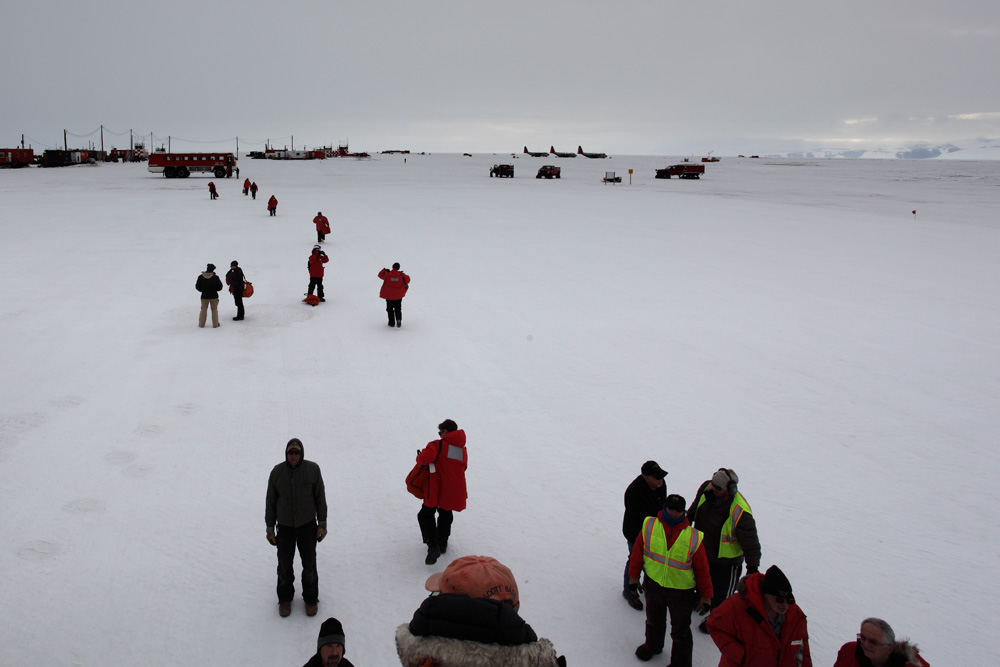
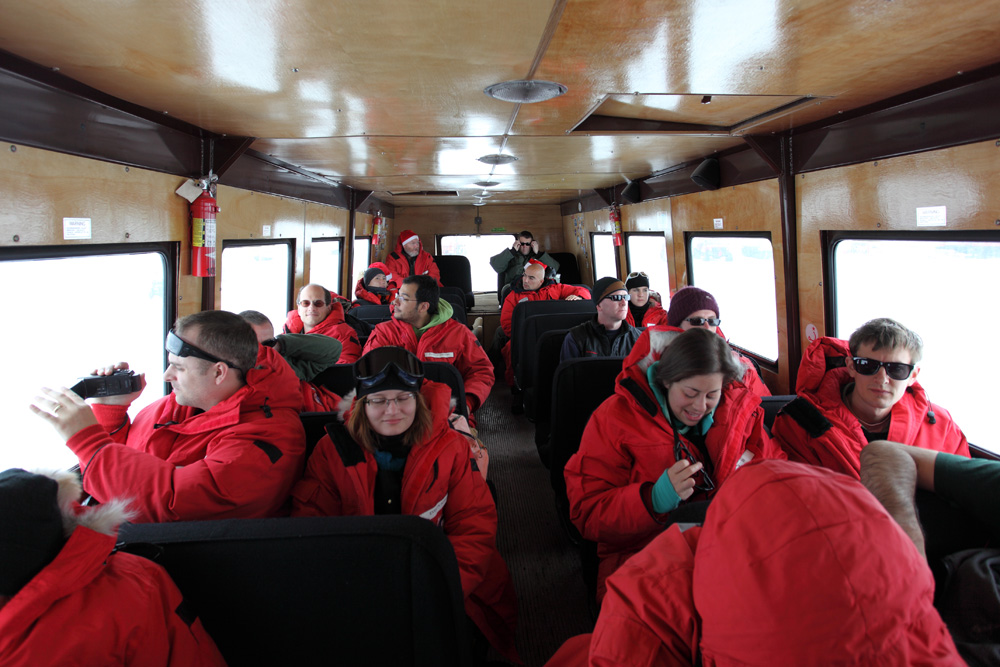
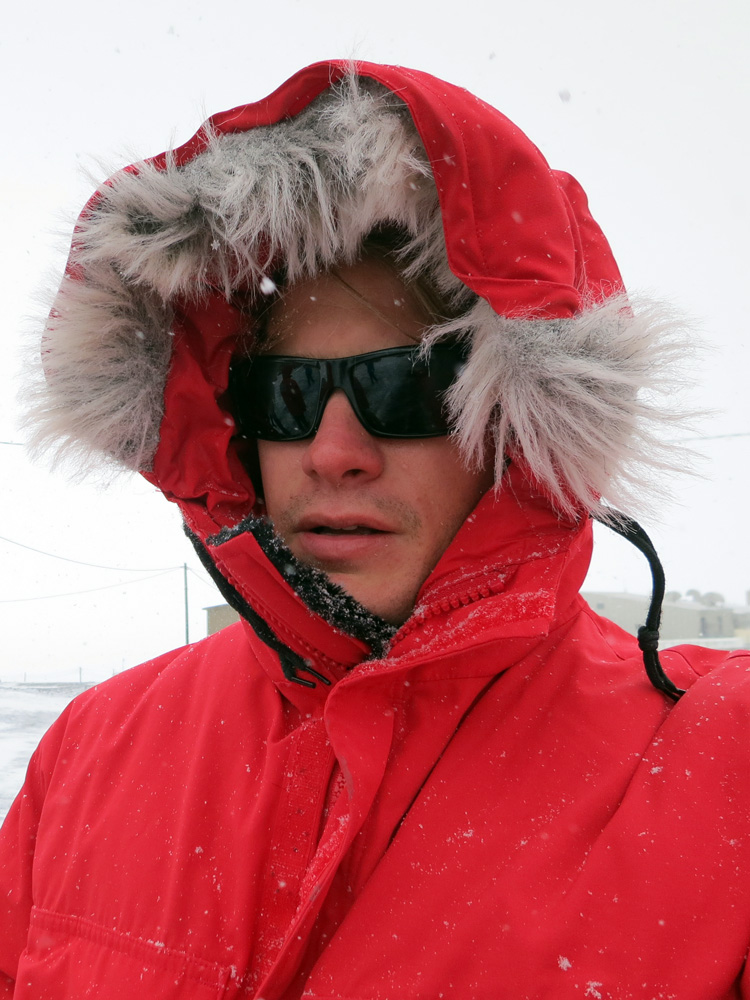
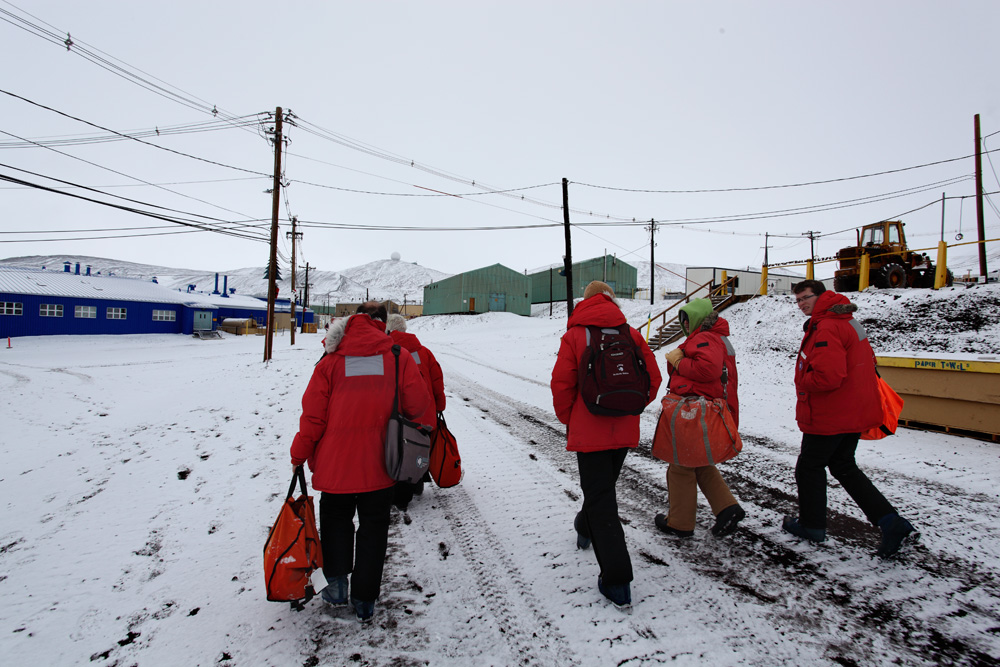
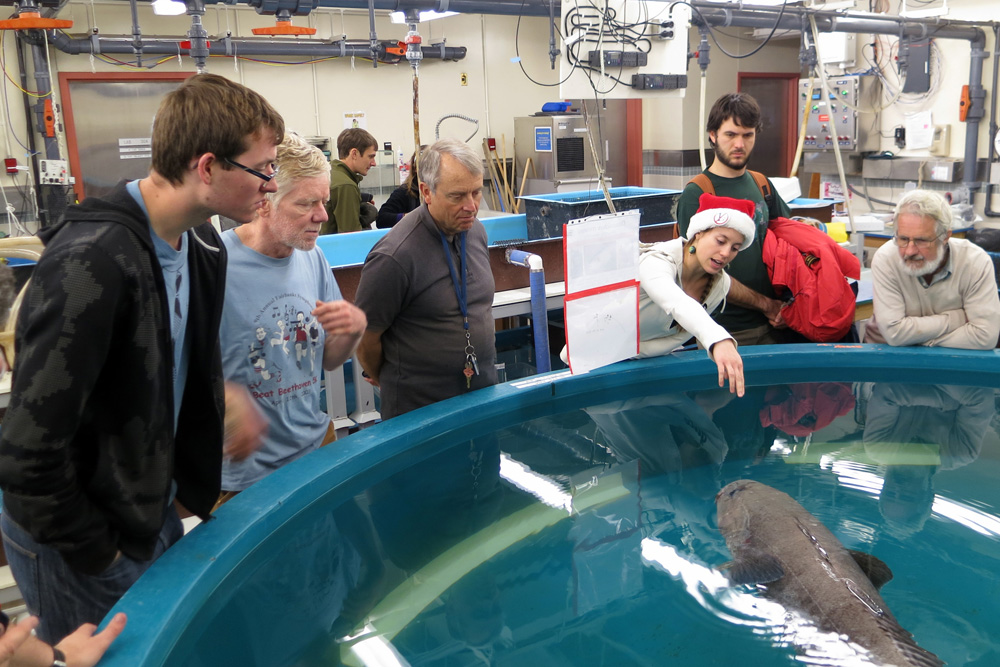
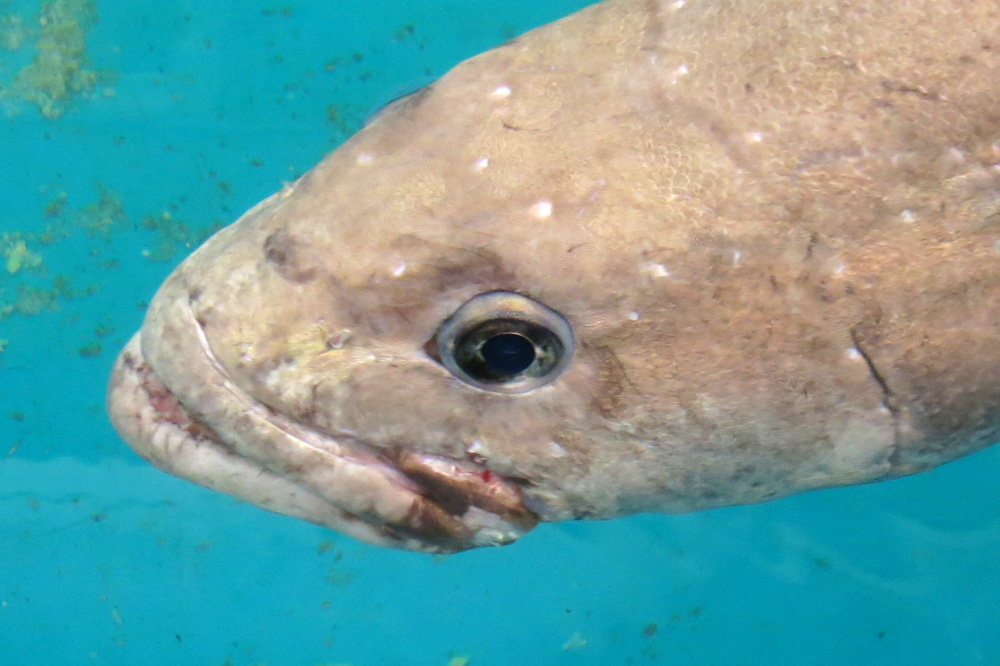
-- Geoff
Sunday, 23rd December, 2012
This time we made it. (John)
Out to Christchurch airport once more, this time at midnight, and this time with the promise of the Airbus A319 if we changed into our ECW very quickly. We did.
The Airbus is operated by Skytraders under contract to the Australian Antarctic Division to support the Australian bases. However, it is flown between Christchurch and McMurdo when the airstrip at Casey is unusable, which is most of the time.
Comparing the photos of the LC130 from two days ago with the photo below only goes part way towards explaining our sheer joy at being on this aircraft.
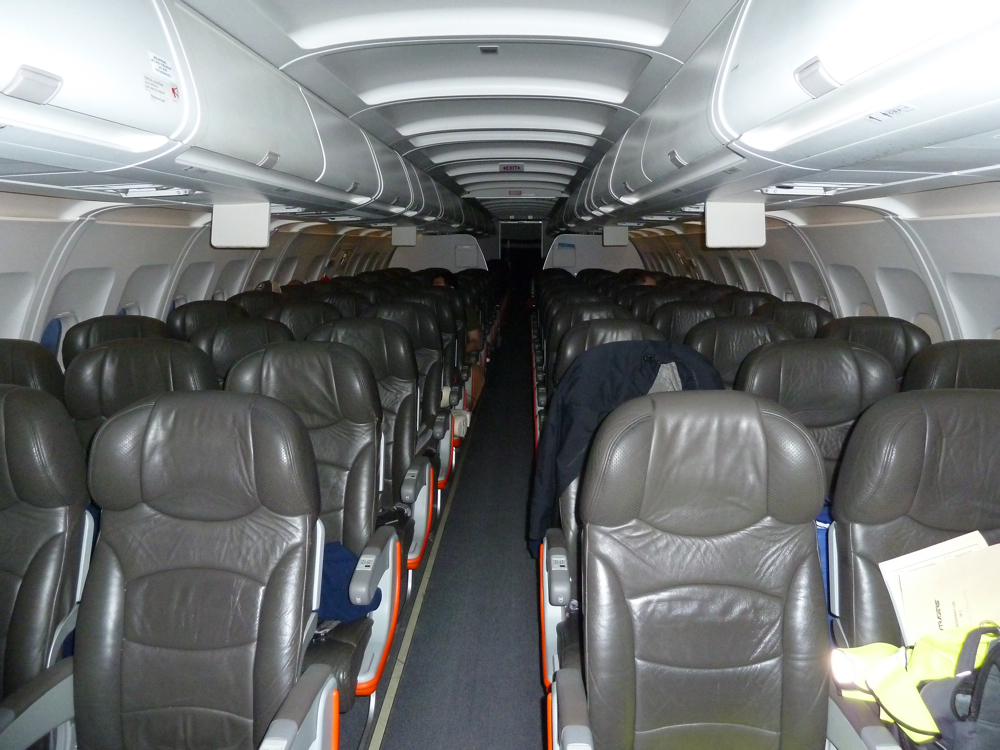
This photo was taken a couple of hours into the flight. It is hard to see the 36 passengers, who have simply been swallowed into full rows of seats, where, if not sleeping soundly, they were periodically offered tea and coffee by the ever-attentive flight assistants. There was even an in-flight moving map showing us where we were along our route.
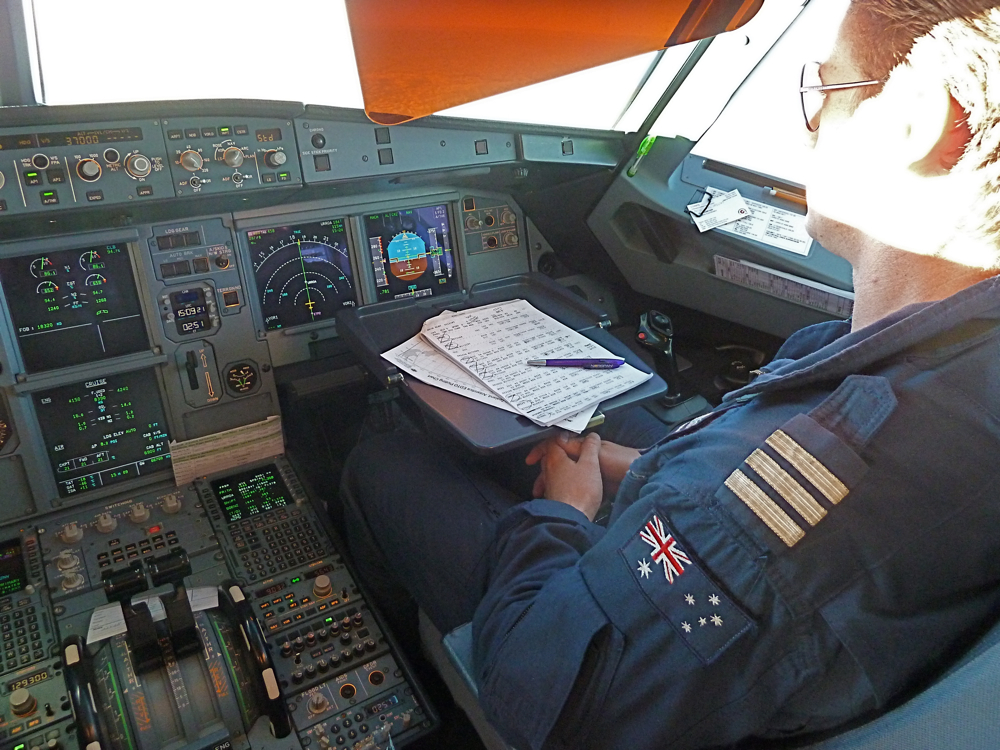
Up on the flight deck things were going well. I chatted with the pilots (pilots are always interesting to talk to), watched the sun rise into the sky, where it will remain for the rest of visit to Antarctica, then wandered back to stretch out across three seats for a further snooze.
The flight took barely four and a half hours.

Nic and Geoff step foot on the Antarctic continent.

The Pegasus ice runway is an hour's drive from McMurdo station, in the wonderfully named "Ivan", the Terra bus. As we rumbled along, they thoughtfully played the "Ivan the Terra bus" song for us, although frankly the song could do with a bit more work.
After a welcome and briefing, we settled into our rooms, and organized the necessary clearance to use our laptops on the station network. Communication with the outside world is excellent, via standard communications satellites.
After lunch we set about orienting ourselves.
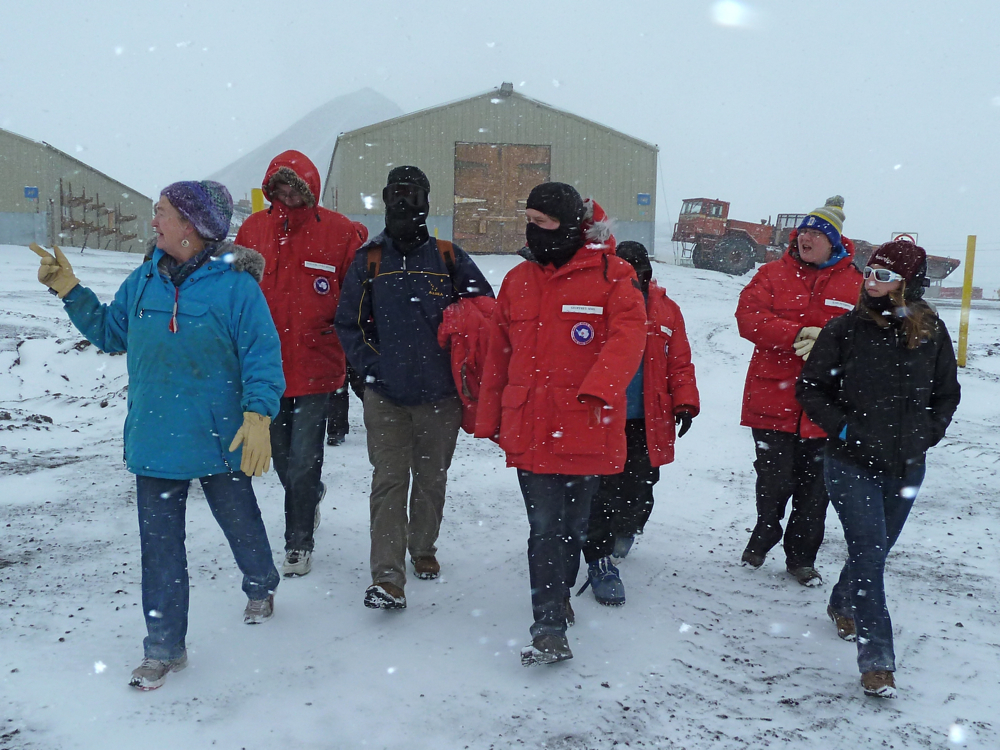
Here Sarah takes us on a "dirt tour", or walking tour of the station. It was fascinating, if a tad windy - not to mention snowing. Fortunately, at -5C it's quite mild compared to South Pole. Sarah is one of the National Science Foundation coordinators at McMurdo. Bonus points if you can recognize Nic and Geoff in the photo.
Dirt Tour was followed by a tour of the main research laboratory, the Crary Lab.
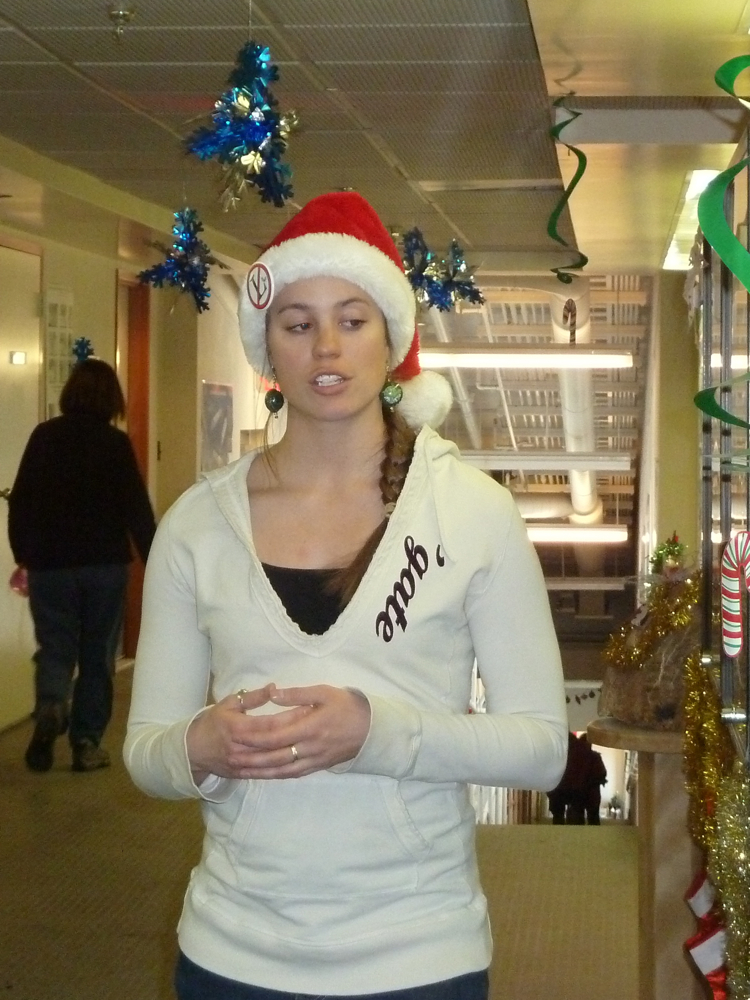
Bev is the Crary Laboratory Supervisor. It is clear that the festive season is upon us, even in McMurdo.
Bev gave us a great overview of the work (mainly biology and geology) that is done around the station, including showing us some spectacular video of Mount Erebus erupting.
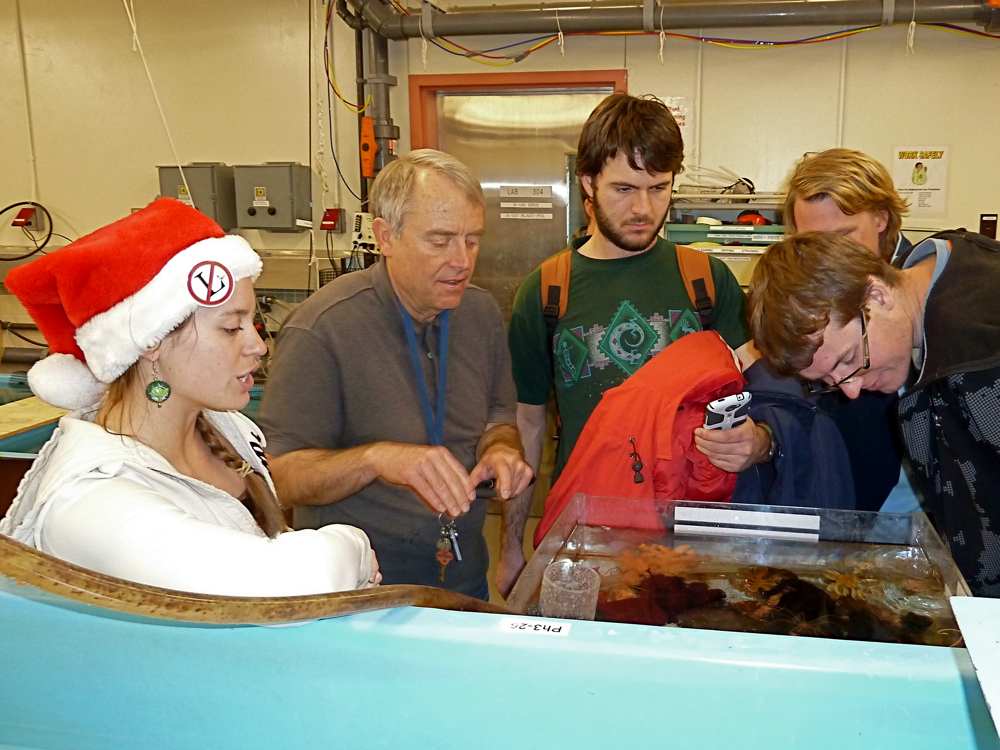
Nic and Geoff play with the little creatures in the "touching tank". The main problem with this game is that the water is at -1.4C, which is decidedly too cold for (our) comfort. It doesn't freeze because it's salty.
Over the next week we'll organize everything we need for our field deployment to Ridge A.
Monday, 24th December, 2012
Adelie penguins (Geoff)
The last 36 hours have been pretty brutal to be honest. After 3 days of being on standby to fly South and getting a total of only a couple of hours sleep during that time, I finally slept for a full 12 hours and feel refreshed.
This morning Nic & I took a walk to the Discovery Hut, around 300 metres from McMurdo town. The hut, erected in 1902, was used as a base by the legendary Captain Robert F. Scott.
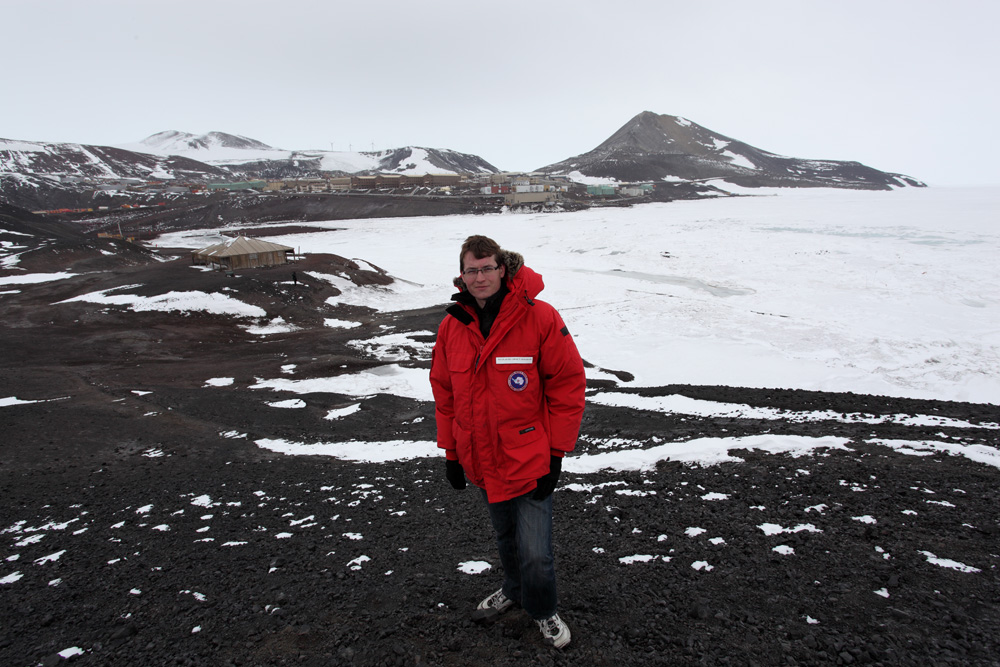
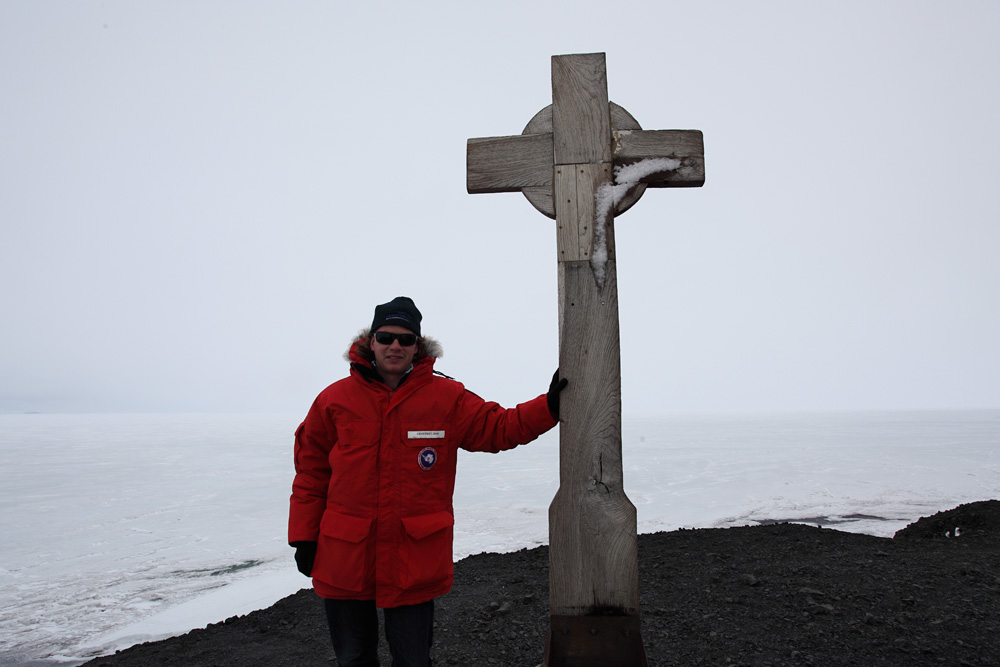
We saw a number of strange rock-like objects on the snow; turns out they were Weddell Seals! They hardly moved, but very occasionally they would flap a flipper around.

We thought they were pretty cool, until we saw a number of smaller rock-like objects in another area of ice... penguins! About 25 Adelie penguins seemingly appeared out of nowhere and started marching toward us.

They approached a river of frozen ice, and weren't really sure if they wanted to continue.
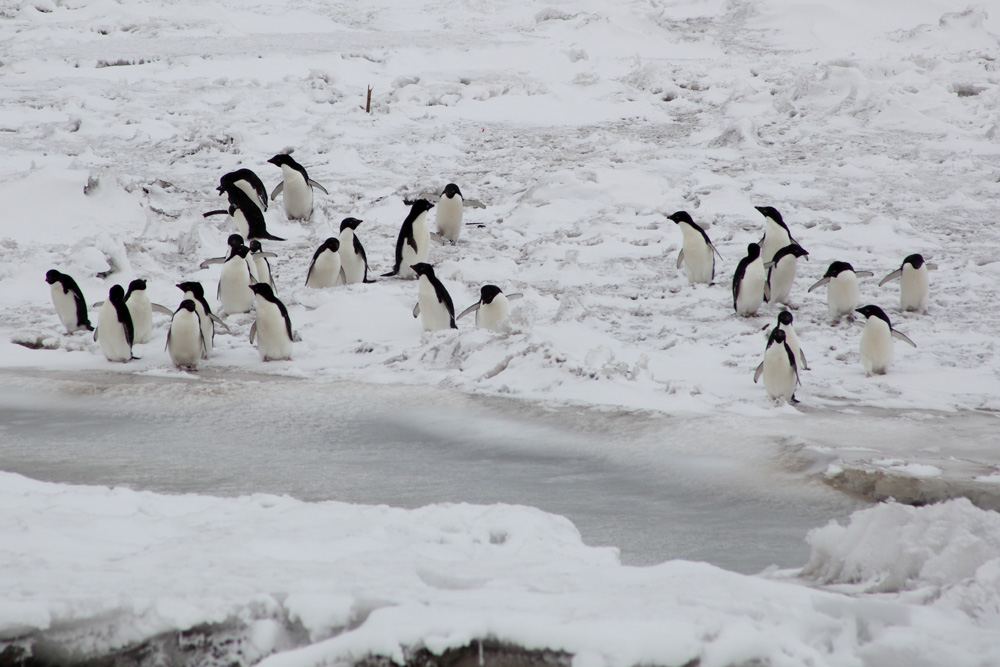
But they did, and continued to hang around for about 10 minutes. We took a few photos before wandering back to McMurdo.
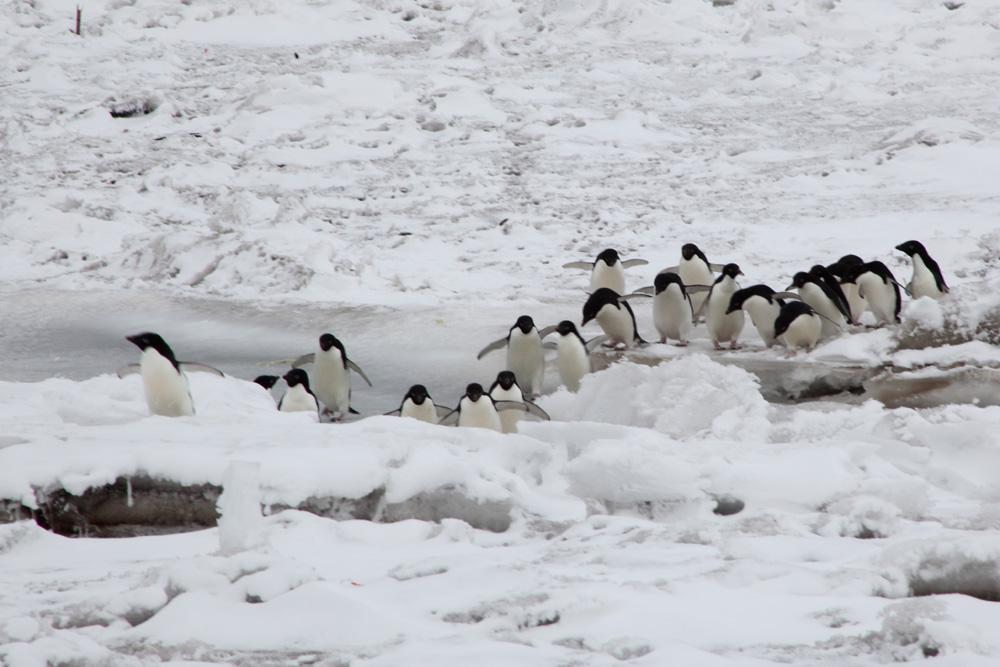

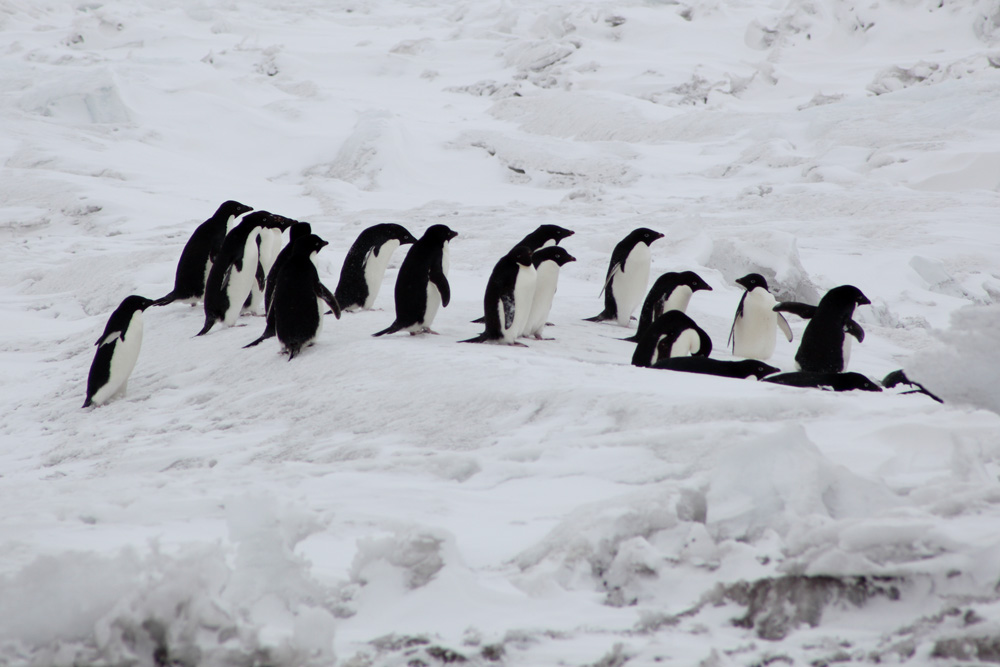
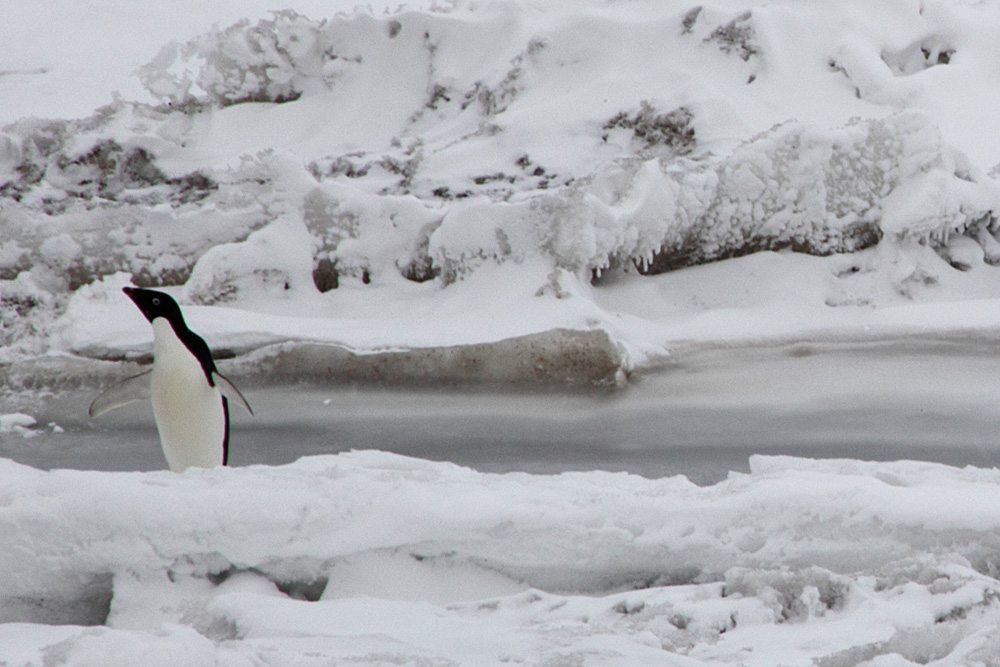
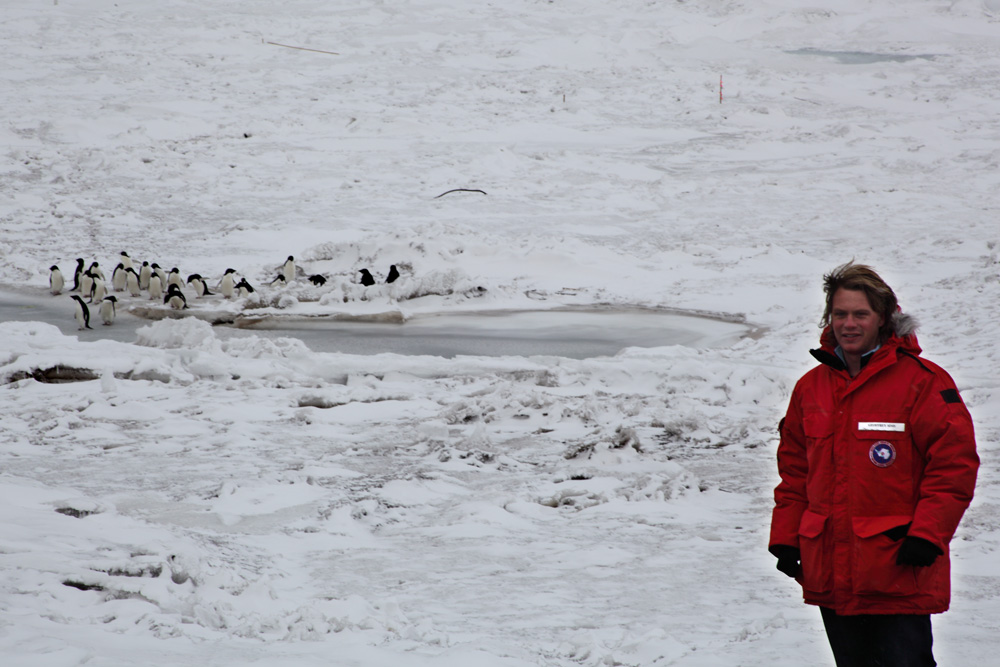
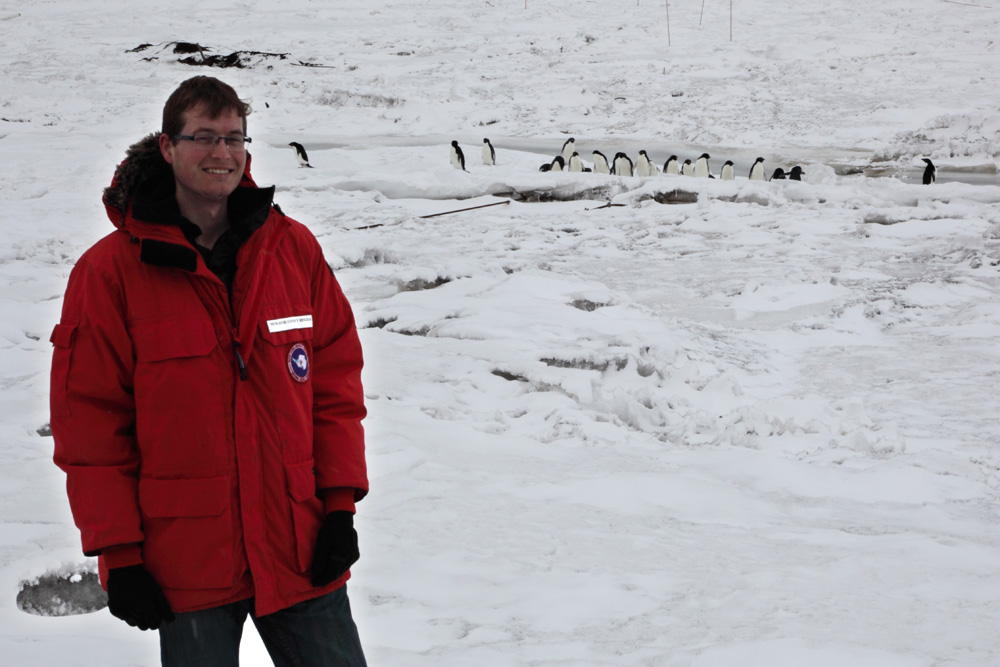
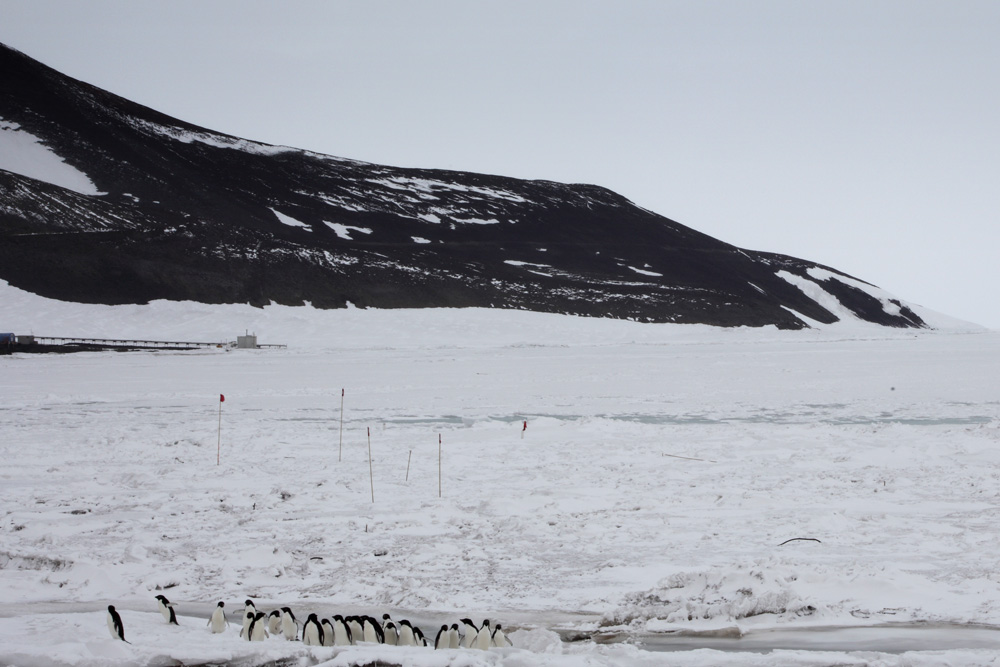
When we arrived back at the "office", a number of people had spotter scopes looking at the penguins. I could not believe how far they had waddled in the time it took us to walk back, and just how lucky we were for them to approach us at the very moment we were at the hut. Penguin sightings around McMurdo are not that common, and we seemed to have timed our walk perfectly. This photo shows the penguins waddling off into the distance.
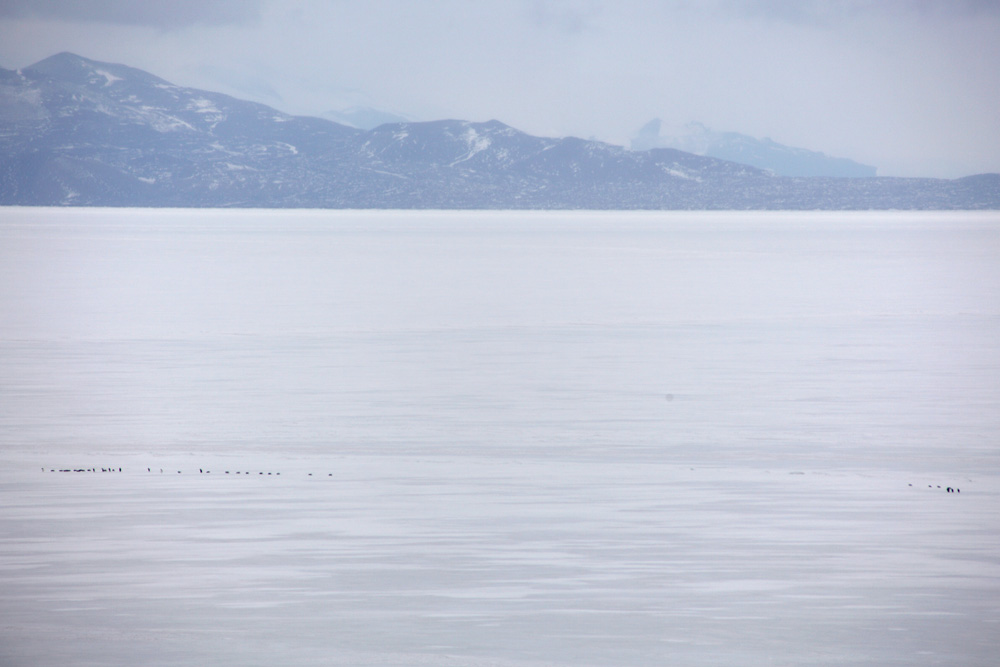
The afternoon was spent discussing our plans for the Ridge-A deployment.
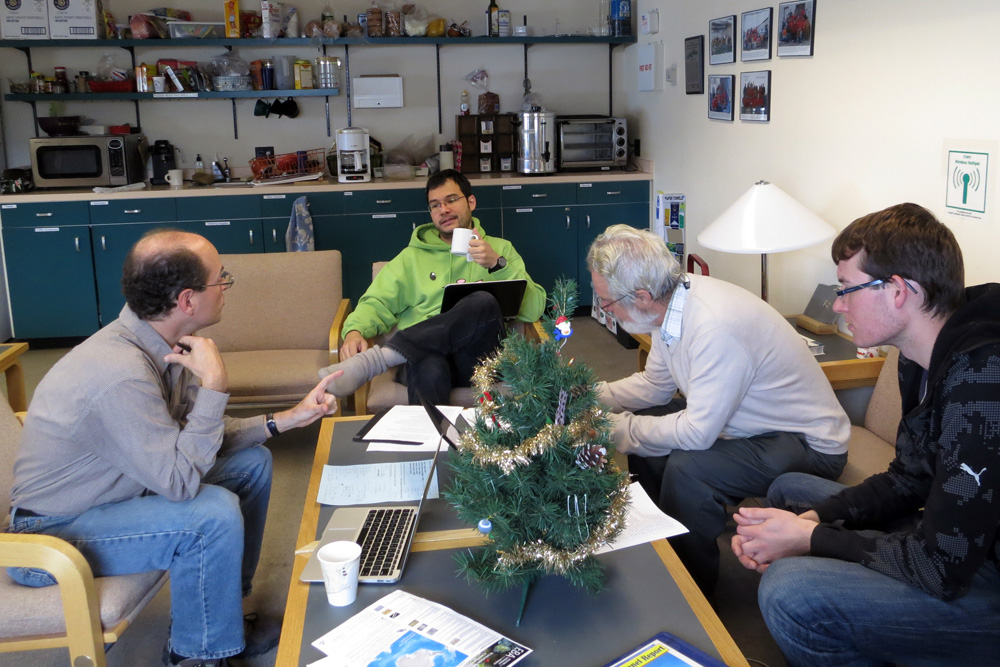
-- Geoff
Monday, 24th December, 2012
Christmas dinner (John)
Ok, so Christmas isn't till tomorrow, but this is Antarctica so we can do what we like. Christmas dinner was tonight, and a splendid dinner it was, too. Tomorrow will be a holiday.
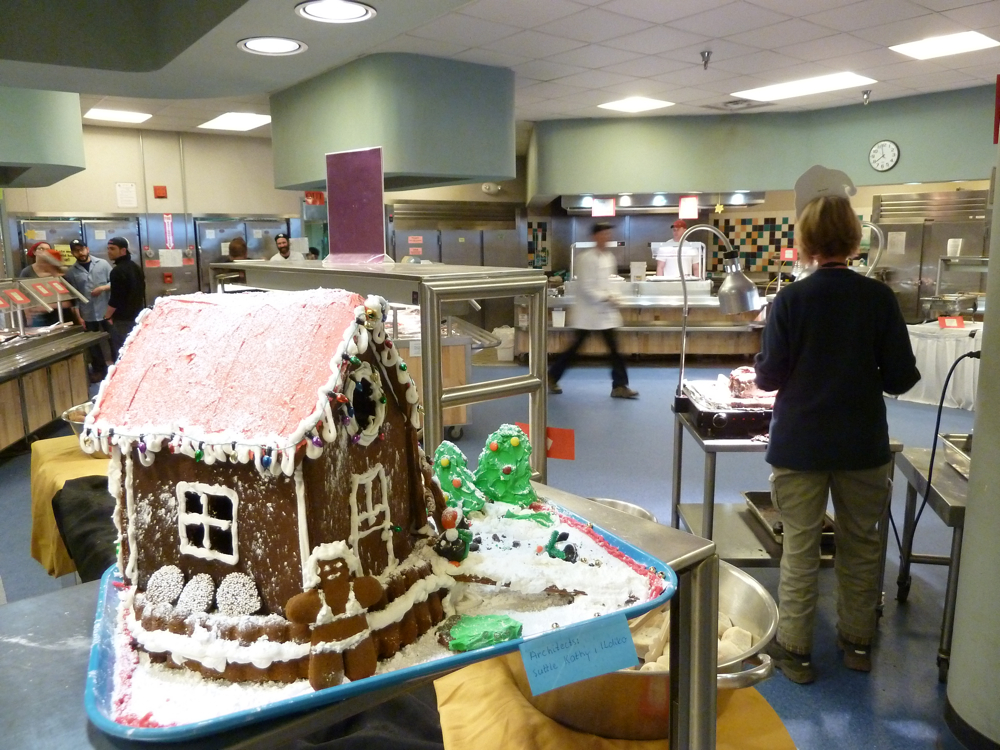
Every imaginable gastronomic delight was on offer, leading to some difficult decisions having to be made. The lobster tails were especially good.
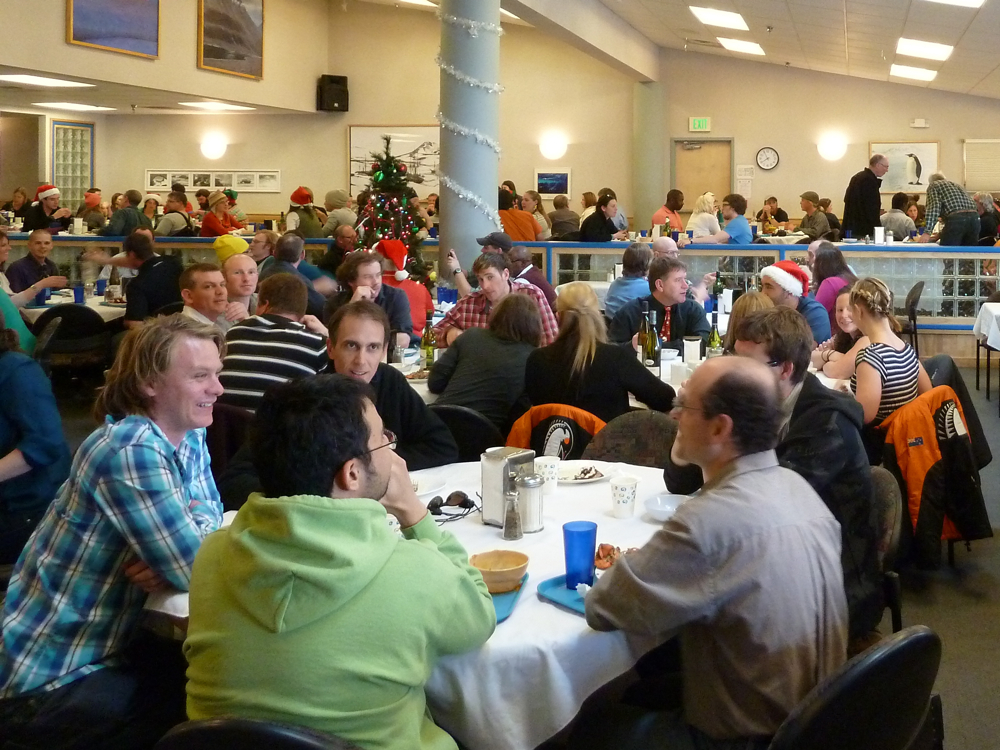
Here's our table from one angle...
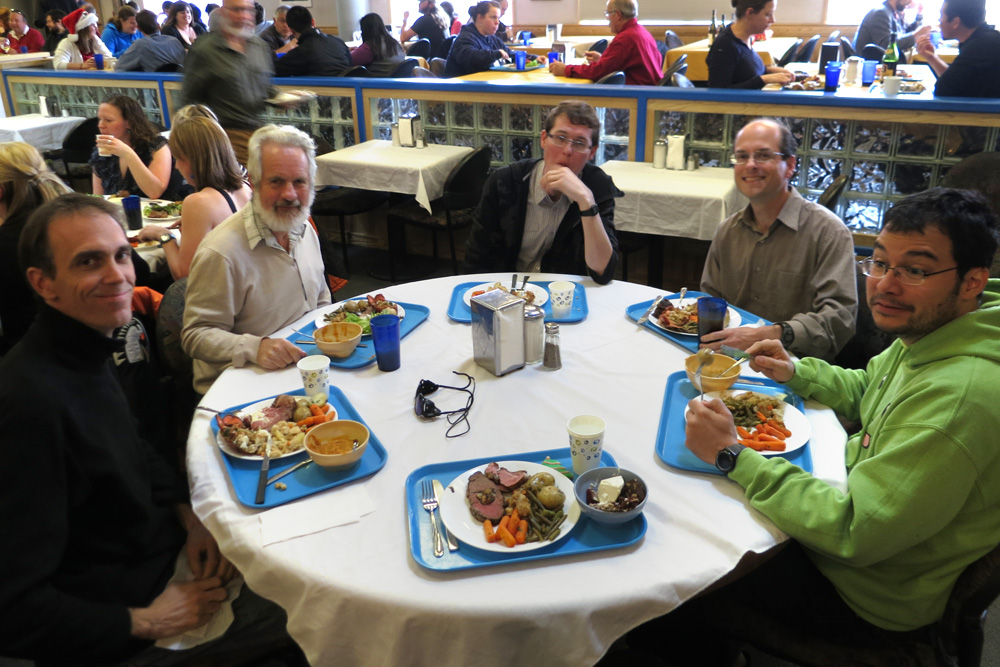
...and from a different angle.

The mistletoe was hung over the door to the exit, clearly with the intention of creating maximum havoc, but it didn't seem to see much action. Maybe people are waiting until it gets dark. As I type this it's approaching 10 pm, and it's still broad daylight.
It will still be broad daylight at midnight. McMurdo station has a webpage with weather information and couple of webcams. If you look at the Observation Hill camera, the Crary Lab is the grey building on the left consisting of three modules linked by a sloping corridor; there's a library (with WiFi) in the top module where we spend most of our time. The galley and much of the community action is in the big blue building, and our quarters are in the buildings behind that.
The good news is that we've now worked out a plausible plan for our deployment to Ridge A, involving all six of us in two shifts, five Twin Otter flights, and an experienced field guide. Tomorrow we'll fill out the plan in more detail, ready to discuss it with the logistics people on Wednesday when they start work again.
Tuesday, 25th December, 2012
Wandering around McMurdo (Geoff)
Christmas Eve and Christmas Day are holdays here, and apart from an amazing dinner, not much else seems to happen. Here are a few photos from around McMurdo on Christmas Eve and Christmas Day. We finally saw our first glimpse of blue sky too, which was a welcome change.
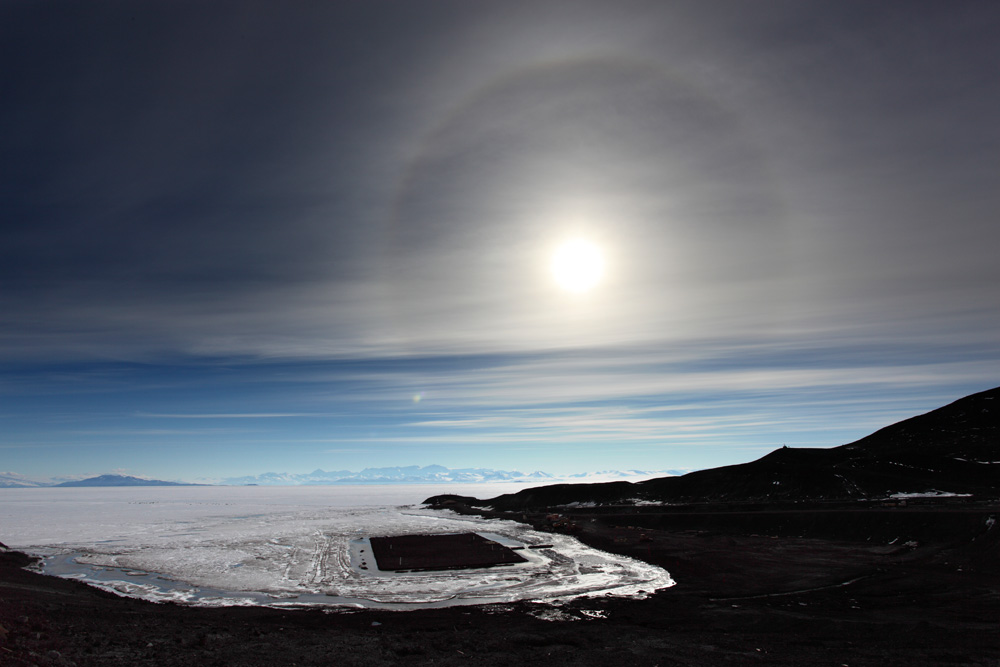
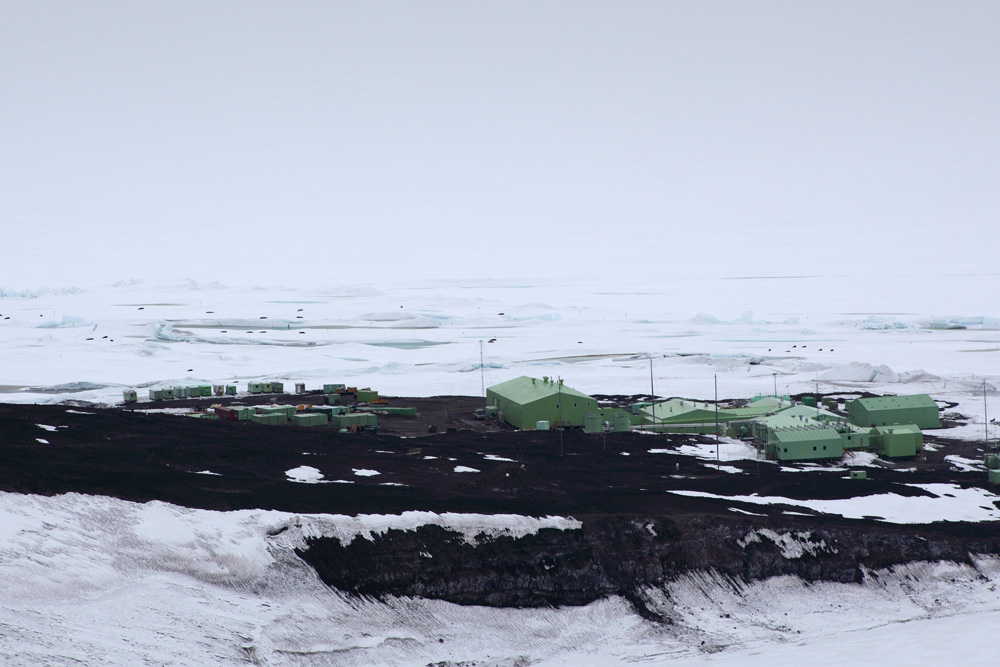
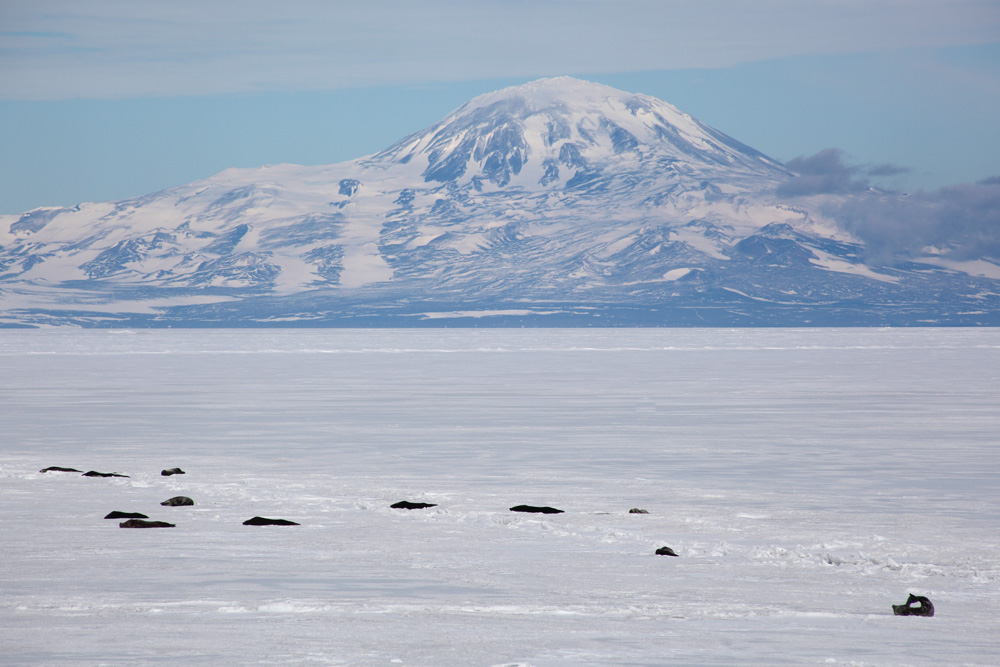
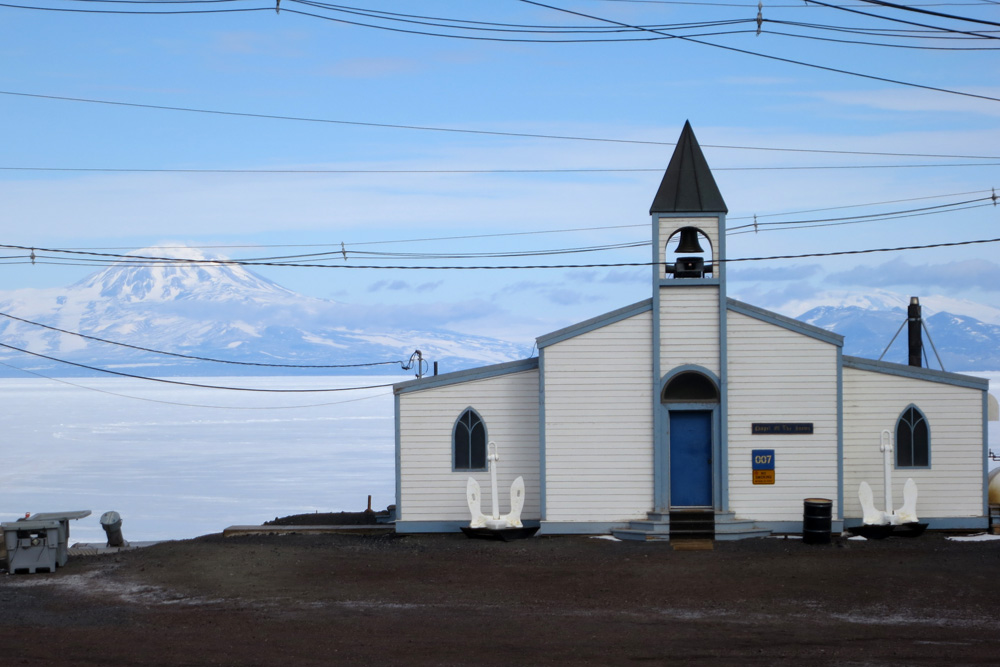

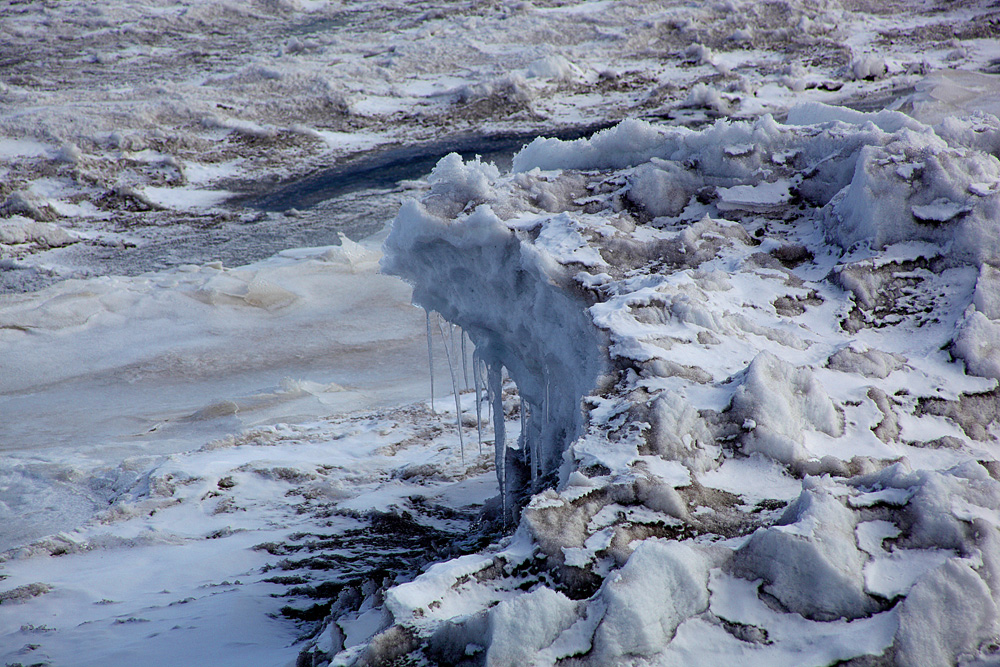
-- Geoff
Tuesday, 25th December, 2012
Funny way to spend Christmas (John)
Most of the station's 850-odd inhabitants are taking the day off, so it's very quiet. We've taken over the Crary Lab library again, and spent the day putting together an 11-page work sheet for our Ridge A deployment. It's important to plan carefully and to write everything down before we go, as when we get there it will be very cold, our brains won't work properly because of the altitude (4,000 m), and we'll have just a few days to get everything done. A few minutes spent planning here could save hours of hard work and frustration at Ridge A. Not only that, but with a script to follow it's less likely our little camp at Ridge A will turn into a re-enactment of "Lord of the Flies".

The view from the library window. This is Mount Discovery, some 60 km away. The air is very clear here.
However, it's difficult to make a full-day's brainstorming on technical things sound interesting, and none of us is terribly photogenic, so instead of boring everyone witless with some dreary engineering talk, here are some photos of McMurdo on a very quiet Christmas day. By the way, it hit +1C today with some occasional sunshine, so it was quite pleasant outside.
From a psychological point of view, McMurdo is an excellent transition for us as we head south, as it is weirder than Sydney but not as weird as South Pole.
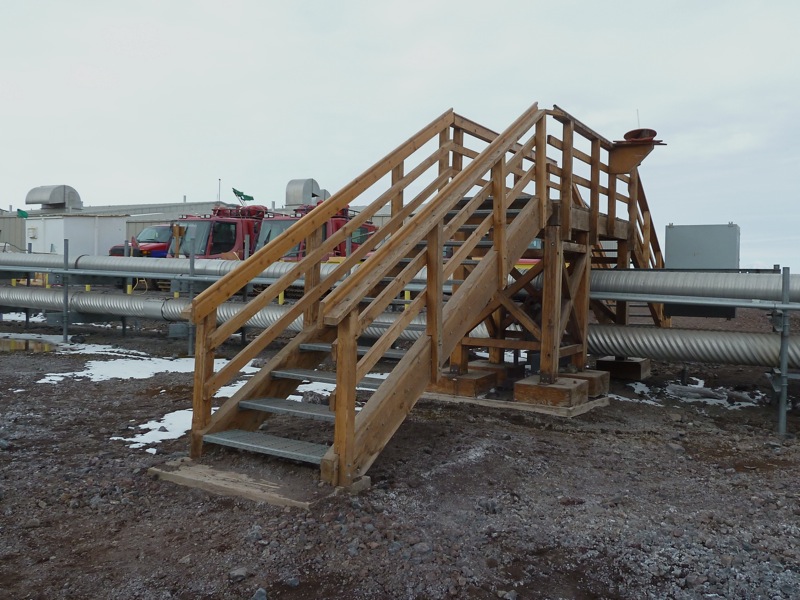
For example, here is a bridge across some of the station pipe work.
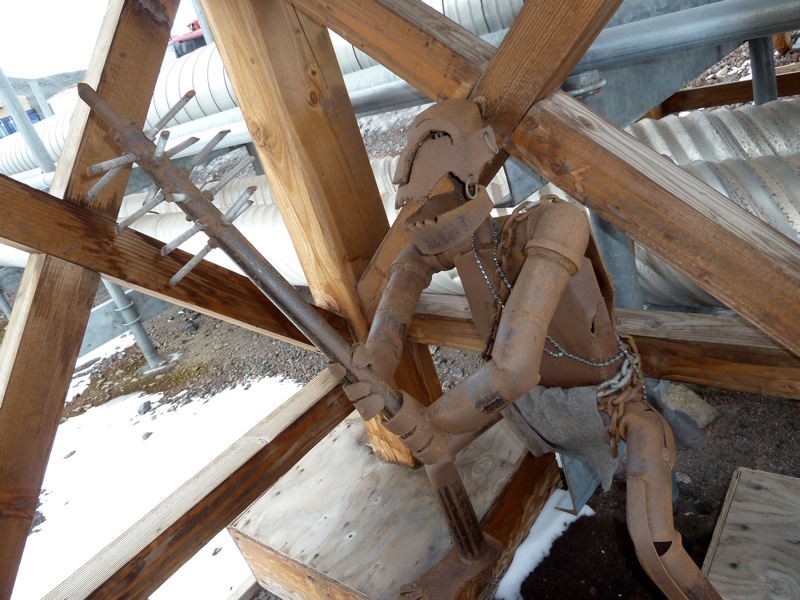
Like all good bridges, it has an evil troll lurking underneath.
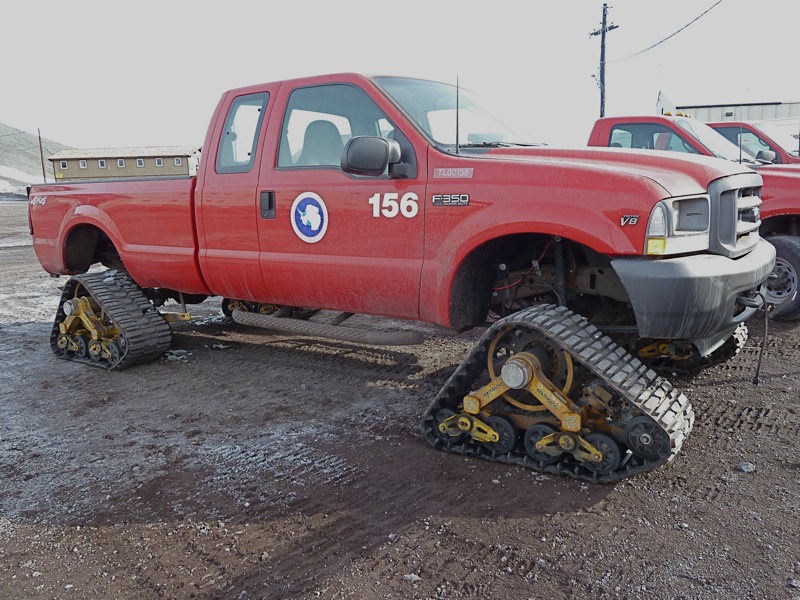
These wheels are a must-have accessory for our Prius.
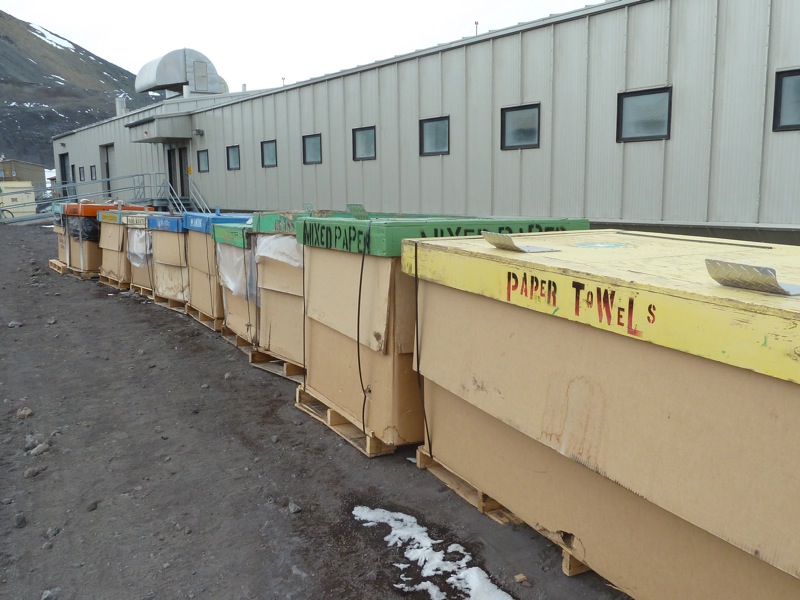
As a final example, rubbish at McMurdo is sorted into numerous categories. 100% of solid waste is returned to the US, and some 70% of that is recycled. It's a system that works very well, and one the USAP are justly proud of. However Craig tells me that sometimes additional recycling bins appear with new categories such as "Dreams" and "Zombie Parts".
As I said, weird. But seriously good fun!
Wednesday, 26th December, 2012
Things start to get interesting (Geoff and John)
You may be wondering why we went to all that trouble with the ECW gear and stringent medical tests, only to arrive at a place that's more balmy than a typical Canberra winter (the forecast maximum high for tomorrow is +4 degrees C...!). Well, from now on, things start to get a bit more interesting...
We'll spend another day here, then Daniel, Geoff, Nic and John will do a 2-day "Happy Camper" snow school course. After that, we're all off to the South Pole, where we will spend around another week. There are two reasons to spend time at Pole: we need to prepare various pieces of equipment and test out our camping gear and, equally importantly, we need to physiologically acclimatize to the altitude (2835 m) before going any higher.
After that, we'll fly about 1000 km up to Ridge A (altitude 4000 m), where the PLATO-R observatory was established last year. There, in the middle of nowhere, we will set up camp again. We'll spend about a week refueling and refurbishing PLATO, and exchanging the existing "HEAT" telescope for an even better version, before packing the camp up, returning to South Pole, then back home via McMurdo and Christchurch again.
So, straight after breakfast this morning we met up with Ben, who will be our field guide at Ridge A. Ben is a very experienced mountain guide, and has climbed some of the highest mountains in the world. He will be an essential member of the team, and we will be relying on his experience and logistics skills.
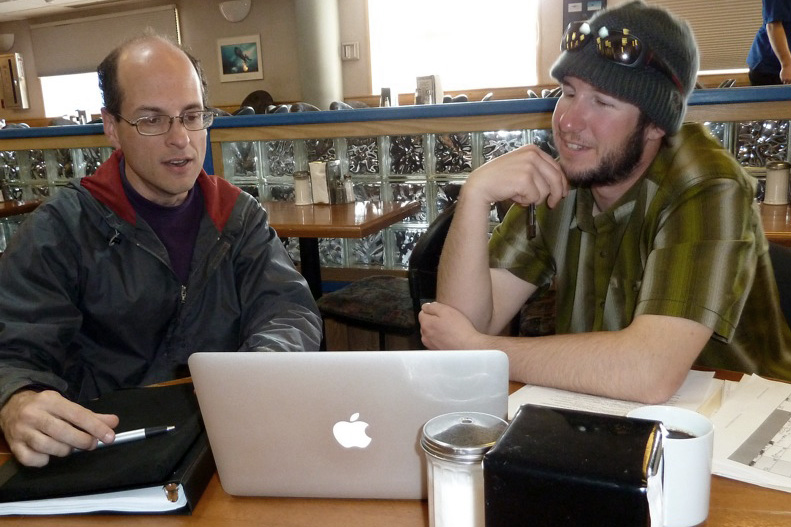
After introductions and running Ben through our possible deployment plans, our first meeting was with "Fixed Wing", who are the folk who arrange and negotiate all the Twin Otter flights.
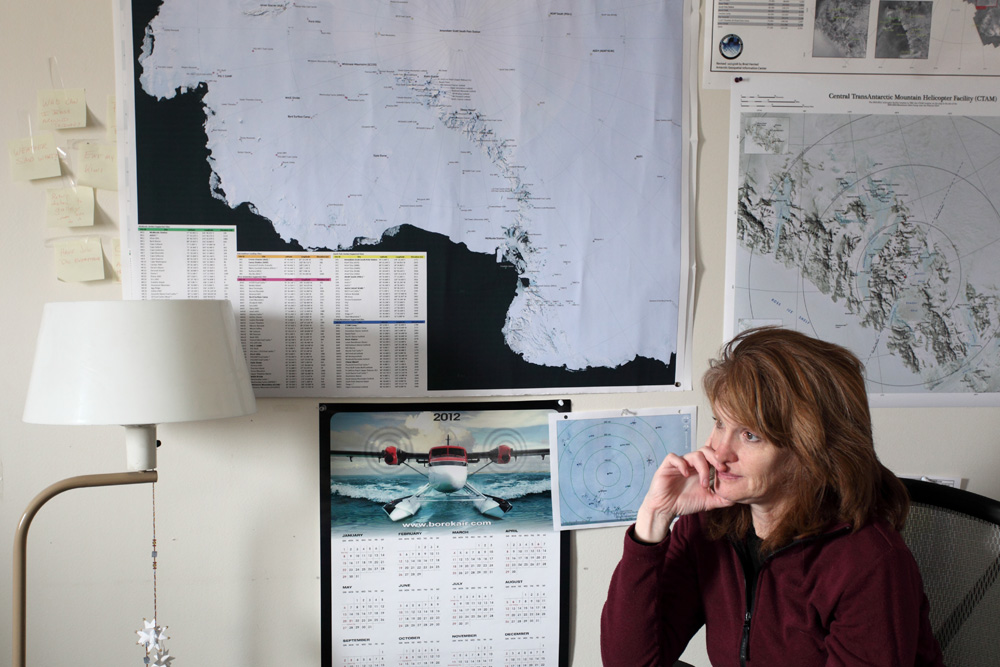

Next, we were off to the radio shack, to learn how to communicate with McMurdo once we're out in the field. With Ben on board, the team are looking invincible:

That pink recycling bin is for "Glitter":
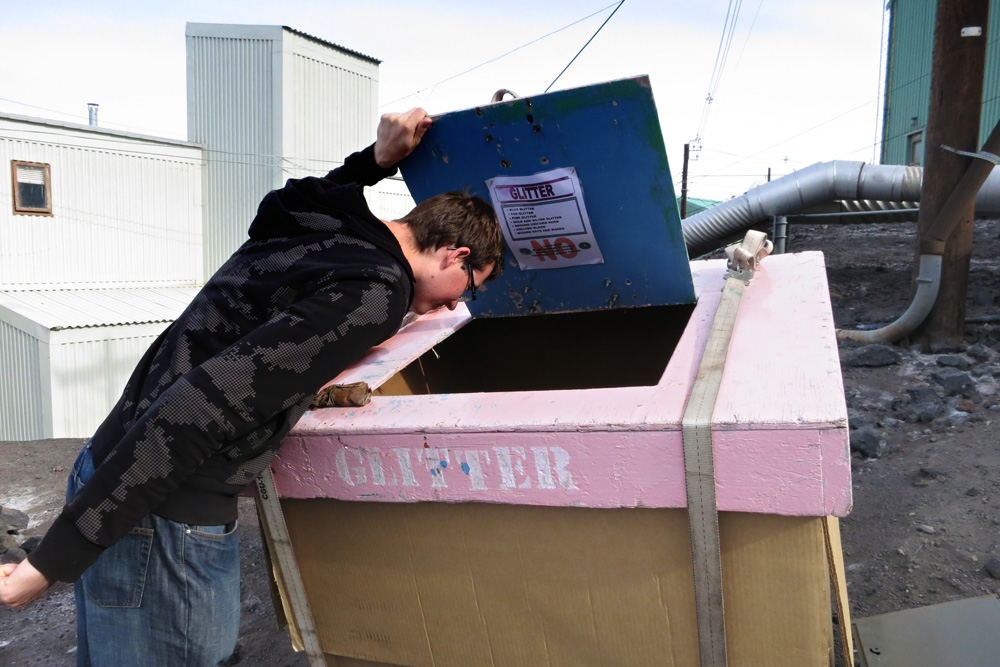
In the radio shack we met with Shelley, a MACOPS supervisor. Shelley explained the procedure for using the Iridium phones and HF radio that will be our only link with the outside world once we hit Ridge A. The most important thing is that we report in every day by our nominated time, or they'll put an emergency plan into action and come looking for us.
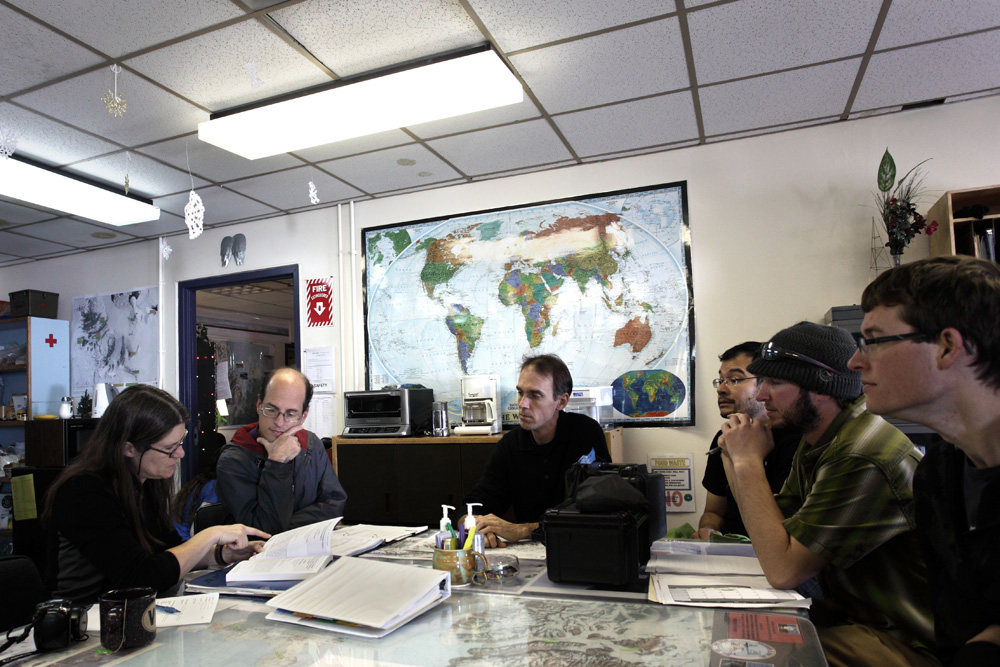
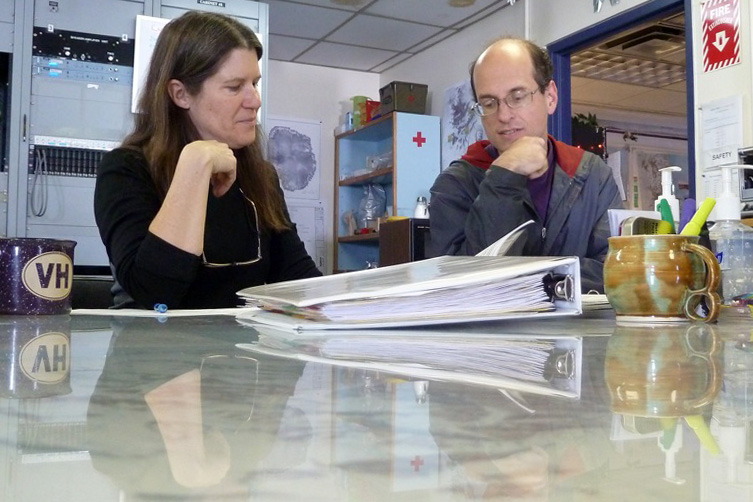
MACOPS is the name given to the field communications centre at McMurdo. (Apparently it used to be called FOCOPS, but that led to too much mispronunciation and bad jokes.) MACOPS monitor all the HF radio frequencies, plus Iridium, 24/7.
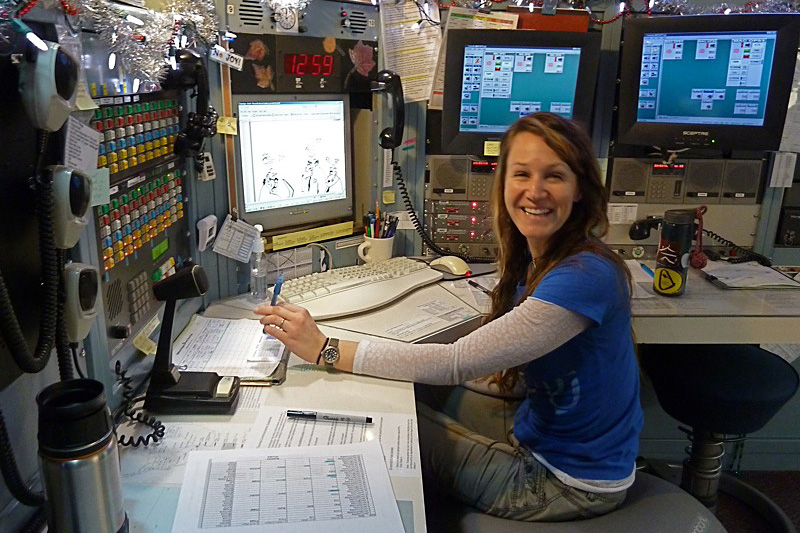
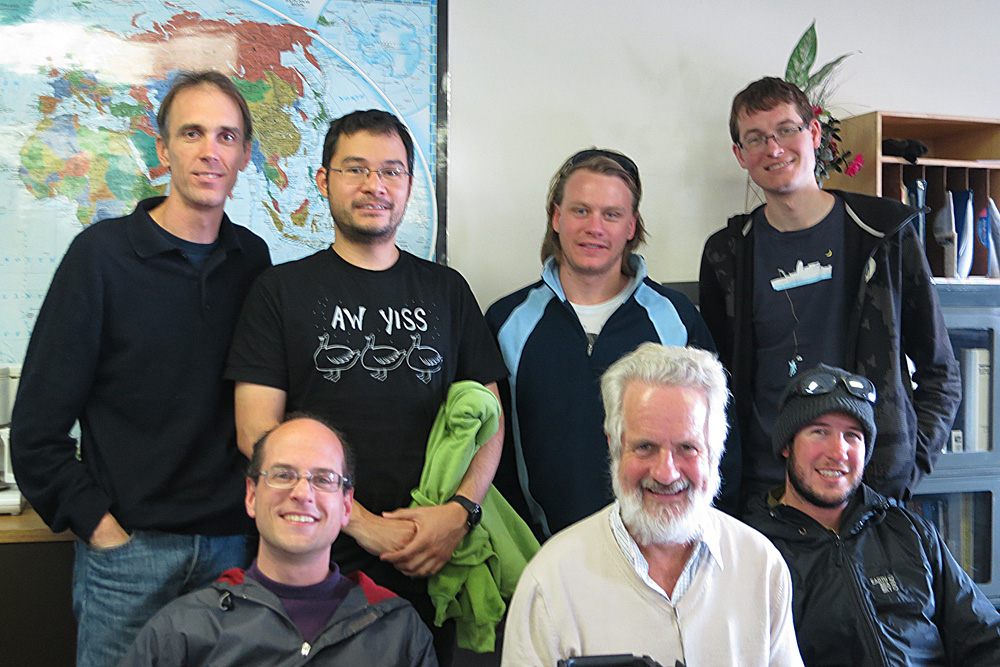
Then we wandered back up the hill...
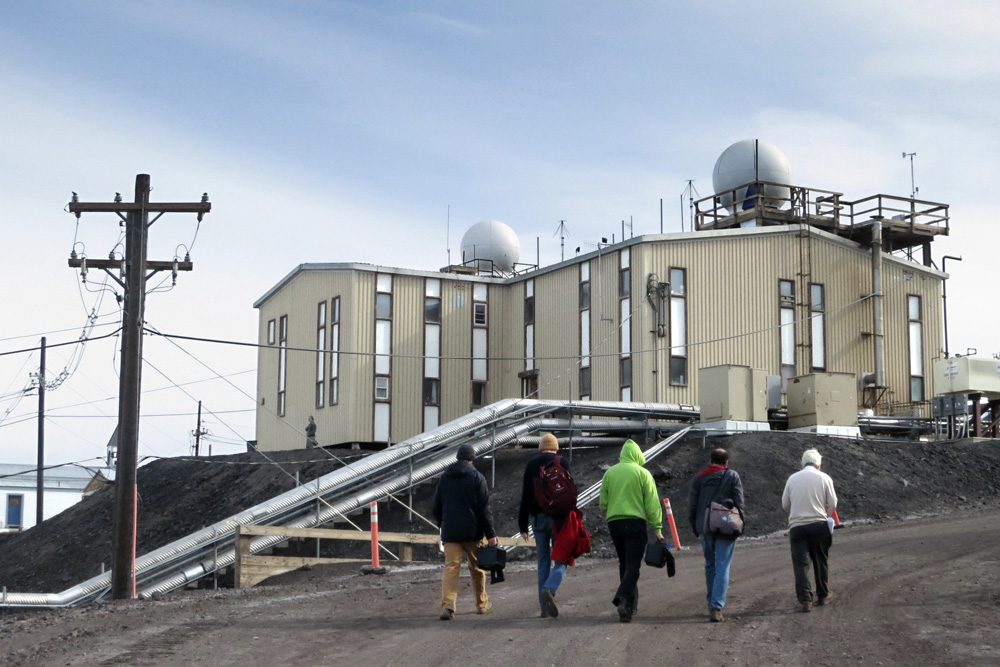
And attended the Altitude Training Course, given by Ben and the medical doctor.
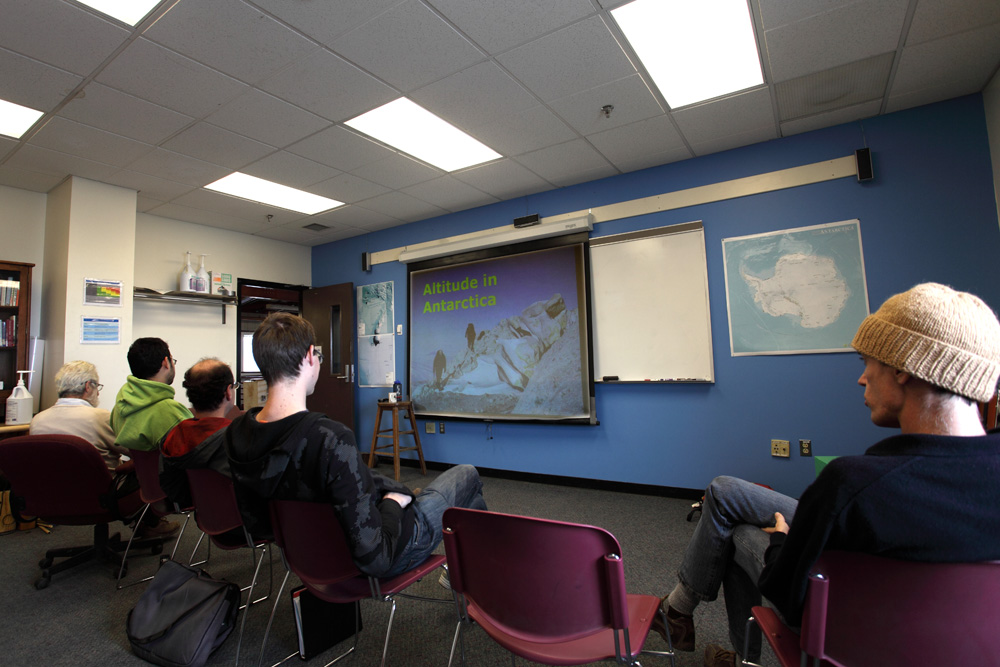
We learned a lot of very useful things about the physiological effects of high altitude, and the importance of keeping well hydrated. Although Ridge A is at "only" 4,000 m, the cold air in Antarctica means that it is effectively at 4,500 m as far as our bodies (and our diesel engines) are concerned.
The effects of altitude can be mitigated to some extent by taking the drug Diamox. One side effect of Diamox is that it makes carbonated drinks taste dreadful; John says they mostly taste dreadful anyway.
We also found a way to stop Daniel from telling jokes all the time. It's called a Gamow bag, and is used as follows:

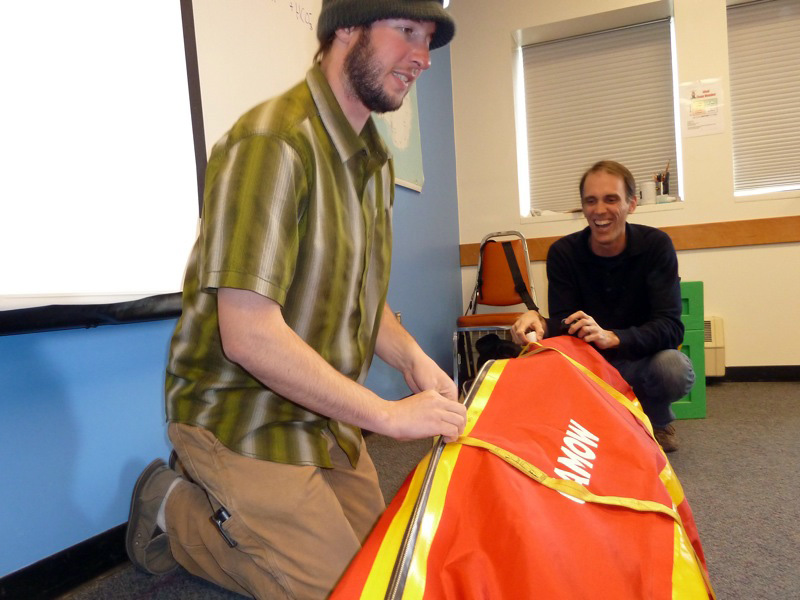
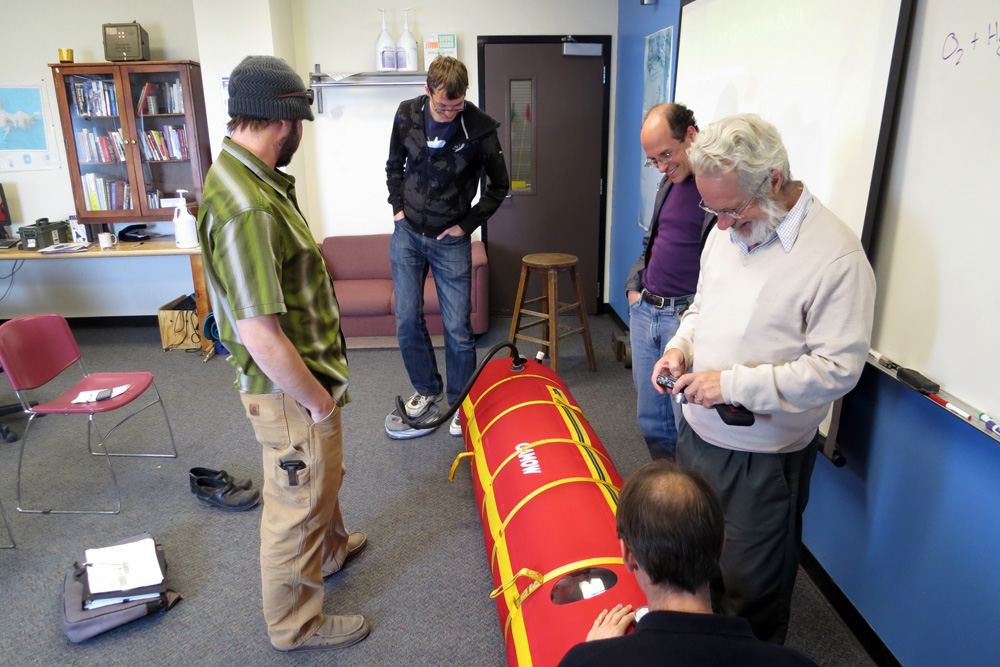
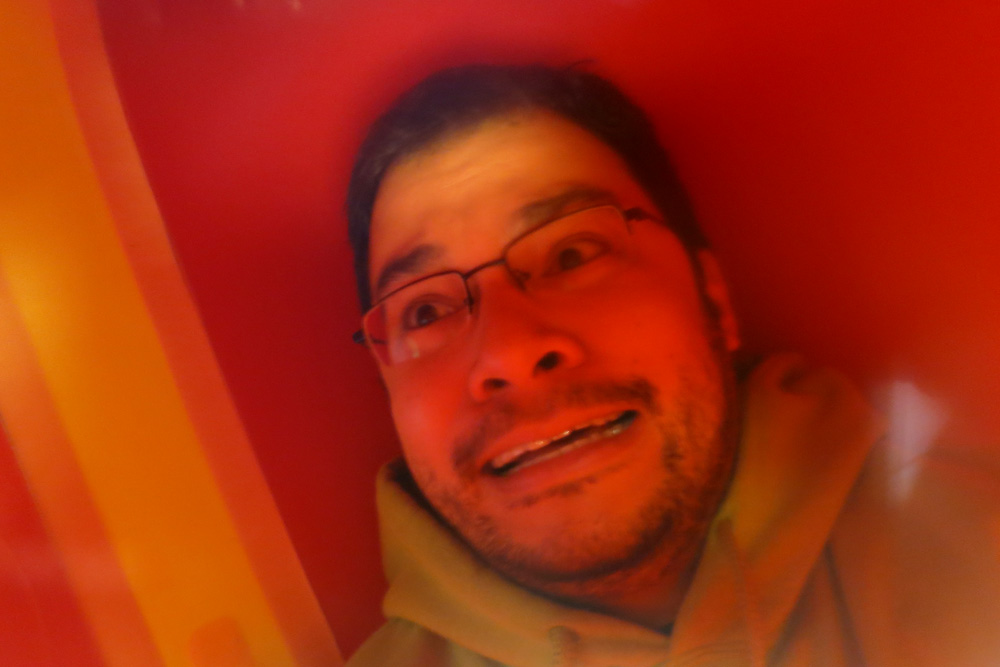
Apparently the Gamow bag can also be used in an emergency in the event of serious altitude sickness. We hope we will not need to use it for this purpose, but if any thing does go wrong, we'll also have oxygen available.
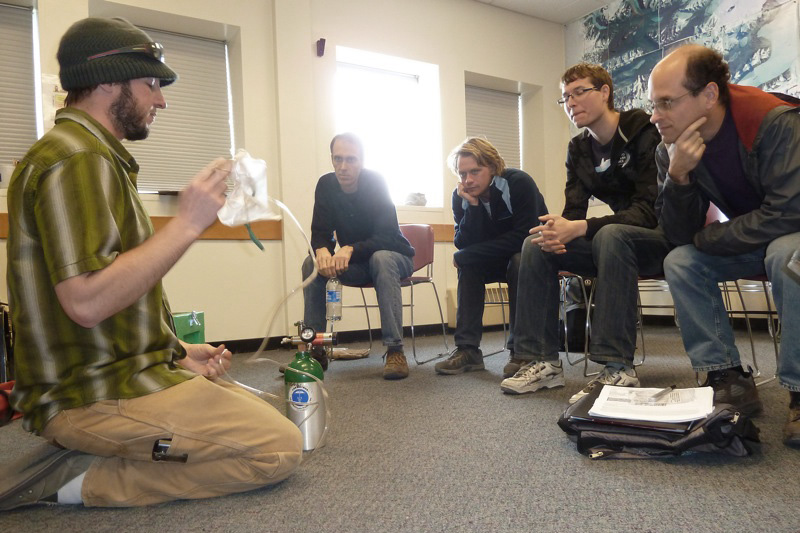
Some of this training could have actually come in handy two days ago, when Geoff & Nic did some preliminary altitude training of their own and made a daring ascent to the summit of Observation Hill (at approximately 250 metres elevation):
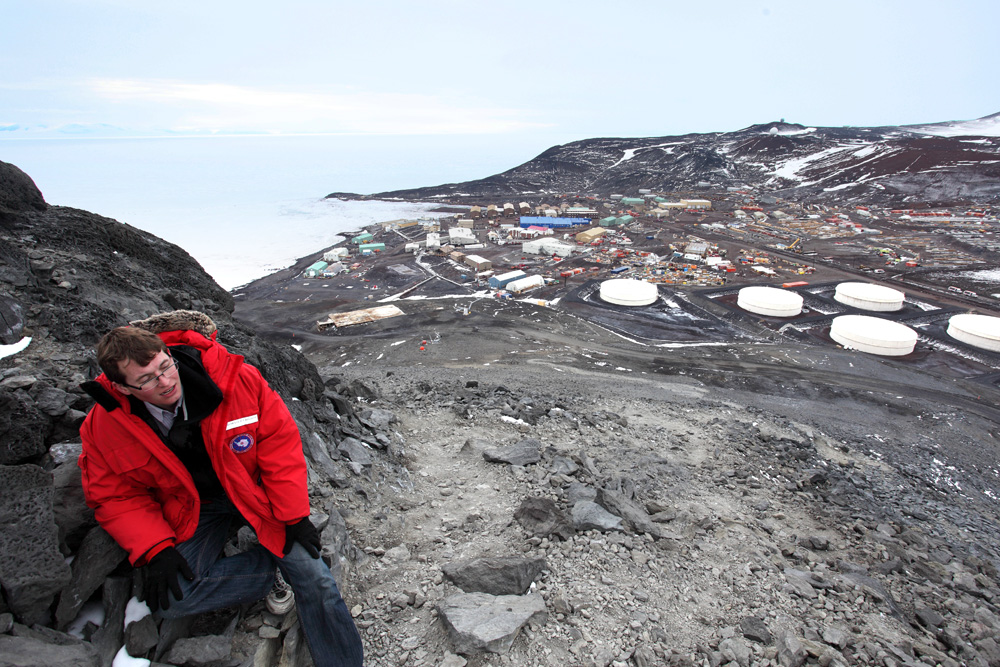
Tomorrow we will wake up to Enviro-training, and then we will prepare for Happy Camper school.
Thursday, 27th December, 2012
Observation Hill & Scott Base (Geoff)
After a long day organising our camping gear for Ridge A, a few of us wandered up Observation Hill. The weather was slightly better than the first time I did it (on Christmas Eve). John kicked back, and enjoyed the view:
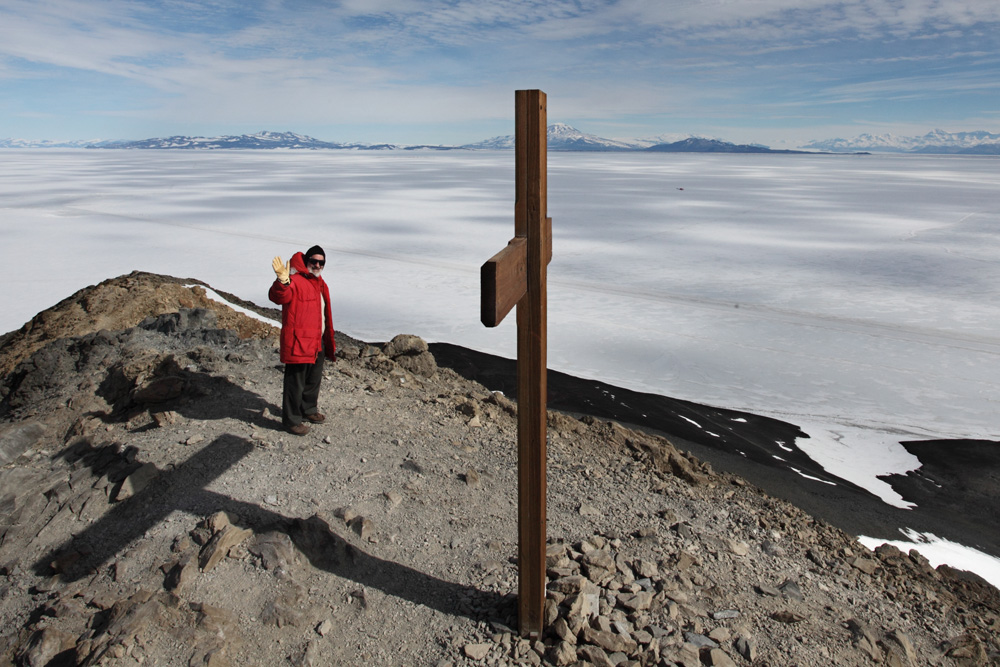
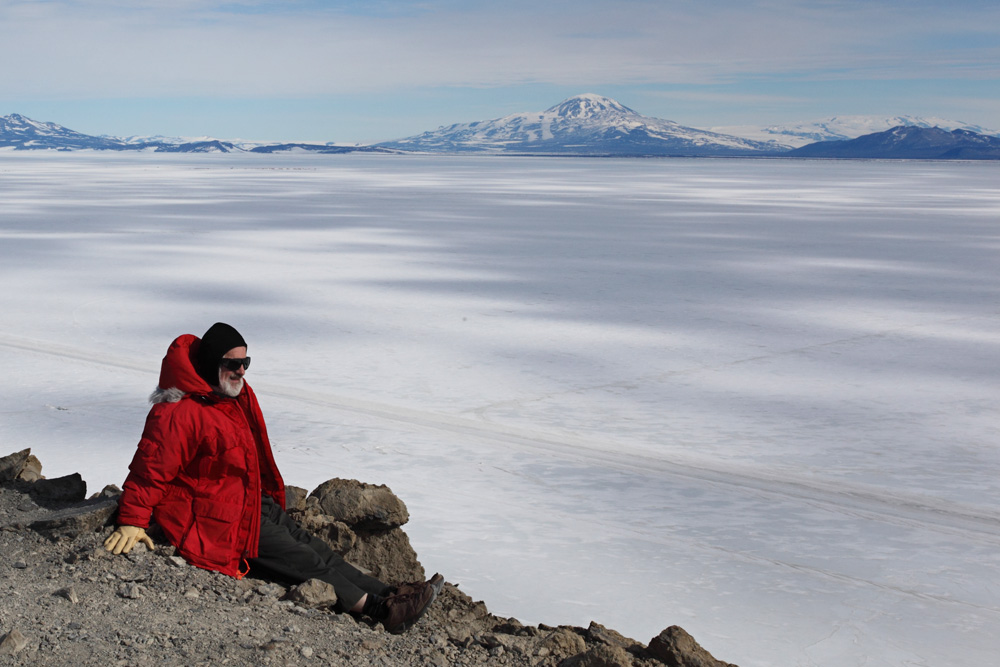
Meanwhile, Dan wanted to update his Facebook profile picture:
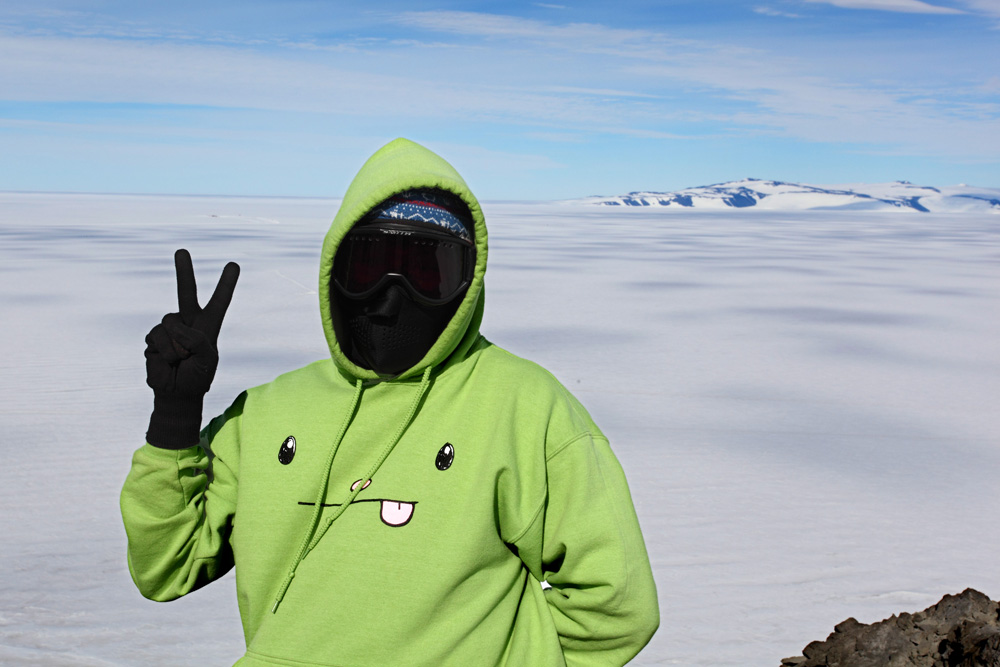
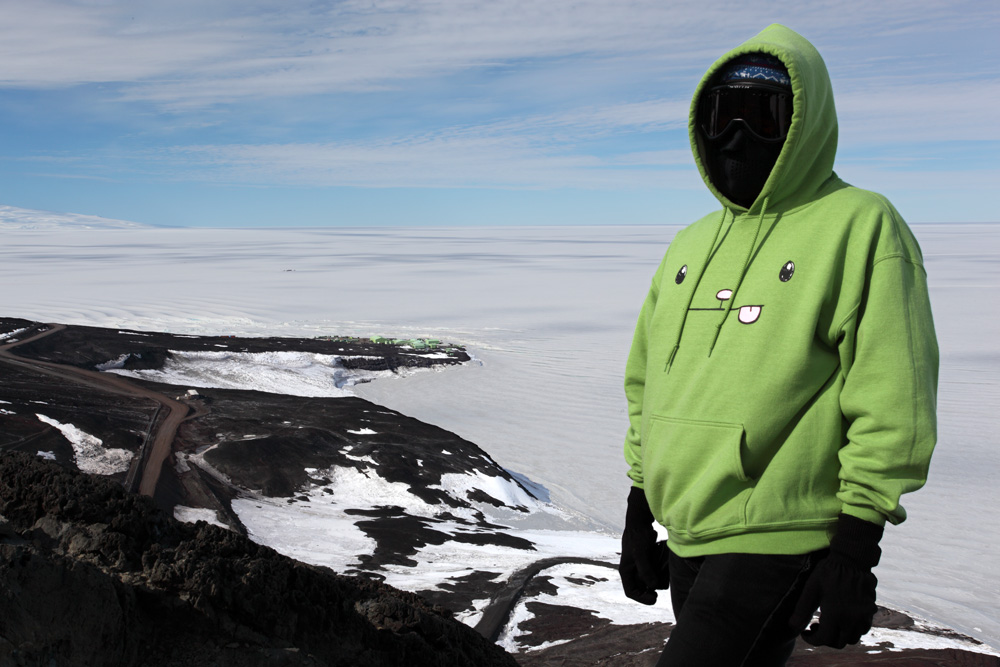
We hung around the top for about 20 minutes or so:
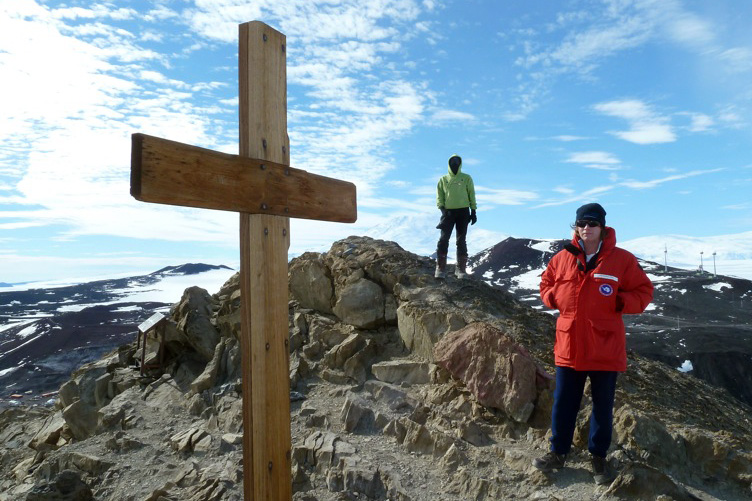
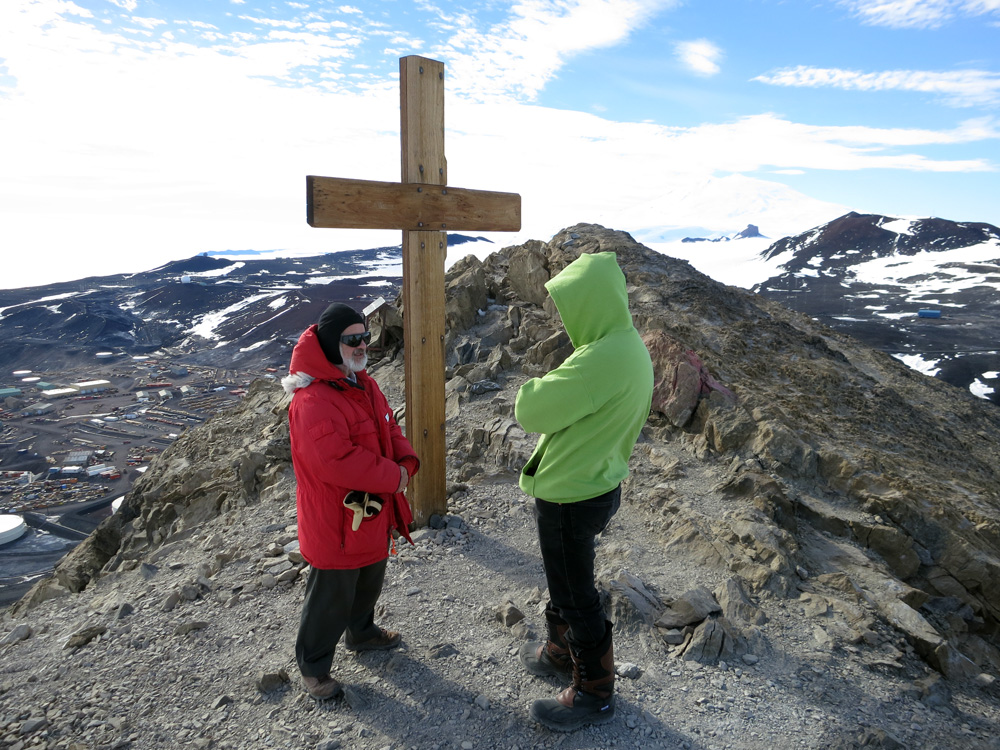
Later on this evening, Nick & I walked over to Scott Base, about a half hour walk from McMurdo. This is New Zealand's home in Antarctica, and is nicely colour coded, with every building being this nice greenish colour:
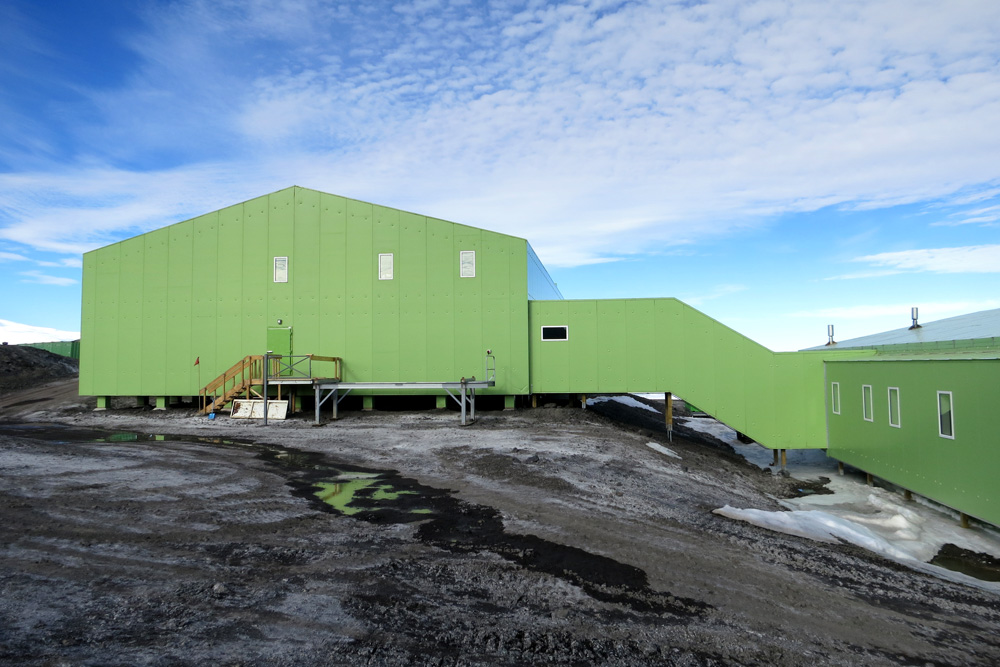
We enjoyed a couple of deliciously cheap (NZD$1.80) Summit Largers, then admired the landscape around Scott Base, which is much more picturesque than that around McMurdo. I need to return with my telephoto lens to take some photos of the seals.
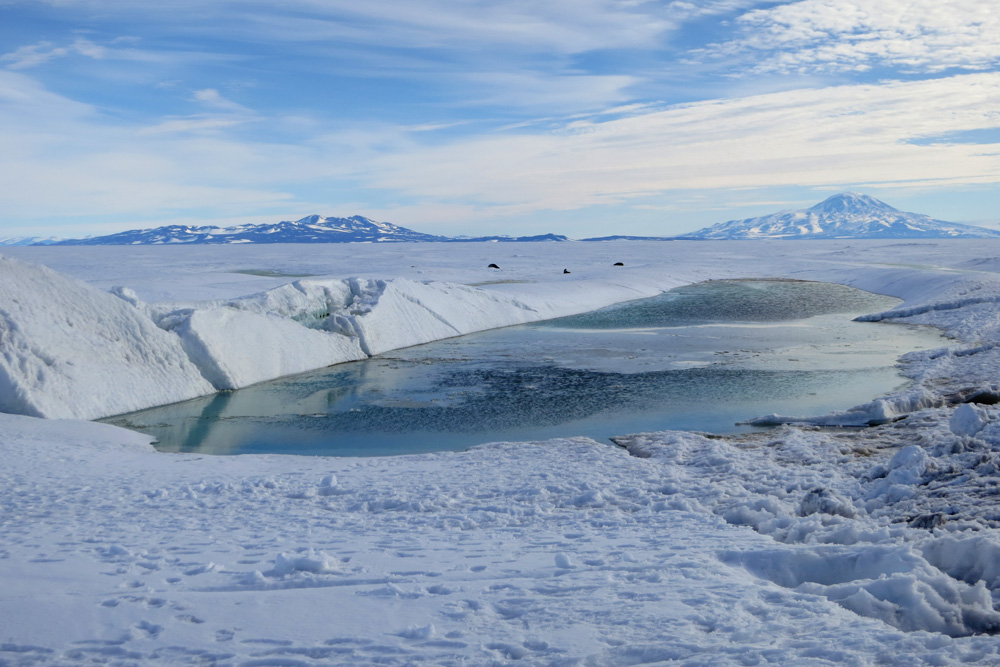
But perhaps the most impressive thing about Scott Base, was their choice of font for their main entrance sign. How good is Comic Sans!

-- Geoff
Thursday, 27th December, 2012
Reflections on McMurdo: Colours (Geoff)
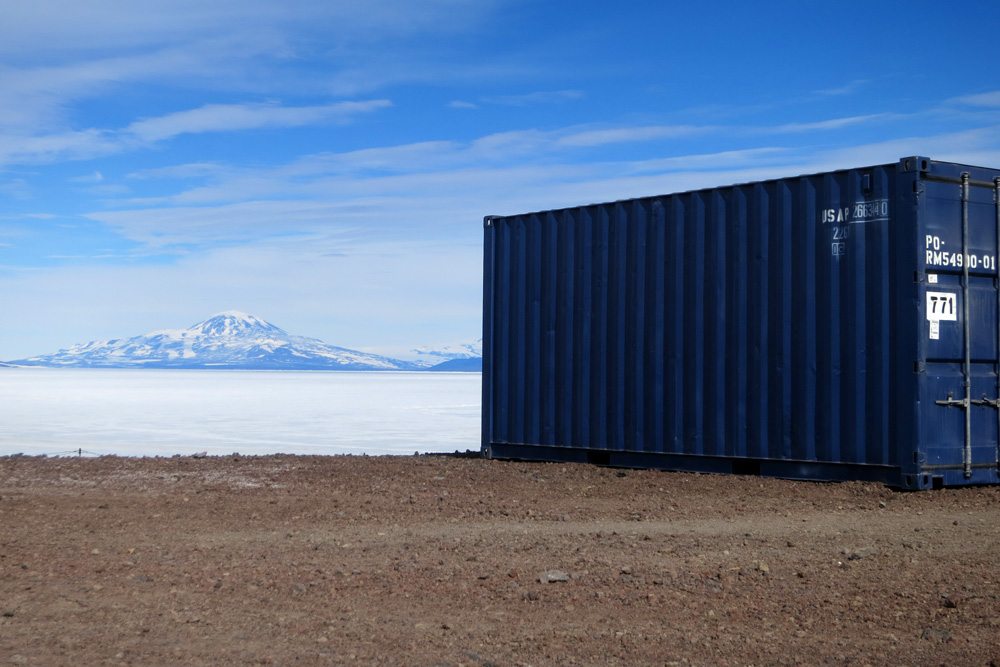
While I was walking around today, I started looking closely at all the quickiness and colours around McMurdo. It seems like a jumbled mess of buildings of all different sizes and shapes and colours, with seemingly no order. In fact, it reminded me a bit of India of all places - brown dirt ground, with such odd colour combinations you could never dream them up.
Here are a couple of photos from that walk, all taken with my point-and-shoot camera:
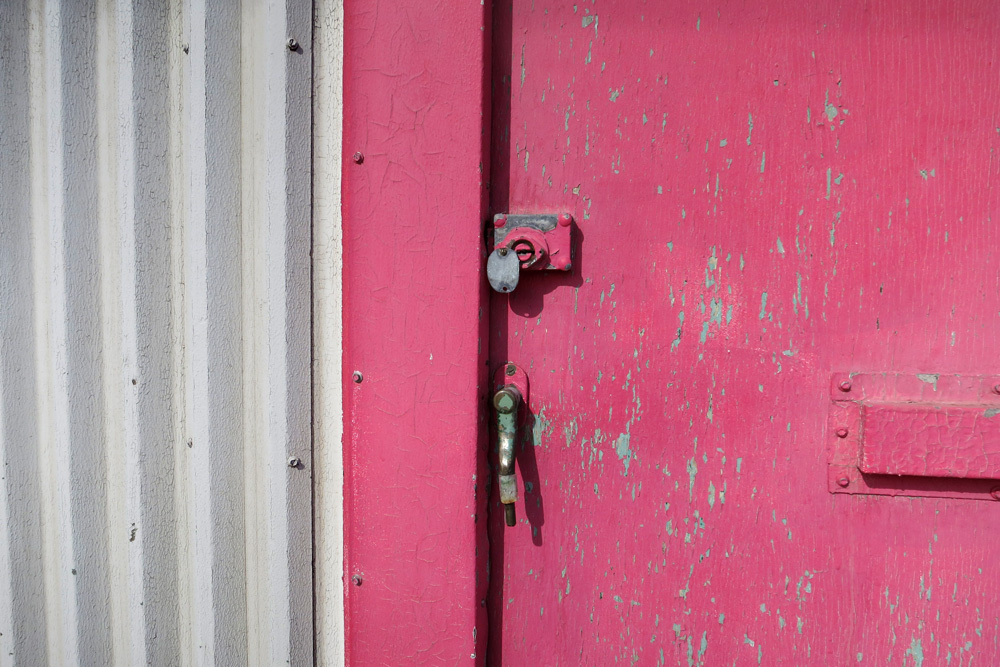
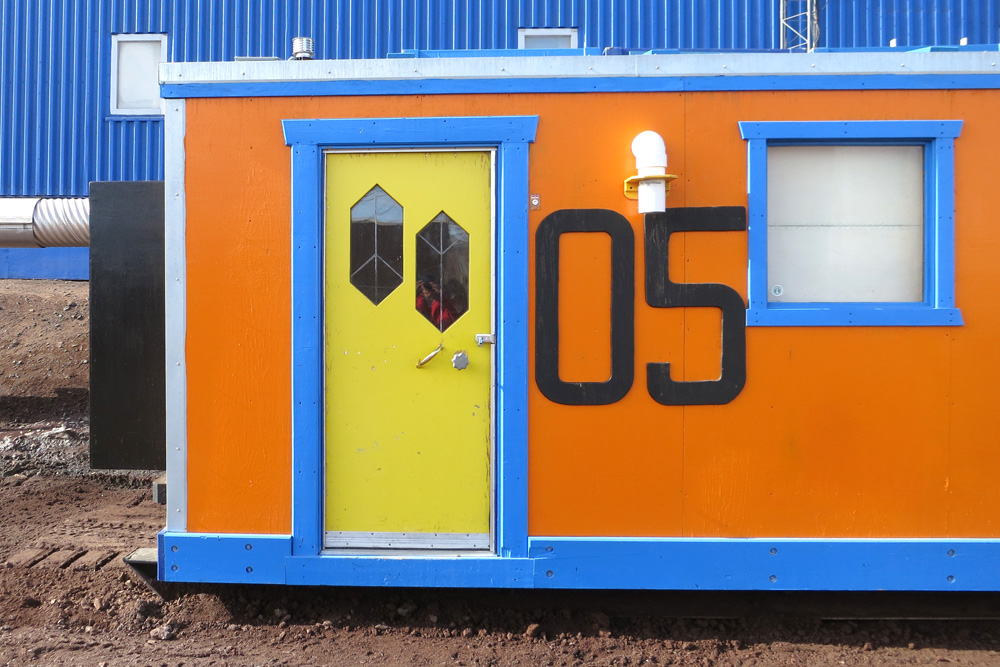
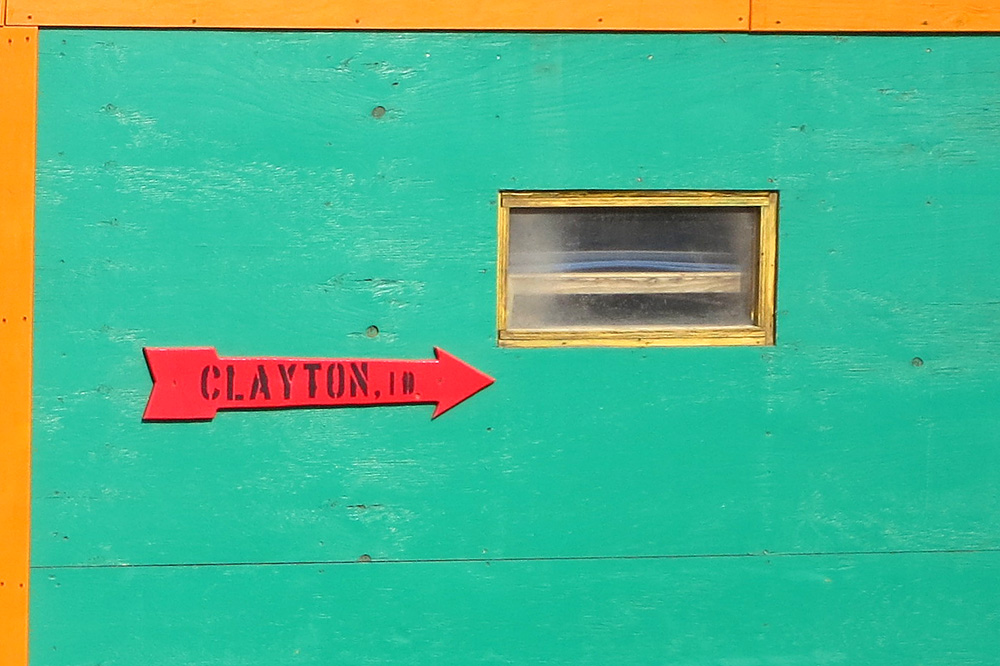
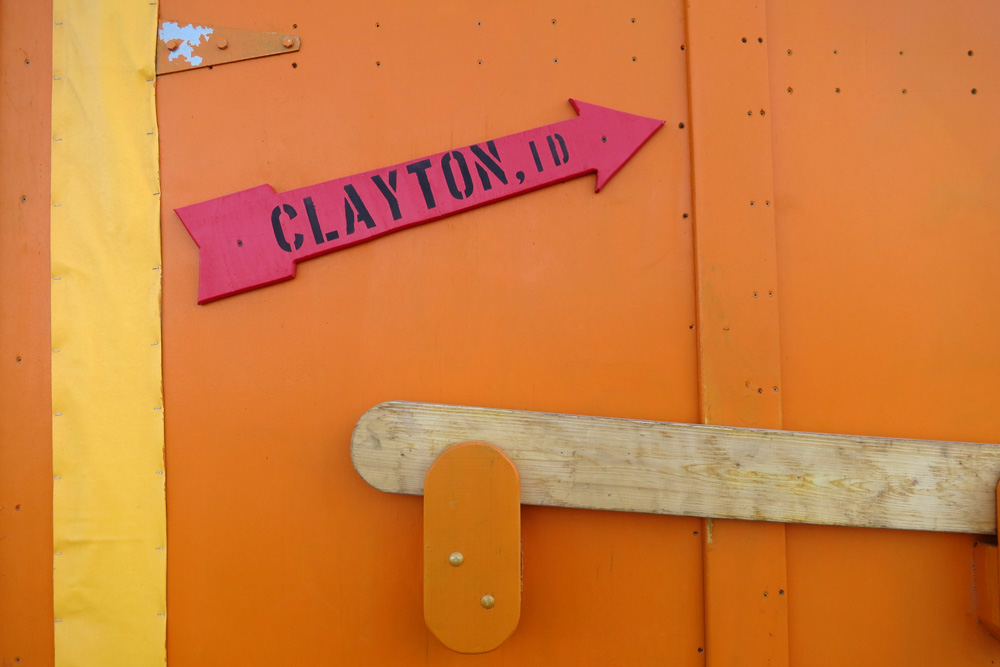

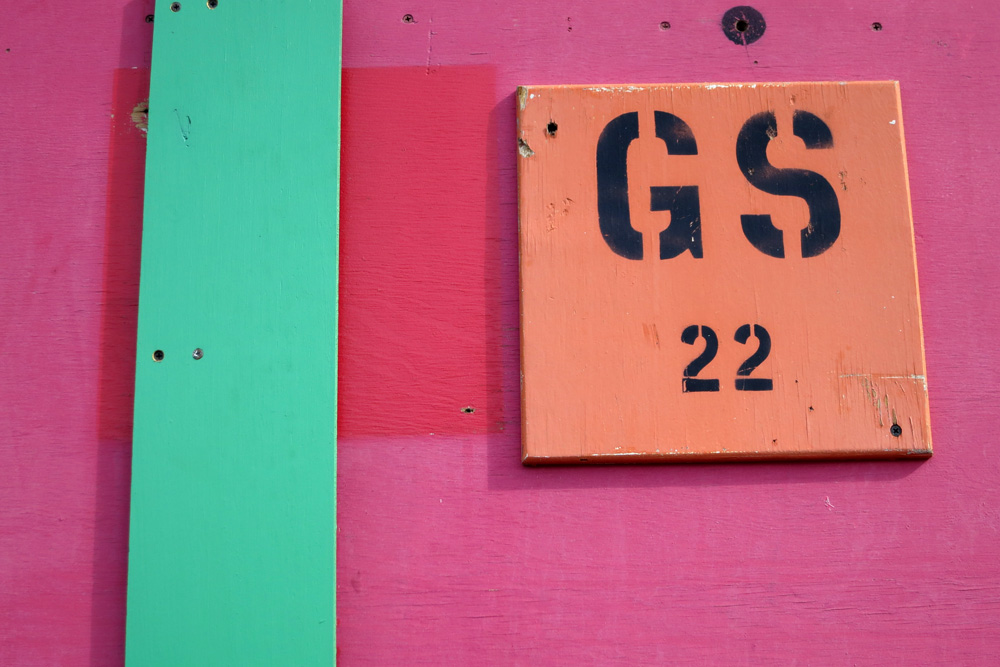
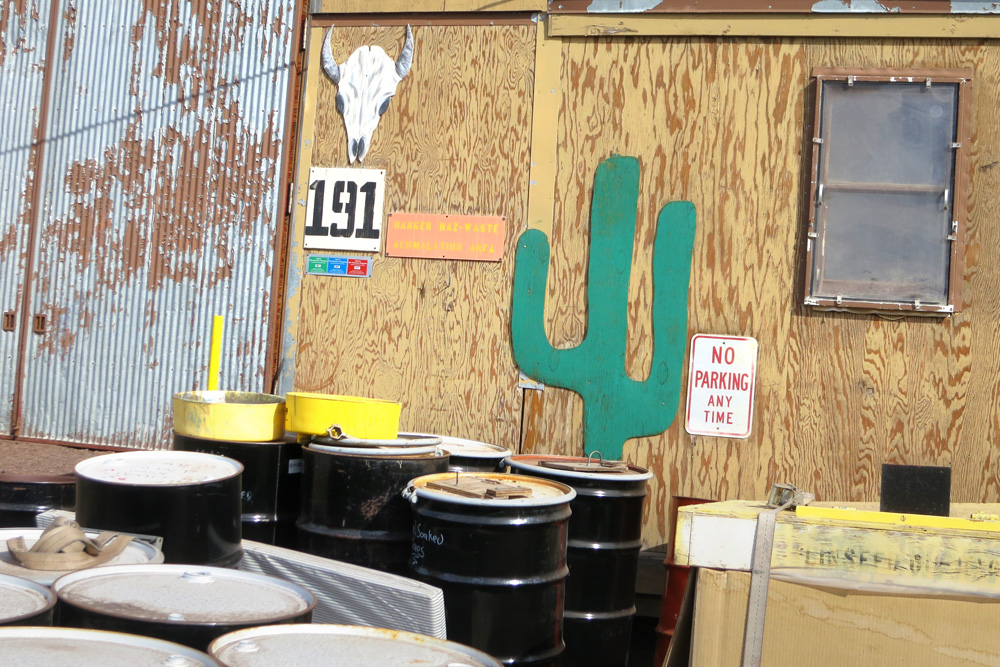


-- Geoff
Thursday, 27th December, 2012
Gear pull (John)
Today we sat through one more briefing (on environmental issues), then off to the Berg Field Centre to select our equipment for the field camp at Ridge A. We're allocated a "cage" in which to stack all our things, which range from our personal camping gear (sleeping bags, tents etc.) to survival equipment. The "gear pull", as it is called, is a lot of fun. All of the things are very high quality and well-maintained, so it's like being able to walk into a camping store and just choosing the best of everything.
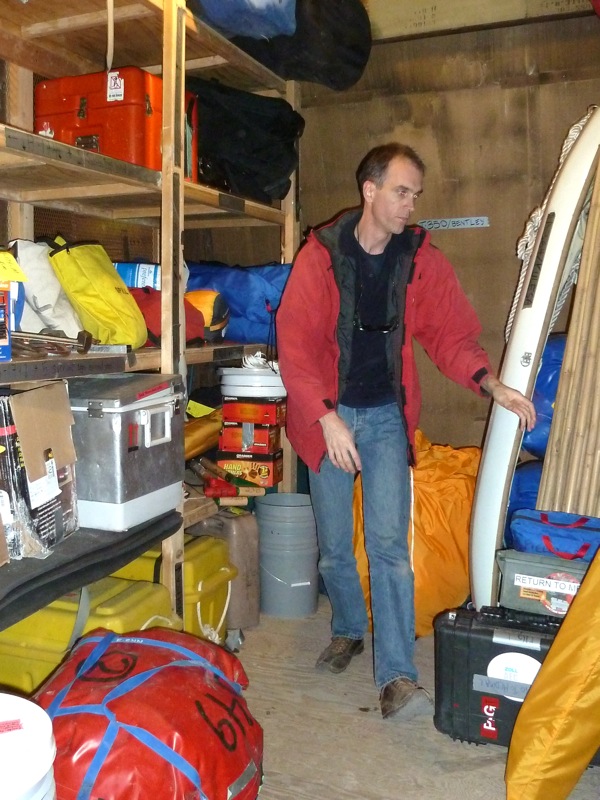
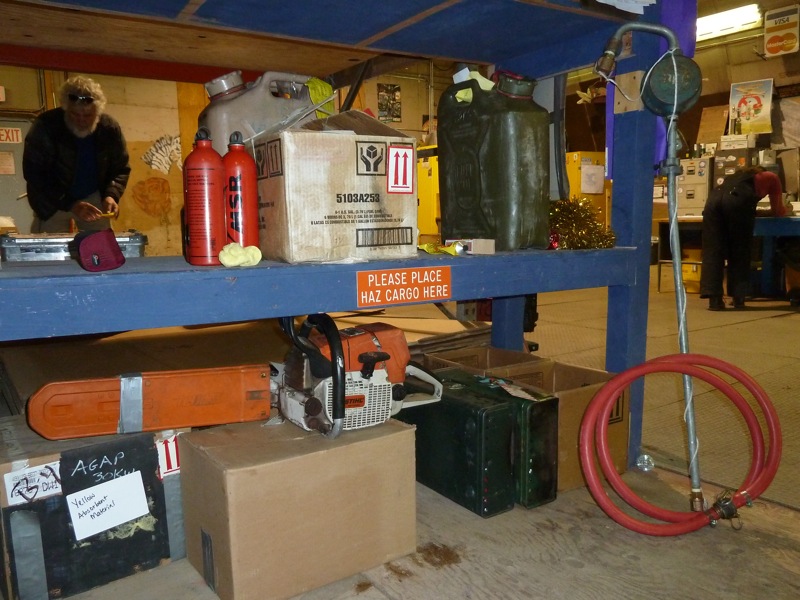
From here, everything will be loaded into a ski-equipped LC130 Hercules, and flown to the South Pole - possibly as early as Sunday. We'll repack everything there, along with our own equipment, for the Twin Otter flights to Ridge A.

This evening Geoff and Nic have polished up their best American accents and headed off to Scott Base, the nearby NZ station. Each Thursday is "American night", when folk from the very much larger McMurdo station can visit their NZ colleagues - partly for the camaraderie and partly because the beer is considerably better. The remainder of our team, who are older and wiser (read "more boring") are, however, pottering about in the Crary Lab, mindful that an early and sober start tomorrow for "Happy Camper" school awaits us.
Friday, 28th December, 2012
Mount Erebus (Geoff)
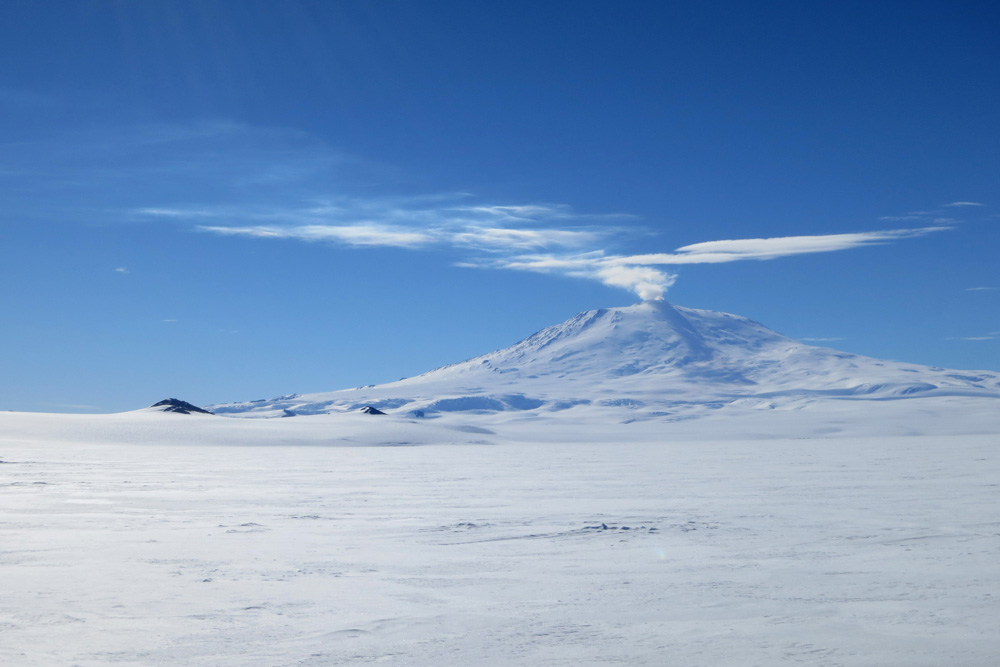
During our Happy Camper school, we had the most spectacular views of Mount Erebus. Erebus is an active volcano approximately 35 km from McMurdo. It is the most active volcano in Antarctica and also the second highest (at an elevation of 3700 m).
The views were so stunning, that I set up my SLR to time lapse the eruptions. I ended up taking around 850 photos at an interval of 30 seconds. When played back at 24 fps, the video runs for around 35 seconds. View at full screen for maximum enjoyment!
-- Geoff
Saturday, 29th December, 2012
Happy Camper and EBEX balloon (Geoff)
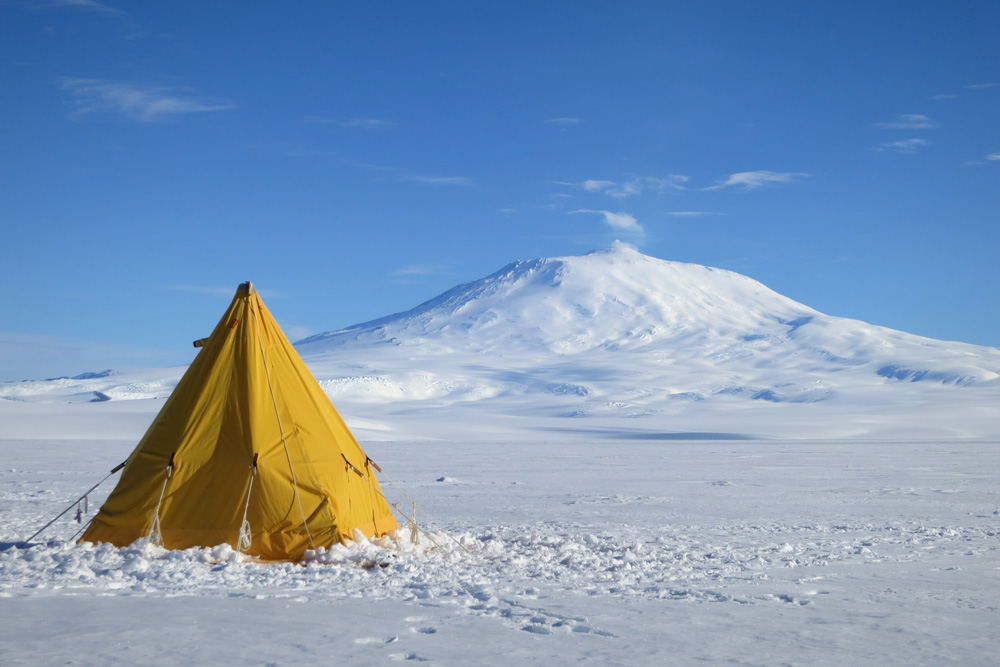
Today we returned from a 2-day "Happy Camper" course. This practical course teaches a number of things: risk awareness, how to sleep warm, various radio training, and most importantly, survival techniques (camping, tents, building snow trenches, etc.). We were fortunate enough to have unusually warm weather: +5 degrees C during the "day", and +1 C during the "night". In our spare time, we made an igloo. Well, we almost did anyway! I made a separate igloo blog post to document this feat.

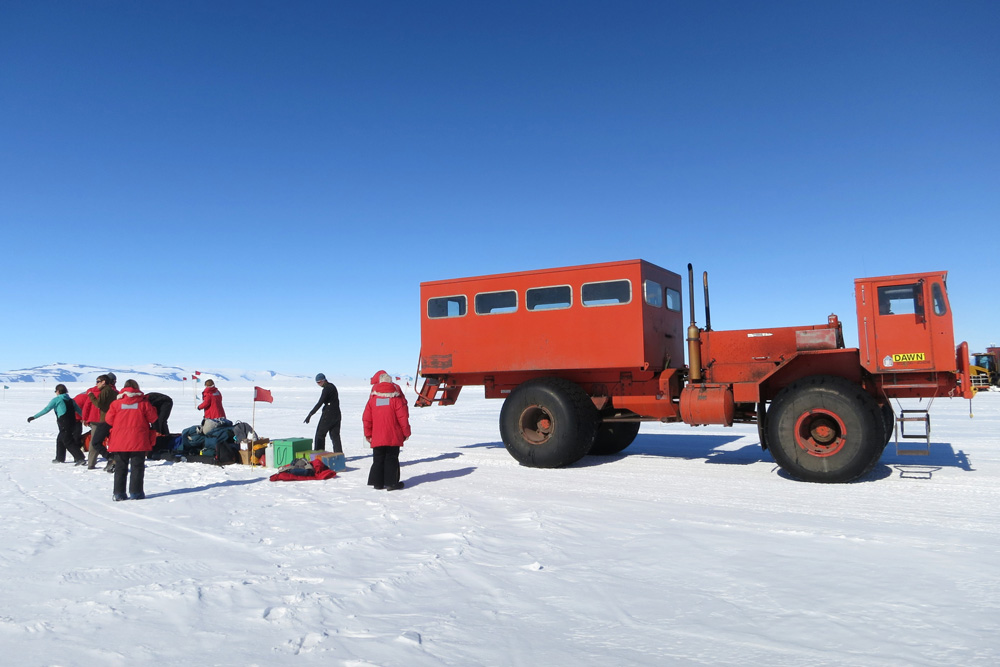



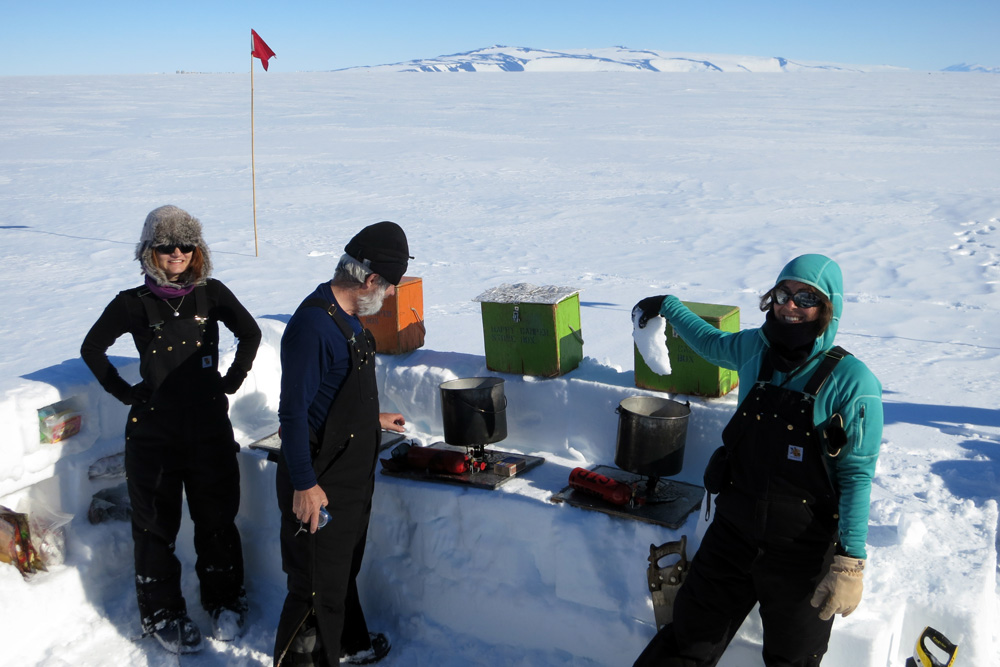
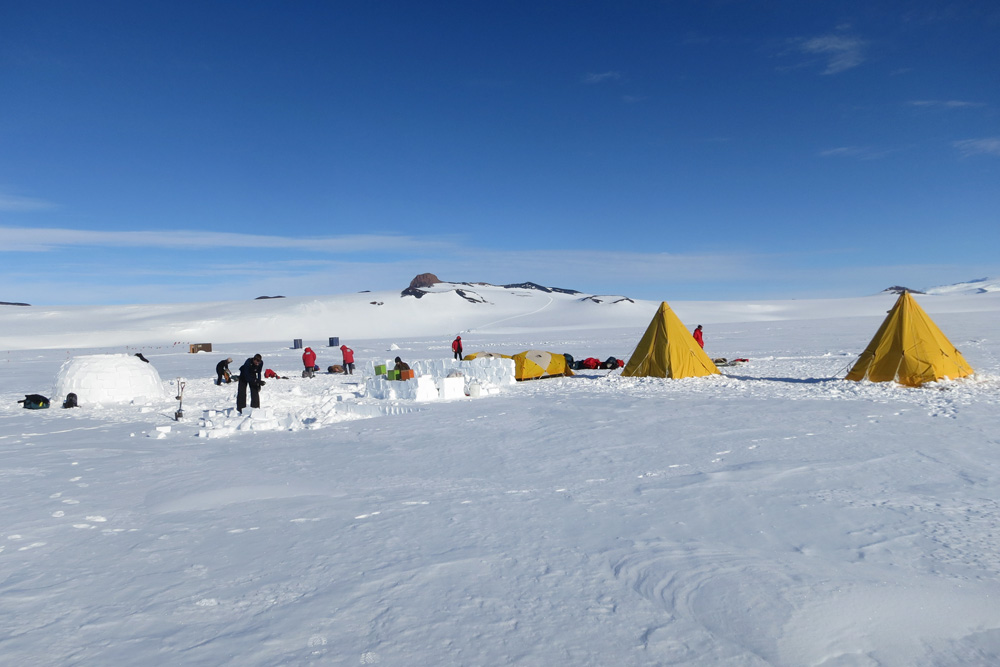
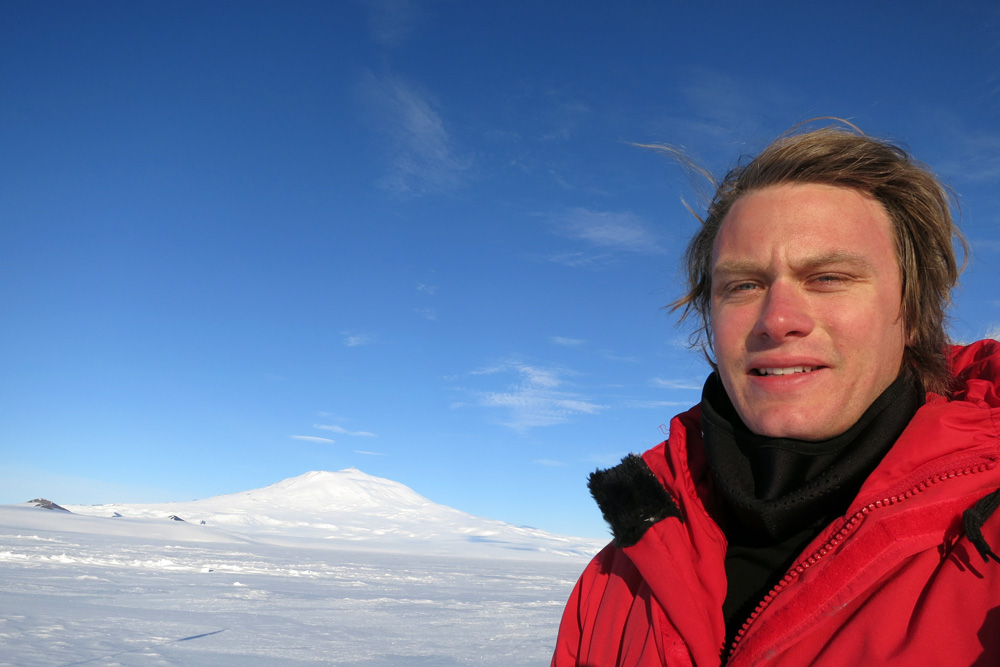
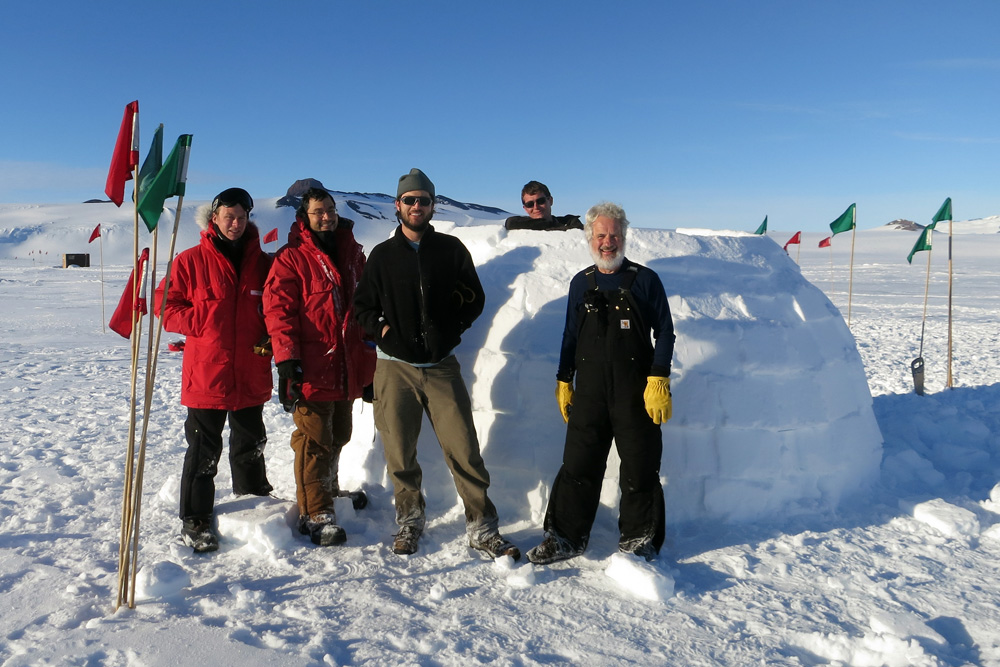
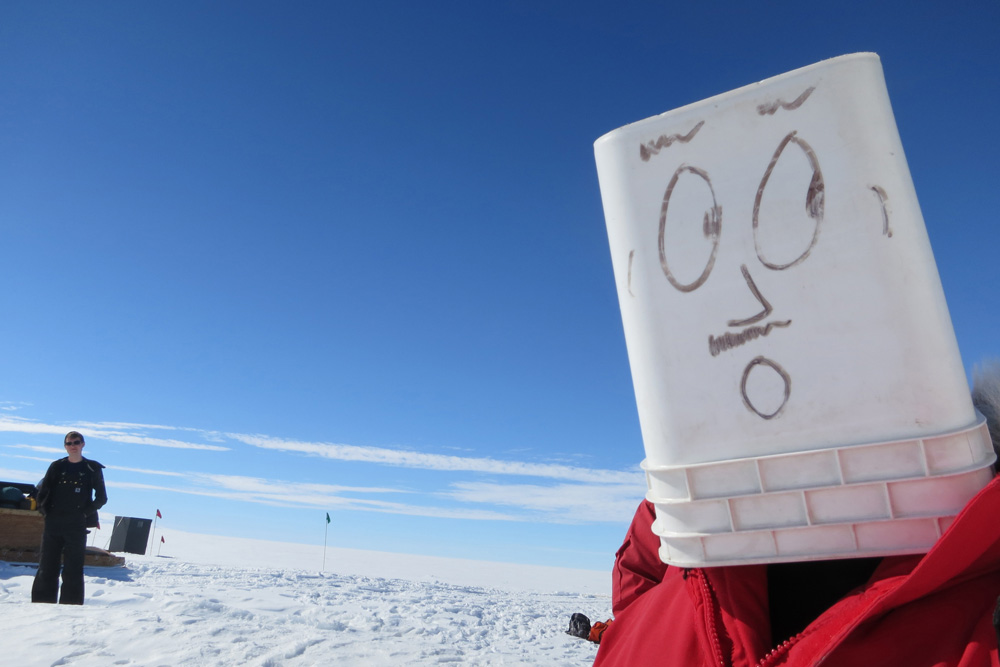
And here's a timelapse of a few of our activities:
Just as we were about to head back to McMurdo, a long duration balloon (LDB) was launched. These are huge helium balloons, which, when fully inflated, expand to around the size of a football field. They are launched from McMurdo, and then spend a week or two travelling around the polar vortex. The geometry of nature is incredible (see for example a sample track path from a balloon launched last year). This particular launch was the EBEX experiment, measuring the intensity and polarization of the cosmic microwave background.
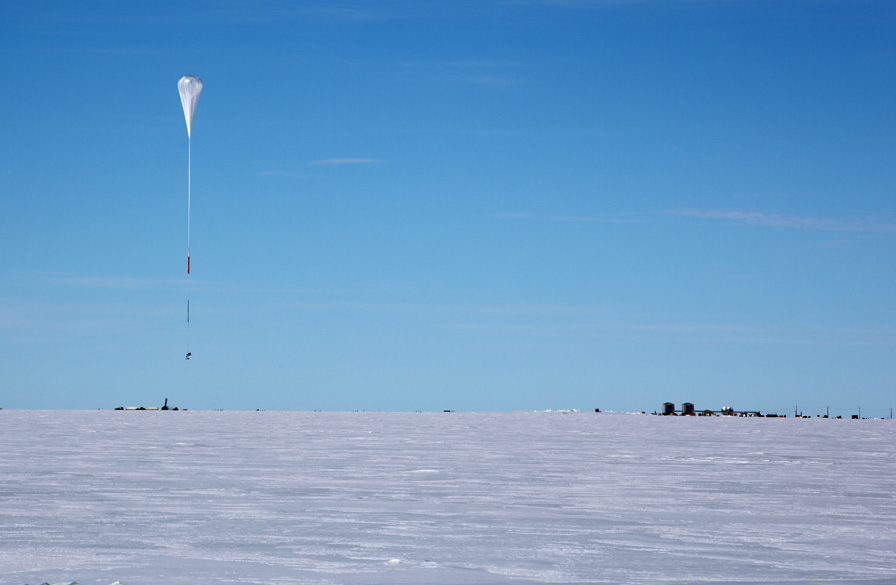
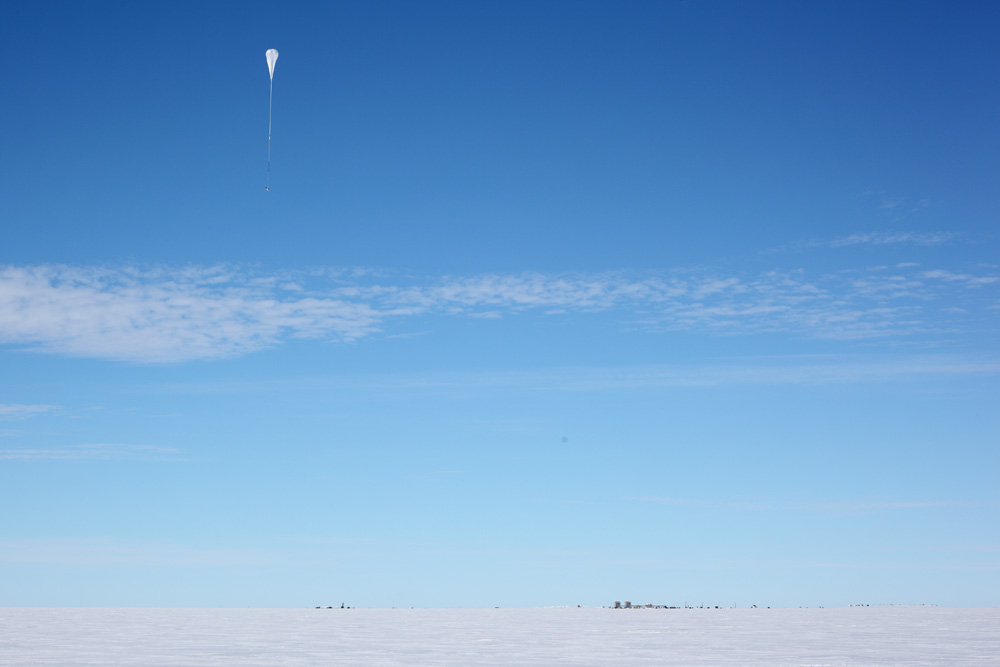
Upon our return to civilisation, we hit the local watering holes for some Sierra Nevada Pale Ales and foosball.
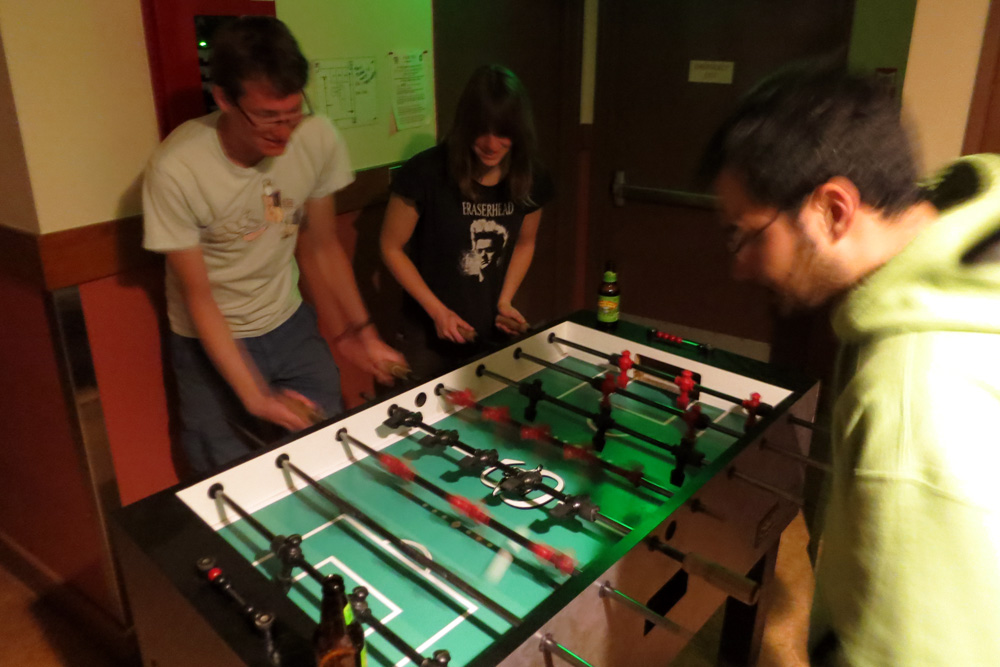
-- Geoff
Saturday, 29th December, 2012
Igloo (Geoff)
In our spare time at Happy Camper school, a number of us decided to build an igloo. Unfortunately we didn't get it completed, but it was a hell of a lot of fun making it, and I was amazed that it actually worked as well as it did. Nic & I slept in the igloo overnight, and I had one of the best nights sleep I have had since leaving Sydney almost 2 weeks ago!
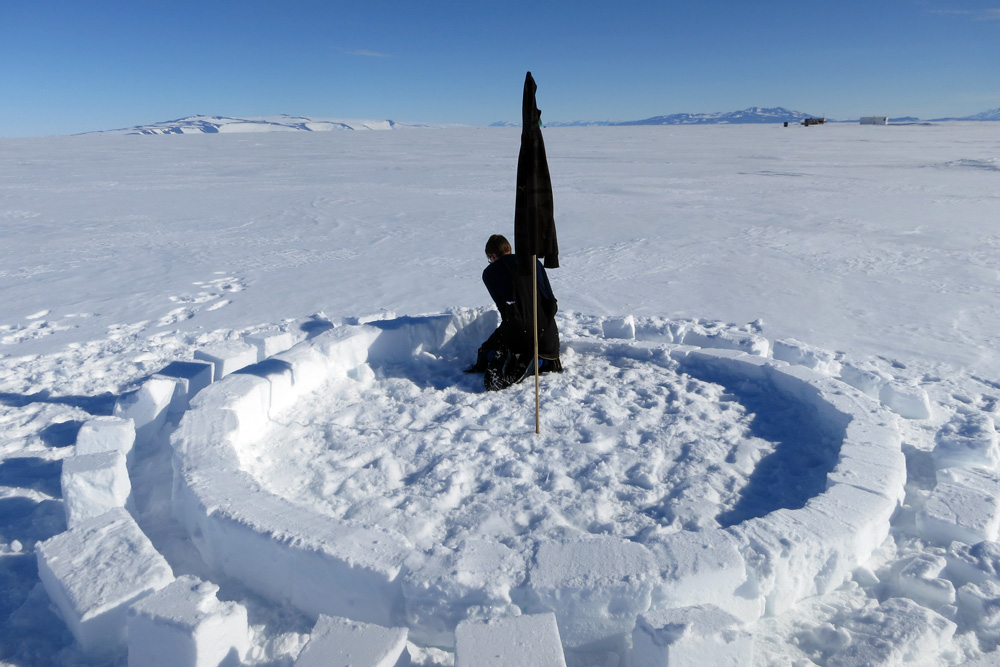
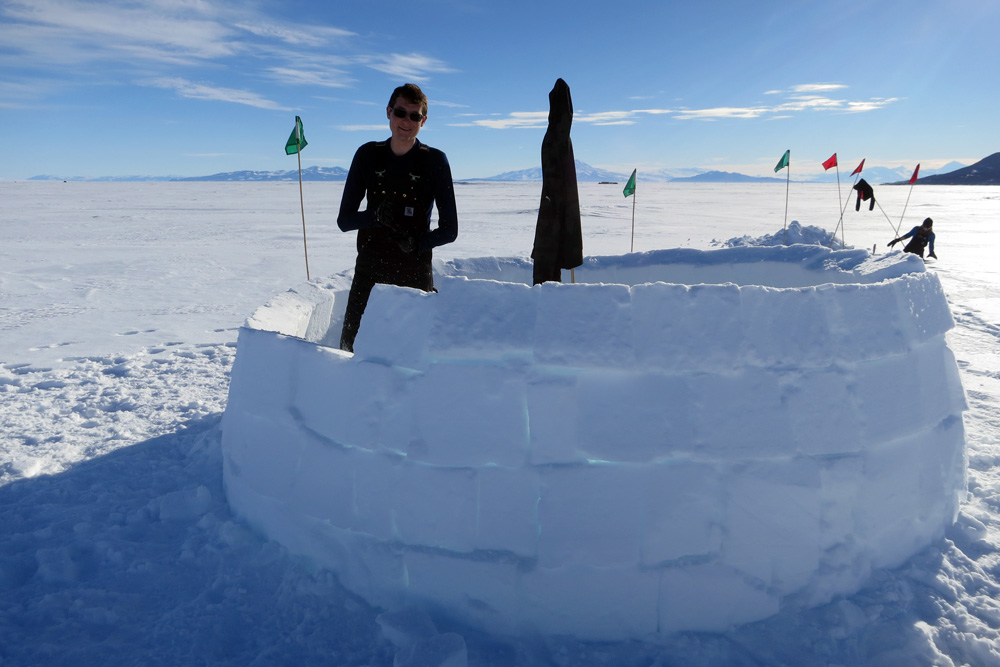
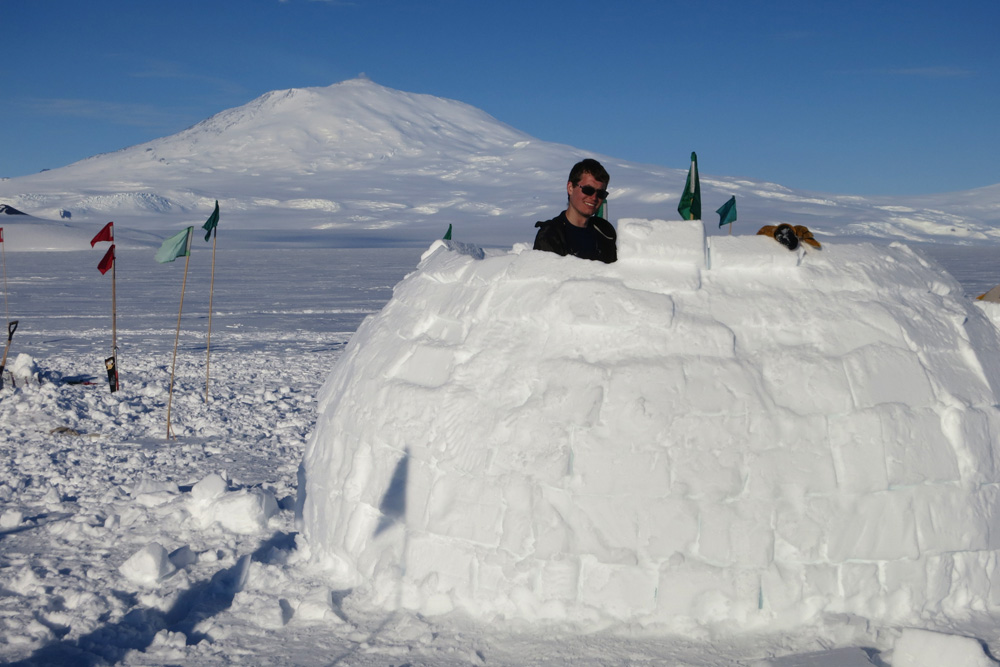
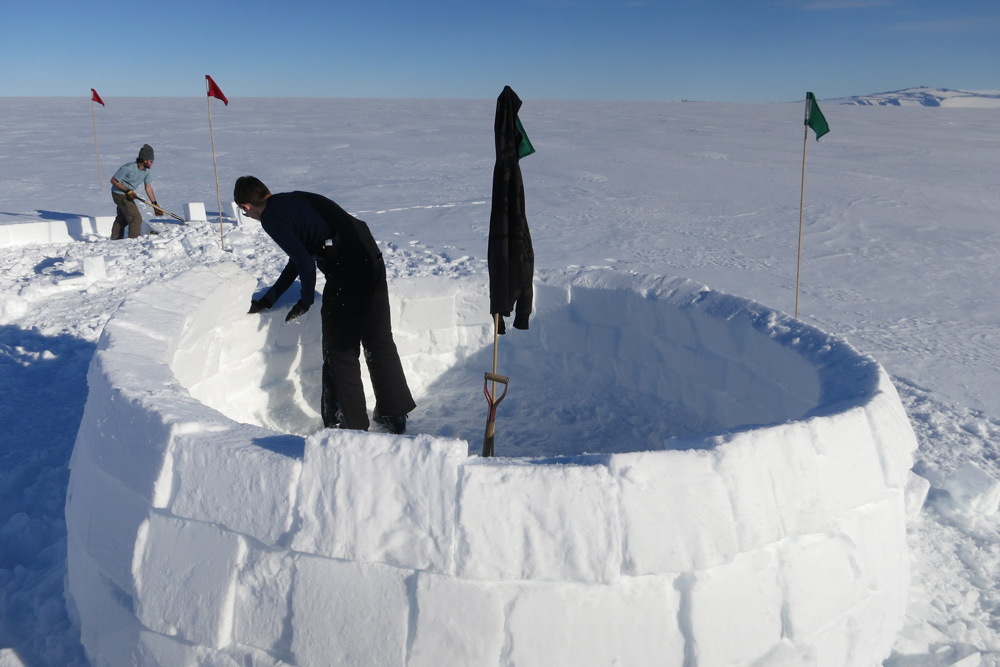
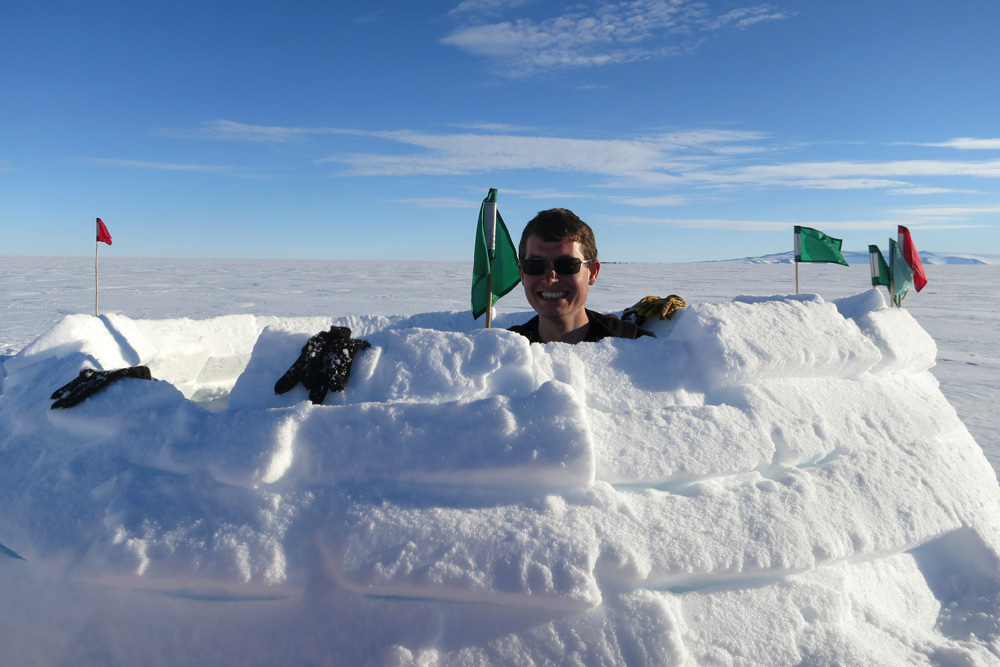
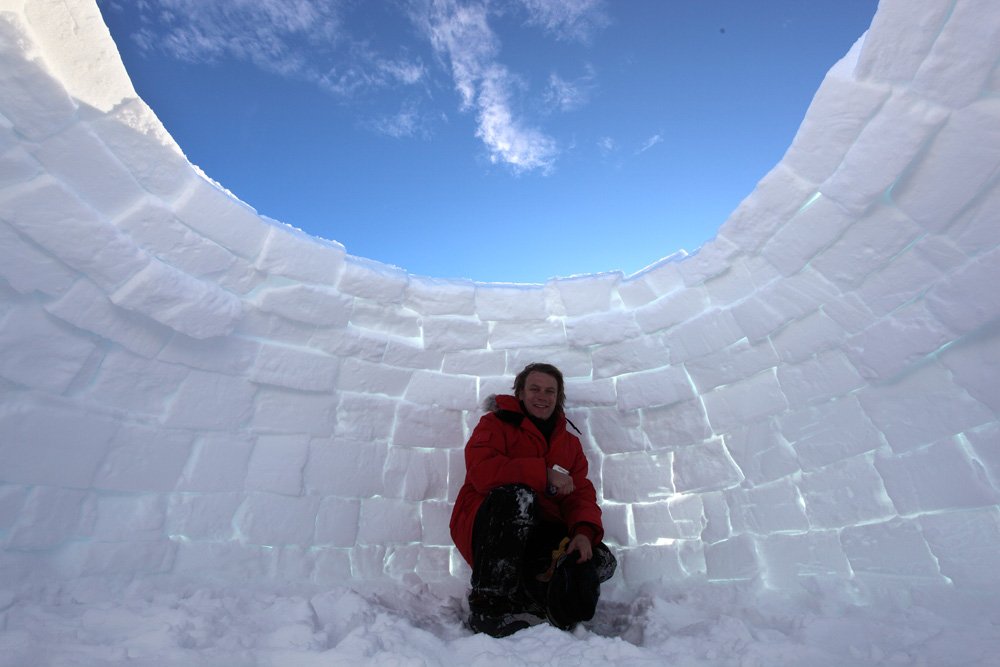
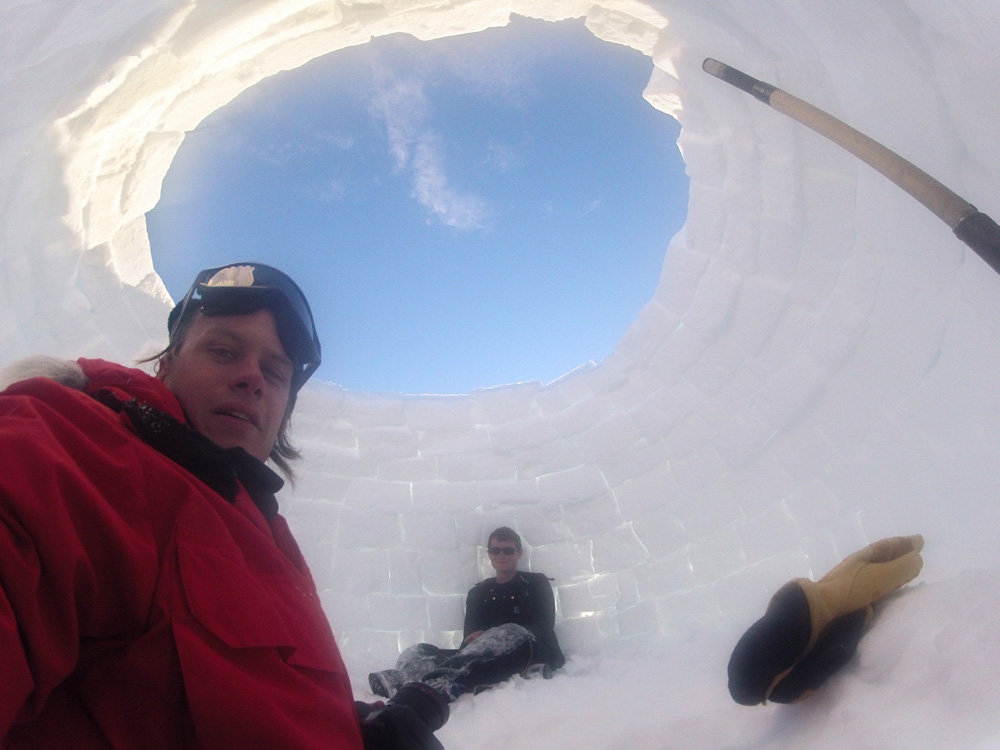
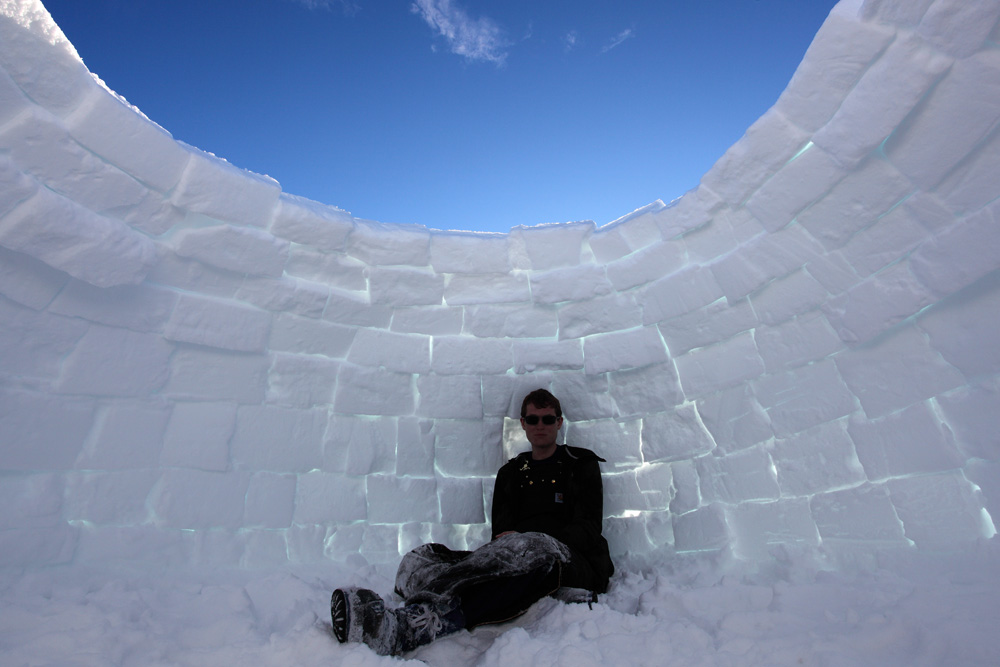
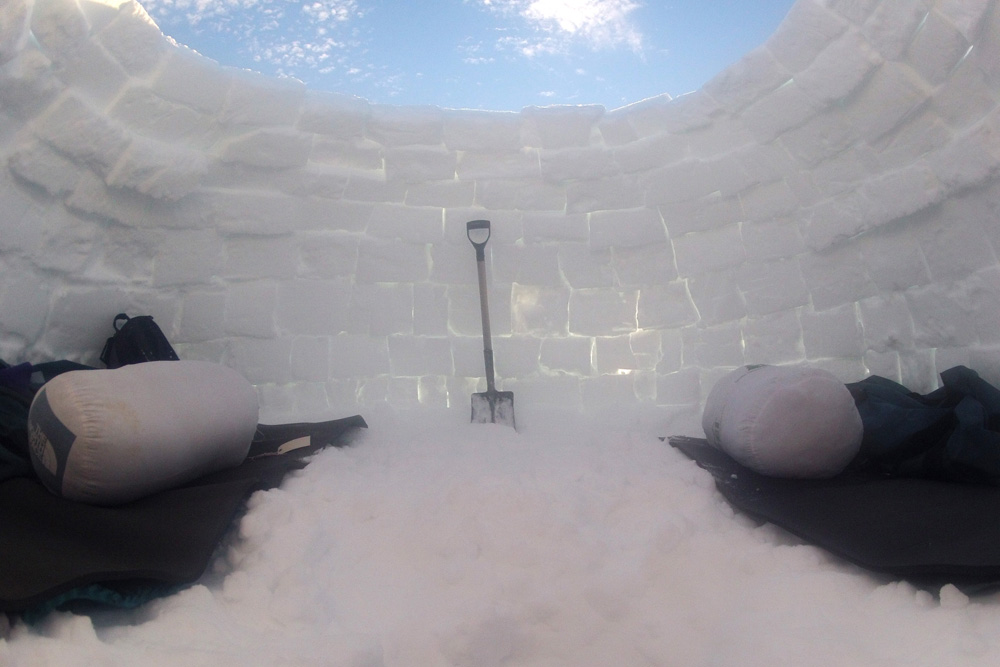
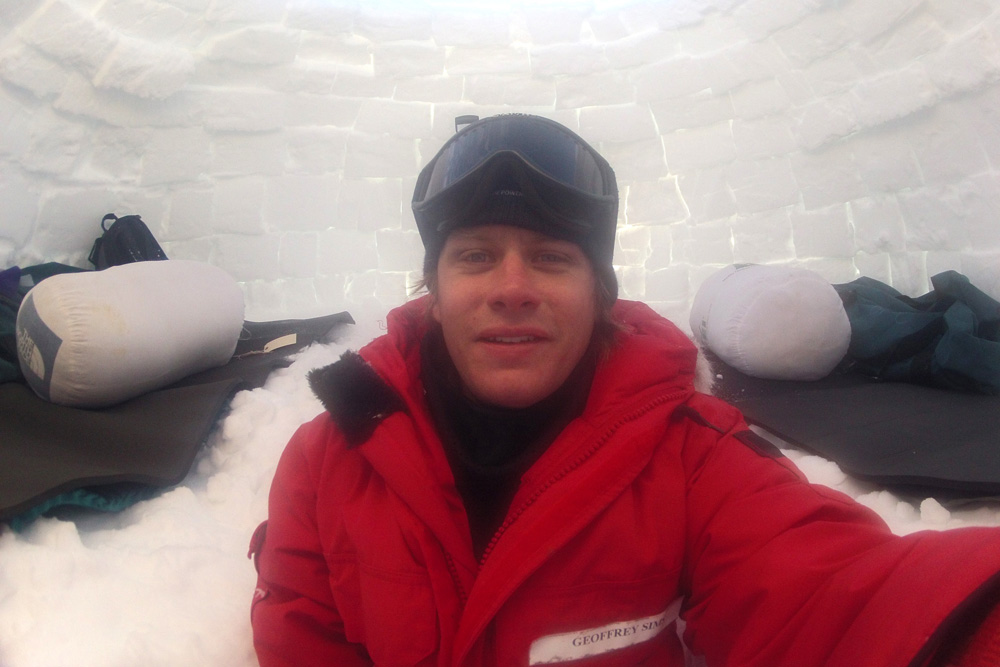
-- Geoff
Saturday, 29th December, 2012
Happiest Campers ever! (John)
"Happy Camper" snow school has a reputation for being a lot of fun, but ours was simply awesome. We're all kind of exhausted, so this will be just a sort of photo-essay.
On Friday morning we sat in a room while our instructor, Jen, took us through the basics of risk management, hypothermia, and scared the daylights out of everyone with horrific photos of frostbite injuries. Fortunately it was +5 C outside, with zero wind...
Suitably charged up, we all climbed aboard the Delta and were driven out of McMurdo, past Scott Base and onto the ice shelf.
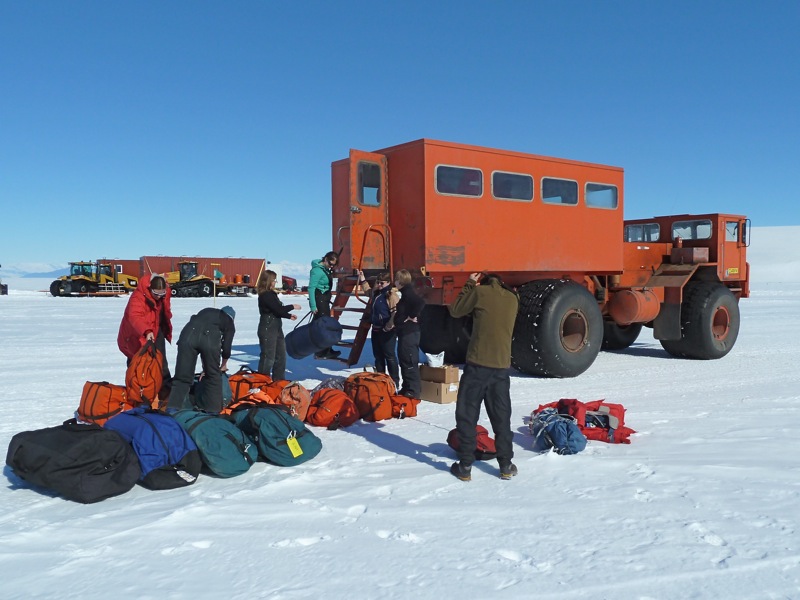
The Delta is an unfortunate-looking truck that appears to have been designed by a committee, none of whom had ever actually seen a truck before. Instead of the front wheels steering, giant hydraulic rams cause the whole vehicle to articulate in the middle. Comfort of the passengers, confined in a tin box stuck on the back like an afterthought, is a very secondary consideration, to the point that their only communication with the driver is via walkie-talkie.
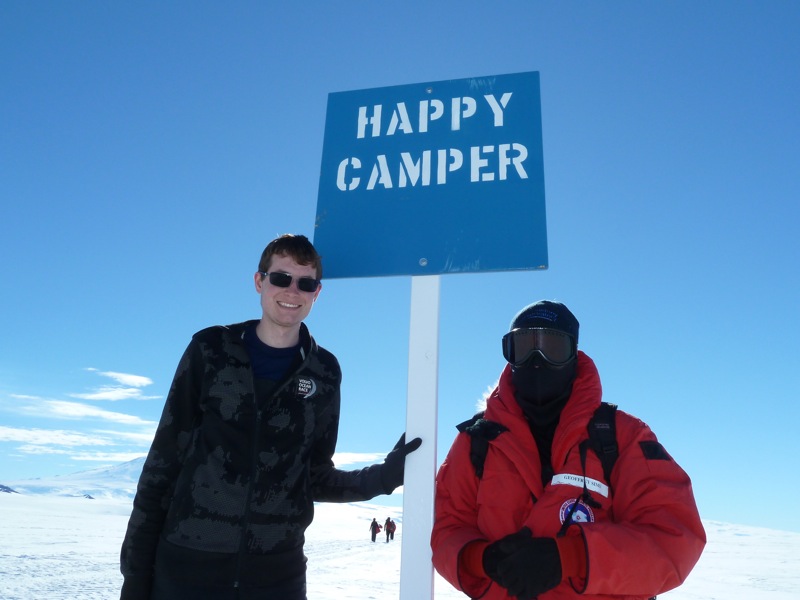
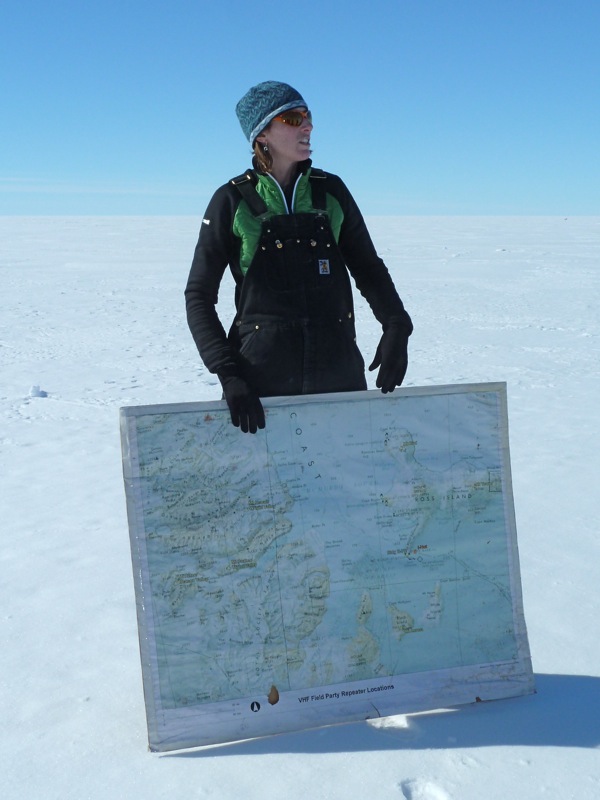
After some more instruction in the instructor hut, or iHut, we ate lunch and walked a kilometer or so to a clean and empty expanse of snow. Jen taught us how to put up the tents, build snow trenches to sleep in, and how to build snow walls. So, up went four tents, a snow wall, and an amazing kitchen. Cutting blocks of snow for use in construction is a fine art, and our quarry was a masterpiece.
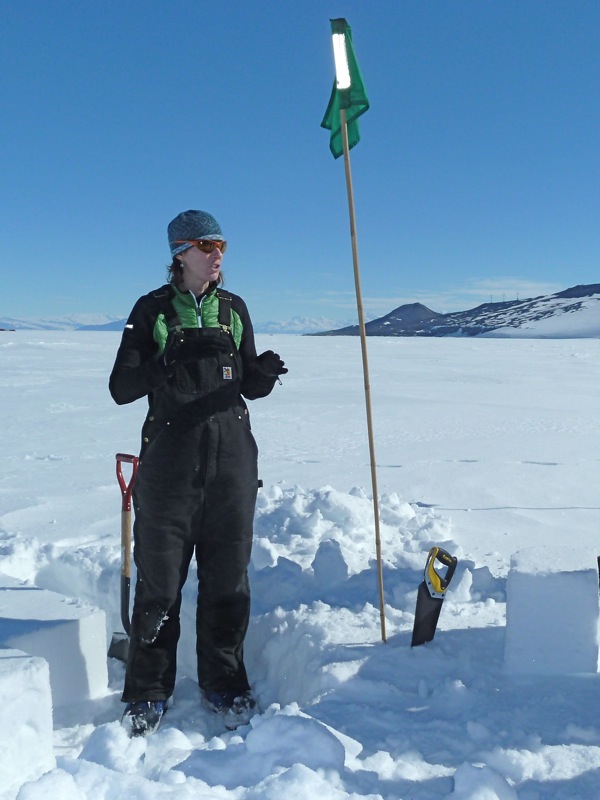
Once satisfied that we were OK, Jen left us and retreated to a safe distance in the iHut.
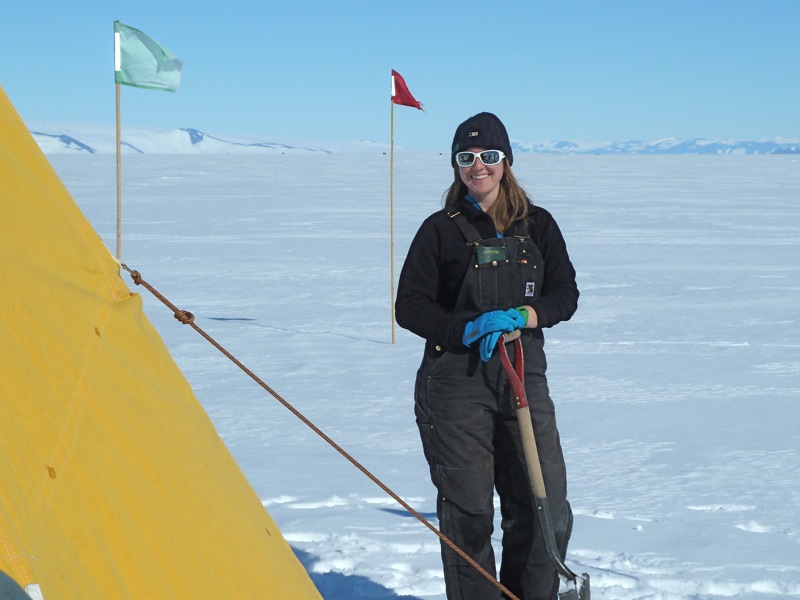
Our next task was to cook dinner. We boiled up some snow, then made it more nutritious and marginally more palatable by adding some packets of dehydrated stuff to it.

The next task was to cook dinner. We boiled up some snow, then made it more nutritious (and marginally more palatable) by adding some packets of dehydrated stuff to it.
Things got a bit crazy then, as no-one had the slightest intention of sleeping in a ...gasp... tent.
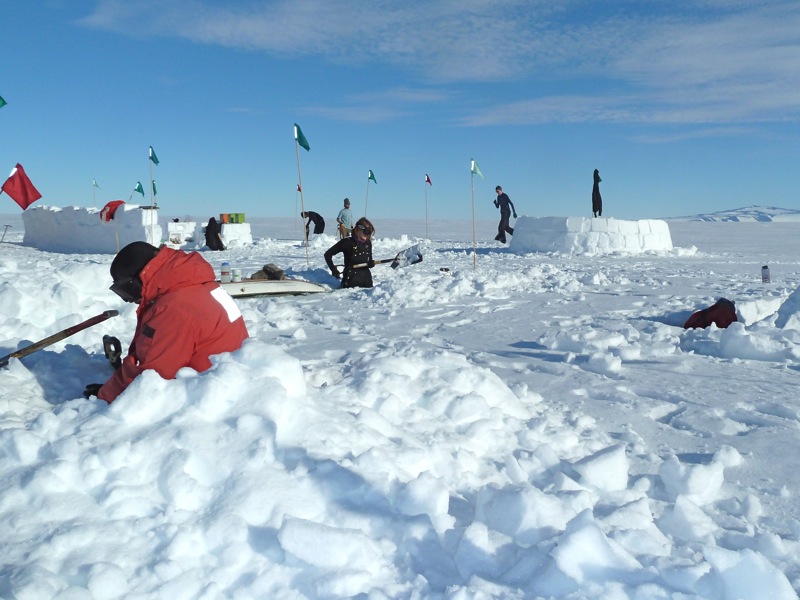
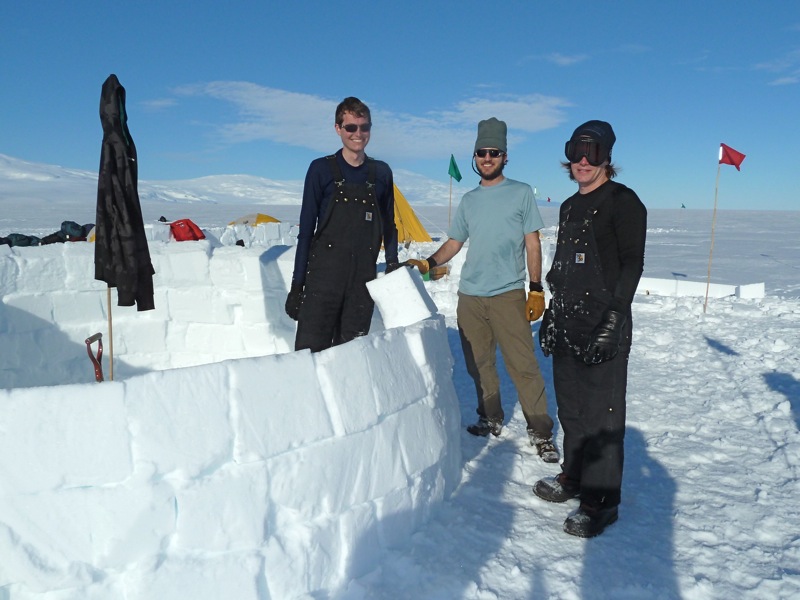
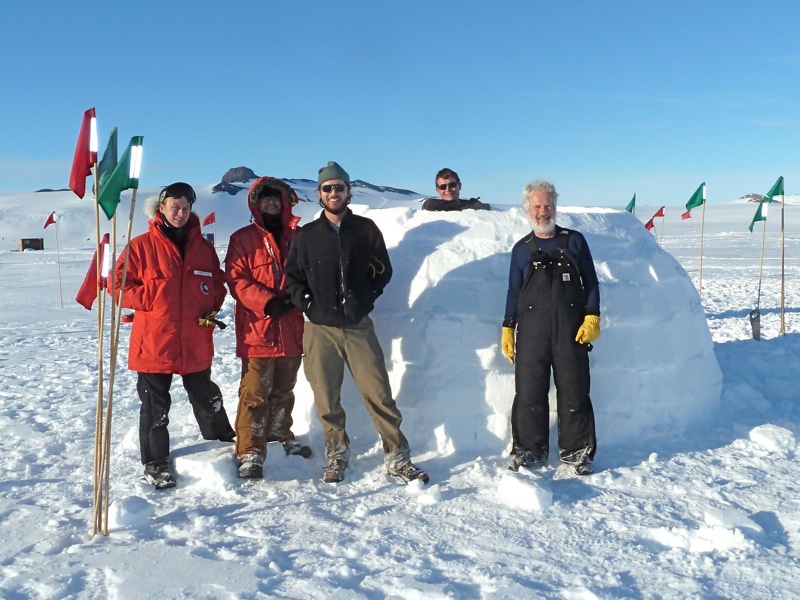
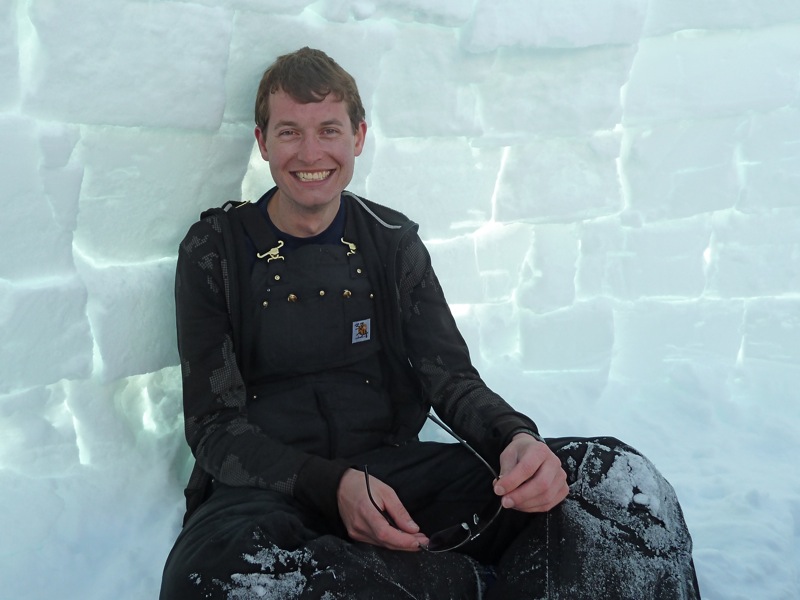
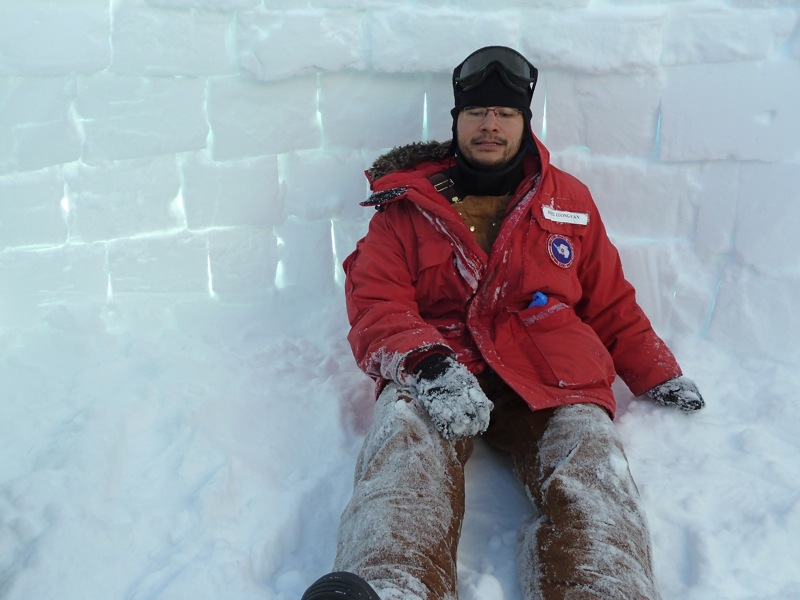

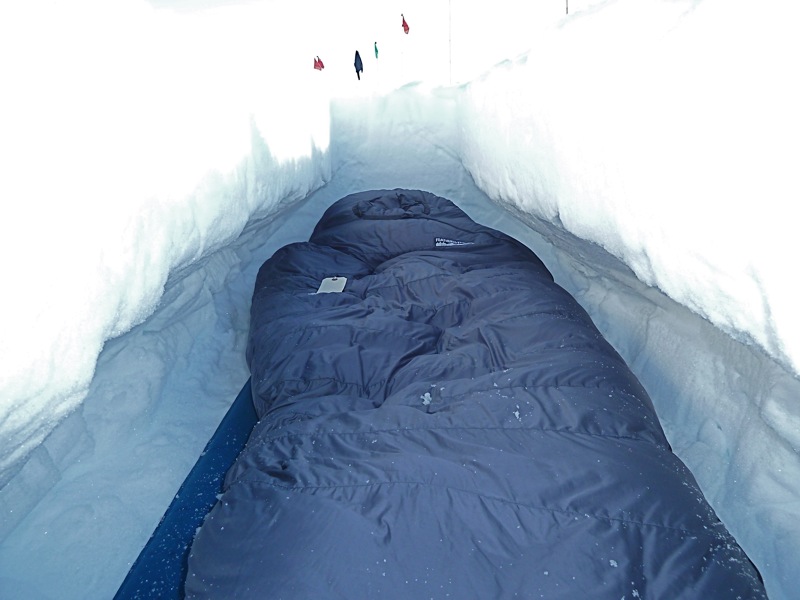
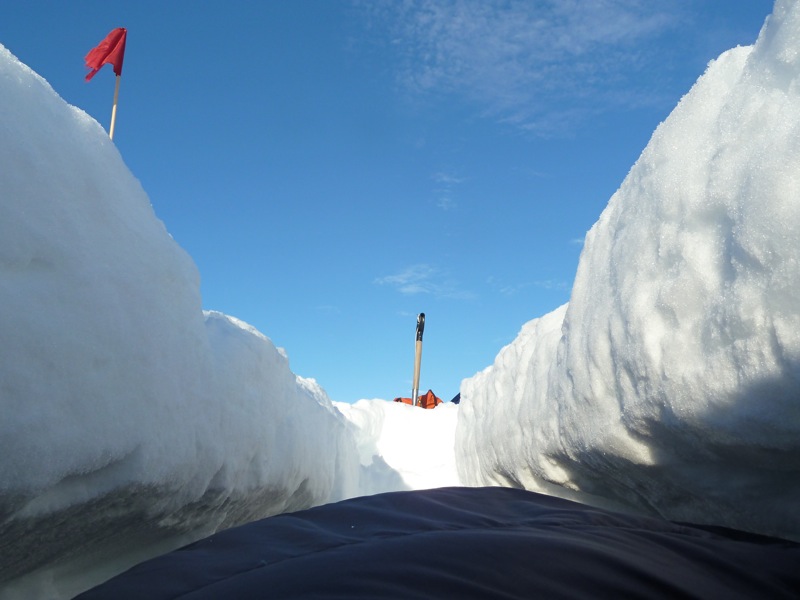
Next day we took the camp down and headed back to the iHut, where we learned about radios. Outside again, we strung up an HF dipole and talked directly to South Pole some 1600 km away. The radios are ancient but effective: with only 20 watts we were able to make good contact. We're definitely taking this radio to Ridge A!
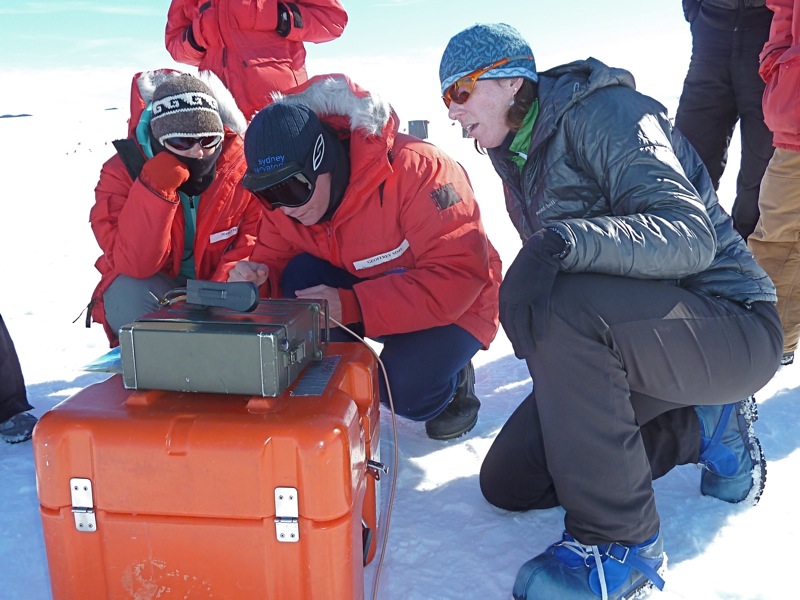
The final exercise was of the course the best. In total whiteout conditions, the gallant team rope themselves together and head out from the hut in search of a lost colleague. Wearing a bucket on your head creates a passable imitation of a whiteout, minus the risk of death. Needless to say we didn't do very well.
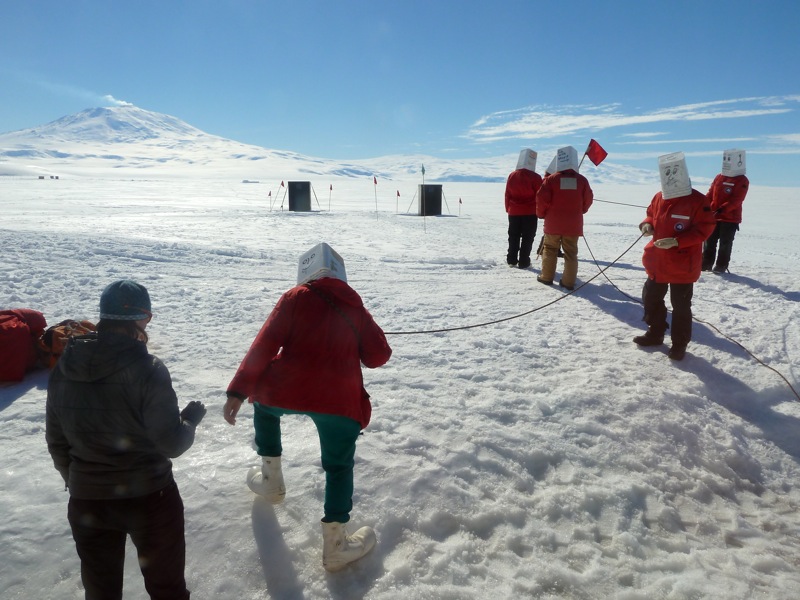
Tomorrow we're off bright and early to the South Pole!
Sunday, 30th December, 2012
Long day (Geoff)

Today was a super long and frustrating day. The short story is we were scheduled to fly to South Pole, but it got cancelled. Unusually, it wasn't a mechanical fault or bad weather that stopped this flight from going ahead; it was good weather. You see, the weather has been relatively warm here, and by warm I mean up to +5 C the past couple of days, which softens the usually hard snow.
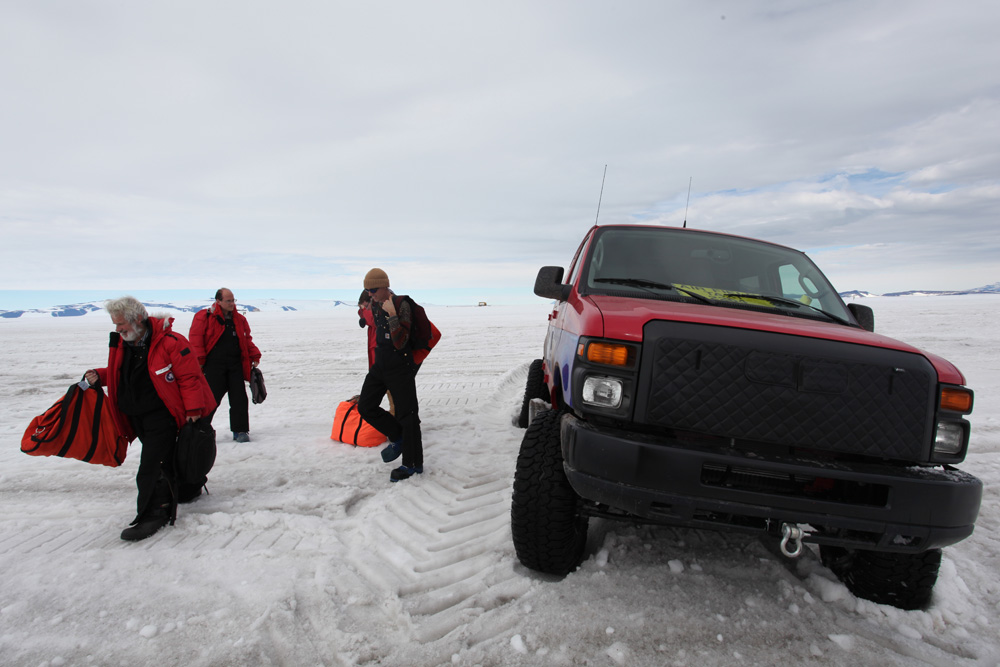
The soft and slushy snow (or "swamp", as they call it) means two things: it takes a lot longer to travel to/from the airfield (keep in mind passengers, crew, and cargo all need to be transported), and the planes may have difficulty taking off. These additional delays added up to too much down time, and pushed our crew and pilots over the limit for how long they can safely work in one day, ultimately resulting in us returning to McMurdo.
The interesting part is, the warm weather alone isn't enough to render the snow too slushy for the vehicles. A couple of weeks ago, there was a big storm on nearby Black Mountain, and strong winds at the time carried a lot of dirt material on to the ice shelf where the road and runway are situated. The dark dirt particles efficiently absorb sunlight, heating up the surrounding snow which aid in the melting process.

The next few photos just basically show how our day progressed.
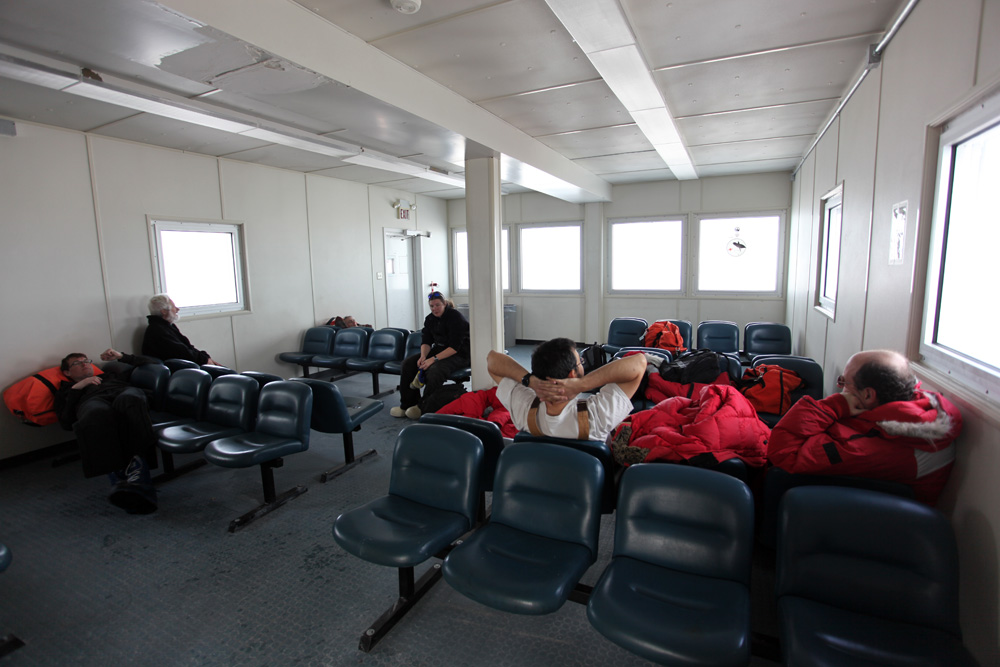
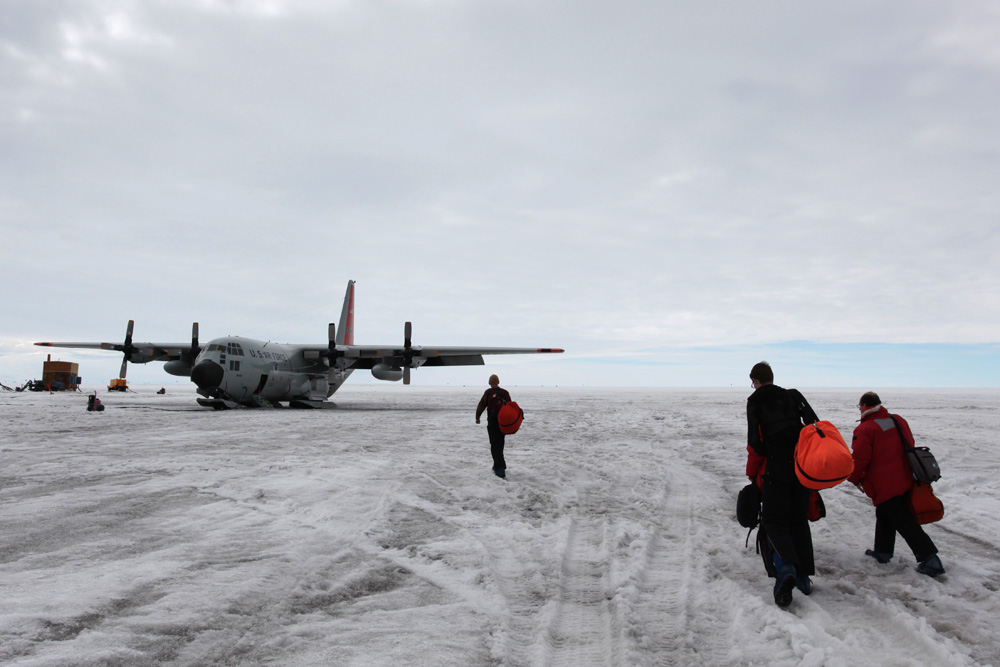
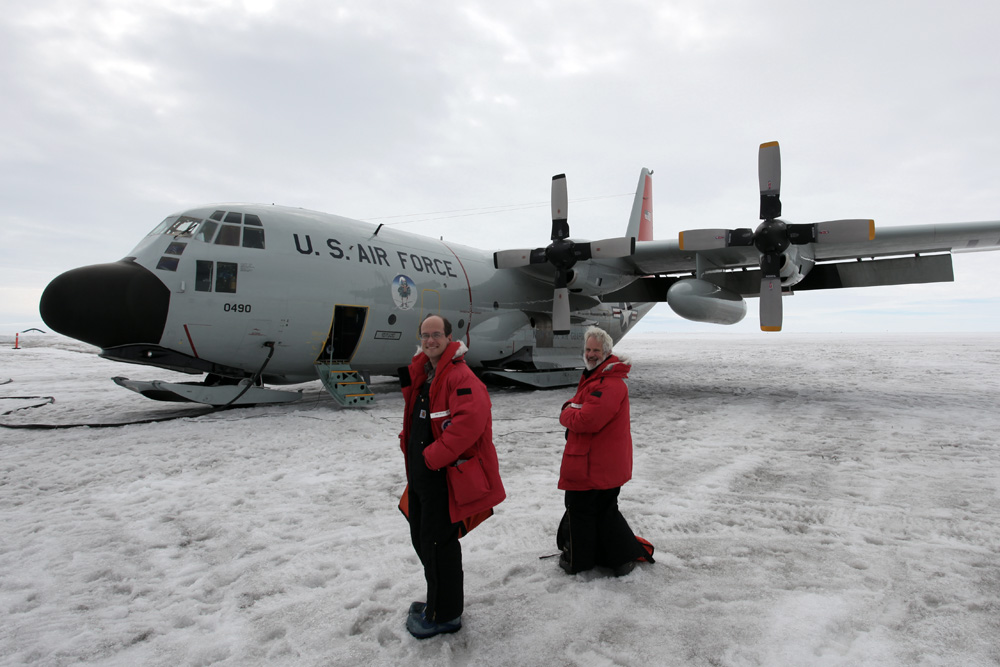

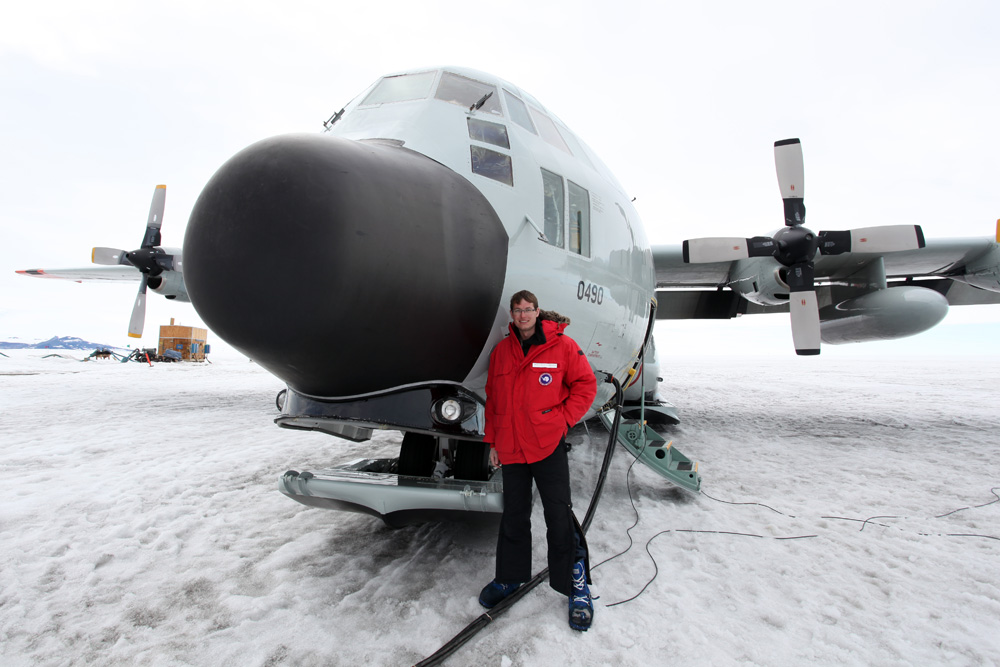
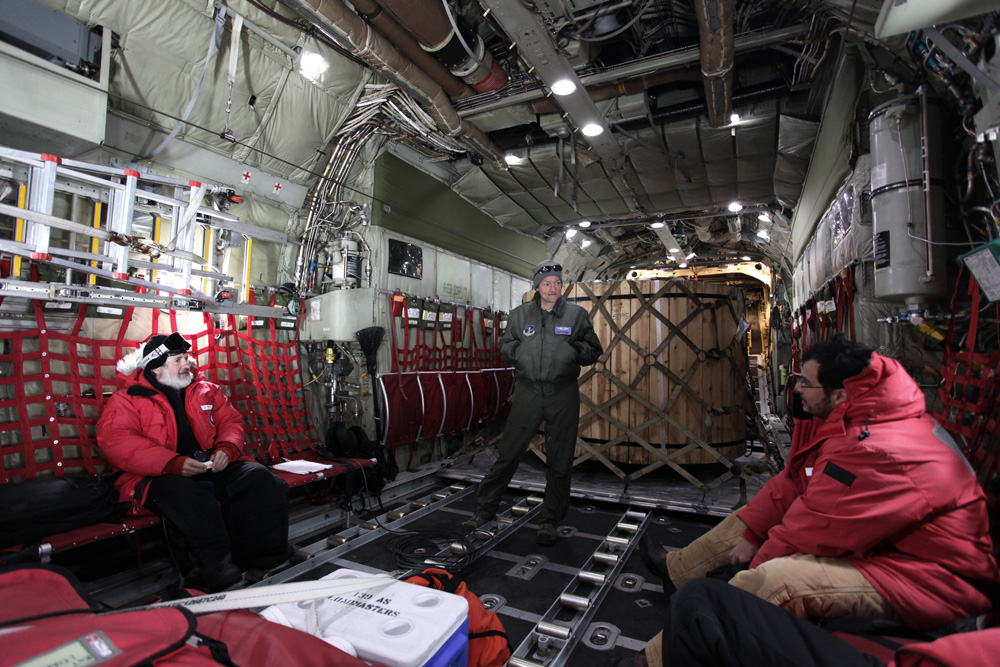

On our way back, we got on something called the "Magic Carpet", which is an extremely large sheet of rubber towed behind a Cat. These are frequently used to transport fuel and cargo, but amazingly everyone we spoke to said this was the first time they could recall it has ever been used to transport vehicles full of passengers! Of course these photos aren't of us on it, but you get the idea.
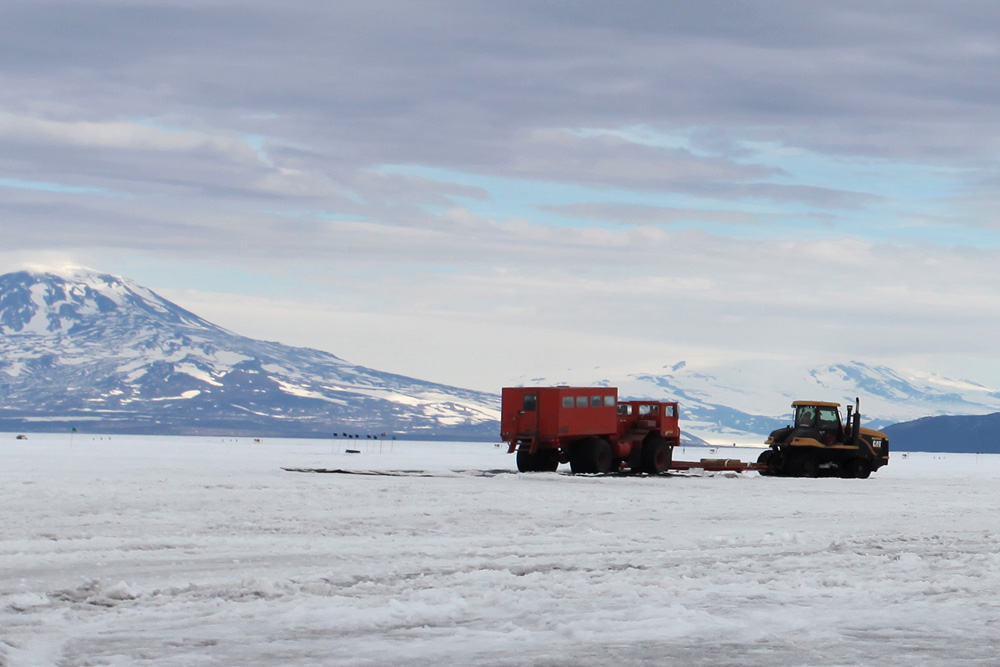

Our day went something like this:
06:00 - wake up
07:15 - assemble at building 140 in McMurdo
07:30 - depart McMurdo for the airfield
09:15 - arrive at Pegasus airfield and walk to passenger terminal; wait
12:30 - depart pasenger terminal for the aircraft (Hercules LC-130)
12:40 - arrive at aircraft but no one is on board; wait
13:20 - get onboard the Herc; wait
13:55 - flight gets cancelled; wait
14:15 - get off the Herc, fly on the Magic Carpet to harder snow; wait
15:00 - depart airfield for McMurdo
16:30 - arrive McMurdo
-- Geoff
Sunday, 30th December, 2012
Magic carpet ride. (John)
At 0715 we arrived at flight check in, dressed in our finest ECW gear and looking forward to the three-hour flight to the South Pole. To begin with, everything looked good: we crammed ourselves into the shuttle van, barely fitting with all our carry-on bags and parkas, then piled another six people in.
As we bumped along the ice towards the Pegasus airfield, the talk on the two-way radio became increasingly hilarious. Not only was a shuttle van in front of us bogged, but one of the invincible Deltas had also ground to halt. And, sadly, Ivan was in the mechanical shop, busted.
Nevertheless, we battled cheerfully along, listening in to the various towing and rescue scenarios being discussed, the most implausible of which was deployment of the Magic Carpet. Sure enough we got to the point where shuttles could go no further, transferred into a non-bogged Delta, and continued our journey.
Naturally enough we then sat around for an hour or more, mainly playing with our cameras. Somehow during this process I accidentally set my camera into the "take tiny awful pixilated images" mode; sorry about that... As usual, see Geoff's blog for much better pictures!
Eventually it was announced that our flight was ready! The shuttle took us out to the plane - or, more accurately took us towards the plane and got bogged, at which point the driver suggested that we could maybe walk the rest of the way. We did. Meanwhile, a bulldozer arrived and towed the shuttle van away.
Arriving at the Hercules we were a little disappointed to find there was no-one else there. After a brief discussion we decided that flying a Herc was beyond even the combined resources of the U of A and UNSW teams, so there was nothing to do but wait a bit longer. It turns out we were the only passengers, which made us feel quite special. We wandered around taking photos of "our" Herc from all angles, admiring in particular the skis that give the "LC130" such a unique capability.
After a while the flight crew turned up, along with the "fuelies" who spent the next 30 minutes filling up our aircraft with jet fuel. We filled the time by chatting to the pilots (pilots are always interesting to talk to), and watched as things on the airfield continued to fall apart.
As the shuttle vans continued to get bogged as soon as they drove onto the skiway, it became time to break out the Magic Carpet. This consists of two very large flat sheets of rubber, towed behind a CAT. The shuttle drives or is dragged onto the sheets, and away you go, just like magic!
Then, just as I was starting to actually like the Deltas, one of them suffered the ignominy of getting so bogged that it, too, had to be floated away.
Still, this wasn't our problem, as the pilots explained that the last thing to get bogged would be the Herc., a statement that, given the enormous grunt of those four engines, was as eminently plausible as it was reassuring.
Fueled-up, we clambered aboard and made ourselves comfortable - or at least as comfortable as one can ever be on a Herc.
Kat, the loadmaster, told us what we had to be told (mainly where the exits were and how to don the undonable oxygen hood/bottle contraptions), then chatted to us while we waited some more.
Well, time ticked by and there was something dodgy with the plane somewhere, and eventually we ran up against the time limit for the crew, so we all climbed off again.
And waited around a bit more. It seems none of the shuttles, and not even the Deltas, could make it back to McMurdo through the slushy bits. The warm weather of the last few days has had a major effect; it seems incredible that we landed on this same runway in an Airbus just a week ago.
Then, someone had a Good Idea. If the Magic Carpet could rescue a van, it could also rescue that same van full of passengers and we'll all get through the slush! So, two vans climbed aboard the carpet, and in a flash we were away and gliding across the ice. It was quite surreal, but very effective. We got back to McMurdo just in time for dinner.
So while it's disappointing to be back in McMurdo once again, things could be worse. I'm especially disappointed to miss New Years's Eve at the Pole, and watching the new year start in every time zone in the world. Still, there are compensations: tomorrow we'll all go to the annual "Icestock" live music festival, and see in 2013 from McMurdo.
The next two days are no-fly days, so off to the pole on Tuesday (hopefully).
Monday, 31st December, 2012
Reflections on McMurdo: Food (Geoff)
A lot of people asked me what food we would be eating while in Antarctica. Instant noodles? Soup? Seal blubber? It turns out that in the established stations (such as McMurdo), they actually have an incredible food service, where they cater for up to 800-1000 people in the summer. You turn up, grab a tray and plate, and select from a huge range of food and drinks. There are typically 2 or 3 main choices for every meal, an additional vegetarian option, plus a number of sides & desserts. And of course the usual juices, tea, coffee, etc.
I am seriously impressed with the variety and quality of food available at McMurdo. These photos document just a small sample of everything that is available.
Lunch and dinners:
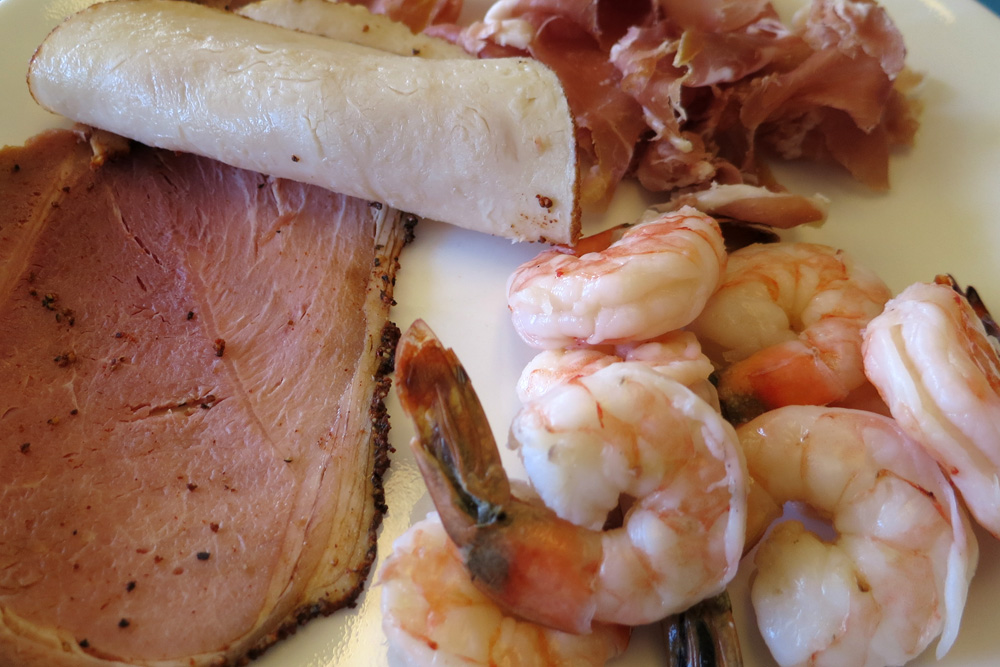
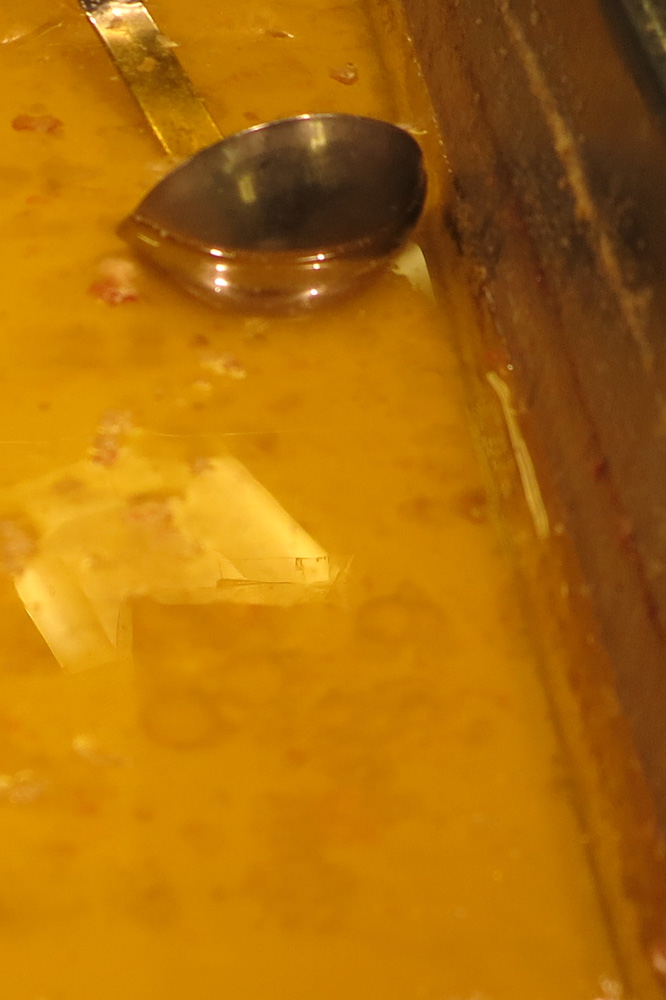

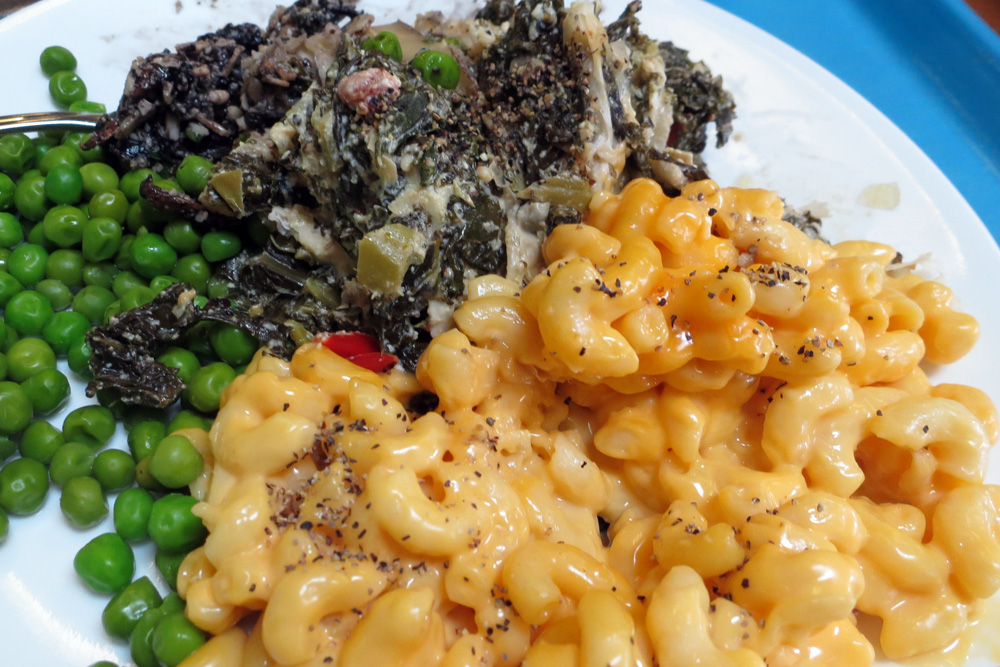






Full plates:
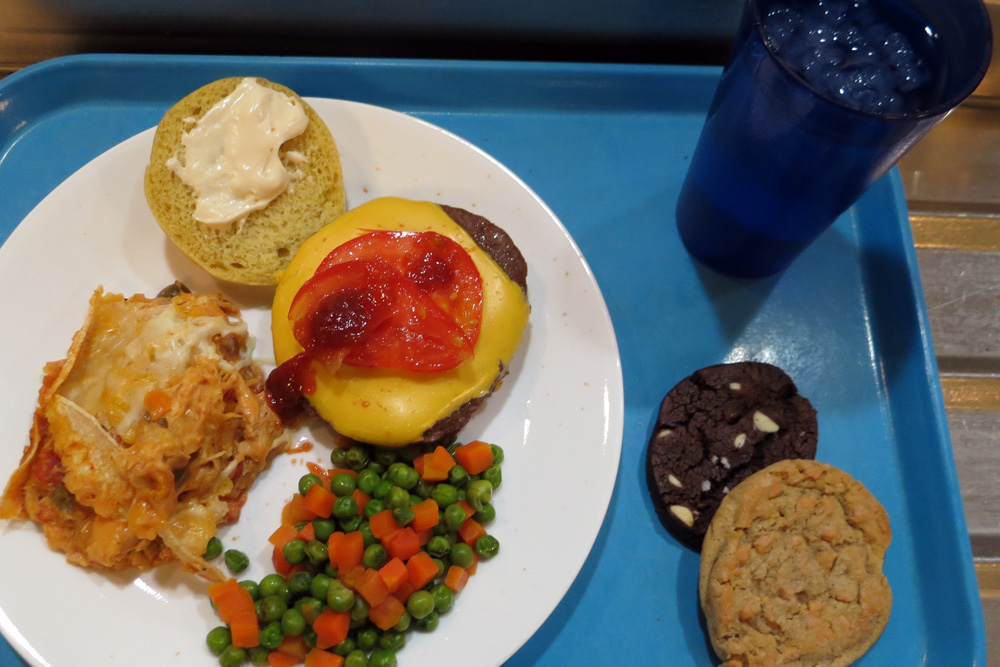



Desserts:



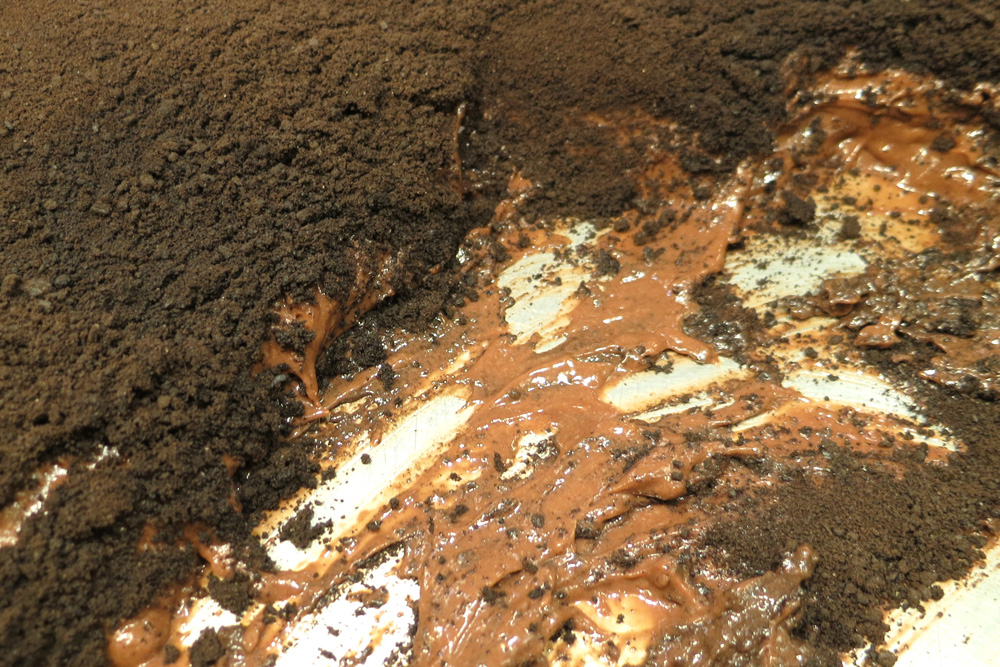

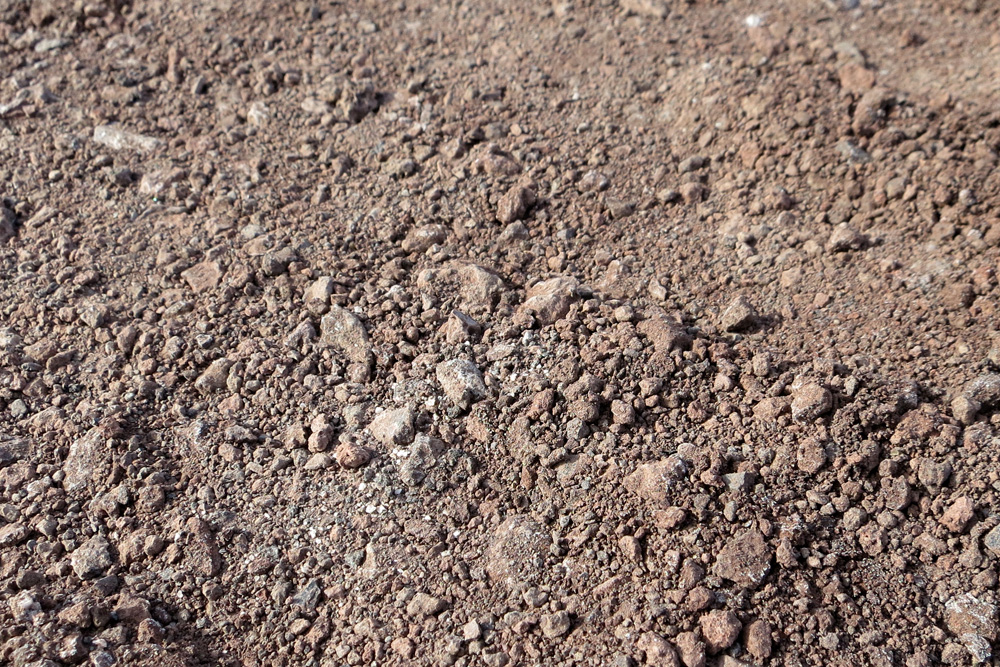



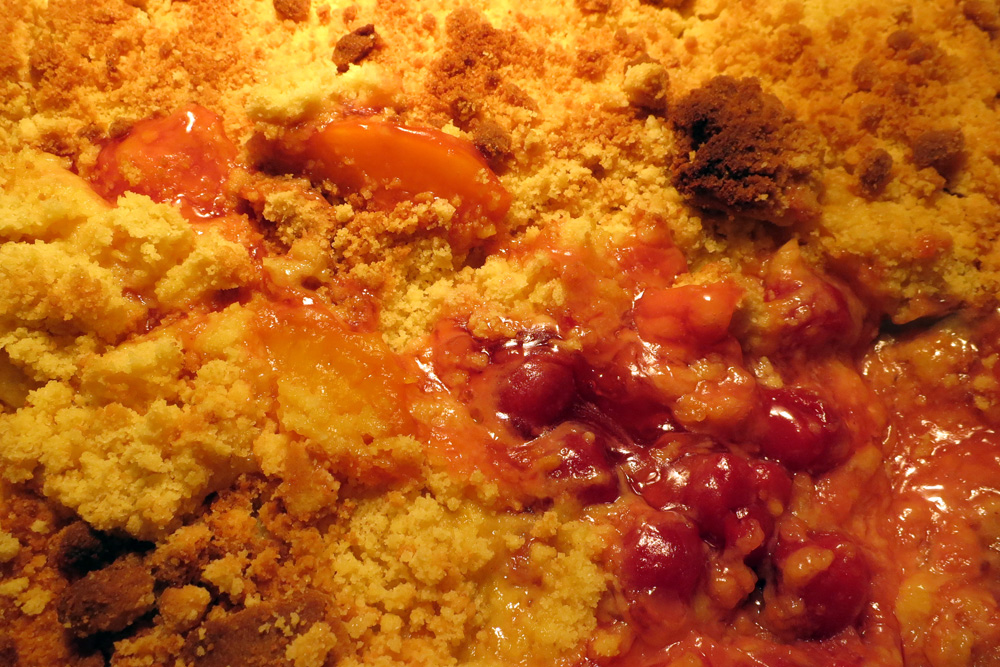



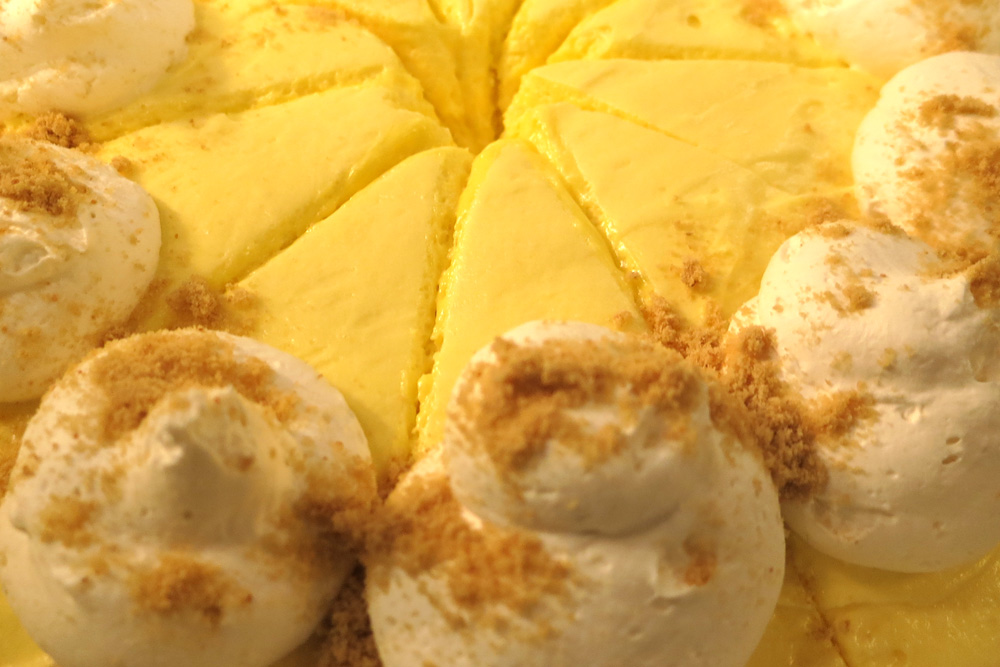

Baked goods:







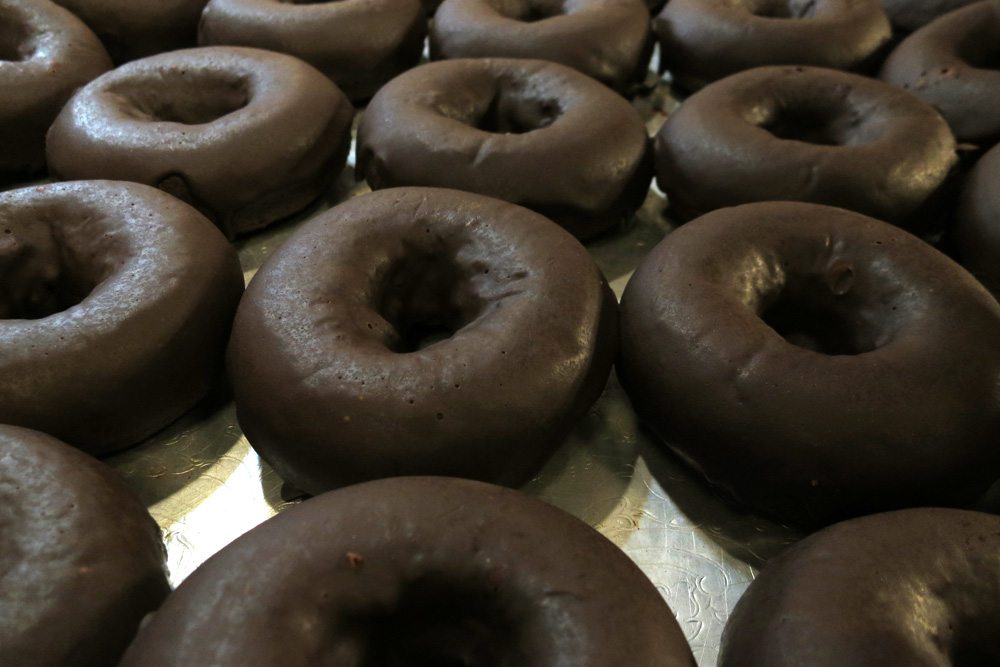

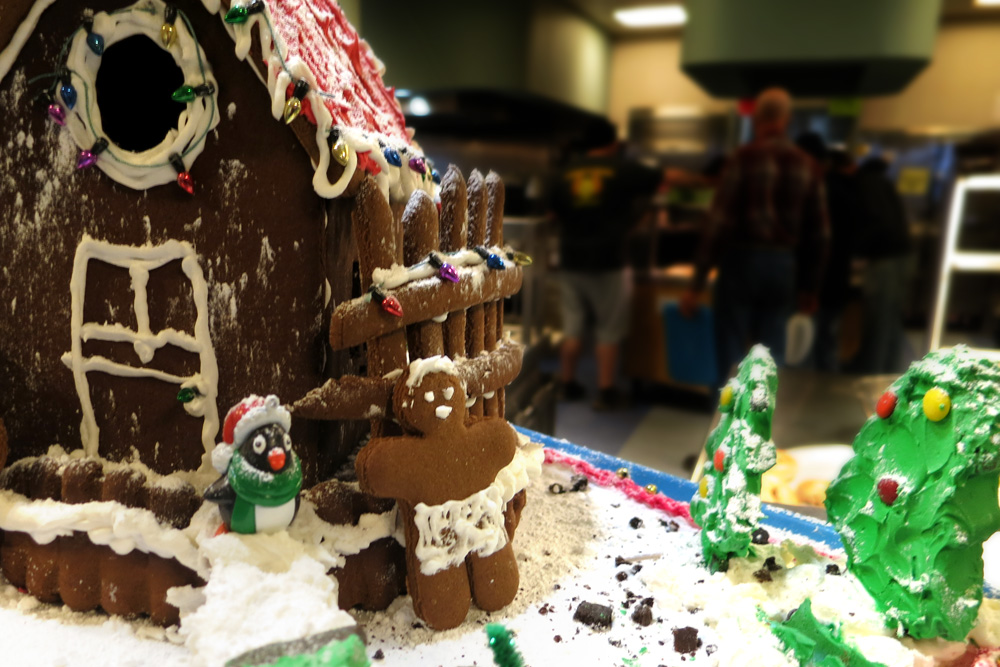


-- Geoff
Monday, 31st December, 2012
Happy New Year! (Geoff)
Happy New Year, from Team PLATO/HEAT/Ridge-A at Icestock 2013!
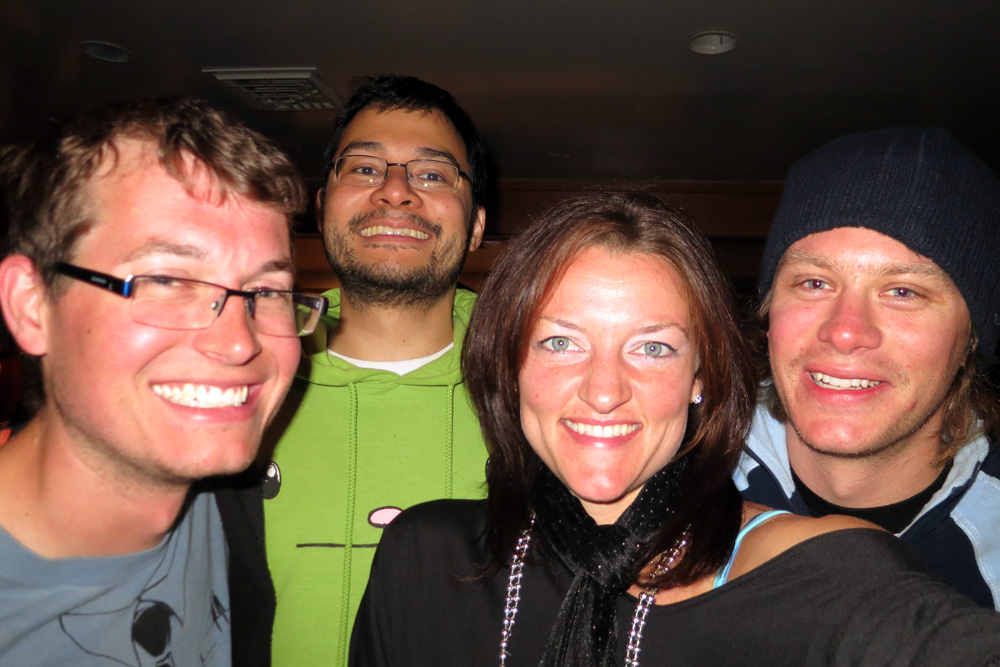

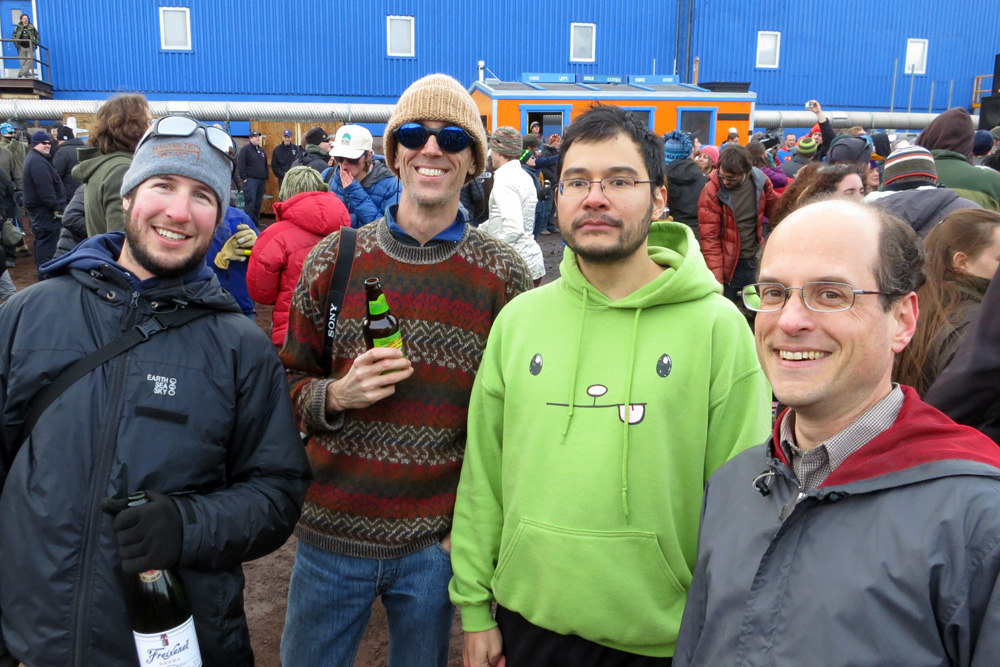
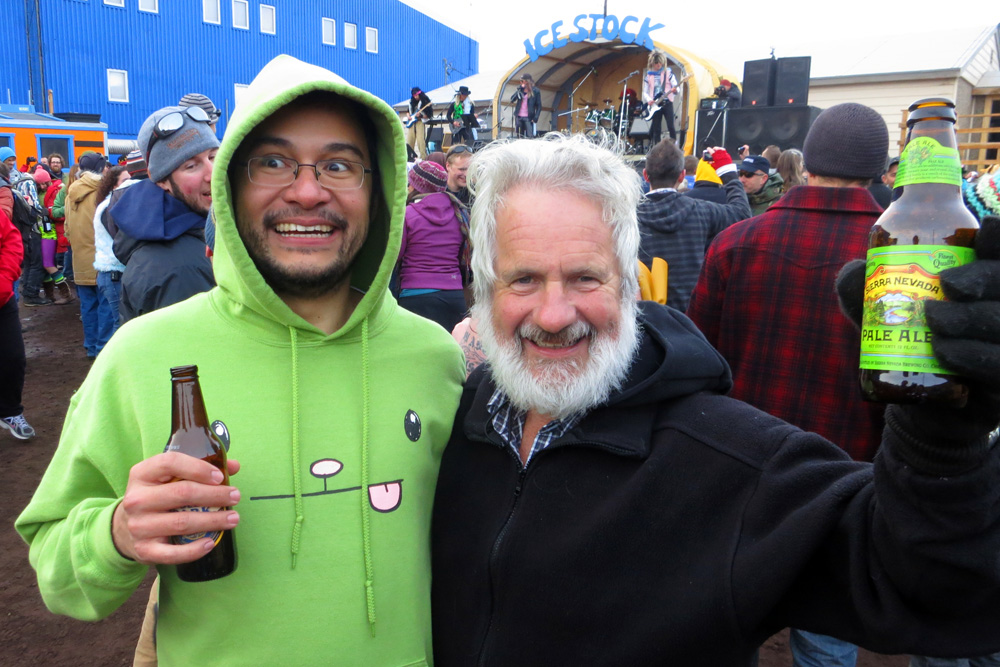
-- Geoff
Monday, 31st December, 2012
Icestock. (John)
Not a whale of a lot to do today, so mostly we talked about how great PLATO would be if, in some parallel universe, we'd built it somewhat differently. In such a universe, our servicing tools would include some white cotton gloves, furniture polish and perhaps some leather conditioner, rather than 150 kg of replacement batteries, a wire crimper the size of a baseball bat, and a chain saw.
Over brunch, Daniel expounded on his understanding of the human digestive system. Apparently it includes a "dessert valve" that opens when, after a main course has fully satiated a diner, an irresistible dessert arrives. This creates an additional 10% or more of stomach capacity. Daniel was then able to demonstrate the operation of such a valve, by demolishing at a single sitting a good fraction of the desserts appearing in Geoff's earlier food blog.
However, an otherwise unremarkable day was followed by a most splendid evening at the legendary "Icestock" music festival. This is an annual tradition at McMurdo, and is almost certainly the best rock festival on the continent.
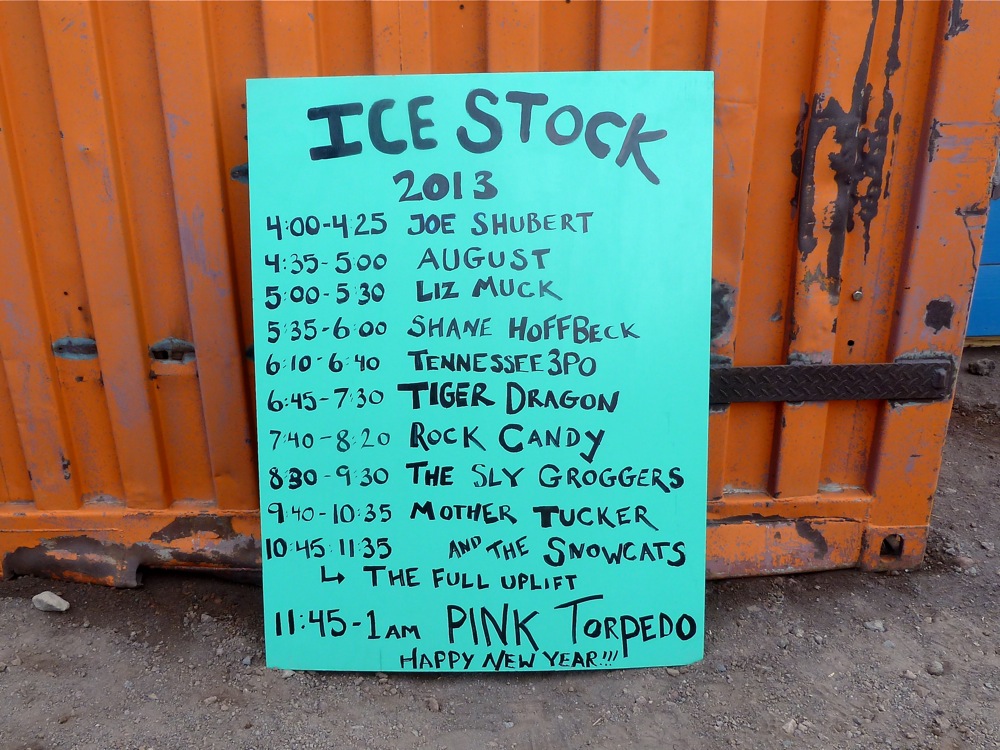
To put a concert on in Antarctica, you first need...

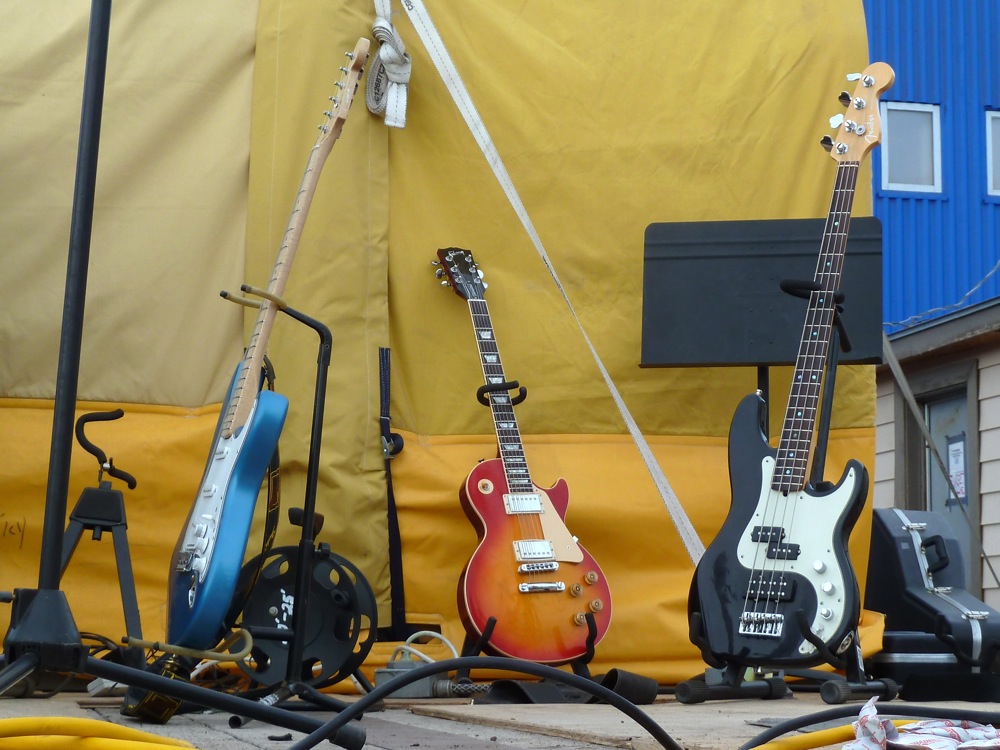

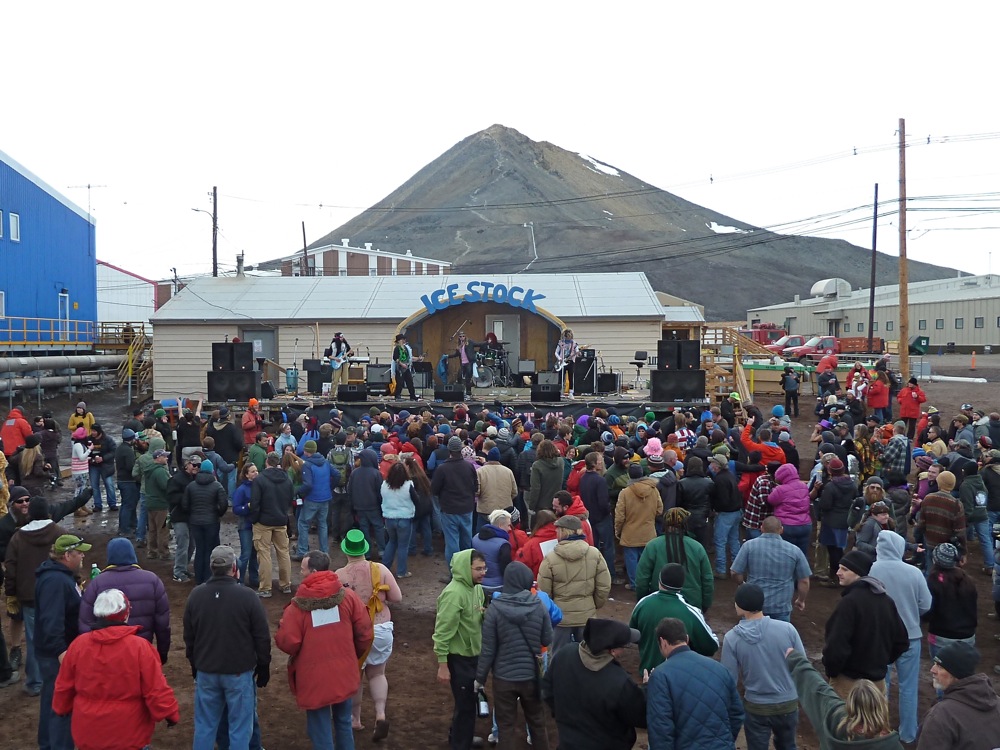

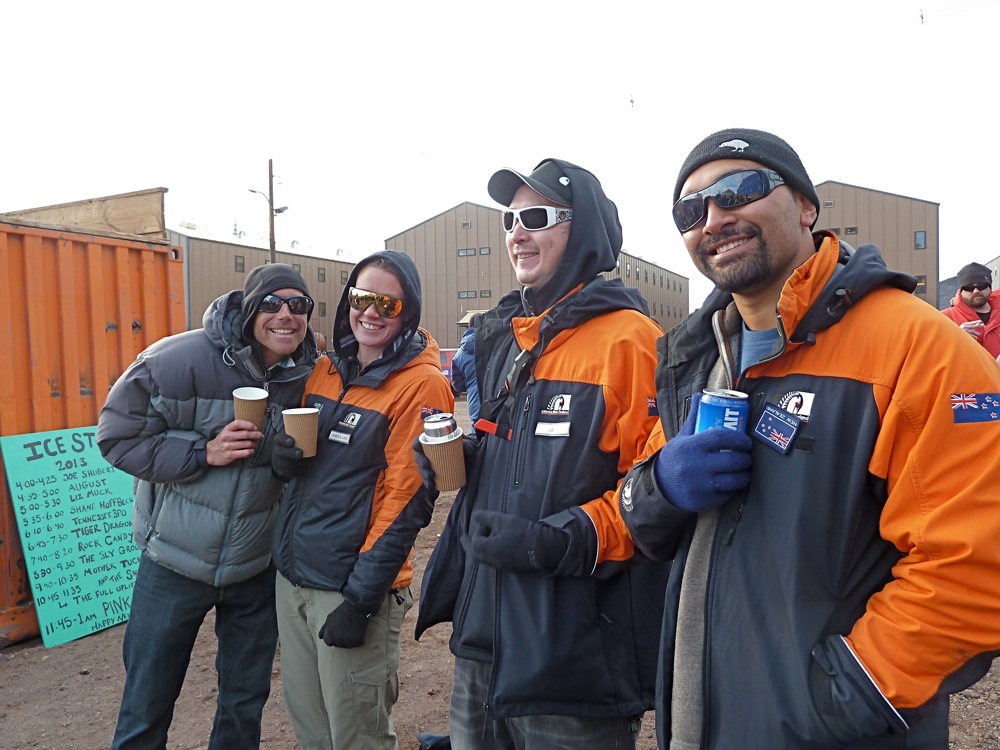

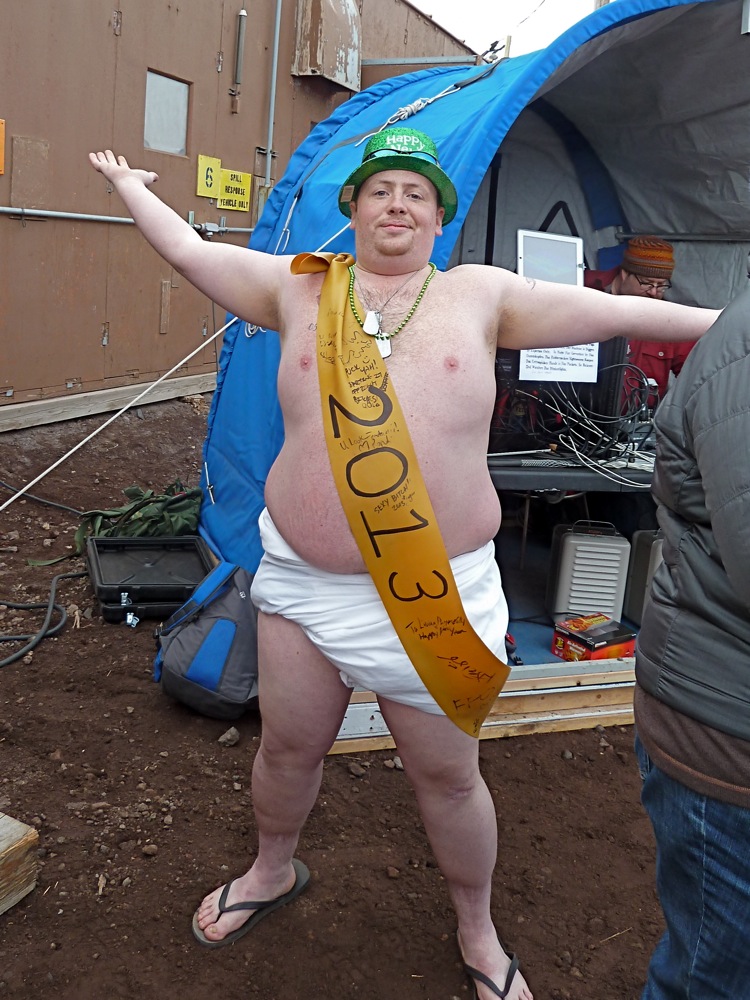
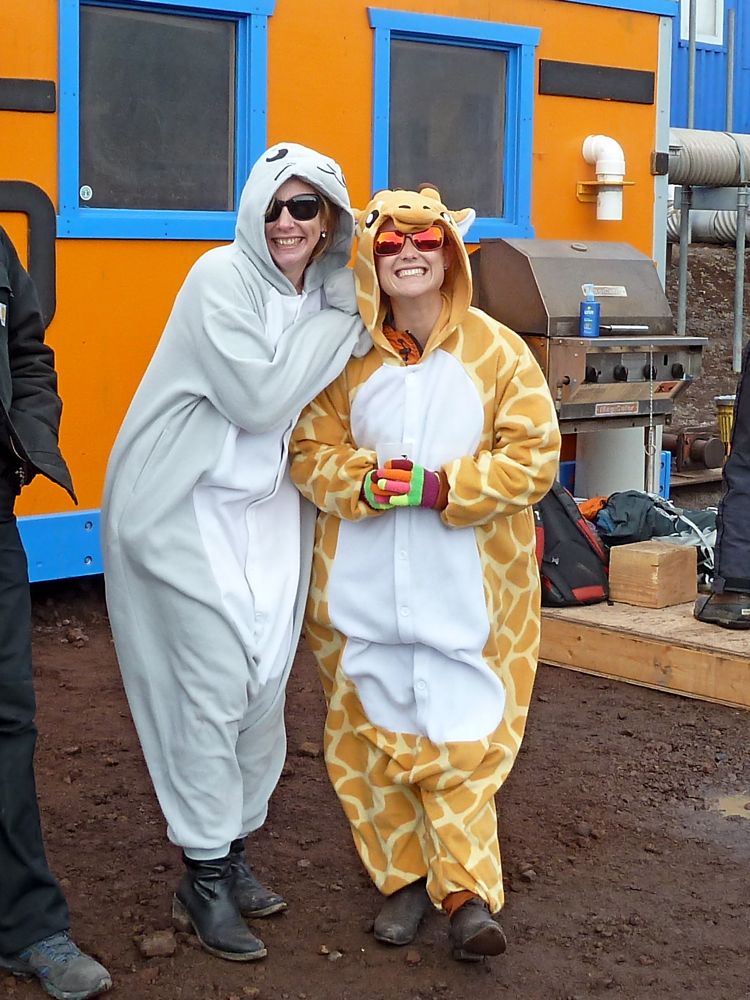

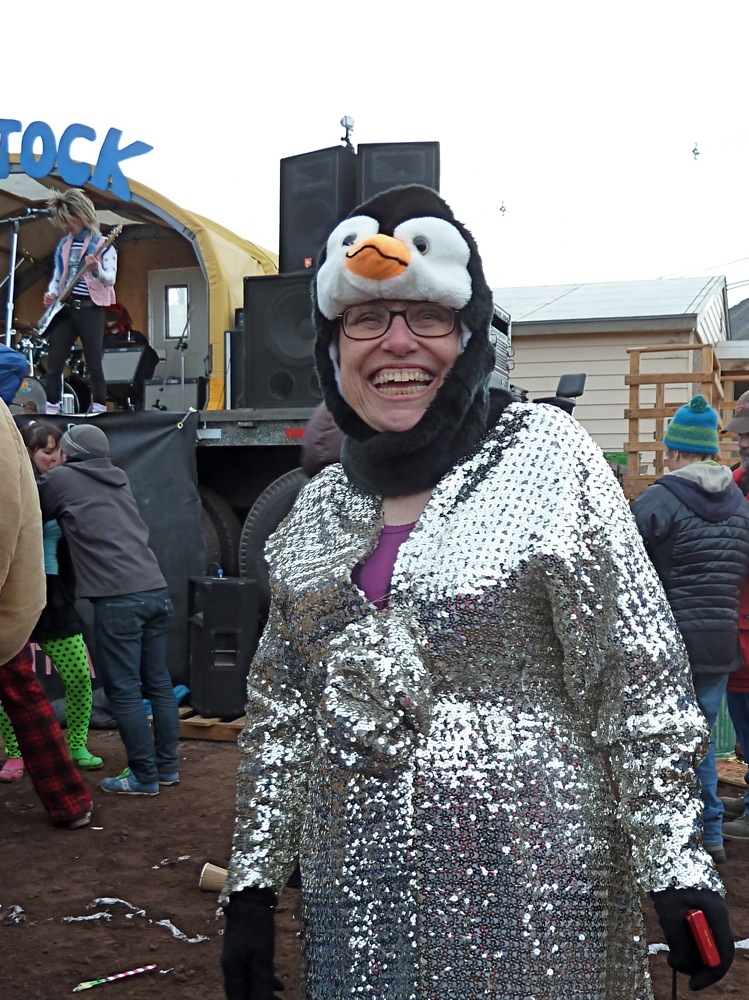
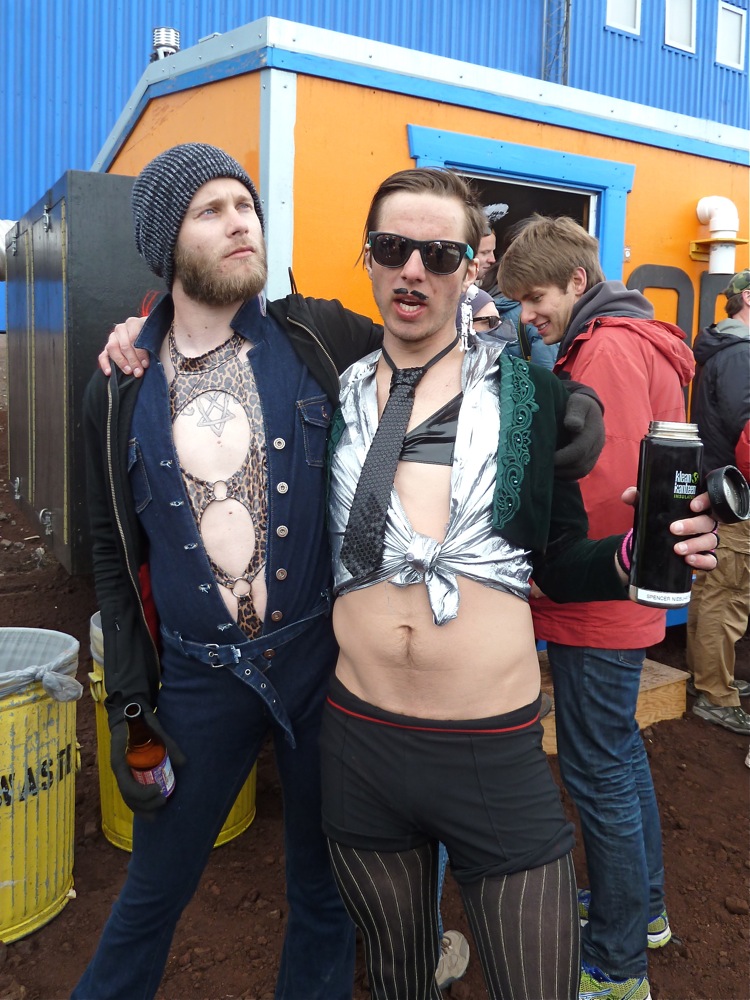

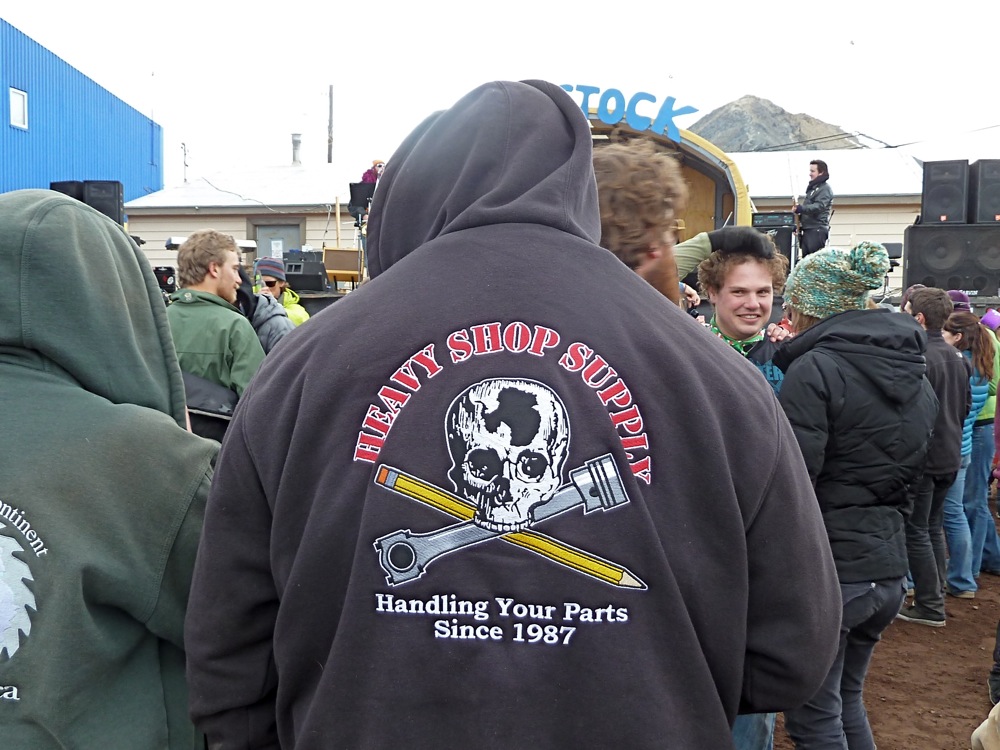
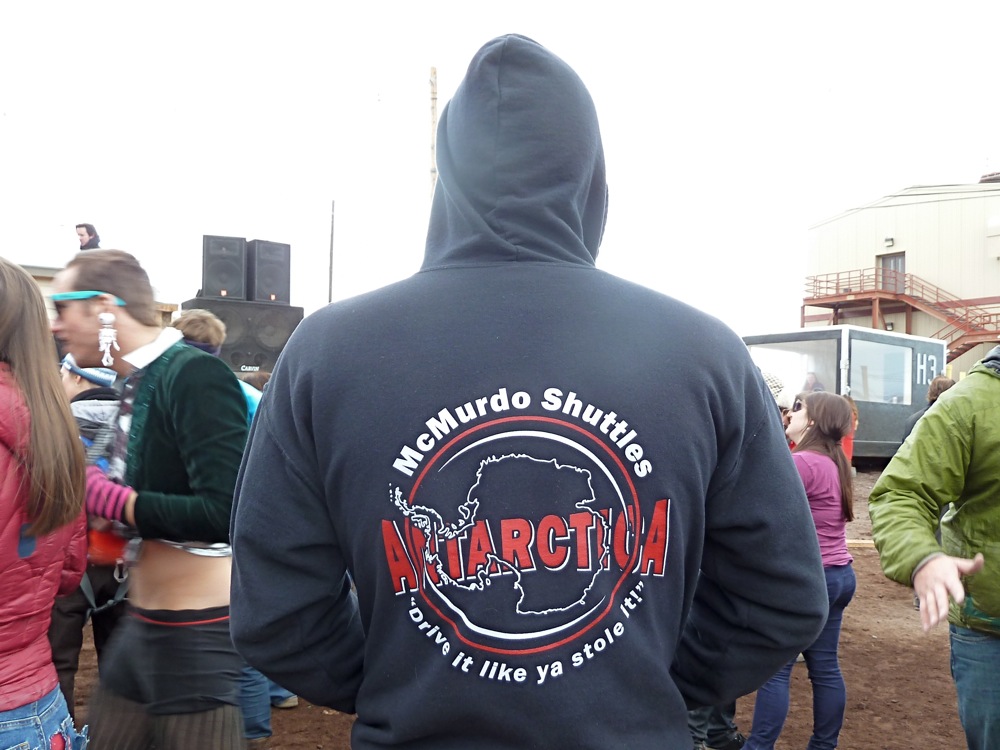
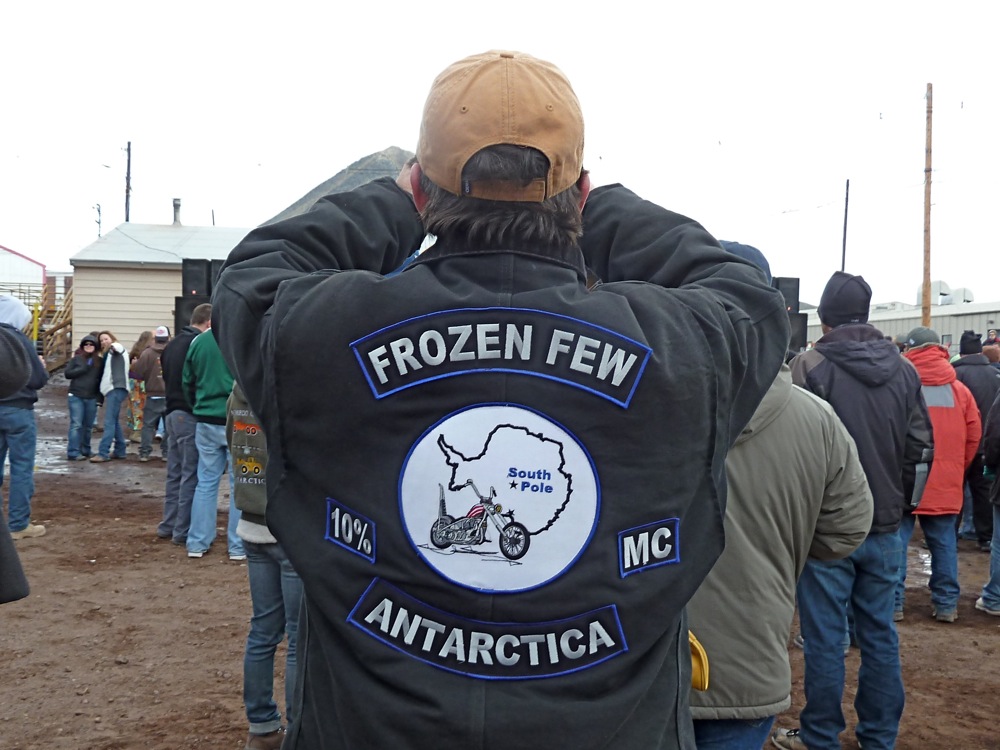

We wish you all a very happy, prosperous and rewarding new year!

Tuesday, 1st January, 2013
Weddell Seals (Geoff)

Today we had some amazing weather - clear blue skies with very light wind - so we decided to take a walk.
First off we found a large Kress vehicle:
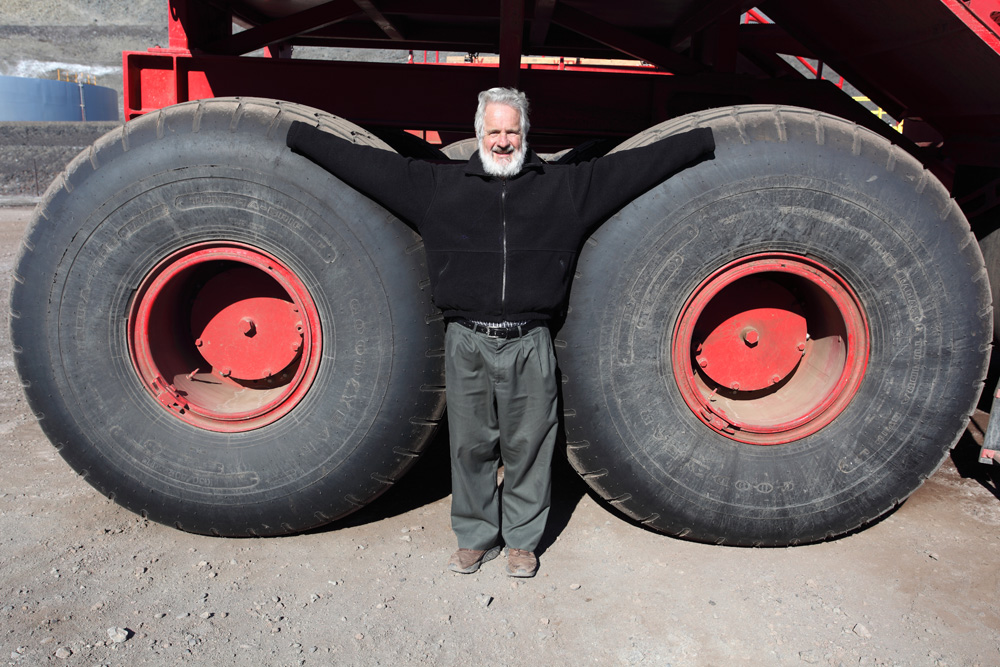
Then we found some other cool stuff:
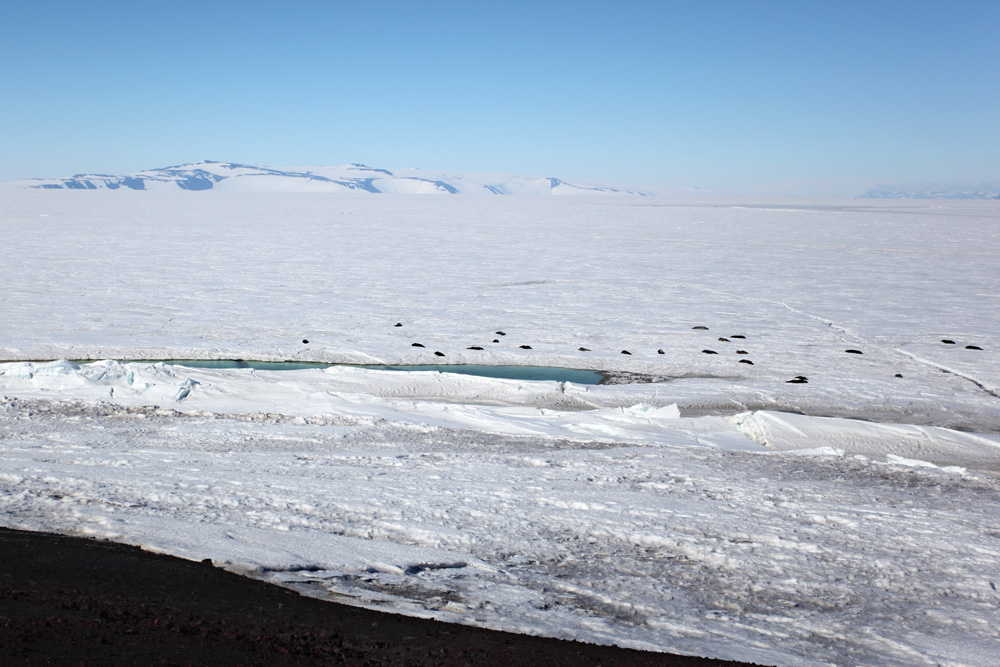
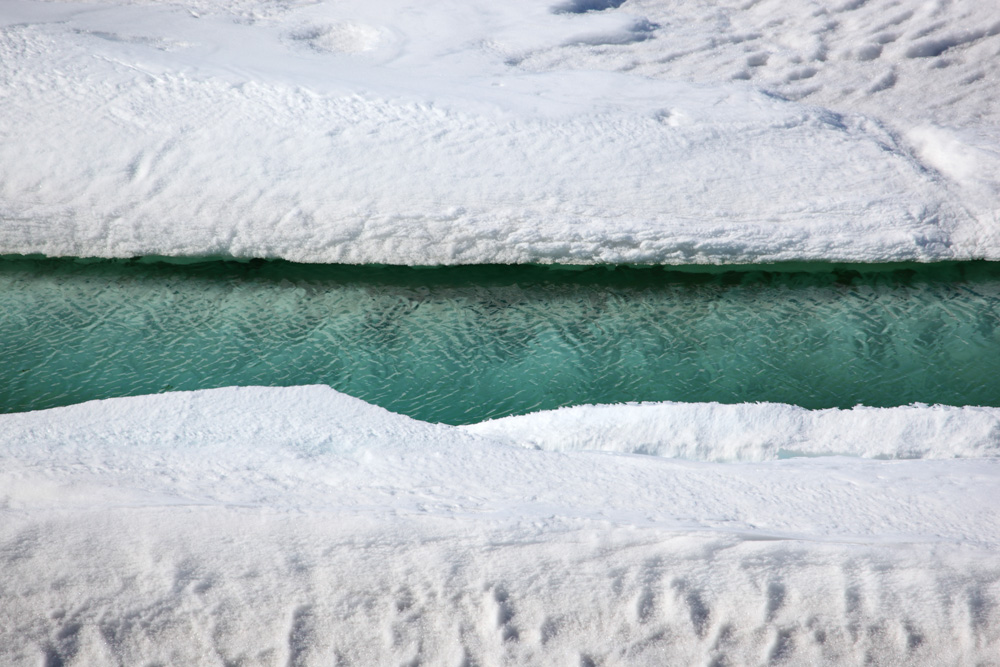
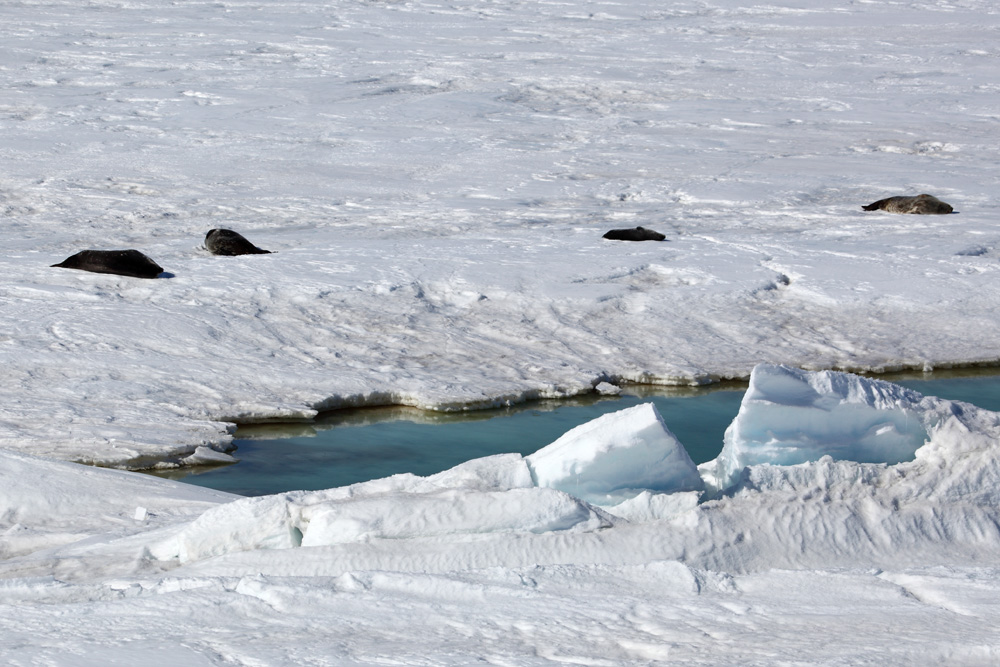
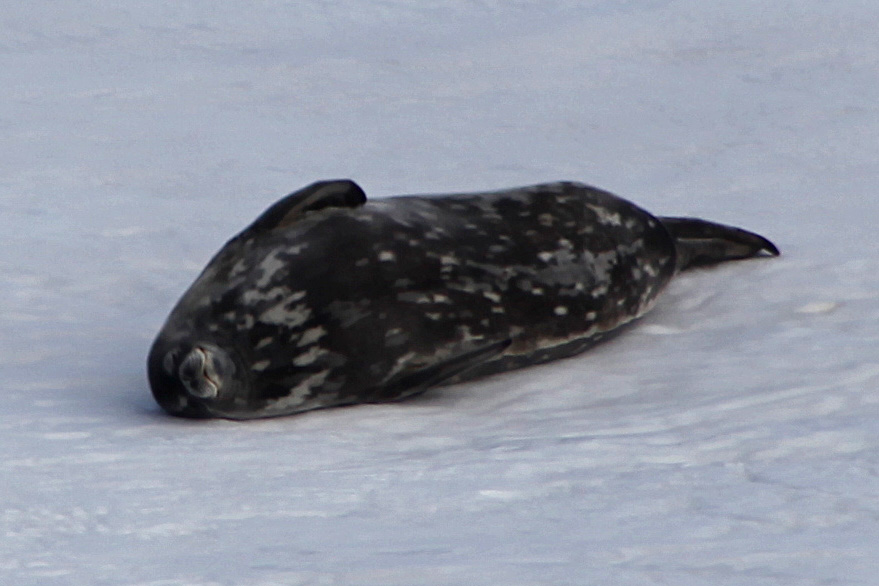
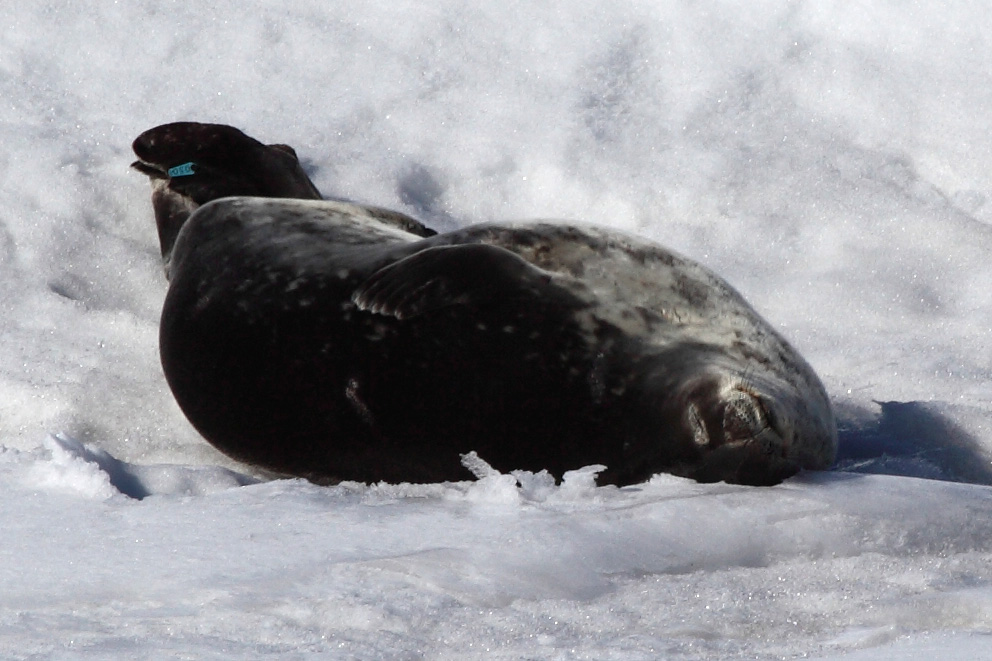
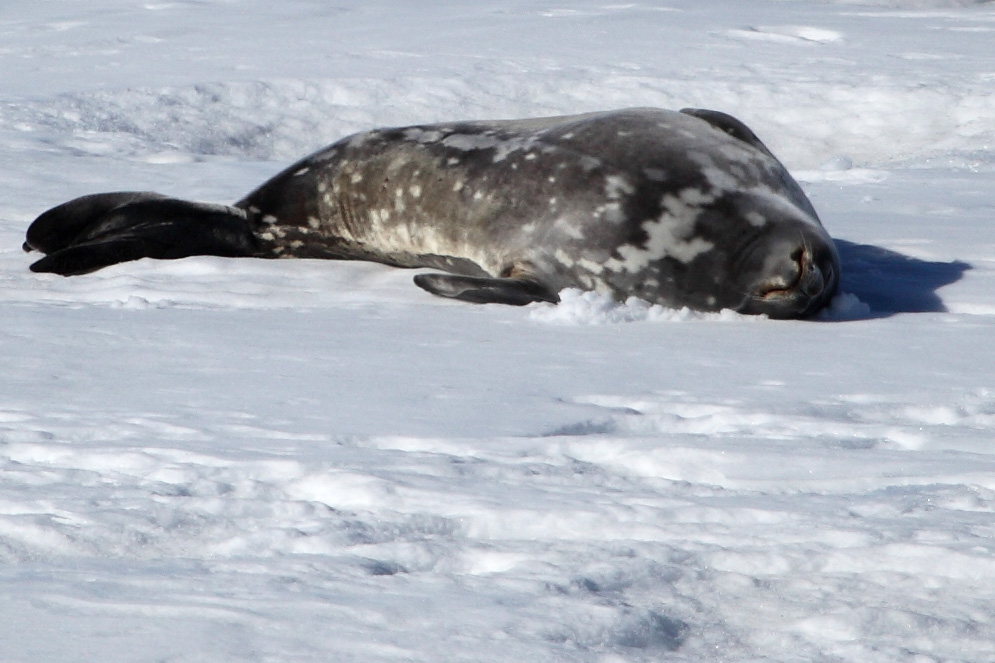
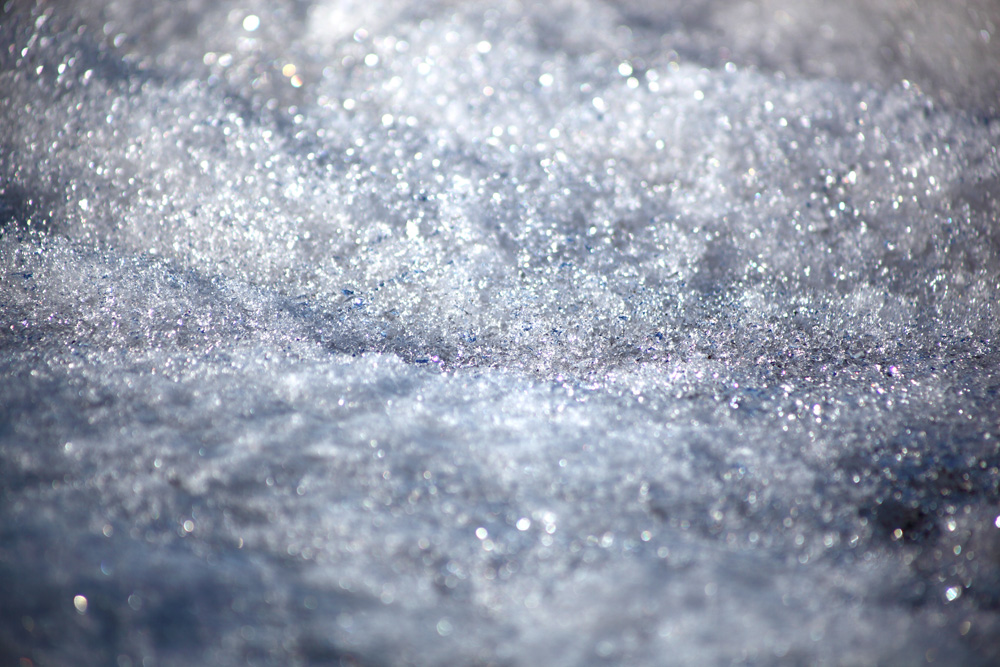

-- Geoff
Tuesday, 1st January, 2013
Radome walk (Geoff)
After dinner, the weather was still amazing. Too good to stay inside! So I took another walk on a new route, which went up along a ridge and past some of McMurdo's radomes. These are eye-catching geodesic weather enclosures surrounding satellite or radar antennae.

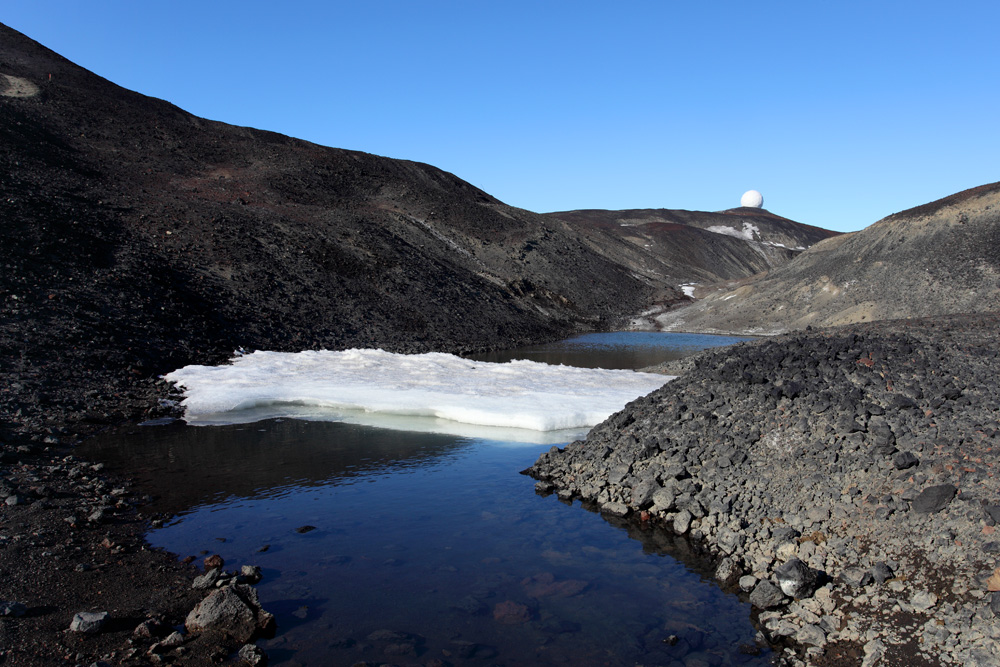

-- Geoff
Tuesday, 1st January, 2013
Once around Observation Hill. (John)
Things got off to a slow start this morning, and gradually wound down from there. Very little is happening here - after all, it is New Year's Day.
It was however gorgeous weather; gorgeous, that is, unless it's once again melting the Pegasus airfield to a slush. Still, good enough for a walk around Observation Hill!

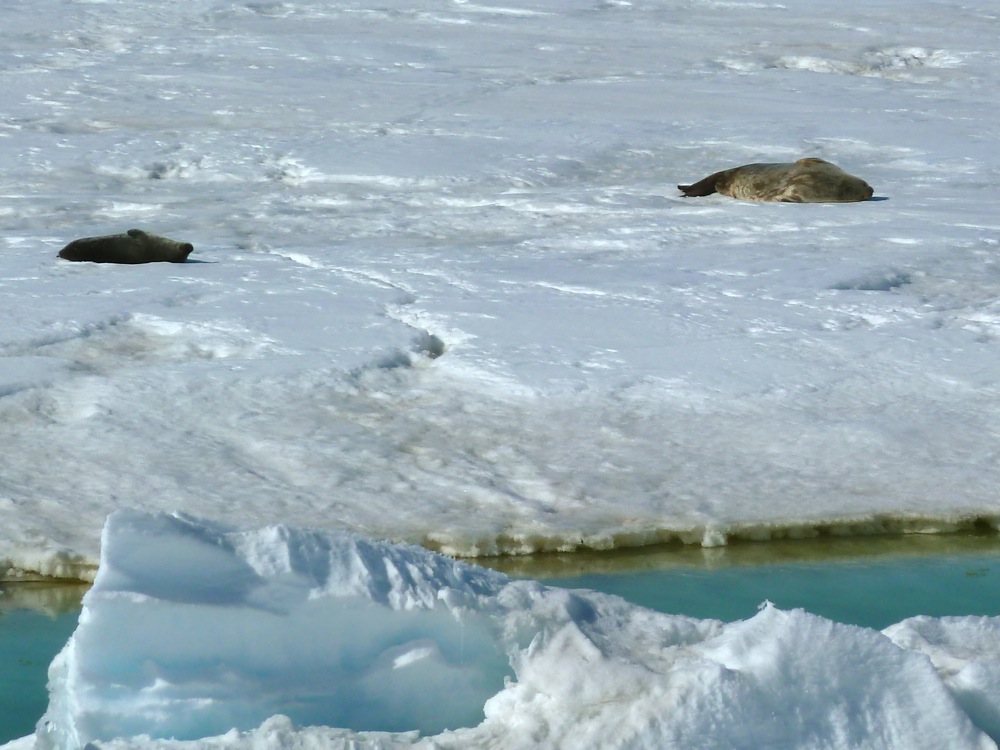
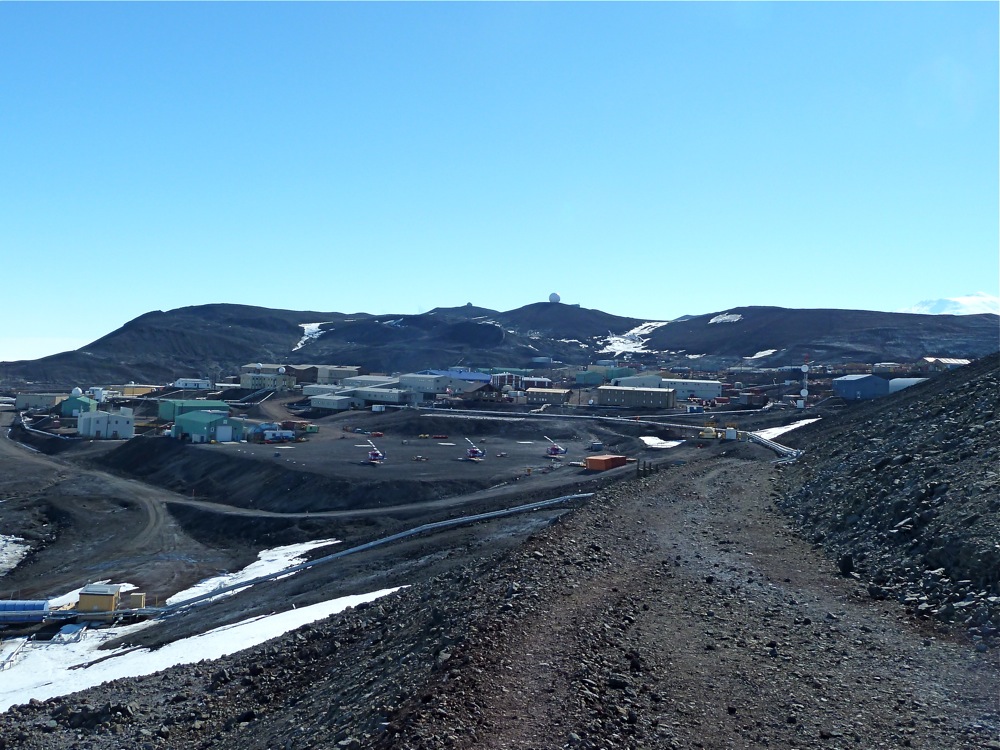
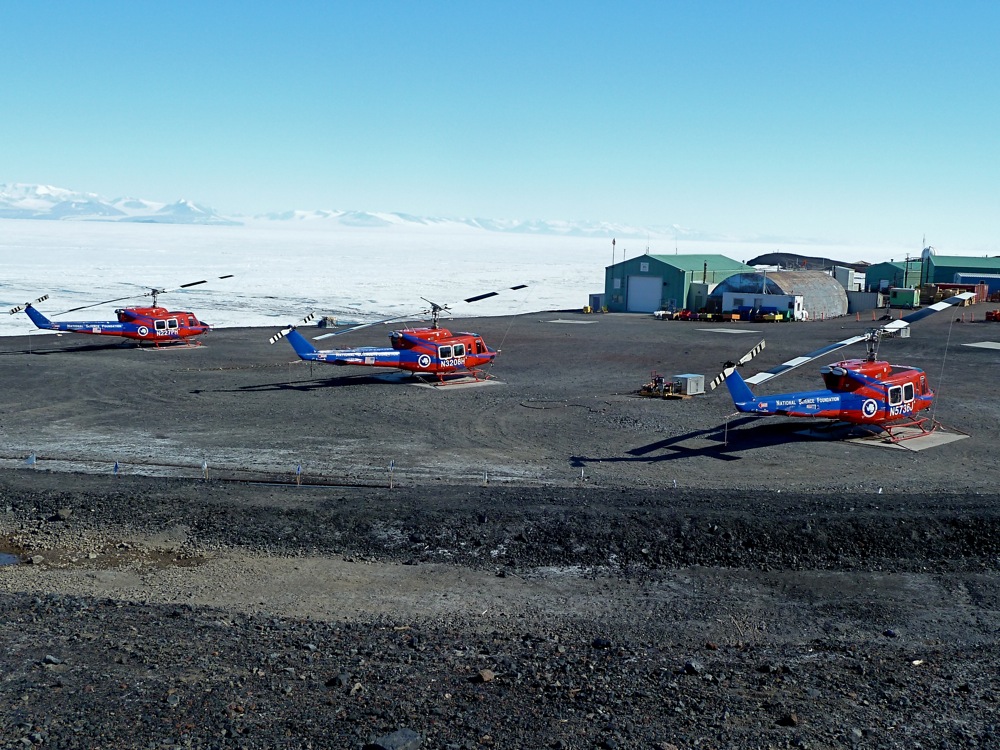

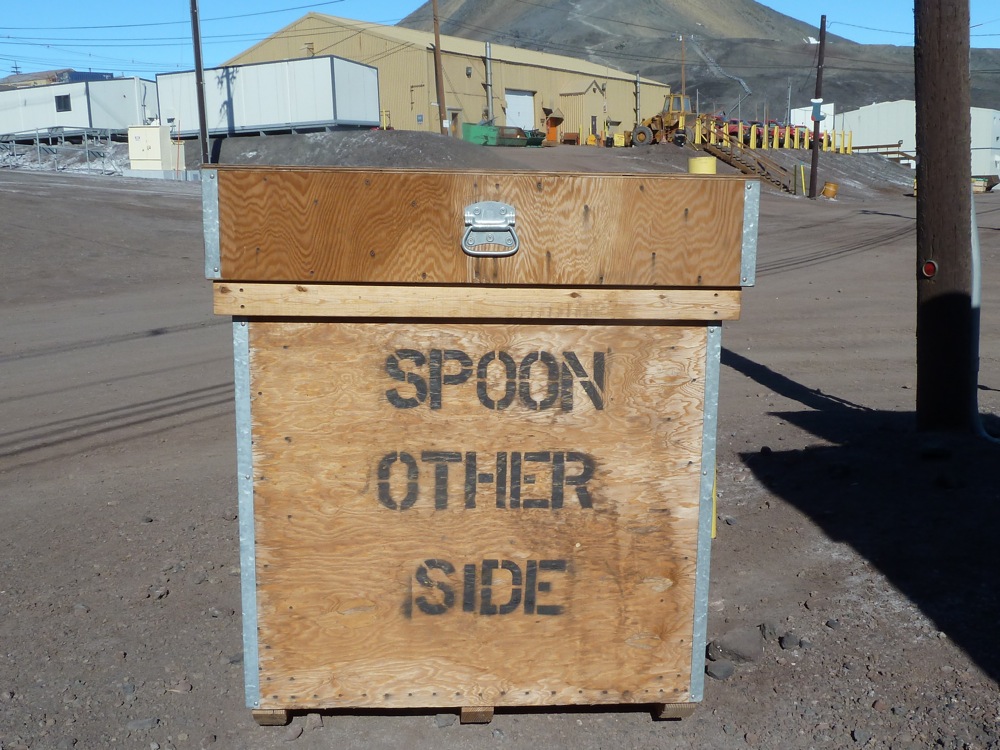
Surely we'll get to South Pole tomorrow!
Wednesday, 2nd January, 2013
Flying south (Geoff)
We had our second attempt to fly to the South Pole today. It stated off interesting: riding in a Delta, getting bogged, and getting out of the swamp again. This is something we were used to by now, so I took a few video clips to show the process:
After the Delta was cleared, we had a short wait in the passenger terminal, and then rode in the back of a ute to our own private LC-130 Hercules.
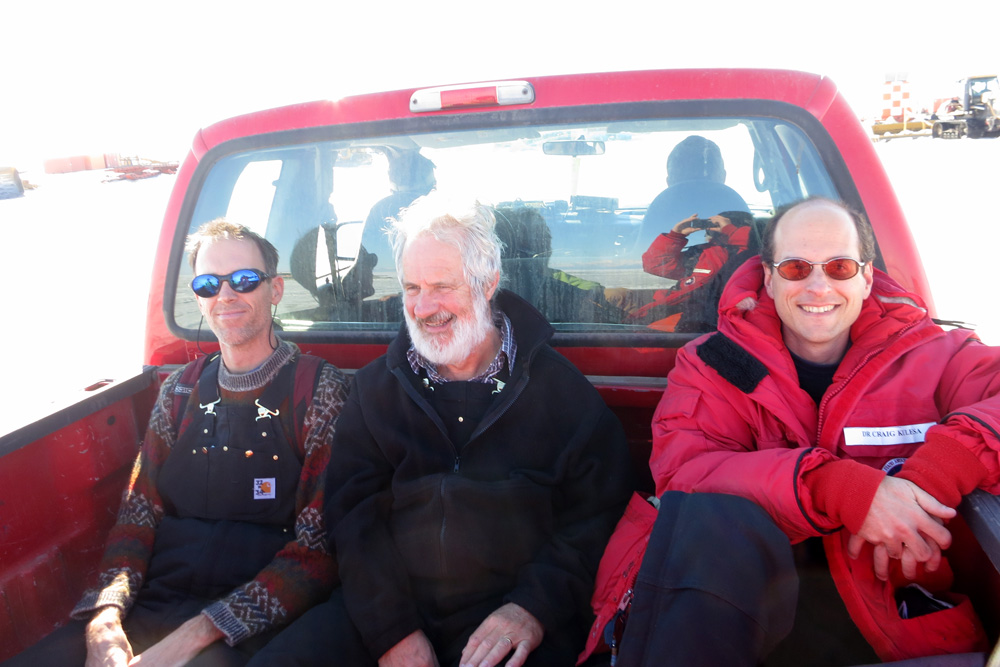
This time, amazingly, we actually flew in it!

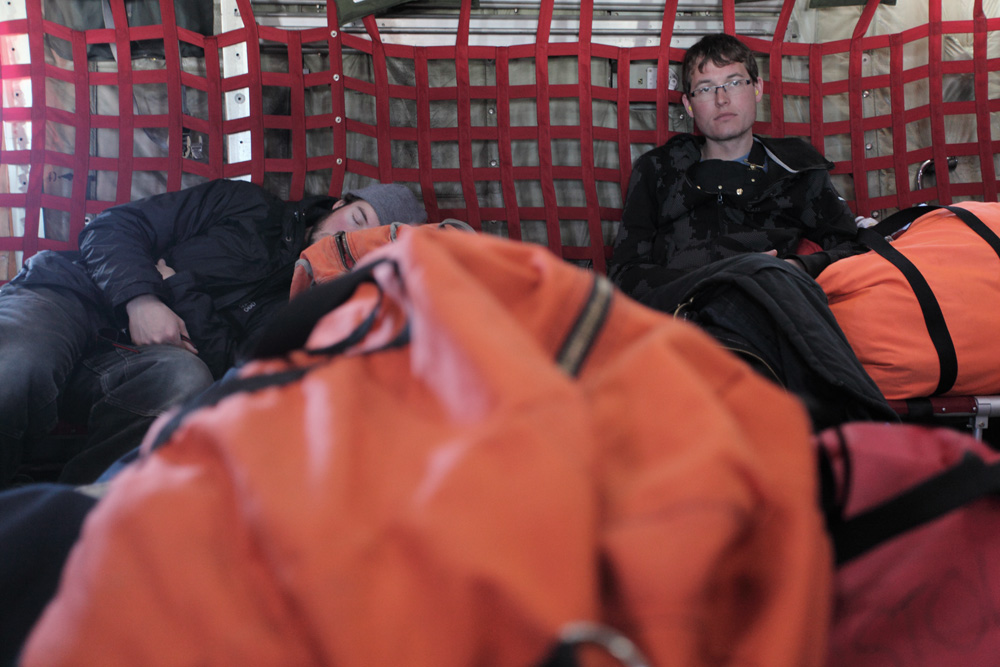
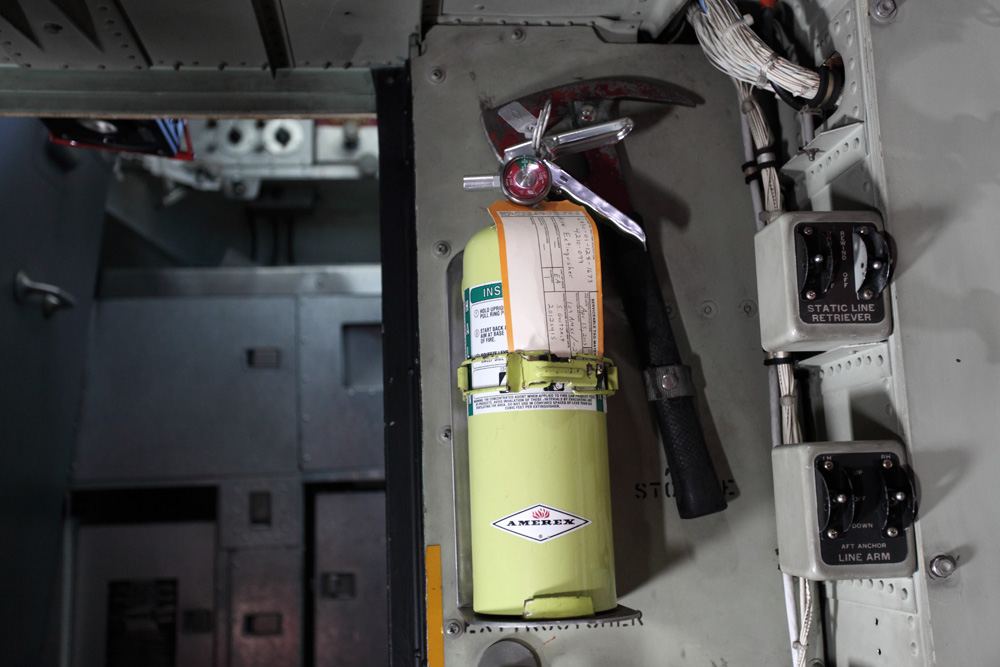
And then we finally arrived at the South Pole! I'm not going to say it wasn't cold, but it certainly didn't feel as cold as it was (approx -25 C).
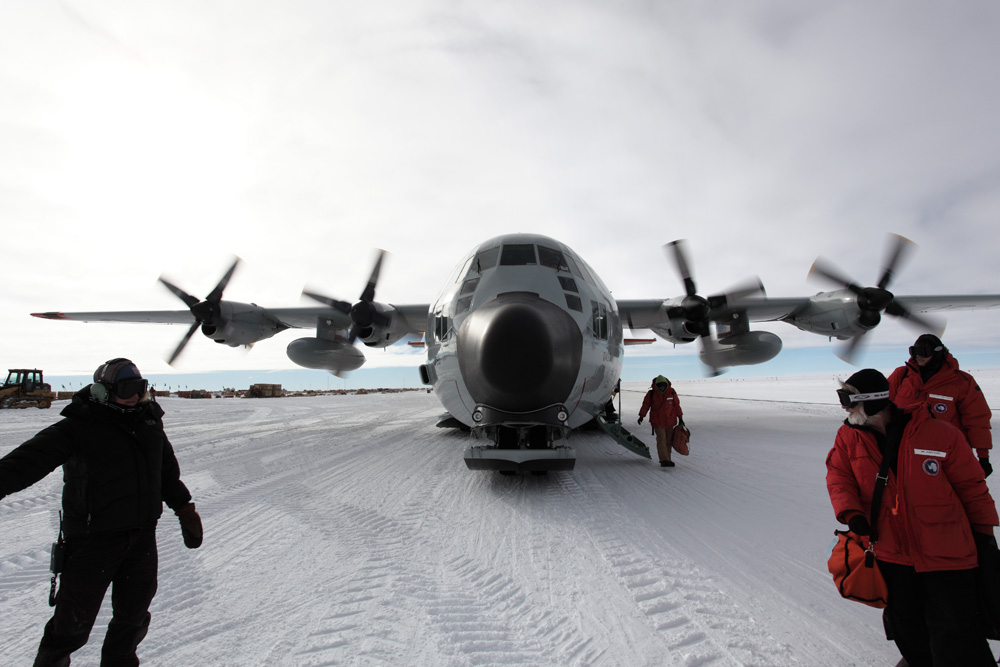
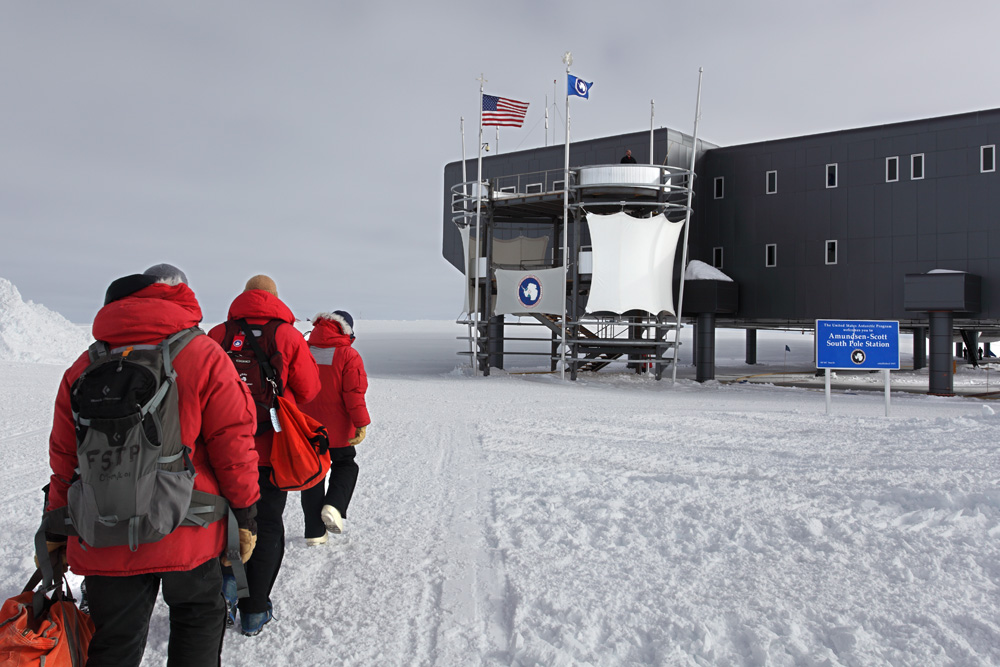
We had a quick look around, admired the Skua Hut (a free clothing & goods trading service), and had an early night.
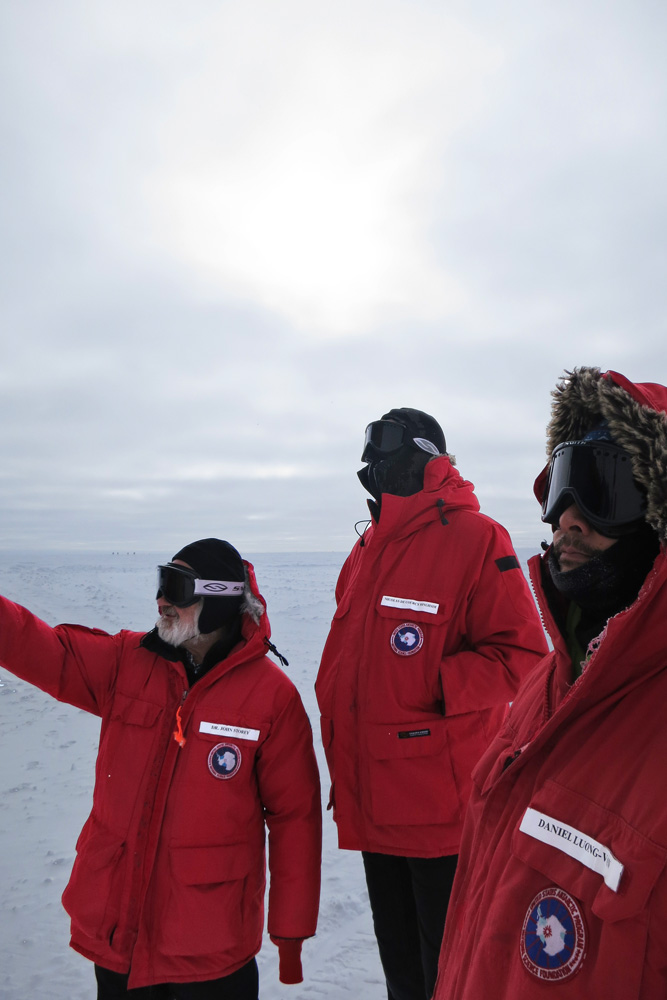
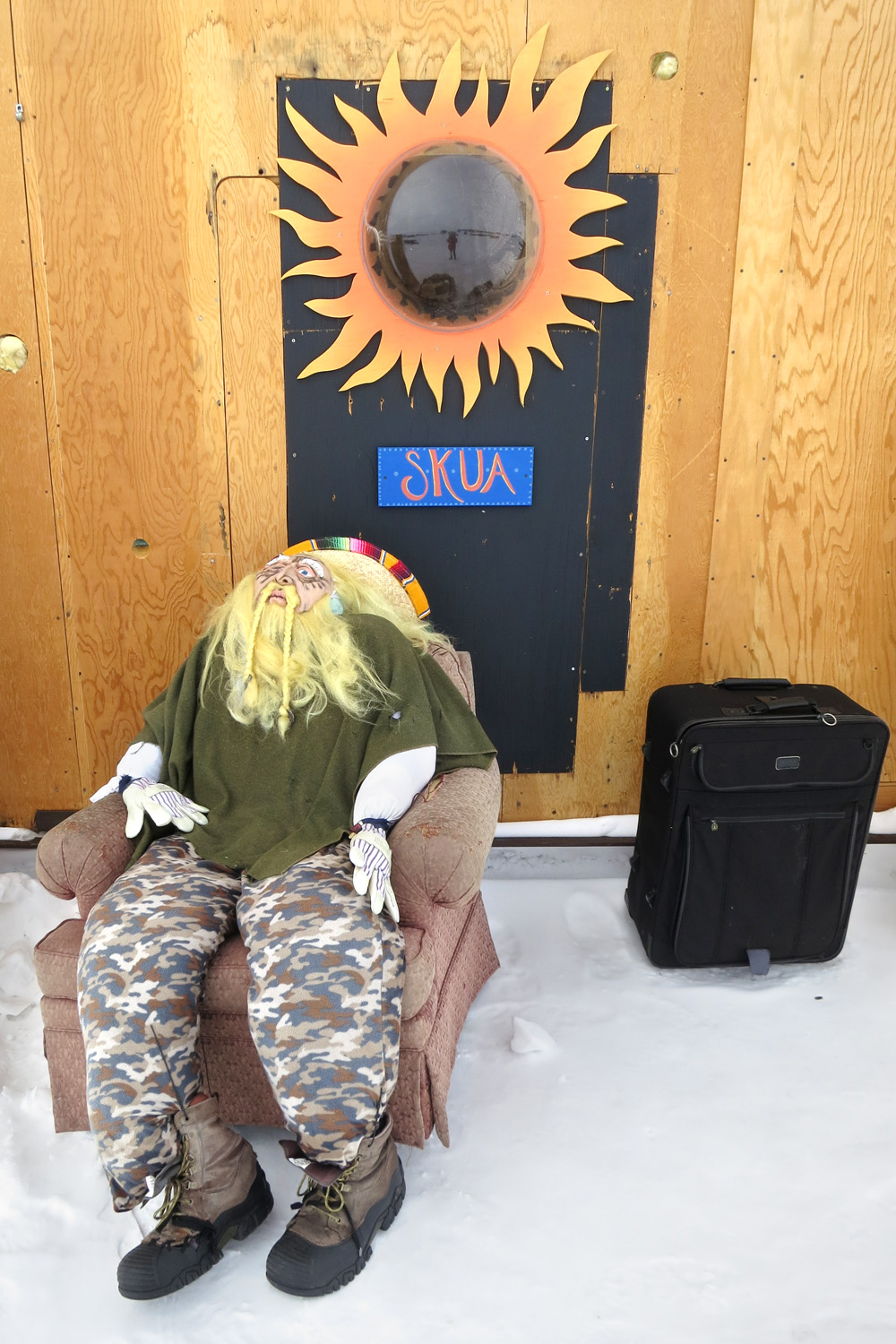
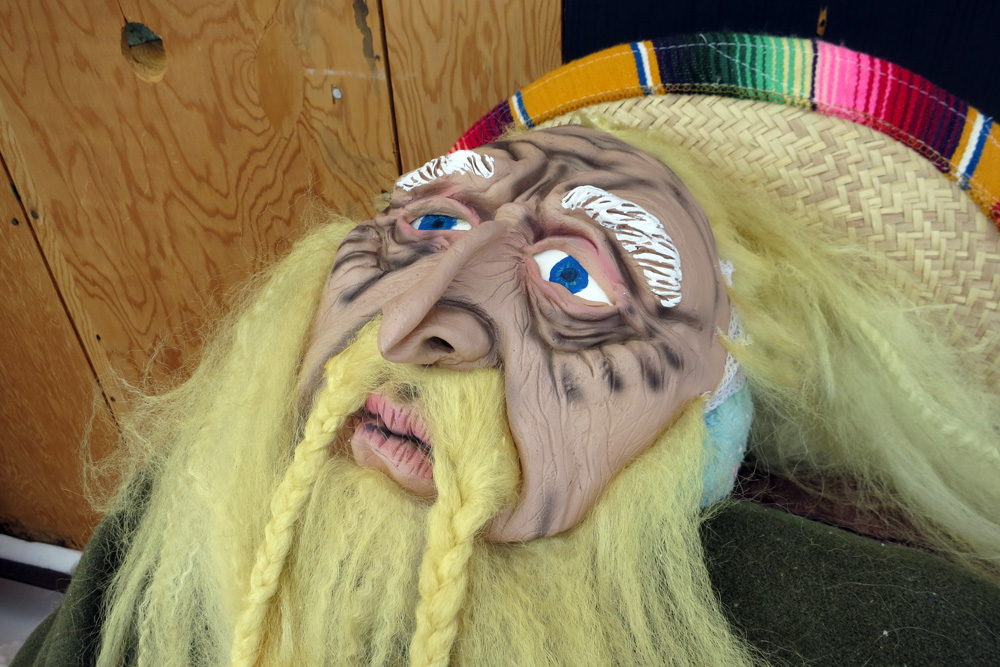
-- Geoff
Wednesday, 2nd January, 2013
South Pole! (John)
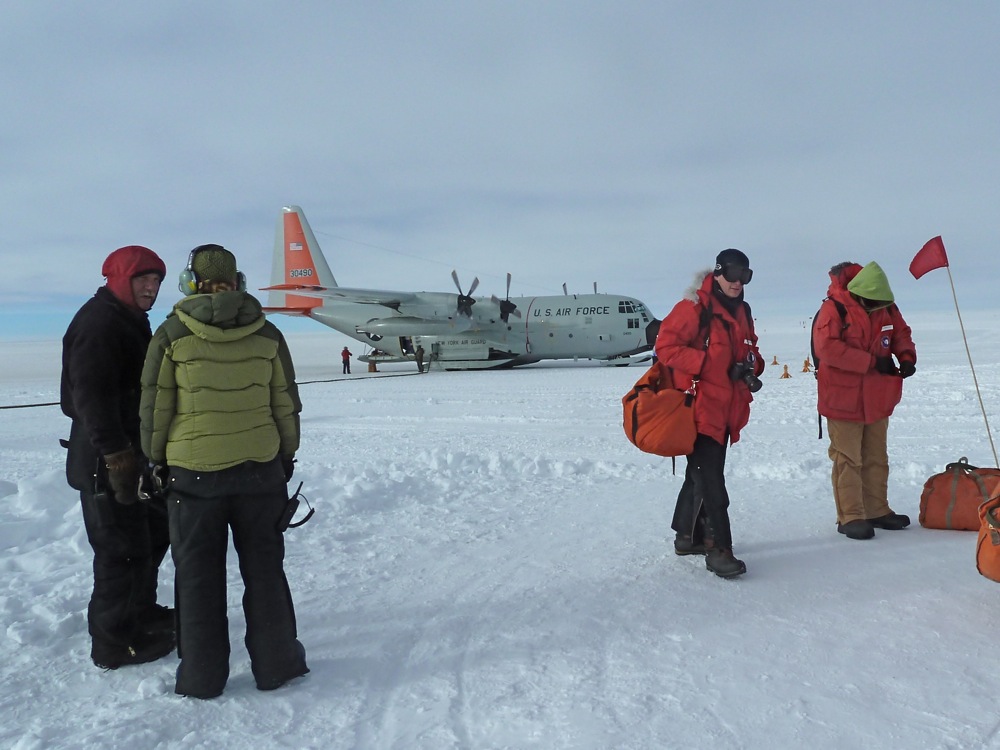
More later - at the next satellite pass!
Wednesday, 2nd January, 2013
We finally got here. (John)
It can take as little as two days to get from Sydney to South Pole, but this time it's taken us two weeks. Most of the problem has been the very warm weather that has turned the Pegasus ice runway into a kind of slushy swamp, but being in McMurdo over the whole Christmas/New Year period didn't help, either.
Today started out as more or less a repeat of 30 December; out of bed at 6, into the shuttle (this time a Delta), at 7:15 then bumping and grinding through the ice towards Pegasus. Just a couple of miles from the airfield we slithered to a halt, the Delta completely bogged.

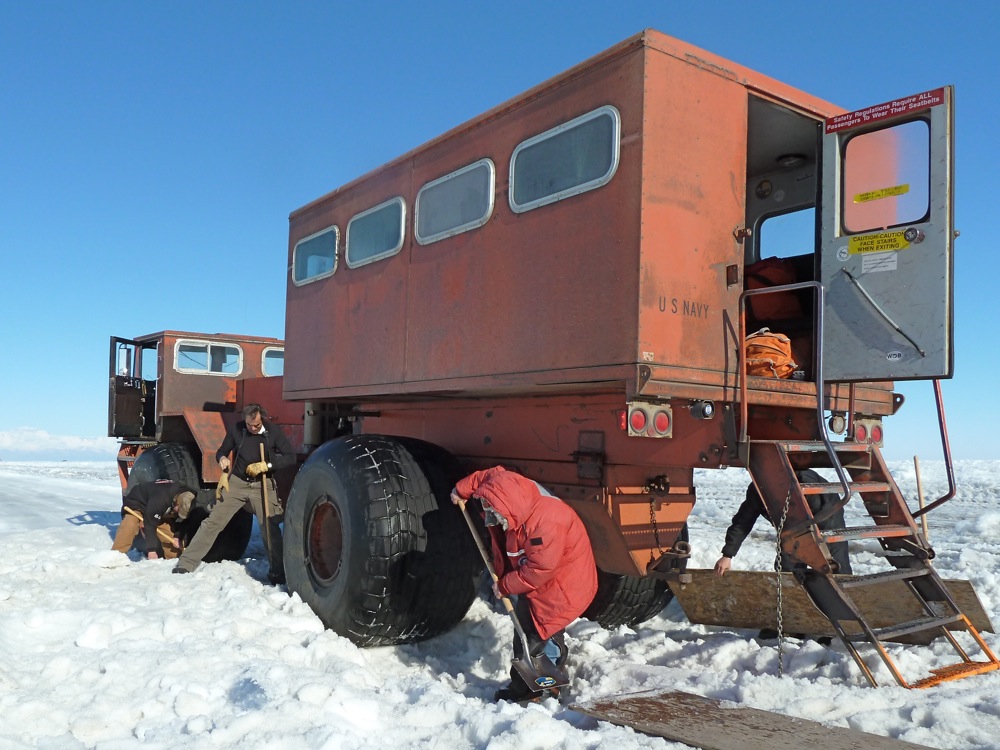

Finally we're off-loaded at Pegasus, sit around for an hour (some of which was spent watching the "Ivan the Terrabus" music video on my laptop), climb onto "our" LC130, and two and a half hours later (exactly the same time as it took us to drive from McMurdo to Pegasus in the Delta), we're at South Pole.
It's currently -23C here, but fortunately with little wind. The altitude is a bit over 2800 metres but, because of the cold, the air pressure is even lower than one would expect - corresponding to about 3000 m.
All of the equipment we sent from UNSW has arrived, but a couple of boxes sent from the University of Arizona are still in Christchurch. We should get it in the next couple of days. Meanwhile, we'll repack our stuff ready to put in a Twin Otter for Ridge A, practise putting up our tents, make some little bits and pieces we still need, and marvel as our bodies adjust the pH of our blood to acclimatize us.

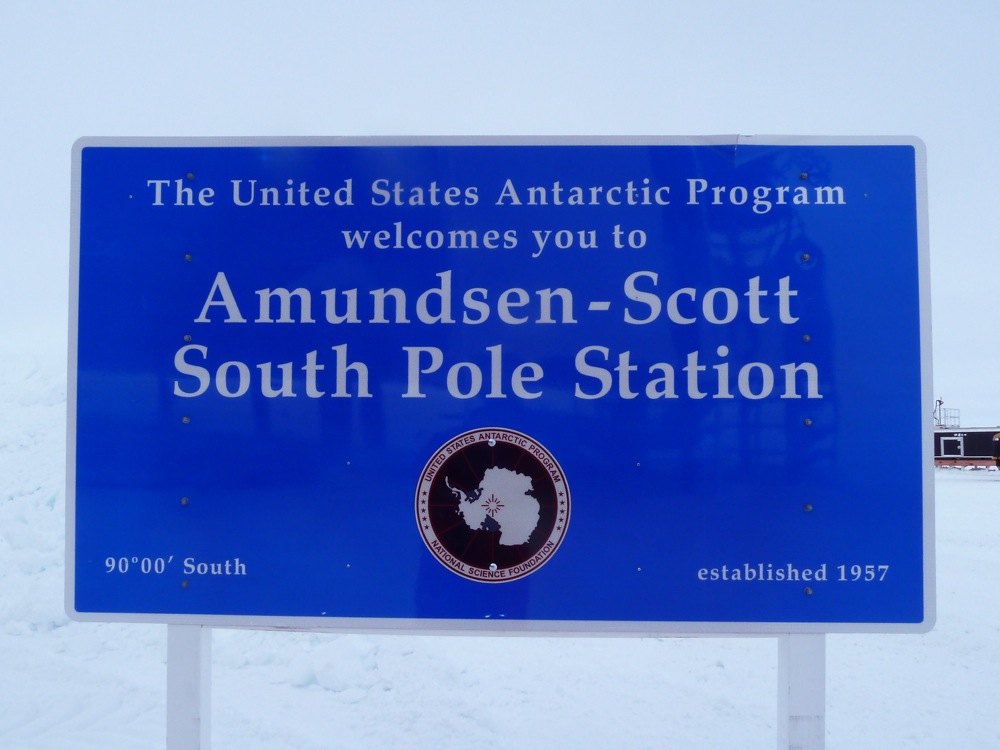
Thursday, 3rd January, 2013
Work begins (Geoff)
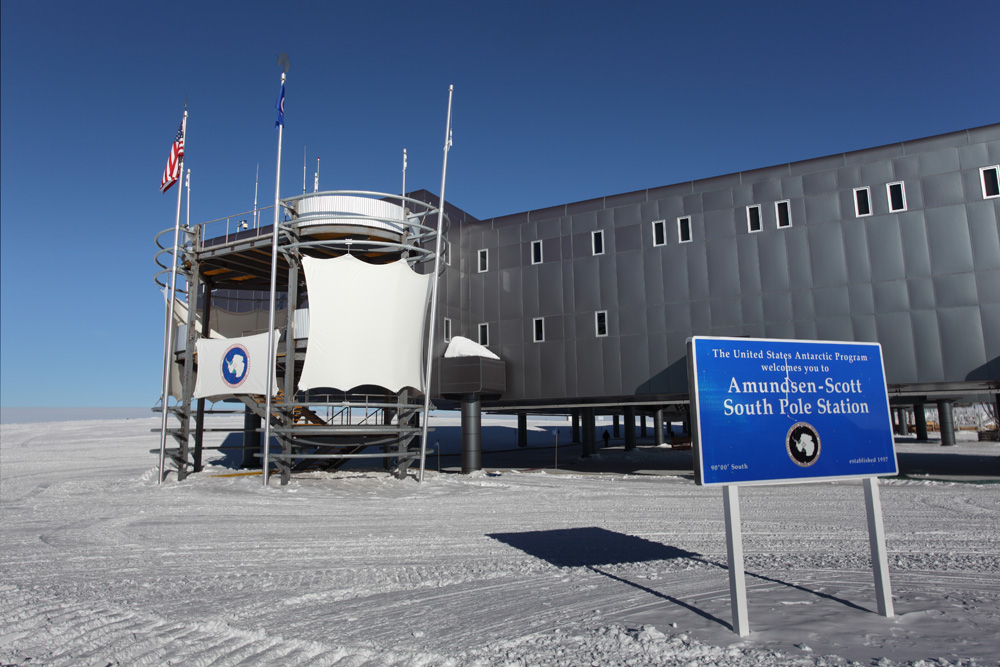
We were treated to nice blue skies here today; a welcome change from yesterday's grey overcast conditions. After some snow mobile training and hero shots at the ceremonial South Pole, we began unpacking our crate full of engines, tools, electronics, etc. Here are just a few quick photos, and a timelapse of us unpacking the crate, taken inside a large tent:
And here are the photos:
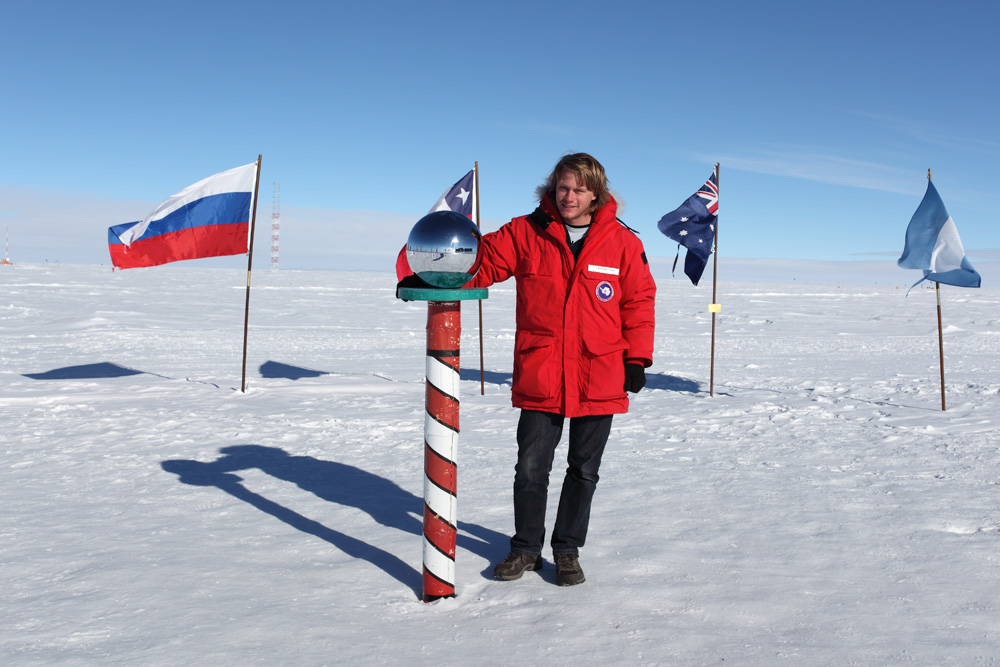
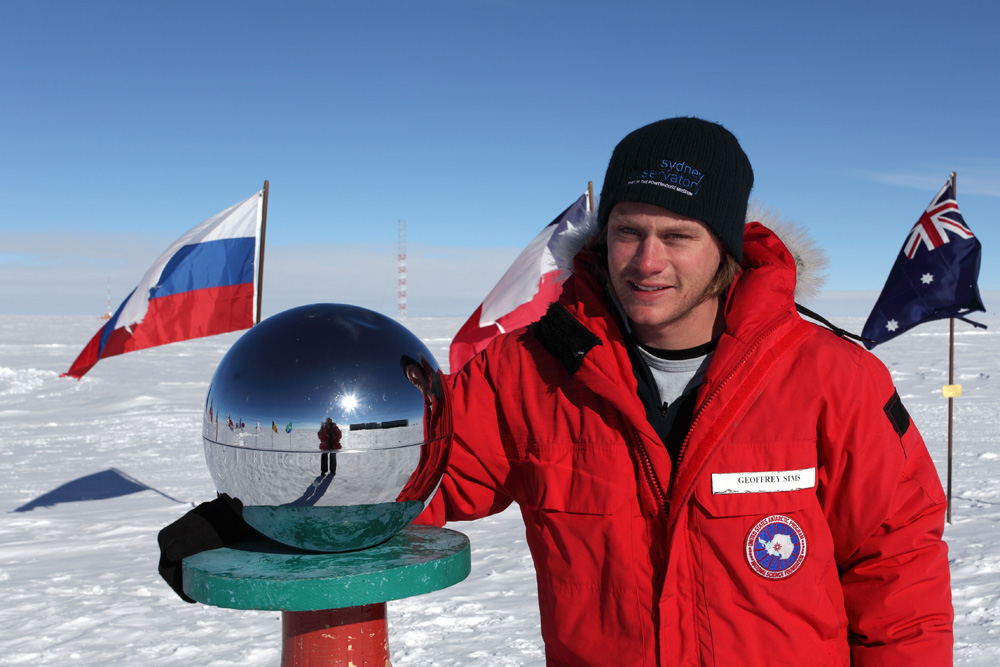
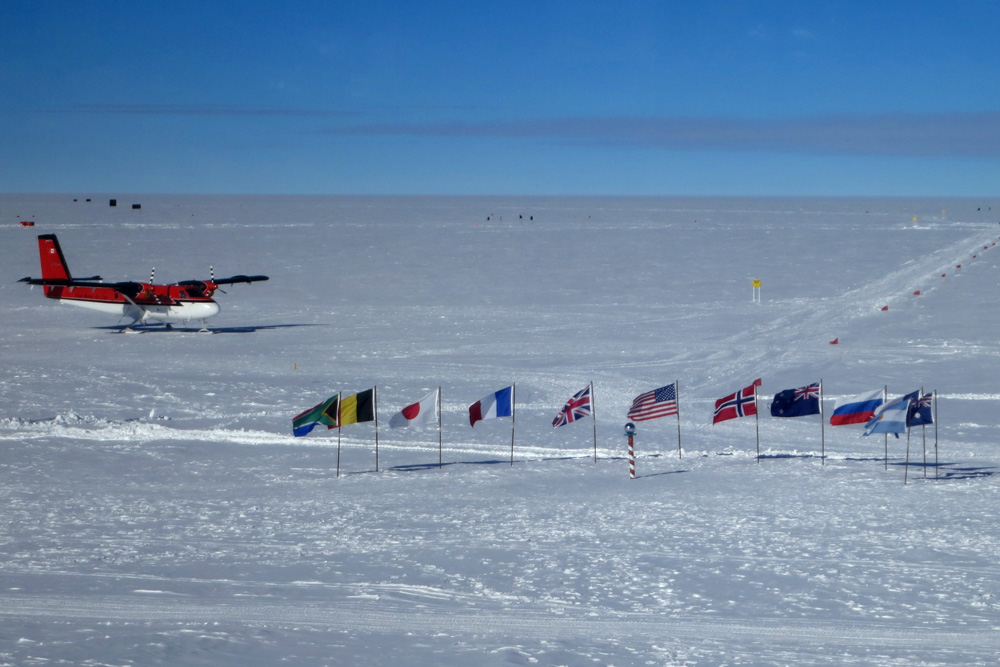
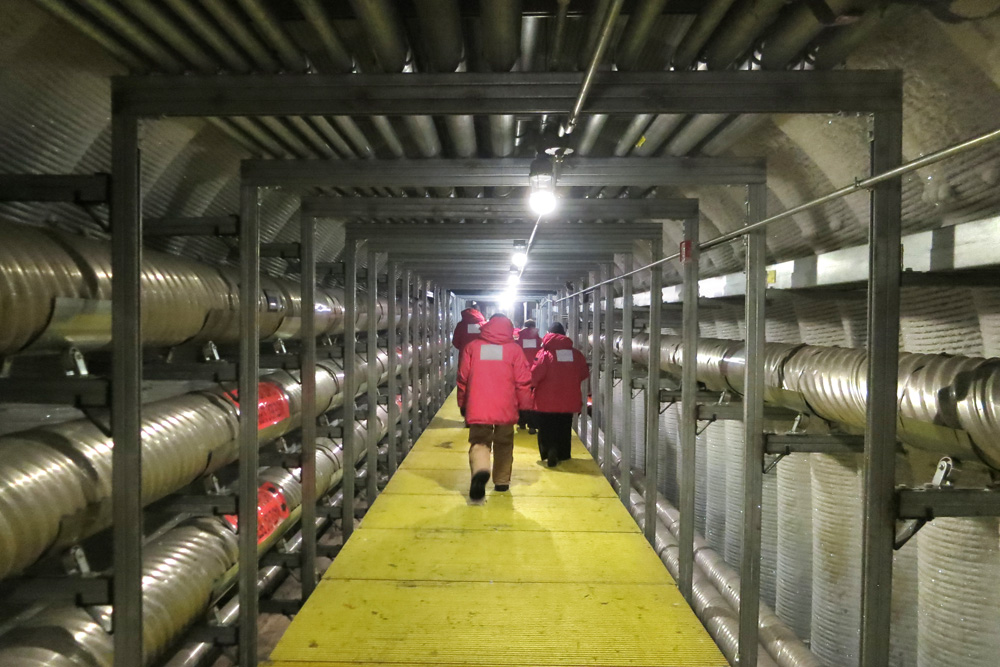
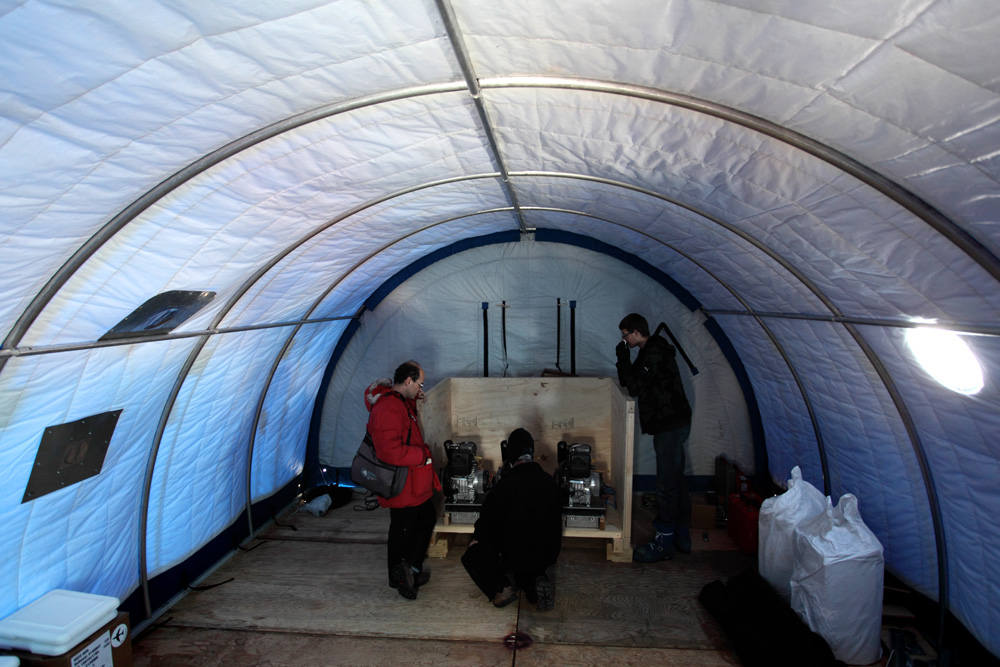
By the way, the blogs may be a little more sporadic than usual. This is because we do not have internet connectivity 24/7. Instead, the South Pole station relies on decomissioned geostationary satellites, whose orbits have decayed enough such that they are visible from the Pole (typically this is not the case). This results in about 4 hours per day, per satellite, of available internet time. They are now using three satellites, so we have internet approximately half the day. The schedule is made available on the intranet, which is (of course) available 24/7. Here is how it looked shortly before posting this blog:

We do, however, have access to e-mail 24/7, in which we are able to use a USAP specific e-mail address and the Iridium satellite data link, to e-mail both internally and externally whenever we like. We can send attachments too, but with a limit of 70 kb per e-mail.
-- Geoff
Thursday, 3rd January, 2013
Our first day at Pole. (John)
We deliberately took things easy today as we acclimatize to the altitude. The station have provided us with a Weatherhaven tent to work in, and this will make a perfect workshop and staging area for us. It's in the "Dark Sector" next to the main astronomy laboratory building
After breakfast we kicked off with snowmobile instruction, after which Abe and Nic took all of the loose pieces of equipment across to our tent. Daniel and I went to the Comms. Shop and organized three walkie talkies for the team. There was also just enough time for Geoff and I to take a few quick photos of each other at the Ceremonial South Pole. This is is the classic South Pole photo op., with the traditional barber's pole surrounded by the 12 flags of the original 1961 signatories to the Antartcic Treaty.
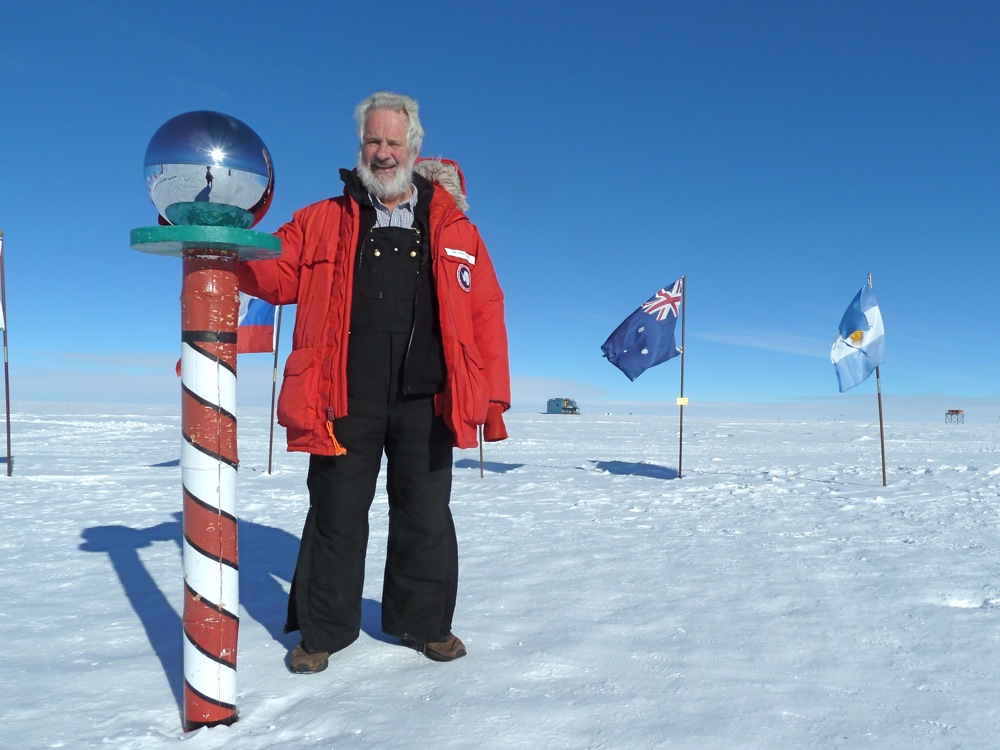

After a long lunch, we walked out to our Weatherhaven tent and unpacked the crate with all our gear in it - tools, three spare engines, engine oil, and two very heavy tents we'll use at Ridge A to put over the PLATO modules. These will heat up in the sun, and hopefully bring the temperature up from around -44C to perhaps -15C. We also unpacked our 60 spare batteries, and stood back and admired our collection of things.
Life at South Pole is good - at least in summer. It's still around -24 C, with just enough wind to make it feel cold. There's no sense of day and night of course. It's midday all day, as the sun circles around through all points of the compass while staying at the same distance above the horizon. To impose some kind of a routine, we keep to New Zealand time, with breakfast, lunch and dinner at the times you'd expect. (New Zealand time is convenient because McMurdo is in that time-zone, and all our logistic support comes from NZ via McMurdo.)
The other diurnal cycle imposed on us is that of the satellites, which give us our only broadband communication with the outside world. We have Iridium available 24/7, but for any web-based work (such as updating the blog!) we need to wait until one of the once-geostationary satellites is available. So, the blog will be updated now somewhat sporadically, and at odd hours
Another somewhat confusing thing here is the concept of north. From South Pole you cannot, of course, travel in any other direction, which makes it less than useful for describing where you're going. Grid North is therefore defined to point along zero longitude, with the other "grid" directions defined appropriately. Thus, flying from McMurdo to South Pole we are of course heading due south but, as it turns out, roughly due "grid" north. Given that the south magnetic pole is currently wandering around somewhere in East Antarctica ("east" in a "grid" sense), magnetic south is a more or less useless concept here, as is a magnetic compass.
Craig and I, possibly due to our advancing years, have been granted the privilege of staying in the new station, while the rest of the team have been dispersed to the "Hypertats". The new station has quite a sci-fi feel to it, and is extremely comfortable. My room is like a (rather small) university college room, complete with individual temperature control, local network access (and when the satellite is up, full Internet access), a bunk bed (with a stool to help me climb into it), plus plenty of storage.

After dinner we met with one of the meteorologists, who taught us how to describe the local weather in meteorologist-speak. We'll need to do this when we're at Ridge A, to let the incoming Twin Otter pilots know what to expect. We learned that things like surface definition can be "nil", "poor", "fair" or "good". Apparently things never get any better than "good", which must be a bit depressing if you're a meteorologist.
Thursday, 3rd January, 2013
Snowmobiles. (John)
Today we got our snowmobile licences, following instruction from one of the Station facilities managers. We have the choice of two.


Both skidoos are capable of 100 mph. The shiny new one has a speedometer and an offical-looking sign that says: "Maximum speed 10 mph." The old skidoo has neither. I wonder which one we'll choose...

Friday, 4th January, 2013
More work (Geoff)
I will spare everyone the details of our movements today, but basically we just did more preparation of our cargo for deployment to Ridge A, mainly battery banding and wiring. We used a Skidoo to transport some extra equipment:
And once in the comfort of our naturally solar-heated work tent, I shot some timelapse footage of our activies:
And finally, just a few other random snaps for the day:
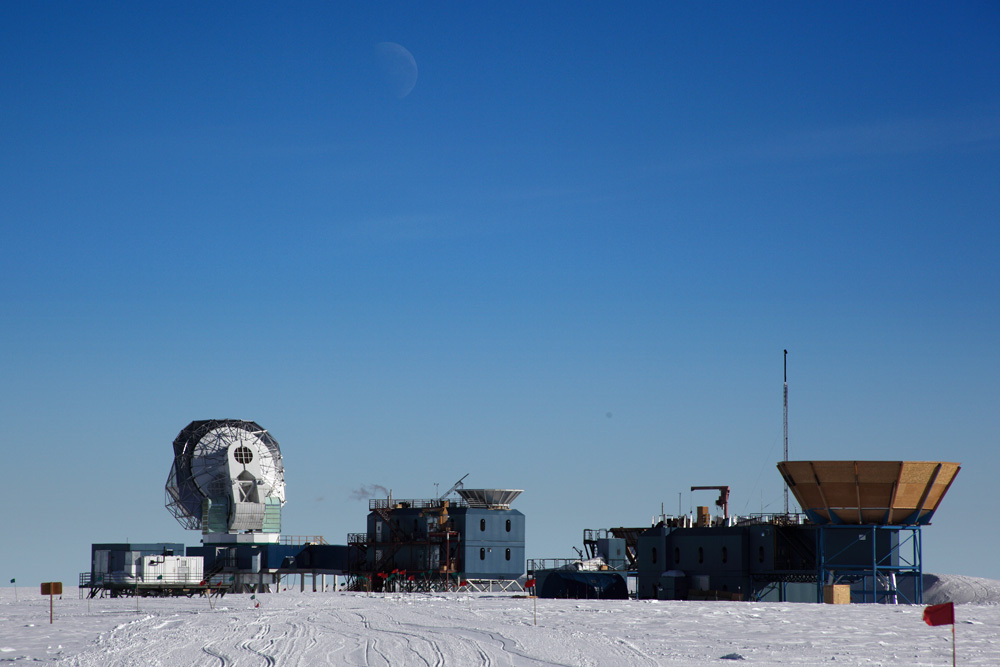
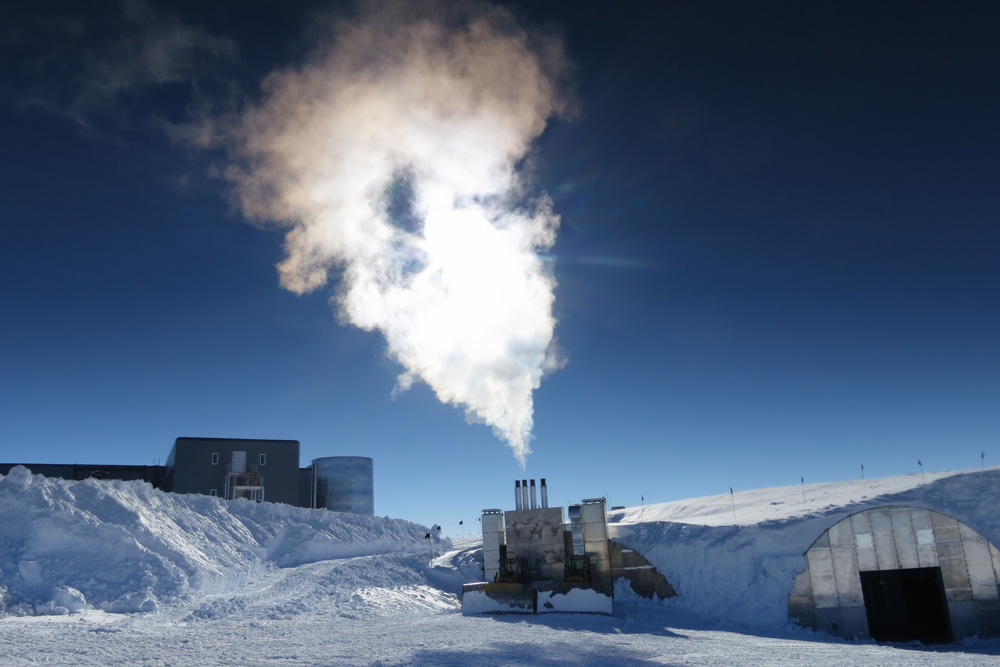
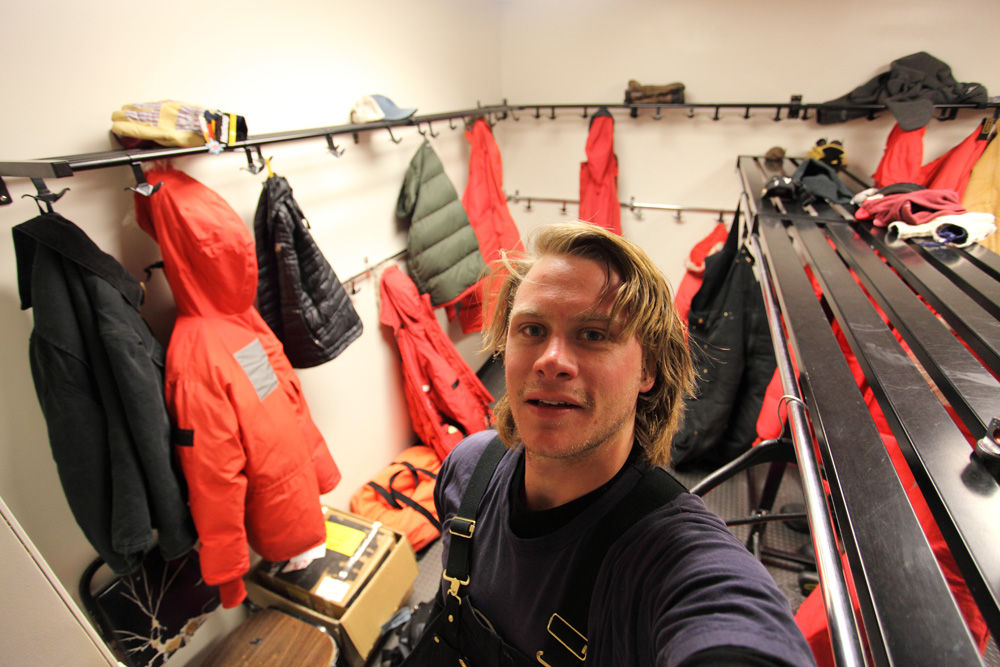
-- Geoff
Friday, 4th January, 2013
Getting through our tasks. (John)
While still in McMurdo we made up a fairly comprehensive list of things we need to do, both here and at Ridge A. The more planning we can do at low altitude, the better!
First though, here are a couple of photos of the "new" station which opened in 2006. When I was last here, in 2003, the old South Pole dome was still acting as the main station, with the new station just starting construction. It's a very imposing structure, consisting of two double-storey "pods". They are on stilts to minimize snow accumulation, and separated from each other by a fire door. In principle, one half of the station could burn down and we'd live in the other half. However, an architectural oversight has placed the galley in one pod and the bar in the other, so it's not clear how this would work in practice.


Leaving the station, we dress up in all that ECW gear we joked about in McMurdo, and walk about a kilometer to the MAPO Astrophysics building. (MAPO stands for the Martin A. Pomerantz Observatory). Pomerantz was a US scientist who pioneered the use of the South Pole for astronomy in the second half of last century. A wonderful talk he gave at the Astronomical Society of Australia conference in Hobart in the 1980s was one of the things that inspired me to become an "Antarctic astronomer".
The MAPO building is in the "Dark sector" of the station, an area that is reserved for astronomy and is thus kept radio-quiet and free from light pollution. Other sectors are the "Quiet sector", reserved for seismology and thus not welcoming of vehicles or folk trudging by in heavy boots; the "Clean Air sector", where daily samples are taken of the cleanest and least polluted air on earth (and from which vehicles are also banned); and the Antenna Field, where the HF antennas and satellite communications dishes are located. The Antenna field is also off-limits without authorization, as it is too easy to get fried there.
Heading out to the Dark Sector takes you across the skiway. As being hit by an LC130 is right up there in the "dumb ways to die" category, a warning beacon is installed to either side.
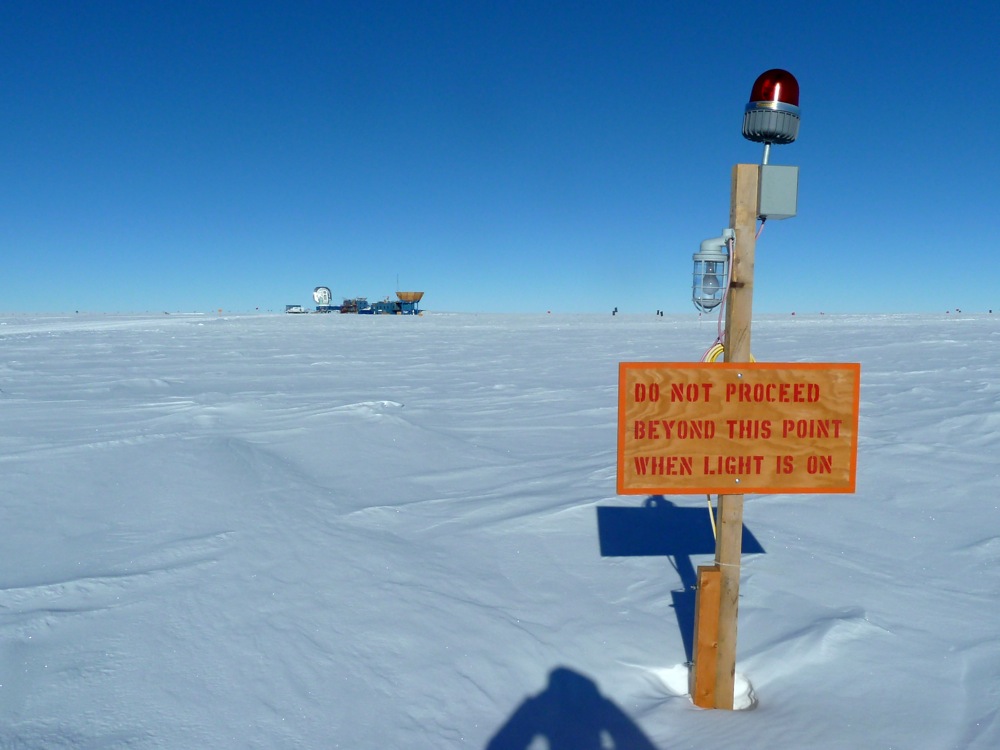
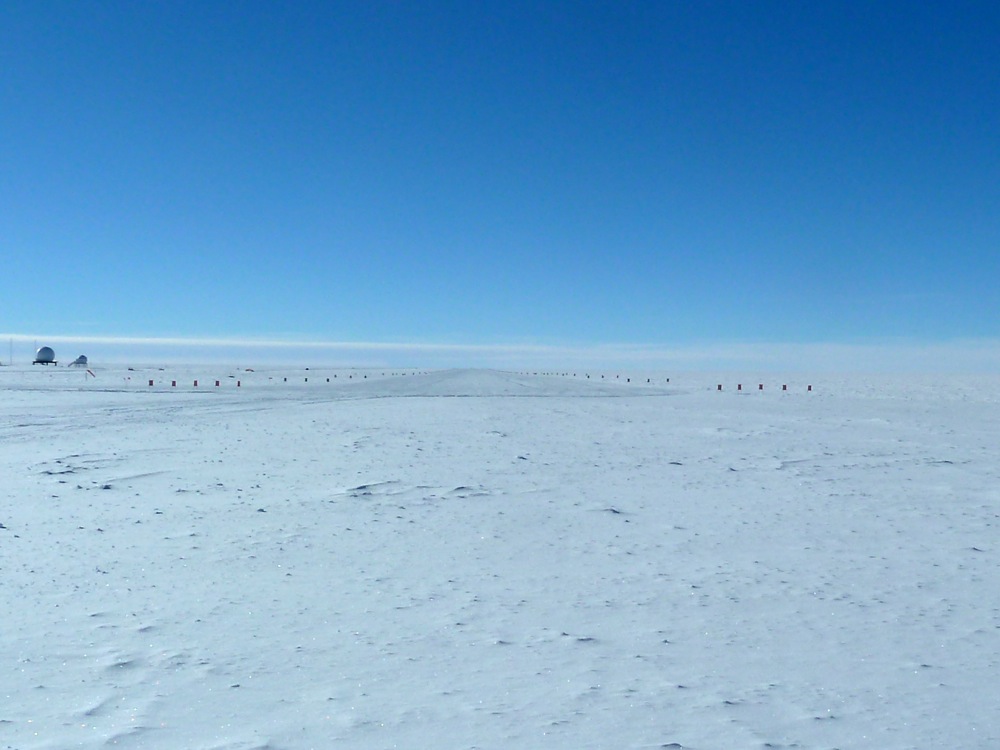
About a kilometer from the main station is the MAPO building. It's a pleasant walk in these conditions, and we do it several times a day.
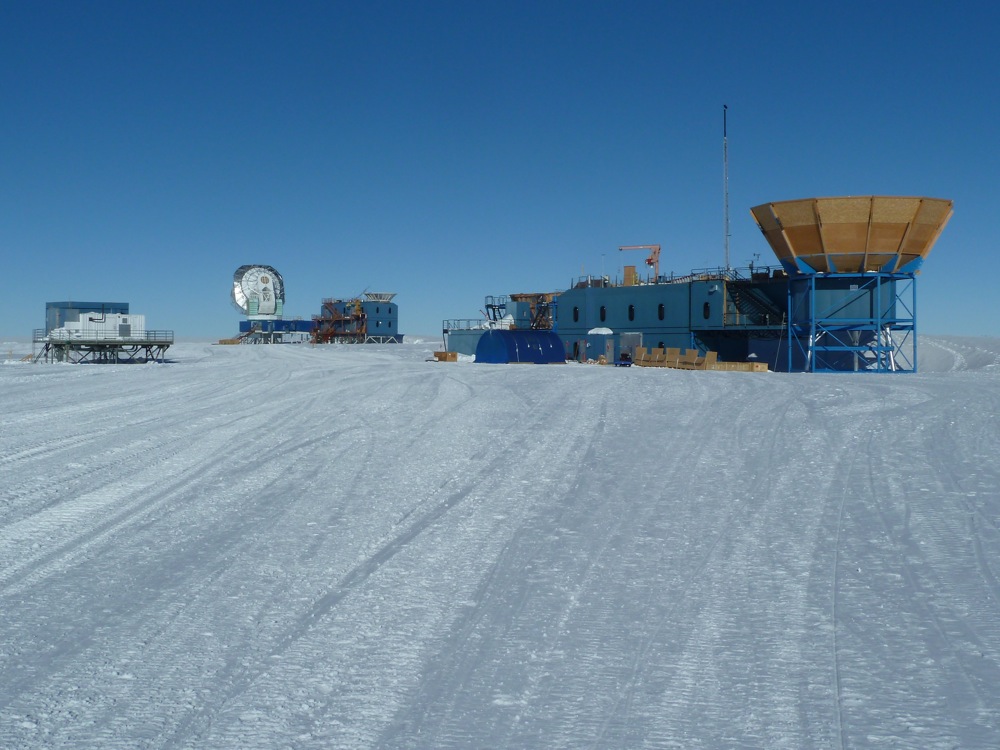
One of our tasks is to "band" our new batteries into blocks of eight. Our PLATO observatory that we will be servicing at Ridge A uses 108 LiFePO4 batteries, weighing a total of about a quarter of a tonne. These batteries keep the system running when, for example, the sun is down and the diesel engines have got into one of their moods and are refusing to start.
These batteries are quite wonderful, but need to be restrained between two steel end plates to stop their sides from bulging. So, we're putting our new batteries together in blocks of eight, and putting tight steel bands around them with one of those tools they normally use on packing crates.

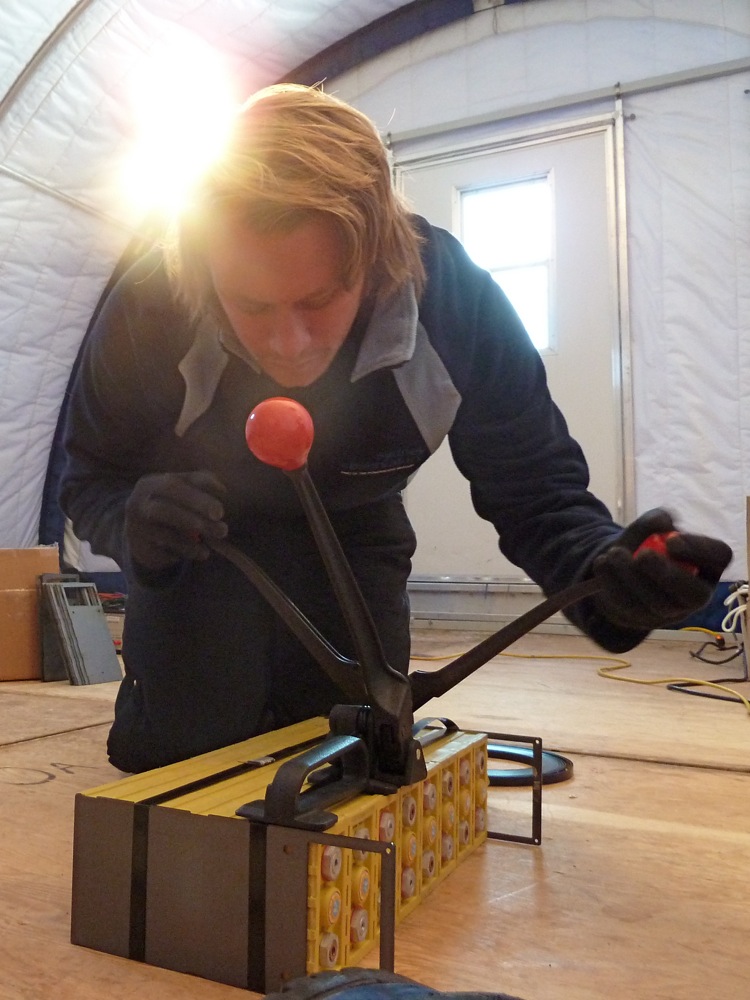
Saturday, 5th January, 2013
Tent (Geoff)
We put up our tent today. We intend to use the tent as a work area at Ridge A. It is easy to assemble (it took us just over 20 minutes, including unpacking of the boxes) and will provide a relatively warm work area:
We used an inside/outside thermometer to measure the effectiveness of the tent; the temperature was -19.9 degrees C (-3.8 F) outside, and 3.5 degrees C (38.3 F) inside, which is very promising.
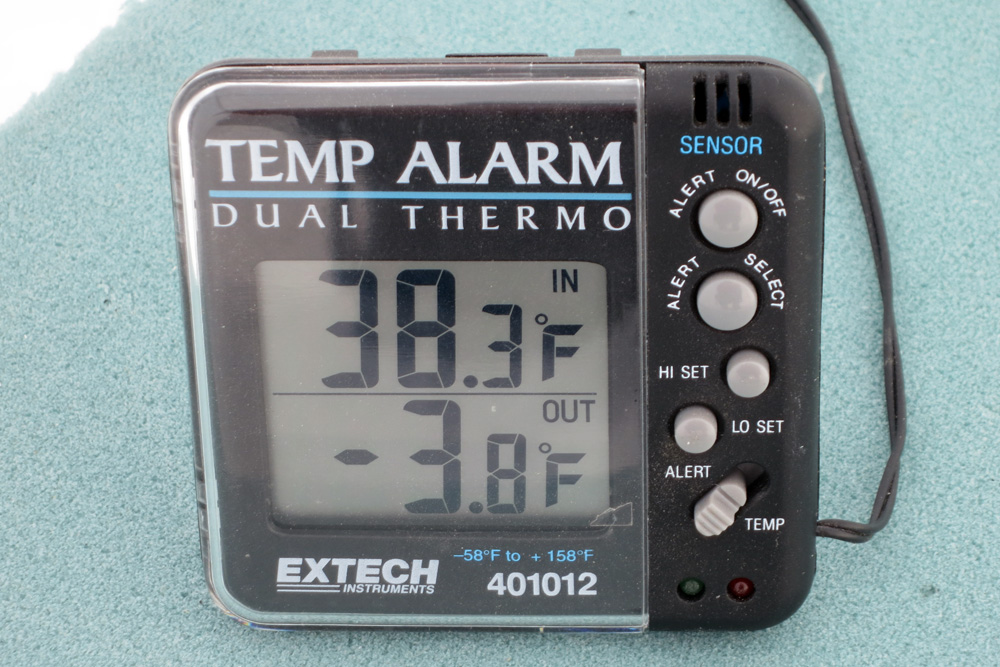
And a couple more pics:

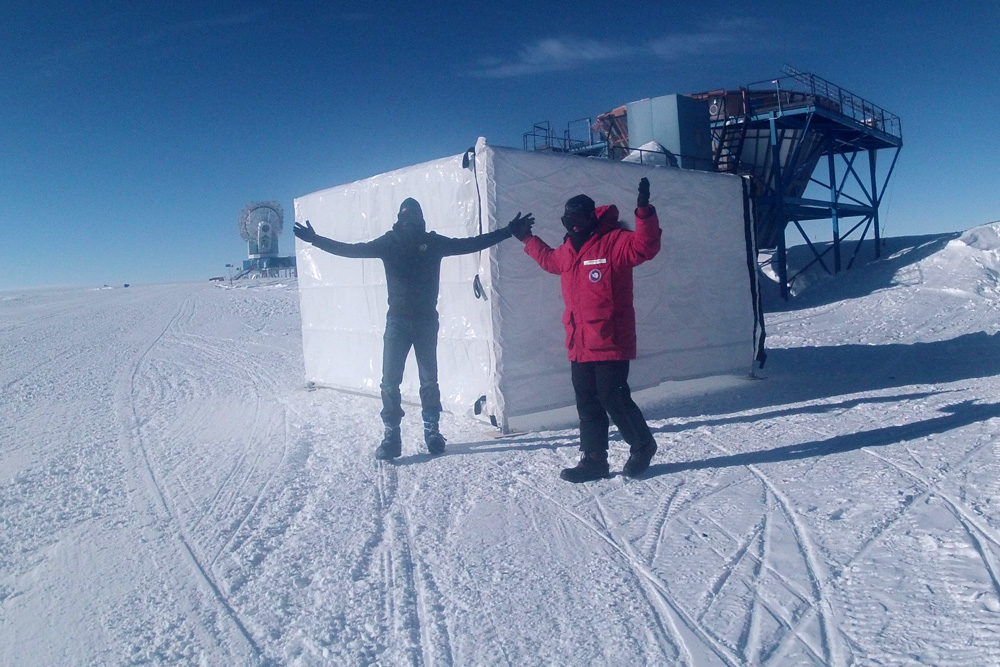
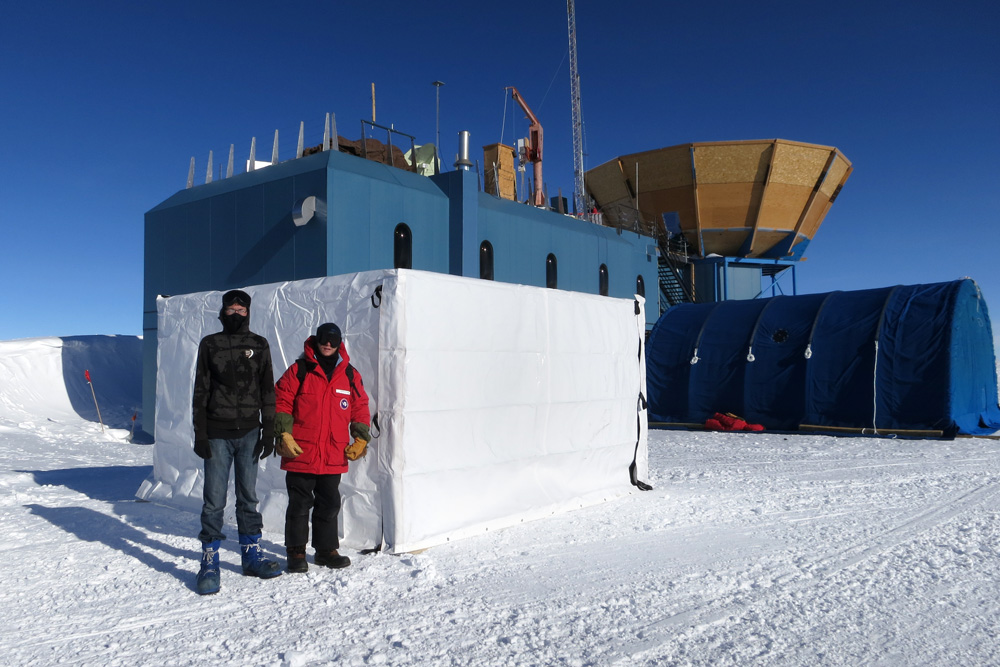
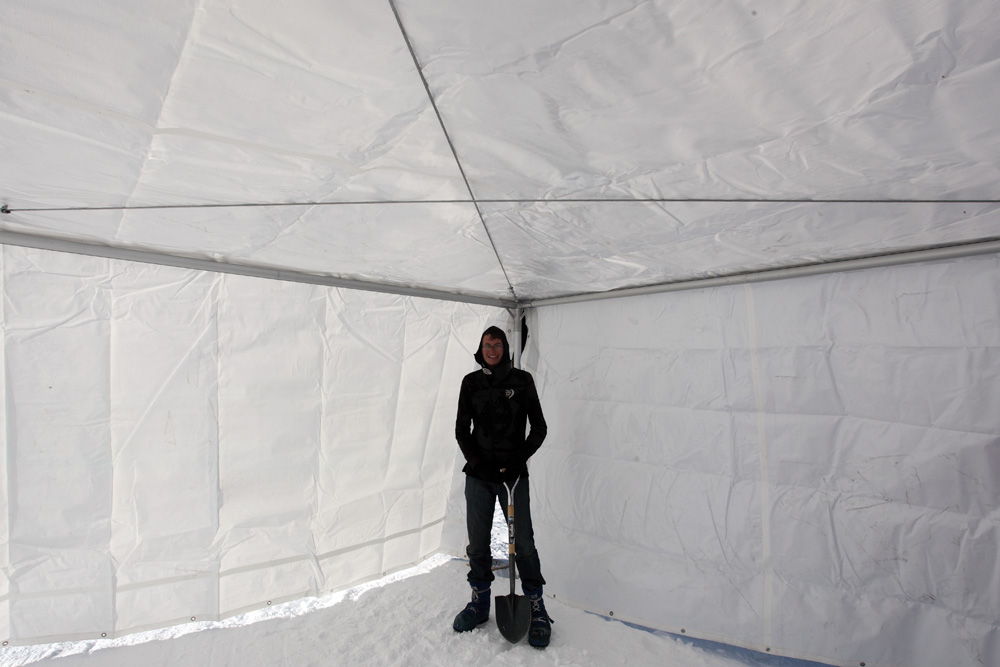
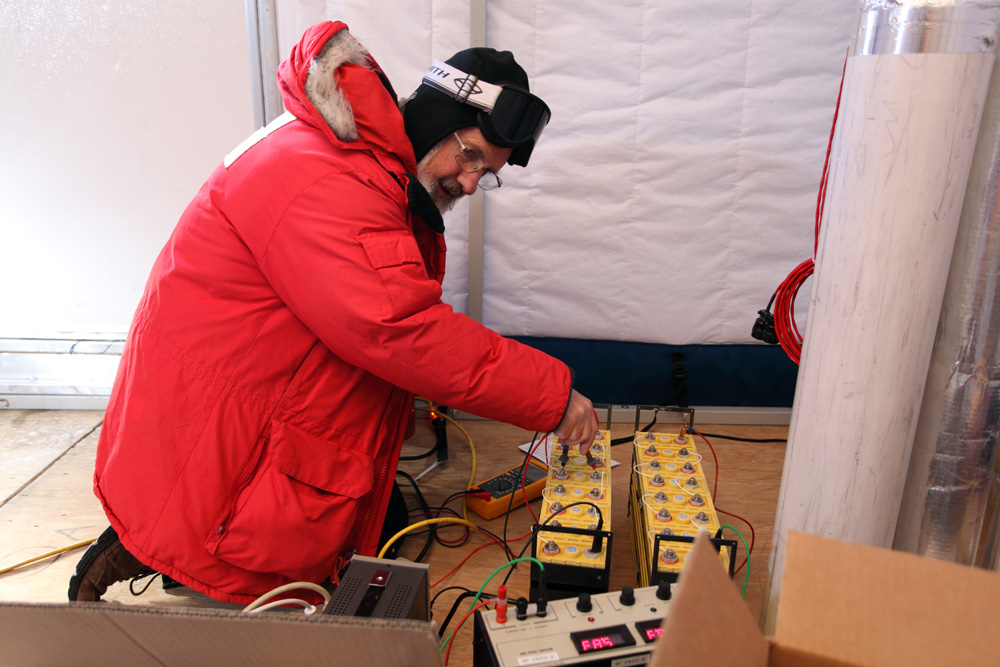
-- Geoff
Saturday, 5th January, 2013
Domestic duties. (John)
Being a scientist at the South Pole isn't just about making breathtaking discoveries about the nature of the cosmos. It's much more than that. For example, today I did my washing. South Pole has a good self-serve laundry facility, just as you'd expect. However, to save precious energy there are a few little "twists".
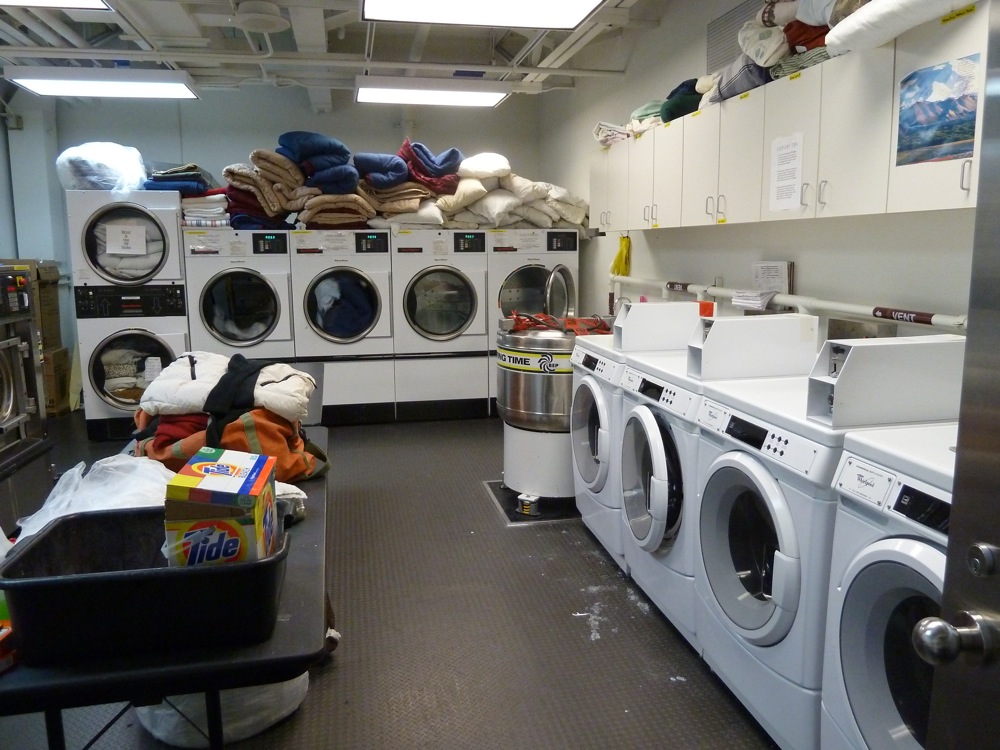
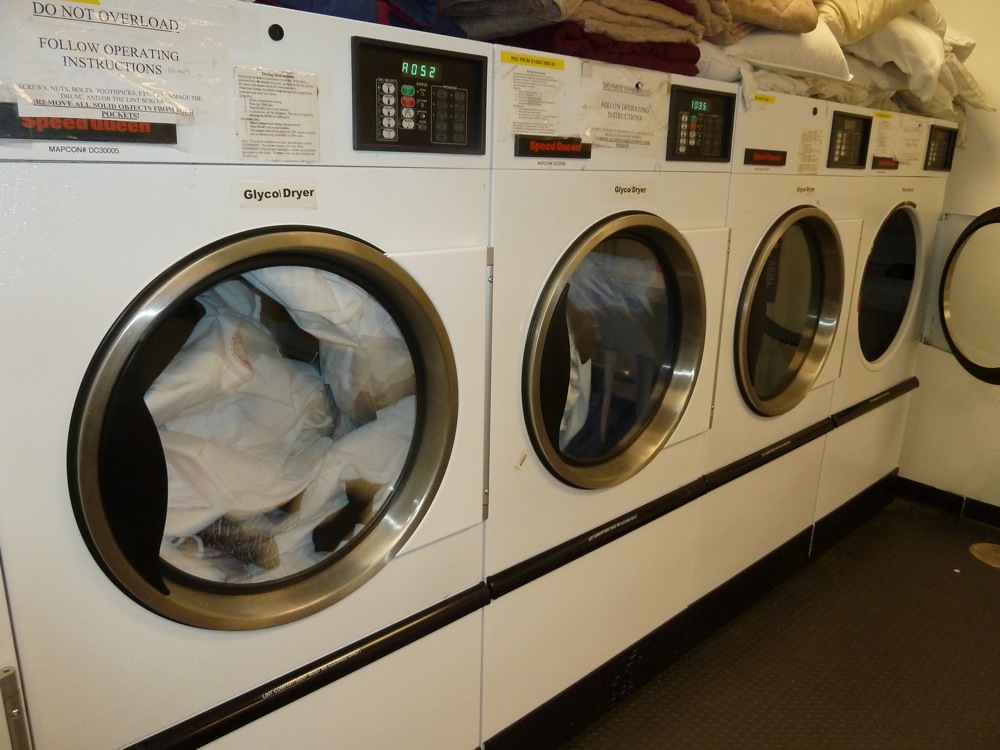
Instead of using electricity, the clothes driers are heated using glycol that is circulated from the diesel power plant, thus making use of heat that would otherwise be wasted. The room heating also makes use of engine waste heat.
Before being placed in the driers, clothes are put in a shiny metal centrifuge that spins the daylights out of them. Again, this saves energy during the drying process. An alarmingly frank graphic shows you what will happen if you stick your arm in the centrifuge while it's still spinning:

Oh, and it was also my turn today to clean the toilets and showers in our pod. Everybody chips in here to keep the place clean.
All in all, it's a wonderfully well thought-out station. In fact, I think we're prepared for just about any contingency...

Sunday, 6th January, 2013
Sunday at South Pole. (John)
Today is a day of rest (the station works a six-day week), so we took things fairly quietly, too. In the morning I discovered the UNSW team in a darkened computer lab, contemplating bright computer screens.
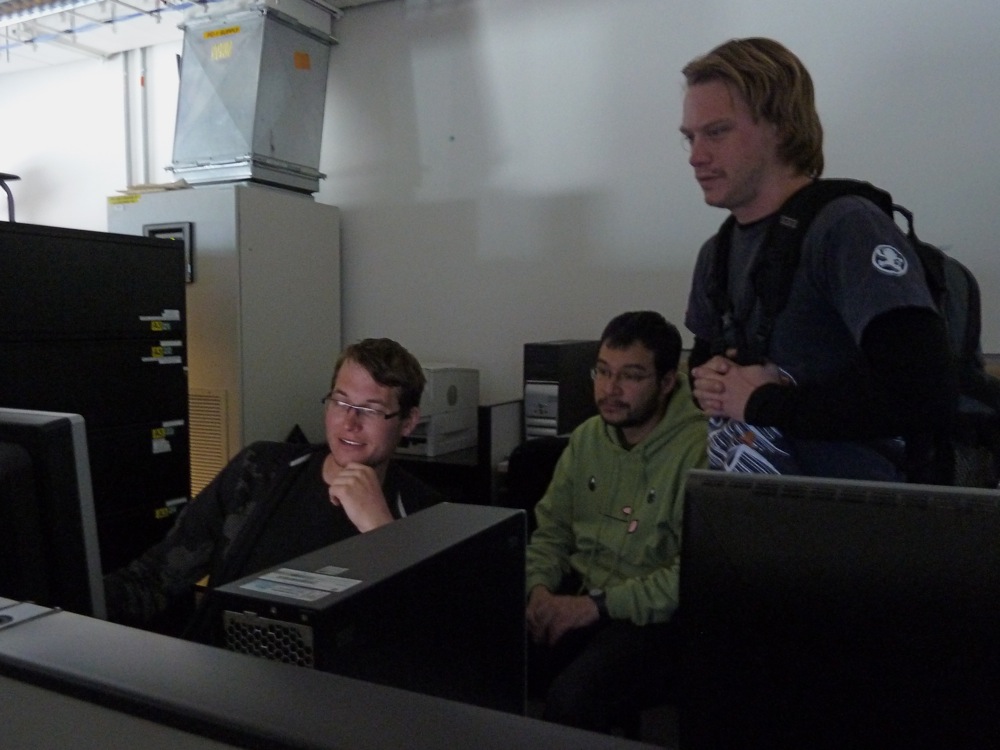
After brunch we made the 1 km walk out to our tent beside the MAPO building and worked our way through the various tasks.
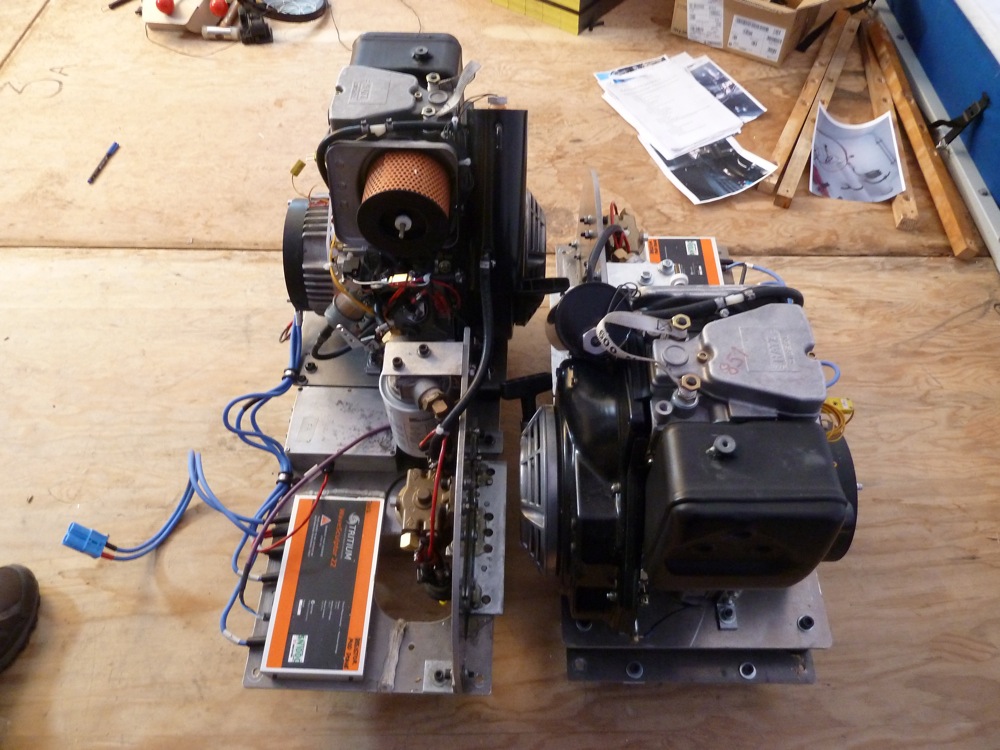
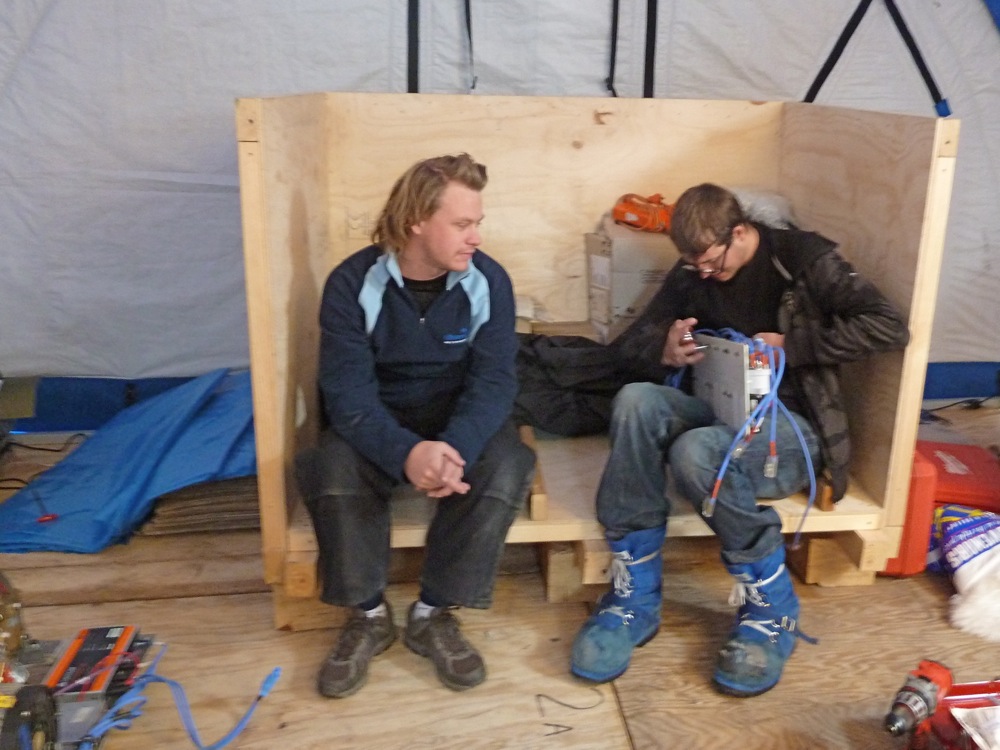
Actually, the band-sawing and all of other mechanical work is being done for us by Steele, who is the Astrophysics machinist during the summer. We'll introduce you to Steele shortly. Hanging around in the machine shop I am reminded that steel (the metal, not the person) can become very brittle in the extreme low temperatures of Antarctica. Here Daniel is holding part of the tow-bar from a bulldozer, what broke.

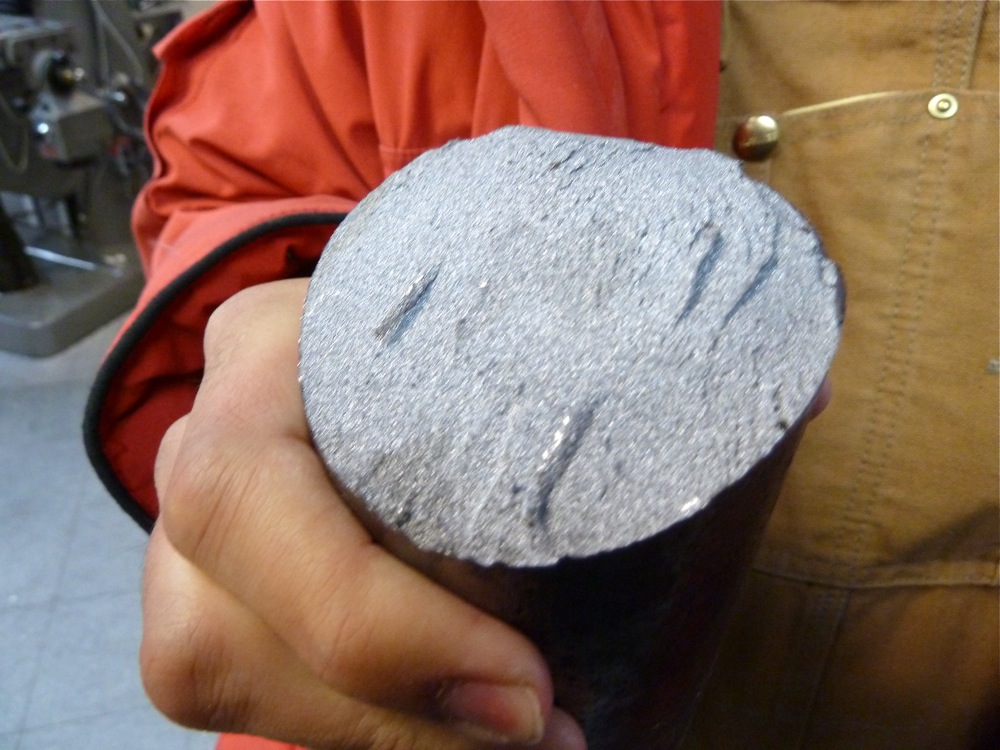
Later in the afternoon we all met in one of the conference rooms while Craig led us through the details of the deployment to Ridge A at the end of the week. If all goes well we will have five Twin Otter flights, spread over 7 days. Planning the deployment is complex; we are limited in space and volume on each flight, and ensuring each person and each piece of equipment is where it needs to be throughout that week is crucial.
Unfortunately much of Craig's equipment is still in Christchurch, waithing for a flight to McMurdo then down to us.
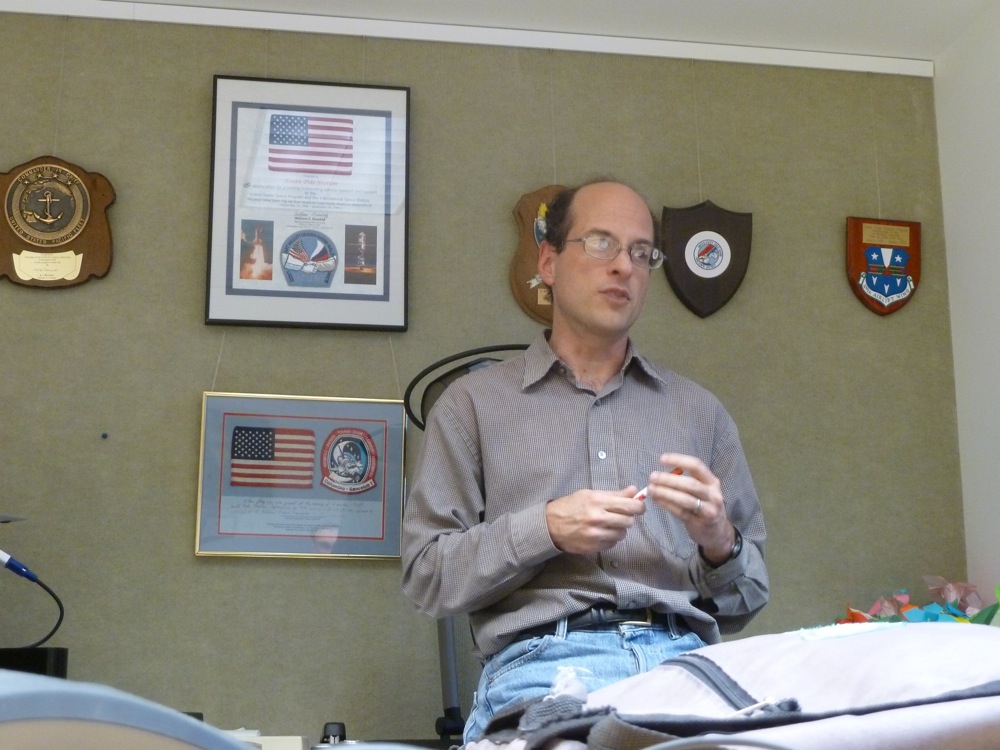
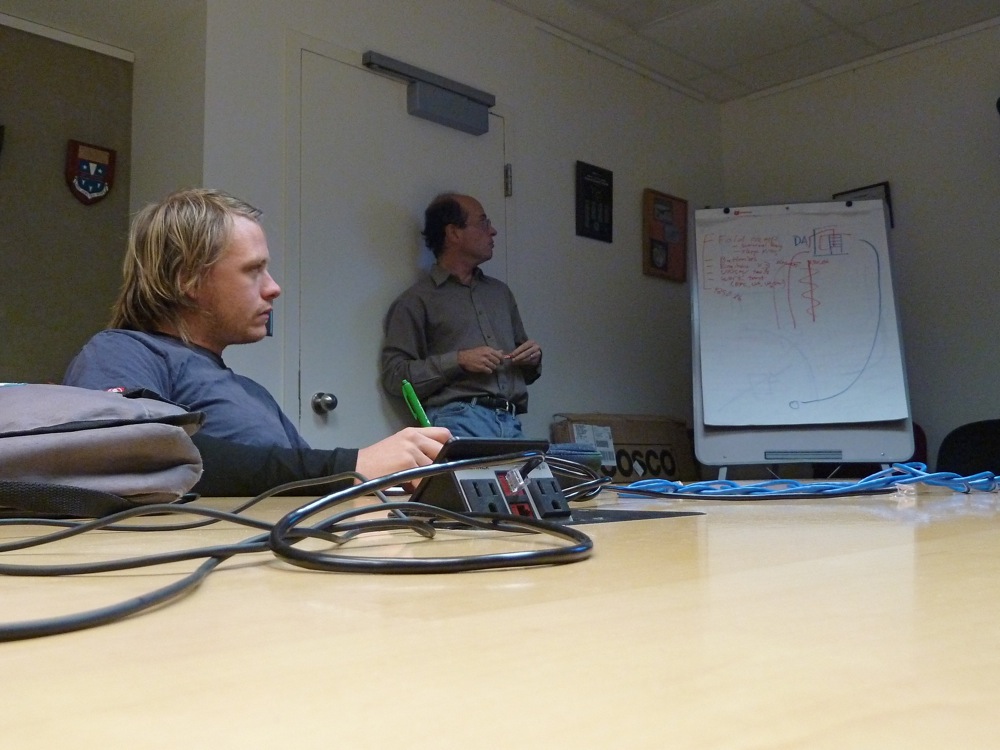
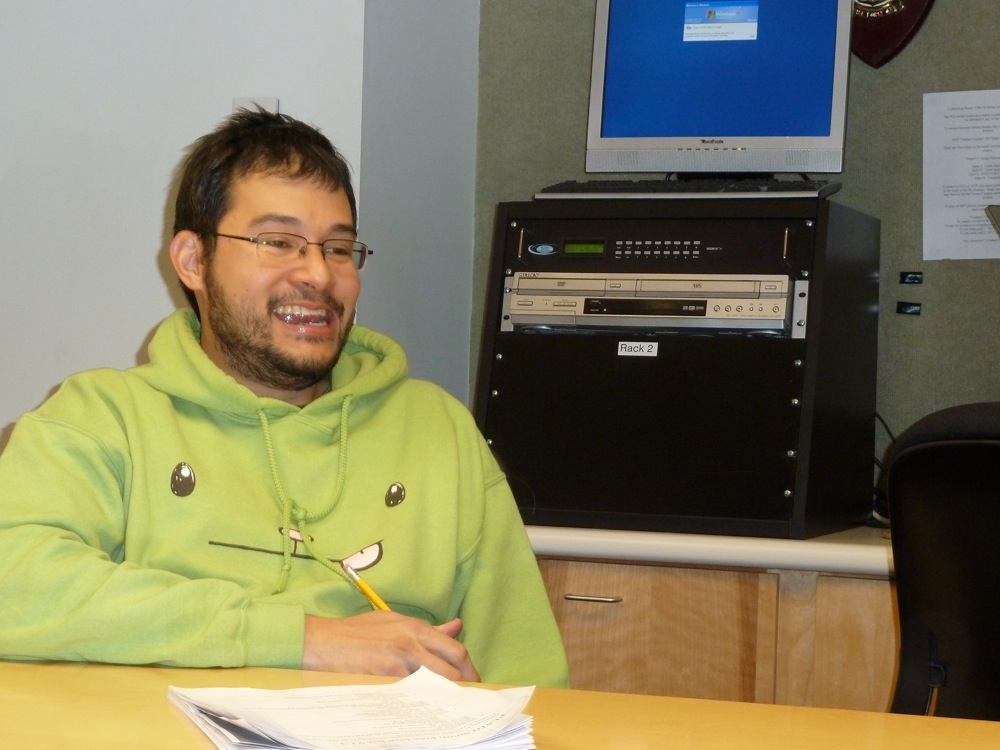
Monday, 7th January, 2013
Couple of pics (Geoff)
Nothing to report, so just a couple of random photos today.
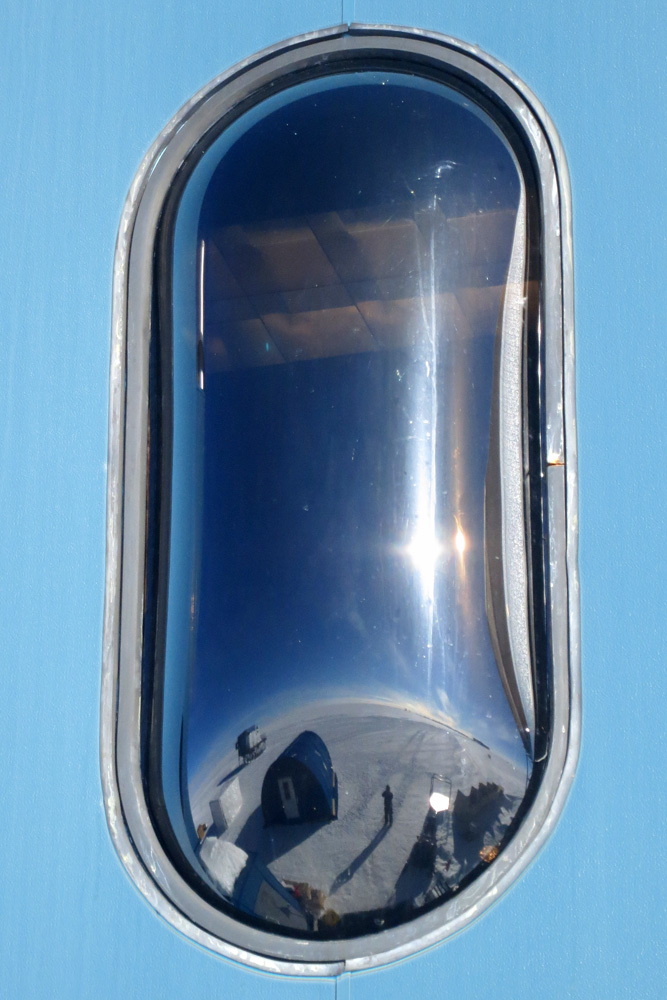
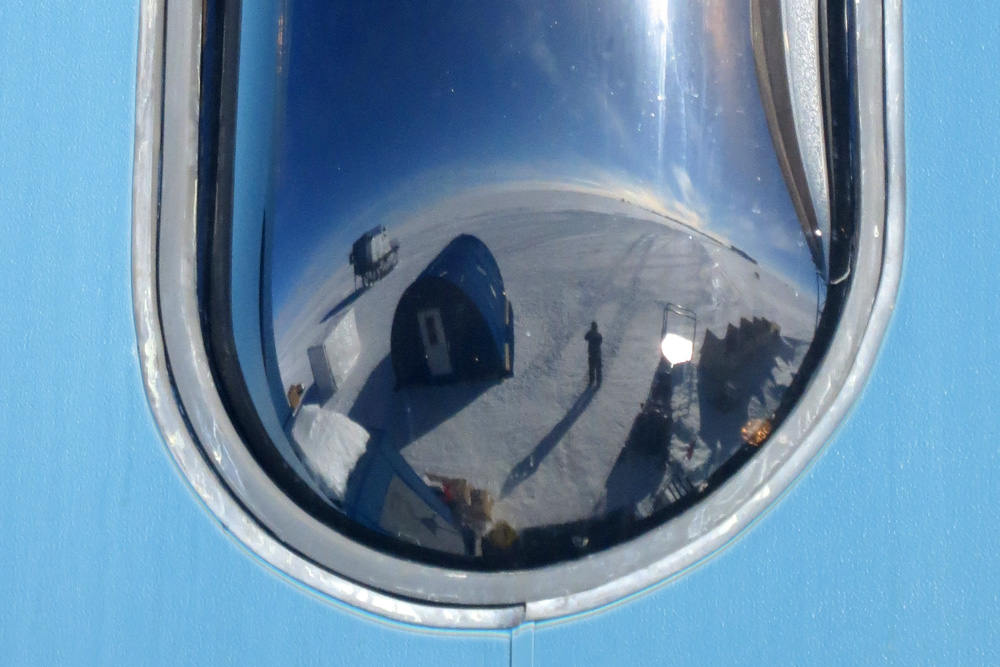
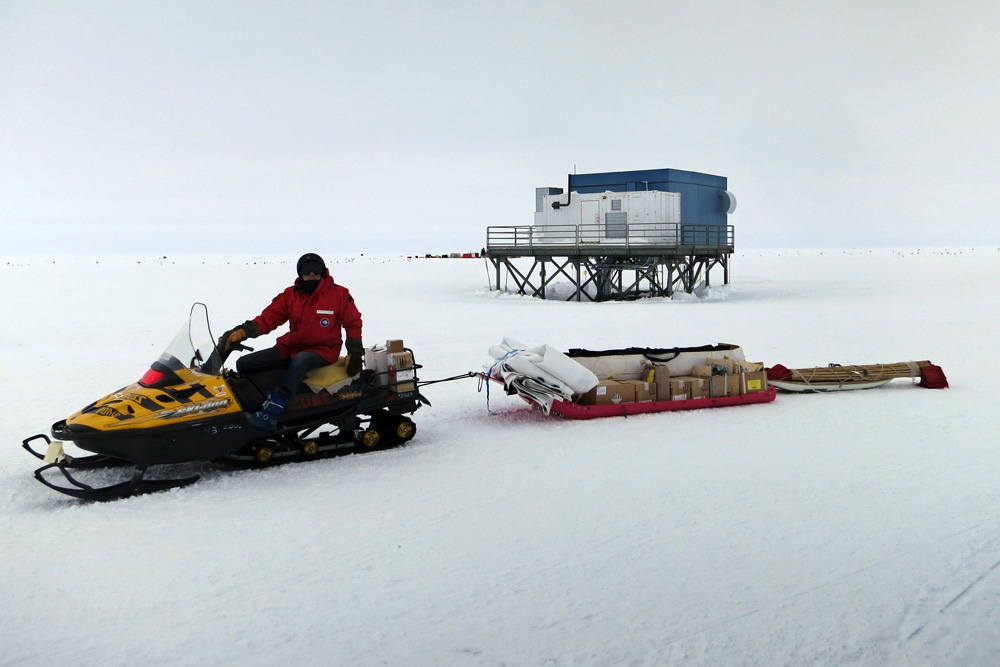

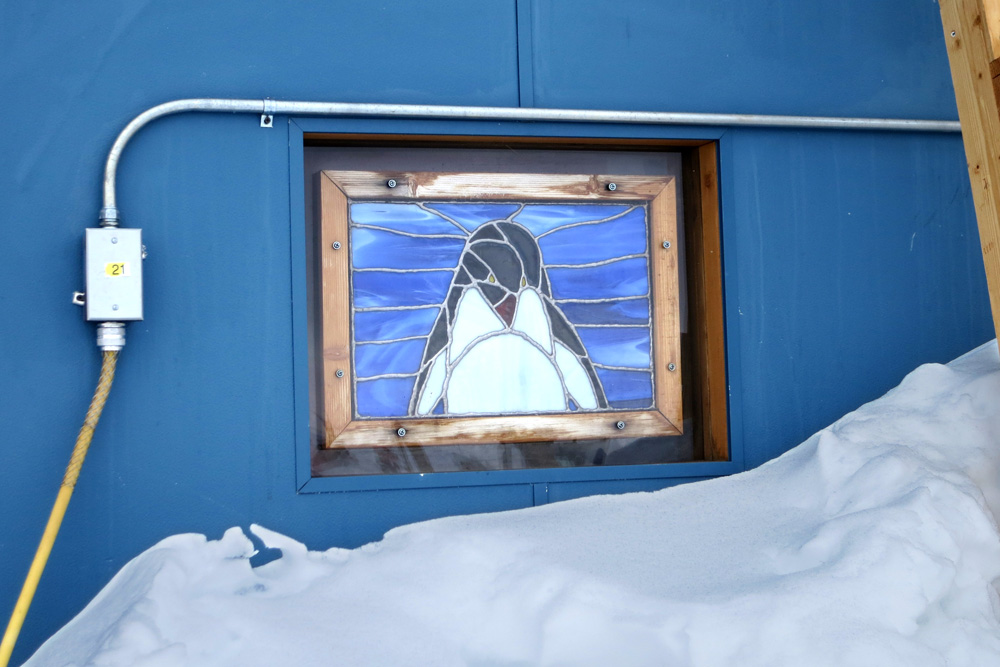
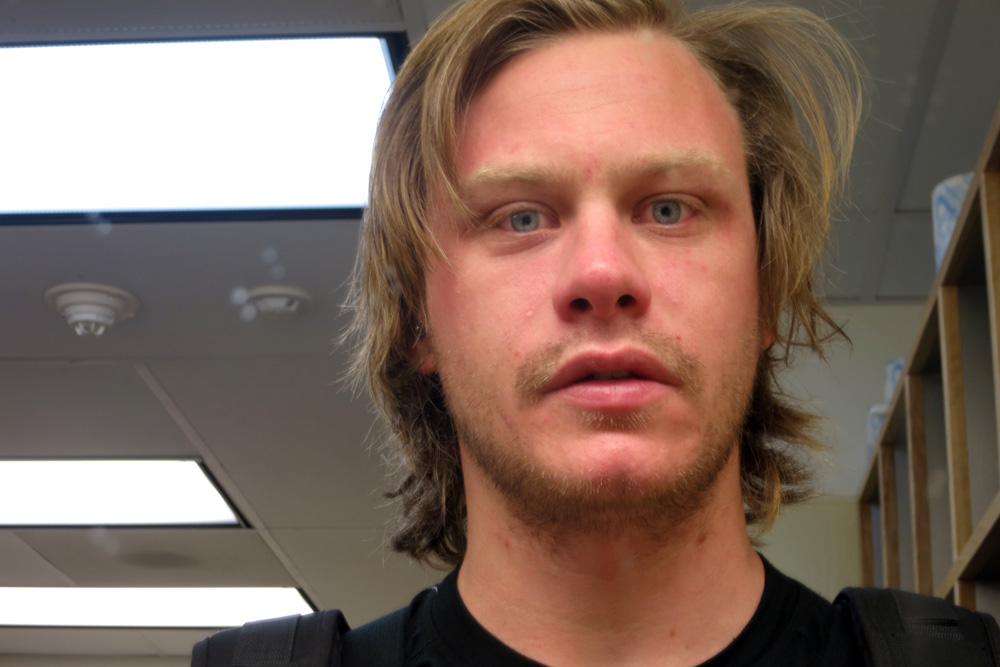
-- Geoff
Monday, 7th January, 2013
Mordor (Geoff)

While walking back to my freezer bedroom tonight, there was a faint 22-degree halo around the Sun, which looked pretty interesting against a pile of snow that reminded me of Mordor from Lord of the Rings, and also of Arambol Beach in Goa, India.

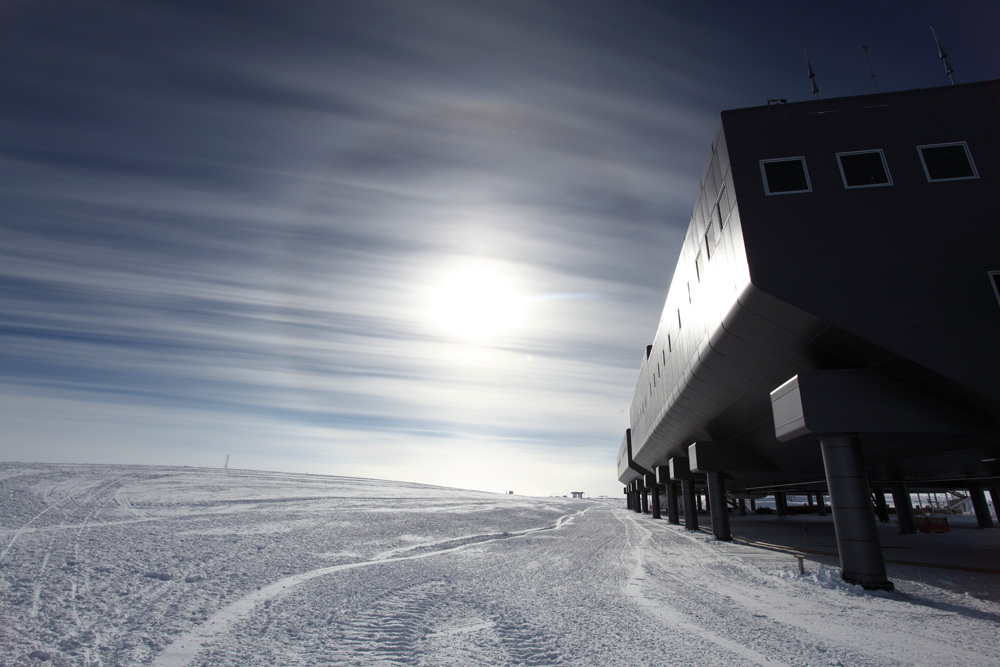
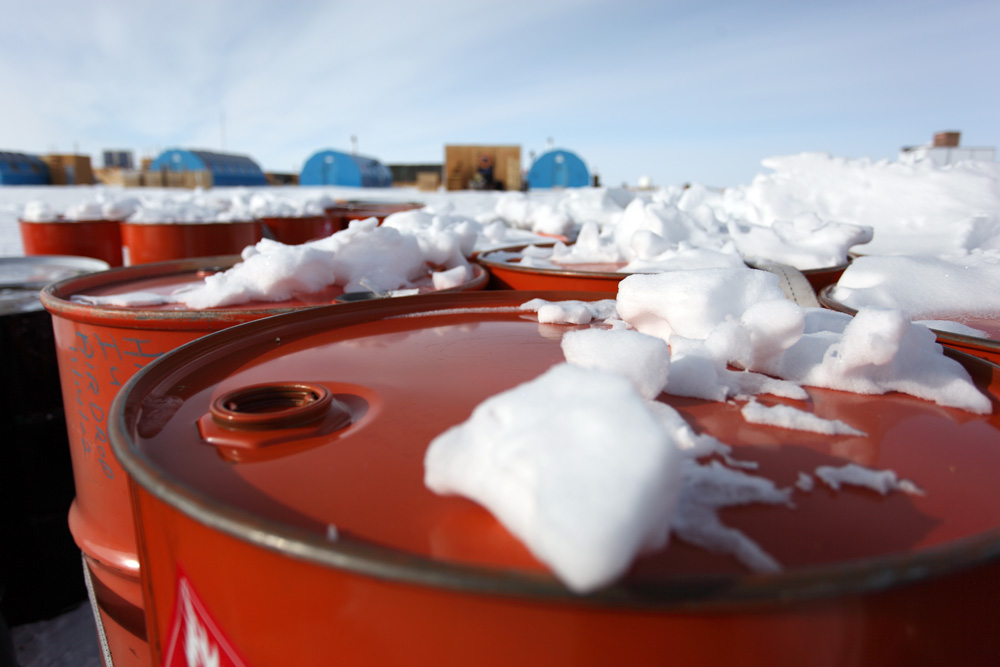
-- Geoff
Monday, 7th January, 2013
Steele. (John)
There's a few last-minute improvements we'd like to make to PLATO, so this week at the South Pole is a good opportunity to get these things done. Fortunately, the MAPO building houses an exceptionally well equipped machine shop, and we are very fortunate that the Astrophysics machinist is there to help us.

A good machinist is worth their weight in gold, and Steele is no exception. Already he has made up some straight-through exhaust pipes for our engines, which will help keep the Engine Module cool. Admittedly the engines will be a bit loud without any kind of muffler, but three hours in a Hercules LC130 has in any case completely rescaled our calibration of "loud". Once we pack up and leave Ridge A at the end of next week, no-one will be around to complain about the noise.
Steele has also helped modify our air-filter housings so that we can attach inlet-air heaters to the engines. So much of what we do with our equipment is concerned with managing the various temperatures. Paradoxically, the big challenge in Antarctica is not getting things warm enough, but having the ability to cool them when needed. Partly this is because you need to insulate things well to keep them warm when they're not doing anything, and then somehow remove that insulation when they start exercising hard, in the same way that an athlete sheds their tracksuit once on the field. The fact that the air pressure at Ridge A is only half that at sea level doesn't help when trying to cool things, either. In PLATO, what we do is to have everything wrapped up warmly to begin with (the two modules are constructed from 150 mm thick foam sandwich), then when needed turn on fans that suck cold, outside air into the modules. So far, it's worked very well, but we still need to do some work to better cool the engine module.

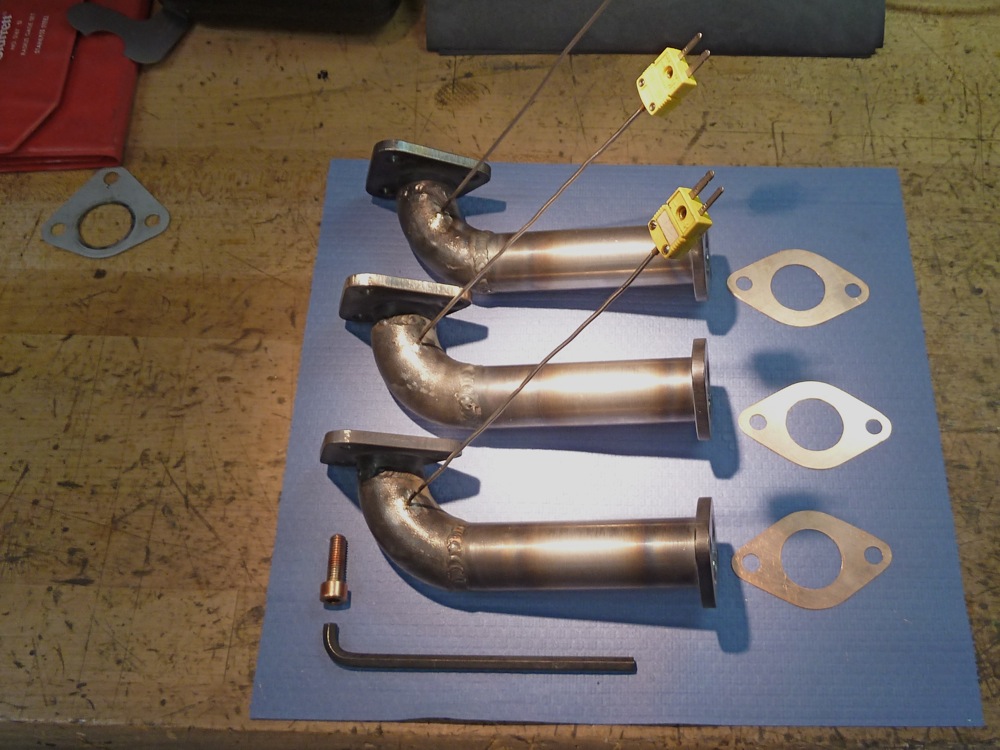
Tuesday, 8th January, 2013
Tunnels (Geoff)
<insert informative text describing the South Pole tunnels here>
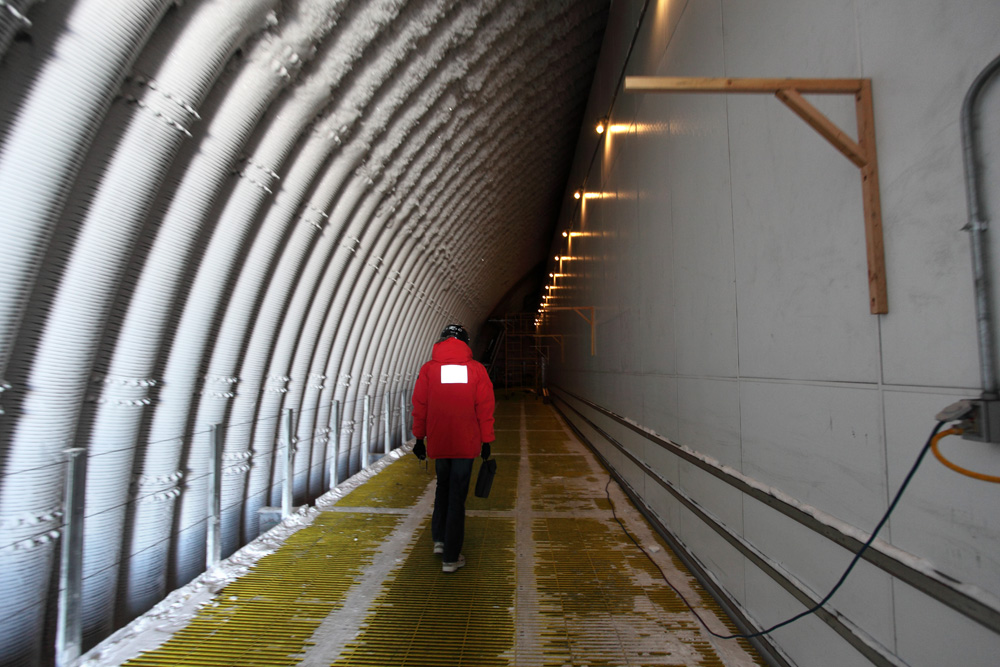

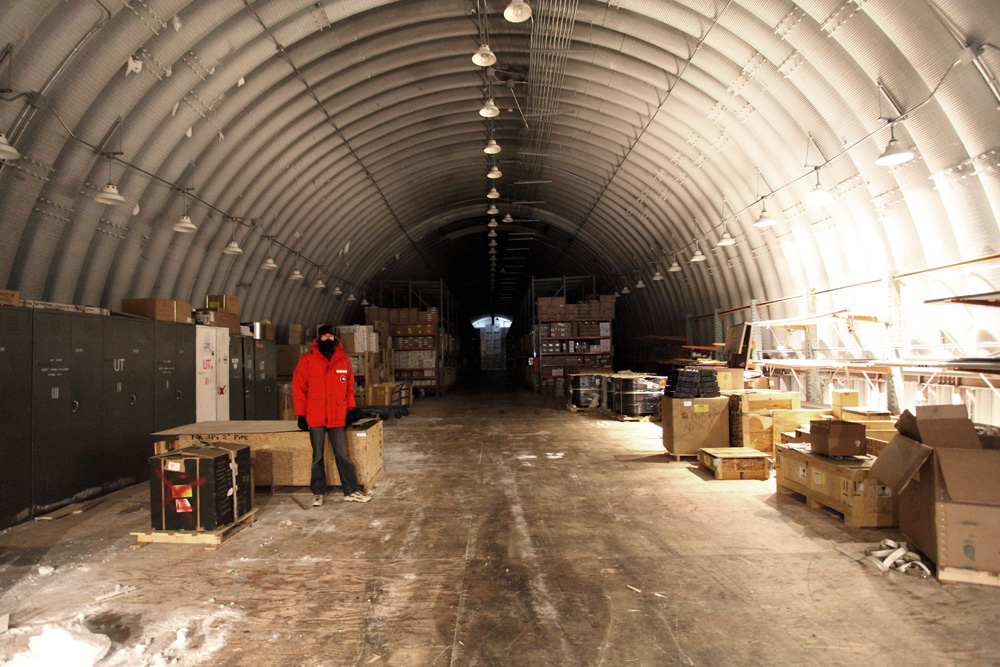

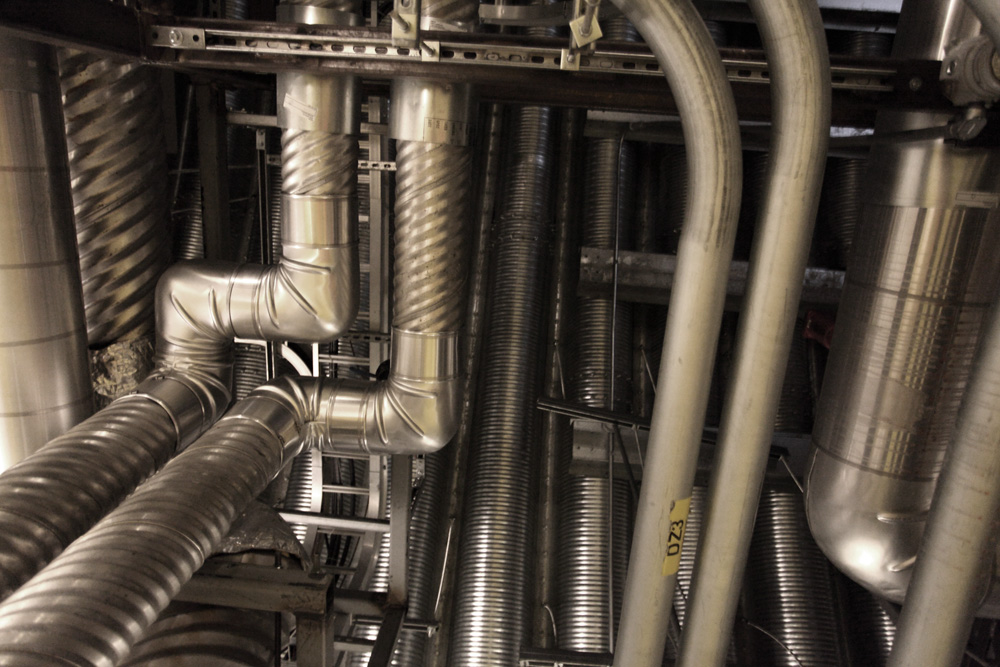

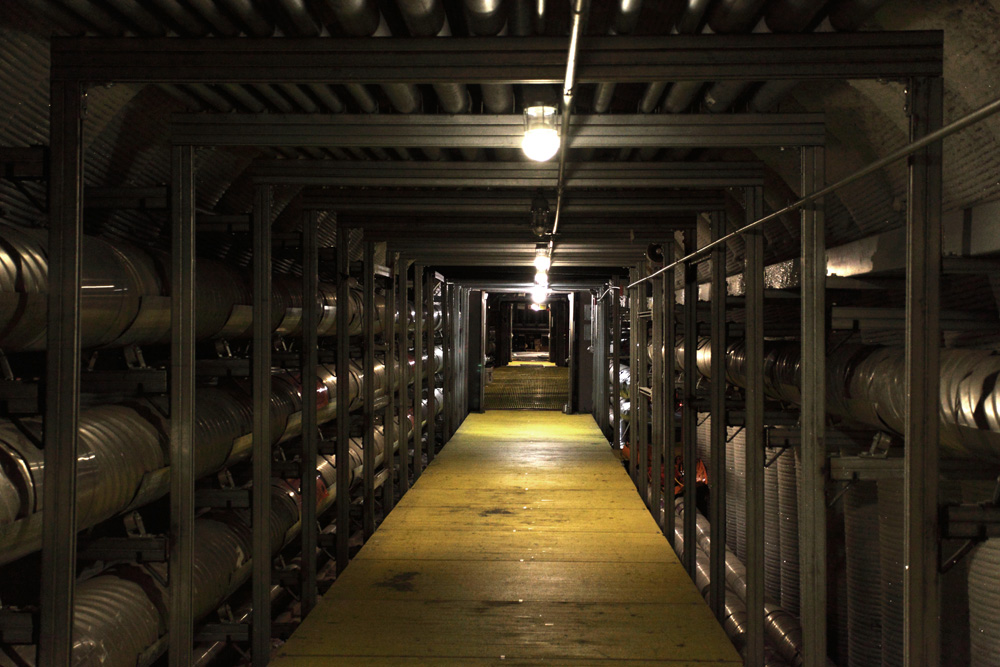
-- Geoff
Tuesday, 8th January, 2013
A very busy day. (John)
Our personal transport for the next few days will be a Twin Otter. These are an amazing aircraft, and have become the work-horse for transport to and from field sites in the Antarctic interior. They are able to land just about anywhere and carry just about anything - as long as it fits through the doors. This in fact drove the design of PLATO-R, which consists of two modules in two halves, the four pieces each exactly fitting through the Twin Otter doors.
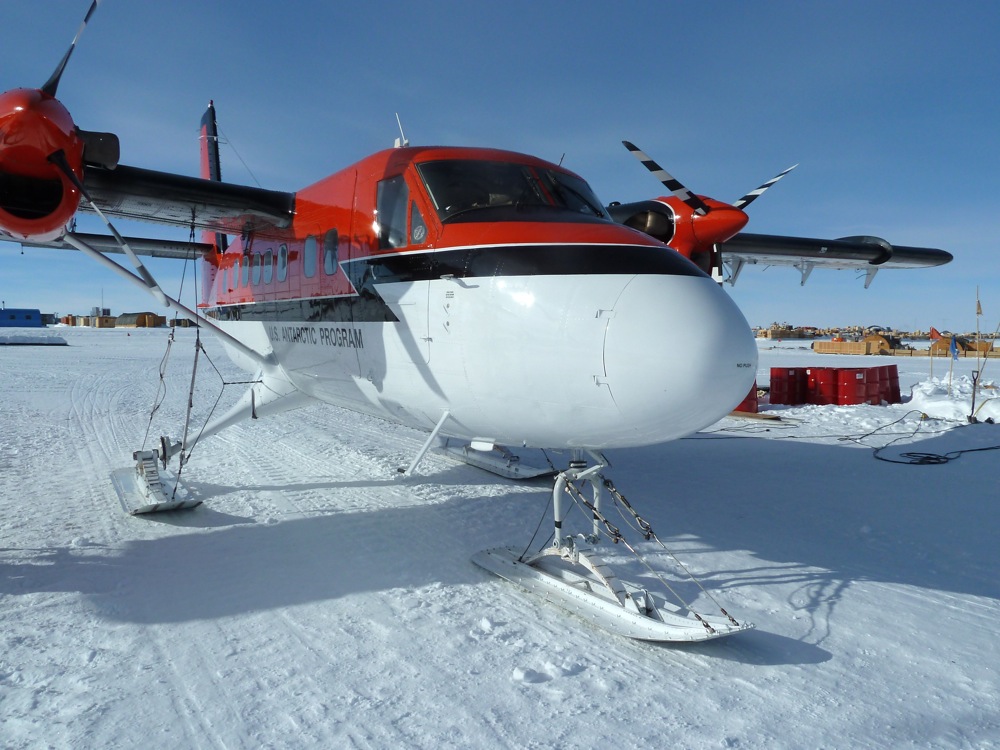
Over breakfast we met with the Twin Otter pilots, Brent and Darrin. They seemed well pleased with our plans, especially when Craig showed them images of the Ridge A site taken this morning by PLATO-R's webcamera. Our discussion finished on a very satisfactory note with the pilot saying: "Just email us your flight manifest...and the coordinates of Ridge A".
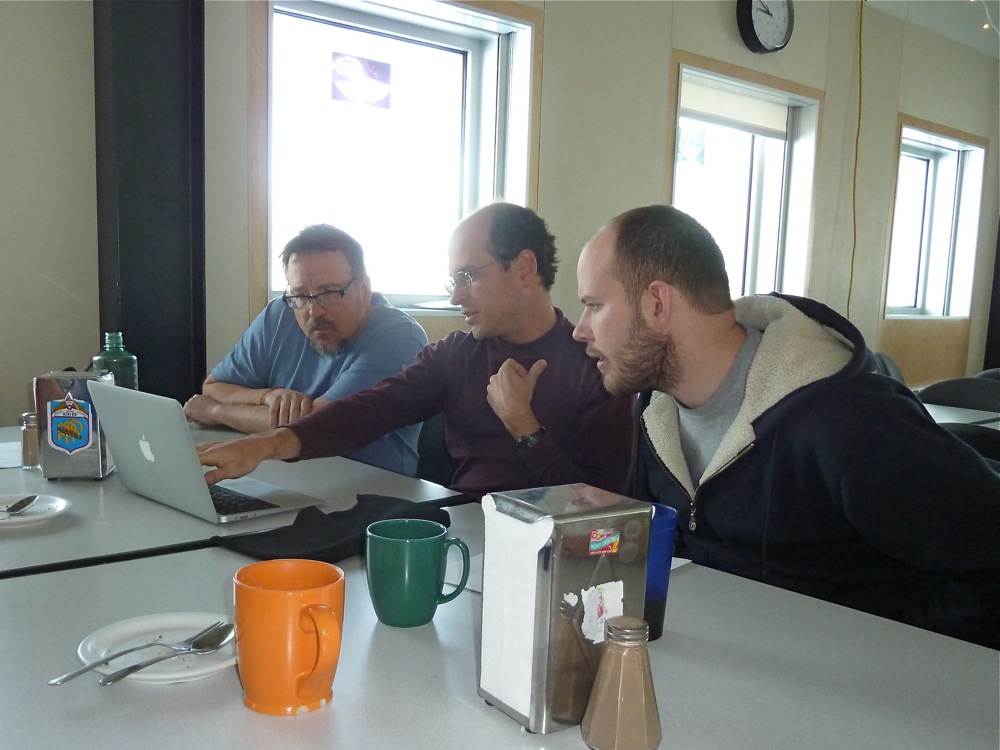
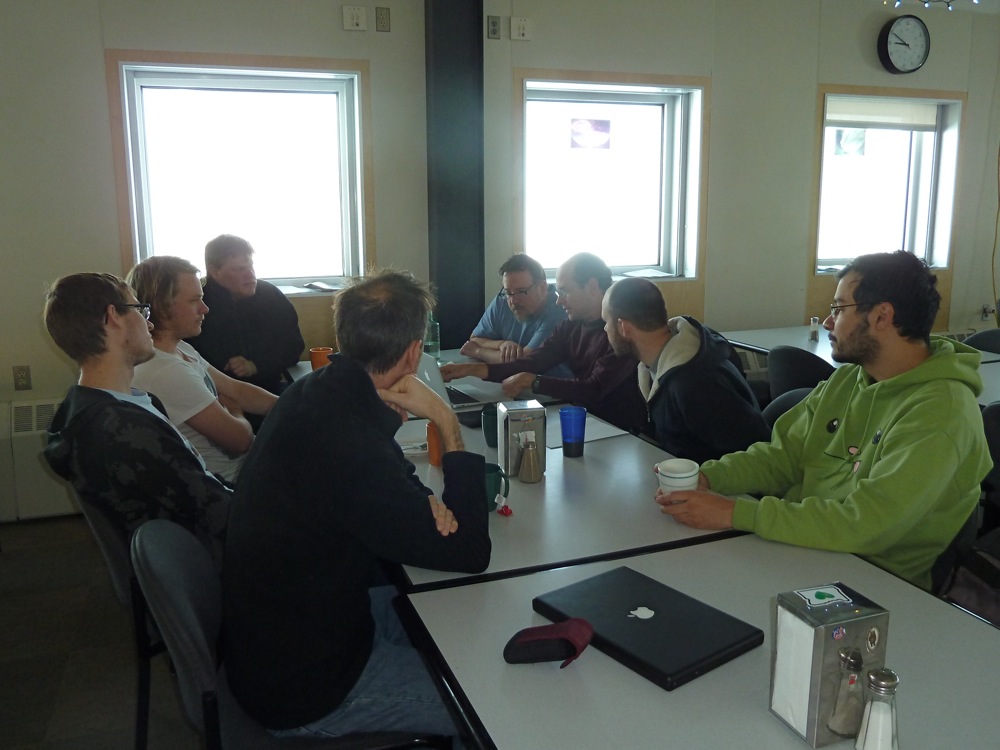
There is a problem this year in that the USAP have changed from using black garbage bags to white ones. What no-one told the waste management folk is that a black garbage bag full of snow or stuck on a bamboo pole is the defacto way of marking out the skiway at a field camp, and the white ones just don't work as well...
We need 230 volts to charge our electric drills before we head out to Ridge A, but of course the station only has US 115 volts available. After breakfast I figured out how to make 230 volts using a 115 volt isolation transformer and some dodgy wiring.
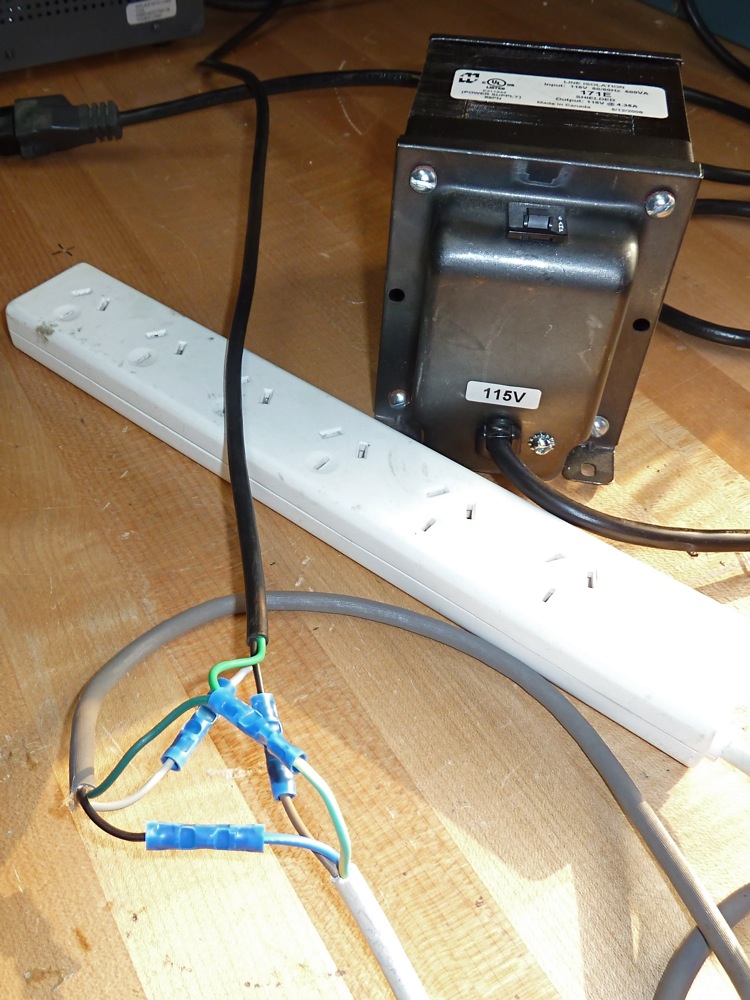
Of interest today was the arrival of a Basler DC3. These are another fine Antarctic airplane; this one was ferrying tourists in from Union Glacier, to spend a few hours at Pole.

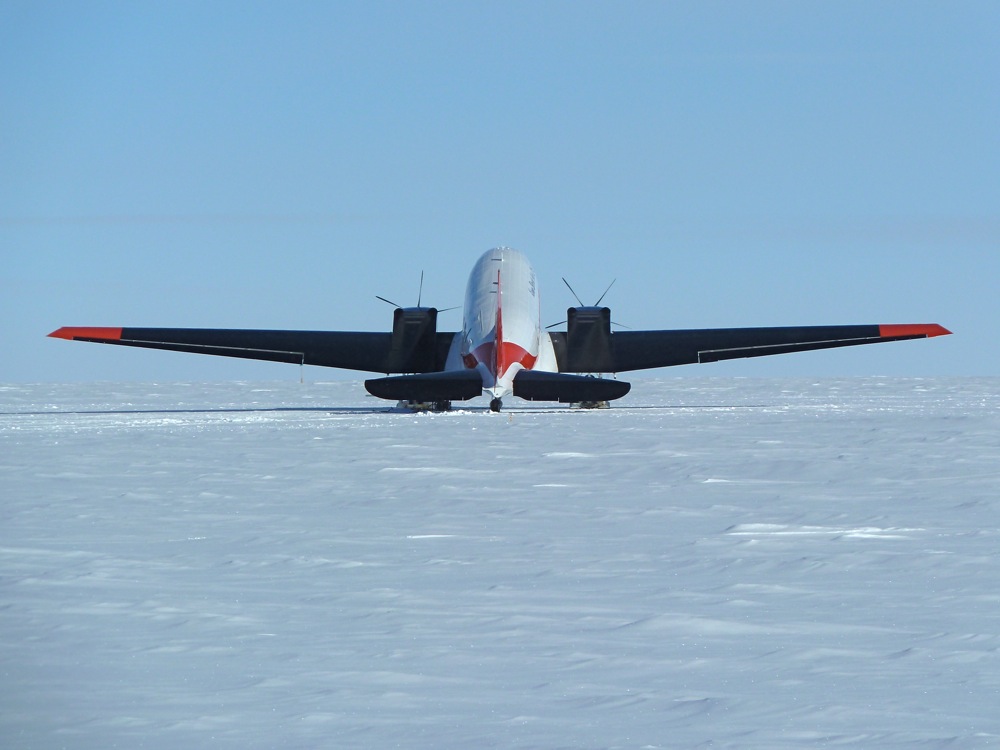

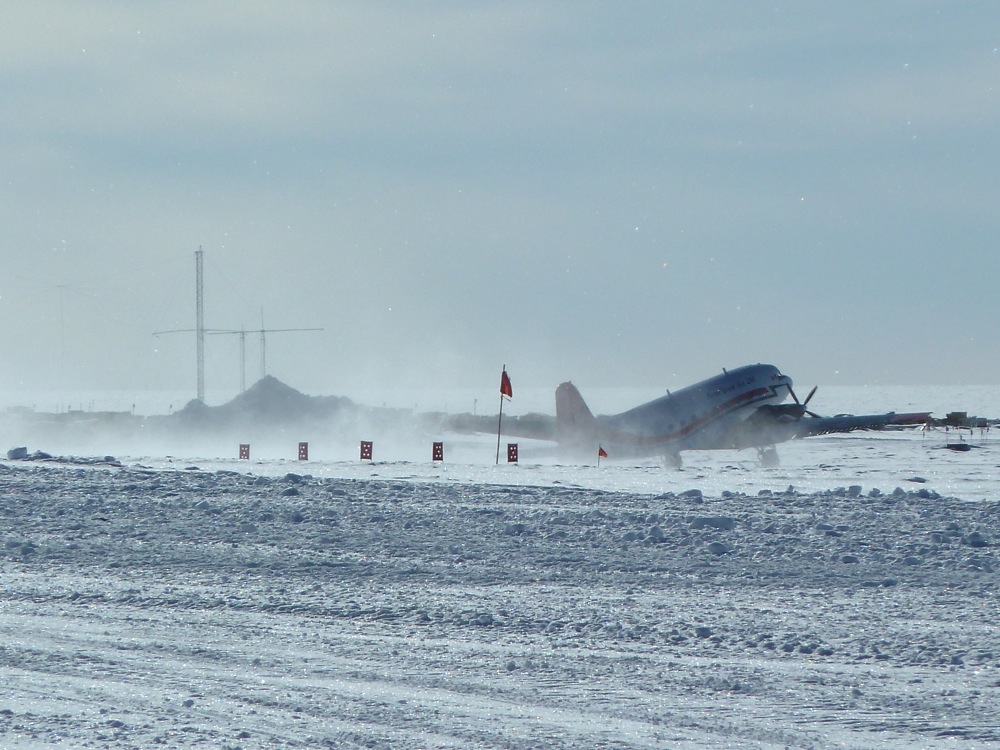
While Sydney battles a record heat wave, it is slowly getting colder here and today the temperature dipped below -28C. I am finding that I can dress in my normal casual clothes and shoes, throw on some windproof pants, a balaclava and Big Red (as the Snow Goose parkas are affectionately known) and be perfectly comfortable outside. I much prefer this to +43C!
Wednesday, 9th January, 2013
Wx cancel (Geoff)
Today our first cargo flight to Ridge A was scheduled as a backup, meaning that if their primary flight didn't go ahead for whatever reason, we would be on. In such a case, we would be required to load the Twin Otter with our cargo at around 07:45.
We were very excited when we saw that in fact the primary flight was cancelled, and Ridge A appeared on the schedule:

However, within minutes, it was cancelled because of a bad weather forecast:

As it turns out, using the Uncle Bob webcam at Ridge A, we were able to see that the weather was in fact, pretty good. The pilots will now be using a combination of forecasts and webcam images to make their decision on whether or not to fly.
We continued to put the finishing touches on the engines, and organise the remaining tools we need to take with us.

-- Geoff
Wednesday, 9th January, 2013
Ready to go camping. (John)
This time of year many Australians will head out for a week or so in the wilderness, trading the stress and over-work of everyday life for the basic simplicity of a tent, a camp stove, and the great outdoors. We're about to do the same. Starting today, our first flight to Ridge A has been scheduled as a backup mission, meaning that should the primary mission for that day be cancelled, we'll pack our things into our Twin Otter and send them out to the most remote place on the planet. We'll follow a few days later.
So, late last night we found out that today's primary mission was unable to fly, and "Ridge A" appeared for the first time on the station's flat-screen displays of the flight schedule. After breakfast this morning we gathered around in the computer room with the pilots to look at the current images from Ridge A. PLATO-R is currently running off solar power, and can be commanded to send back a set of images from its web-cameras, collectively known as Uncle Bob, or uBob (for reasons that made no sense at the time, and even less sense now).
uBob is installed on the roof of PLATO's Instrument Module, with a panoramic view of the site. It's almost exactly a year since the University of Arizona/UNSW team deployed PLATO-R to Ridge A, and no-one has been anywhere near it since. It's amazing to see how little the site has changed in 12 months. In the last couple of days there has been a very light dusting of snow, like icing sugar on a cake.
The following four uBob images were taken at 8 am this morning and sent out from Ridge A via iridium satellite.
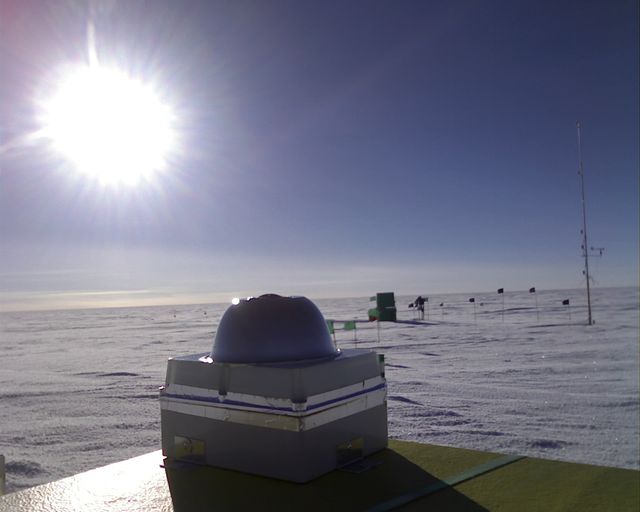
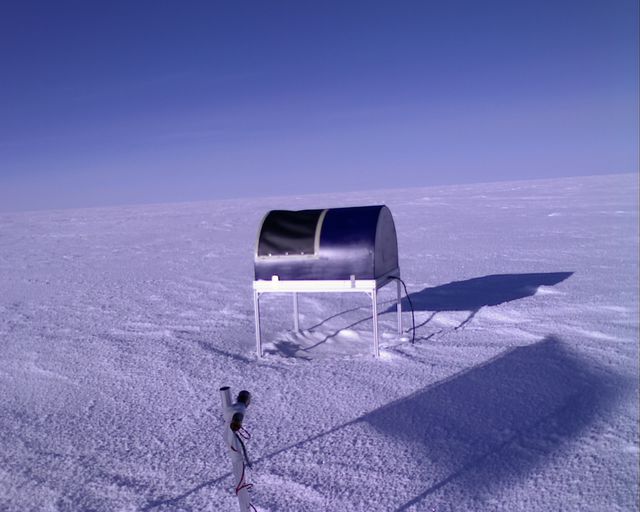
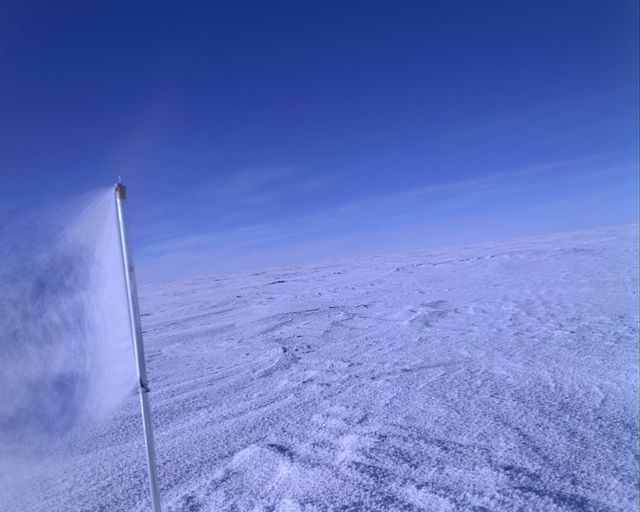

Unfortunately, the official weather forecast (which comes from Charleston, Carolina) was that the weather would deteriorate at Ridge A later today (it didn't), so our flight was cancelled. Instead, we took the opportunity to practice putting up our "living room" tent.
This is the tent in which we'll cook, eat, use our laptops, charge batteries, and generally chill out (if that's the appropriate phrase). We'll have three small, two-man tents for the six of us to sleep in, the rationale being that the small tents are easier to keep warm. However, depending on snoring patterns, some folk may end up being ejected and made to sleep in the living room.
We'll actually have six tents in total - three sleeping tents, the living room, a HEAT tent and two PLATO tents. It will be quite a campsite!
Checking through our materials packed for departure on the flight line, we were alarmed to discover that some of our frozen vegetables were starting to thaw. Despite an air temperature of -28C, the black duffel bag in which they were sitting was warming up in the sun to just above zero. We repacked them in a cardboard box.
We also need to replace the chain oil in our chain saw with glycol, which stays liquid at the -40C temperatures we expect at Ridge A. A chainsaw may seem like a superfluous addition to our camping kit, given that Ridge A has clearly not become too overgrown in the past year. However, it is a very useful tool for cutting trenches in the snow, and for leveling off lumps and bumps in the skiway should the first landing prove a bit unsettling.
For most of the remaining day we gathered up things we'll need to take with us to Ridge A. Some of us battled with the usual frustrating problems that inevitably accompany any prototype device with a microprocessor in it, while others of us preferred to potter about in the exceptionally well-equipped MAPO workshop helping Steele to make air deflectors for our engines (Steele did all the difficult bits).
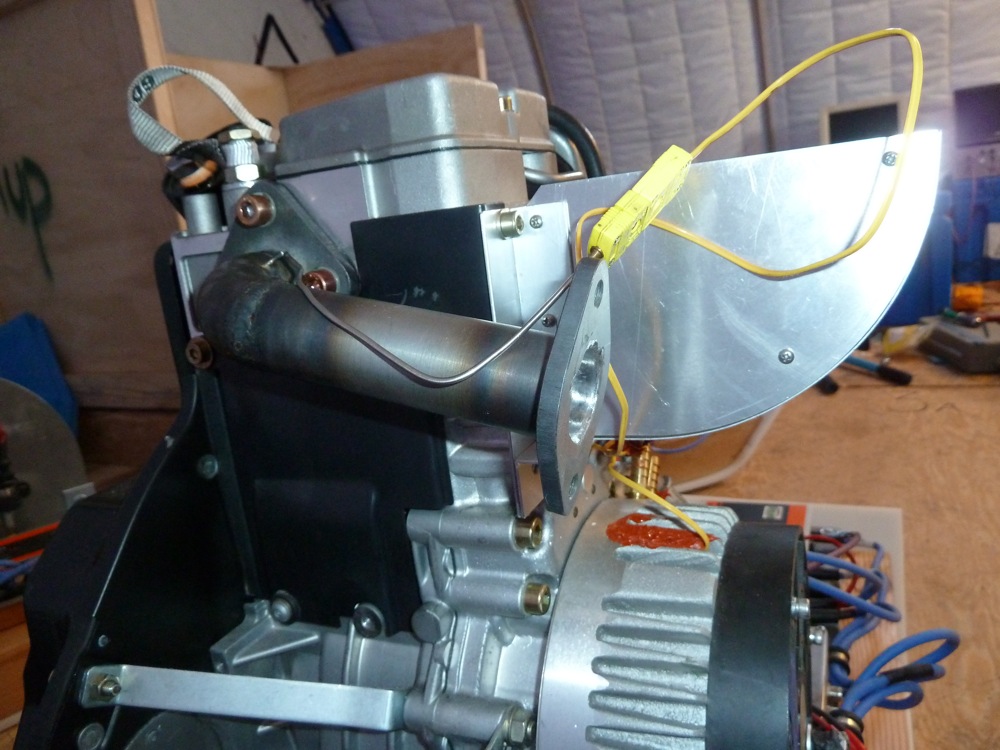

Meanwhile, we're still waiting for some vital parts of HEAT to arrive, including the cryostat. We desperately need some cold weather in McMurdo, so that what has now become known as Lake Pegasus can return to operation as an airfield.
Thursday, 10th January, 2013
Pub trivia (Geoff)
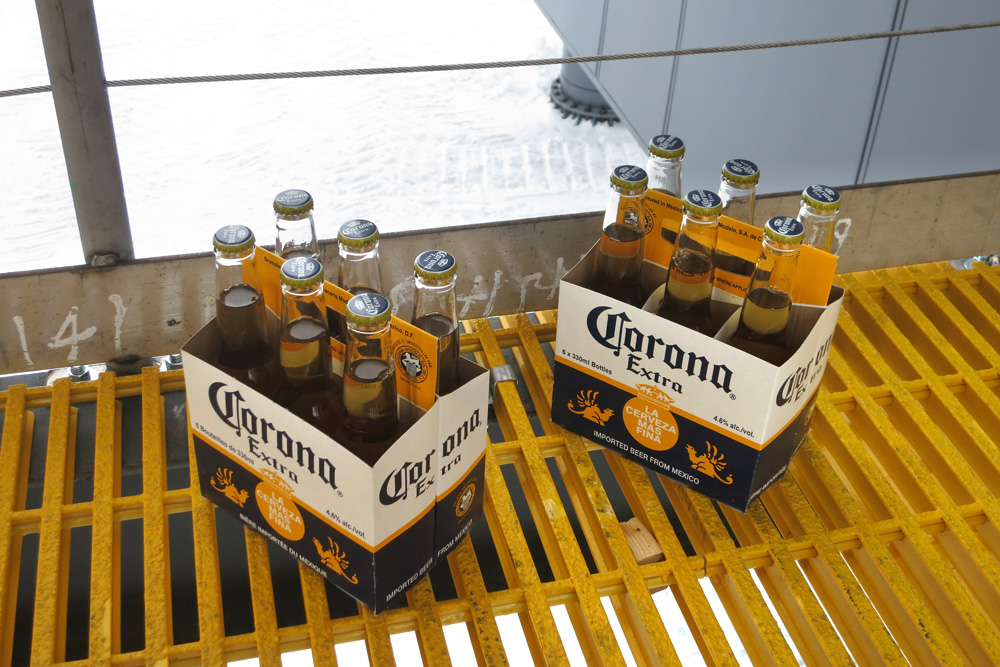
Tonight we played some pub trivia, which is held in the galley (the main eating quarters). They do not serve alcohol, so you need to BYO. Beer is the essential ingredient, because without it, it would simply be "trivia" rather than "pub trivia".
We bought some Corona for USD$6.50 per 6-pack (yes, really) and left it outside to chill for a while. Interestingly after about 30 minutes, despite the temperature being -30 C, the beer was only just cold enough to drink.
-- Geoff
Thursday, 10th January, 2013
Ridge A flight schedule. (John)
Right now we're waiting for the remaining equipment for Craig's experiment, HEAT, to arrive; the delay the result of the unseasonably warm weather at the Pegasus ice runway at McMurdo. We can make our first flight to Ridge A as soon as it's here.
Here's our current Twin Otter flight schedule, by day number. However, depending on weather conditions, especially at Lake Pegasus, there could be some variation.
1. Flight #1: (12 Jan) Partial field gear and equipment deployment. Includes field gear (minus sleep kits & survival bags), work tents, battery boxes, UNSW tools.
2. Flight #2: (15 Jan) Deploy Ben, Geoff, Nic and John, remaining field camp & survival gear, 3 engines. KBA hop to AGAP South for 4 drums of fuel, while team removes electronics boxes from PLATO Engine Module and Instrument Module for repair and upgrading.
3. NO FLIGHT: (16 Jan) Daniel repairs and upgrades PLATO electronics at South Pole, Craig and Abe work on HEAT at South Pole, remaining people work at Ridge A.
4. Flight #3: (17 Jan) Deploy Abe, Craig and Daniel and survival gear, HEAT and tools, repaired equipment. One person comes out with empty fuel drums.
5. Optional NO FLIGHT: (18 Jan) PLATO-R continues to come together with repaired electronics, installation of HEAT cryostat & electronics.
6. Flight #4: Flight #4: (19 Jan) Take in remaining 3 drums. Remove 2 people, old engines and batteries, old HEAT cryostat
7. Flight #5: (20 Jan) Take out remaining 4 people & field equipment, any empty fuel drums.
Meanwhile, the lack of cargo coming to us through McMurdo is affecting not just the HEAT/PLATO project, but everything else as well. The only fresh food since I've been here has been apples, and the cooks are having their imaginations stretched to the limit as they combine tinned and frozen food to make delicious dishes with names that are often as creative as the combination of ingredients. Dessert is often based on breakfast cereals, used in ways that the manufacturer never intended and almost certainly voiding any original warranty. Today we ran out of eggs.
Surely the Hercs will come tomorrow...
Friday, 11th January, 2013
End of the world (Geoff)

Today the weather was pretty grim and we didn't have much to do, so I took a walk to what is known as the "end of the world". The end of the world is the place where the bulldozers dump all the snow they have collected from around the station. Beyond the end of the world is "flat white" as far as you can see. On my way back, as in McMurdo, I found many interesting and quirky things to photograph.
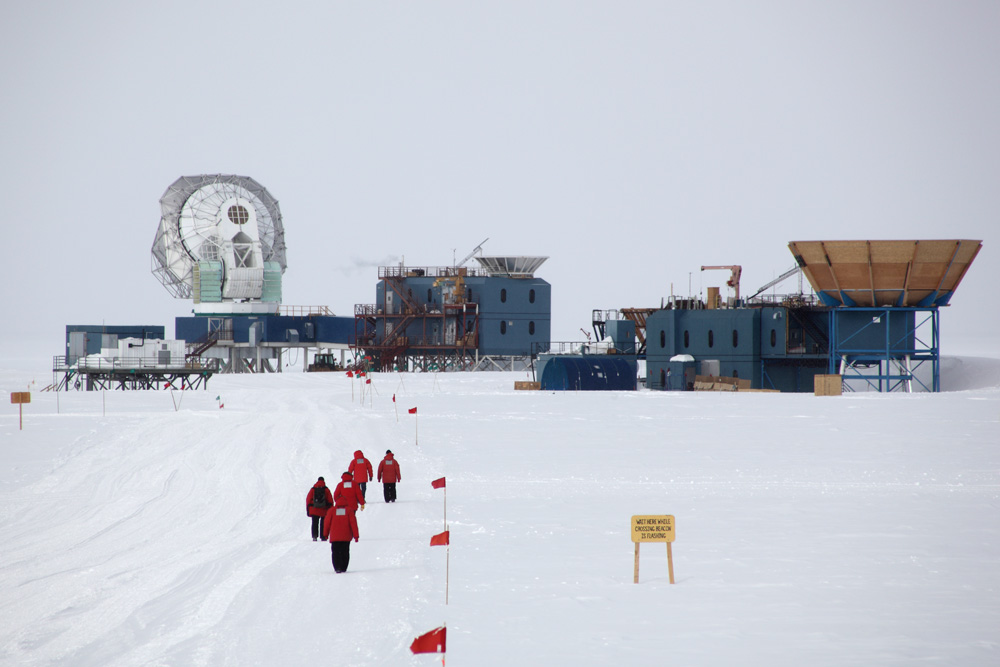
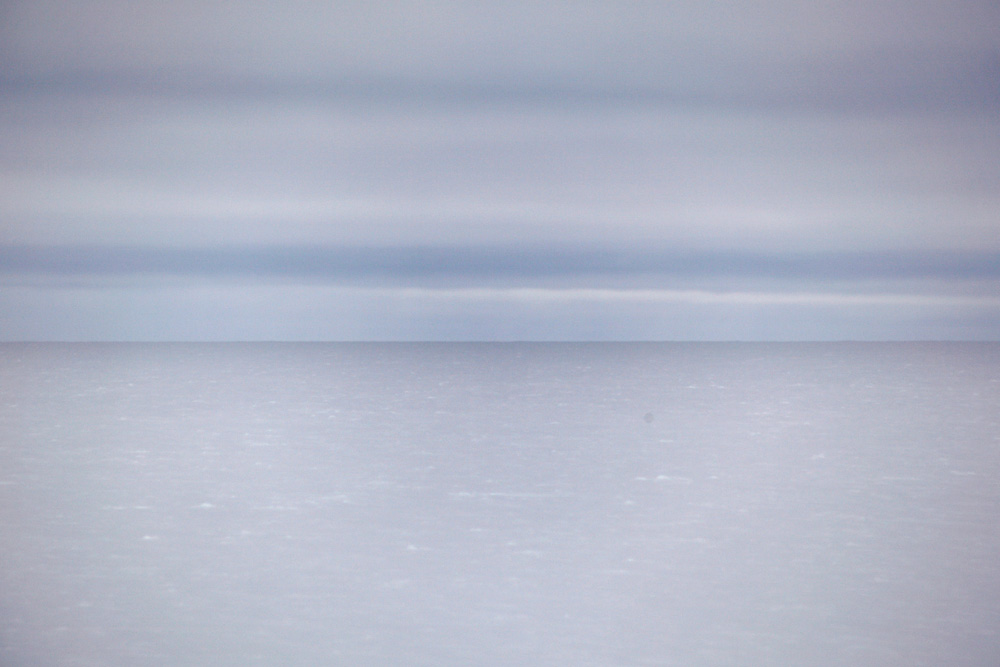
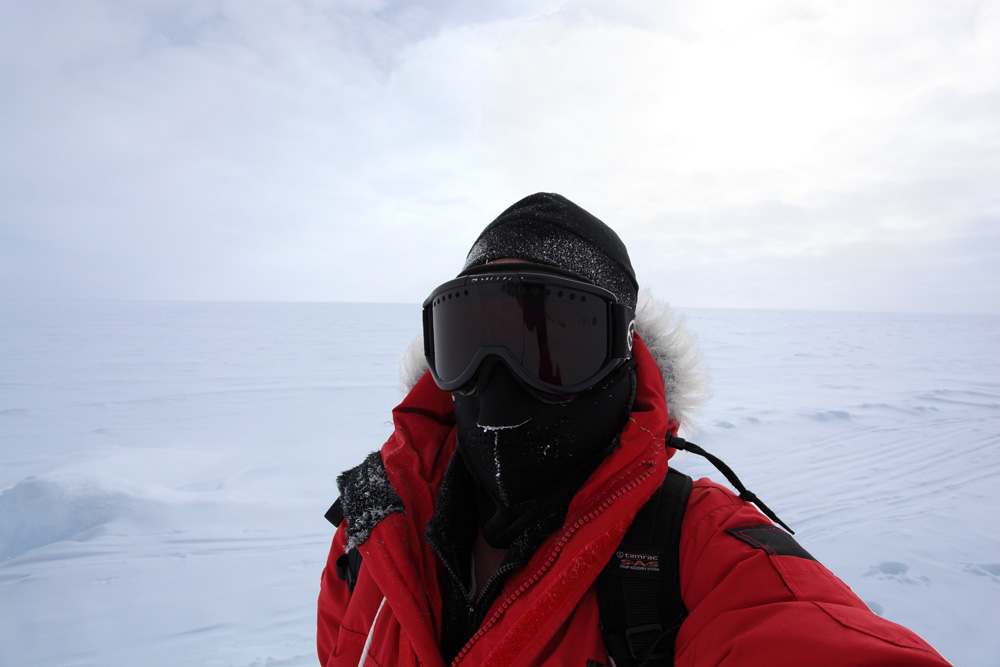

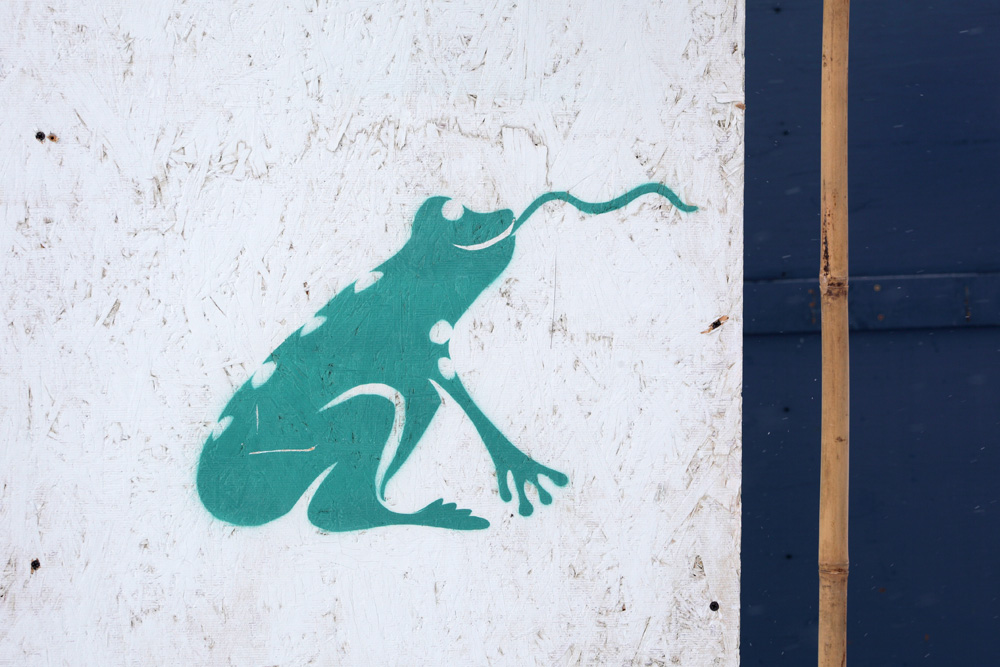


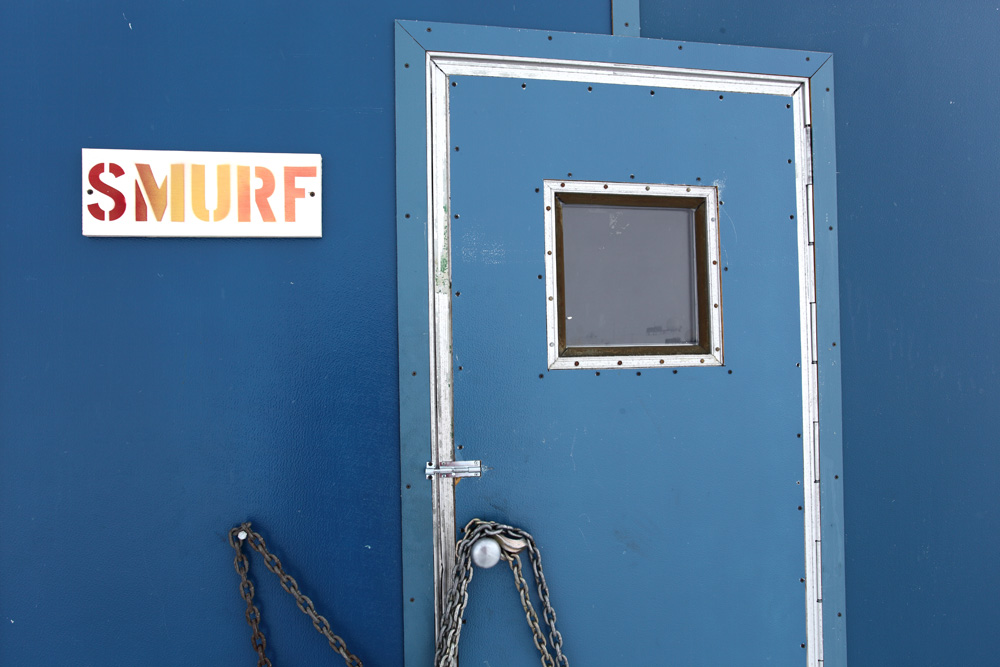
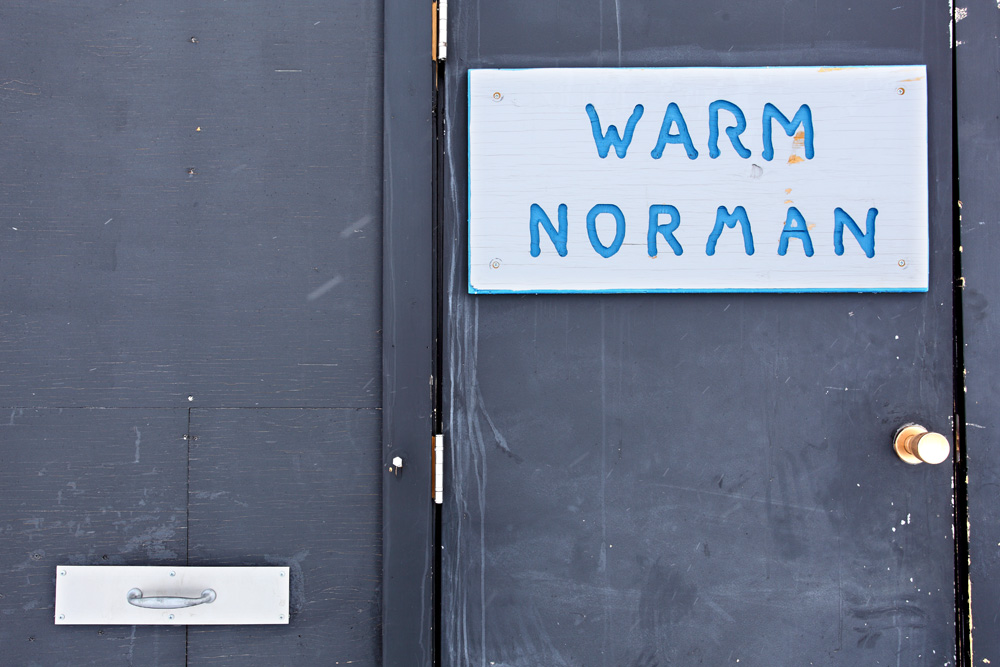
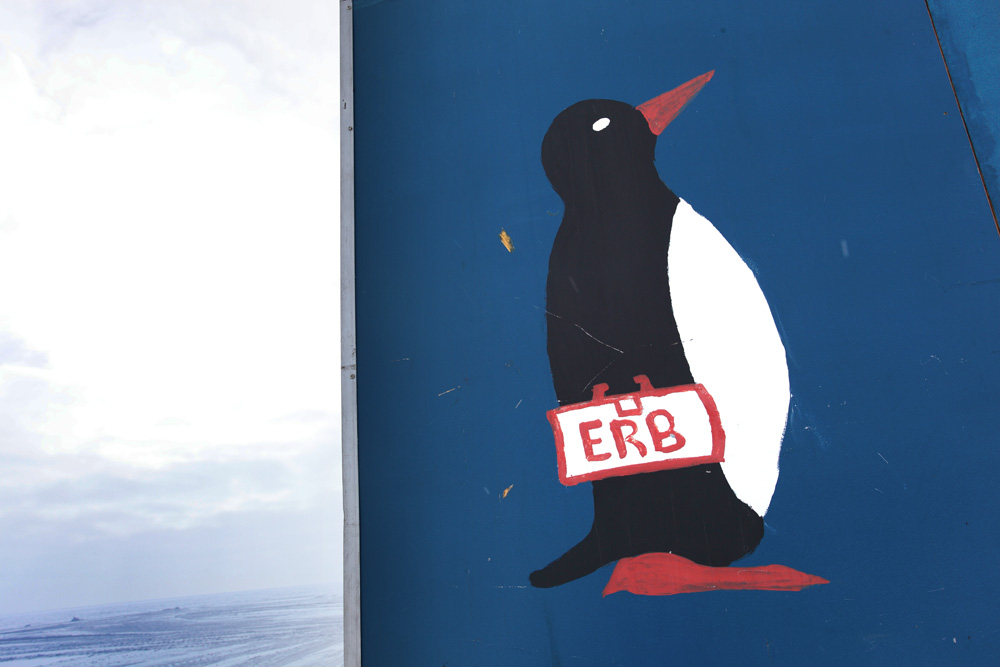
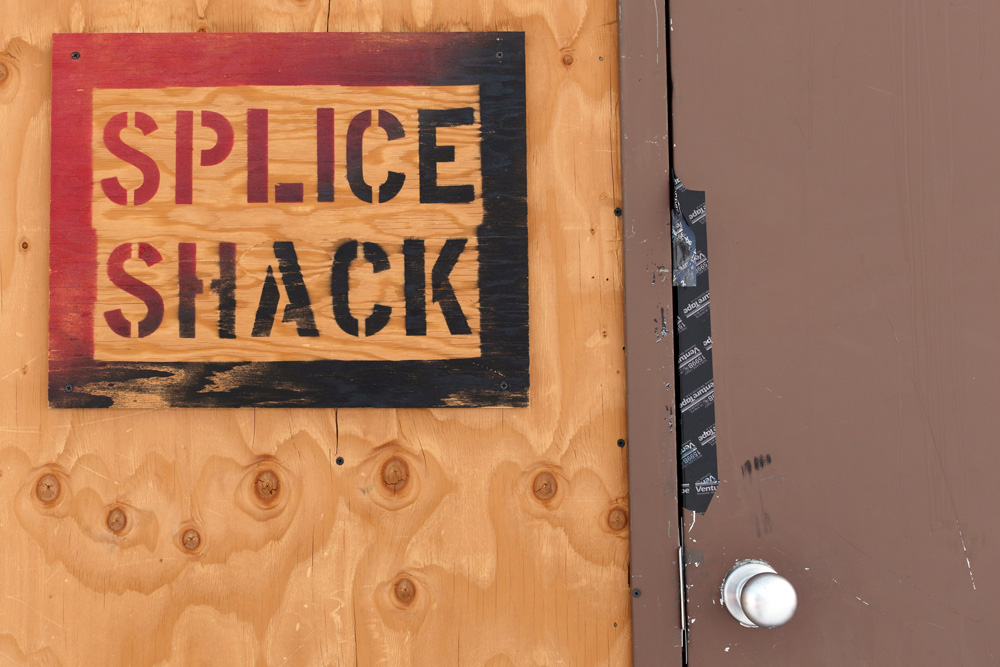
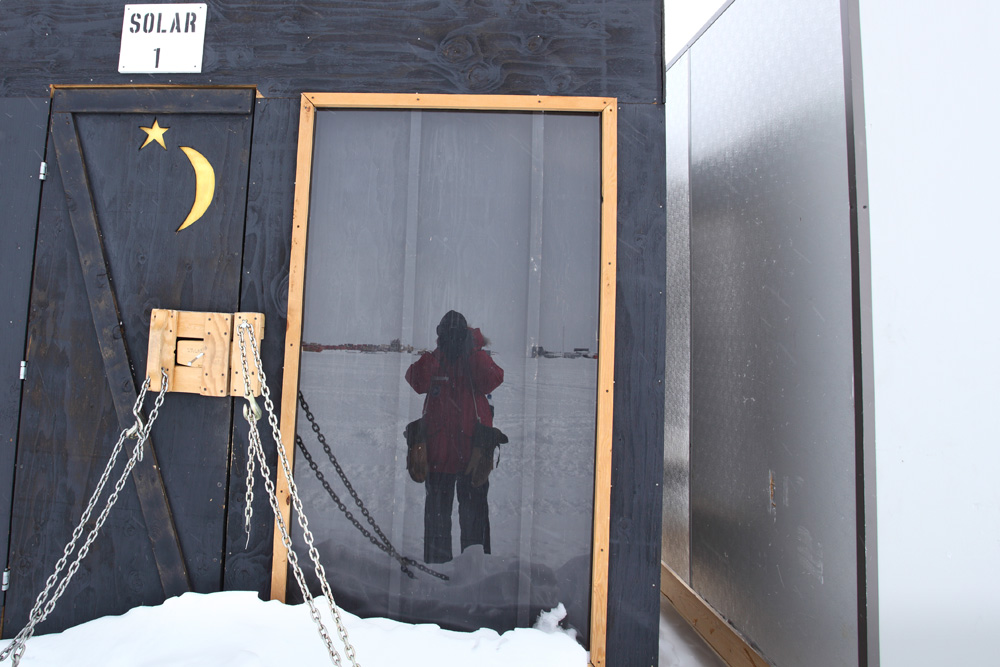
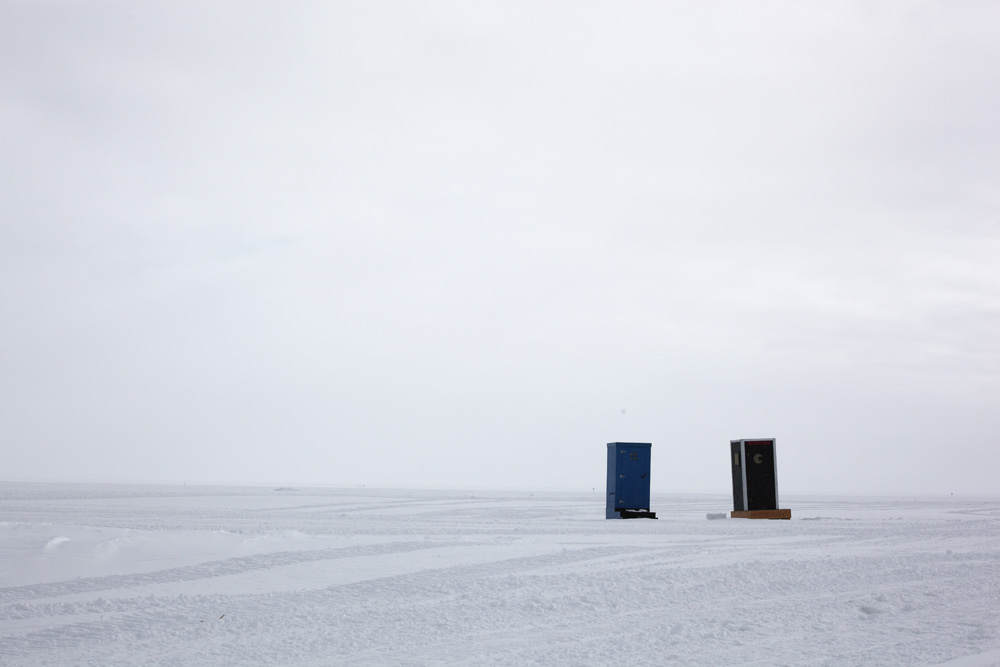
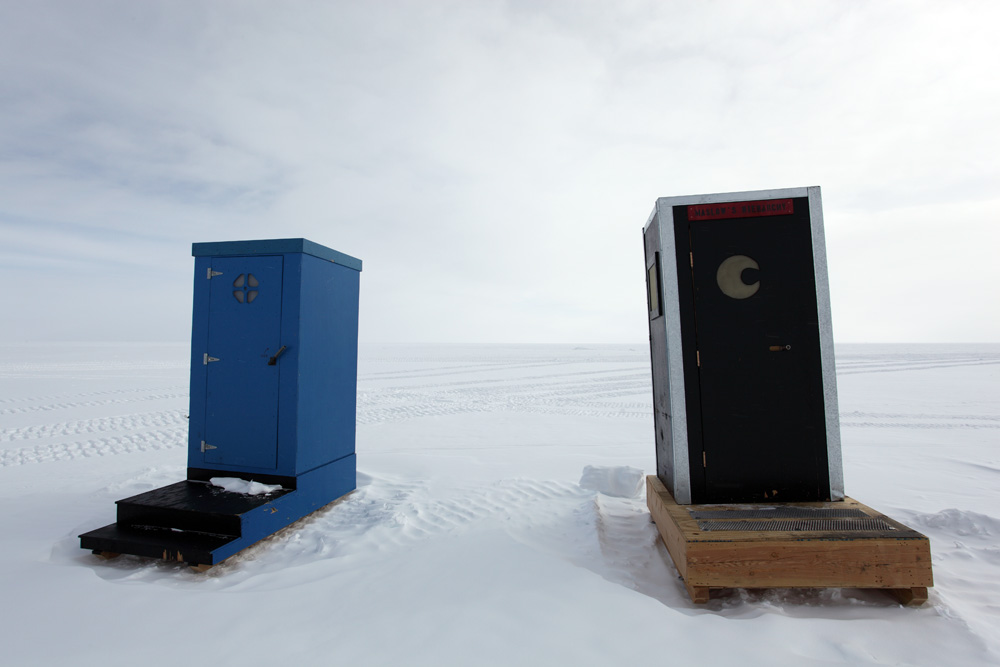

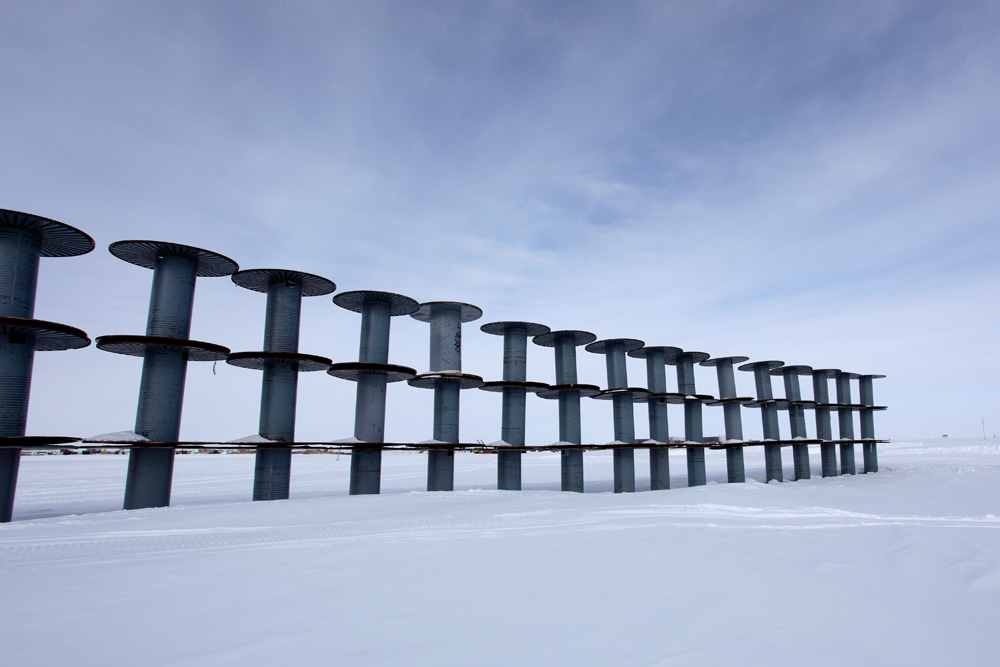
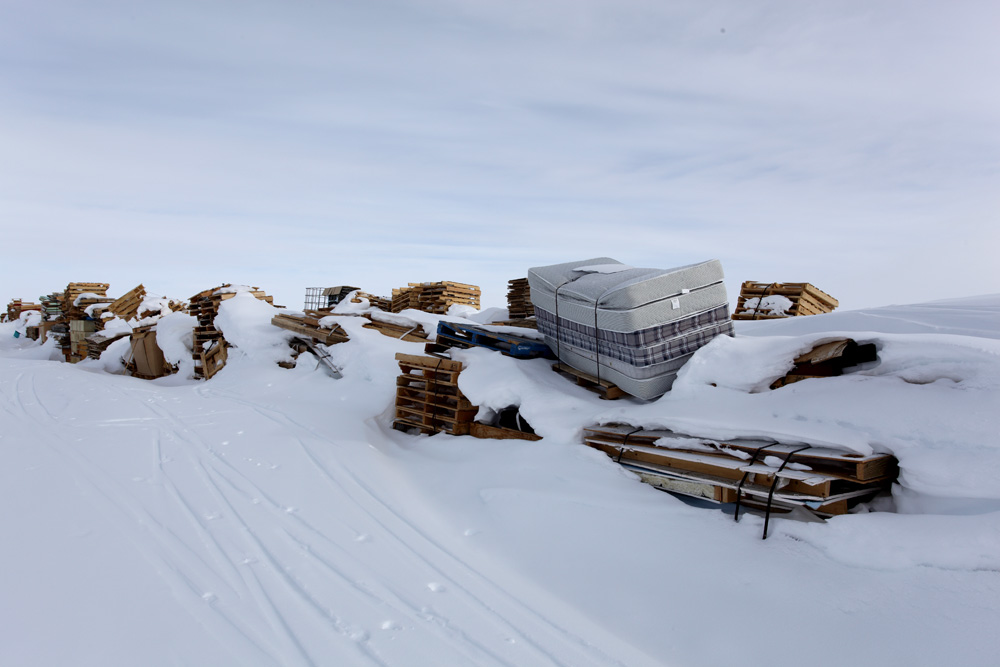
-- Geoff
Friday, 11th January, 2013
A gloomy day. (John)
The weather has closed in on us today. It's a bit bleak all round. Not only are we waiting for the remaining equipment for Craig's experiment, HEAT, to arrive; the delay the result of the unseasonably warm weather at the Pegasus ice runway at McMurdo, but our Twin Otter is also grounded because of poor visibility on the plateau. And the galley has run out of almost everything, including eggs. Now most dishes contain at least some artichokes.
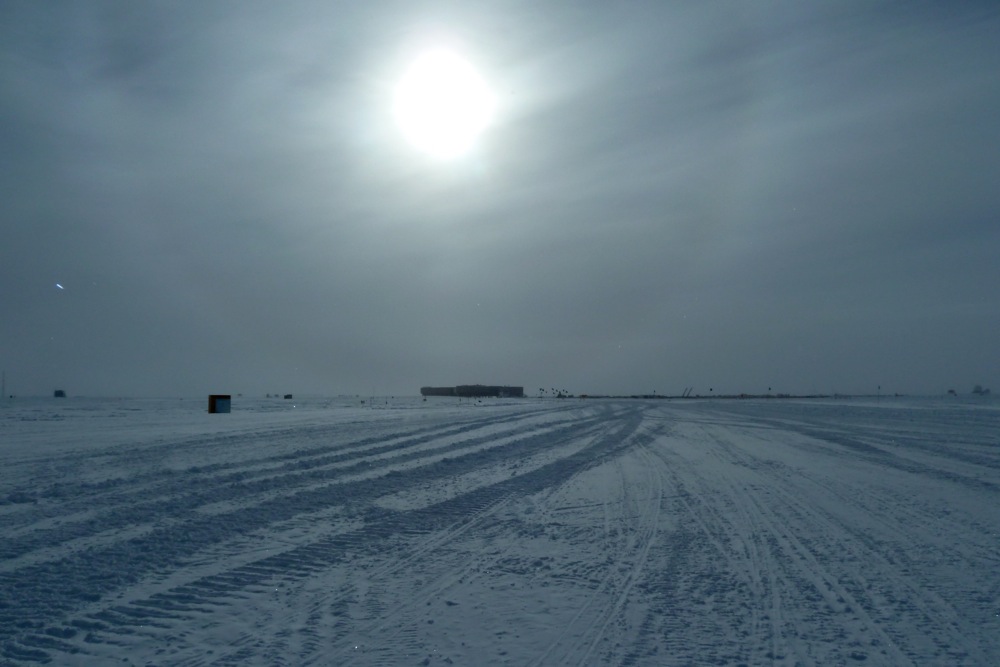
To cheer ourselves up last night we formed a team to compete in a Pub Trivia evening. At South Pole, when the satellite is down, it's a level playing field as you can't surreptitiously access Wikipedia (or anything else on the web) with your iPhone. Geoff has described our participation in the evening, but diplomatically failed to mentioned how dismally we performed. Despite competing under the pseudonym of "Drive it like you stole it", we consistently did no better than third or fourth place. There were four teams. While we aced questions such as "Name the three permanent Australian Antarctic bases", we were flummoxed by questions such as "Which NBL player scored the greatest number of home runs in the 1995 Rose Bowl?" I was also dismayed to find that our UNSW geeks, considered to be amongst the best in the world, were totally outgunned by the Caltech geeks when it came to the sci-fi questions. How can anyone possible know what the last spoken words were in the first "Star Wars" film?
Meanwhile, our gear for the Twin Otter flight is stacked up on the flight line, slowly gathering a light dusting of snow. (By the way, Geoff says that if I crop my photos 3:2 instead of 4:3, people will think I took them with an expensive DSLR camera.)
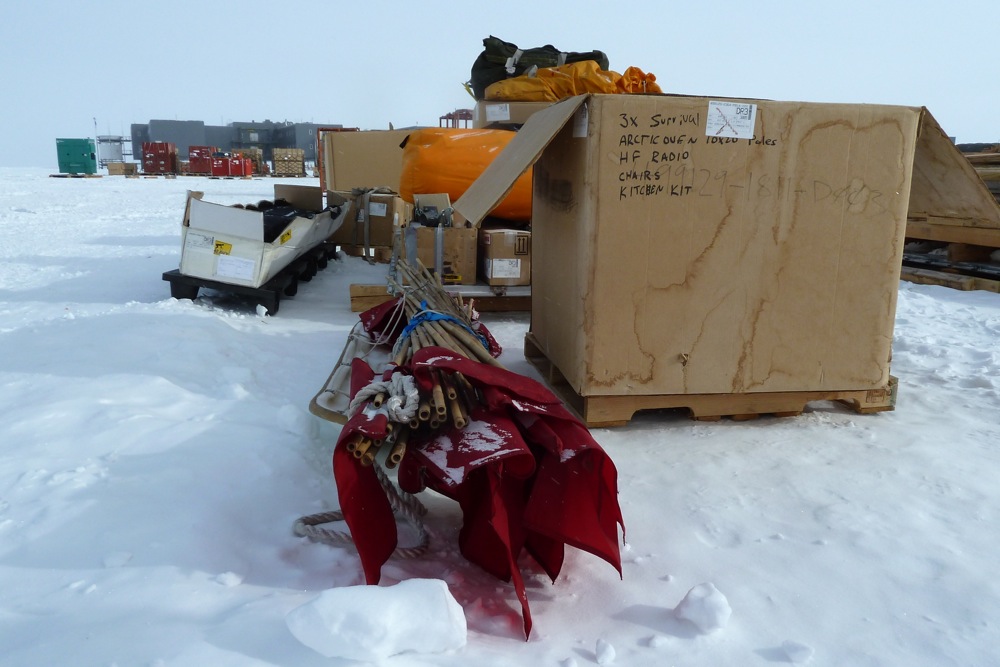
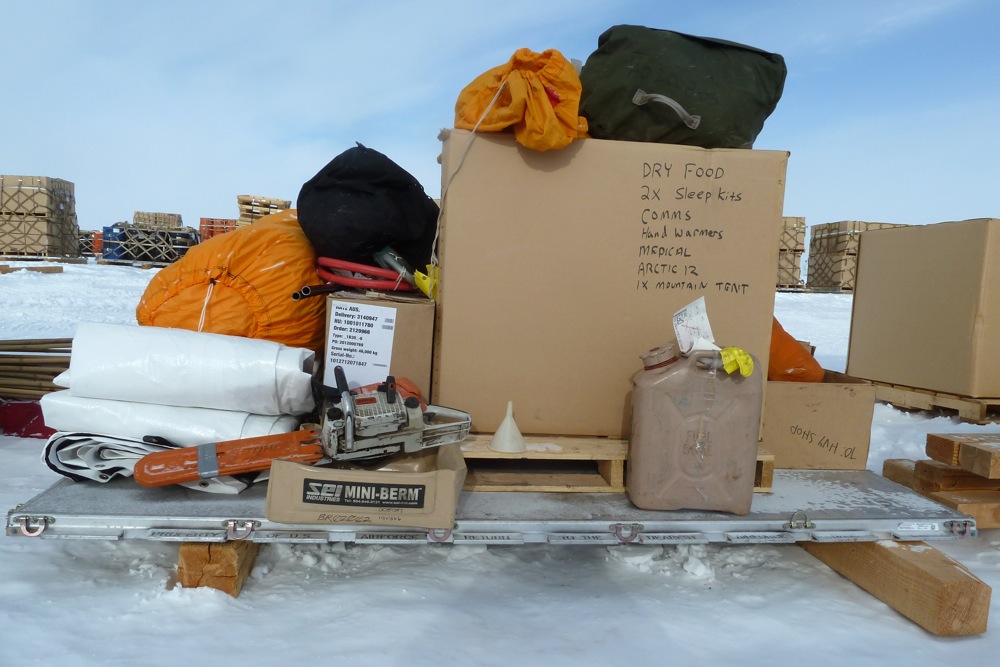
Since I was wandering around the flight line anyway, I checked out our Twin Otter.
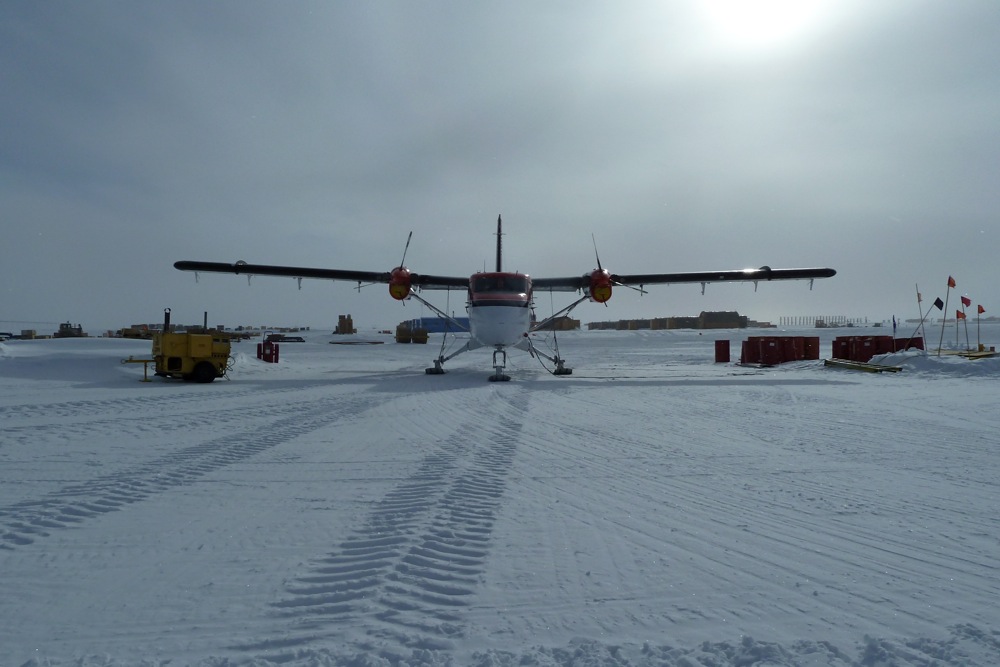

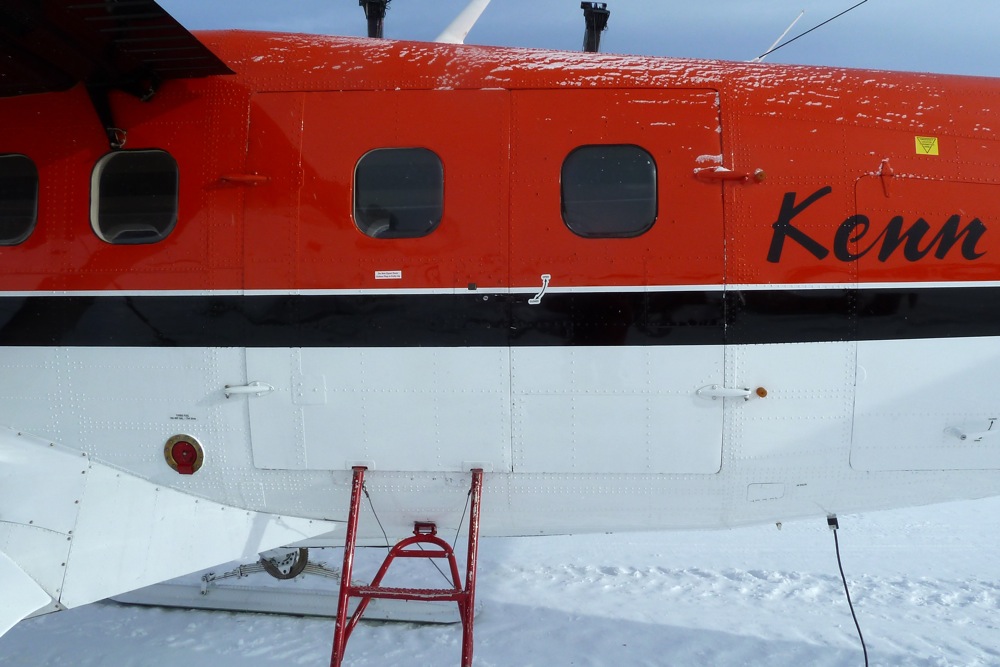

Shortly after we arrived at Pole we decided we needed a piece of plywood and rails under the engines so that they can sit on something accommodating whilst transported in the Twin Otter and when sitting on the snow at Ridge A. We then realized that if the plywood kicked up at the front, it would make a dandy sled, and thus was born the "sledlet" concept. We asked the carpenter to make us one for each engine, and this is what she came up with. It's the South Pole I remember so fondly - when you ask for something you don't get what you asked for but what you actually need, and it exceeds your wildest expectations. As someone wistfully remarked "This is what universities used to be like, too."
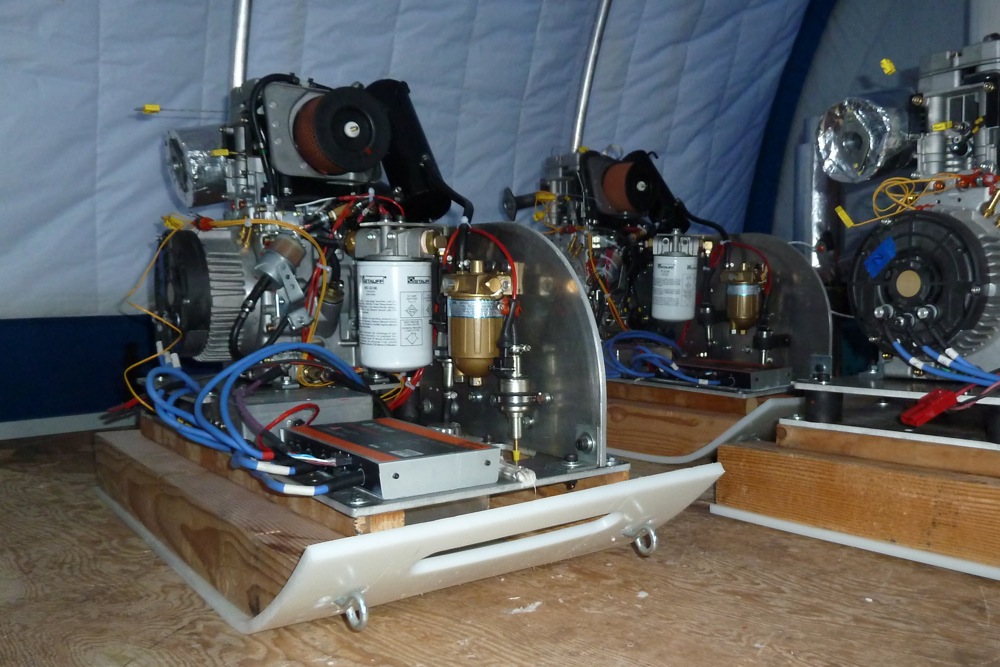
Saturday, 12th January, 2013
Diamond Dust and Carp Party (Geoff)

Today I saw my first "diamond dust" halo around the Sun. It wasn't a particularly amazing one (as far as halo displays go), but it was the best we have seen yet. Unlike halos that occur at temperate (and even tropical) latitudes which are caused by ice crystals in the upper atmosphere (even in the topics, the upper atmosphere is very cold), diamond dust halos are caused by the same ice crystals but at ground level.
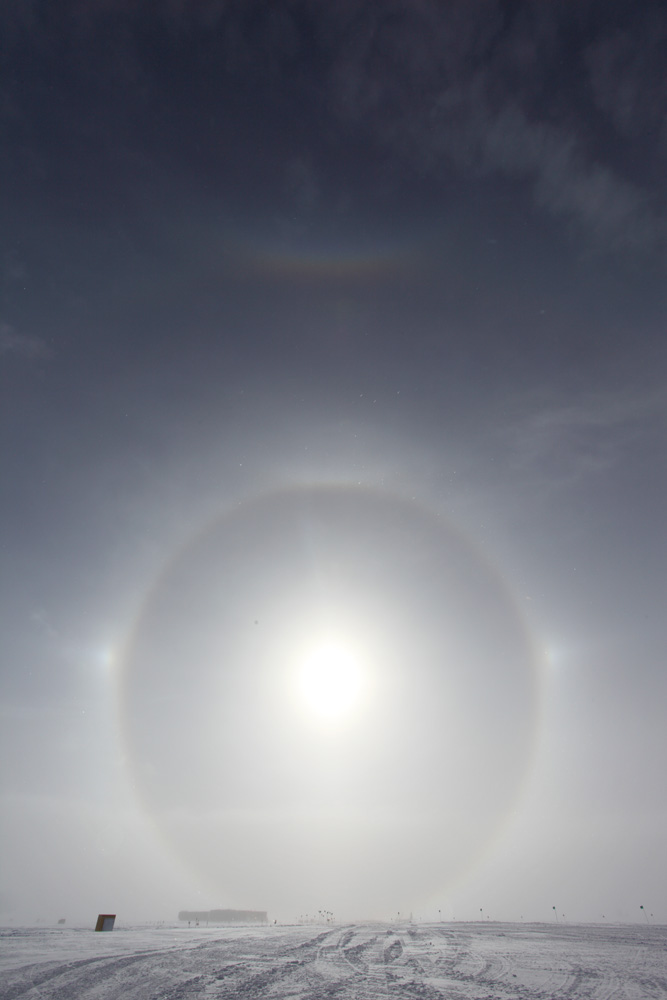
After admiring the halos, we headed to the annual Carp Party, held in the carpenter's work area. It was complete with ice luge, esky and coat rack.
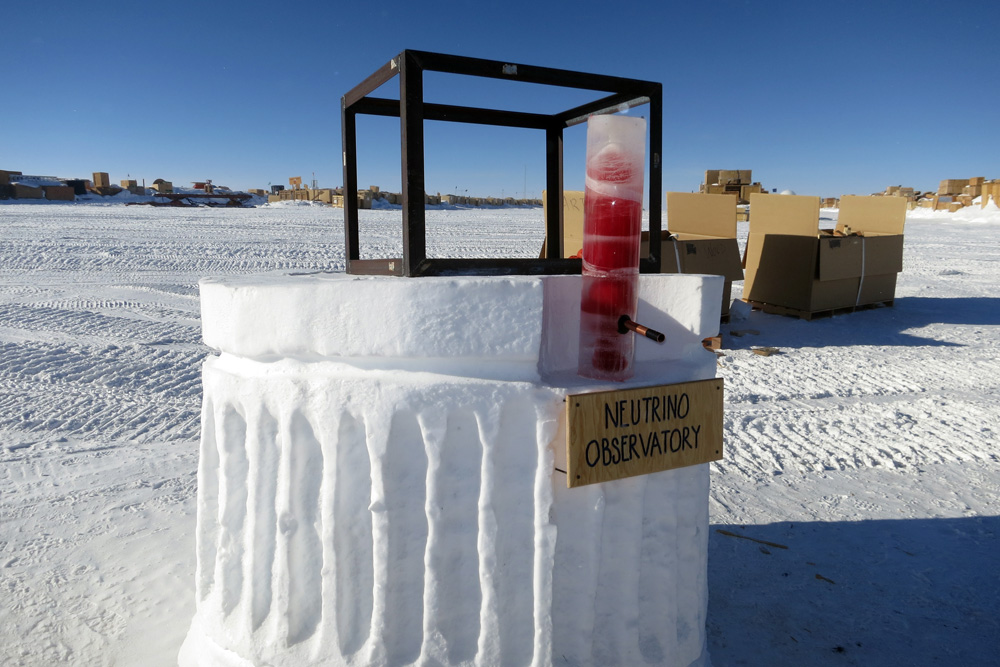
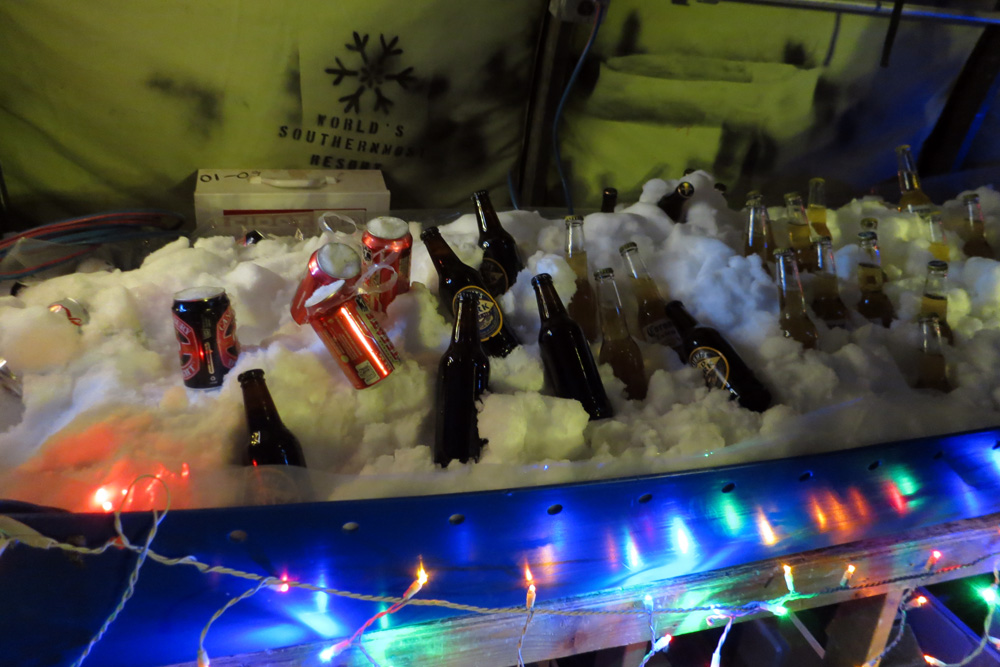
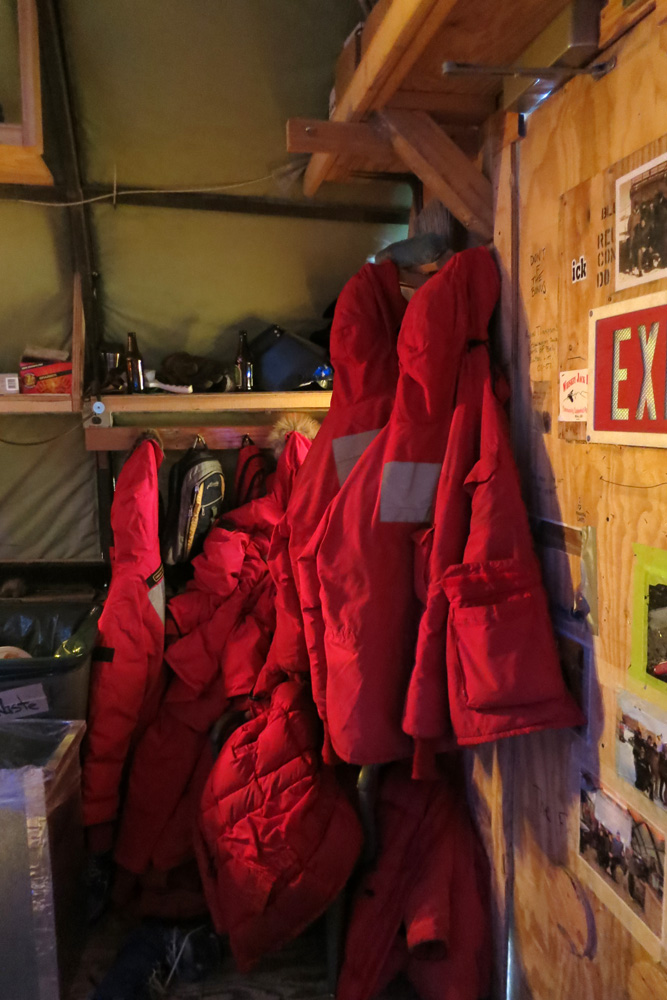
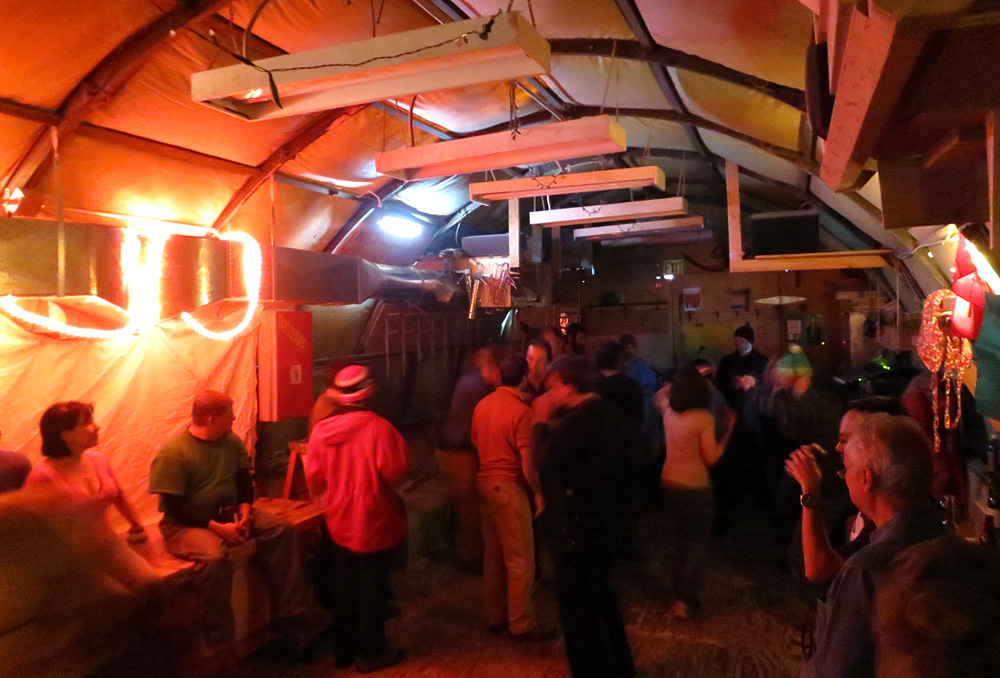
-- Geoff
Saturday, 12th January, 2013
One day later... (John)
A lot can happen in 24 hours.
Yesterday evening ended on a quiet note, with the 5pm LC130 flight from McMurdo cancelled. However, well after all decent folk had gone to bed, the flight was reinstated and arrived around midnight carrying Craig's long-awaited cargo! Now we can move full steam ahead with our Ridge A deployment. After what must have been a very long day for the crew, they took the unusual step of parking the Hercules on the flight line and turning off all four engines. Normally they are very reluctant to do this, to the extent that the engines are run for the entire time (sometimes over an hour) that the plane is on the ground. Presumably it is sufficiently warm today (back up to -26C) that they are confident they can restart engines the following morning.
We spent the morning in our daily two-hour meeting in which we work through the tasks we'll have to do at Ridge A next week. It's a slow and meticulous planning process, but from the moment we land with our brains fogged up by the altitude, a tightly orchestrated script will help us to avoid silly mistakes.
After lunch I headed out to MAPO to find Steele proudly dismantling the South Pole marker that he had made 18 months ago, so that it can be placed in the display case. Because the East Antarctic ice sheet is slowly sliding into the sea (but is continuously being replaced by precipitation), South Pole Station and every thing else on the ice is moving at a rate of about 9 metres per year towards the coast. Every new year's day a small ceremony is held in which a surveying team determines the new position of the pole, and the new South Pole marker is set in place. The old South Pole marker is removed for display inside the Station.
Over the years the South Pole marker has evolved from a simple brass disc to an elaborately machined sculpture that commemorates the previous year's winterover crew. A few months into winter, the station crew hold a competition to design the following year's marker. The machinist then brings the sketches to life.

After ten days here I've become used to the strange lifestyle that is South Pole. Although we are extremely busy and working very long hours, everything else that normally complicates one's life is taken care of (Well, almost everything - it was my turn to clean the showers and toilets again today.)
For example, there are almost no keys. As far as I can see the only locked doors are those to rooms that contain stuff that could kill you. My room, with laptop, phone, camera etc., is unlocked - as is everyone else's. There is no need for money and, while walking around with neither keys nor wallet in my pocket feels very strange at first, it's very nice once you're used to it. From each according to his ability, to each according to his need. As I have remarked before, South Pole is perhaps the only genuine Marxist society in the world, and with delicious irony is funded entirely by the US government.
Fuel for the vehicles is free of course, although you have to pump it yourself - literally.
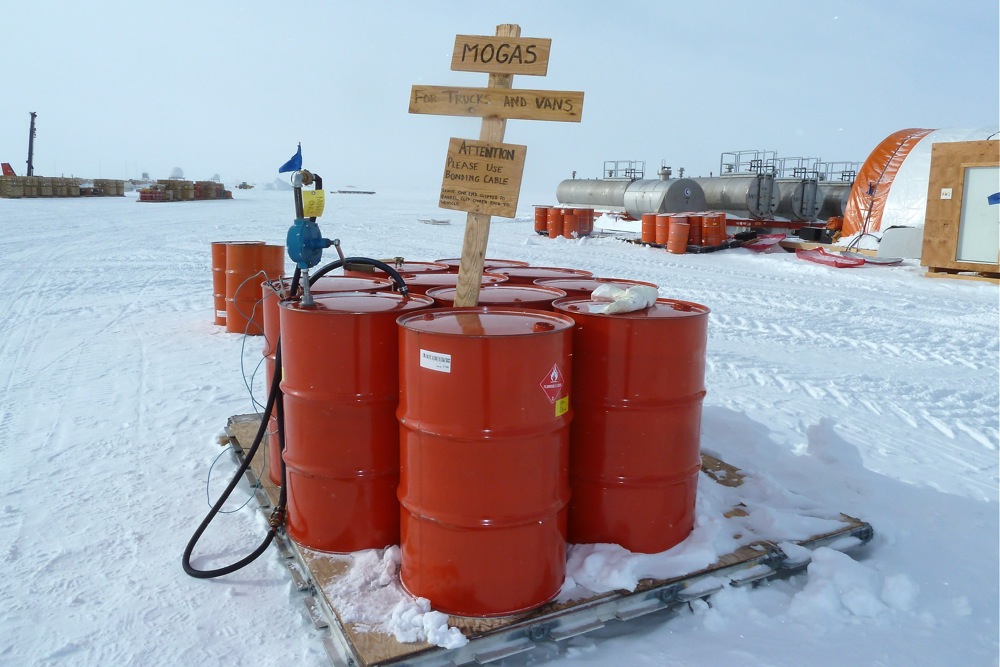
Just when everything was falling nicely into place for us, an urgent medical evacuation was required from one of the field camps. Of course they took our Twin Otter, which is now in McMurdo. One of the two South Pole doctors went, too, so hopefully the patient is safe and well in the McMurdo medical centre. Now we just want our Twin Otter back.
Back at Pole, it's once again Saturday night. Tonight it's the Carp Shop (Carpenter's Shop) party, generally considered to be one of the best gigs on the calendar. It's currently -26C and blowing 15 knots, but that's no reason not to have a barbecue! After all, it's not raining and there are no blowflies. The Carp Shop itself is in an old Korean War era "Jamesway" tent, which lends a unique atmosphere to the night.
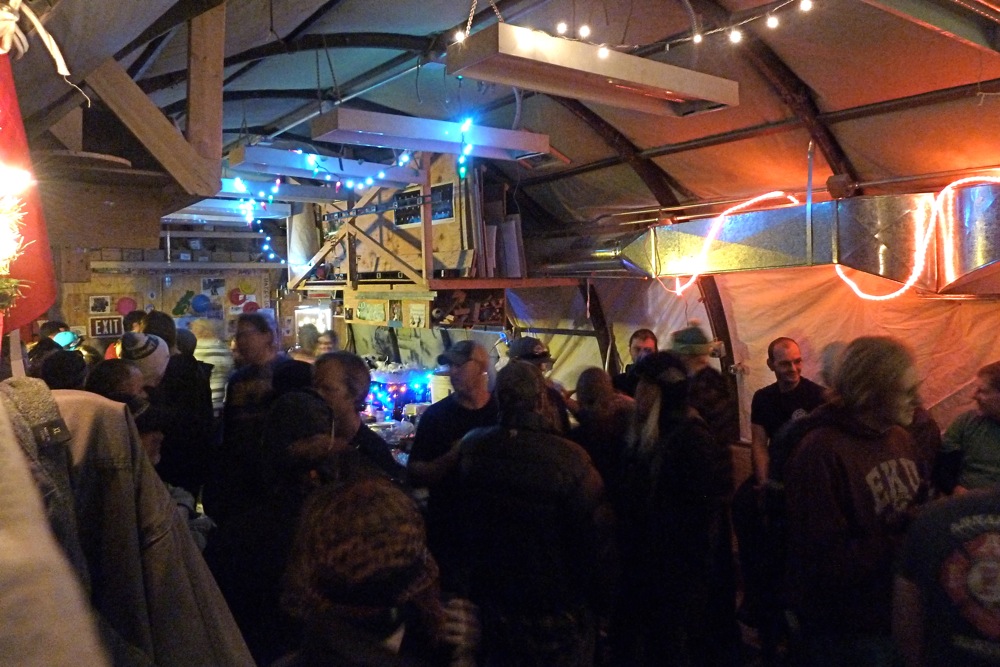

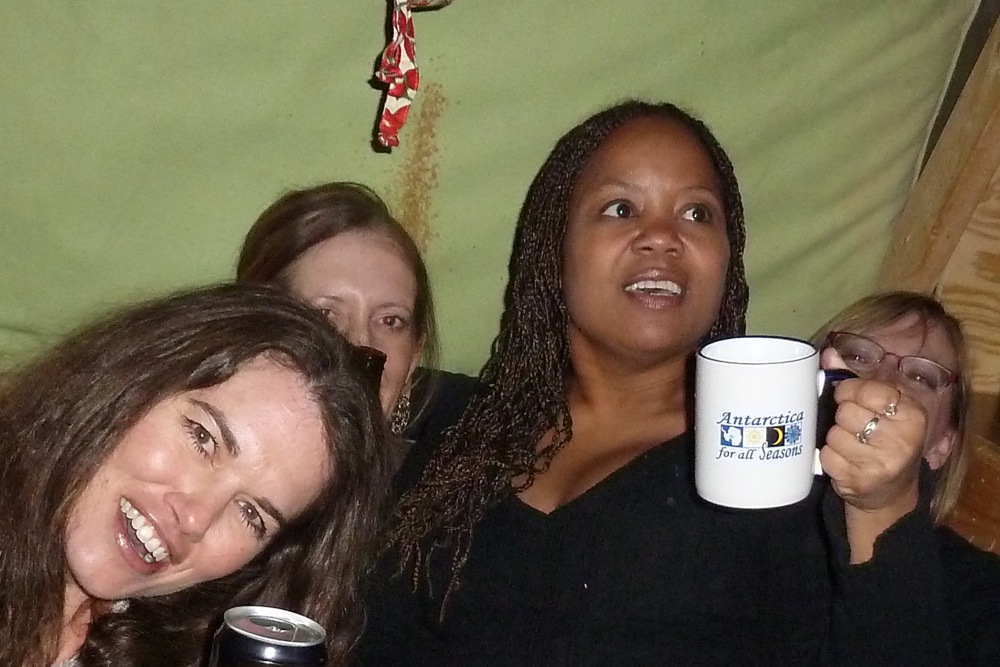
Of course there was live music...


Stepping out after the party late at night, it's a shock to find broad daylight. Suddenly I'm reminded that this really is the South Pole!
Sunday, 13th January, 2013
Sunday - again (John)
We didn't expect to see two Sundays at Pole, but here we are again. This one was even quieter than the last, presumably because a significant fraction of the Station are still sleeping off the effects of the Carp Shop party.
Brunch saw a group of adventurers arrive on skis, to be met by a Basler DC3 that, after much photography in front of the Ceremonial Pole, whisked them away again to warmer climes. A popular expedition now is to "Ski the Last Degree", which involves being dropped off by the Basler at 89 degrees South, from whence you ski the last 60 nautical miles to the Pole. The Station averages over one tourist group per week throughout the summer, and offers organized tours to the visitors.
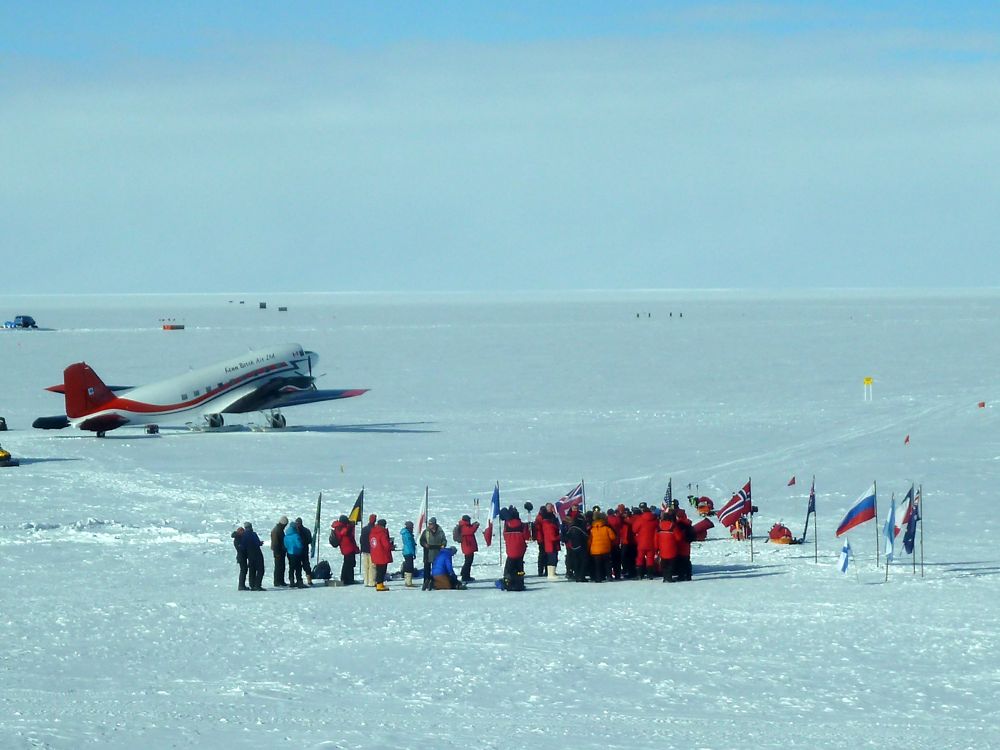
Meanwhile, Craig and Abe were busy assembling the HEAT instrument with all the newly arrived bits and pieces. HEAT is a complete radio telescope, this year operating simultaneously on two frequencies: 492 GHz and 809 GHz. As Craig explains, that's a thousand times the frequency a mobile phone works at, and a thousand times less than the light you see. The multiplier chains, detectors and first IF amplifiers are cooled to 50 degrees above absolute zero by a mechanical refrigerator. The whole thing is a marvelous piece of engineering, requiring just 200 watts of electrical power.
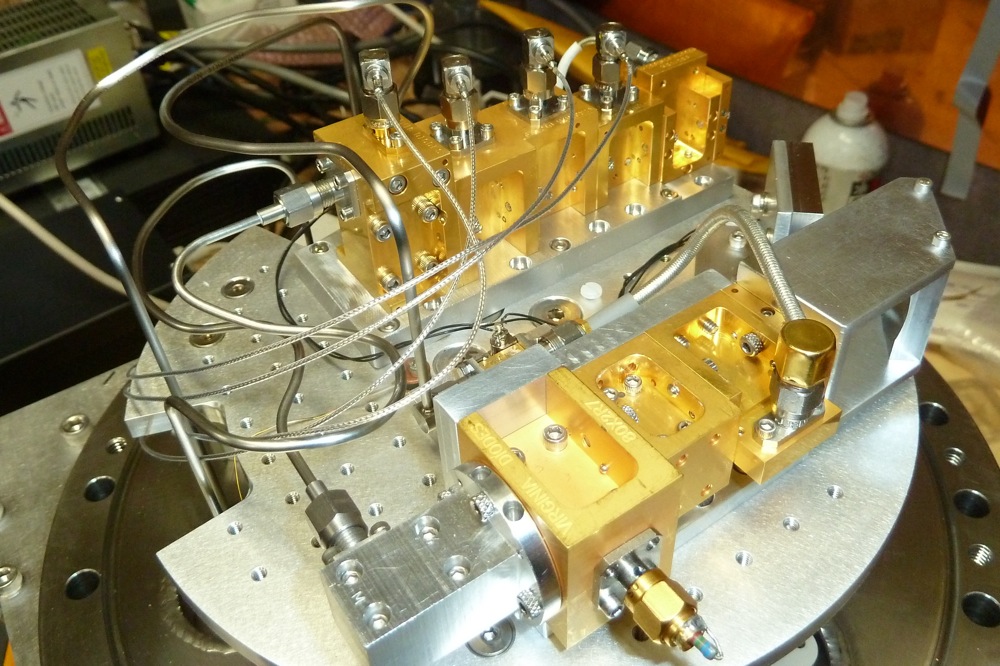
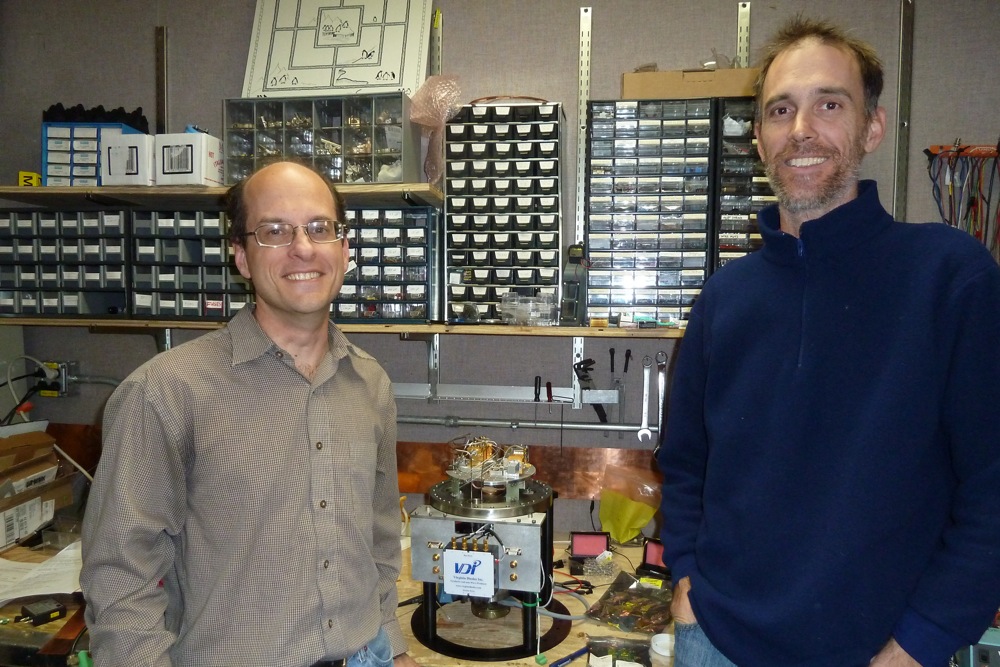
Not much else happened today. We finished up with the Sunday Science lecture in the galley, which was very well attended.

According to the flight schedule, they're bringing our Twin Otter back from McMurdo tomorrow, stopping off at a couple of field camps on the way. Apparently one of the camps has run out of some supplies, including toilet paper. If all goes well, we'll be loading up "CKB" (the registration number of our Twin Otter) first thing Tuesday.
Monday, 14th January, 2013
South Pole - again (Geoff)

Yep, we are still here... so here are a few so called "hero" shots of our team. Though I don't feel too hero-ish, having travelled in an aircraft to the Pole, and walked a mere 50 m from a nice warn heated building to take the photos. The newest addition to our team is Ben Adkison, who is our mountaineer/guide for the field camp at Ridge A. Basically, his job is to bring us home alive, no big deal really. He also shoots with Canon so we will get along. You can also check out his blog Why Not Go Now?.
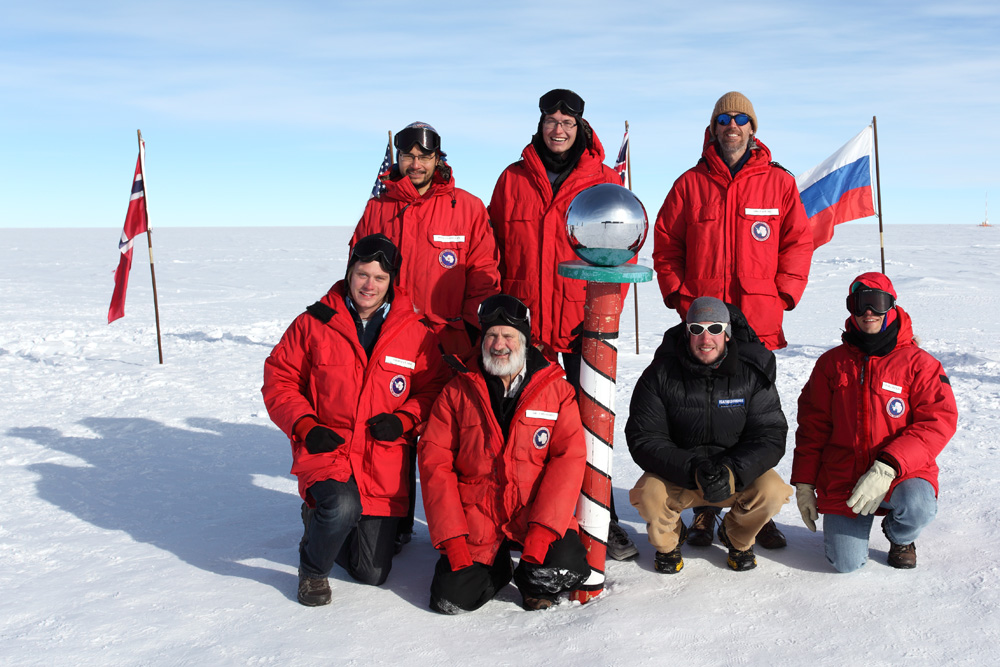


The geographical pole is marked by a new machined marker each year. This year it represents the eight planets of our solar system, with their positions as seen at January 1st, 2013:
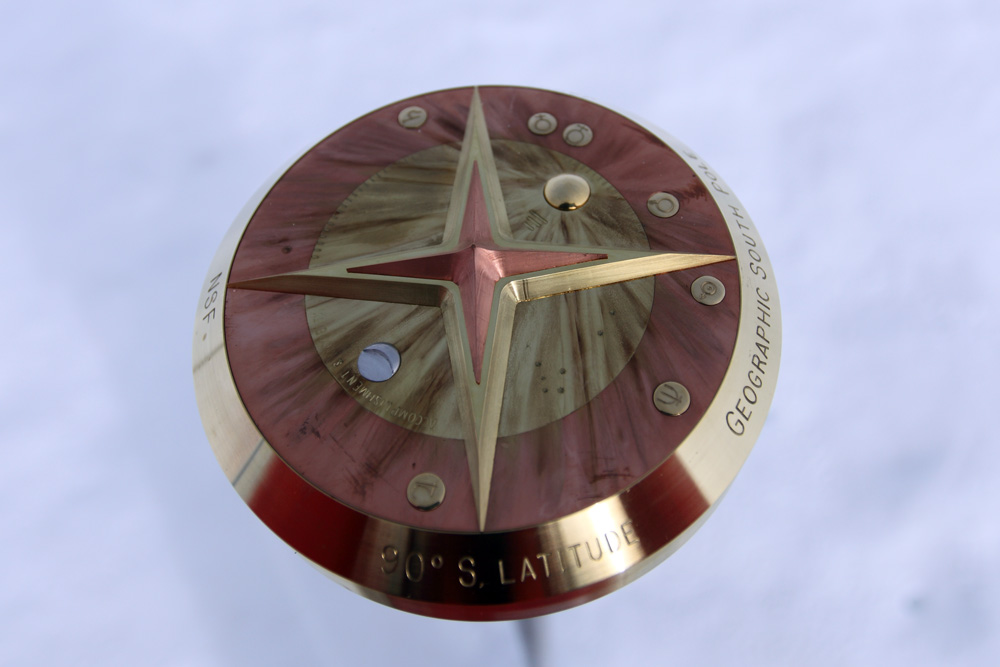
From the machinist who designed it:
Position of the planets on Jan 1st 2013 viewed from the South Pole; and the search for knowledge about our planet and out past our solar system. It's what we do at the South Pole.
This year I wanted to return the marker to more of a traditional geographical marker and simplify the design. So rather than celebrating an event it's back to marking the southern most point on our earth. As a result, this one has lots of pointy bits.
This marker shows the position of the planets as viewed from the South Pole on January 1st 2013. The seven (brass) planets are displayed on a copper inlay. In the very center a small copper star marks the south pole and also represents the earth sciences done from here as we reach out to understand our planet. The large brass star represents astronomy and astrophysics as it extends out past our solar system in the quest for knowledge.
In the center of the marker (in brass) we have the sun, sunset and moon with the southern cross, including the pointers. If you look carefully, the small inscription above the moon reads "Accomplishment & Modesty" this was a reference to honor Neil Armstrong as he passed away when I was making this section with the moon.
The small notches on the inner brass section stretch between day and night and represent all polies. Winter can be a tough haul but it's the summer polies that make a winter possible.
For those of you who still think Pluto should be a planet, you'll find it included underneath, just to keep everyone happy. "Bring back Pluto" I say!


-- Geoff
Monday, 14th January, 2013
Not bored yet (John)
Well at least they brought our Twin Otter back today. Our cargo is (still) neatly lined up on the flight line and ready to go tomorrow morning, but the longer we wait the more stuff we keep adding to it and eventually the plane will be too heavy to get off the ground. Let's hope it's all in Ridge A by tomorrow night.
In addition to our Twin Otter, a Basler DC3 arrived from the German Alfred Wegner Institute. They are on their way from Kohnen Station to Dome C with various pieces of scientific gear, and are stopping over to enjoy a night's hospitality at Pole. Because they are part of a national Antarctic program, we'll put them up at the Station rather than making them sleep outside on the snow. The Antarctic Treaty is a wondrous thing.


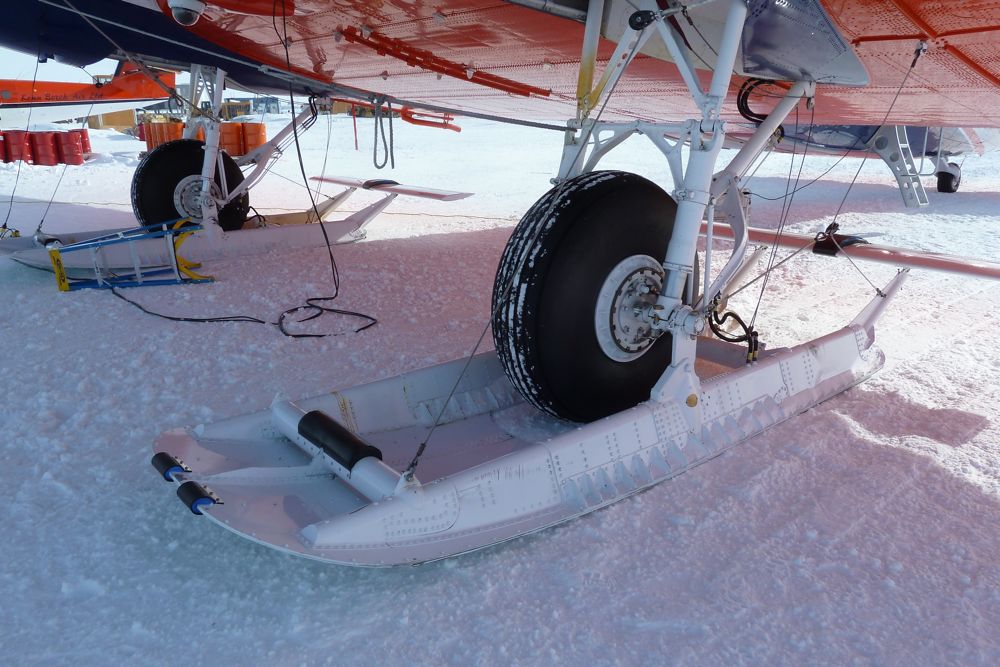
During lunch it was a beautiful, crystal-clear blue sky so we decided to gather up the whole Ridge A team and take some "hero" shots at both the Ceremonial South Pole and the geographical South Pole. Geoff set up his tripod and amazing automatic timer to take some superb photos with his Canon SLR.
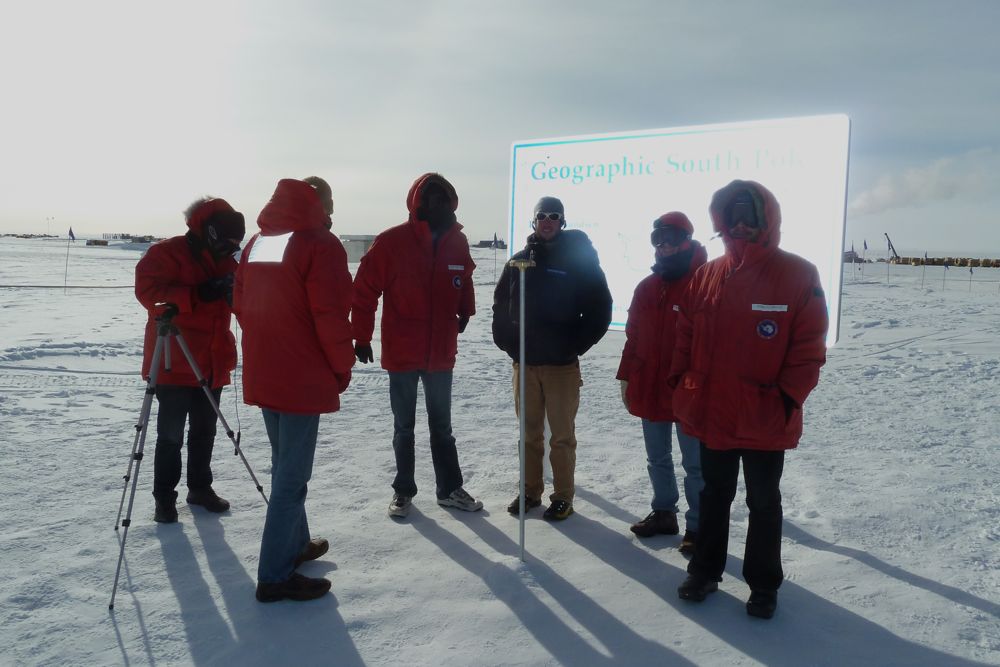

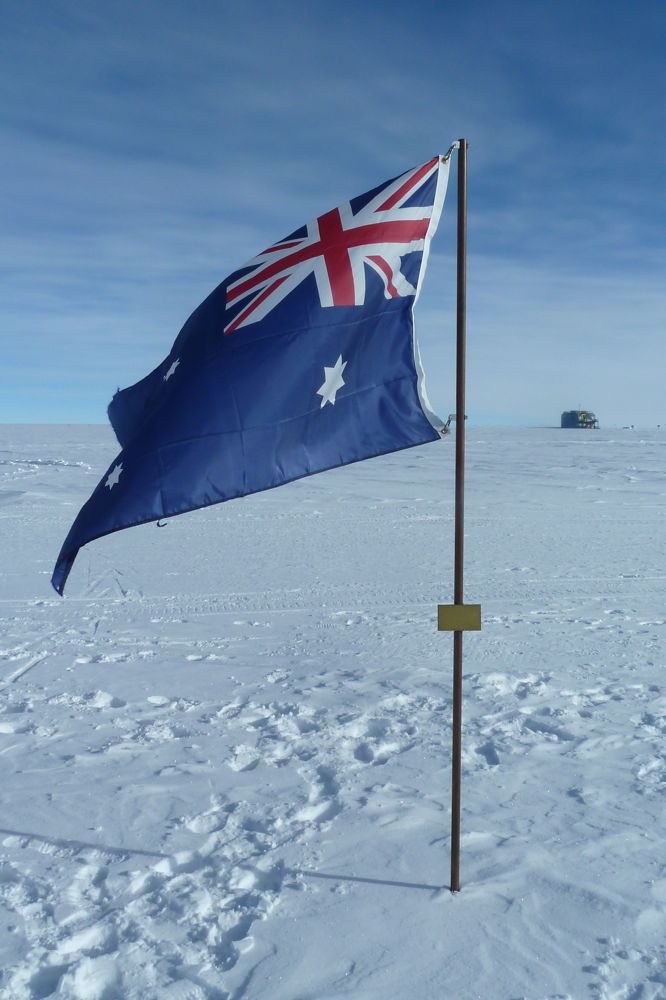
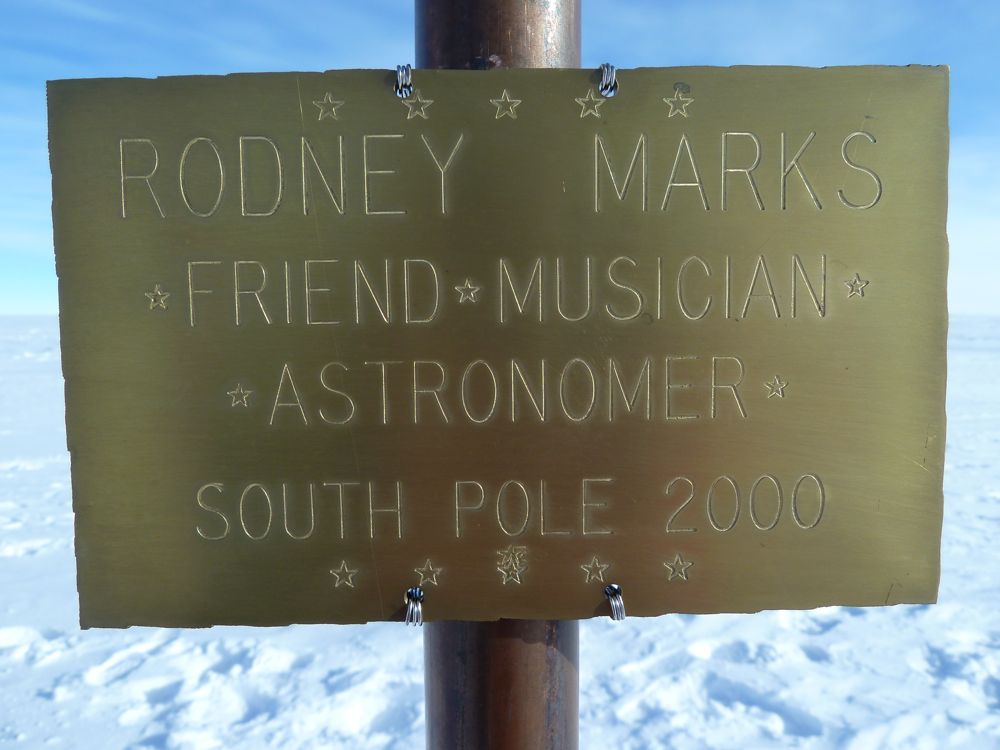
After our photo-shoot we all headed off in different directions to finish the few remaining tasks yet to be done. One problem we know we'll encounter at Ridge A when we swap the engines over is trying to shove the cold, hard rubber tubes for oil and fuel back onto the fittings - a difficult task at best. Daniel has come up with a clever way to heat the tubes: a copper block that we will preheat on the stove, and which has holes drilled for each size of pipe. We'll insert the end of the tube, wait till it's warm, then, Hey Presto!
We just wanted Steele to grab a bit of metal and drill some holes in it but, hey, this guy is a real professional.
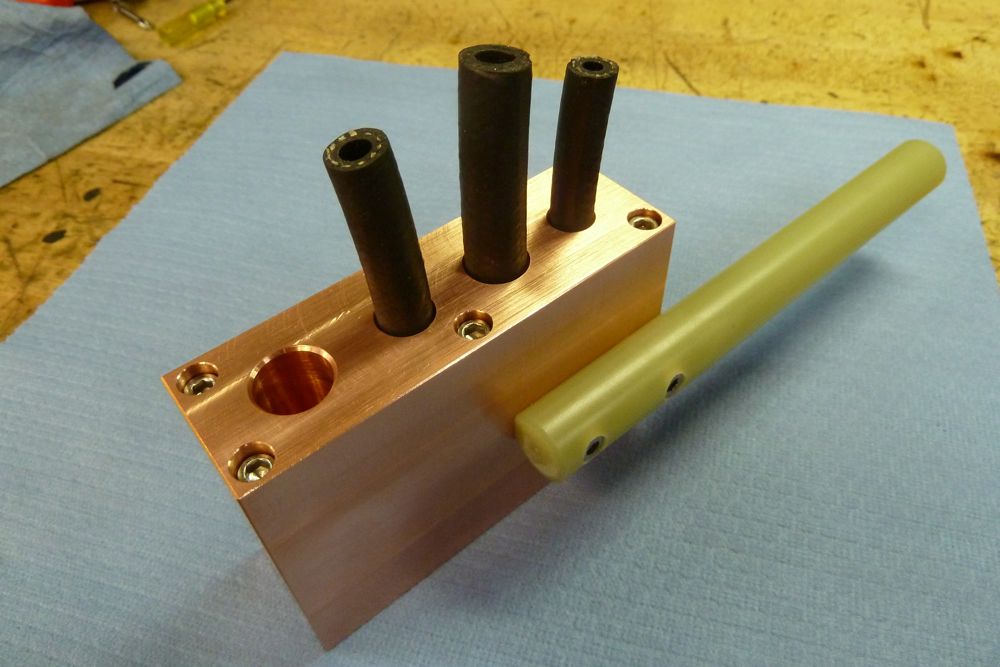
Later in the day I was wiring up some cables in the MAPO building when Vladimir Papitashvili (Director of Antarctic Aeronomy & Astrophysics at the NSF Office of Polar Programs) arrived with Scott Parazynski, former NASA astronaut, and Dr. Polly Penhale, NSF Environmental Officer & acting NSF Medical Director. They spent half an hour looking over the PLATO engines and the HEAT experiment, and asked a lot of very sensible questions.

After dinner, Scott Parazynski treated the Station to a surprise slide presentation on his life as an astronaut, which included five Space Shuttle missions and trips to the International Space Station. He's also climbed Everest. You meet some really interesting people in Antarctica.
Tuesday, 15th January, 2013
Wx delay/cancel (Geoff)
We came the closest we have to flying today, that is a "Wx delay"... which soon turned into a "Wx cancel". We'll get to Ridge A, someday.
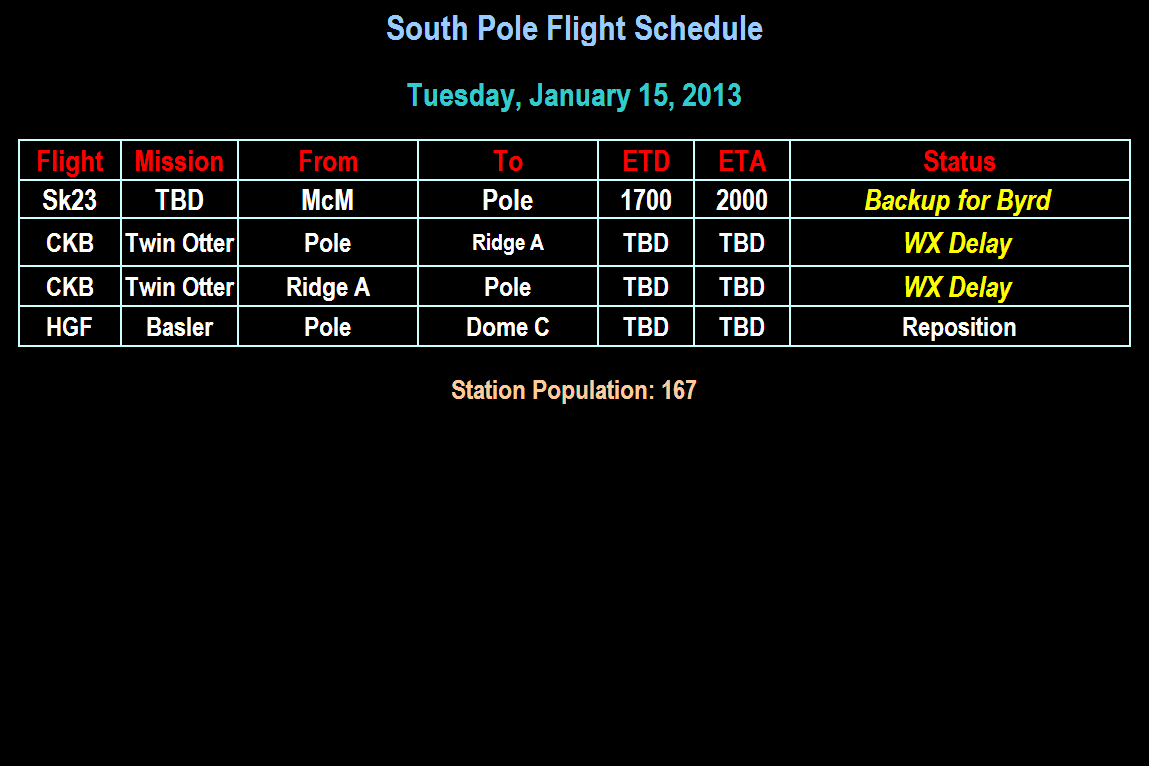
In the meantime, here is a boring time lapse of something happening, to some instrument, somewhere around the South Pole:
-- Geoff
Tuesday, 15th January, 2013
No flying today (John)
Today was a beautifully clear blue, almost windless day. Ridge A was much the same.

Unfortunately, according to a computer somewhere in Charleston, South Carolina, it was overcast with poor visibility at AGAP South, our intermediate refuelling stop. So, the Twin Otter stayed on the ground all day, as did we. Eventually we may have to fly even if the predictions are poor - at worst the plane will need to "boomerang", or return to Pole from AGAP without landing.
So today we finished off all our tasks, cleaned up our work area, and set about not being bored. I spent some time in the ham radio shack, started reading an English translation of the Koran, and otherwise filled in time.
Tomorrow, maybe?
Wednesday, 16th January, 2013
Action (Geoff)
Finally some action today (apart from re-loading the SatStat satellite information or gaining a high score in Solitaire, Spider Solitaire, Minesweeper, Freecell and 3D Space Cadet Pinball). Our cargo flight departed for Ridge A. We will be anxious to talk to the pilots this evening to hear about the state of the "runway".
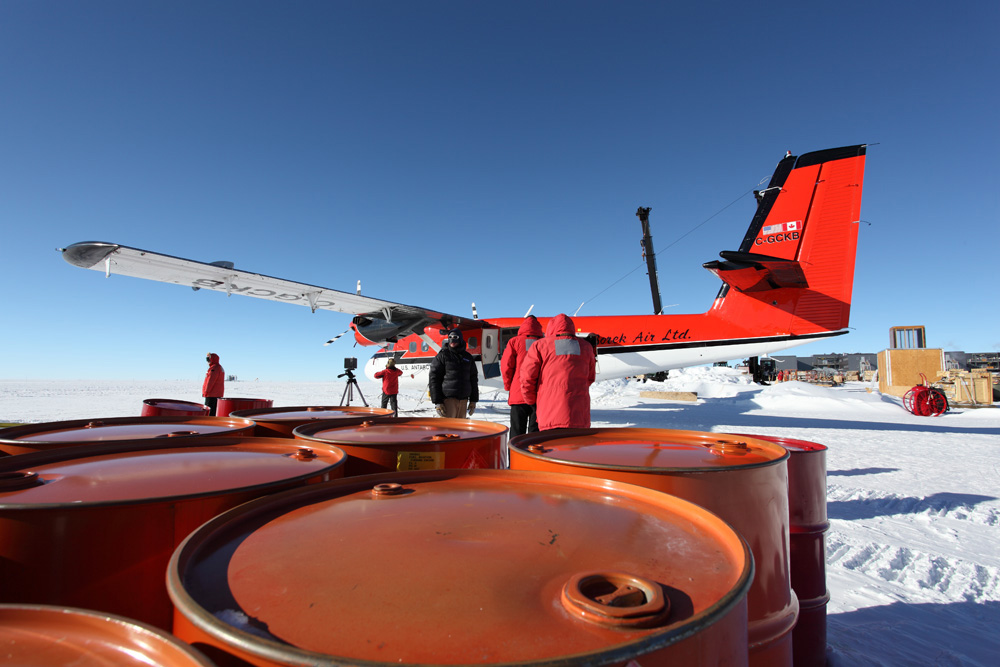
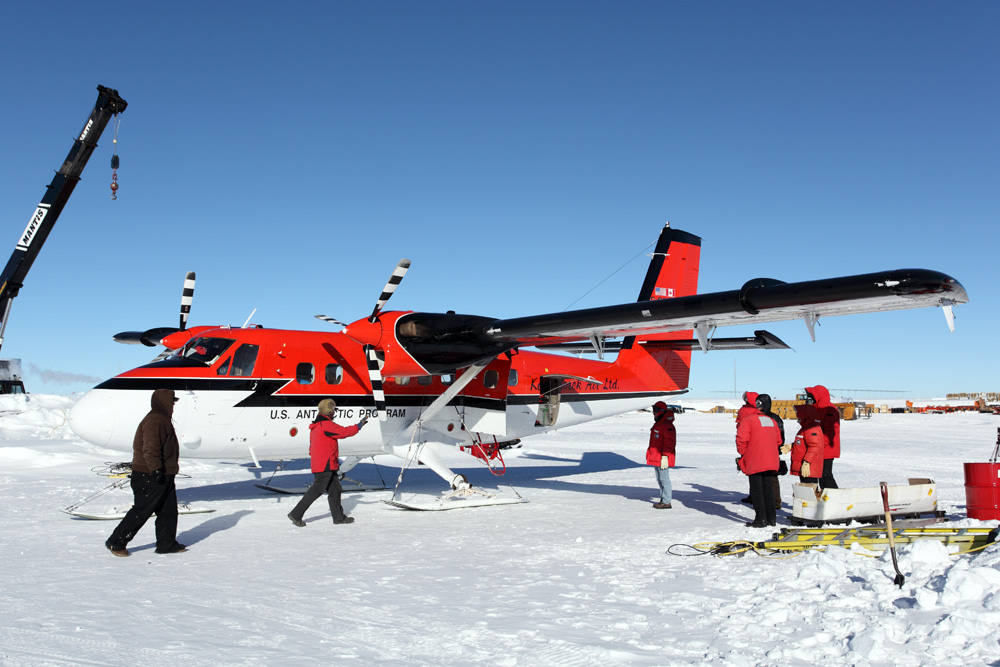

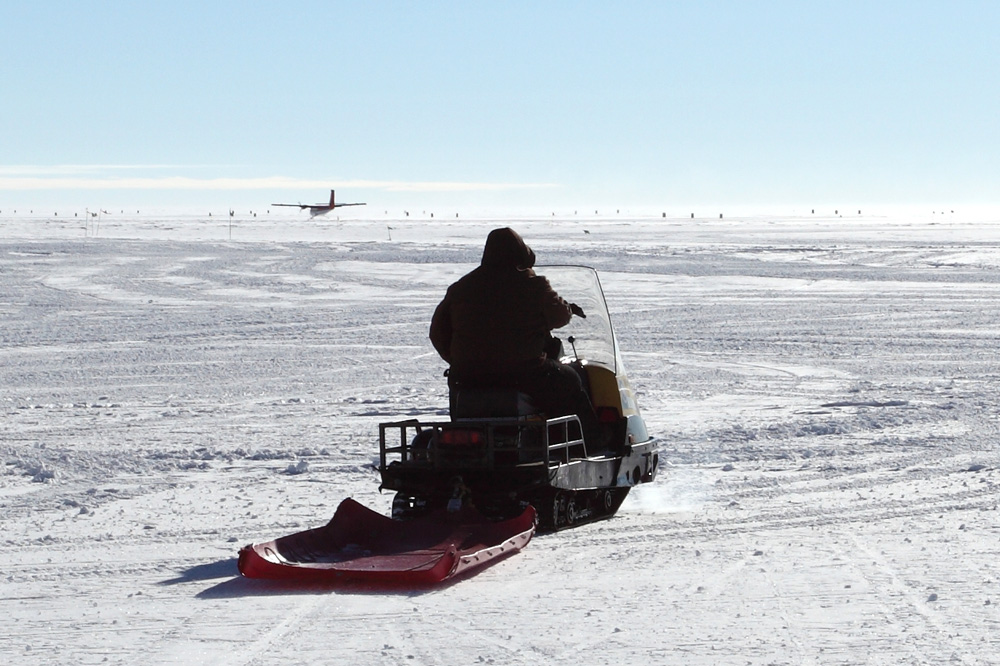
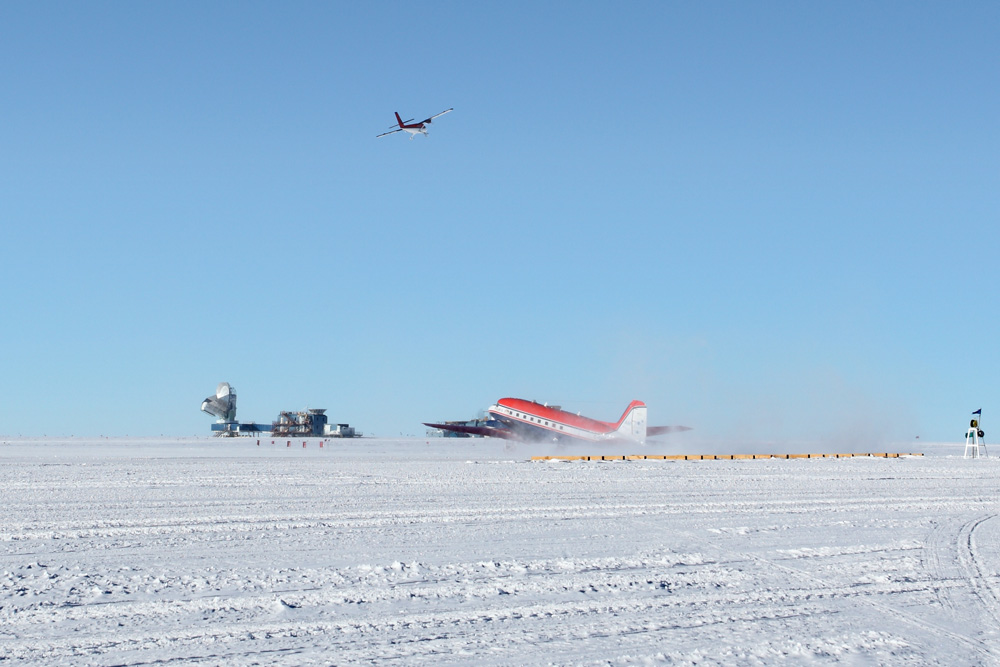
The timelapse of the loading was taken using my GoPro Hero2 in a custom heated box (using hand-warmers). The heated box worked well (considering it was around -30 C outside); the camera took ~2,150 photos and still had an almost full battery.
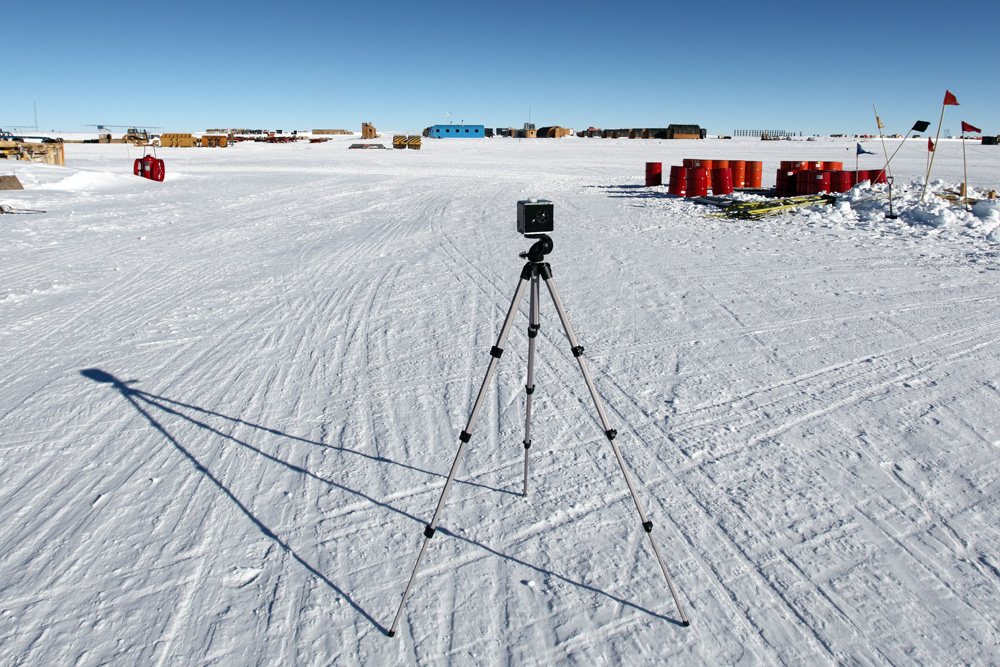
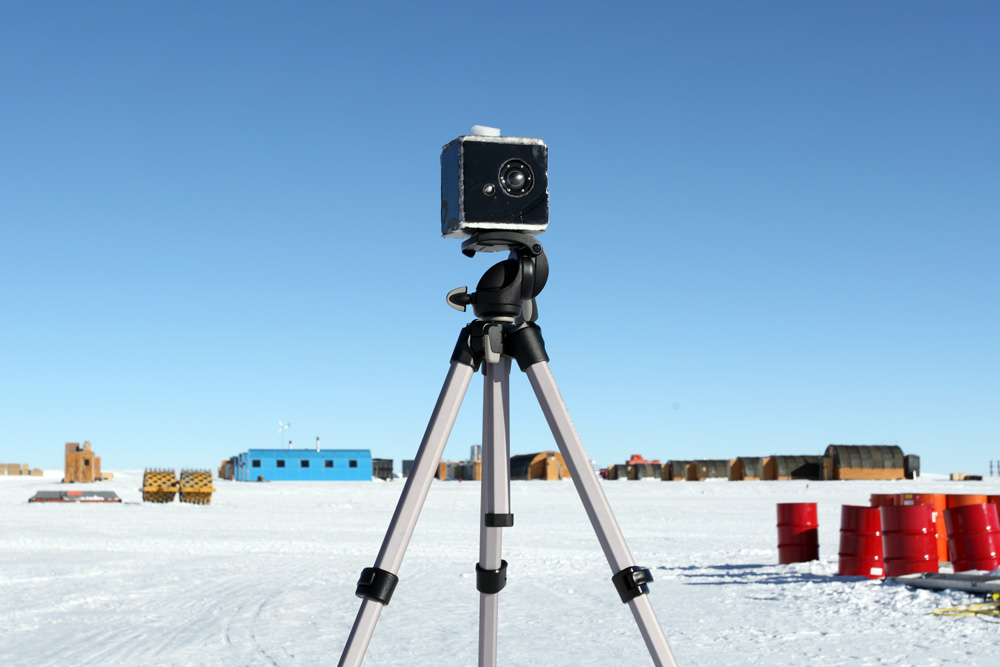
-- Geoff
Wednesday, 16th January, 2013
Reflections on South Pole: Food (Geoff)
Breakfast:

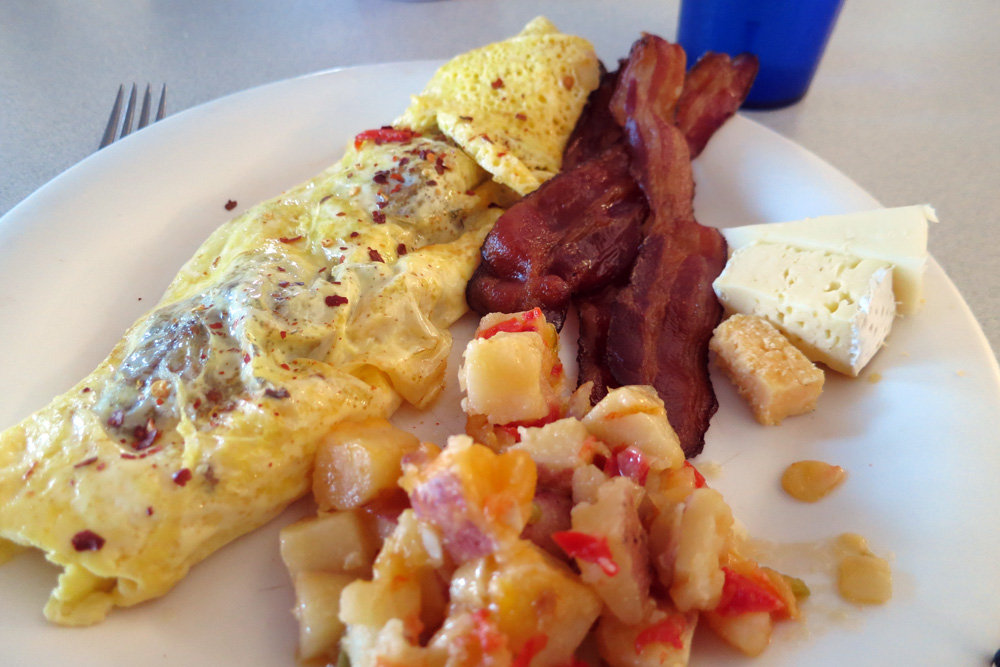
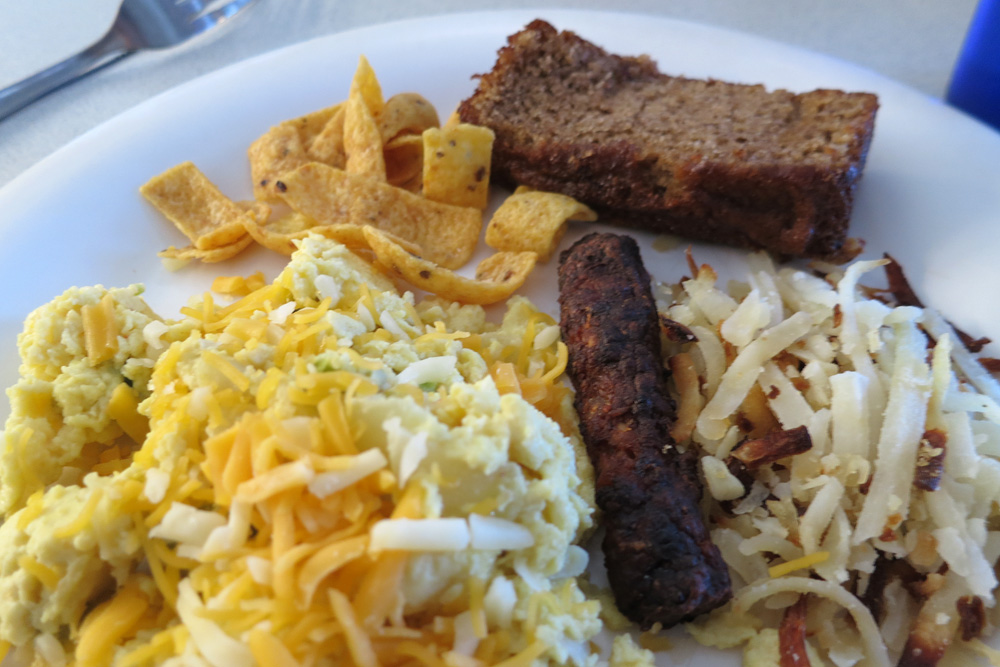
Lunch/Dinner:

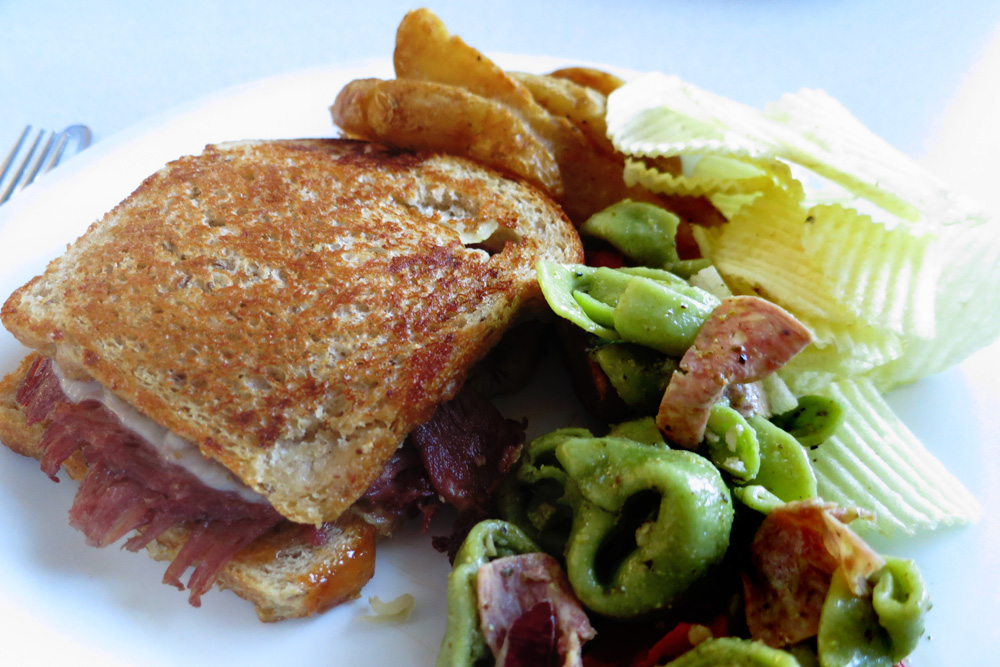


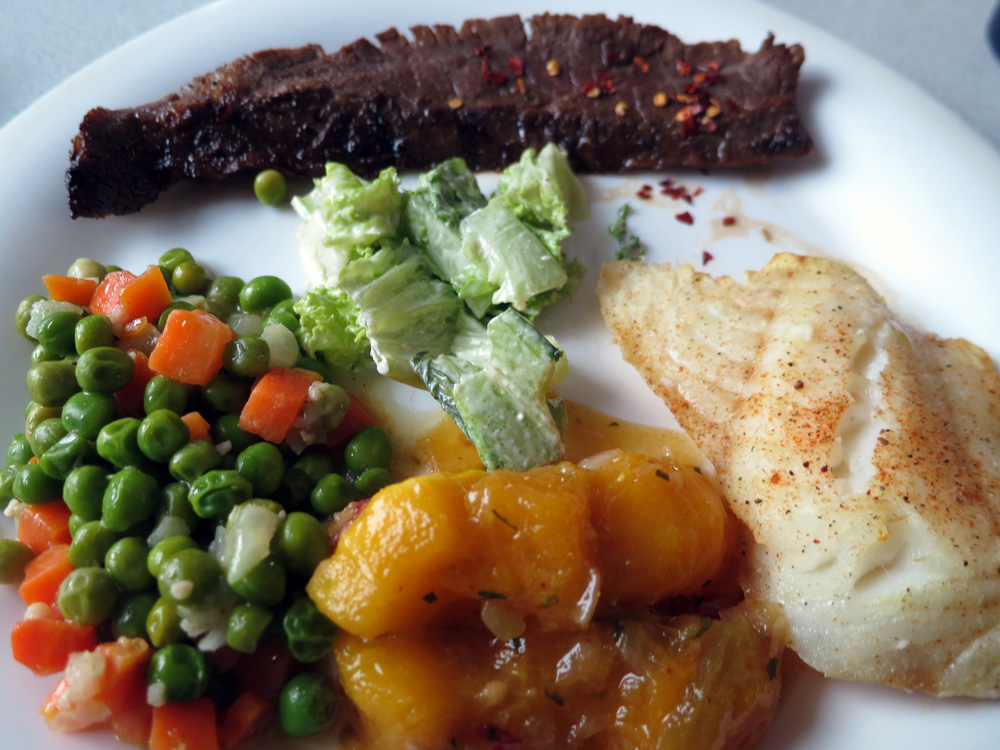



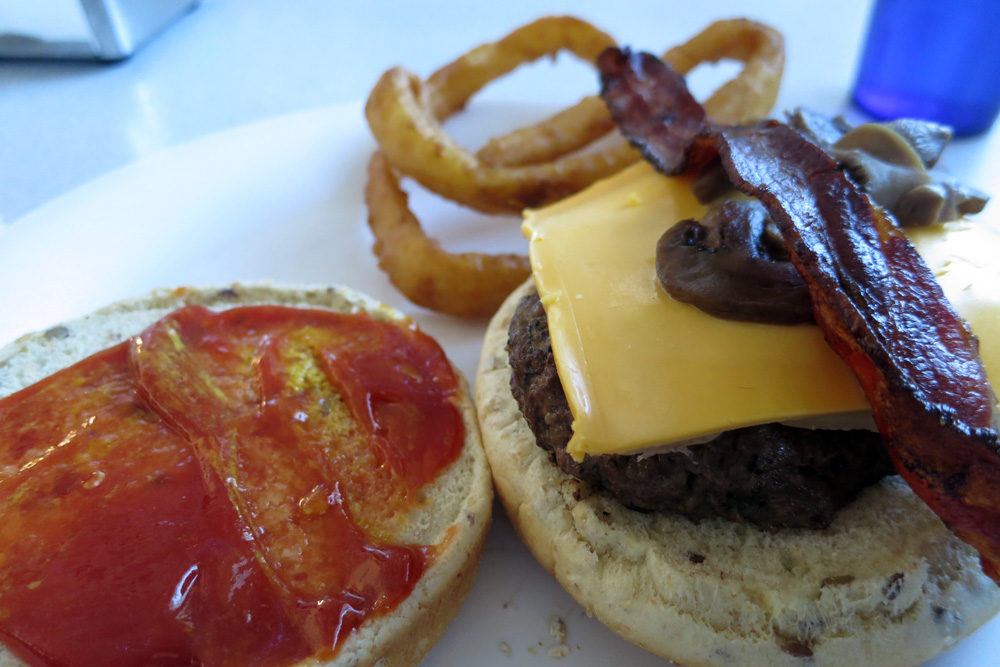

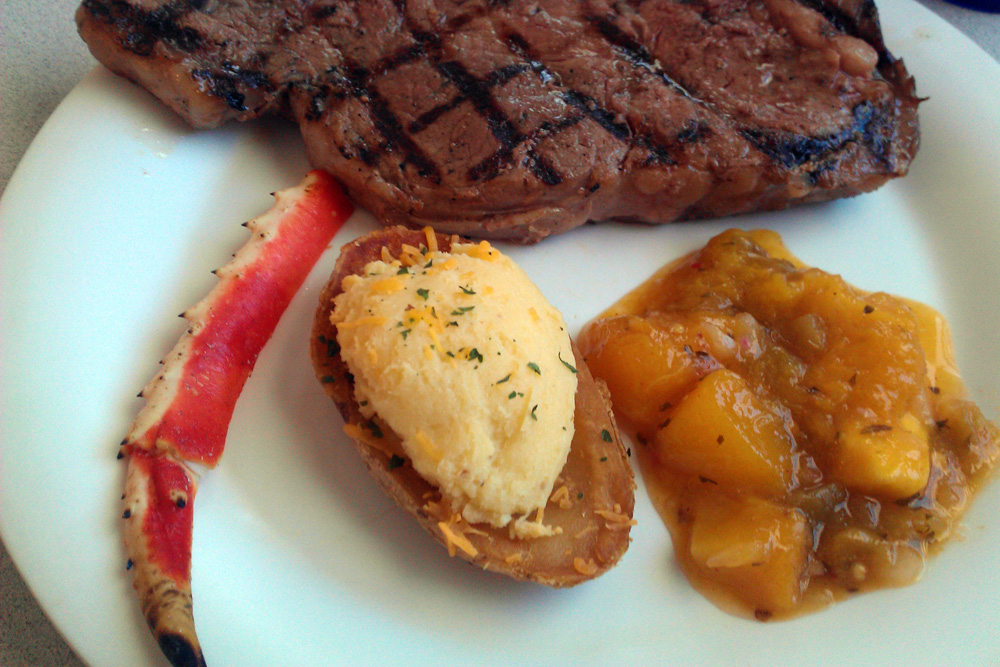
Dessert:
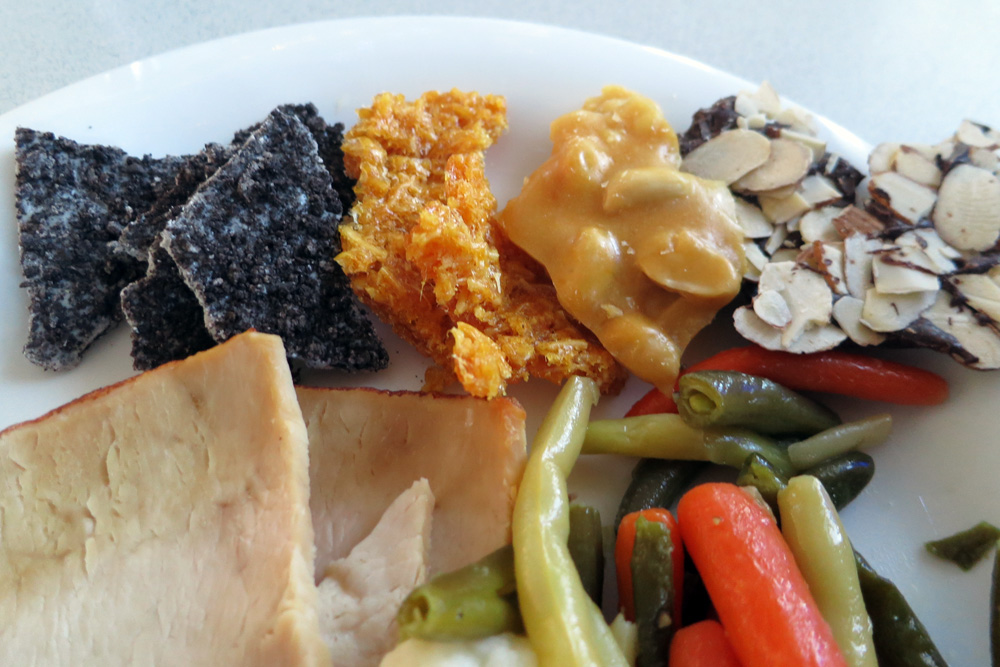


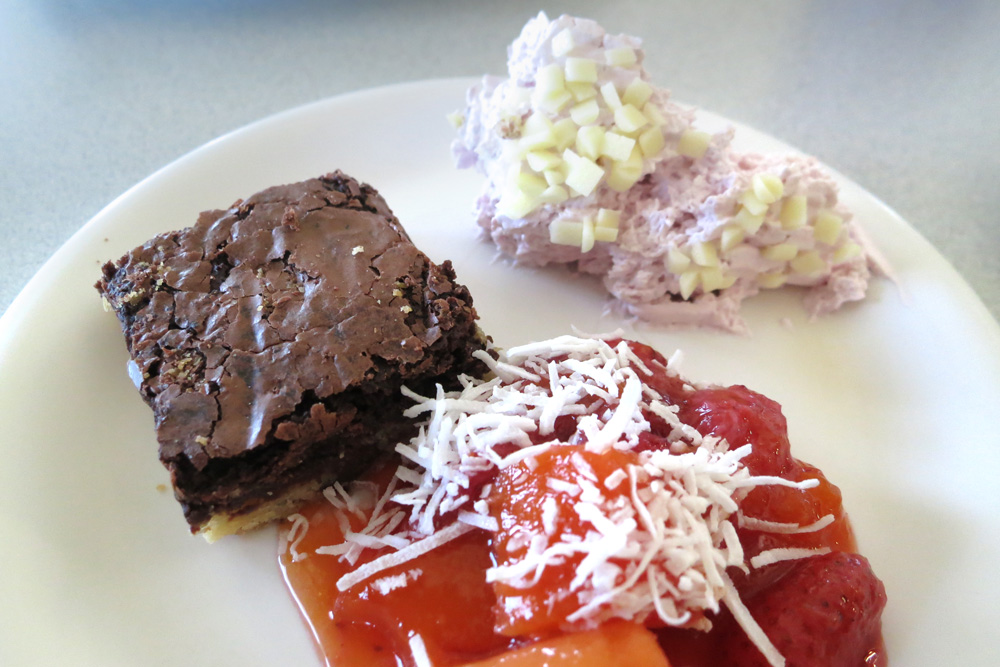


-- Geoff
Wednesday, 16th January, 2013
Let's go! (John)
As we've done for the last few days, we met the pilots over breakfast this morning to discuss the weather forecast and to study the latest web-cam images from Ridge A. For the first time this year, the temperature at Ridge A has just dipped below -40C.
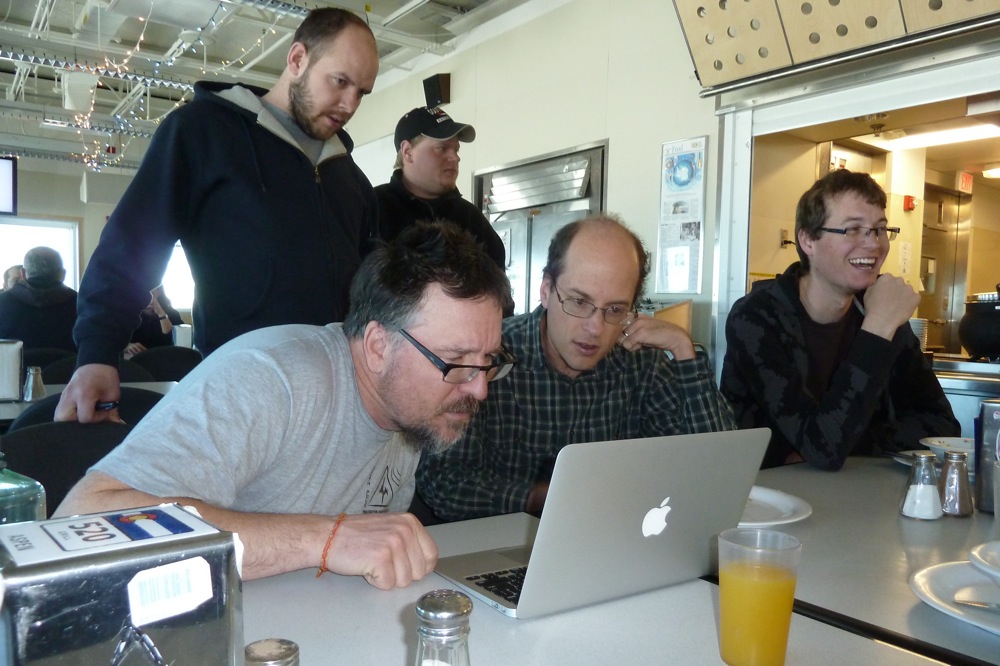
This time, everything was in our favour: not only were conditions good at Pole, AGAP and Ridge A, but they were bad at Klein Glacier, the first priority destination for the Twin Otter. So, we were bumped up the queue. After breakfast, we headed promptly out to the flight line to load our cargo.

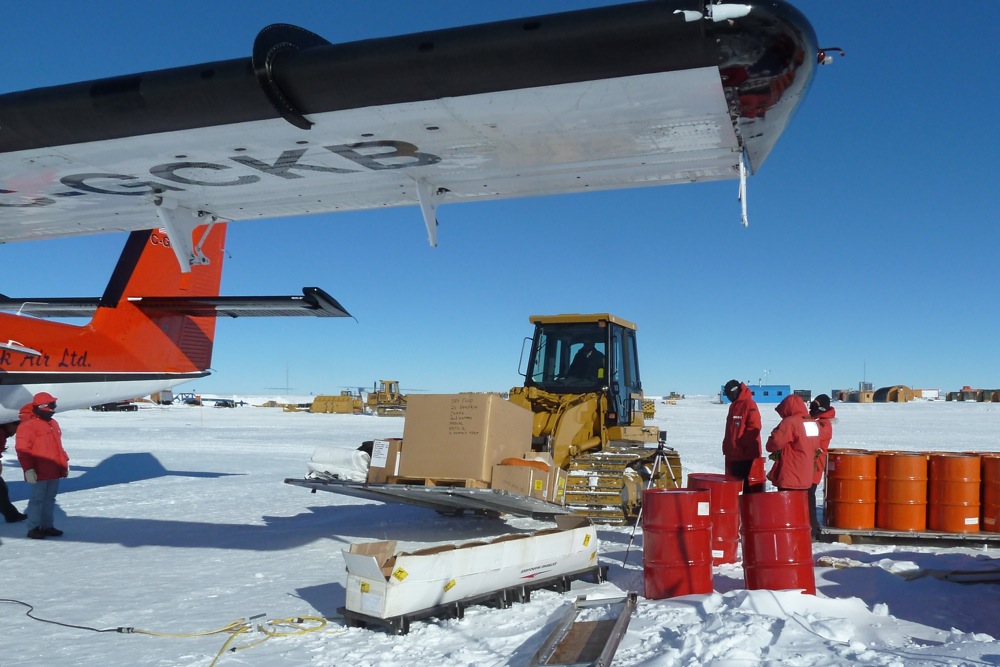
Here are our two pilots:
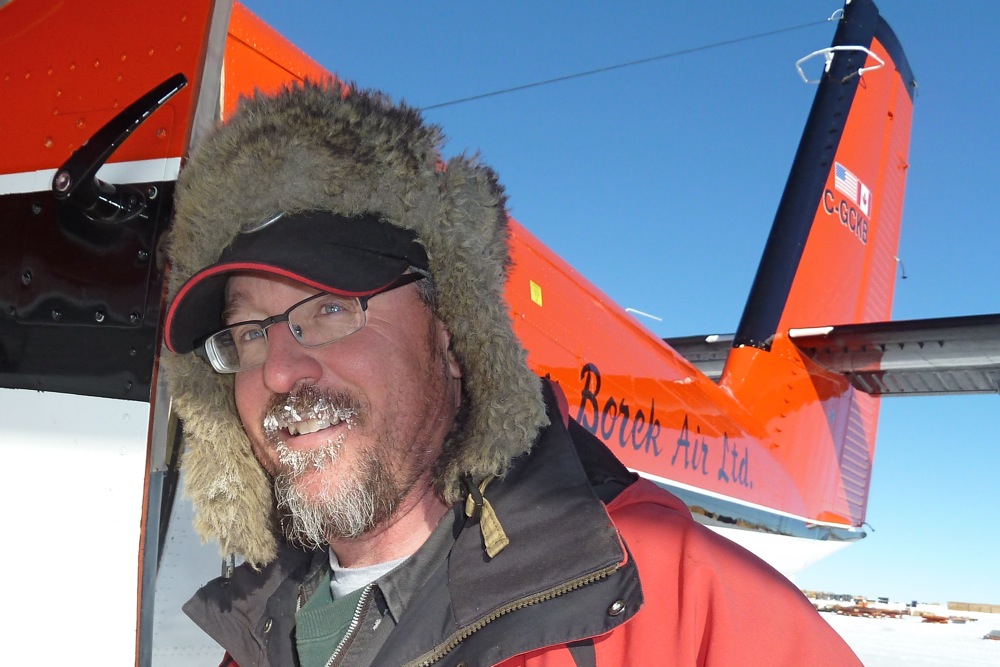
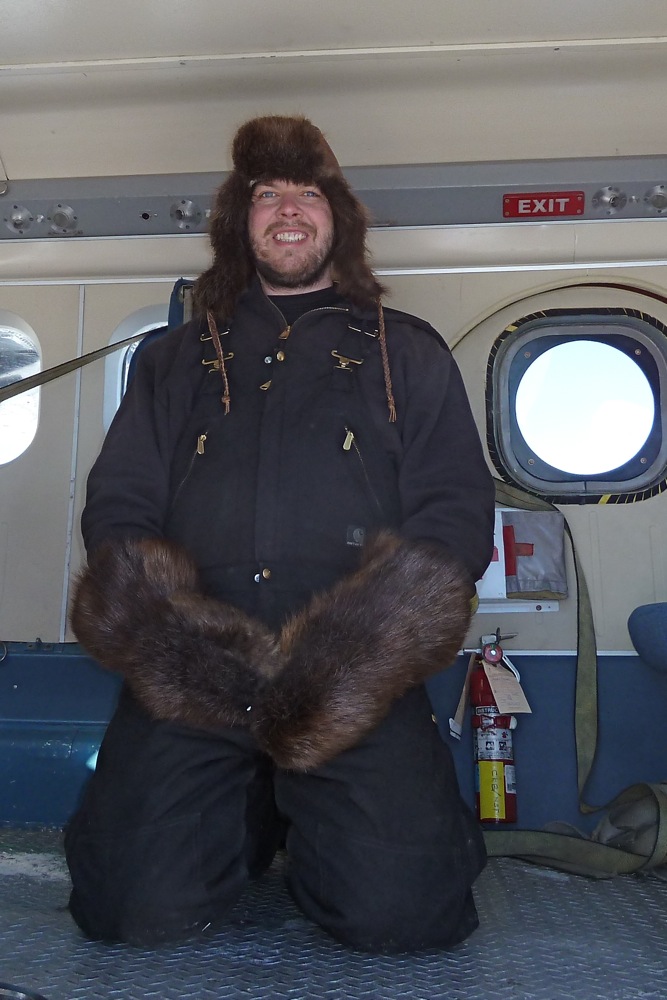

With the plane fully loaded and ready to go, a new and unexpected problem emerged: both we and the German Basler had been allocated the same ski-way slot of 0900hrs! For a moment or two it was unclear how this would be resolved, but fortunately nature has evolved a way of resolving such dominance disputes without injury.

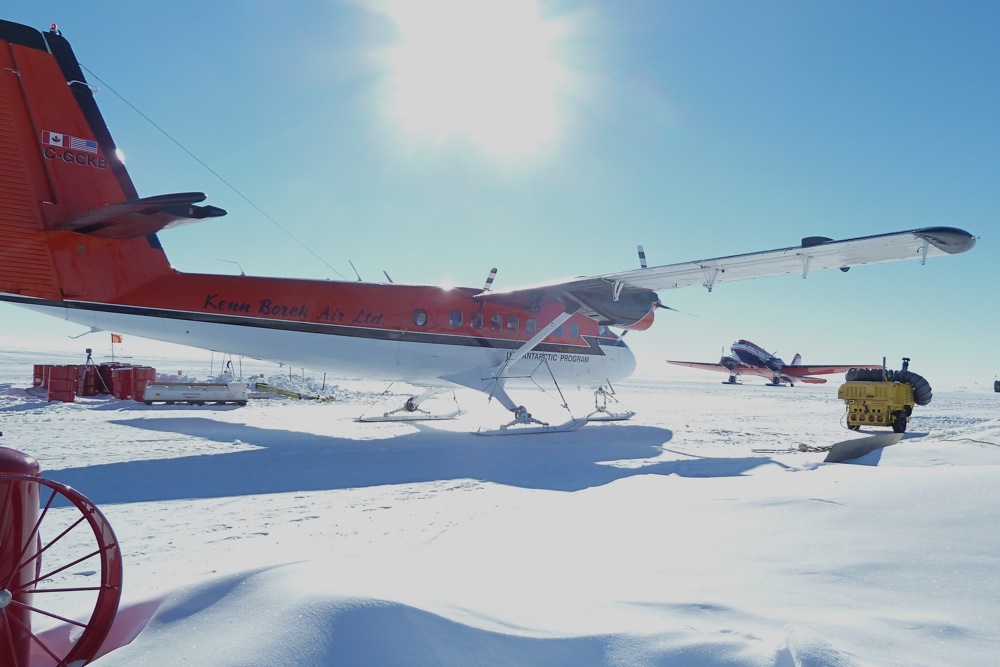
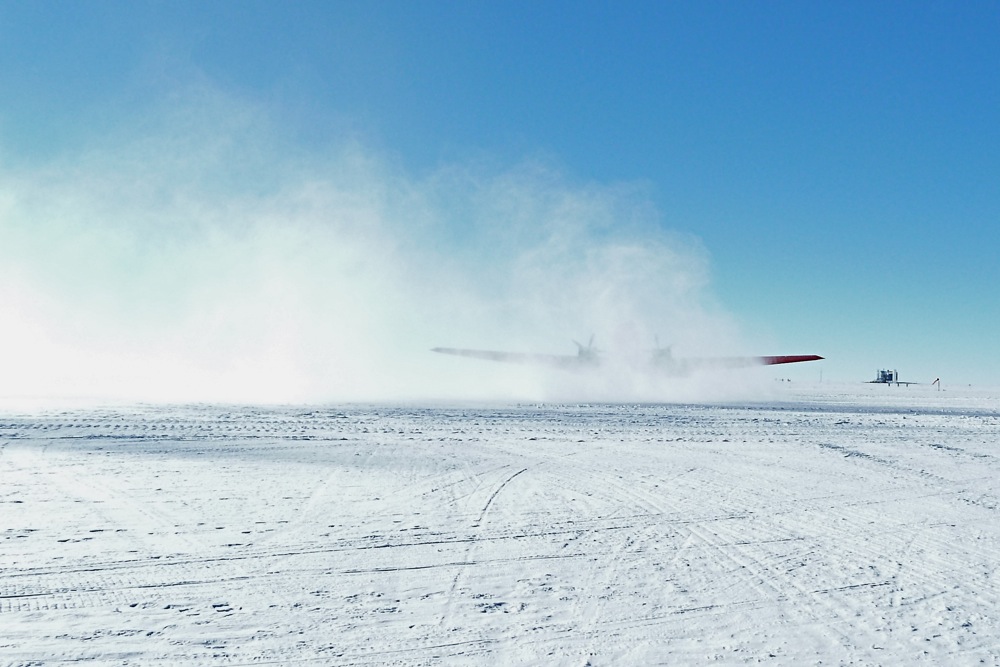

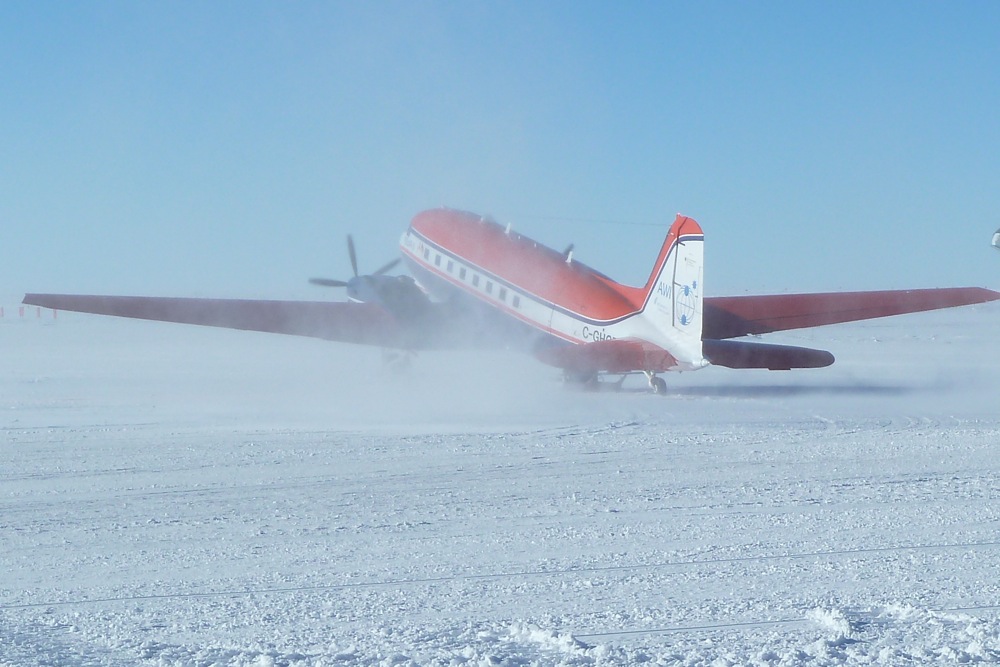
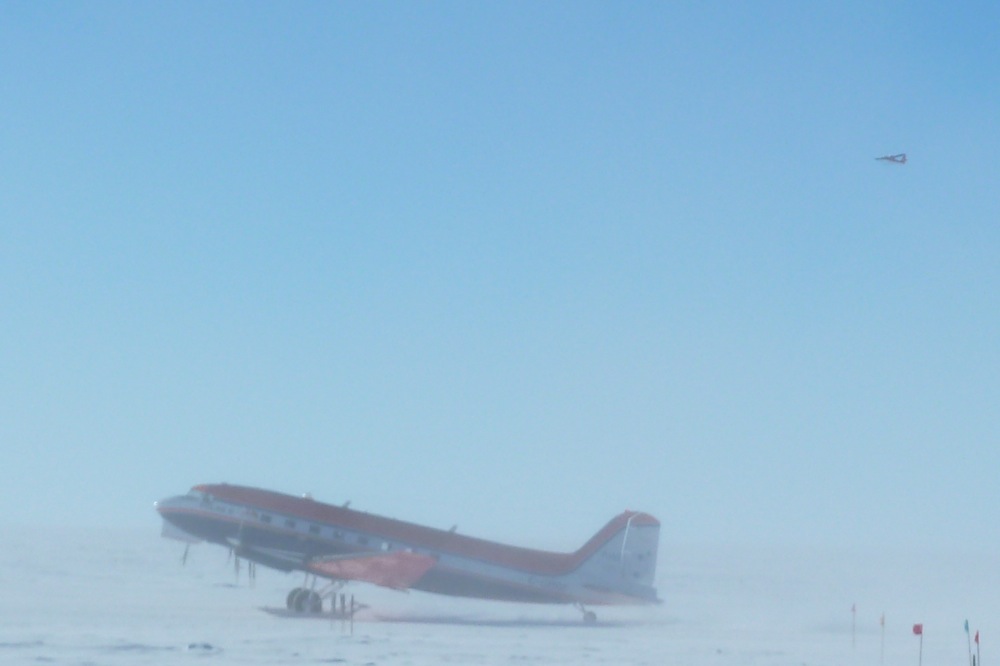
The Twin Otter returned around dinner time, after a very successful trip. Apparently the ski-way is quite hard to see from the air, so we'll need those black plastic garbage bags we souvenired. However the ski way is also in quite good condition, so our daily warm-up ritual with shovels and chainsaw to smooth the lumps and bumps should not need to be too prolonged.

For the rest of the day we got things ready for a possible deployment tomorrow. I must remember to trim my moustache tonight, because when it freezes to my beard I can't open my mouth anymore.
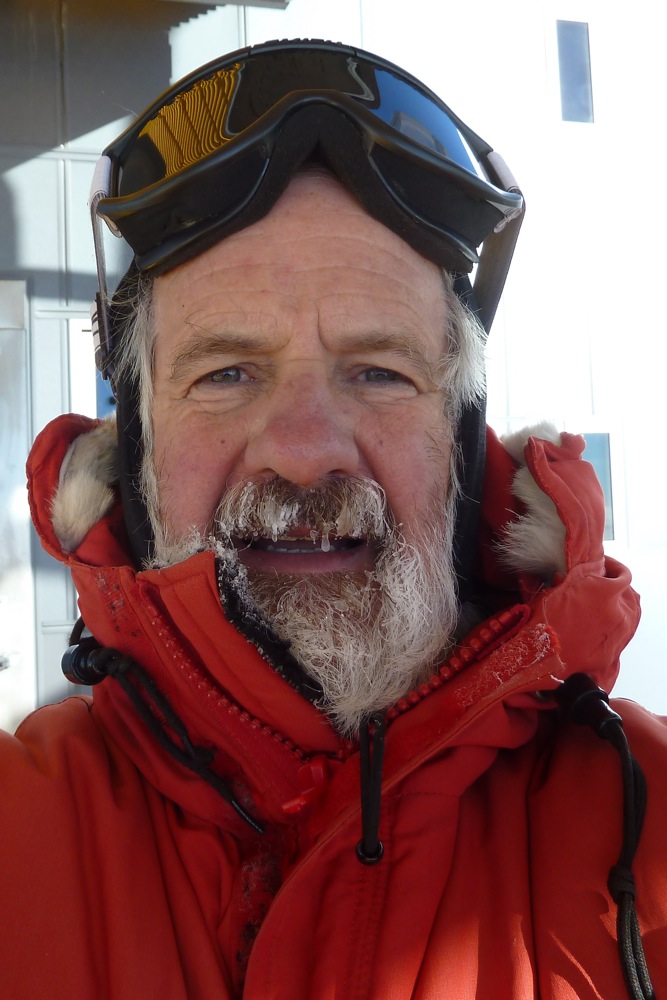
Our next load is now lined up on the flight-line. Tonight we'll pack our sleep kits and our very best ECW gear and hopefully be flying by 0900 tomorrow. More likely, however, the Twin Otter will make its primary mission to relieve Klein Glacier camp, where apparently they've been out of toilet paper for a week now.
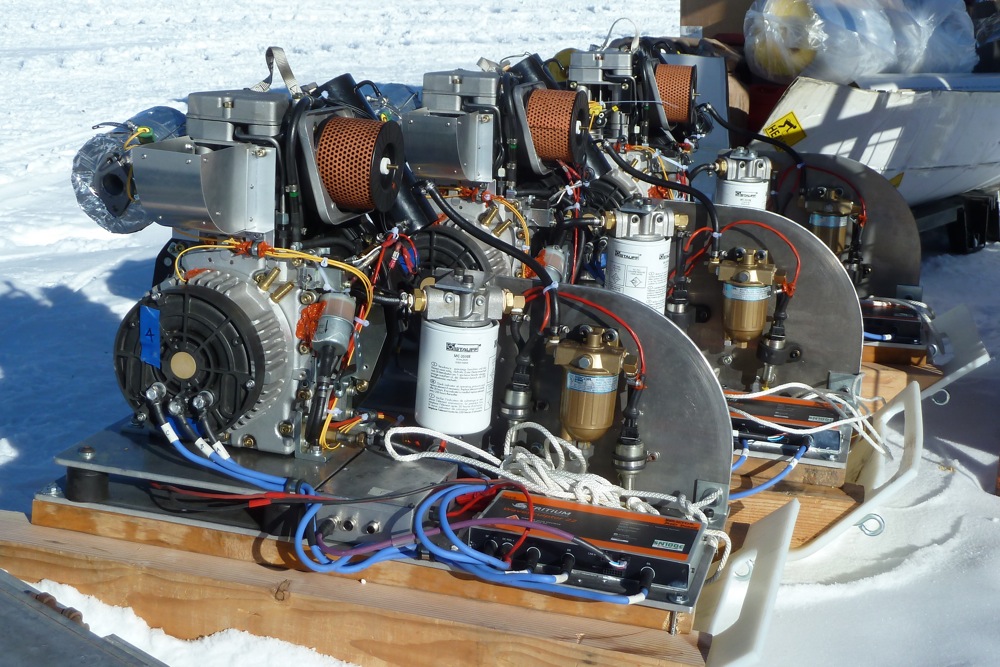
If there's no blog update tomorrow night, we're at Ridge A (with no Internet access). A bumper crop of blog updates will follow shortly!
Thursday, 17th January, 2013
South Pole to AGAP-South (Geoff)

Today, our first PAX flight took off to Ridge A. Before we got to Ridge A however, the Twin Otter must re-fuel somewhere. That somewhere is a place called AGAP-South, around 2.5 hrs from the South Pole. AGAP-South is an ex-geologicial camp which is now purely a fuel cache.

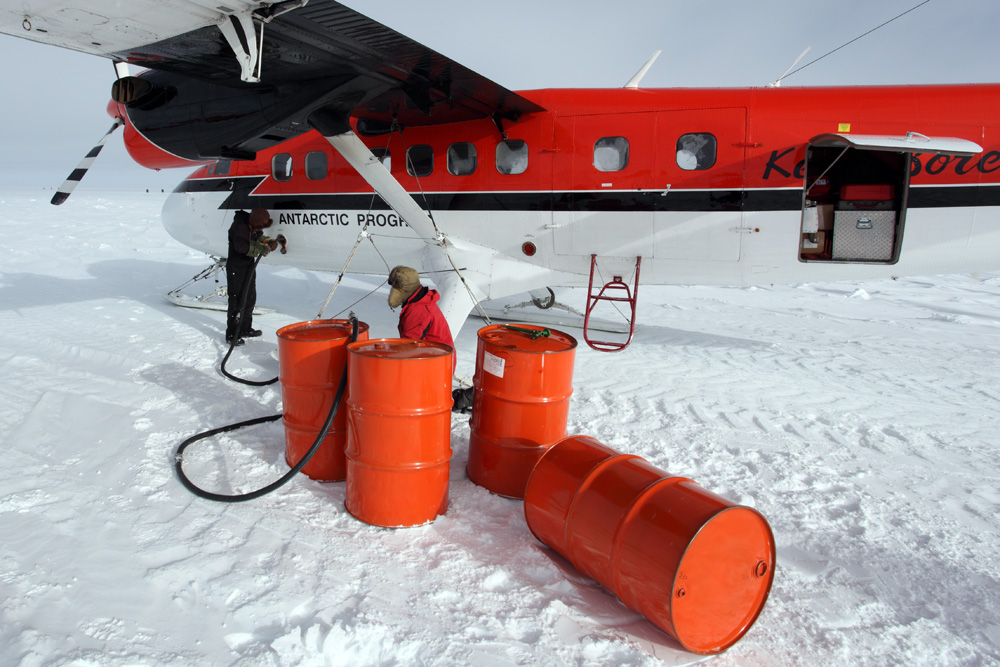


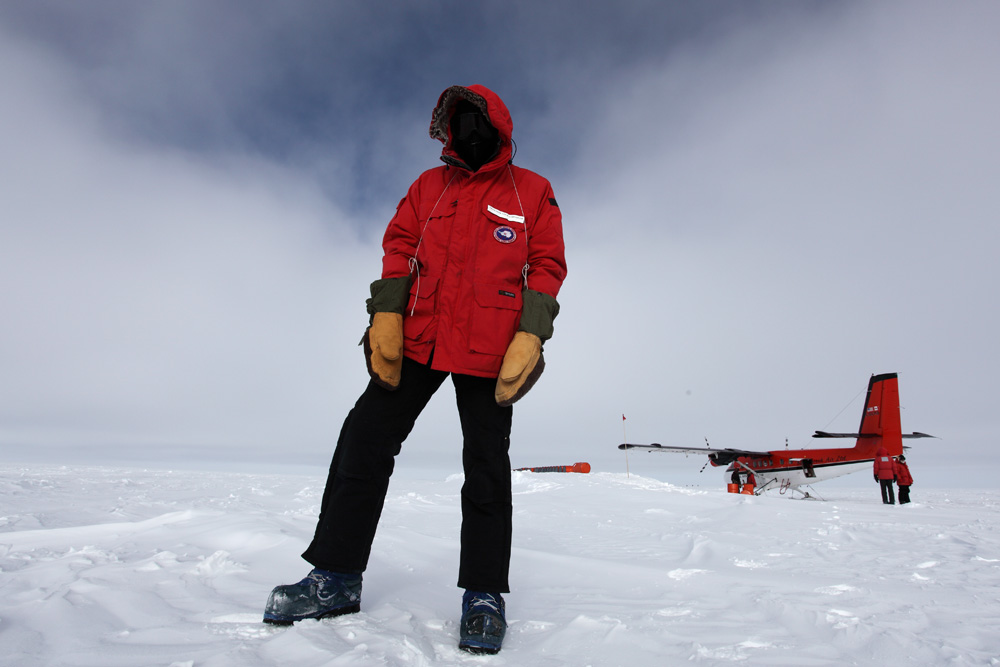
After half an hour of re-fuelling, we took off on the 1.5 hr flight to Ridge A...
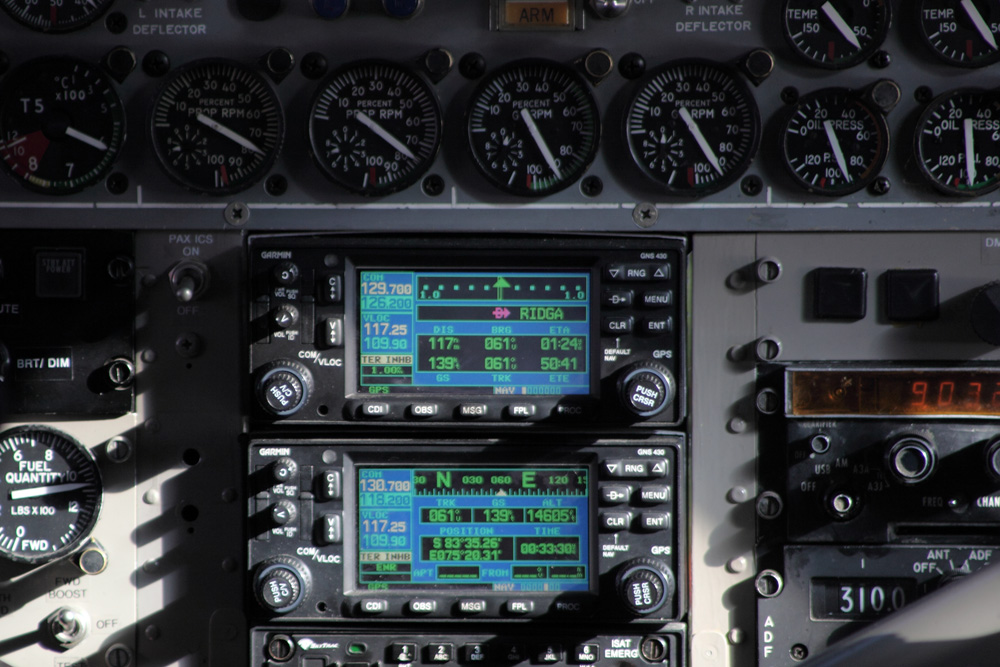
-- Geoff
Thursday, 17th January, 2013
Arrival at Ridge A (Geoff)
We arrived at Ridge A at approximately 13:30 NZDT (or around 05:00 local time). The temperature was around -45 C, and winds were blowing at around 25 knots (46 km/hr or 13 m/s). For one of the calmest places on Earth, this weather was extremely unusual, and unconfirmed as the "worst" (windiest) in recorded history (based off the nearby Dome A automated weather station).
The three of us, known as "team destructo", had around half an hour to dismantle the modules, extract some parts, package them, and send them back to the South Pole to be repaired. My first task, however, was to document the site before any destruction. This is mainly of interest to see the snow drift caused by wind over the past 12 months.
Instrument module (batteries, computer control, Iridium connectivity, all-sky cameras, webcams, etc.):
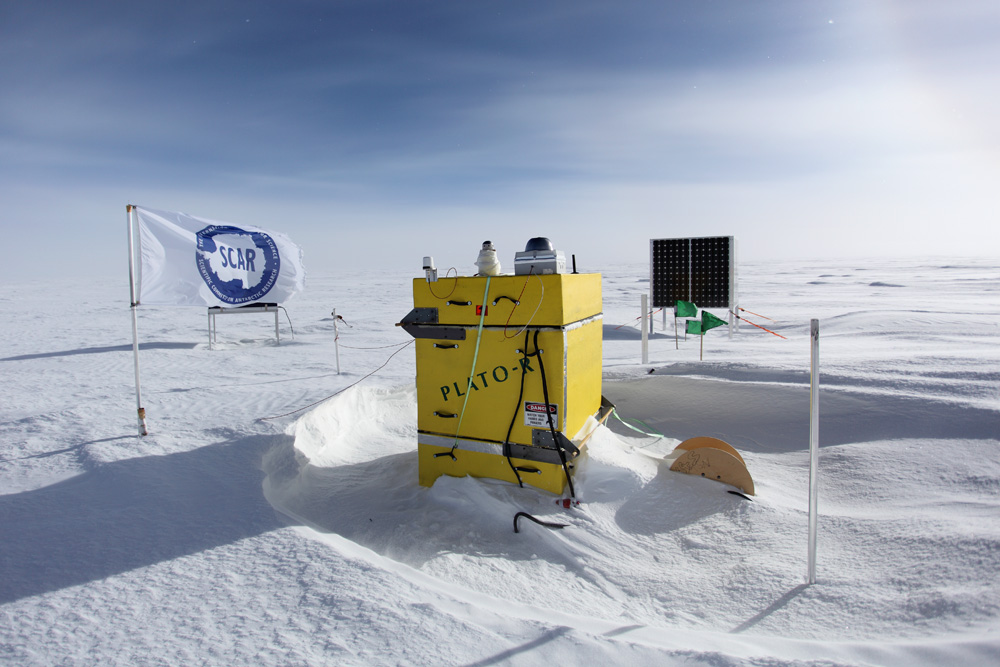
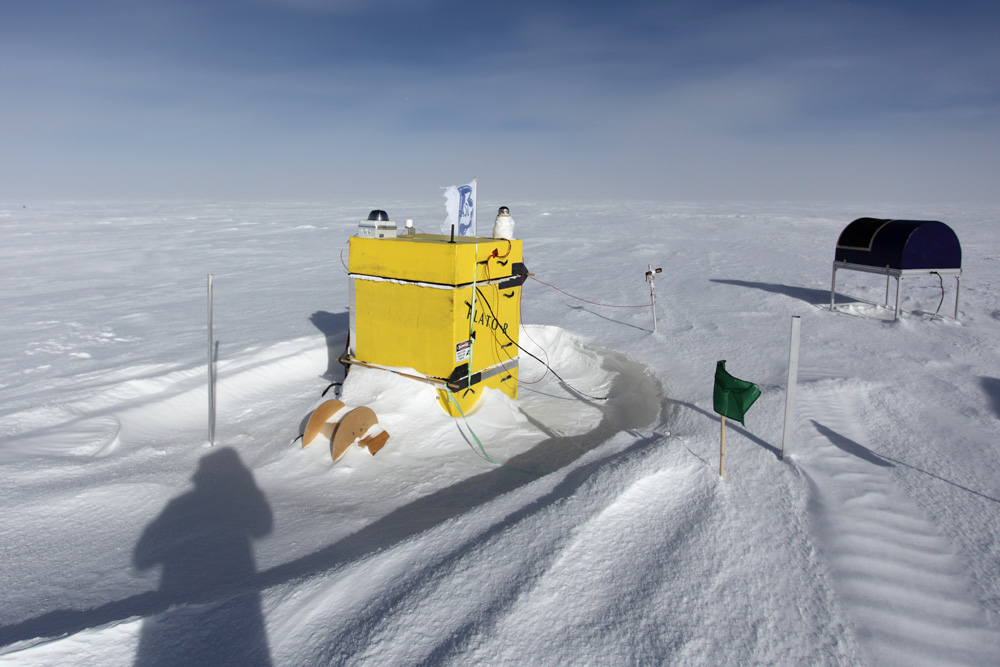
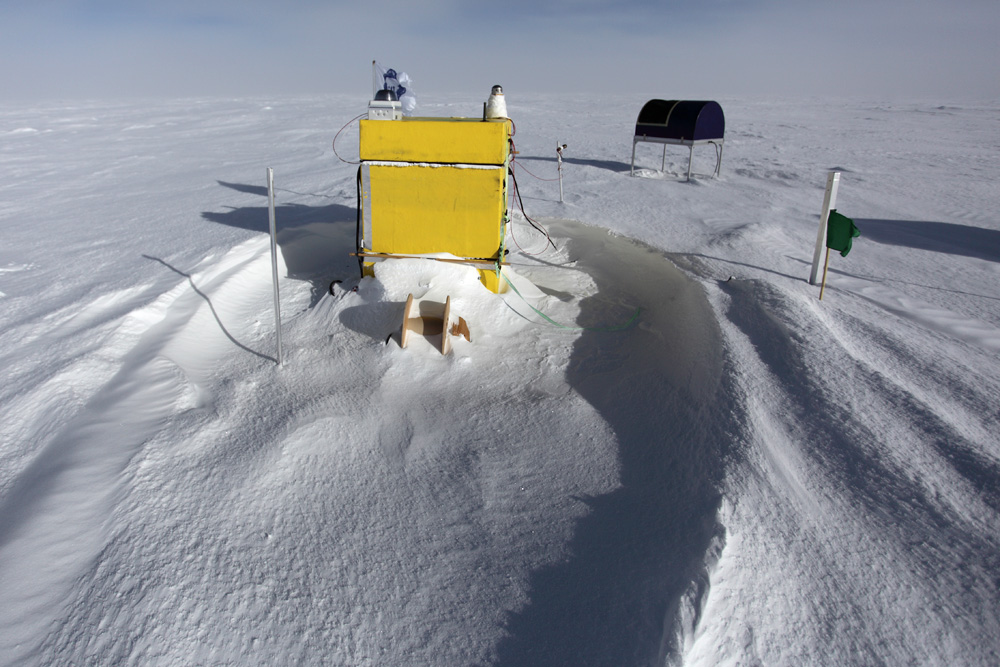
Engine module (engines, fuel):
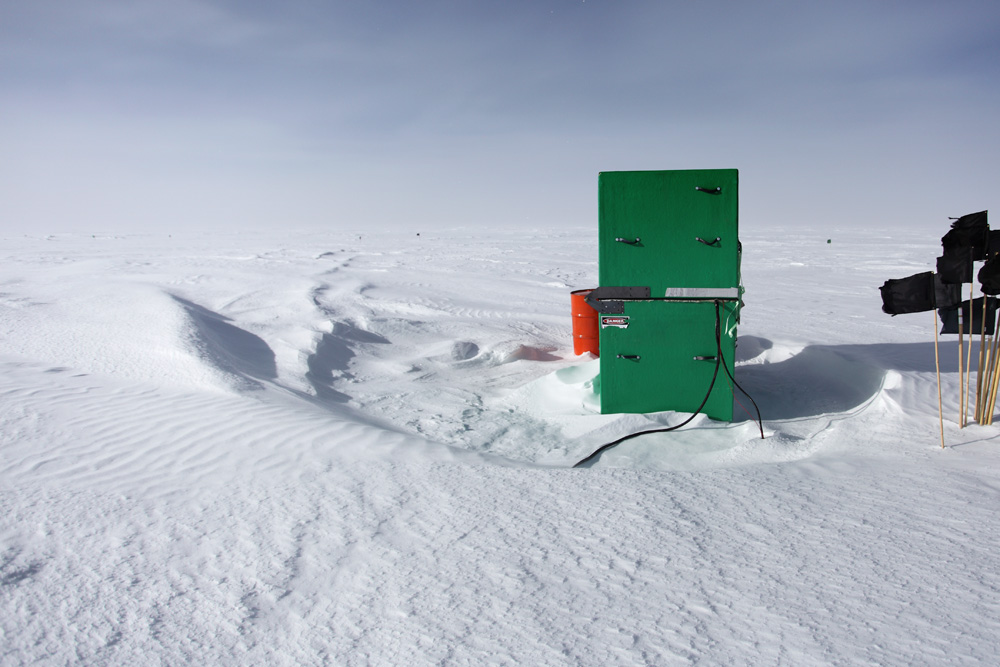
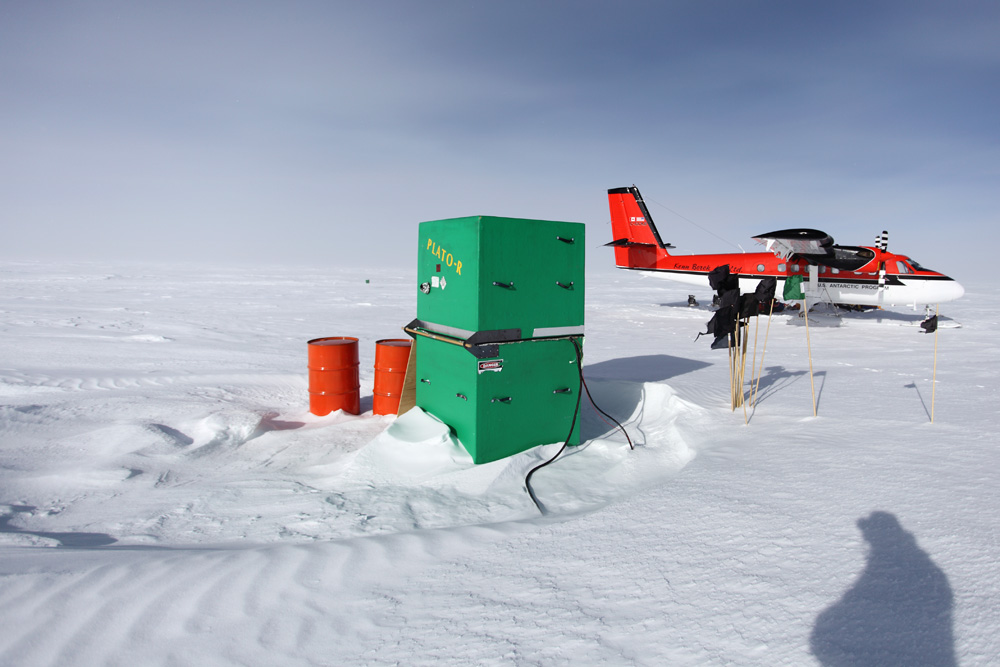
Telescope, solar panels and weather tower:
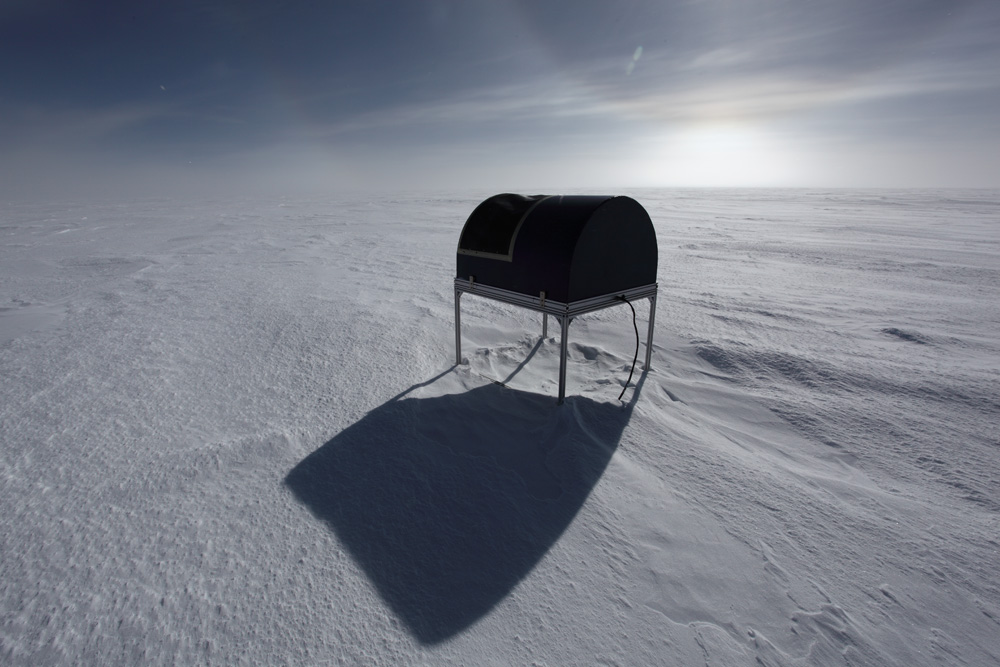
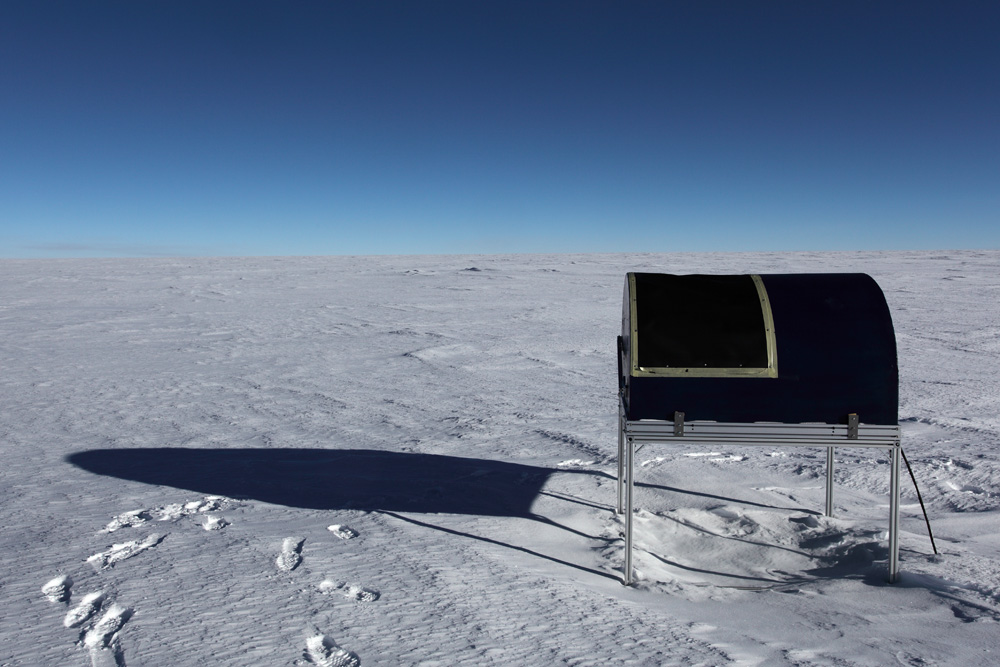


Simultaneously our guide/mountaineer was required to setup at least one tent before the plane could take off. Thankfully, our two Canadian pilots lent a helping hand:

And here is "team destructo" in action. If you look closely in the second photo below, you can see the tip of a sledge hammer which was used to mark the location of buried treasure (read: essential servicing tools). It serves as an indication as to the amount of snow accumulation over the past 12 months.
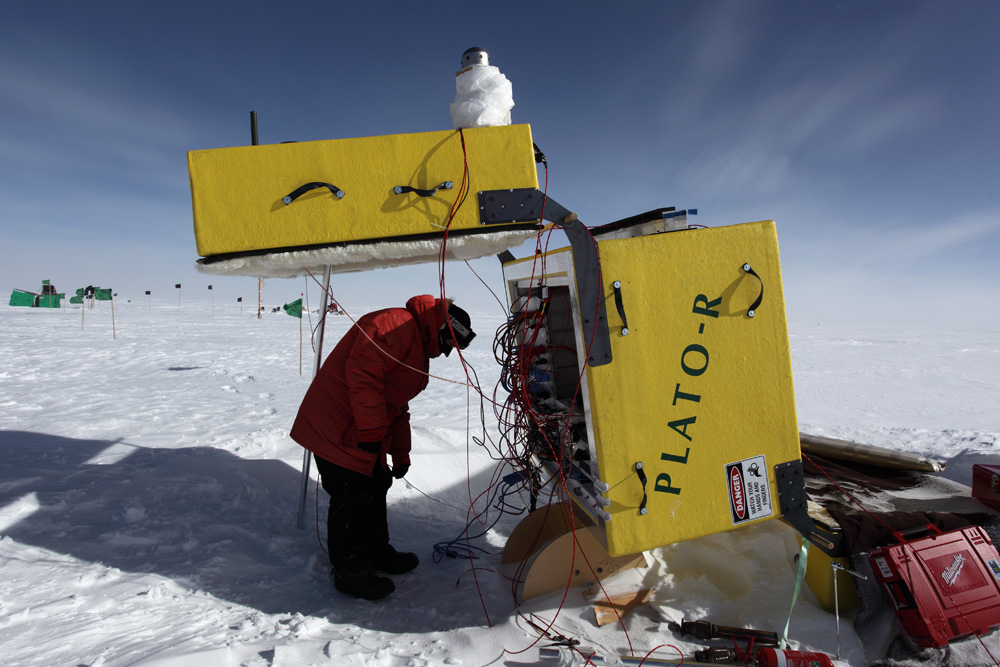
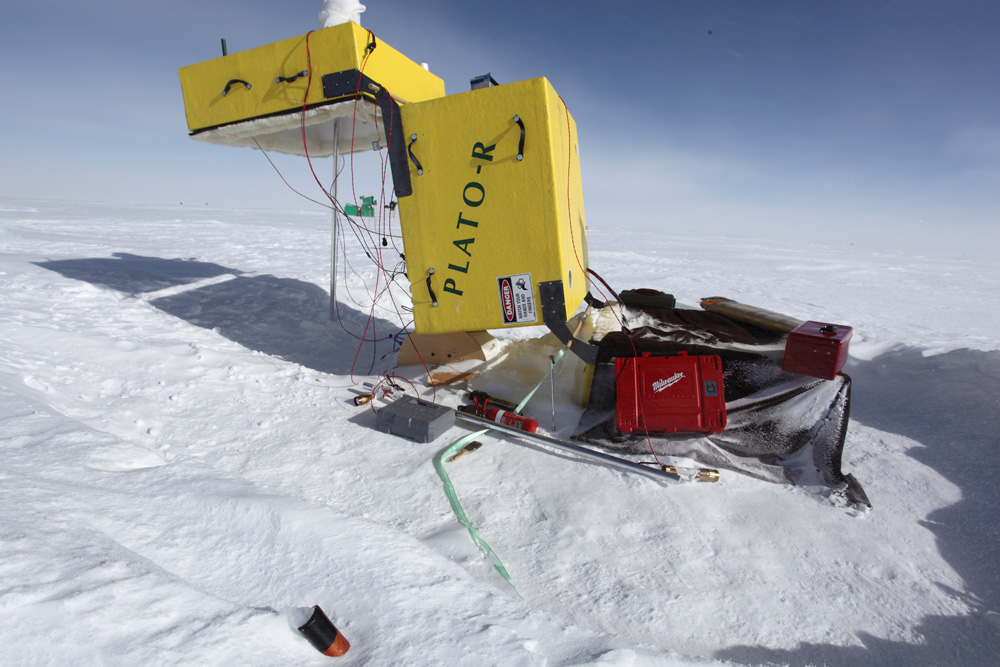

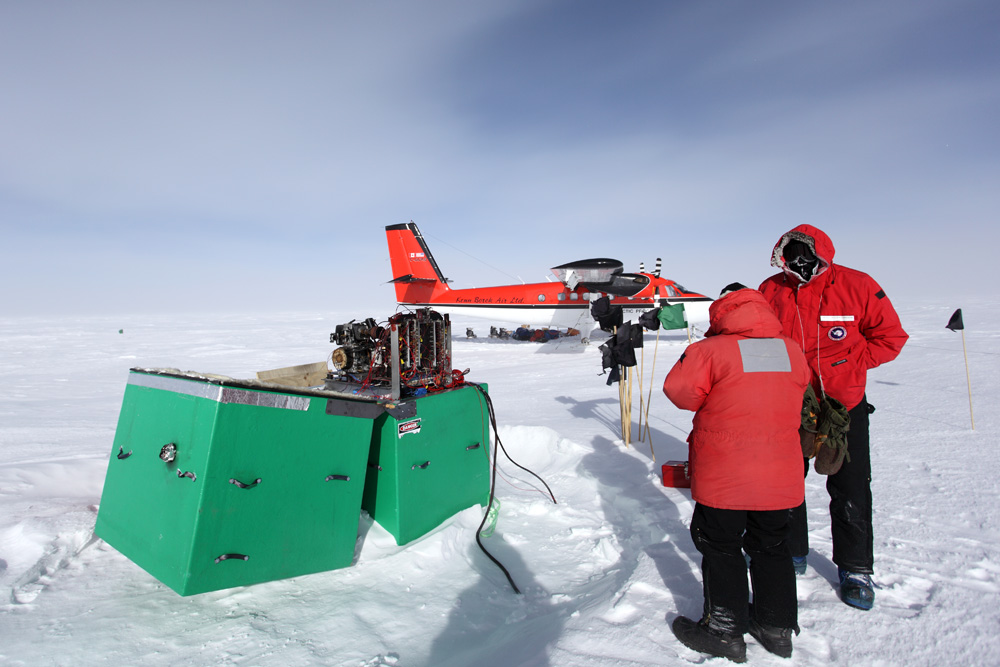
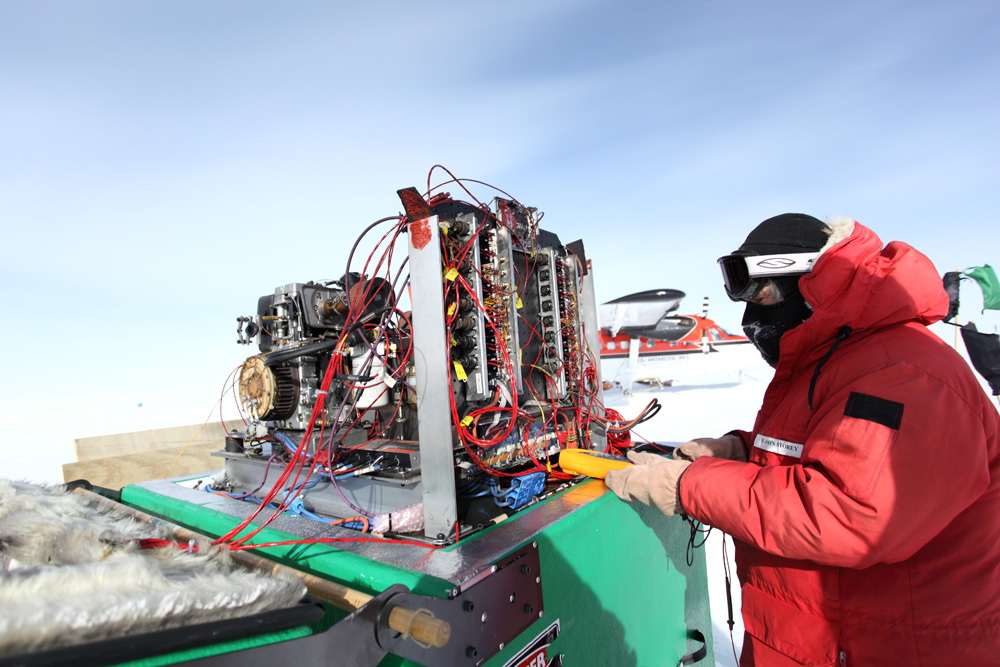

All these tasks were made exceedingly difficuly by the strong winds. Despite my camera (Canon 5D Mk II) being known to operate for hundreds of exposures at these temperatures, the wind blown snow caused an ice covering around the camera body, rendering it useless (until thawed out) within half an hour of landing. Here are a couple of photos of our complete camp setup, including a large tent for cooking/eating, and a couple of smaller "mountain" tents for sleeping:

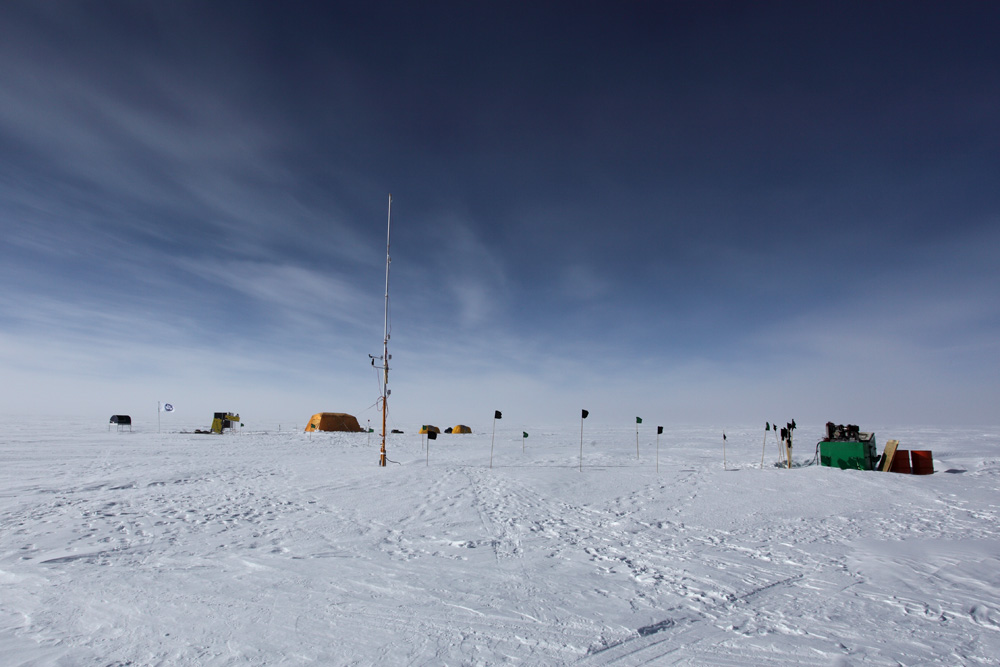
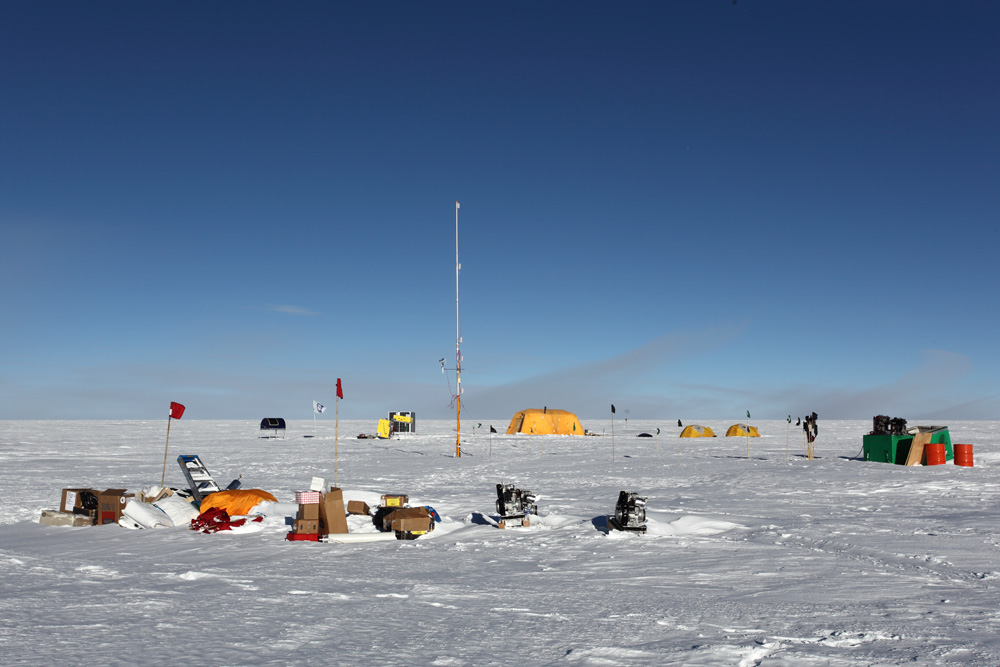
-- Geoff
Friday, 18th January, 2013
Slow day (Geoff)
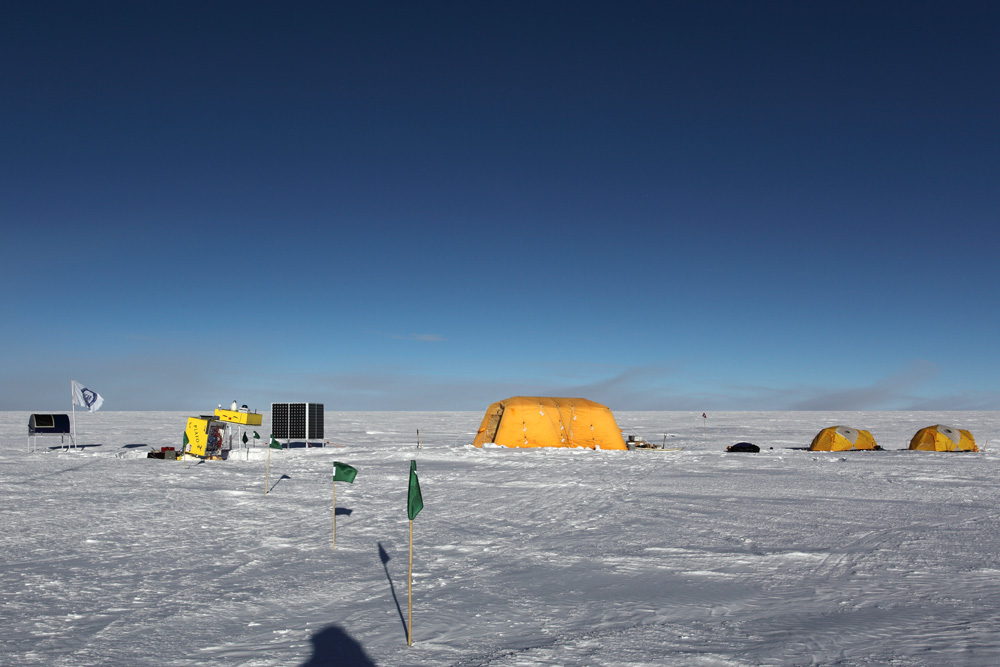
It was a slow start to the day given the previous days conditions, but we awoke to a relatively calm morning and managed to get the work tents set up over both modules, and began work on both the batteries and engines.
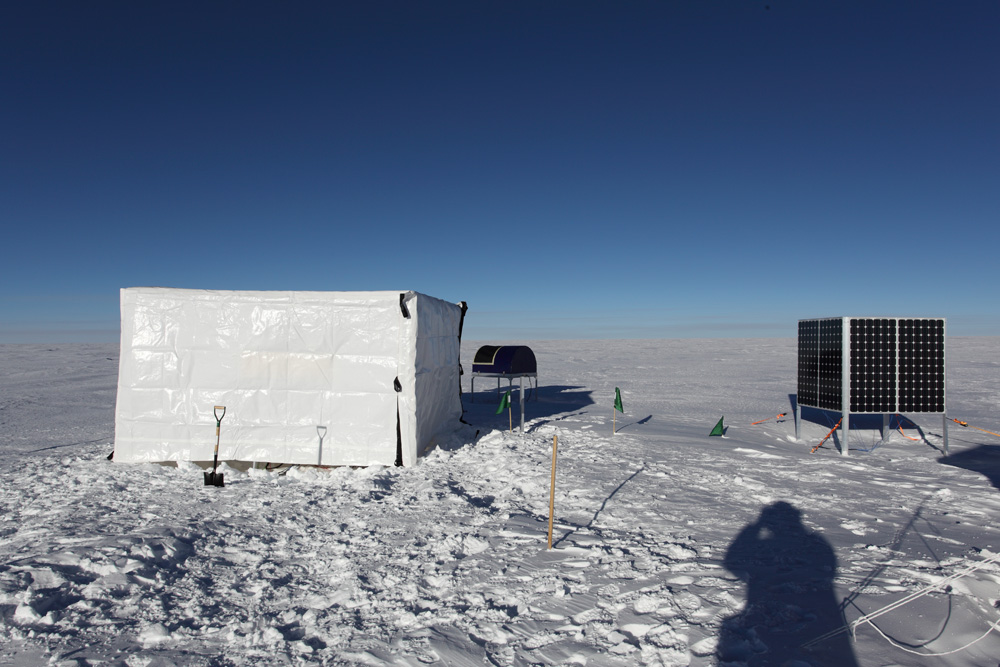
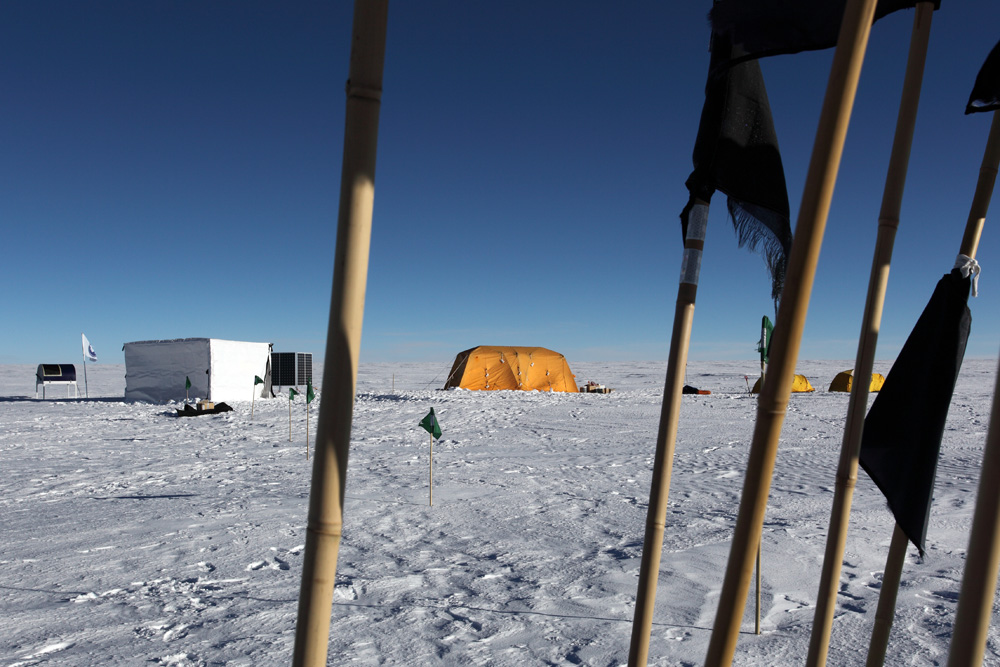

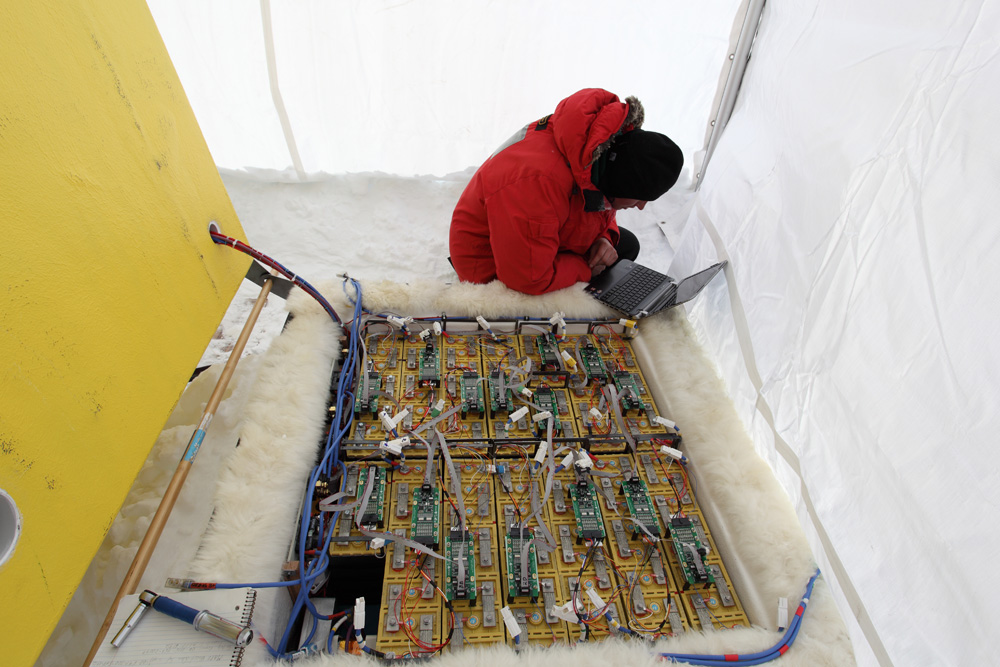

It was also amazing to see how much snow had been blown in the past 18 hours since we arrived. For example, look at the engines and drill cases, both which arrived at the same time as us, but had been left overnight exposed to the elements:
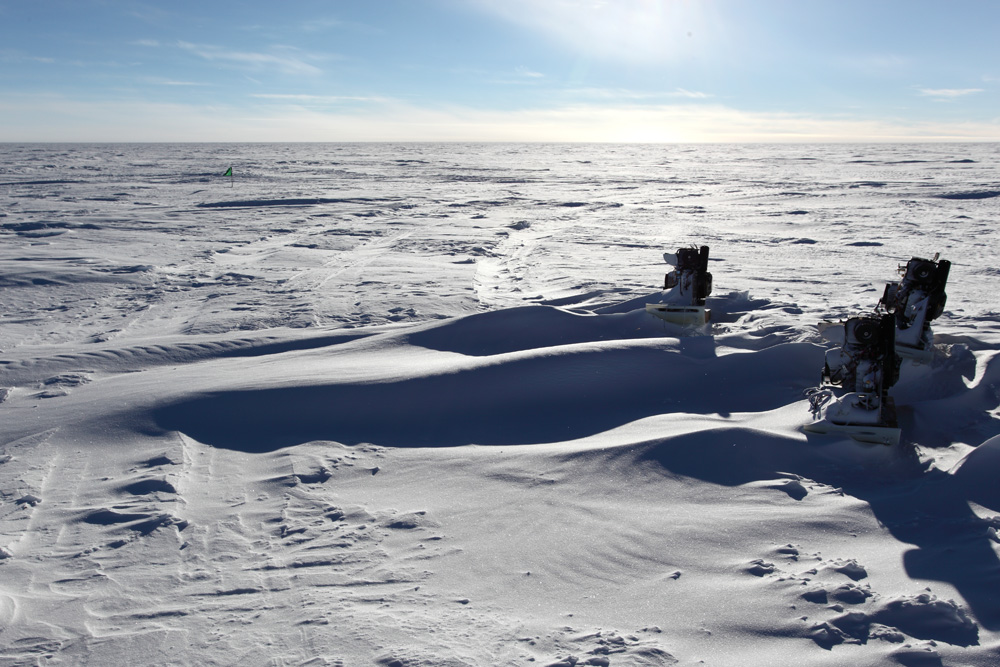

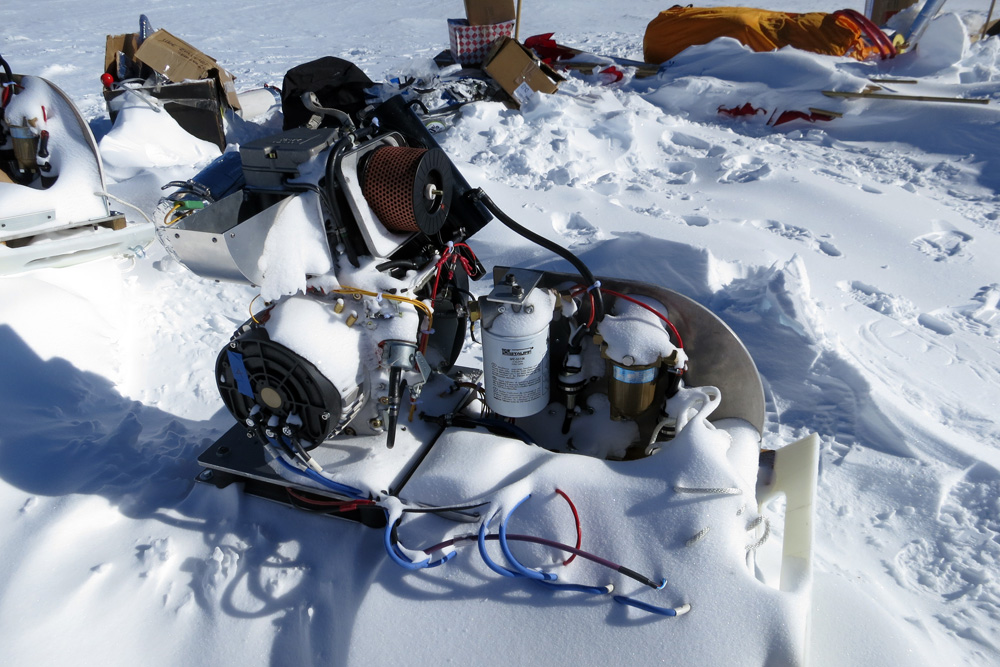
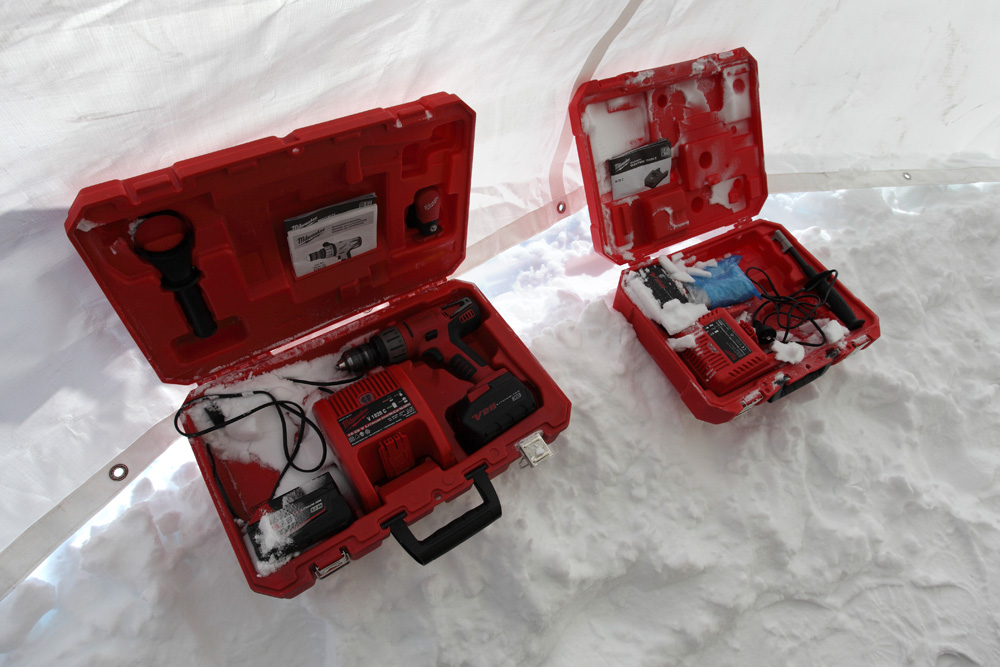
-- Geoff
Saturday, 19th January, 2013
Camping (Geoff)

So these blogs are not necessarily in chronological order - work continues at Ridge A, but this particular post will show what it is like to camp there.
We each had our own mountain tent to sleep in (pictured above). Typically these are to be shared between two people, but it is a bit of a squeeze.

Because of the delays, it meant that we could each have our own tent at least for a few days. The view was quite impressive when you opened up the fly each morning:
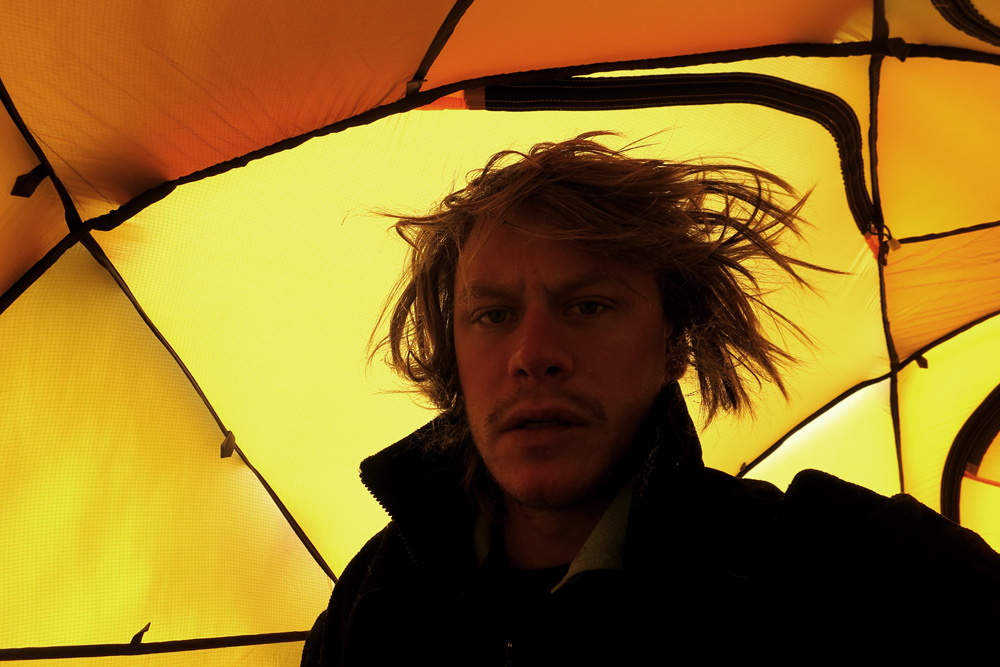
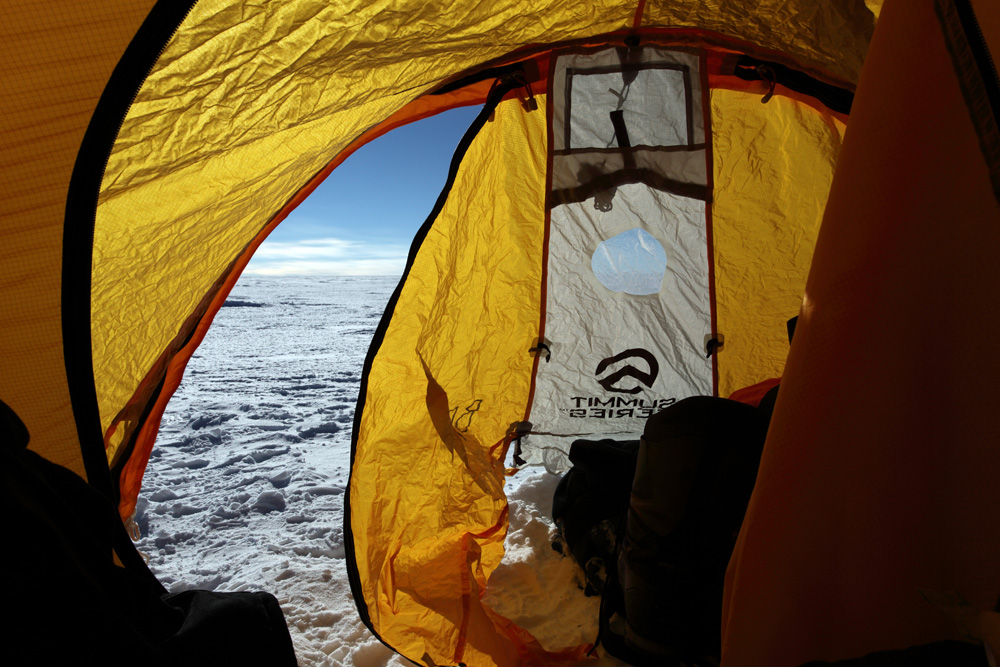
I should have remembered to get a hair cut before going camping in Antarctica. When I was outside, any stray hairs outside of my beanie soon turned into a crisp spiderweb-like consistancy:
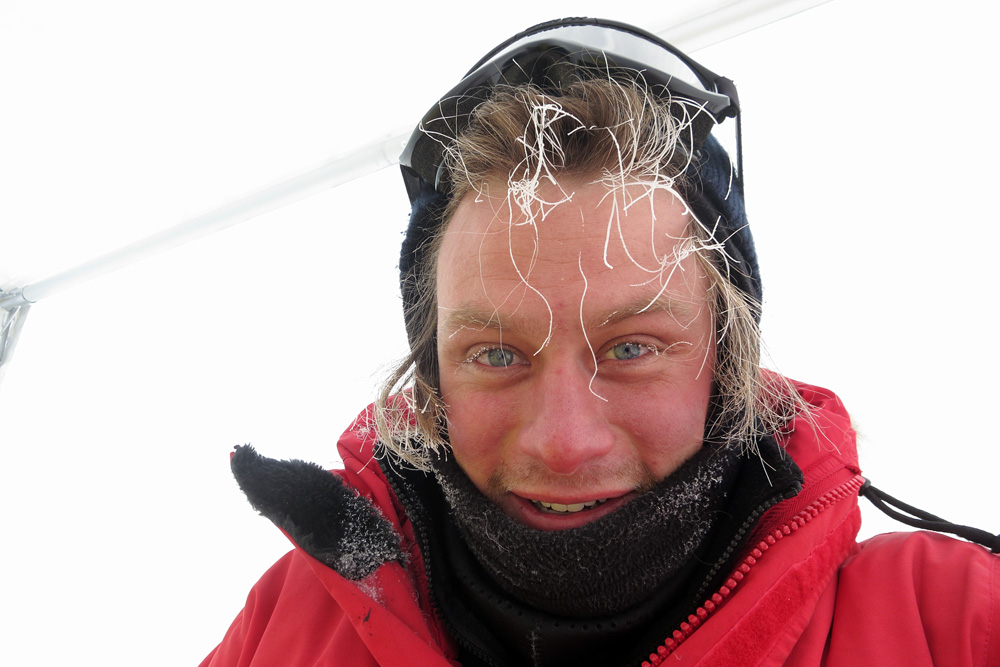
Apart from our sleeping tents, we also had a "cooking, eating and hangout" tent. This is where Ben prepared all our meals and where we generally just hung out while not working. Previous campers had decorated the inside of the tent with small hearts.
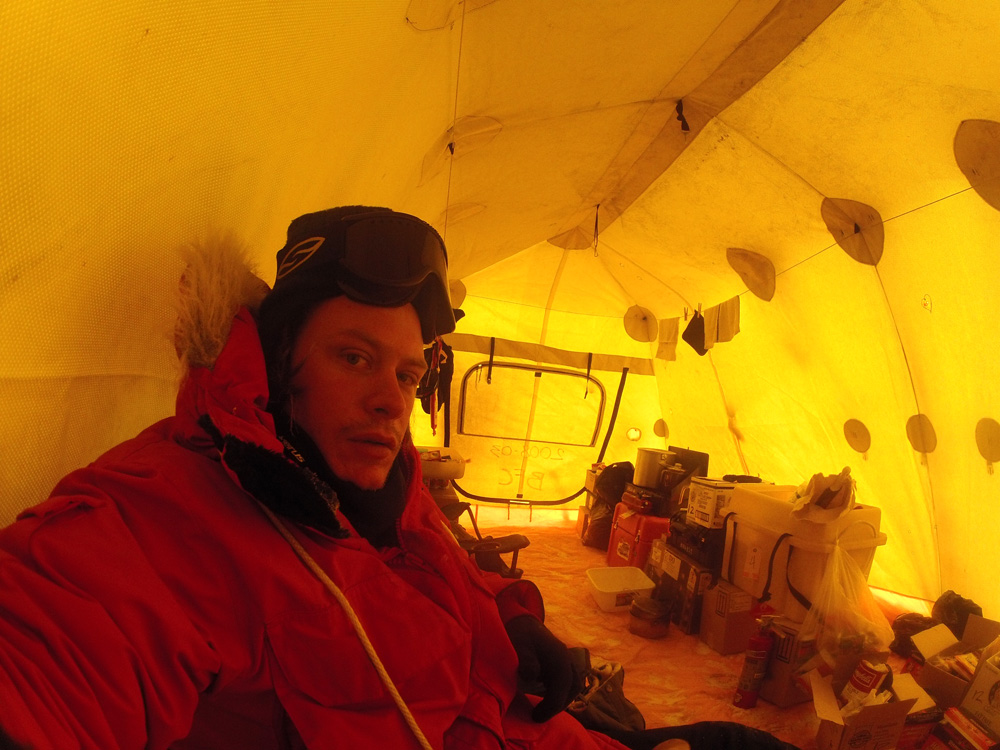
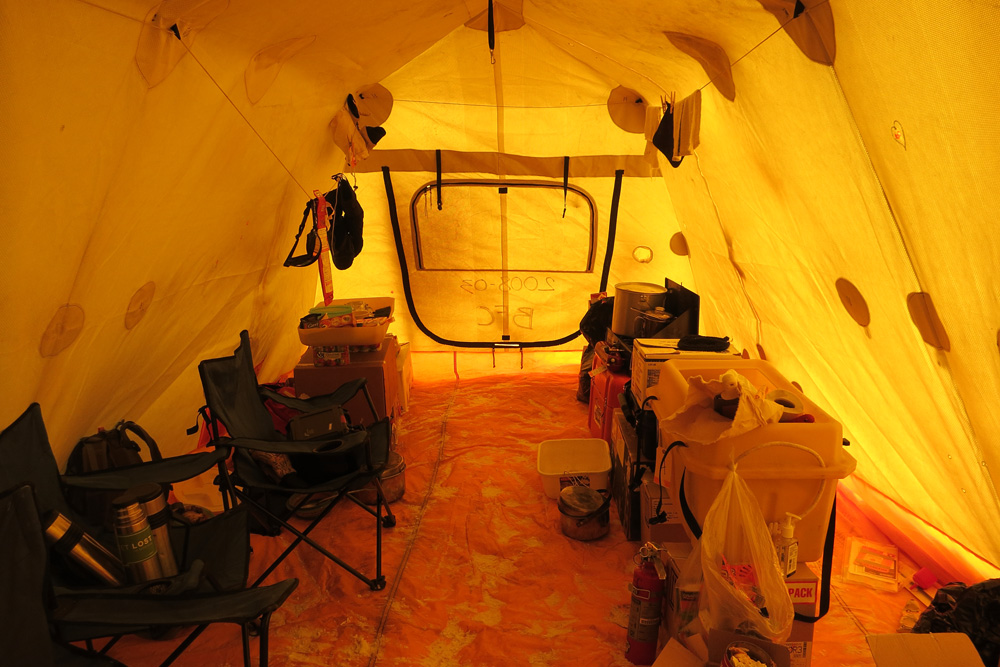
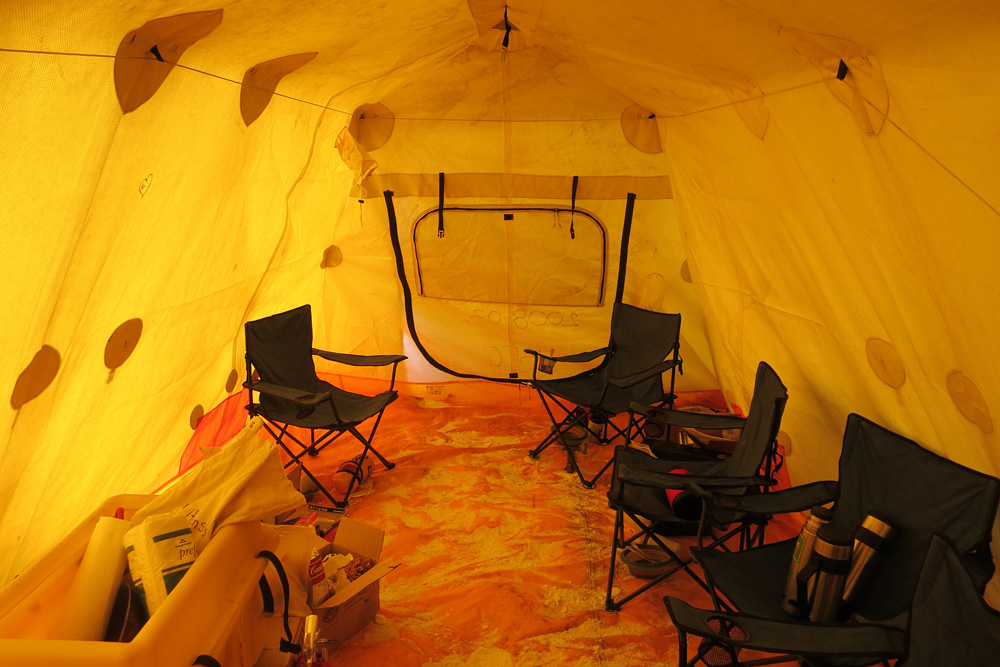
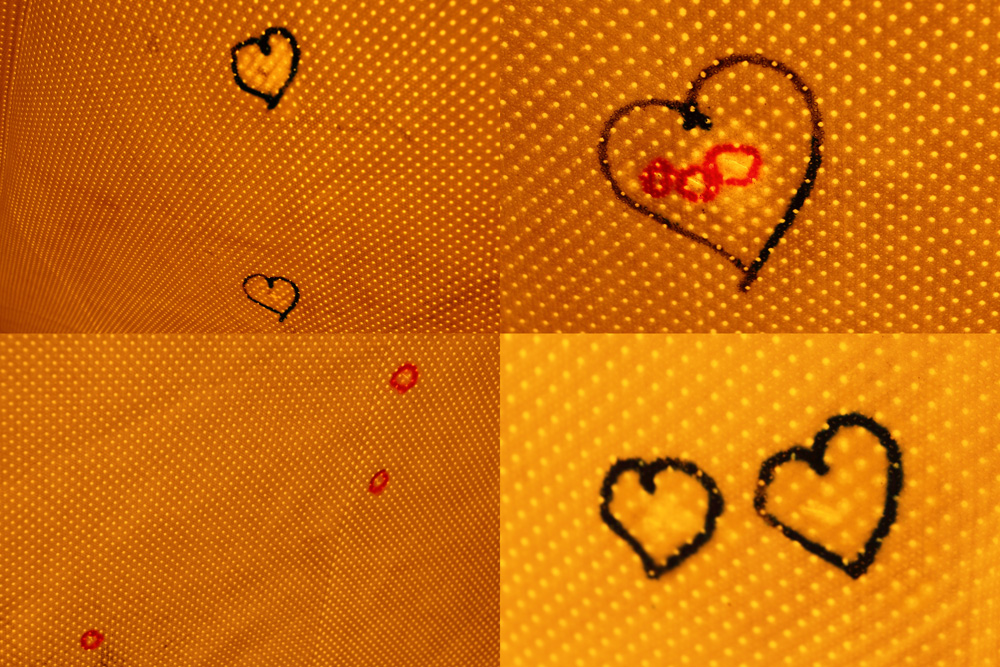
Our campsite was complete with below ground level bathroom (for wind protection) which also had quite a nice view:


-- Geoff
Sunday, 20th January, 2013
Reflections on Ridge A: Geography (Geoff)
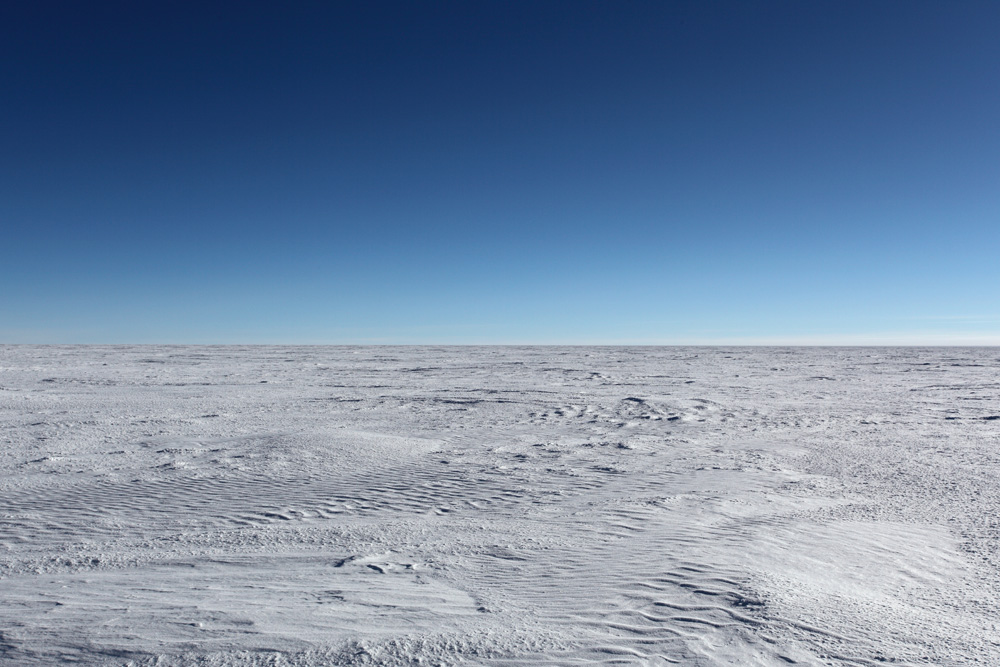
..... it's pretty flat. In spite of the hideously cold temperatures, Ridge A is actually quite a beautiful place. The following image shows a 360-degree panorama of the site (including our camping tents). Note that the distinctive yellow and green modules are covered by our large white work tents. Click the image for a larger view:

The ground was covered in many different types of patterns and crystals that had formed in the snow:
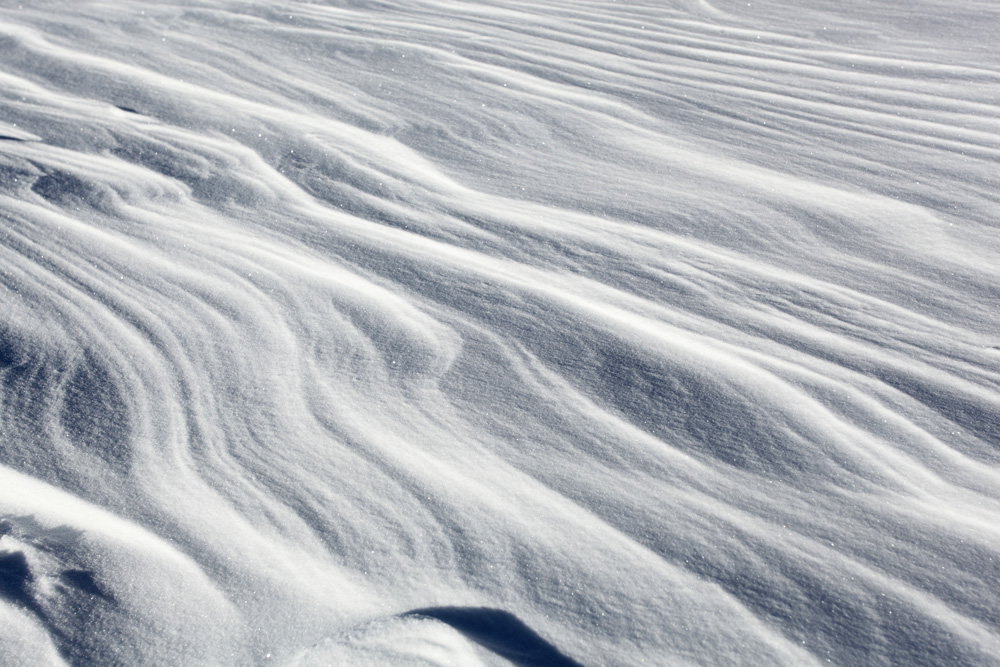
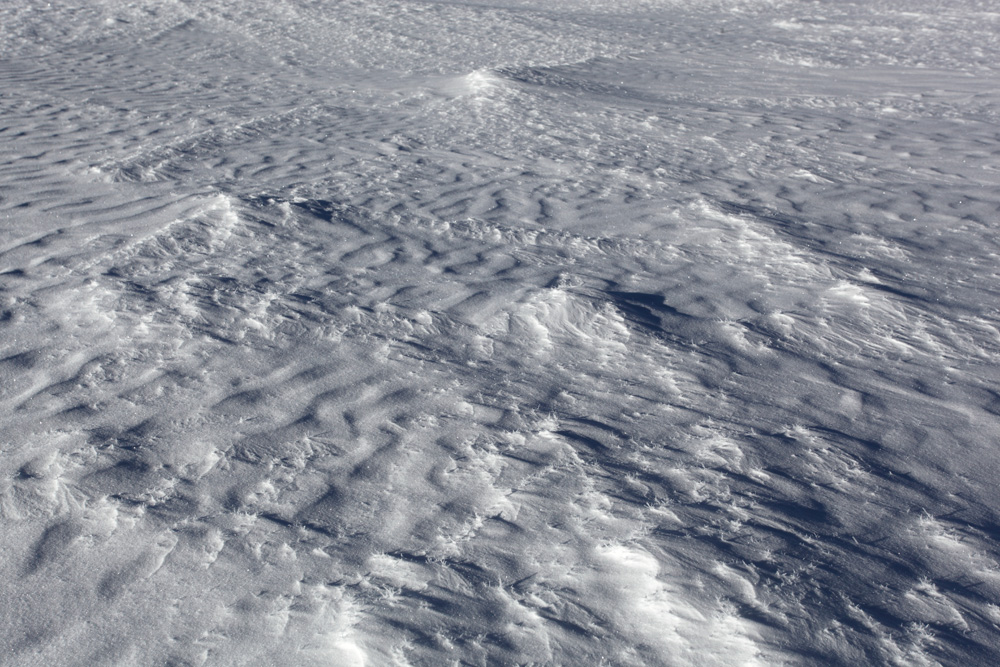
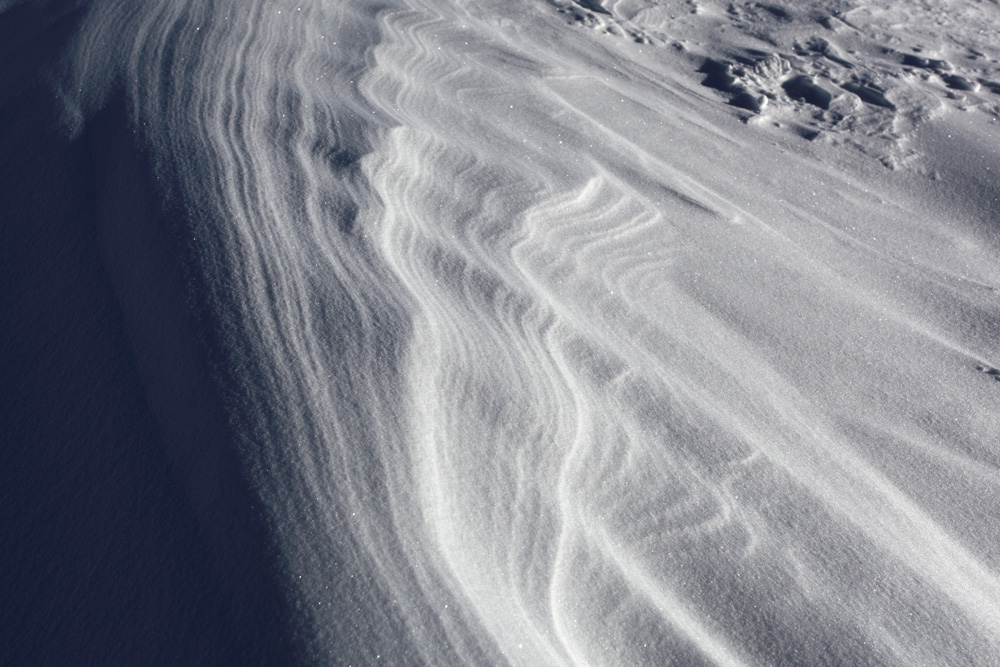
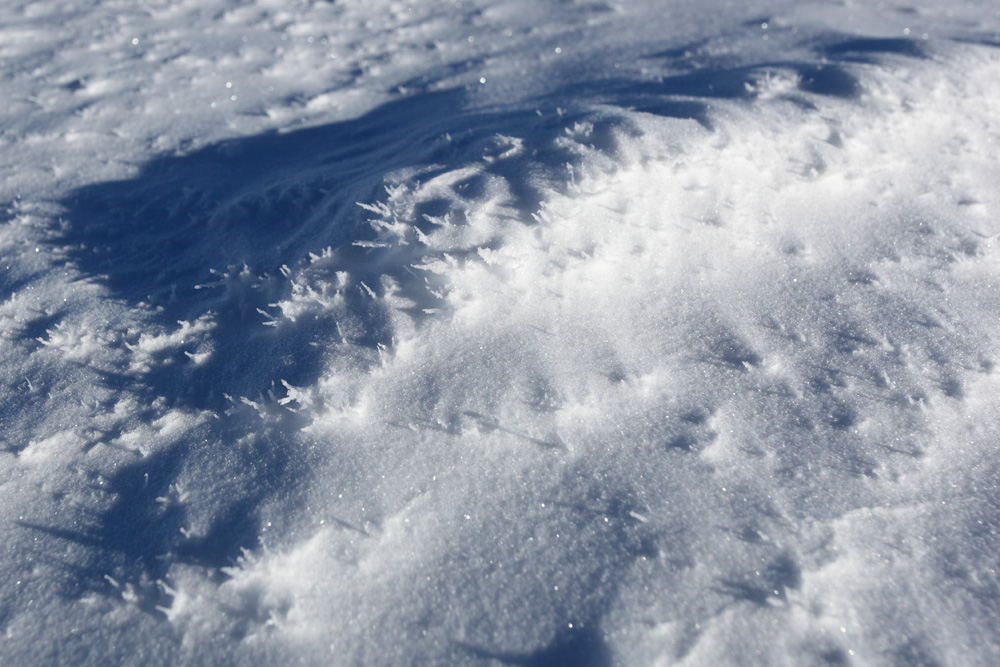
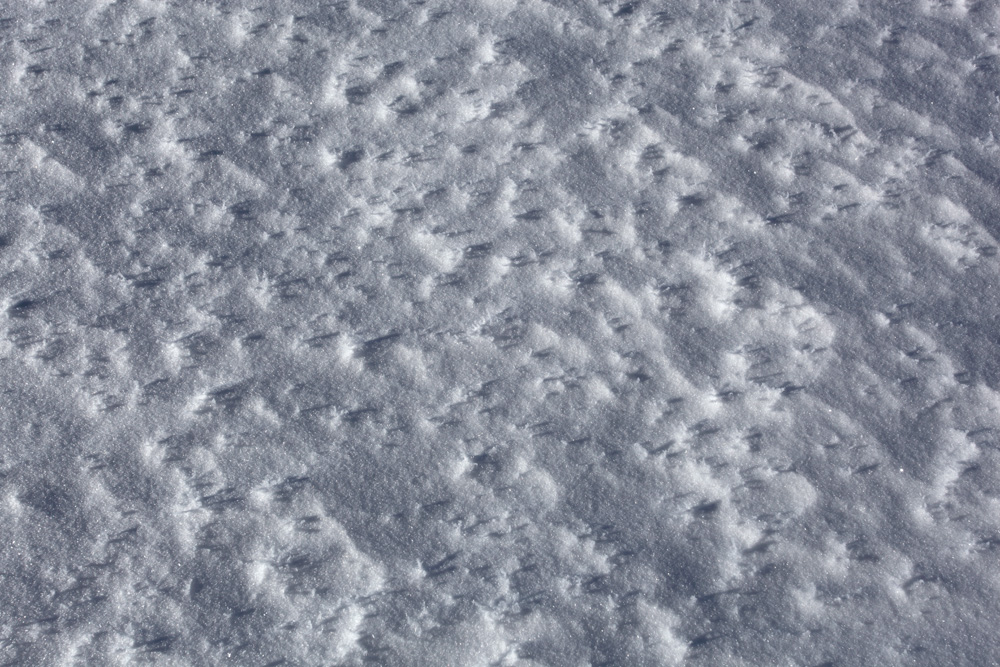
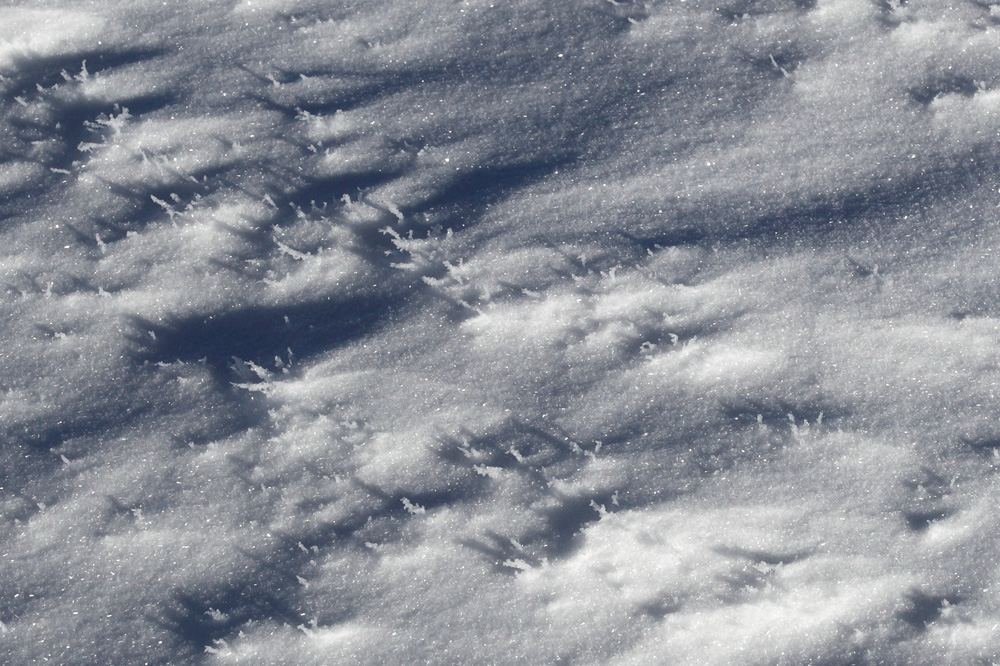
And who could forget the midnight sun...

-- Geoff
Monday, 21st January, 2013
Flag circles (Geoff)

Just as the solid modules carve out their own distinctive patterns in the snow (a result of months of continuous light wind, originating from a preferential direction), even small flags create their own patterns. I found this quite fascinating.
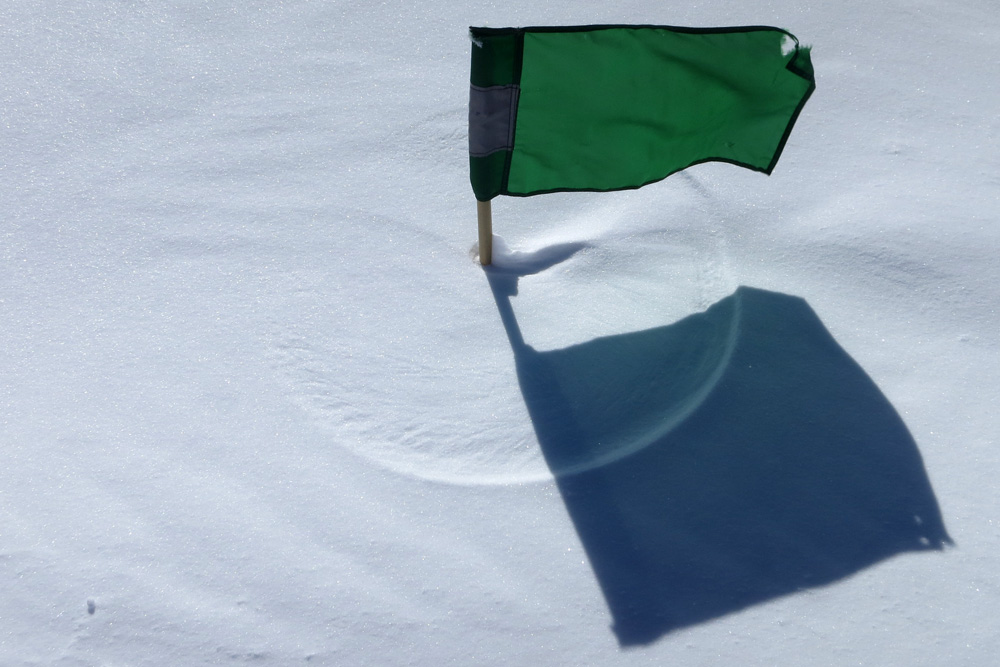

Meanwhile, we did a lot of the work on the batteries. Here is us dismantling, re-wiring, and re-assembling the battery pack:
-- Geoff
Monday, 21st January, 2013
Reflections on Ridge A: Food (Geoff)

Going camping in one of the most remote, coldest and inhospitable places on Earth, I didn't have high expectations in the food department. In fact, when we first met Ben (our mountaineer/guide), he read out his proposed menu for the trip which included things like quesadillas and enchiladas. I kept my mouth shut but was secretly wondering how it was possible to cook up anything even remotely delicious in such harsh conditions.
Well, I was proved wrong! I am not sure how, but Ben created some of the tastiest meals I have eaten since being in Antarctica. Perhaps the best dish of all was left unphotographed: melted cheese quesedillas with a sprinkling of Italian 'erbs. These photos show a few of the meals we enjoyed (the yellow tinge is caused by the tent fabric).
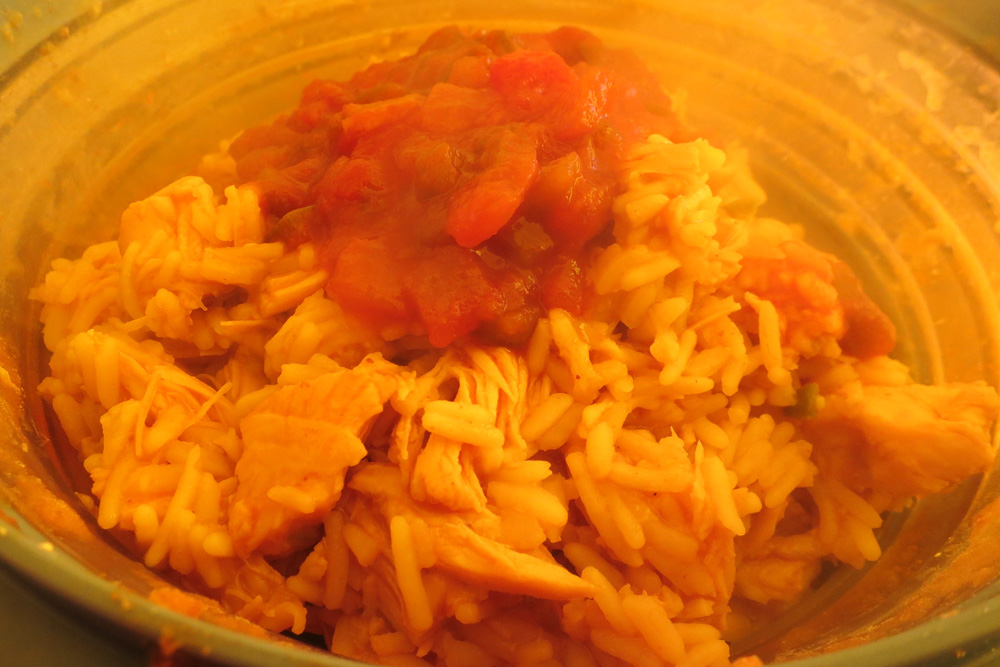
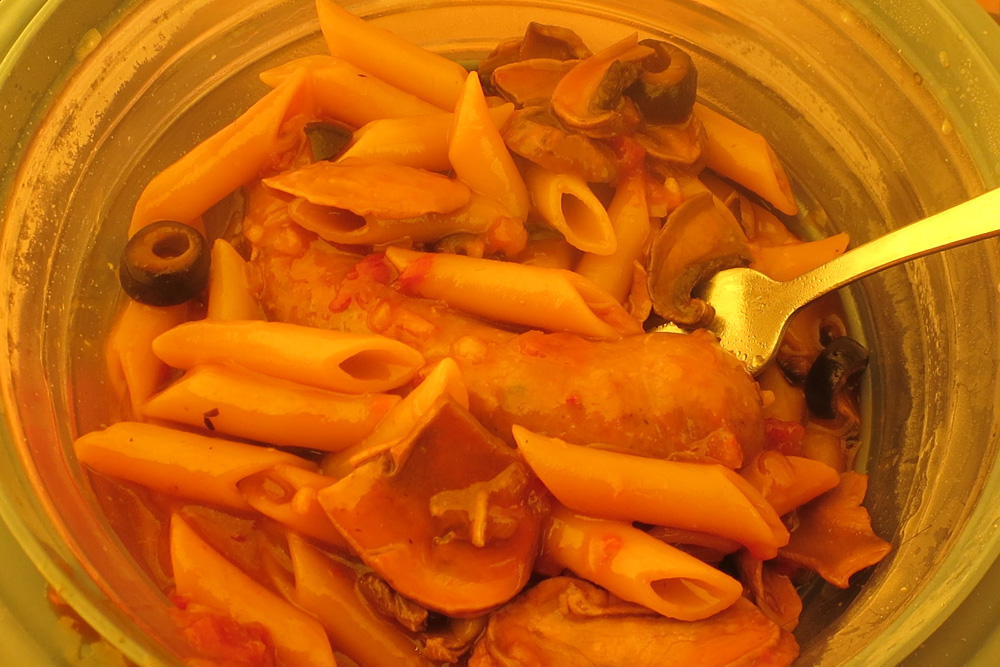

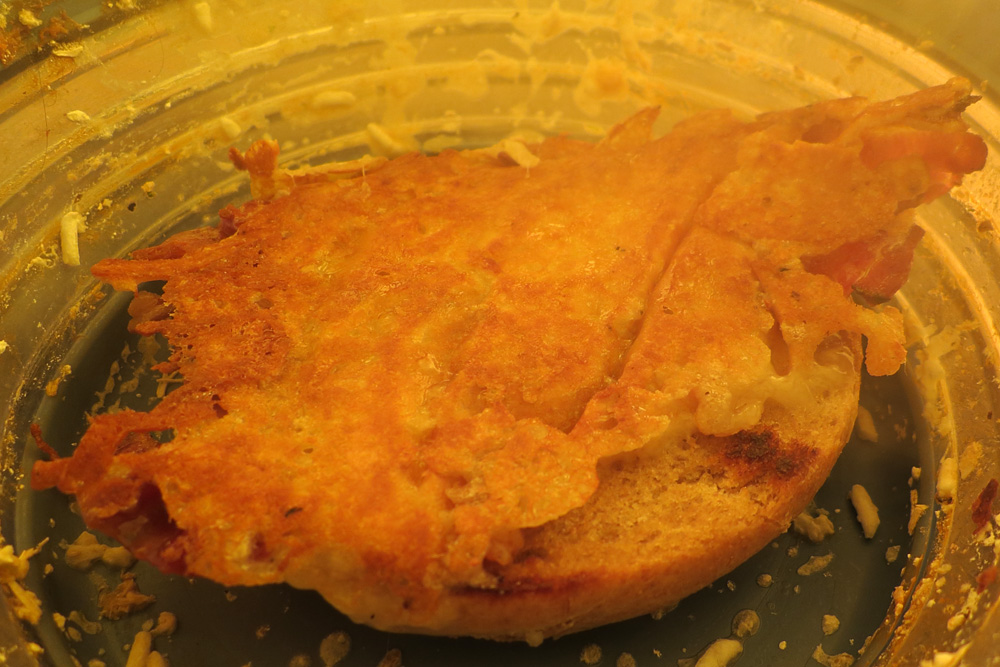
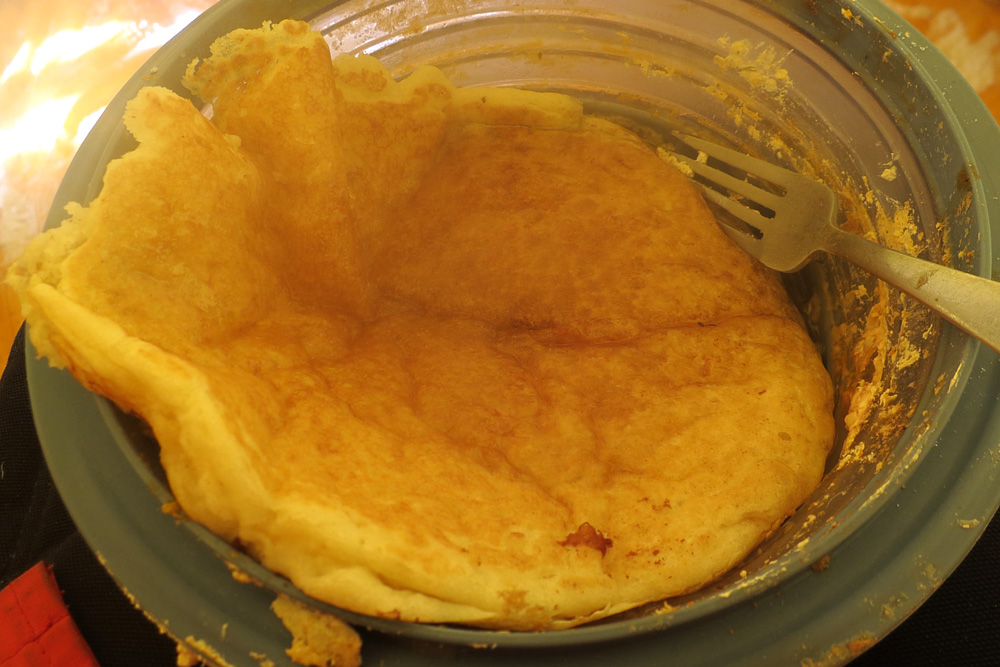

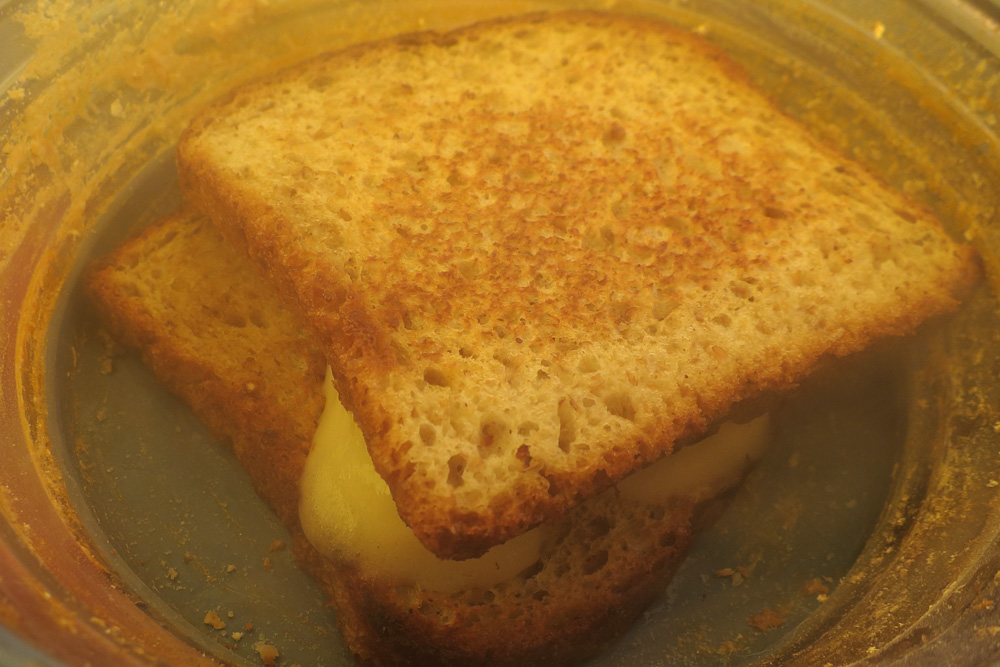
-- Geoff
Tuesday, 22nd January, 2013
Final day at Ridge A (Geoff)
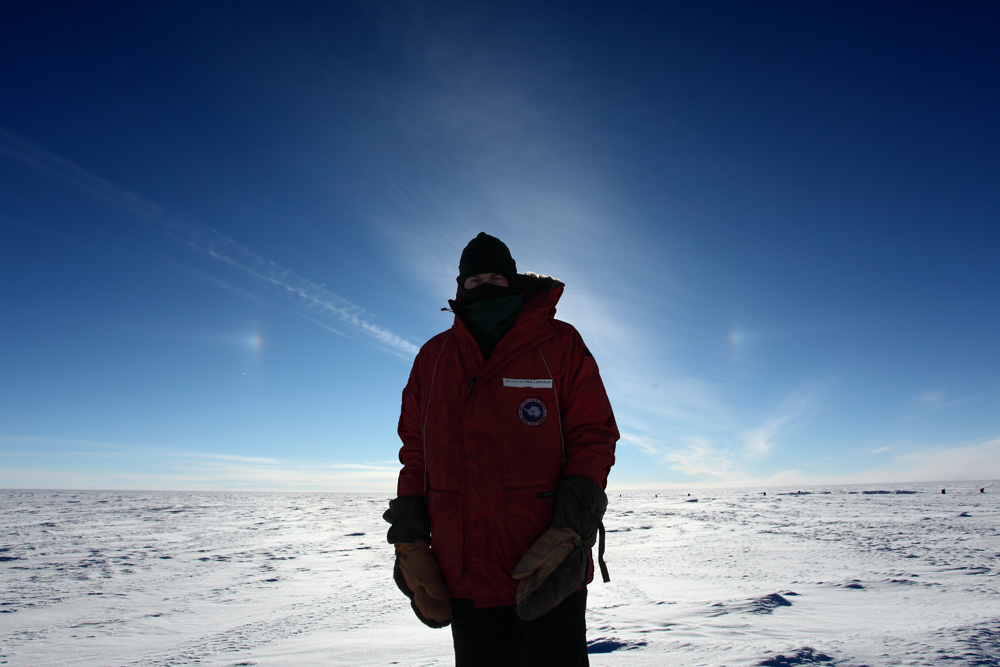
Today, we finally heard Ben call "They're gonna fly!" at 08:00 (the past few days, we had heard "No flight" instead). We were up early, and woke to an interesting diamond-dust display in the sky whereby sun dogs were present (and the beginnings of a faint parhelic circle), but no halos or other associated phenomena. Our first duty after breakfast was to put the final touches on the ski way - flattening it out to aid the Twin Otter pilots in landing.

It was a calm enough morning that we decided to take some photos of ourselves against the "flat white" backdrop.
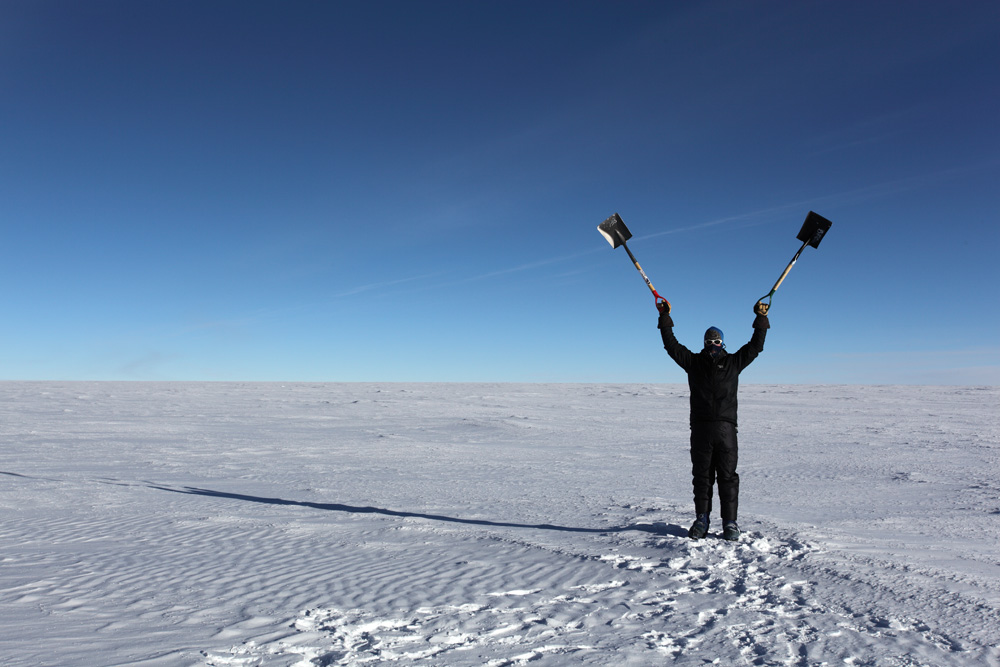
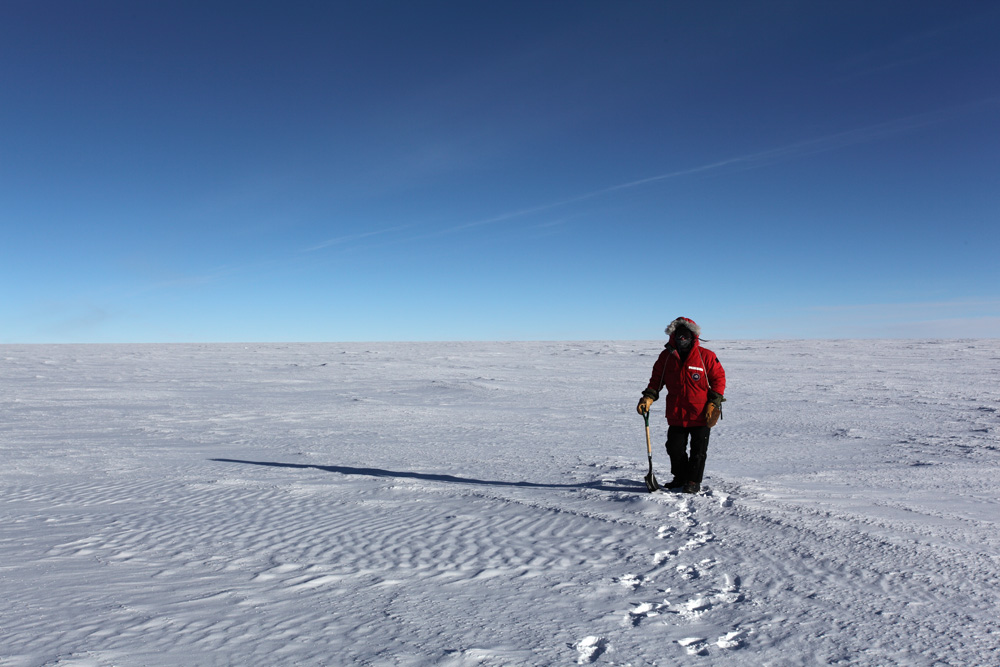

The plane was due to arrive at around 13:00, but Nic couldn't wait so he packed up his belongings and started to walk back to the South Pole.
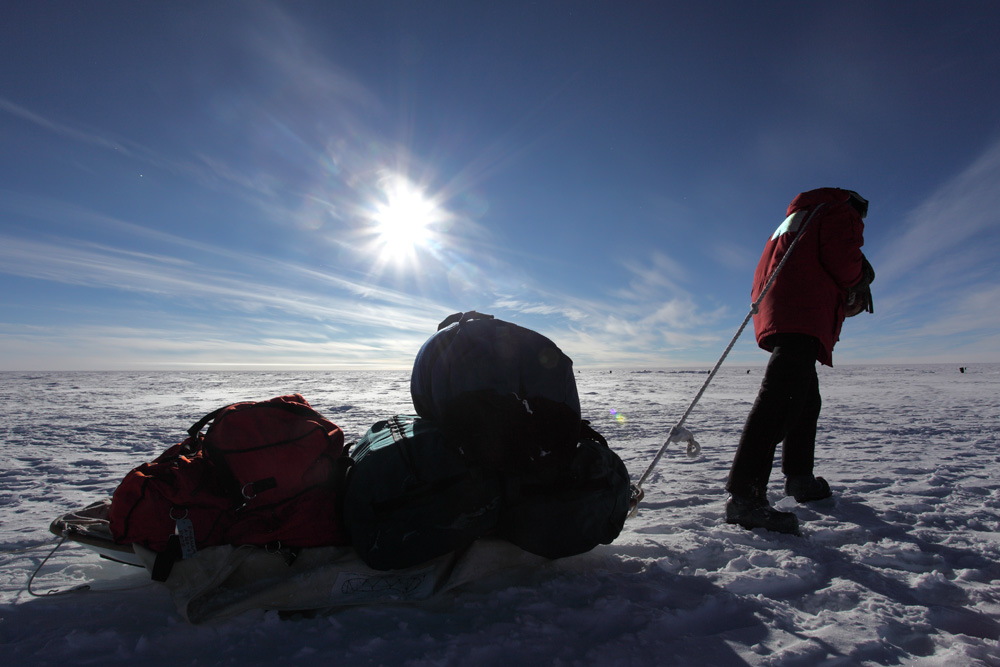
Sure enough, 20 minutes early, the Twin Otter landed. We shook hands with the other half of the team and wished them all the best with their portion of the mission. Within a couple of hours, we were back at the South Pole (via AGAP-South again), where -25 degrees C has never felt so warm.
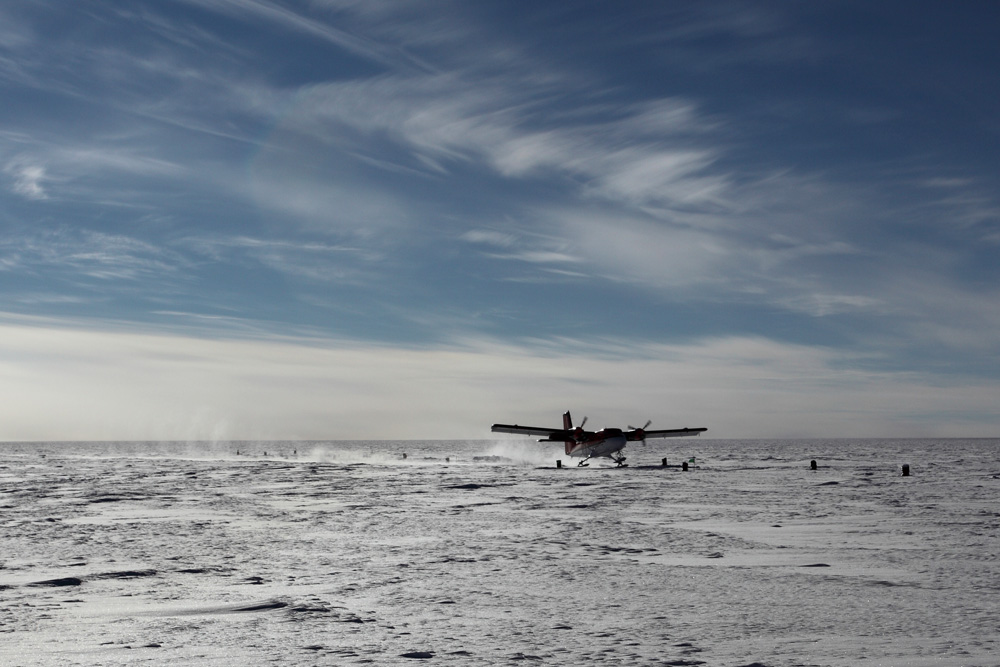
-- Geoff
Tuesday, 22nd January, 2013
Back from Ridge A (Geoff)
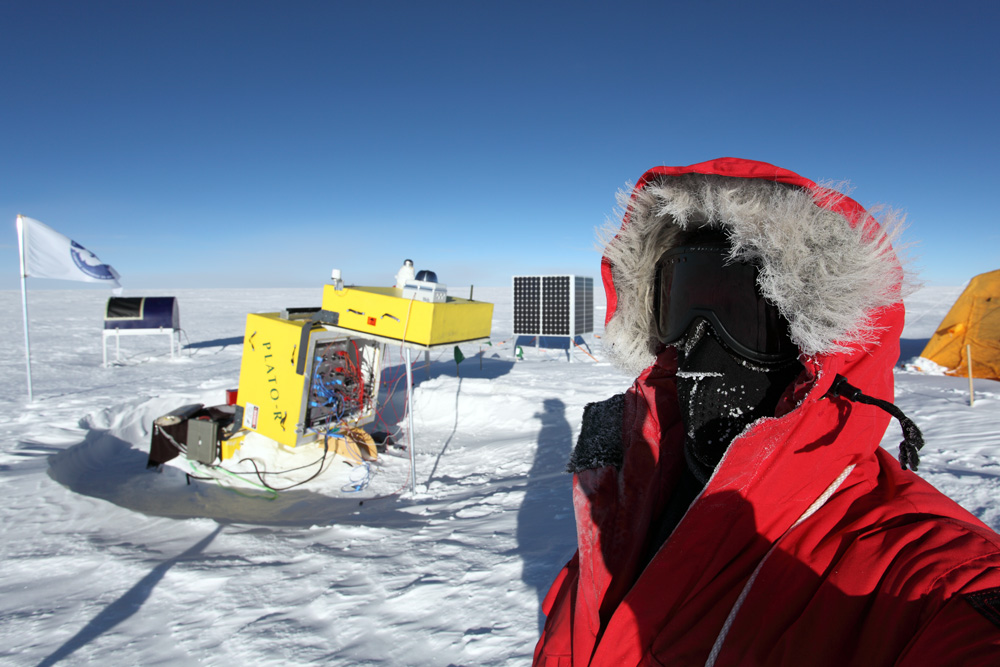
John, Nic & I have returned from 6 days / 5 nights camping at Ridge A, and are now enjoying the warmth of the South Pole. The other half of our team are still in the field and should be back in a few days. Photos and blogs will be posted retrospectively when time permits.
-- Geoff
Wednesday, 23rd January, 2013
Ridge A (John)
Because communications from Ridge A are limited to Iridium phone and HF radio, there's been a bit of a lull in our blogs. This is therefore a monster blog, covering the past six days.
Gathering with the pilots over breakfast on Thursday morning we looked at the PLATO webcam pictures of Ridge A and pondered the forecast from Charleston: clear now, but strong winds forecast for the afternoon. Since we'd already concluded (prematurely, as it turned out) that the Charleston computer is clueless, we all agreed: let's go!
First up we grabbed our sleep kits, dressed up in all of our very finest ECW gear, and headed out to CKB, our Twin Otter.
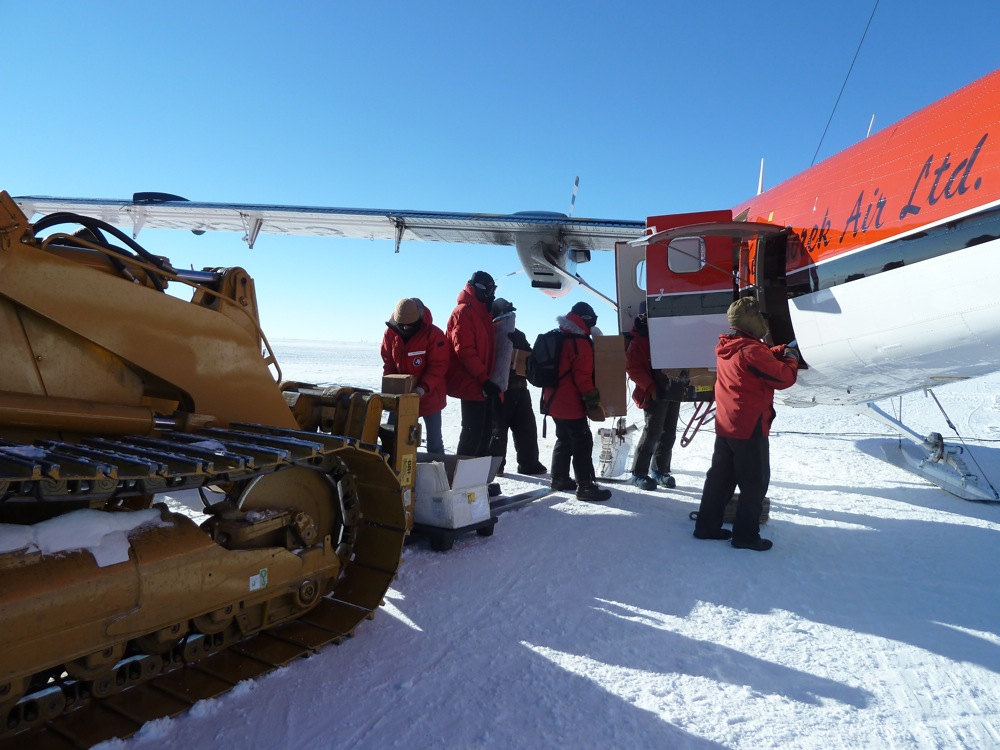
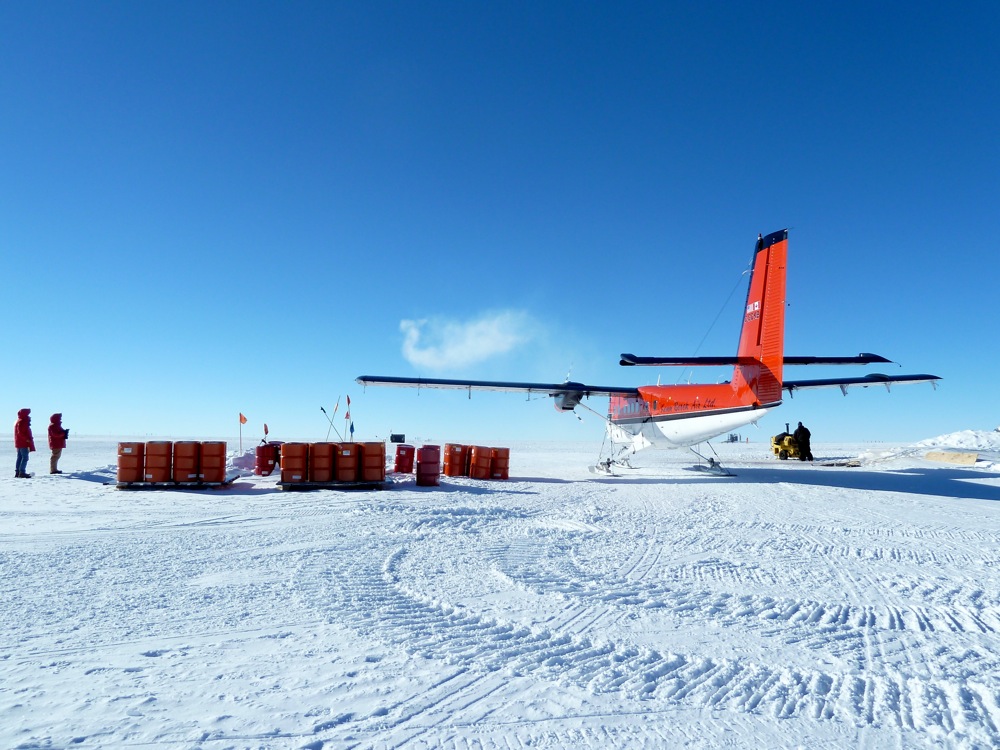
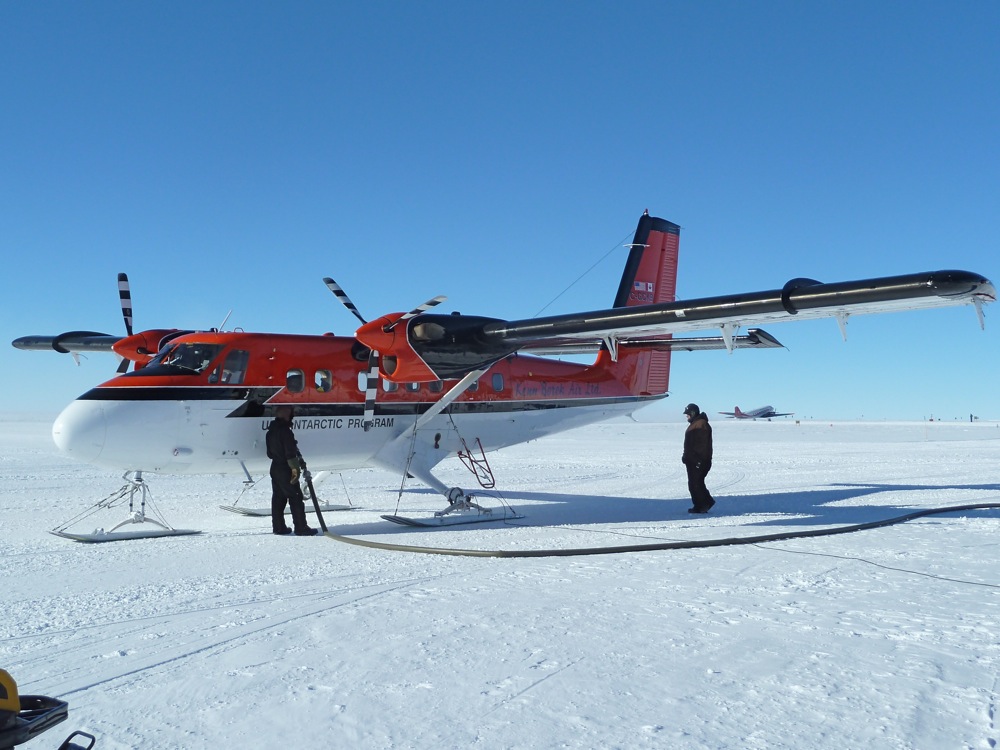

All set, we (Geoff, Nic, Ben the field camp guide, and myself) clambered aboard (not as easy as it sounds, with all that gear on), and settled down for the two and half hour flight to AGAP South.

AGAP was an international project to map the Gamburtsev mountains range lying under East Antarctica. It required a number of temporary bases to be established, including AGAP South. Now, AGAP South is just used as a fuel cache.
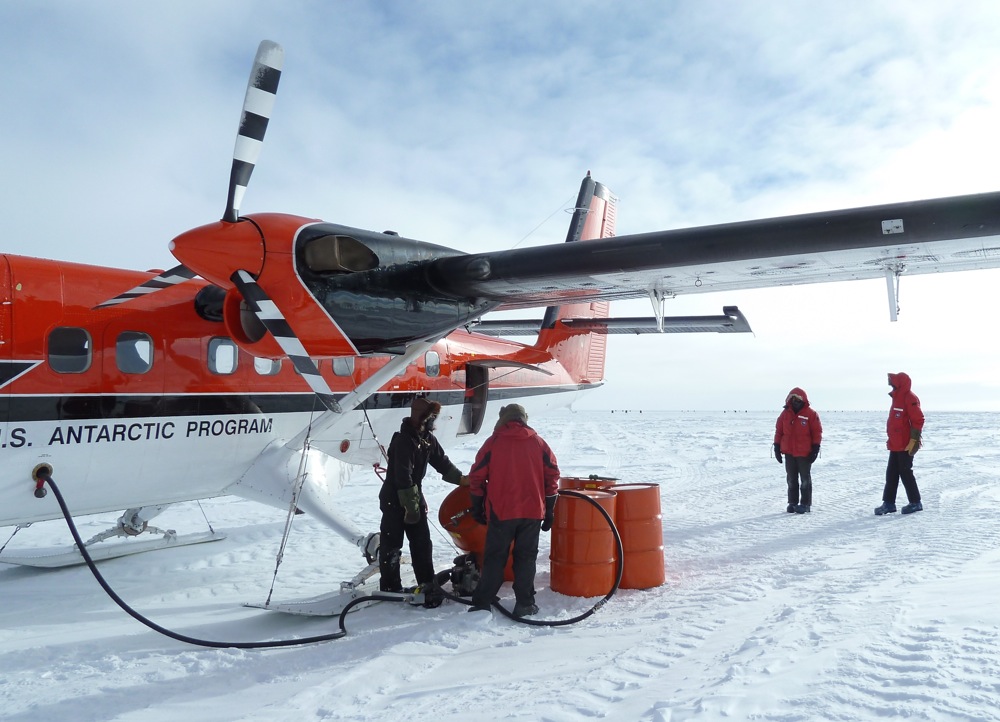
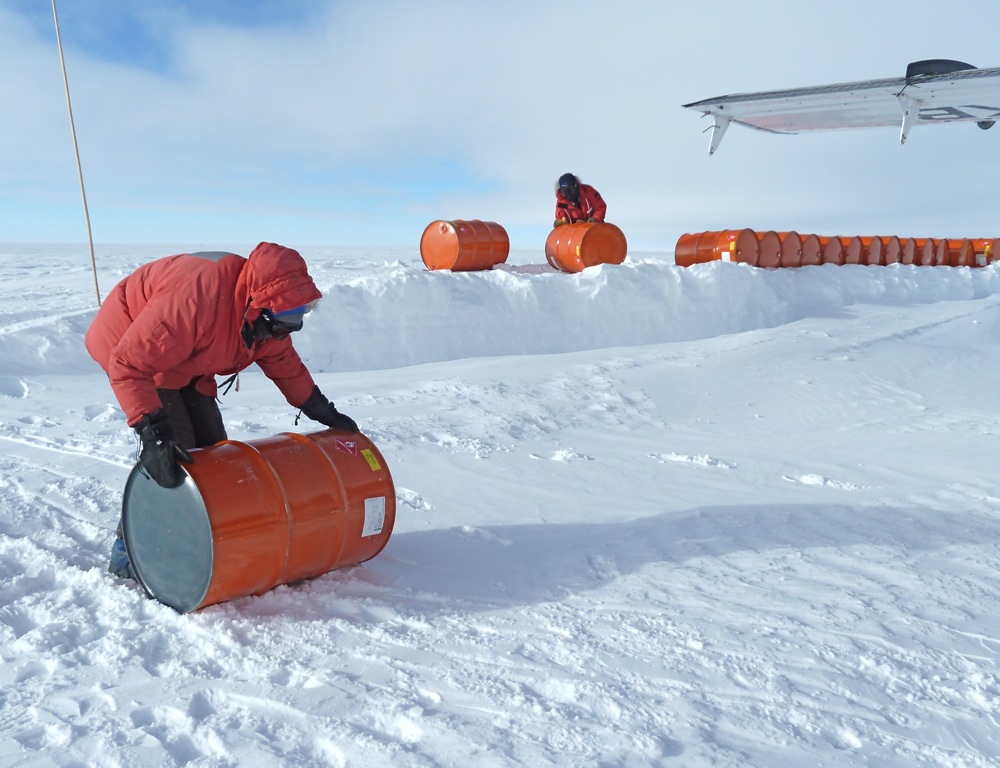
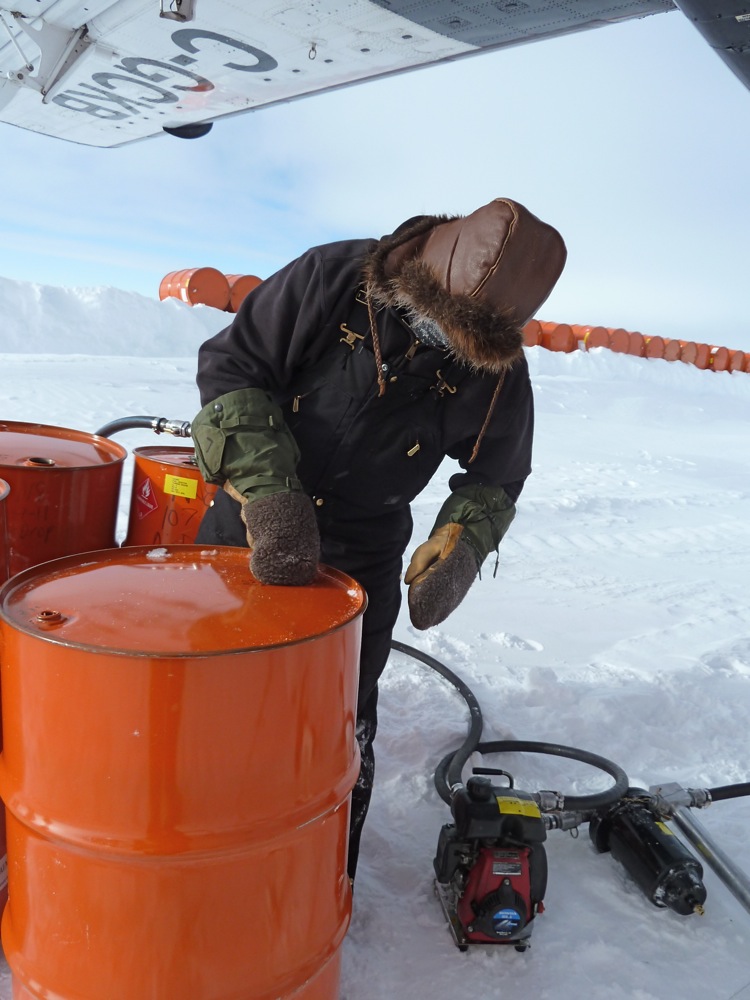
Another hour and half later, we arrive at Ridge A. OMG, the Charleston computers were right about the wind! A temperature around -45C is one thing, but add 20 ~ 25 knot winds to that and, as Malcolm Fraser once famously quoted, life wasn't meant to be easy!
First item of business was unloading the plane, and then setting up camp. The first tent up was our kitchen/living room tent. Then, while some of us opened up the two yellow and green PLATO modules to extract the faulty electronics boxes to send back to Pole with the Twin Otter pilots, others put up the sleeping tents. The Twin Otter stayed as long as it could - about two hours - then once they were sure we were safe the plane headed back to Pole via AGAP again.
One of the key recommendations of our altitude training course was: "Don't do anything too strenuous for the first day or so". Huh? I confess to being cold, exhausted, and feeling somewhat apprehensive.
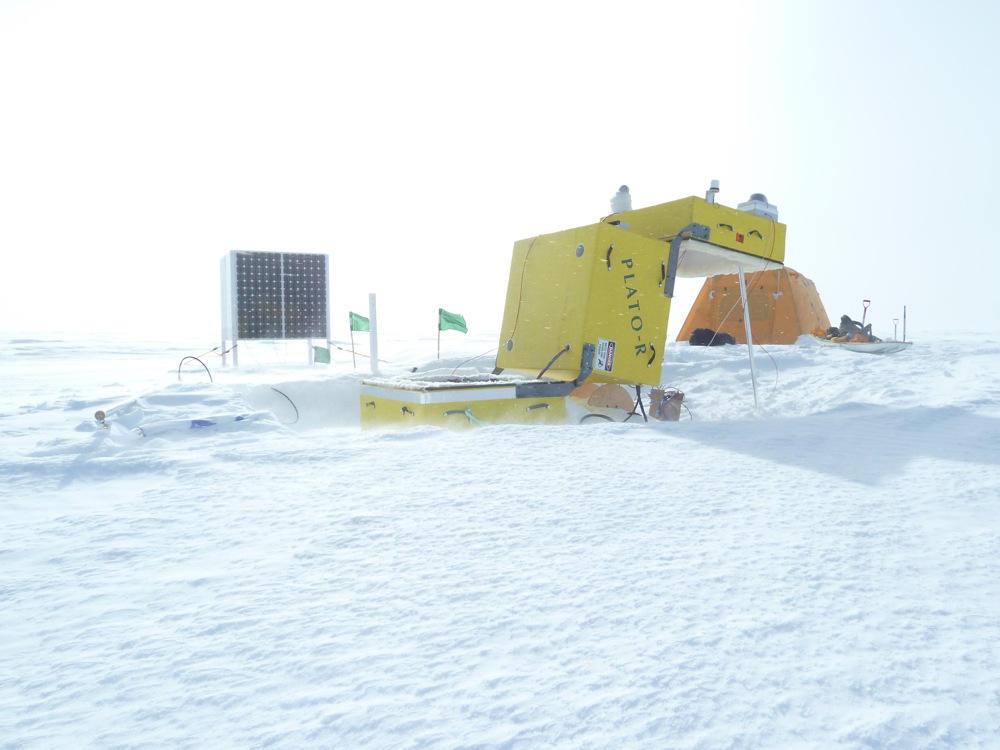

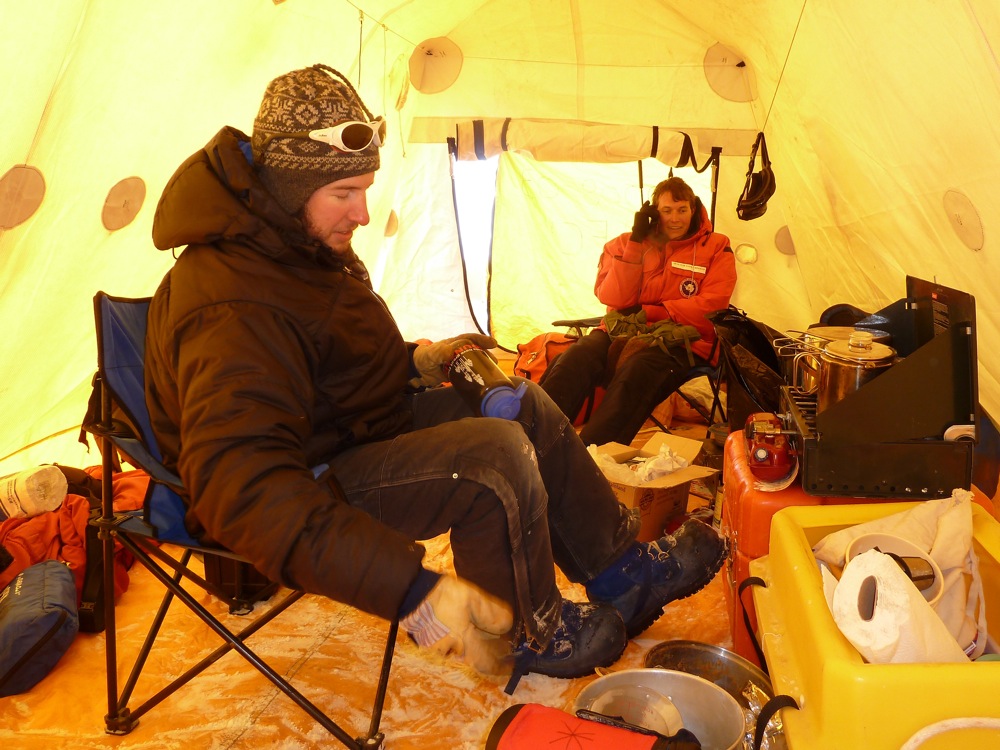
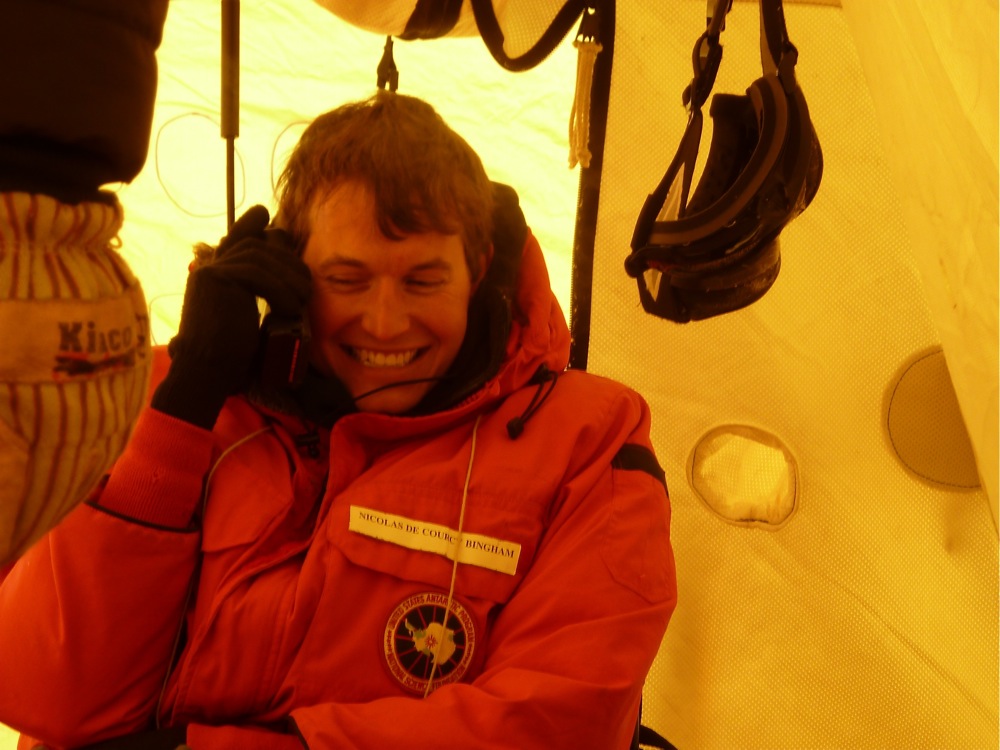
During the first night we all slept fitfully, as the wind whistled past the weather tower and rattled our ripstop nylon sleeping tents. It gradually calmed however, and by morning it was clear, quiet and sunny.
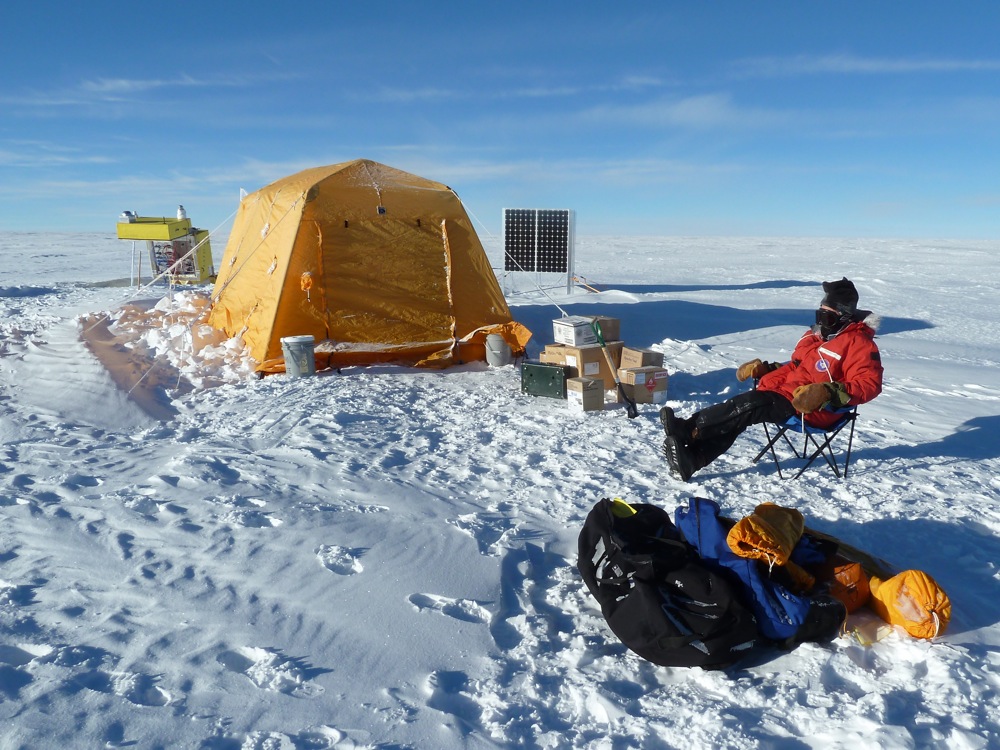

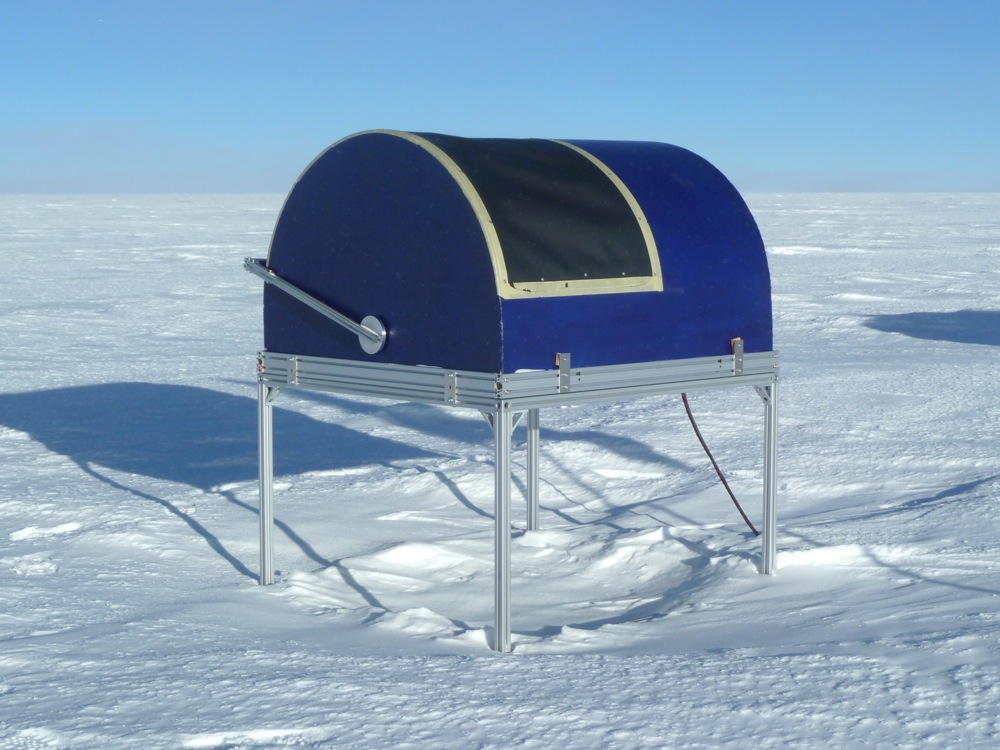



For the next few days we settled in to the maintenance tasks we'd come to do: replacing dead batteries and failed electronics, patching up the software and firmware, swapping the two engines for two new ones, refuelling, and making a number of what I hope are improvements to the Engine Module cooling thermal management systems.
The first step was to erect a large tent over each of the modules. By trapping the air inside and absorbing the heat from the sun, they raise the temperature inside by as much as 35 C, bringing it up to a comfortable zero degrees in the hottest part of the day.
Ridge A is sufficiently far from the south pole that it experiences a significant diurnal cycle, although at this time of year the sun never comes even close to setting. Temperature when the sun is at its highest is around -34C; at its lowest around -44C.
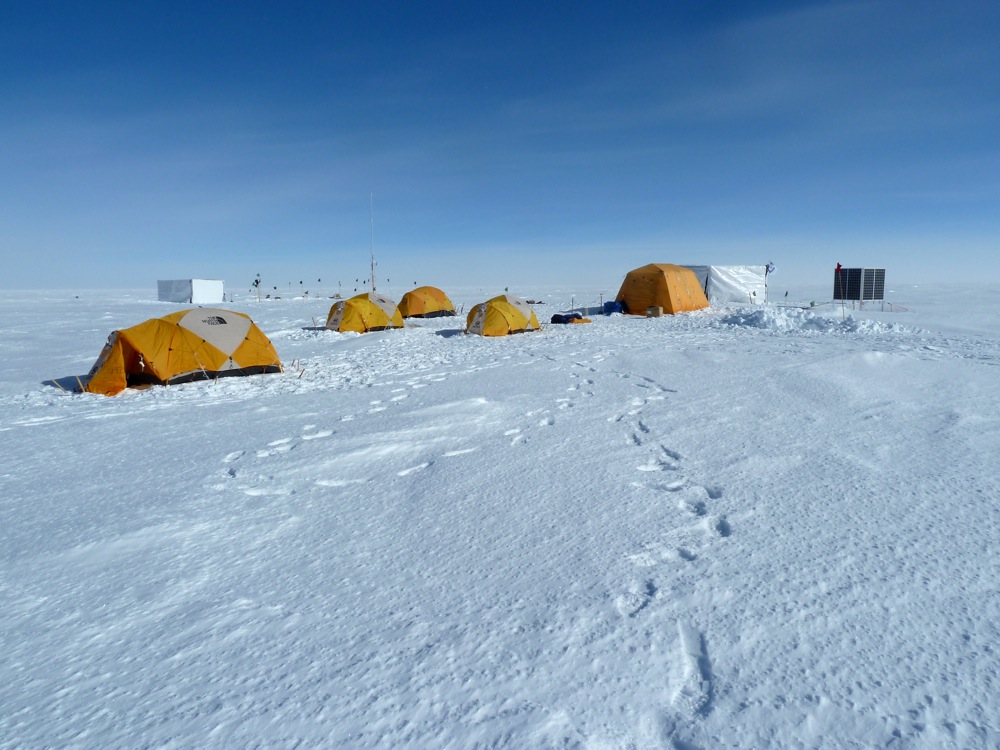

Living at Ridge A for six days and five nights was tough, requiring a disciplined routine. In particular, there is an ongoing struggle not against the cold per se, but against freezing. Once water is frozen, it doesn't pour anymore and you cannot drink it. However, because of the cold and the altitude, one has to drink an enormous amount. Thus, at night we filled our drinking-water bottles with boiling water and tucked them into our sleeping bags with us, using them both as hot water bottles (keeps the toes warm!) and for sipping on during the night. By the end of the trip I was sleeping with a drinking-water bottle, an Iridium phone battery, my camera and my watch, using my own body heat to keep them alive.
Ben kept the stove going almost continuously during the "day", melting snow to provide us with water for drinking and cooking. You cannot survive by eating snow. The energy required to melt it (333kJ/kg) is simply too great for your own body heat to provide.
Although we'd planned that Geoff would only spend two nights here, and Nic and I four, bad weather at Pole and various other factors meant we saw no Twin Otters for five days. At 8 am each morning Ben would phone Comms. at Pole via Iridium, while we waited in anticipation for news that the plane would come. Morning after morning, it didn't. We were starting to feel very isolated.

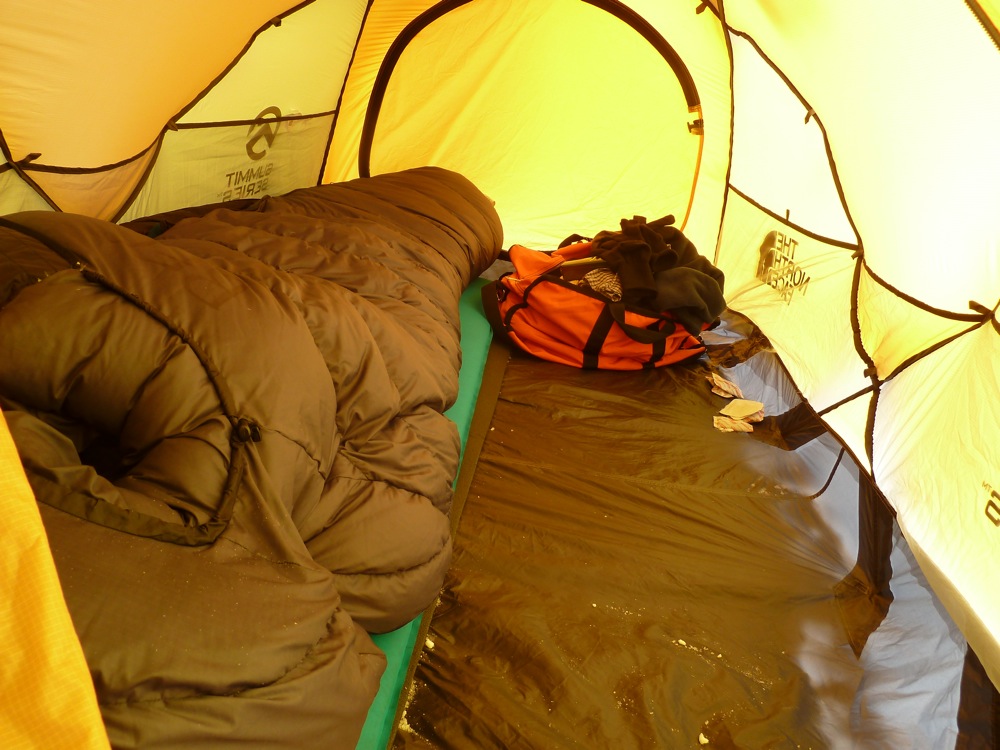
Lying awake in my tent in the morning, tiny ice crystals drop constantly from the roof, having condensed there from my breath. I can see them but can't feel them until occasionally one lands ever so gently on my lips. It's a delicate and quite exquisite sensation.
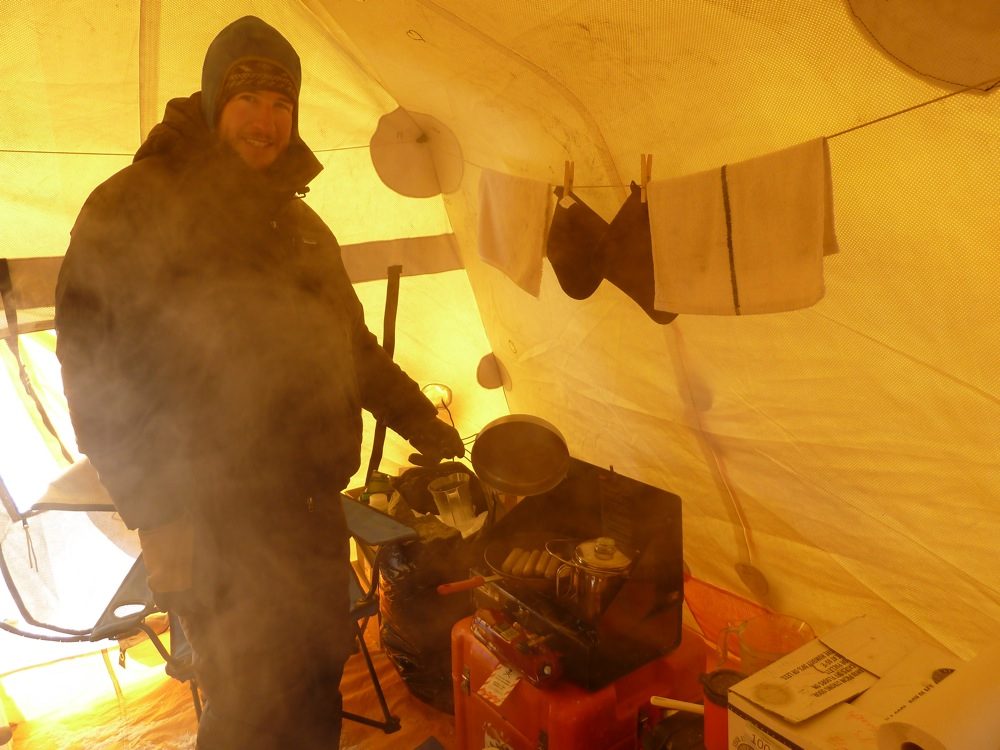

The field camp starts with the Twin Otter bringing in people and gear, and taking off almost empty. It finishes with the Twin Otter taking the people and gear out again, and thus taking off with as heavy a load as it can. At this elevation (roughly 4,500 m pressure altitude), and on skis, even the Twin Otter needs a good length to get airborne. One of our daily tasks was thus to shovel snow off the skiway to smooth out the bumps, while adding black plastic garbage bags full of snow as skiway markers.
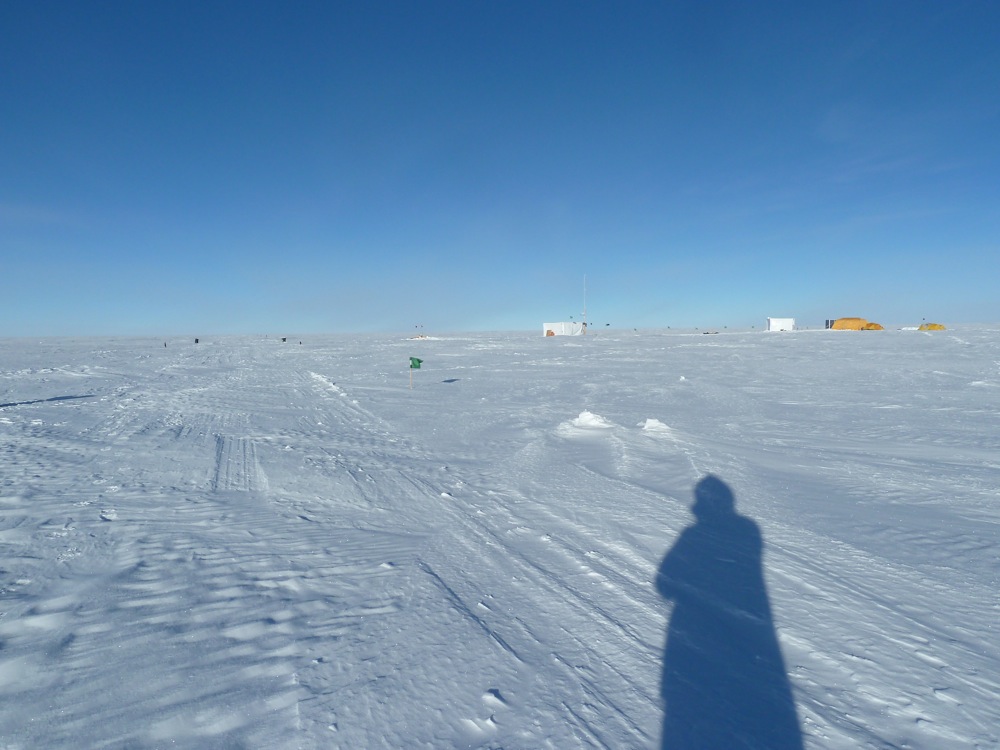
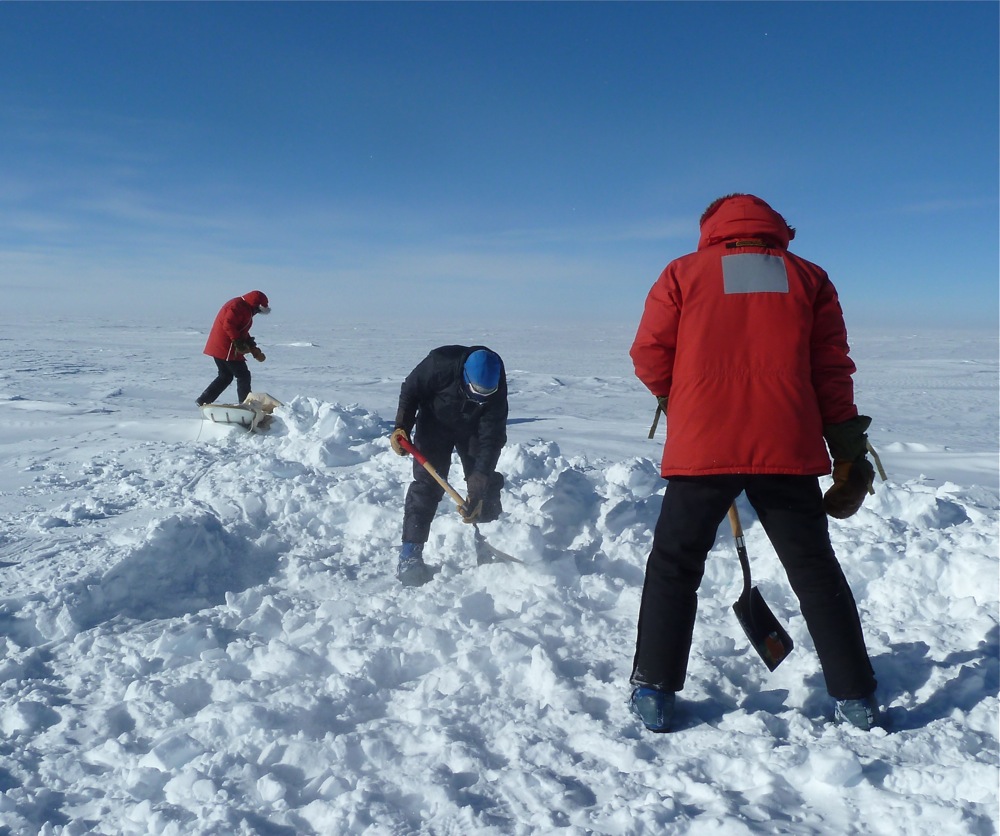


By the fifth morning we'd done almost all we could do, and it became increasingly important that the Twin Otter find a way to get to us. Fortunately, Ben's daily weather reports, plus a new-found respect for the Charleston computer, converged favourably today.
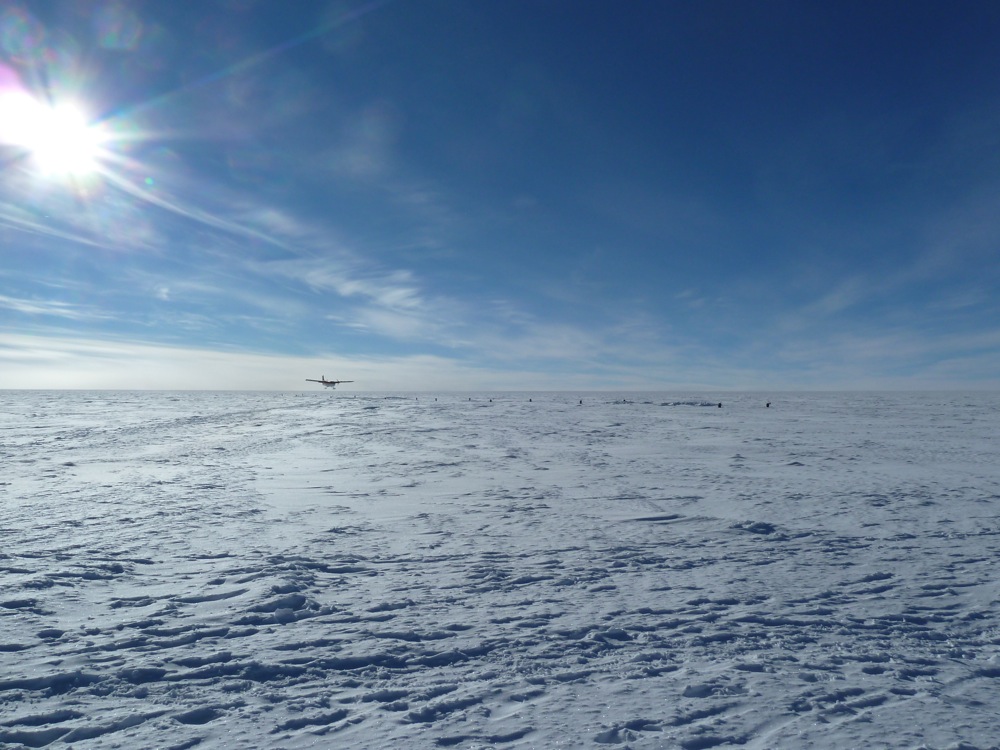
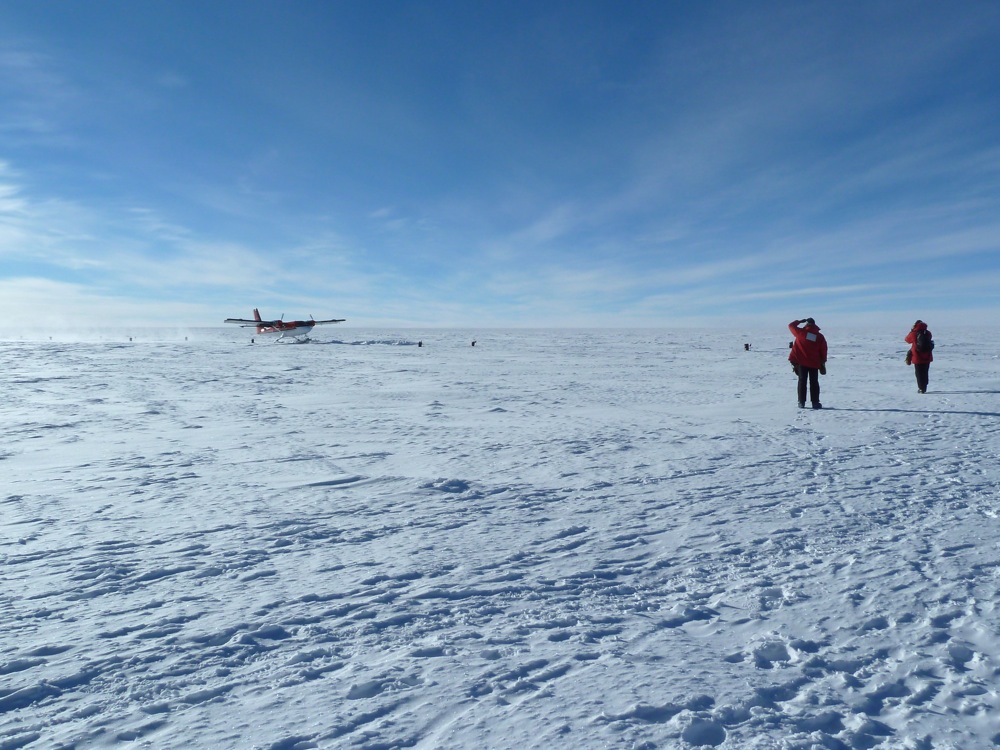
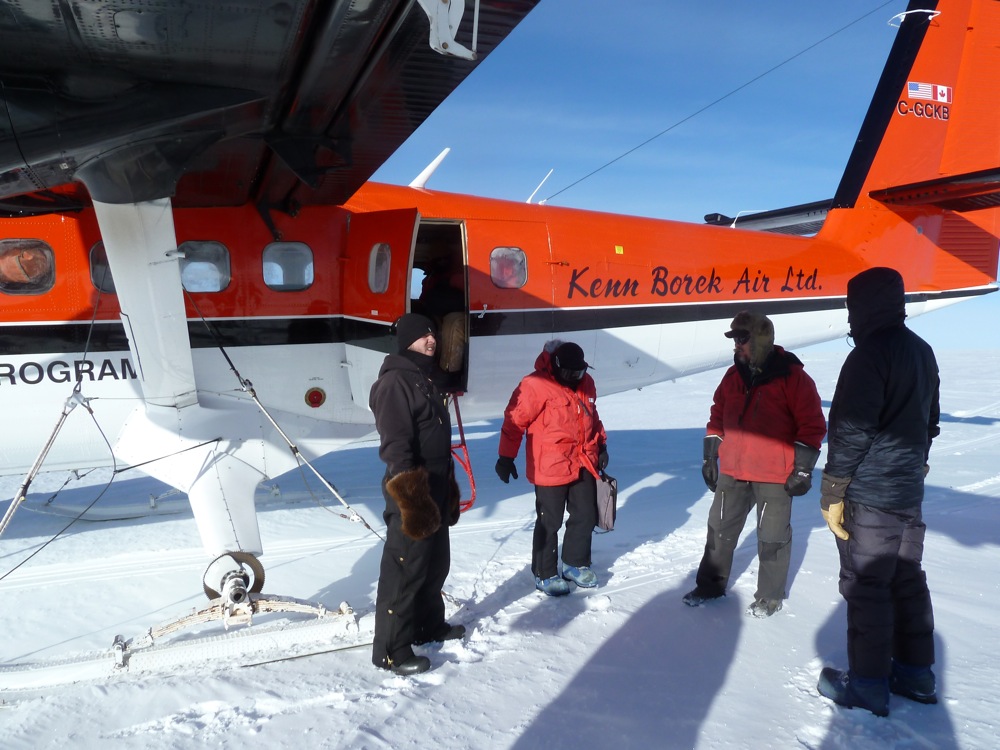
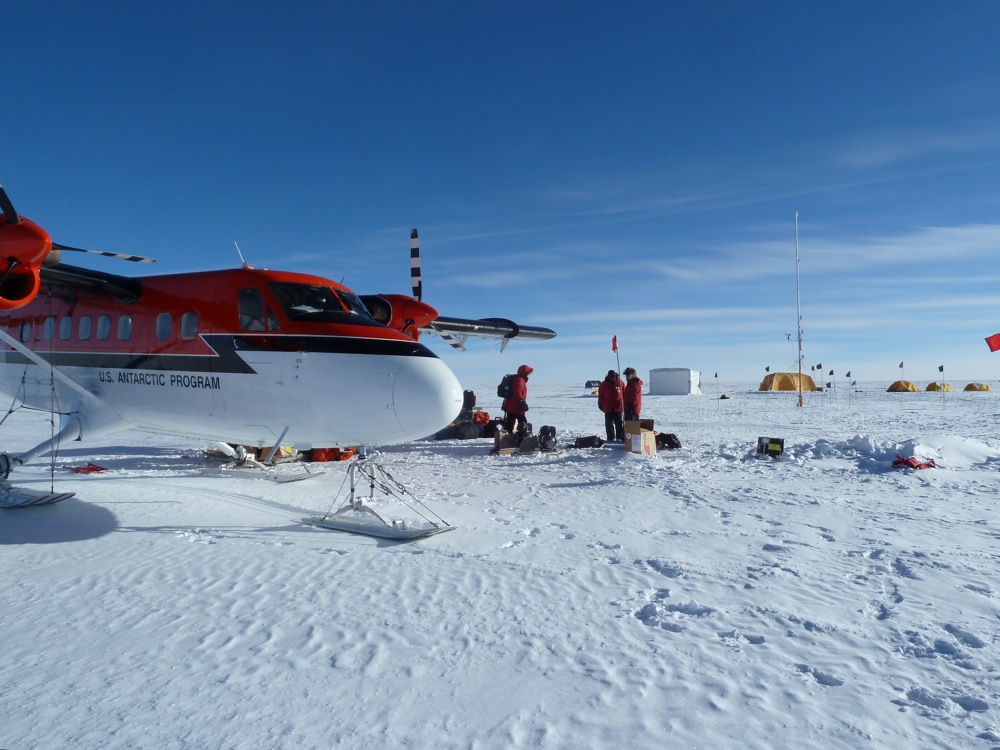
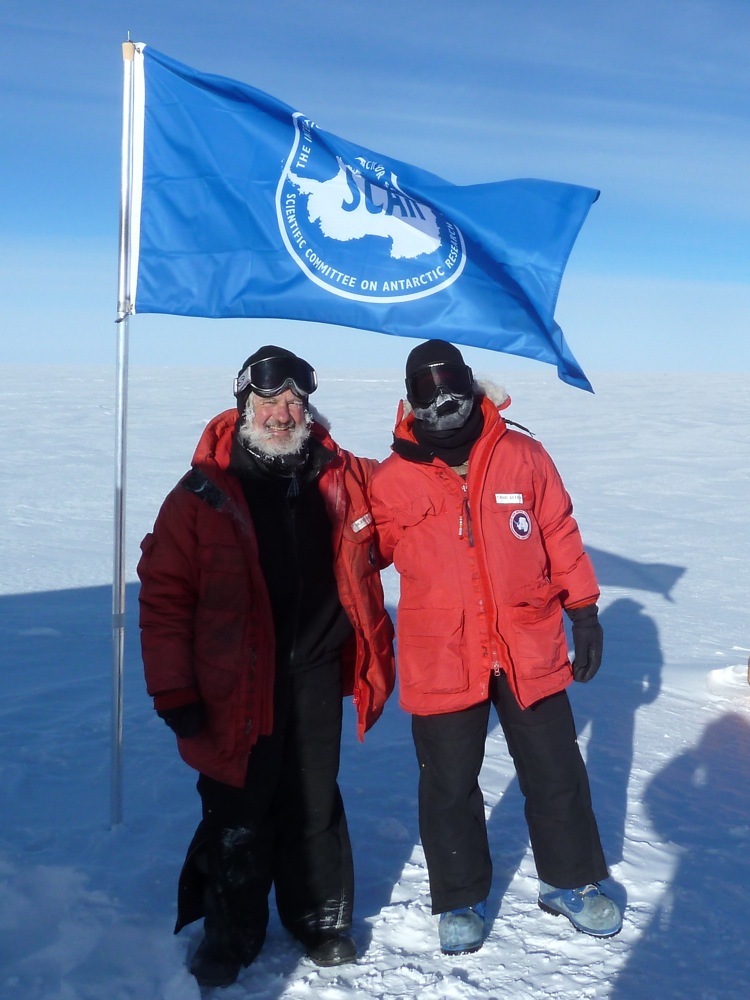
The new SCAR flag I brought with me this year is white-on-blue, rather than our earlier blue-on-white, a much better colour scheme for Antarctica! As these are the only SCAR flags in existence, I feel we can design them however we choose.
In fairly short order Geoff Nic and I clambered into the Twin Otter and were on our way. Despite our grooming efforts, the take off run was "interesting", although considerably less dramatic than the AGAP strip.
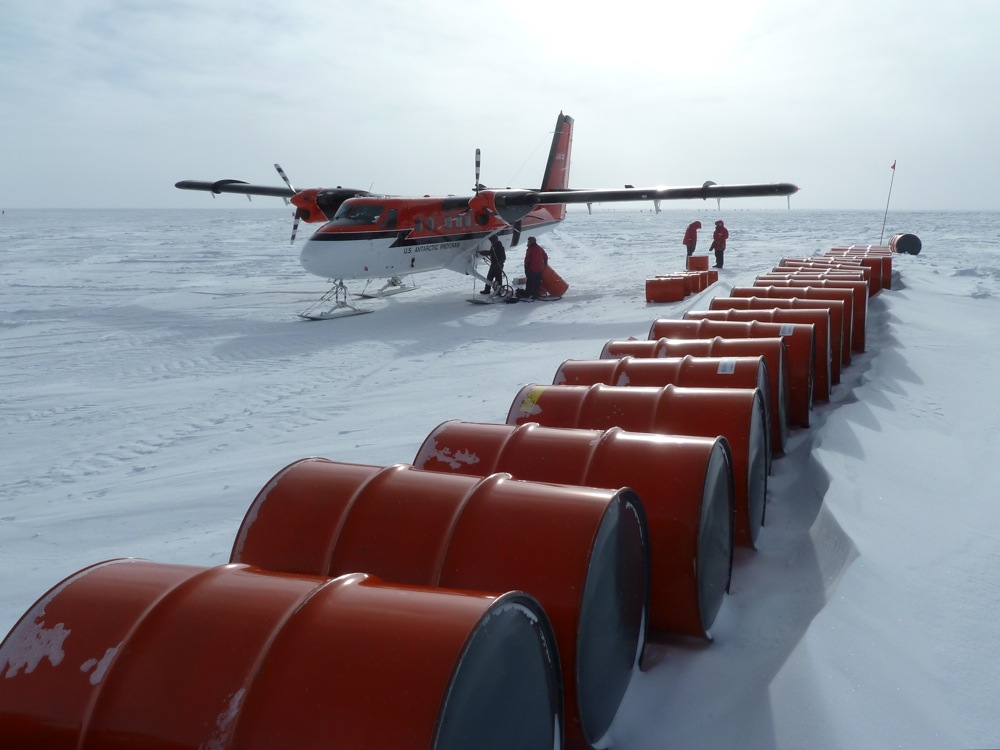
Back at Pole I headed straight for the shower, then joined the pilots for dinner.
We'll spend a couple of days at Pole, then back home via McMurdo and Christchurch. Abe Craig and Daniel get back to Pole tomorrow, so with luck there'll be some more news to report in future blogs.
Thursday, 24th January, 2013
A worrying day (John)
The news that a Twin Otter that left Pole last night en route to the Italian base of Terra Nova Bay has gone missing has cast a pall over the station today. We can only hope that the crew (who were the only people on board) are safe on the ground and will be rescued soon.
Meanwhile, the team at Ridge A (Craig, Daniel and Abe, and of course the mountain guide, Ben) have been making excellent progress but have experienced a few (mainly firmware-related) setbacks. With any luck they will be done by tomorrow morning, and our Twin Otter can fly in to Ridge A and bring them home.
It is a stressful time for all of us.
Friday, 25th January, 2013
Backup x4 (Geoff)
This is what the flight screen looks like today:
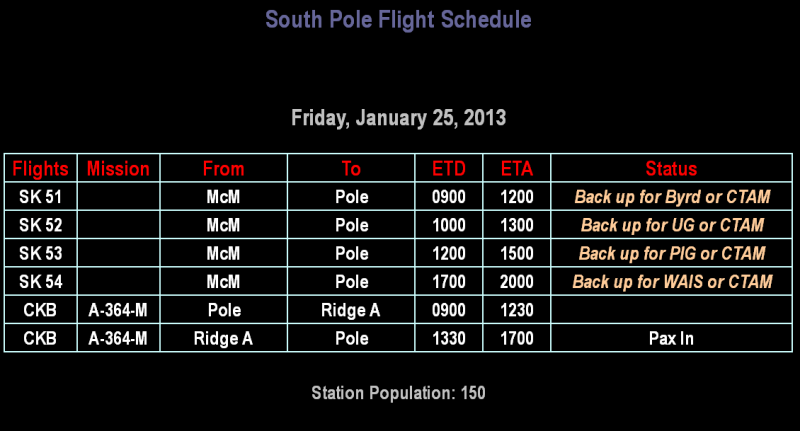
If just one of those four flights gets cancelled, we will have a flight out of the South Pole. Otherwise we live to fight another day at altitude. Meanwhile, the Twin Otter is scheduled to pick up the last of our team at Ridge A.
-- Geoff
Friday, 25th January, 2013
Team B arrives back to Pole (Geoff)
Unfortunately none of the flights made it Pole today, which meant that we are still here tonight and now scheduled to fly out tomorrow sometime.
On the positive side, the remainder of our team returned from Ridge A today, so we were able to have a debrief over a late dinner.
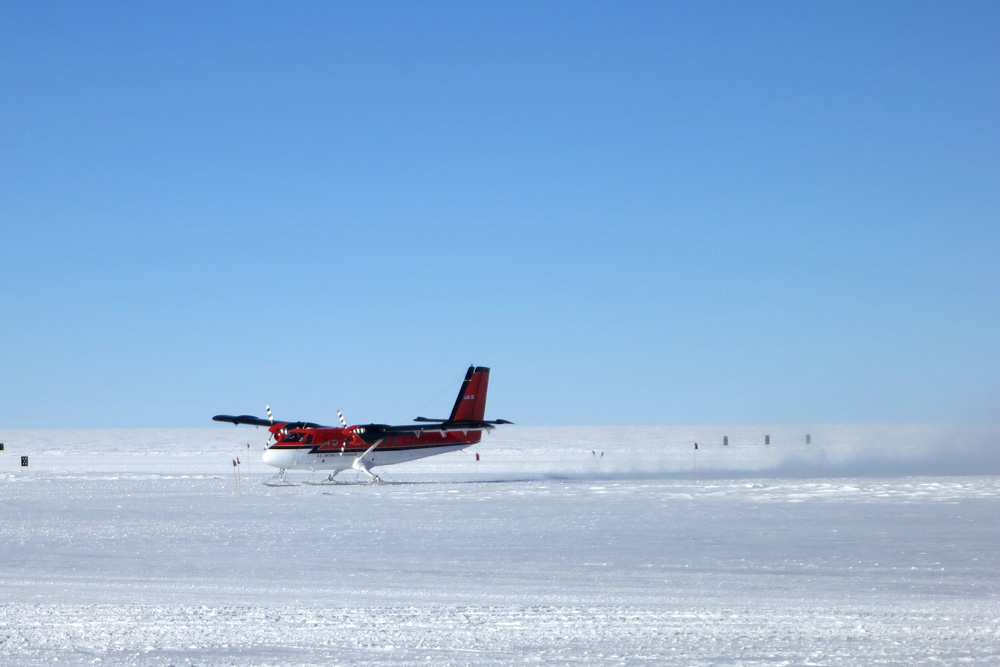
We are grateful to our Twin Otter pilots, Brent and Darrin, and engineer, Brian, for their amazing support and assistance during the past two weeks and for bringing us all back safely. Their help setting up camp on our first day was integral to our success (and survival!).
-- Geoff
Friday, 25th January, 2013
Time to take a breath (John)
Last night was punctuated by a midnight Iridium call from the guys at Ridge A, and a bit of running about. They are down to the last few hours there, and there are the usual last minute hiccups.
I had breakfast with the pilots, who were keen to get in to Ridge A and pull the team out as soon as their work was completed. A further Iridium call from Ben at breakfast time confirmed that they were ready to go, so off went the Twin Otter at about 9 am.
Once again, today was a beautifully clear blue, almost windless day at Pole. On days like today there is a hemisphere of clear, crystal blue sky sitting on a limitless, flat white plate of ice. It is truly breathtaking.
For the rest of the day I was able to take a breather and wander around exploring the recreational side of the station. In stark contrast to the current architectural trend in Australia to make work places as sterile, inefficient and soul-destroying as possible, South Pole Station is designed as a small indoor village with the productivity and well-being of its occupants the top priorities. Another high priority is energy efficiency, with automatic movement sensors on many of the lights. The whole station has quite a sci-fi feel to it, especially when walking down the corridor with lights turning on to greet you and extinguishing as you pass - vaguely reminiscent of the opening scenes of "Get Smart".
My bedroom cum office, described in an earlier blog, is compact but highly functional. This is augmented by a large, open-plan laboratory space that accommodates the ever-changing workforce, although most of the astronomy is done in the MAPO building or at the imaginative named South Pole Telescope (SPT).
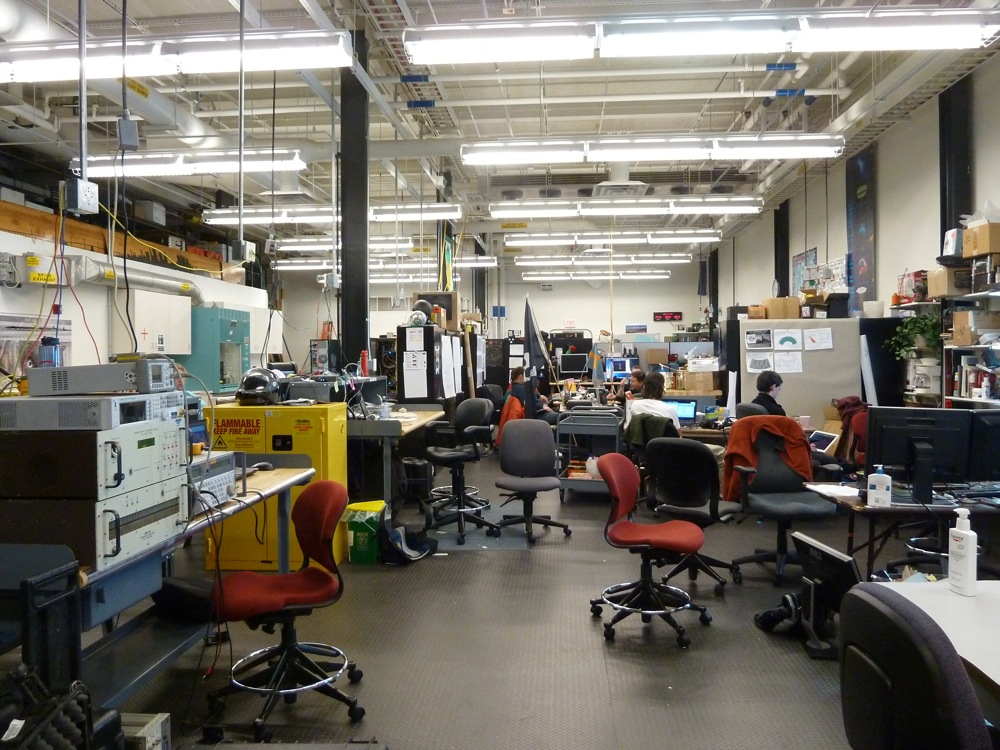
Rather than leaving the walls of the station bare, they are filled with memorabilia from earlier Antarctic expeditions and space missions. These are very inspirational, and at the same time one cannot help but feel deeply privileged to be able to work here.
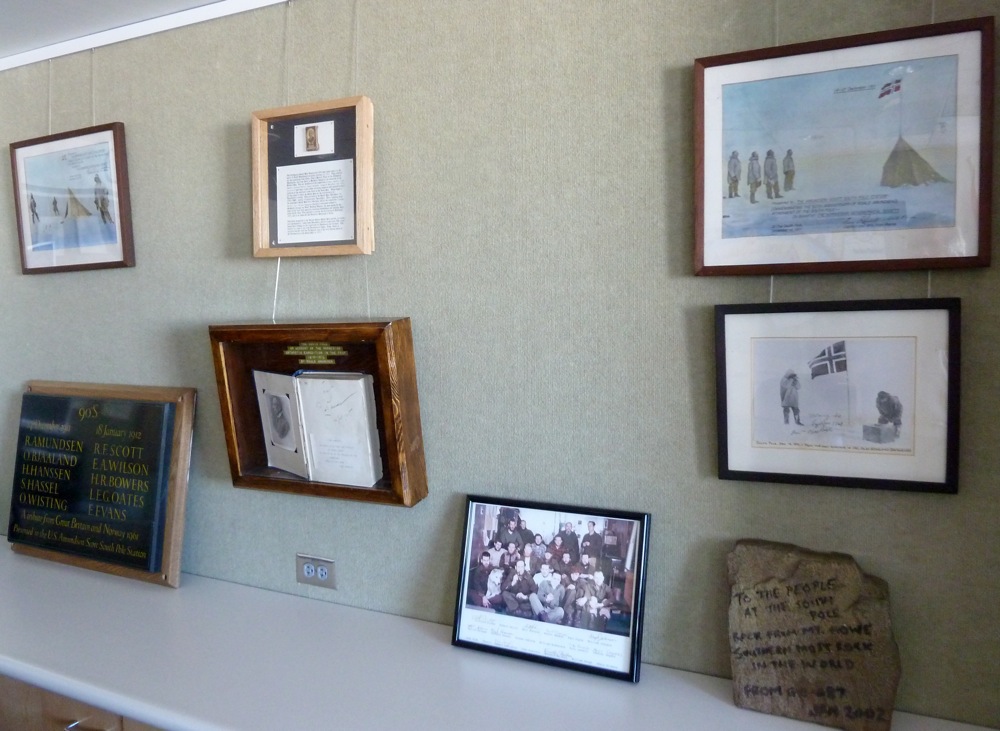
Keeping people fit is a high priority, as for people working at desk jobs there is a strong temptation to never leave the Station. There is both an exercise room, and a good-sized gymnasium.
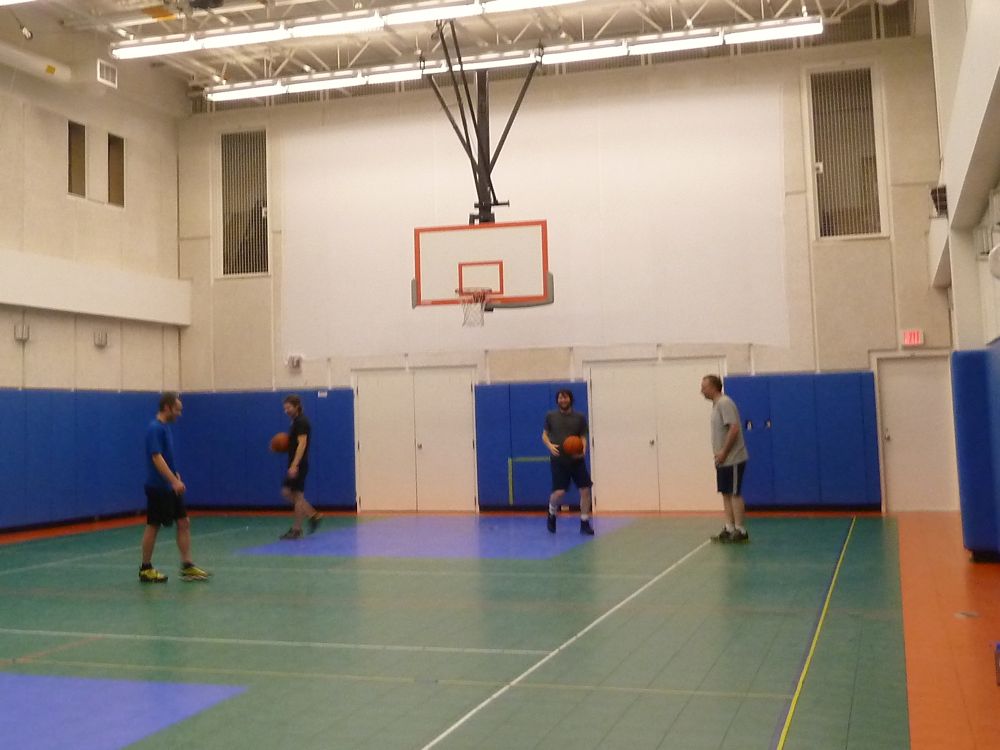
Add to that a greenhouse, which provides fresh herbs and vegetables through the winter - and also a nice "green" place to sit and relax, an art and craft room, a billiards room, and a sauna (yes, really) and there is little reason to be bored. I'm sure there are plenty of other little hideaways I haven't found, too!
Here are a few of my favourite places:
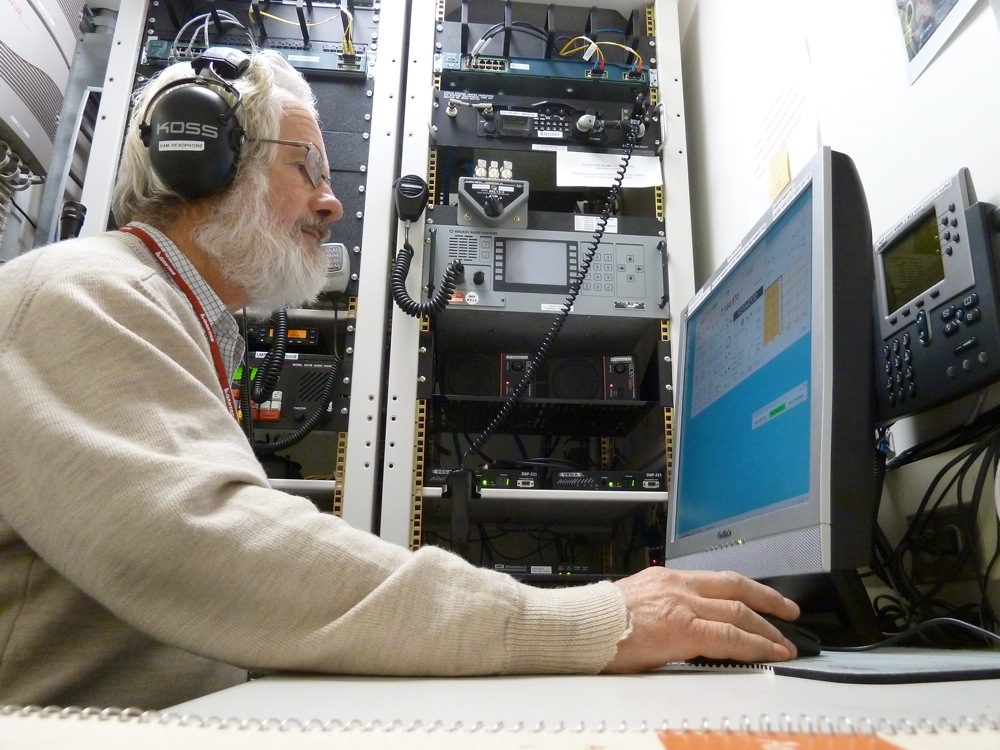


The remaining members of our team (Abe, Ben, Craig, and Daniel) returned just after dinner, exhausted but triumphant. Mercifully they had considerably better weather than we did, but it can't be denied that Ridge A is a very tough place to work at the best of times. They appear to have achieved everything we all set out to do, and now the PLATO/HEAT combination is set to gather another season of unique data.
I also went up to the comms. room and did a phone interview with ABC radio in Canberra. The general theme seemed to be "What weird things are Australians planning to do on Australia Day". Unfortunately I was just getting into my stride when the Iridium phone connection went dead. Oh well, five minutes of fame rather than the Warhol's promised fifteen. However, I did enjoy telling them about last week's camping expedition to Ridge A, particularly now that our other team members are back and we know that the expedition was a success.
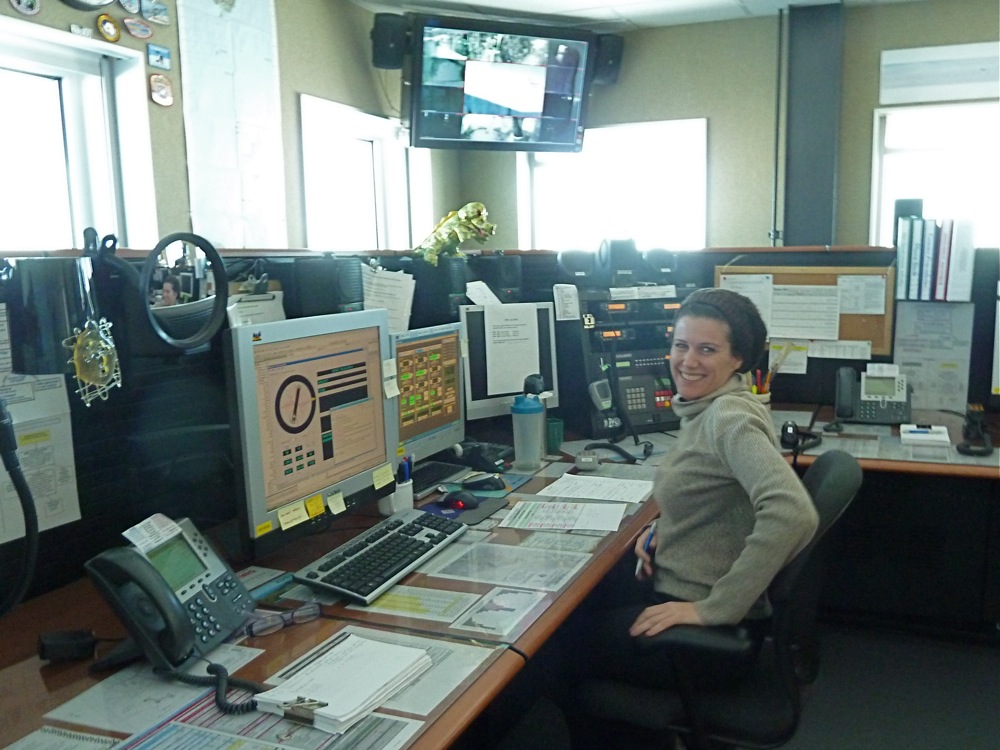
Tomorrow we're scheduled to fly to McMurdo at around noon.
Saturday, 26th January, 2013
Imagine (John)
As the search for the missing Twin Otter continues, the Hercules that would have taken us to McMurdo has been redeployed to the search and rescue mission. So, we sit and wait and hope for good news from the rescue team, and acknowledge that we won't be home for a few days yet.
South Pole Station is of course a highly artificial environment. Although we are structured as a small village, we produce nothing of tangible value and are utterly dependent on the enormous resources invested in our continued existence by the U.S. Antarctic Program.
Nevertheless, it is fascinating to live and work for a few weeks in a situation where are few private possessions and hence few locked doors, money is essentially meaningless, and the usual competition for resources that normally dominates our lives is absent. The effect this has on the manner in which people interact socially is to me the most interesting and rewarding part of the South Pole experience. Reducing inequality in a society benefits everyone.
John Lennon never visited the South Pole. He did, however, imagine it.
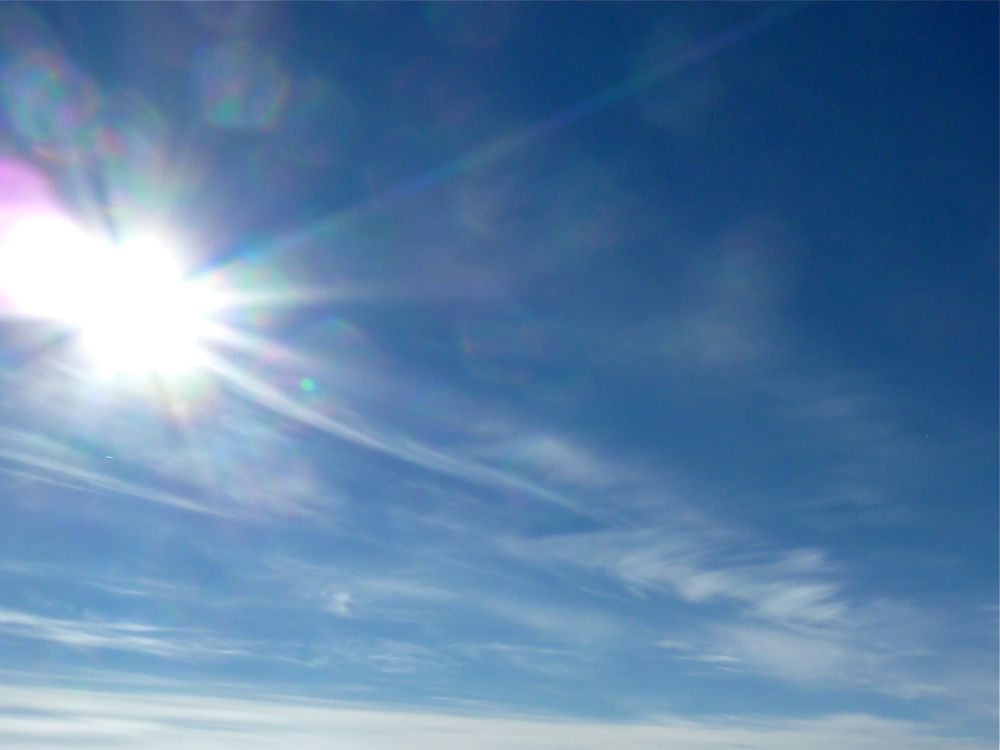
It's easy if you try
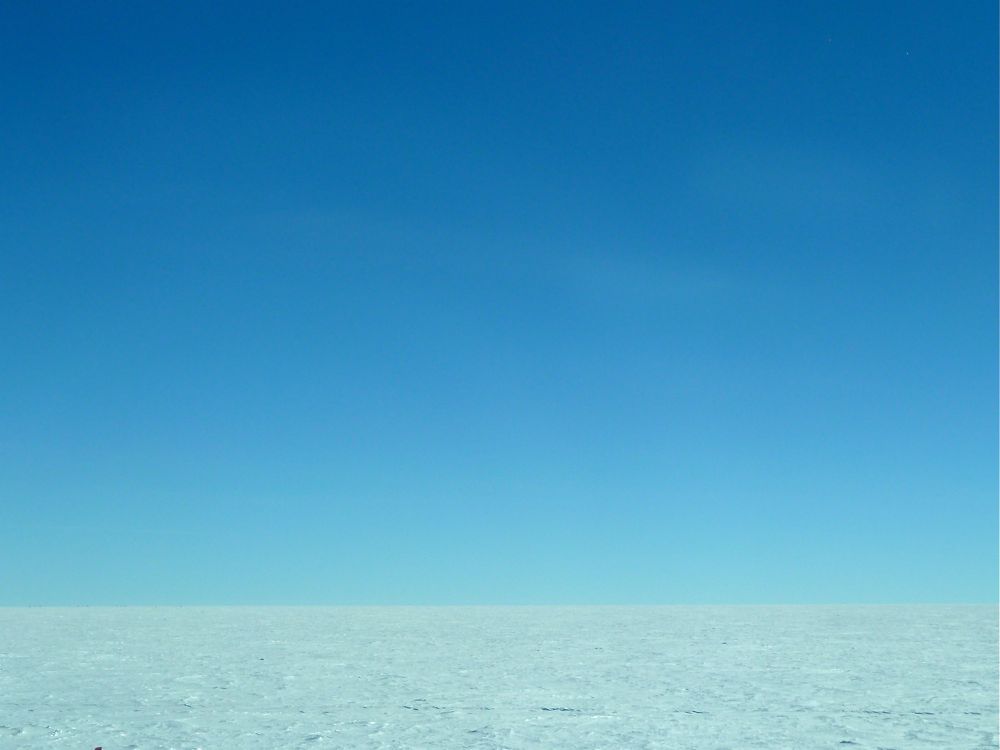
Above us only sky
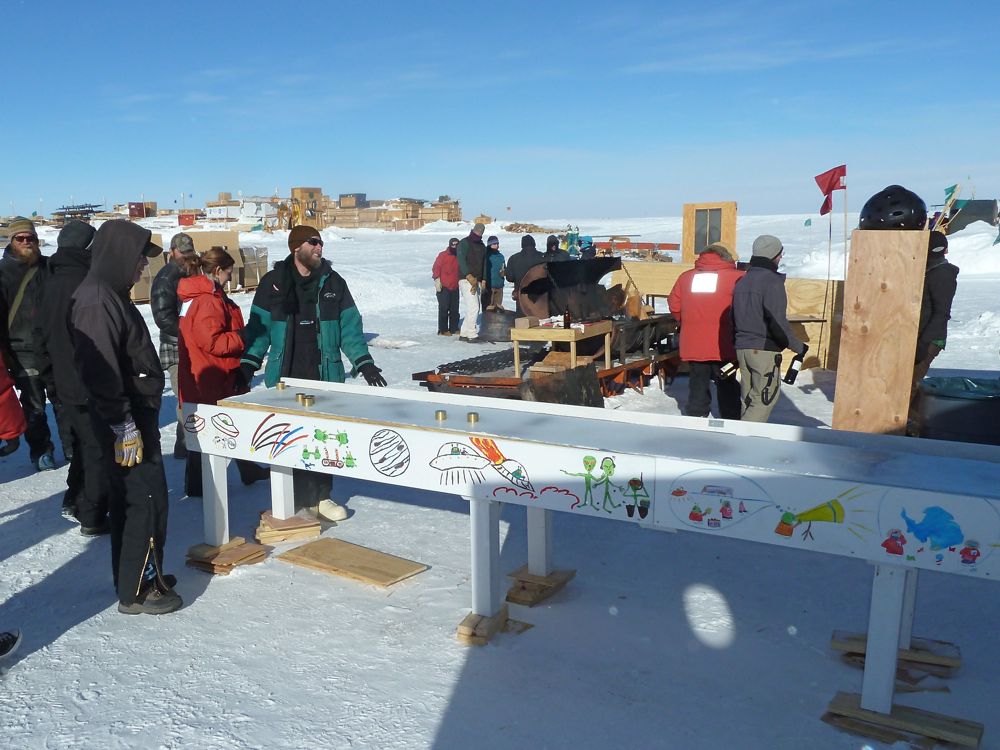
Living for today...

It isn't hard to do

And no religion too

Living life in peace...
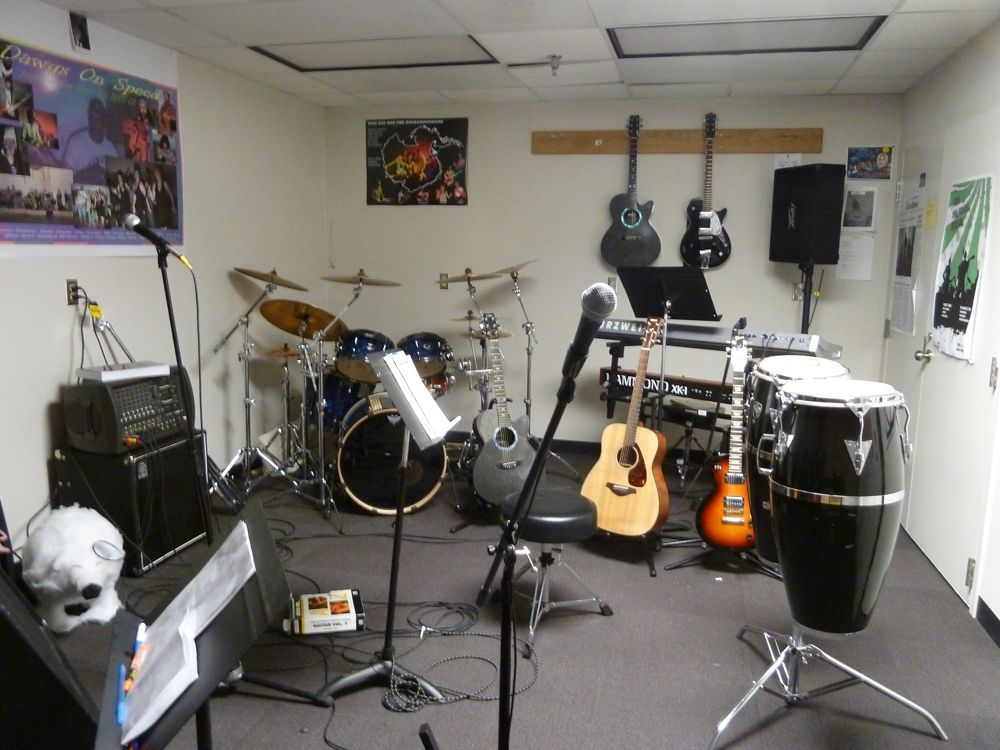
I wonder if you can

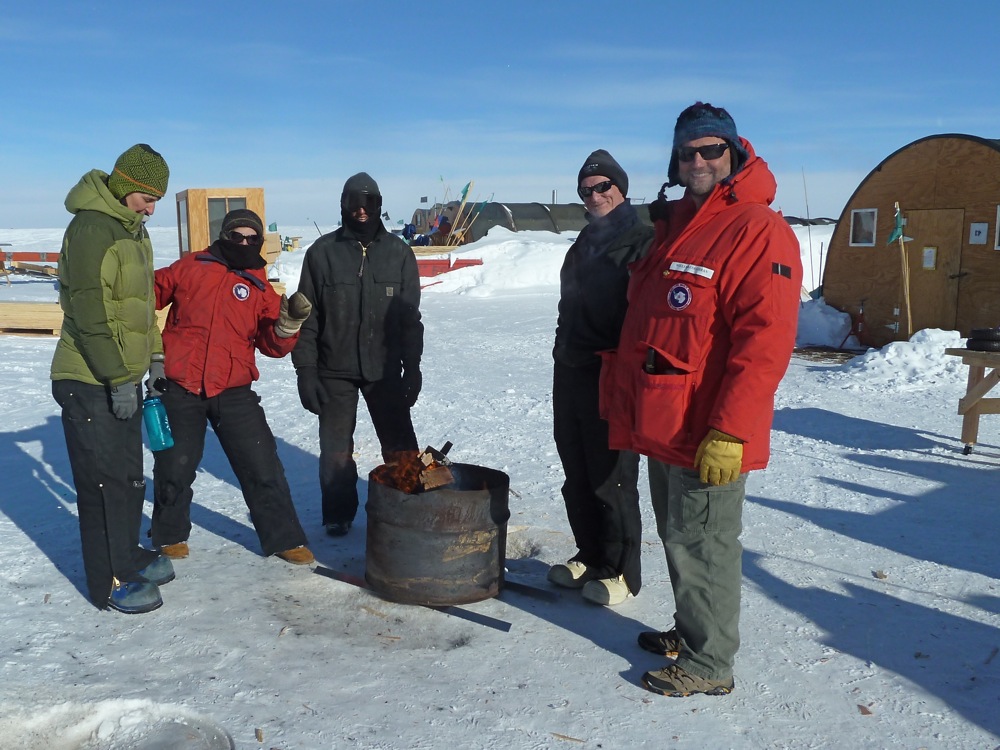

Sharing all the world...
You may say I'm a dreamer
But I'm not the only one
I hope someday you'll join us
And the world will be as one
Sunday, 27th January, 2013
Memorial service (Geoff)
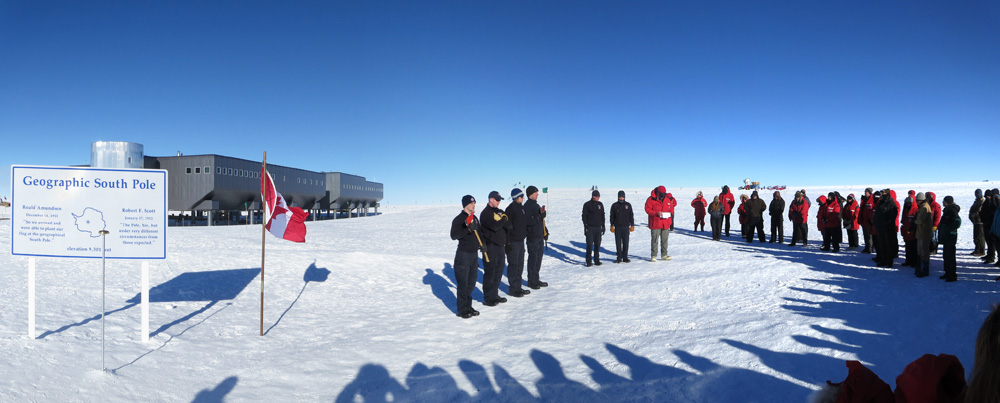
This morning, we received the tragic news that the wreckage of the missing Twin Otter had been found, and that there were no survivors. A small service was held to honour the two pilots and one engineer who lost their lives. The ceremony was held at the Geographic South Pole, where the Canadian flag was raised (in place of the American flag that typically resides there) and will remain for 24 hours.

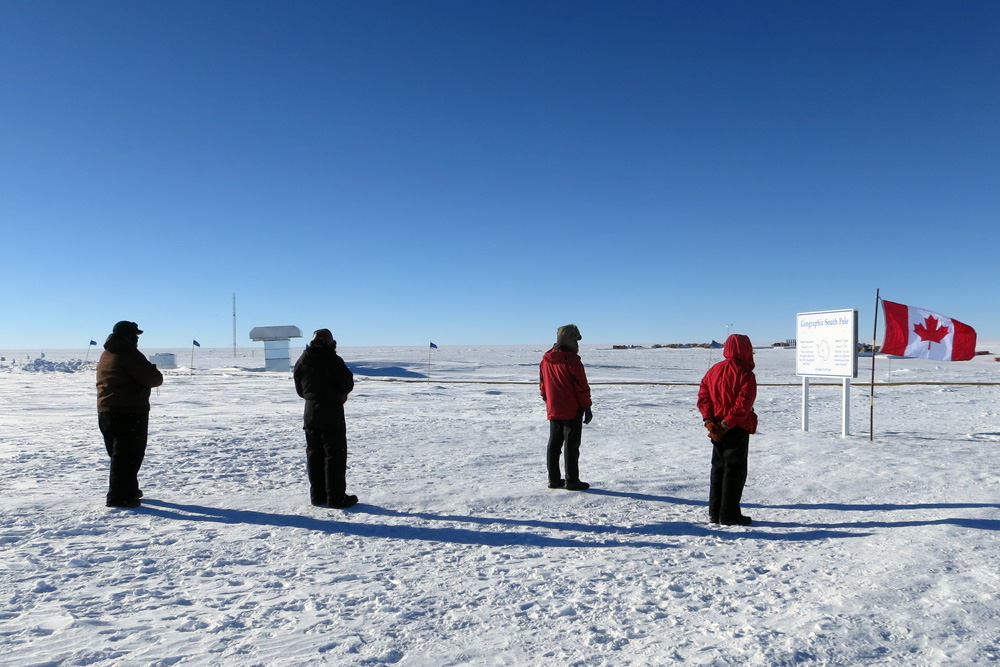
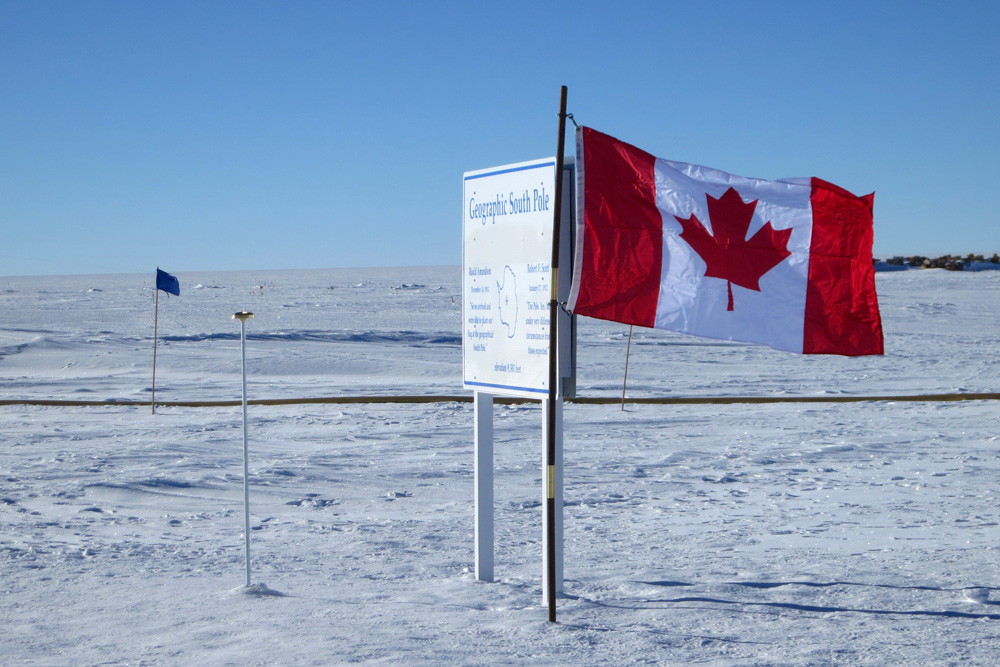
In other news, we finished packing up our cargo and are scheduled to begin our journey home tomorrow.


-- Geoff
Sunday, 27th January, 2013
A tragic end to the search (John)
We have all been shocked and saddened by the discovery of the wreckage of the Twin Otter that left here on Wednesday.
Nothing more to say.
Monday, 28th January, 2013
Greyscale (Geoff)

We made it back to McMurdo this afternoon. I took a walk this evening, it was completely overcast but still amazing because there is much more open water than there was previously. I sat and watched a seal laze about on an iceburg, while listening to the tranquil sounds of the ocean splashing around.
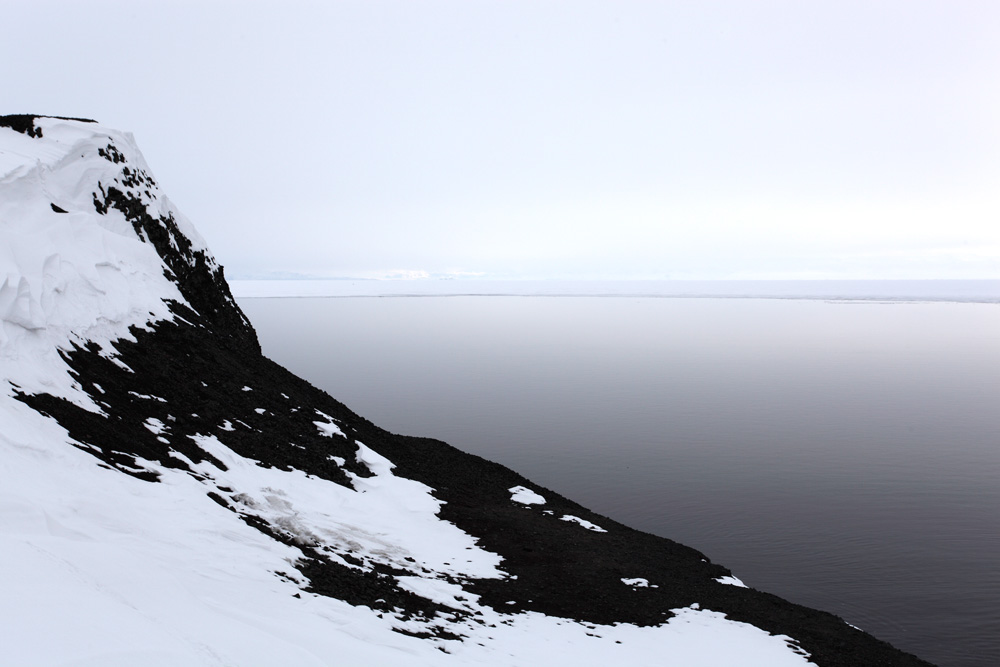

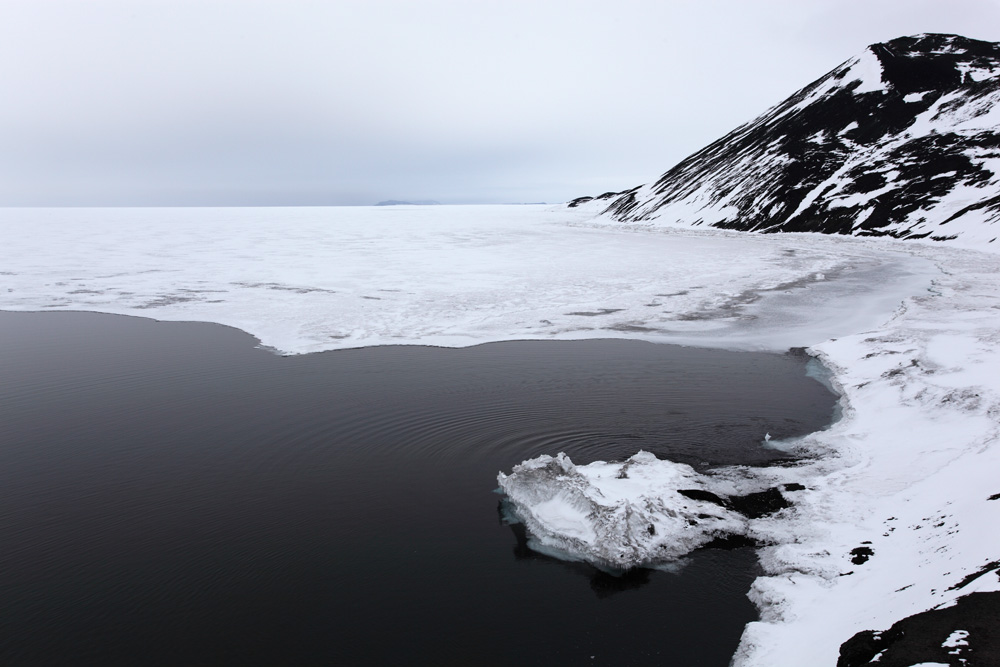
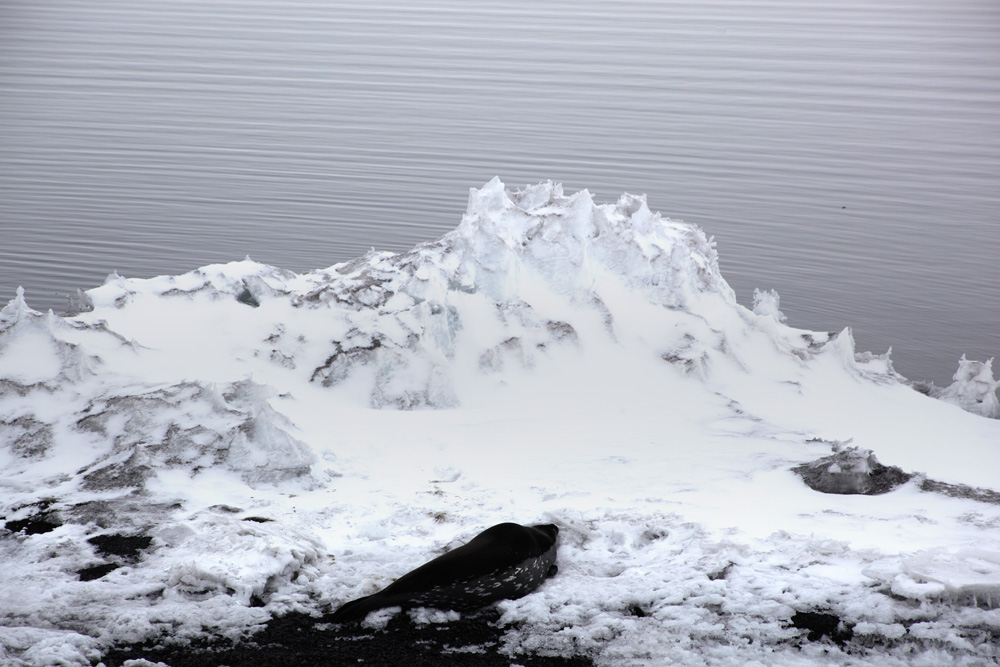

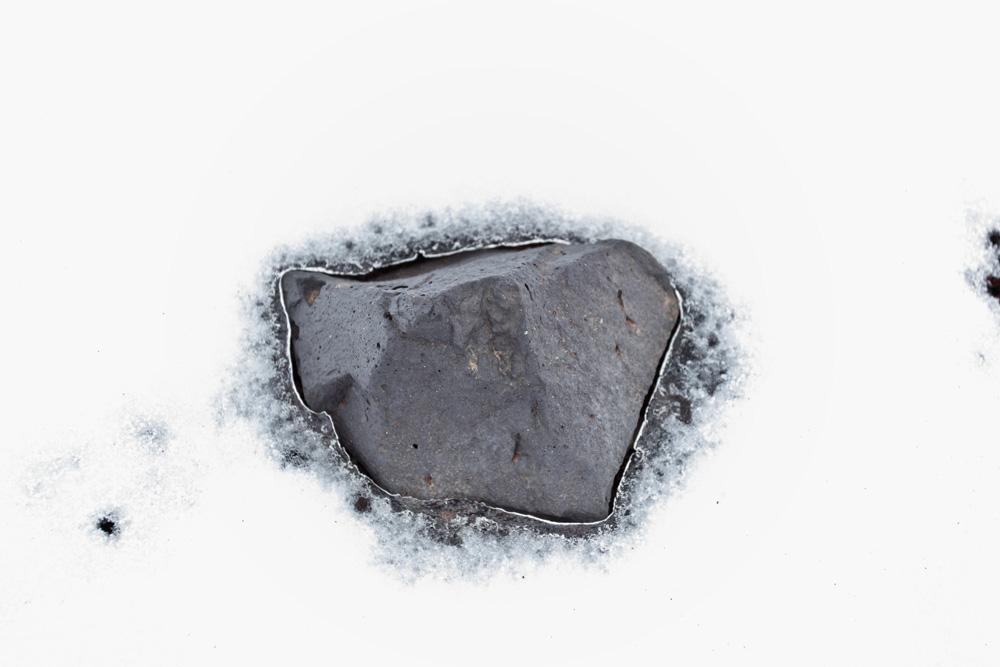
This was the only colour I saw:
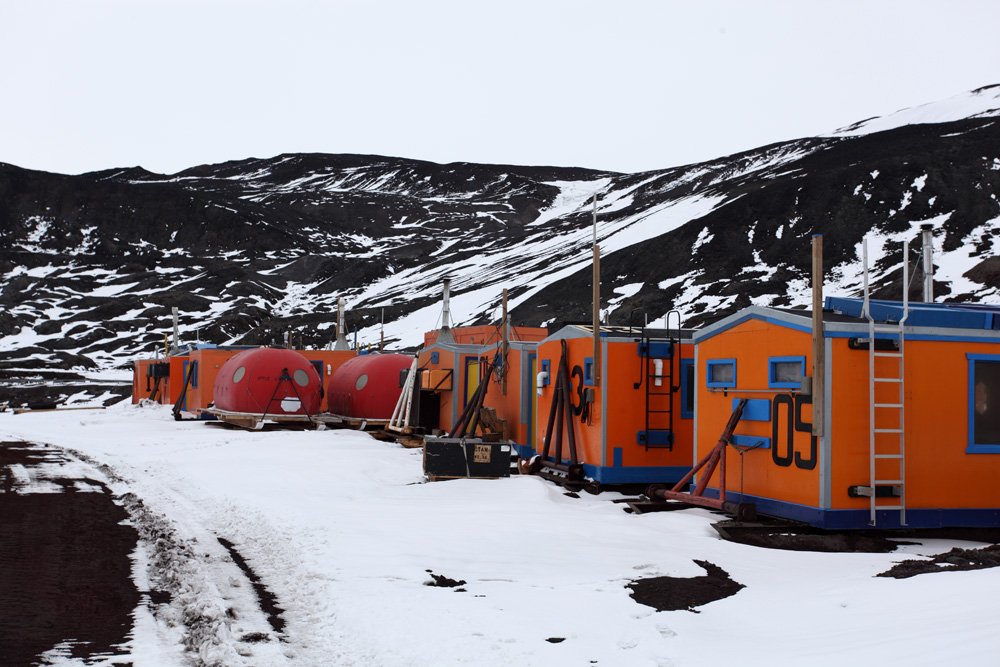
-- Geoff
Monday, 28th January, 2013
The Ross Island Yacht Club of Antarctica (John)
This morning began on a somber note as I paid my last respects to the Canadian crew of the Twin Otter that crashed on Mount Elizabeth last week.
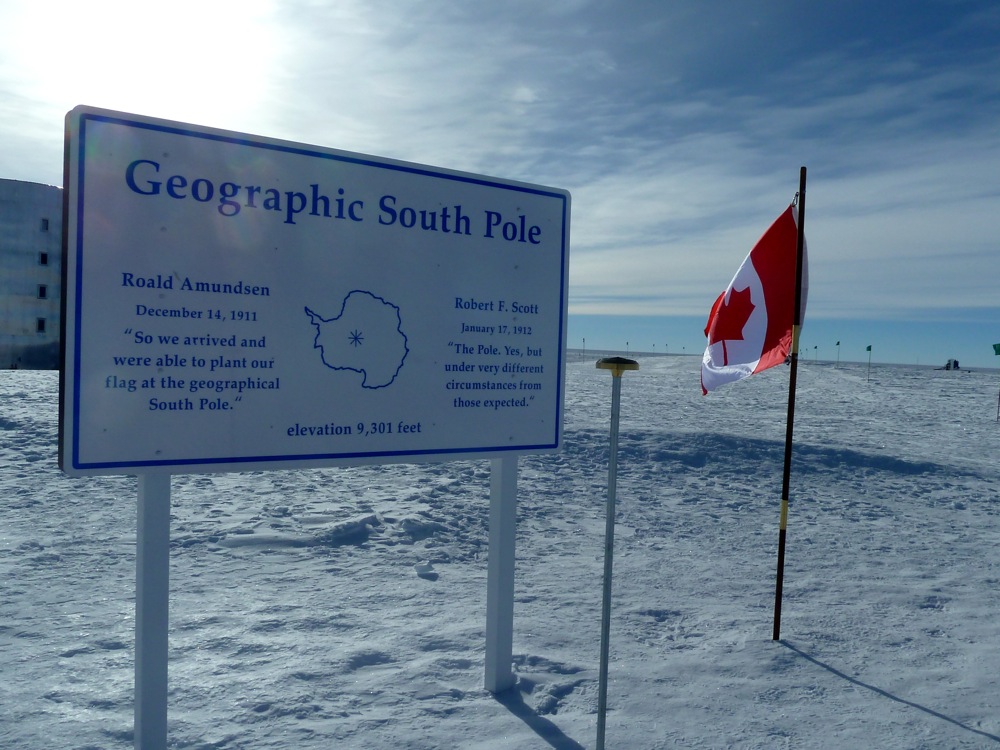
After lunch an LC130 Hercules finally arrived to take us back out to McMurdo. Dressed up once more in our ECW gear, we huddled around like a flock of emperor penguins, saying our final goodbyes while the plane offloaded and reloaded cargo, and refueled.
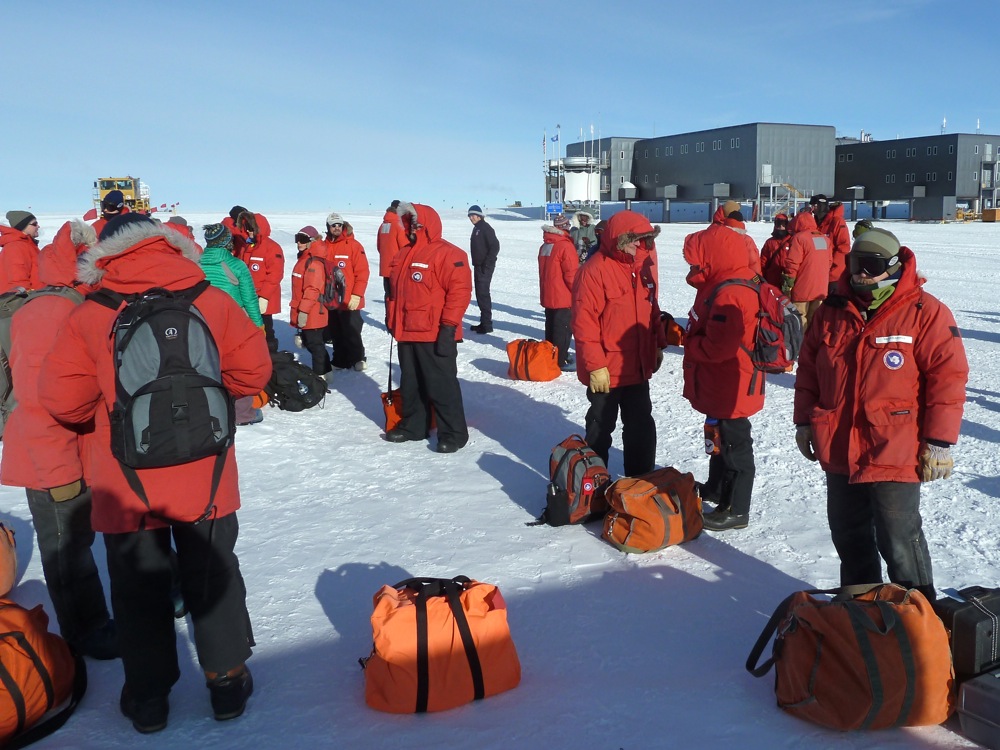

A few hours later we're in McMurdo. There's mud and slush everywhere, and as it's the first time we've seen mud for nearly a month it looks particularly gross. We're issued with keys (huh?) to our rooms, and try to adapt back to living in the real world.
Fortunately today is the last Monday of the month, so it's time for a meeting of the Ross Island Yacht Club of Antarctica. (McMurdo is actually situated on Ross Island, rather than the main landmass of Antarctica, although it is permanently connected to it by ice.) These meetings are held in Hut 10, a very pleasant self-contained house that was formerly reserved for military officers and VIPs. After a very pleasant evening of chat and watching a delightful home video of sailing adventures to the Bahamas in a 27-foot yacht, I find that I am now a member of one of the world's more unusual yacht clubs (they don't have any yachts, for example), as well as my home club at the Hawkesbury River.
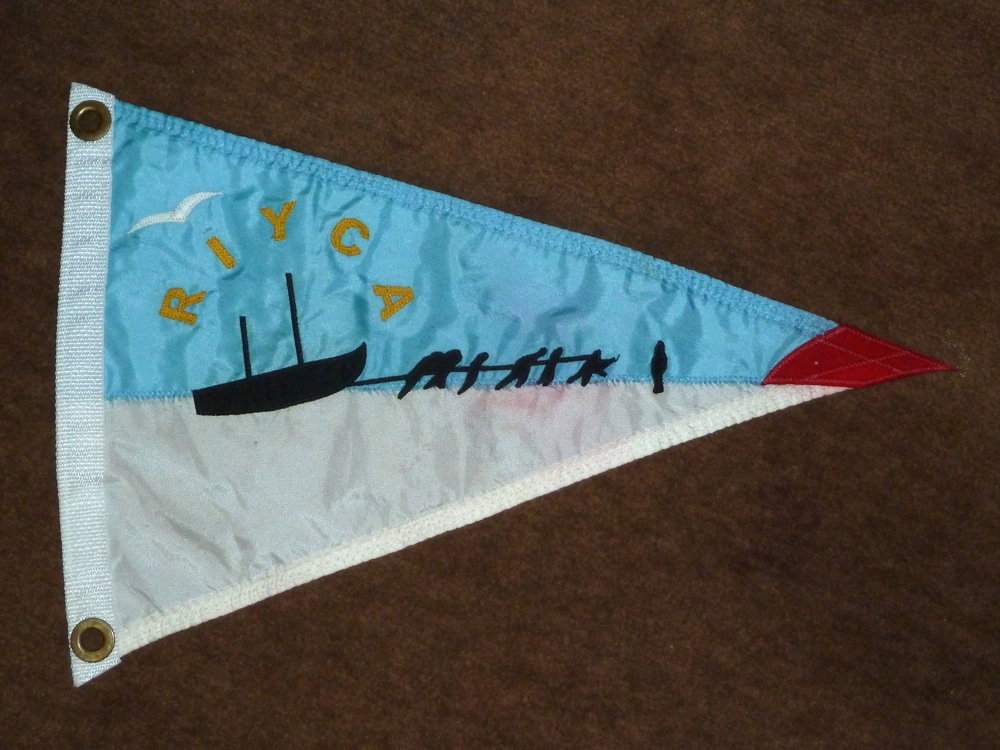
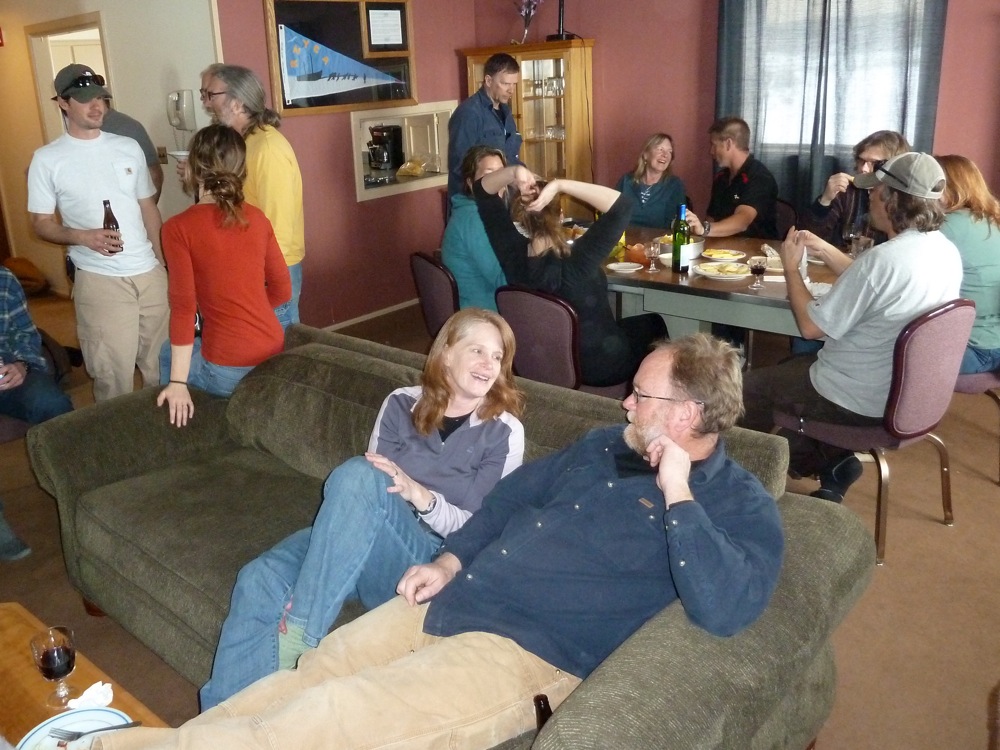
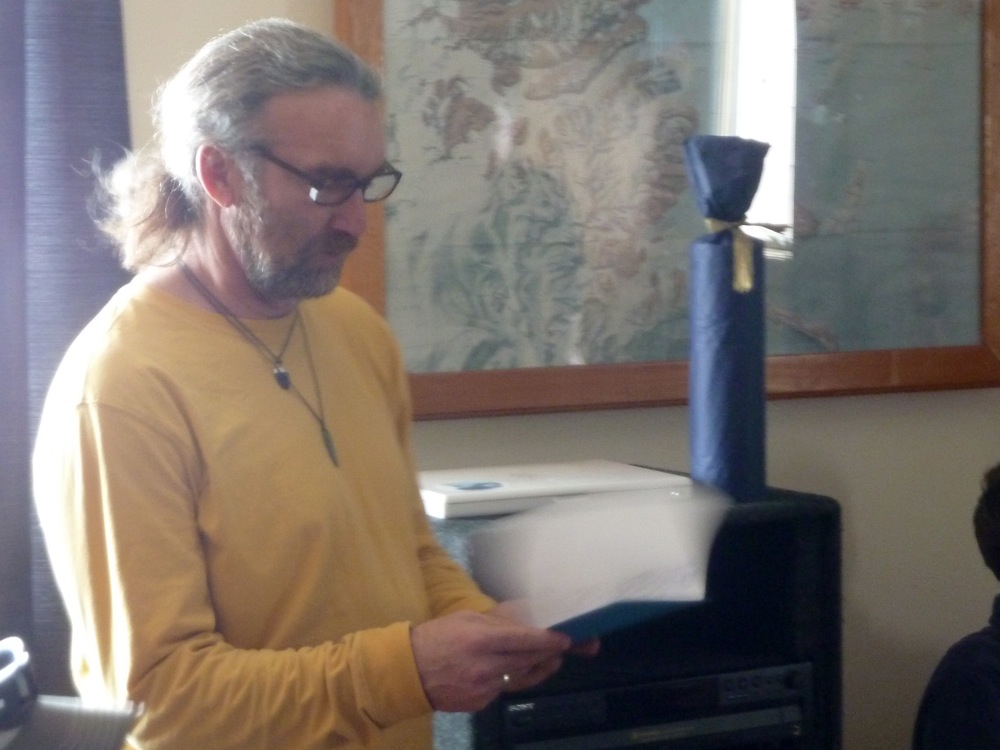
We'll spend a day in McMurdo cleaning our field camp gear (tents etc.) and returning it to the stores. This task is complicated somewhat by the fact that we are in McMurdo and all our stuff is still at South Pole, a problem that only a Hercules can resolve.
Tuesday, 29th January, 2013
McMurdo (John)
In a perfect world we'd currently be on a C17 flying to Christchurch. In a more realistic world with those minor imperfections that make life more interesting we'd be in a Hercules LC130. As it is, we're stuck in McMurdo for one more day.
Fortunately, it's an absolutely gorgeous day - bright blue skies with the temperature hovering around zero and no wind at all.
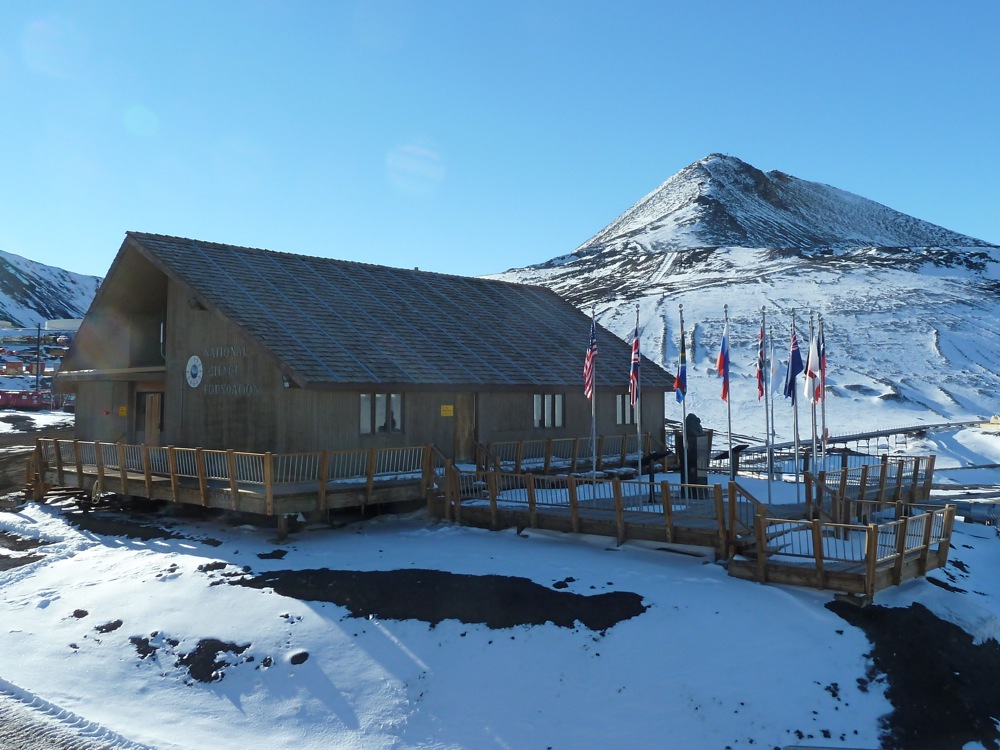
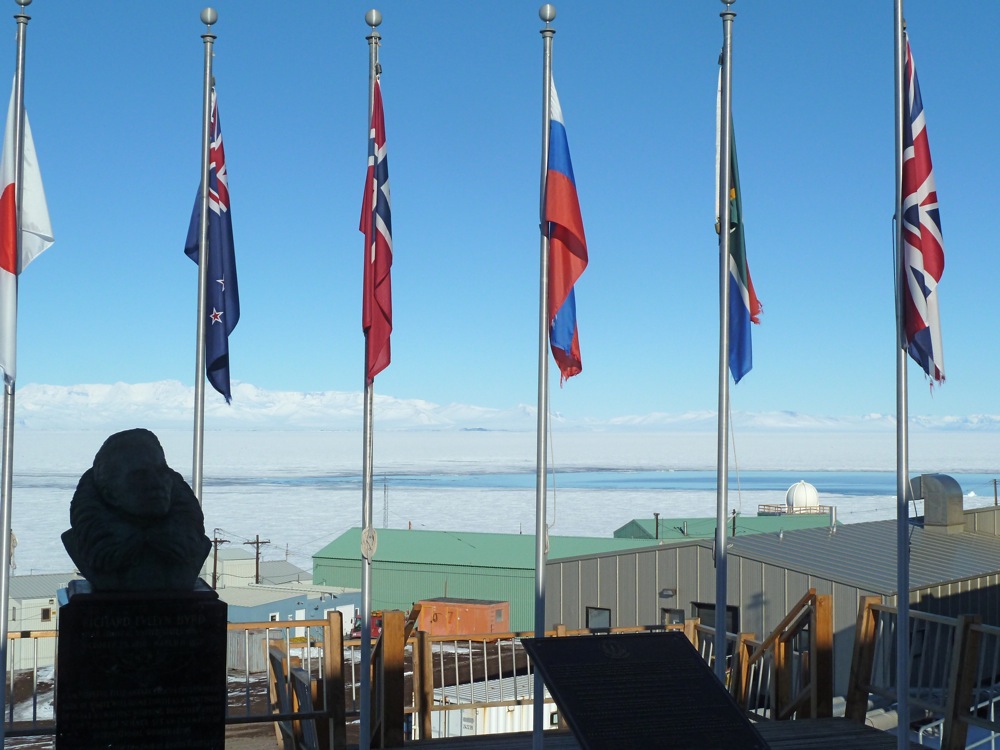
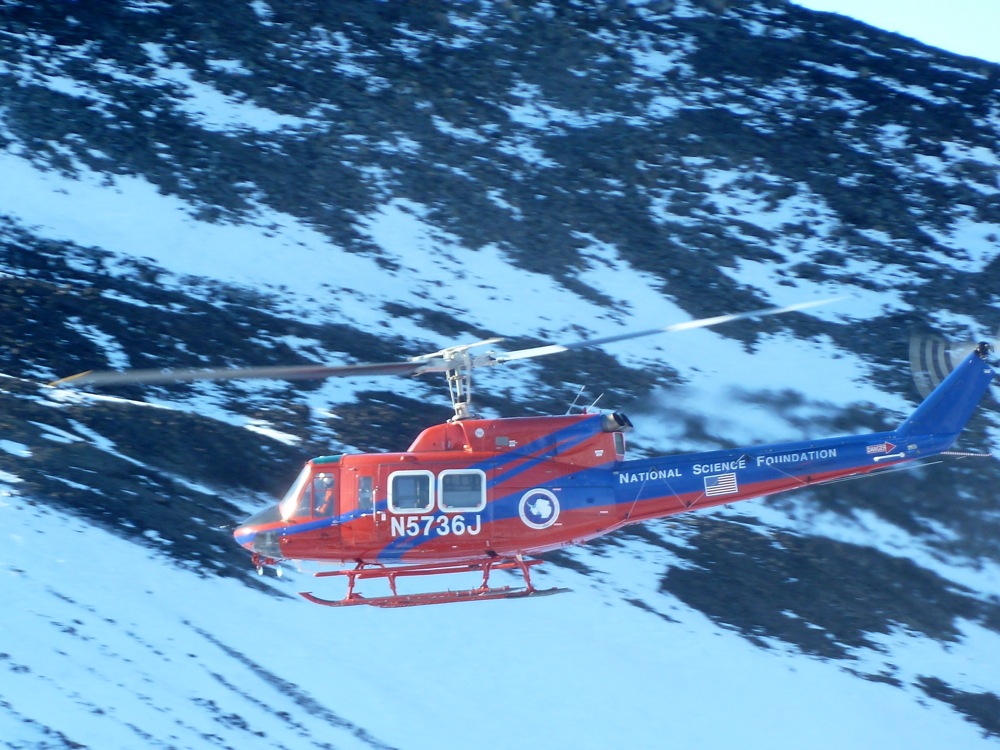
Elsewhere on the station, signs on the external doors reflect the growing (and very welcome) social trend of ensuring the everyone can enjoy a healthy, smoke-free environment.
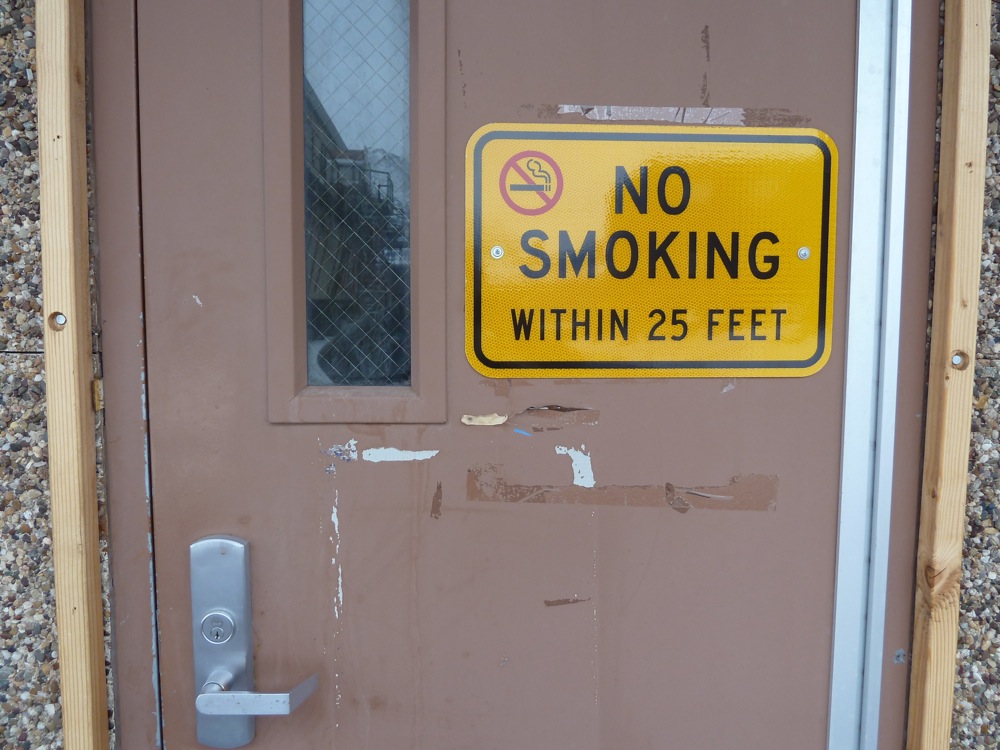
Smokers are of course catered for, with their own smoking cabins.

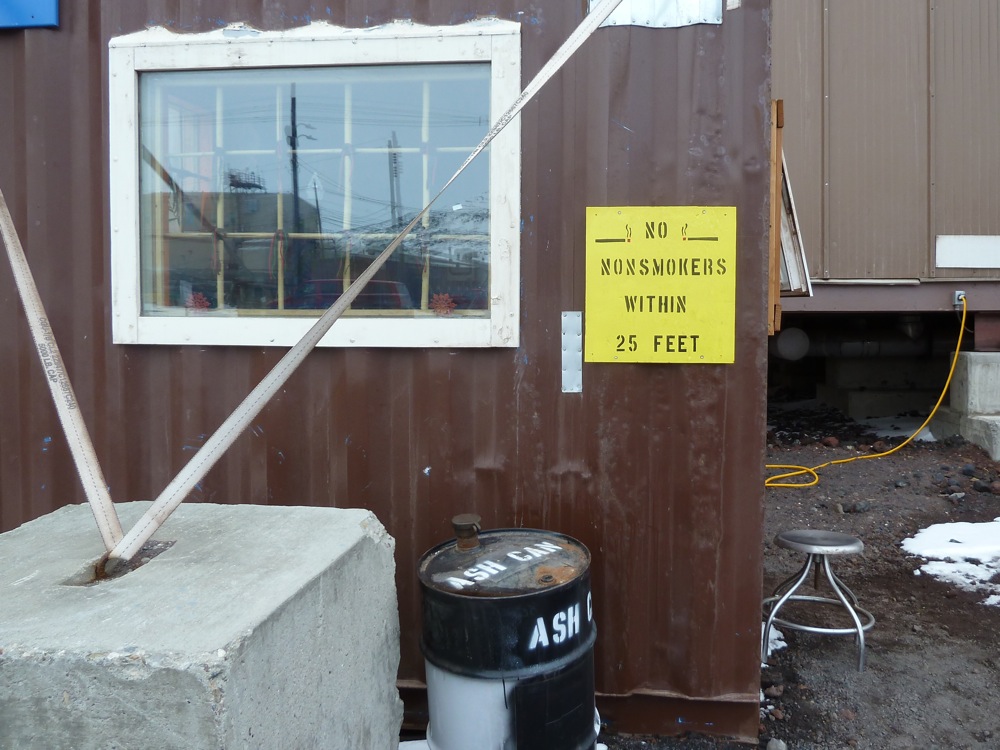
Meanwhile, we're spending the morning in the Crary library, also known in some circles as the "Stuffed Penguin Library". Craig is closely monitoring HEAT/PLATO, which appears to be working superbly.
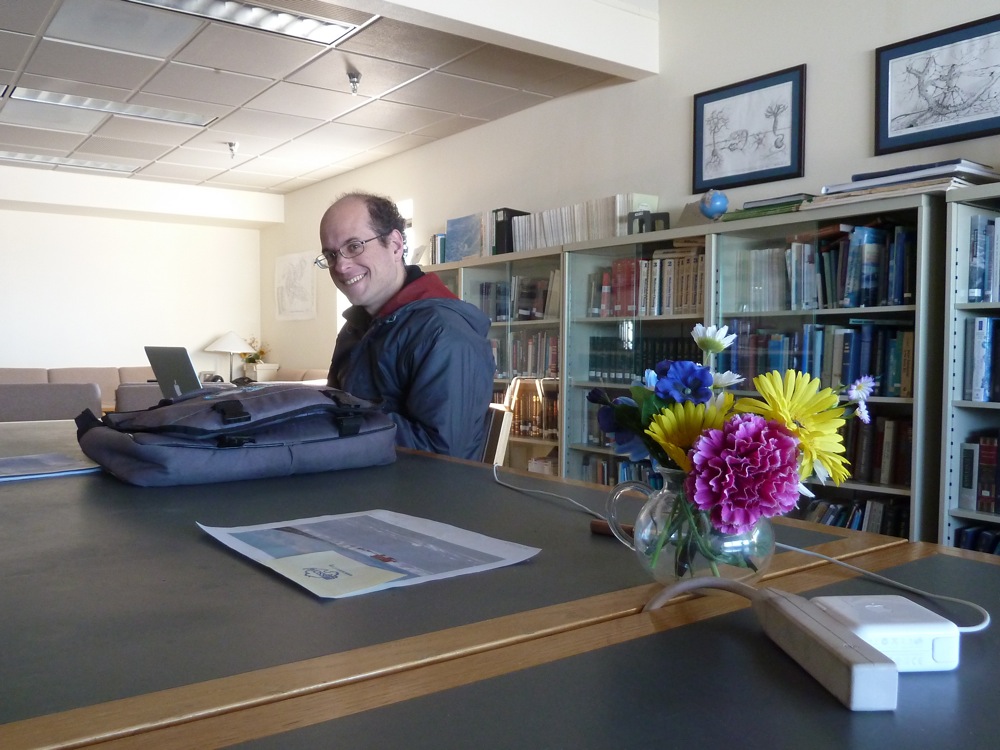

Fortunately our day won't be wasted, as we'll spend a good part of it cleaning, sorting, and returning our field camp gear. By the end of the day we should have earned a seat in at least an LC130.
Wednesday, 30th January, 2013
Blue (Geoff)
Wednesday, 30th January, 2013
Bag drag (John)
We have just returned from "bag drag" a process whereby we drag our luggage up to Building 141, have it tagged, weighed and palletized, then we ourselves are weighed along with our ECW gear and hand luggage. It's still possible we'll be bumped from tomorrow morning's flight to Christchurch, but being processed through bag drag is nevertheless an important milestone on our journey home.
ECW gear, including big boots and a reasonable collection of accessories in the pockets of Big Red (hand-warmers, snacks, sunscreen etc.) adds almost 20 kg to my body weight. It's no wonder it's exhausting tramping through snow at 4,500 m pressure altitude into a 20 knot wind!
With today being (possibly) our last day in McMurdo, I took advantage of the splendid weather to hike around the Hut Point Loop trail. Starting at the Vehicle Maintenance Facility (VMF), this 2-hour hike heads up towards the "Arrival Heights" antenna farm overlooking the station. The most exciting find on the ridge is our original "AASTO" (Automated Astrophysical Site-Testing Observatory) that started our whole adventure in remote Antarctic site testing, culminating in the current PLATO/HEAT experiment. Originally installed at South Pole in 1996 and opened by the then Senator Hill (in what was the first visit to Pole by an Australian politician), AASTO was decommissioned a few years later, brought back to McMurdo, and has now been re-purposed as a laboratory for some radiophysics experiments. Fortunately, it retains its original green and gold colour scheme, a trademark of all of our automated observatories.
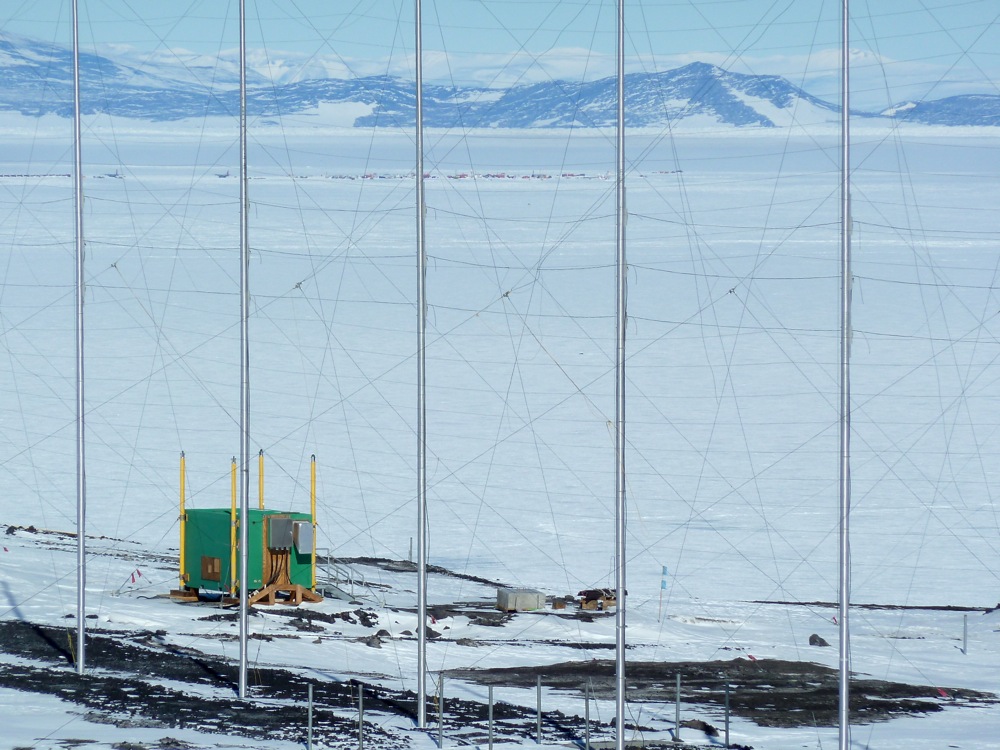
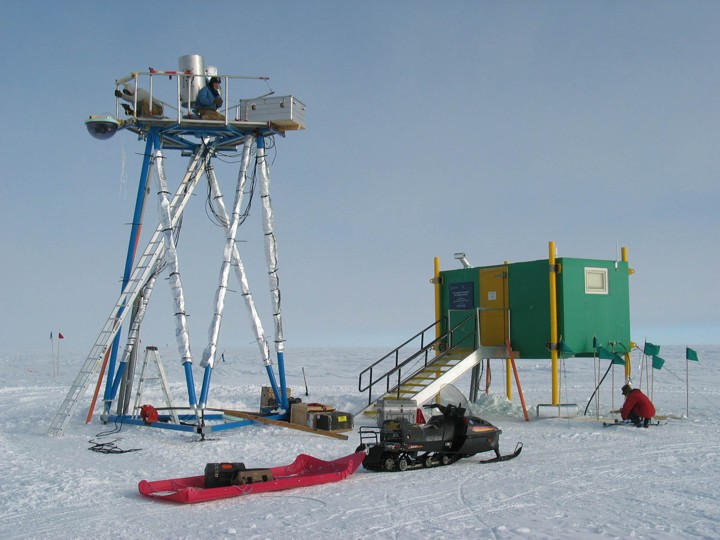
The trail continues around the ridge and offers sweeping views of McMurdo. For an ugly little town that looks like a cross between a military camp and a mining settlement, McMurdo is actually quite scenic from this distance!
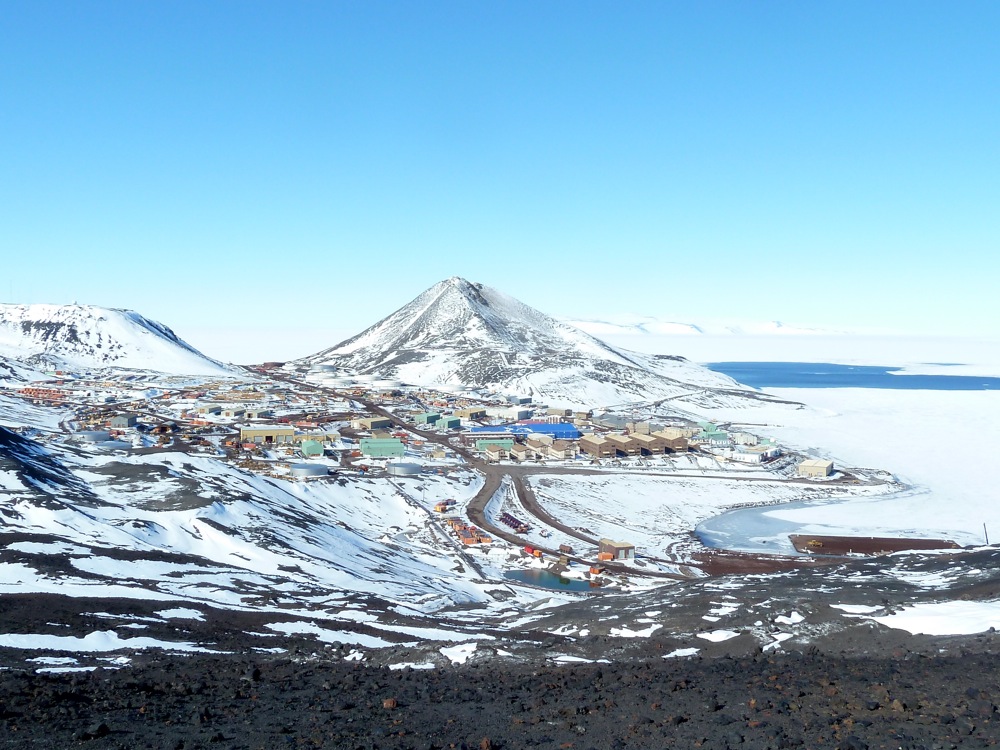
A little further around the ridge the trail descends again to Hut Point, with Scott's historic 1902 hut and a monument to Seaman George Vince.

Tomorrow night, assuming the Pegasus skiway hasn't melted again, we'll be in Christchurch.
Thursday, 31st January, 2013
Emperor Penguin (Geoff)
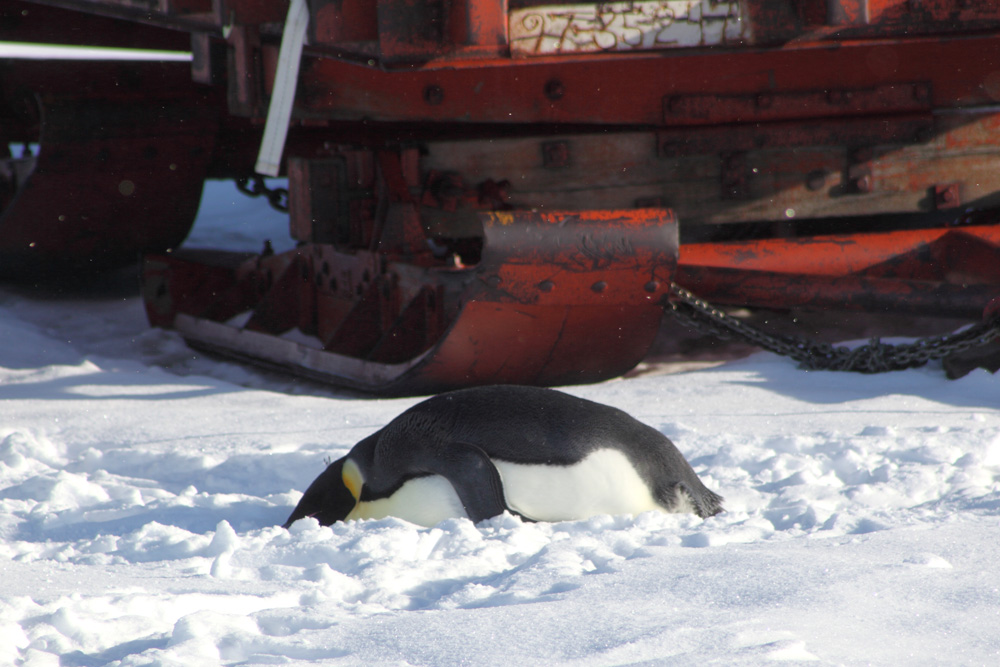
On our last day in Antarctica, we finally saw the elusive Emperor Penguin. Not quite the David Attenborough setting we would have liked, but I'll take it.
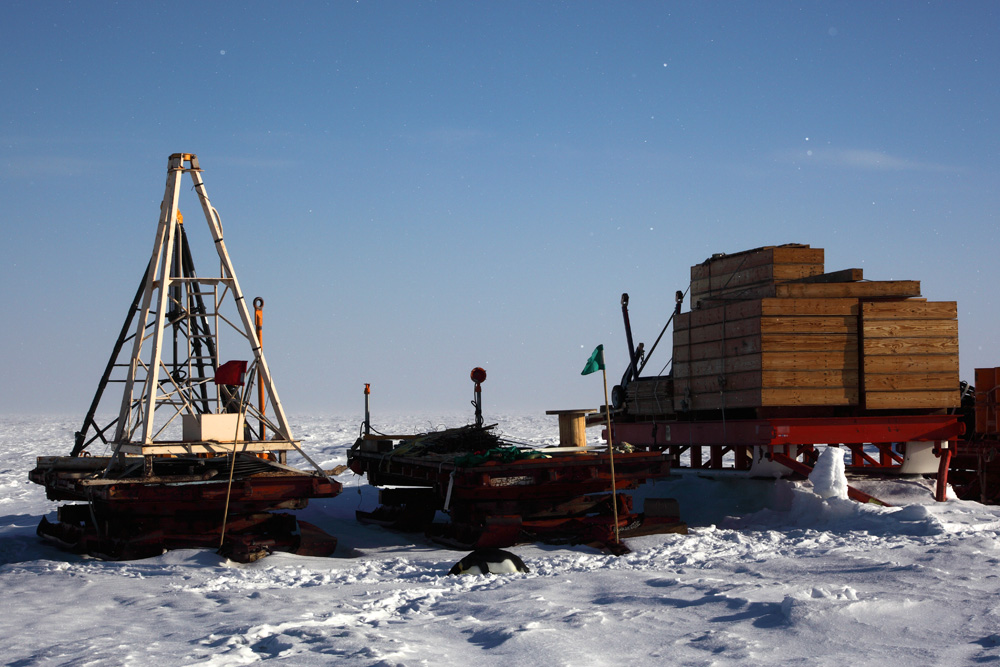
We finally made it to Christchurch today; our last views of Antarctica were at the Pegasus Runway, with our friend Ivan the transport bus and a diamond dust wind storm.

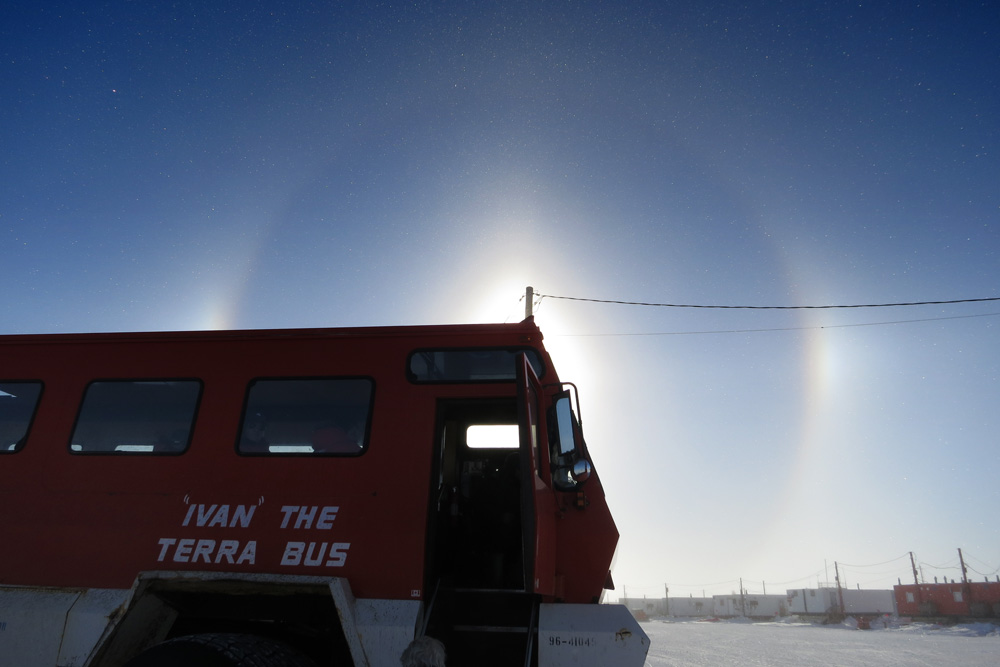
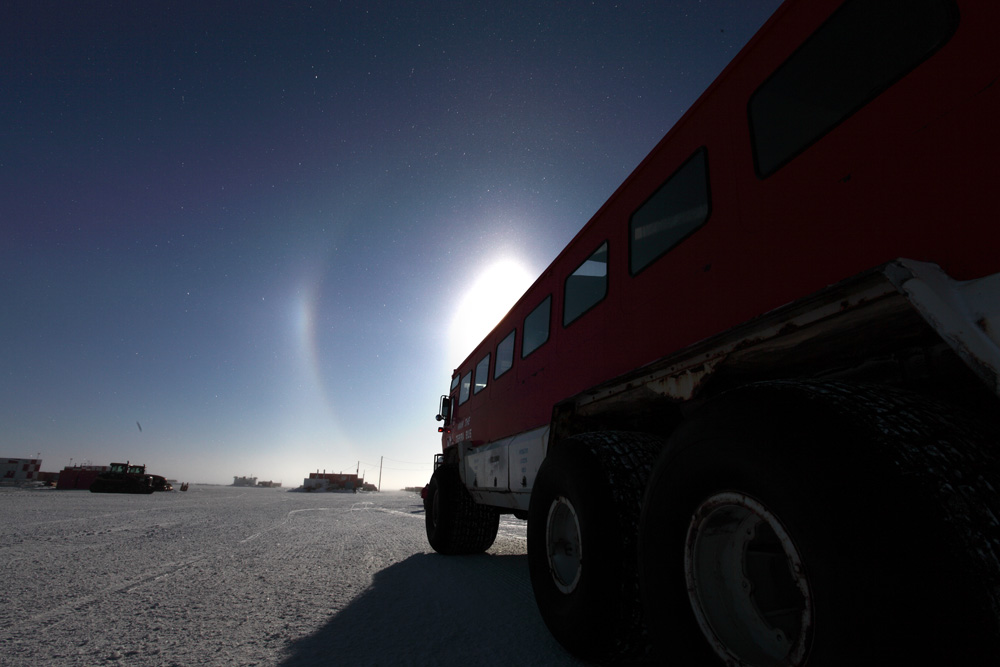
And just to finish up with, a few photos of the so-called "Pressure Ridges" near Scott Base (near McMurdo). These are insteresting wave-like structures formed on the sea-ice, caused by currents and winds. Reminds me of Lennox Head point, with waves stacked to the horizon.

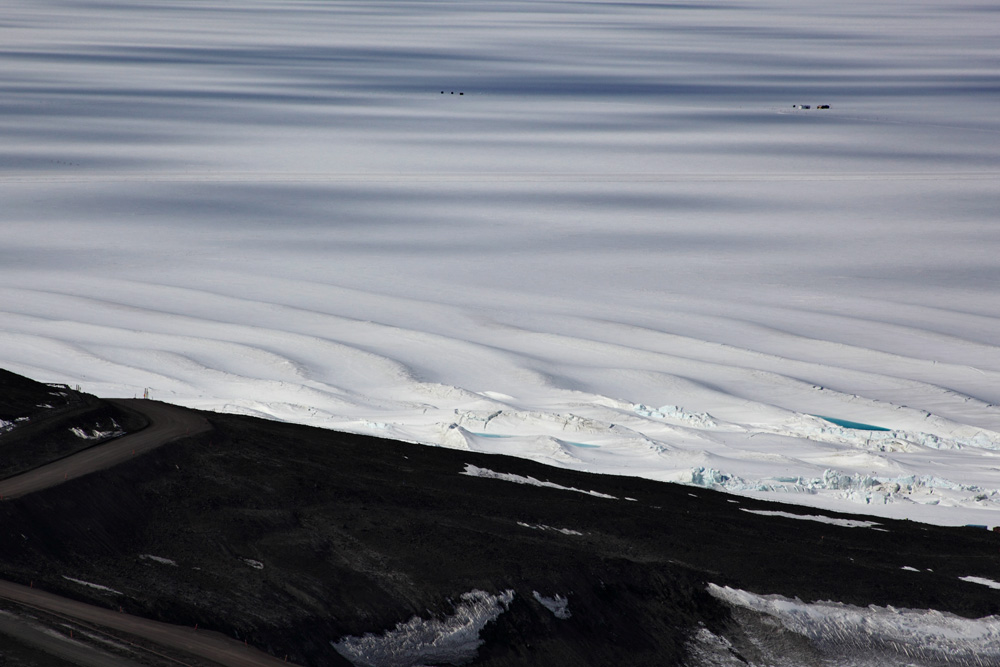
-- Geoff
Thursday, 31st January, 2013
Christchurch (John)
After dragging ourselves out of bed at 5:30 this morning we were pleasantly surprised to find ourselves still on the flight manifest. From that point on everything went smoothly: Ivan took us out to Pegasus, we hung around in the passenger terminal just long to not get bored, the skiway was in great shape, our LC130 worked just fine, the eight and a half hour flight is something I would rather not talk about, and now we are in Christchurch.
This brings to a very successful conclusion our adventures for this year, and with it my final blog entry. Best wishes for 2013!
Sunday, 3rd February, 2013
Temperature variations (Geoff)
As a final post, I thought I'd document the changes in temperature that we experienced while travelling from Sydney to Ridge A (via Christchurch, McMurdo and the South Pole) and back. I've marked the "heat wave" in McMurdo which caused havoc by melting the ice runway, causing an unusually high number of flight delays.
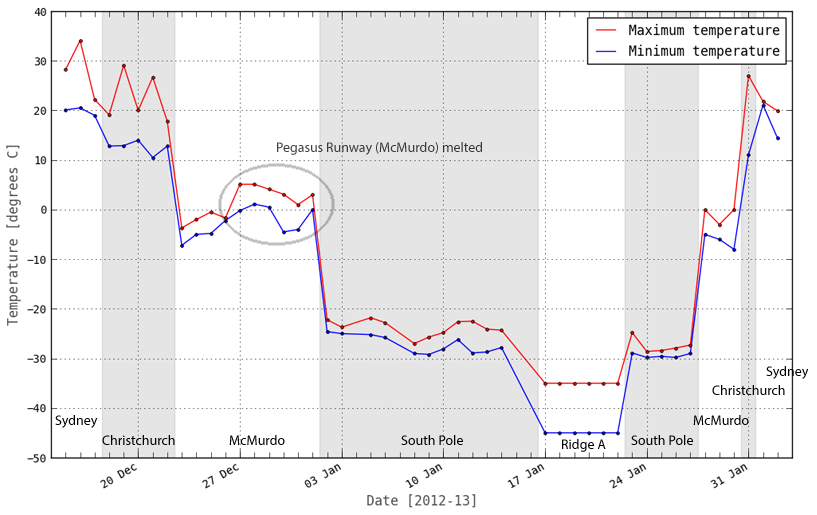
-- Geoff
← Back to South Pole Diaries 2012/13




